
Global Facility for Disaster Reduction and Recovery
Disaster Risk
Management Programs
for Priority Countries
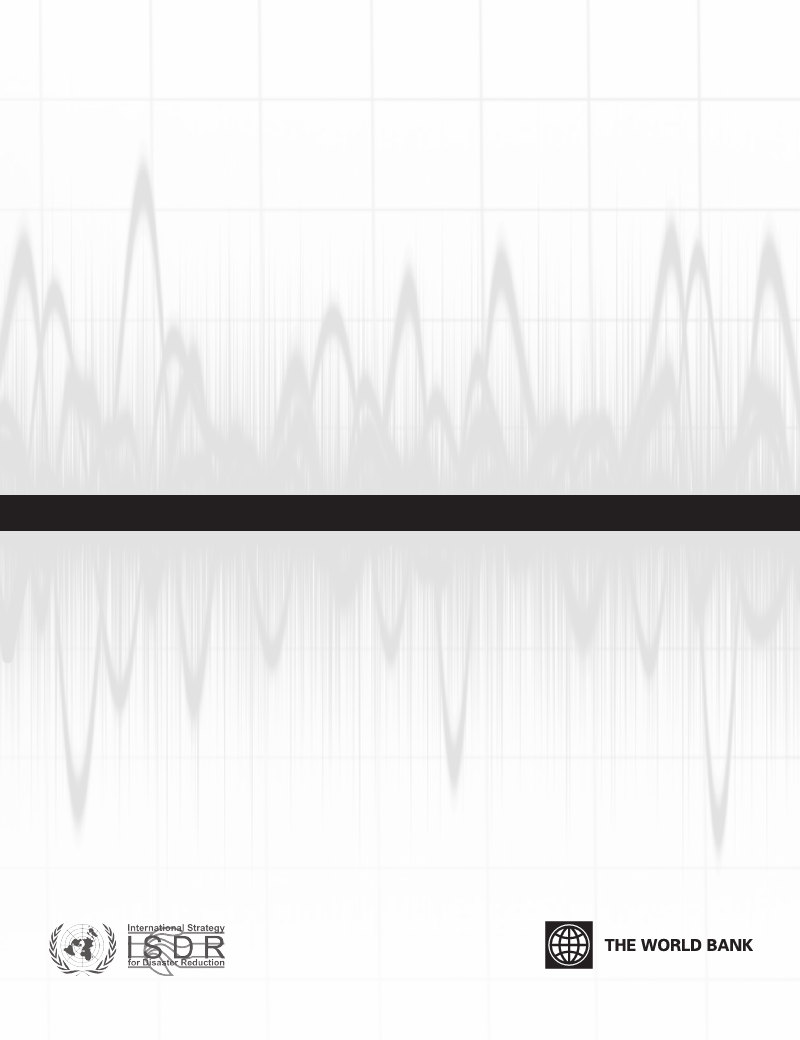
Disaster Risk
Management Programs
for Priority Countries
Global Facility for Disaster Reduction and Recovery
2009

This volume is a product of the staff of the The World Bank. The findings, interpretations, and
conclusions expressed in this volume do not necessarily reflect the views of the Executive Directors of
The World Bank or the governments they represent.
The World Bank does not guarantee the accuracy of the data included in this work. The boundaries,
colors, denominations, and other information shown on any map in this work do not imply any judgment
on the part of The World Bank concerning the legal status of any territory or the endorsement or
acceptance of such boundaries.
Design: miki@ultradesign.com

/ iii
Contents
Foreword / v
2009 Priority Countries
Africa
Ethiopia / 2
Ghana / 17
Mozambique / 32
Togo / 43
East Asia and Pacific
Indonesia / 62
Marshall Islands / 72
Papua New Guinea / 85
Solomon Islands / 96
Vietnam / 106
Europe and Central Asia
Kyrgyz Republic / 122
Latin America & Caribbean
Haiti / 134
Panama / 145
Middle East & North Africa
Djibouti / 156
Republic of Yemen / 164
South Asia
Nepal / 178
Donor Earmarked Countries
East Asia and Pacific
Cambodia / 188
Lao PDR / 197
Vanuatu / 205
Latin America & Caribbean
Colombia / 222
Costa Rica / 231
Ecuador / 241
Guatemala / 251
South Asia
Bangladesh / 262
Pakistan / 272
Sri Lanka / 285
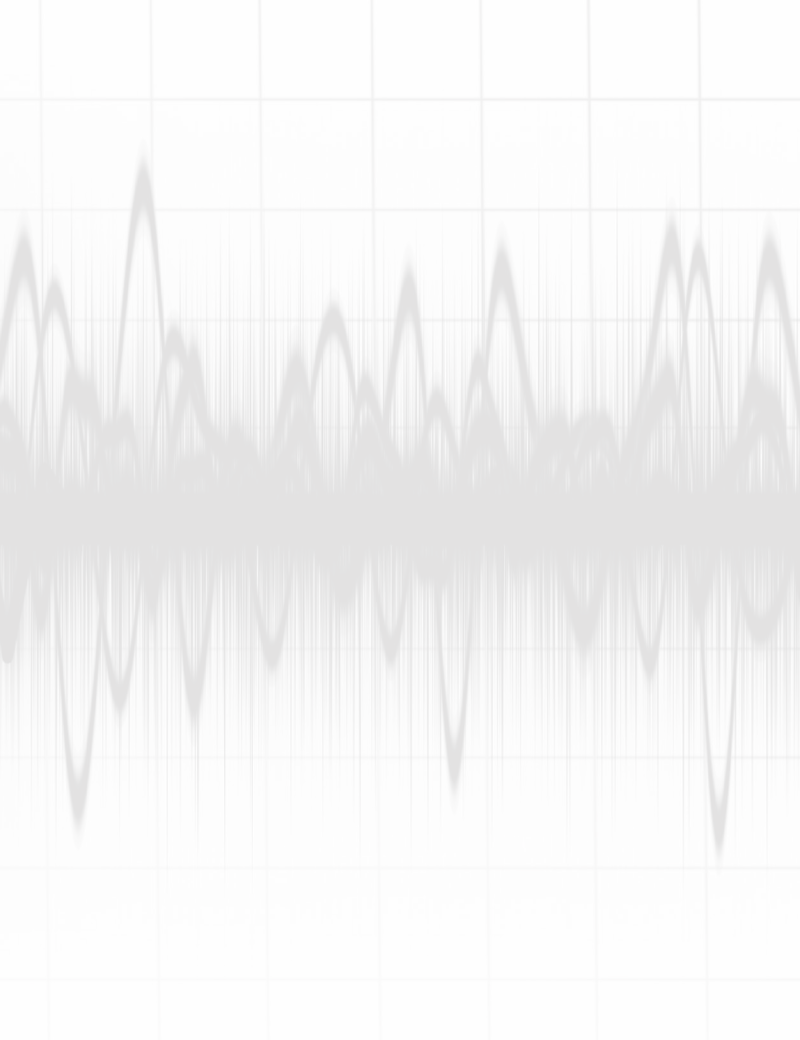

/v
Foreword
At its 5th meeting in Copenhagen in November 2008, the GFDRR Consultative Group asked the Secretariat to focus on a
select group of priority countries to achieve increased impact.
In GFDRR’s Track II, Mainstreaming Disaster Risk Reduction in Development, this lead to a prioritization of operations in 20 core
countries, including Burkina Faso, Djibouti, Ethiopia, Ghana, Haiti, Indonesia, Kyrgyz Republic, Madagascar,
Malawi, Mali, Marshall Islands, Mozambique, Nepal, Panama, Papua New Guinea, Senegal, Solomon
Islands, Togo, Vietnam, and Republic of Yemen.
The countries were selected due to their high vulnerability to natural hazards and low economic resilience to cope with
disaster impacts including anticipated climate change and variability. Two thirds of the countries are least developed
countries and twelve are highly indebted poor countries. Nine are from Africa and several others are Small Island States
at high risk.
These 20 core countries will receive 80 percent of available funds while 20 percent will be made available for flexible, innovative,
high impact grants, such as those that catalyze increased investment programs and integration of disaster risk reduction and
climate change adaptation in development in any disaster prone country.
GFDRR will also systemize and deepen its engagement in eleven single donor trust fund countries, including Bangladesh,
Cambodia, Colombia, Costa Rica, Ecuador, Guatemala, Lao PDR, Pakistan, Sri Lanka, Timor-Leste, and
Vanuatu, using funding made available by the concerned donors.
To develop a strategic and integrated vision, GFDRR is preparing comprehensive programs for disaster risk management
and climate change adaptation for the next three to five years in each of the priority and donor earmarked countries.
The Development Process of Programs
A multi-stakeholder planning process lays the foundation for the comprehensive national programs for disaster risk
reduction and climate change adaptation. The process ensures the facilitation of ownership by governments for their risk
reduction agenda and the initiation of larger strategic partnerships and disaster risk reduction platforms.
In each priority country, the following steps are undertaken to develop the country programs:
1. investigation of a) the underlying risk factors and b) the progress in the five priority areas of the Hyogo Framework
for Action;
2. stocktaking of ongoing risk reduction and climate change adaptation programs by key stakeholders, including UN
agencies, multilateral and bilateral donors, and other partners;

vi / Disaster Risk Management PROGRAMS FOR PRIORITY COUNTRIES
3. identification of key gaps at national, sector, and local levels;
4. solicitation of proposals from different government and non-government entities and concerned donor agencies;
5. analysis of the solicited proposals and consensus building in a consultative process involving a range of stakeholders,
including relevant government ministries, UN organizations, multilateral and bilateral donors, INGOs and civil society
actors;
6. development of strategic comprehensive programs of support based on the gathered information.
Criteria used for the selection of the proposed activities include the relevance in addressing underlying risk factors,
the leveraging potential of future disaster risk management interventions, and meeting the challenge of increased risk
reduction activity synchronization and synergy building across various donors and thereby improving the quality and
effectiveness of donor aid in the DRM arena.
The presented programs are indicative and further dialogue with the Governments and other partners will refine the
agendas as the detailed planning and implementation phases start. At the sixth meeting of the GFDRR Consultative
Group in Geneva, disaster risk management plans are put forward for 25 out of the 31 priority and donor-earmarked
countries. The plans for the six remaining countries of Burkina Faso, Madagascar, Malawi, Mali, Senegal, and Timor Leste
will be submitted at the seventh meeting of the GFDRR Consultative Group since consultations in these countries are
still ongoing.
Achieving Outcomes
A set of priorities has emerged which will drive the GFDRR supported risk reduction agenda for the next three to five
years.
Knowledge, advisory, and capacity building on all levels. Many countries are undergoing a substantial shift in
DRM structures, roles and responsibilities away from classical disaster response functions to multi-sectoral and ministerial
development agendas around risk reduction and climate change. It will require a strong investment in national capacities for
Governments to lead and implement the comprehensive risk reduction agendas and to coordinate between ministries. Local
authorities at district level will also require technical support to put new strategies into practice.
Intensified support for sectoral mainstreaming. The programs identify the Governments’ demand for technical and
managerial support to develop sector specific risk reduction strategies and priority program investments. The most urgent
investments are linked to the hydro-meteorological sector in flood protection and mitigation of storm damages due to increased
severity of changing weather patterns.
Coordination of disaster risk management and climate change adaption agendas. Disaster risk reduction and
climate change adaptation should largely be managed as one integrated agenda. Both agendas have a few differences
but many overlaps. Many of the country programs aim to integrate the two agendas and strengthen the coordination
between climate change adaptation and disaster risk reduction institutions. The resulting climate risk management
approach treats existing and future climate-related risks as one continuum, generates social and economic benefits in
the short term, while also reducing vulnerability to long-term changes in climate.
Comprehensive risk assessments. Many countries have made progress in sector specific hazard assessments but
there is practically no targeted country within the GFDRR framework that has developed a comprehensive hazard risk
assessment system where data is easily collected, analyzed and shared with various stakeholders either within the

Global Facility for Disaster Reduction and Recovery / vii
government or with external constituencies. Generally, the scope of monitoring systems will have to be expanded in most
countries while investments in advanced technology are required.
Better risk financing models to alleviate macro and micro economic loss of assets due to disasters. The
area of risk financing is emerging as a macro-economic issue of great importance, most notably as all countries face
significant loss in GDP by a wide range of natural hazards. Most GFDRR core countries therefore strive to develop
innovative finance instruments including Disaster Management Funds for response and recovery activity as well as
Catastrophe Insurance risk financing models to cover losses to state and private sector assets. Pooling risks at a macro-
economic level as well as finding micro-insurance schemes for individuals at a community setting prove how complex and
diverse the needs are for innovative finance instruments.
Improved engagement of civil society and community actors in building resilience on local levels to ensure
a bottom up process to mainstreaming risk reduction priorities. The country programs address the need for an
increased decentralization of DRM management responsibilities to local authorities on provincial, district and communal
level. Mainstreaming and leveraging of DRM programs at national level will be complemented through strengthening
human resources, appropriate tools and empowerment of institutions at the point of service delivery.
Strategic partnerships with other development actors including regional Banks, bilateral donors, the UN
system, INGOS and civil society. The GFDRR funding requests are built on a thorough in-country assessment
process with relevant government ministries, the UN system, the Red Cross and Red Crescent movement, INGOs, local
civil society actors, and other partners. All country assessments have clearly concluded that one single organization
cannot tackle the rising demands of integrating a comprehensive risk reduction and climate change adaption agenda
alone. However, the coordination mechanisms are often still weak and a large number of donors with specific technical
agendas are not part of a broader risk reduction platform. GFDRR will strengthen existing and initiate new partnerships
for its work as a technical engine for DRM excellence and a catalyst for leveraging investments into mainstreaming
risk reduction and climate change in a larger development agenda. The new round of program proposals is built on a
promising commitment by many in-country partners to a joint DRM agenda that is executed by a wide range of partners,
including the Governments, UN, civil society, bilateral donors, and other partners.
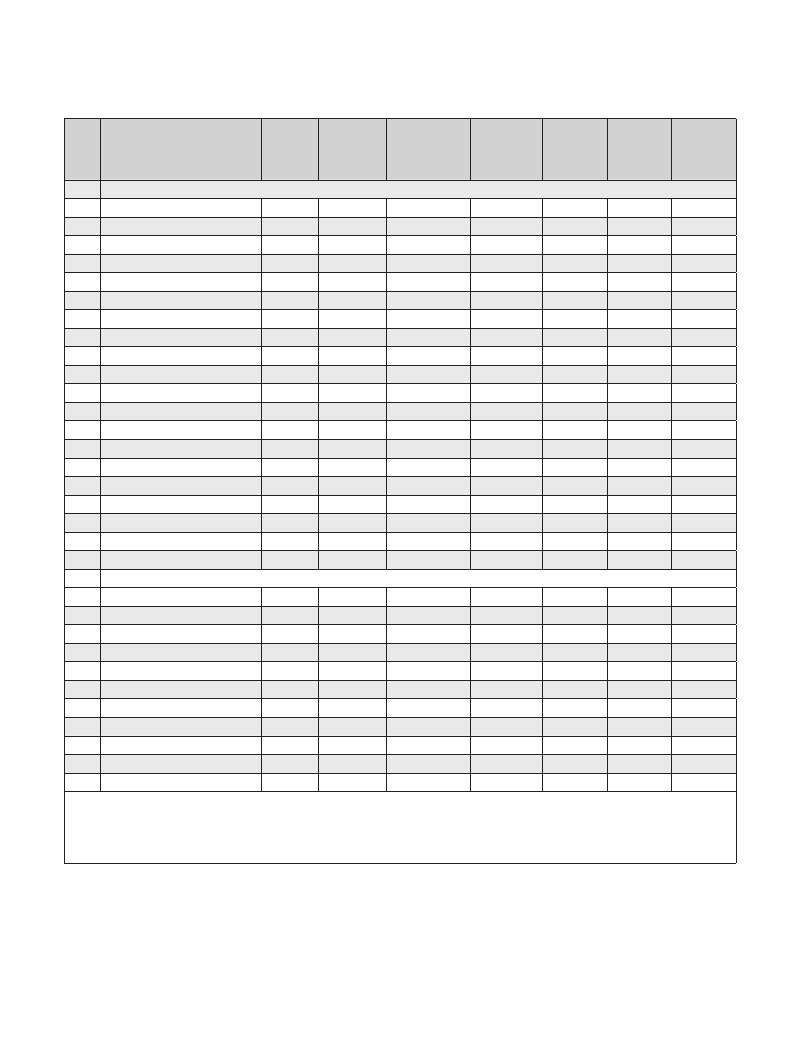
viii / Disaster Risk Management PROGRAMS FOR PRIORITY COUNTRIES
Table: GFDRR Priority and Donor Earmarked Countries
HIPC
SIDS
LDC
(Heavily
(Small
LLDC
(Least
Developed
Income
Lending
Indebted
Poor
Islands
(Landlocked
Developing Developing
#
Country
Region Country)
group
Category Country)
State)
Country)
2009 Priority Countries
1 Burkina Faso
AFR
Yes
Low
IDA
Yes
Yes
2 Ethiopia
AFR
Yes
Low
IDA
Yes
Yes
3 Ghana
AFR
Low
IDA
Yes
4 Madagascar
AFR
Yes
Low
IDA
Yes
5 Malawi
AFR
Yes
Low
IDA
Yes
Yes
6 Mali
AFR
Yes
Low
IDA
Yes
Yes
7 Mozambique
AFR
Yes
Low
IDA
Yes
8 Senegal
AFR
Yes
Low
IDA
Yes
9 Togo
AFR
Yes
Low
IDA
Yes
10 Indonesia
EAP
Lower middle IBRD
11 Marshall Islands
EAP
Lower middle IBRD
Yes
12 Papua New Guinea
EAP
Low
Blend
Yes
13 Solomon Islands
EAP
Yes
Low
IDA
Yes
14 Vietnam
EAP
Low
IDA
15 Kyrgyz Republic
ECA
Low
IDA
Yes
Yes
16 Haiti
LAC
Yes
Low
IDA
Yes
Yes
17 Panama
LAC
Upper middle
IBRD
18 Djibouti
MNA
Yes
Lower middle
IDA
19 Yemen, Rep.
MNA
Yes
Low
IDA
20 Nepal
SAR
Yes
Low
IDA
Yes
Yes
Donor Earmarked Countries
1 Cambodia
EAP
Yes
Low
IDA
2 Lao PDR
EAP
Yes
Low
IDA
Yes
3 Timor-Leste
EAP
Yes
Lower middle
IDA
Yes
4 Vanuatu
EAP
Yes
Lower middle
IDA
Yes
5 Colombia
LAC
Lower middle IBRD
6 Costa Rica
LAC
Upper middle
IBRD
7 Ecuador
LAC
Lower middle IBRD
8 Guatemala
LAC
Lower middle IBRD
9 Bangladesh
SAR
Yes
Low
IDA
10 Pakistan
SAR
Low
Blend
11 Sri Lanka
SAR
Lower middle
IDA
Income Group: All economies are divided based on 2007 gross national income (GNI) per capita, calculated using the World Bank Atlas
method. The groups are: low income, $935 or less; lower middle income, $936–3,705; upper middle income, $3,706–11,455;
and high income, $11,456 or more.
Lending category: IDA countries are those that had a per capita income in 2007 of less than $1,095 and lack the financial ability to borrow from
IBRD.
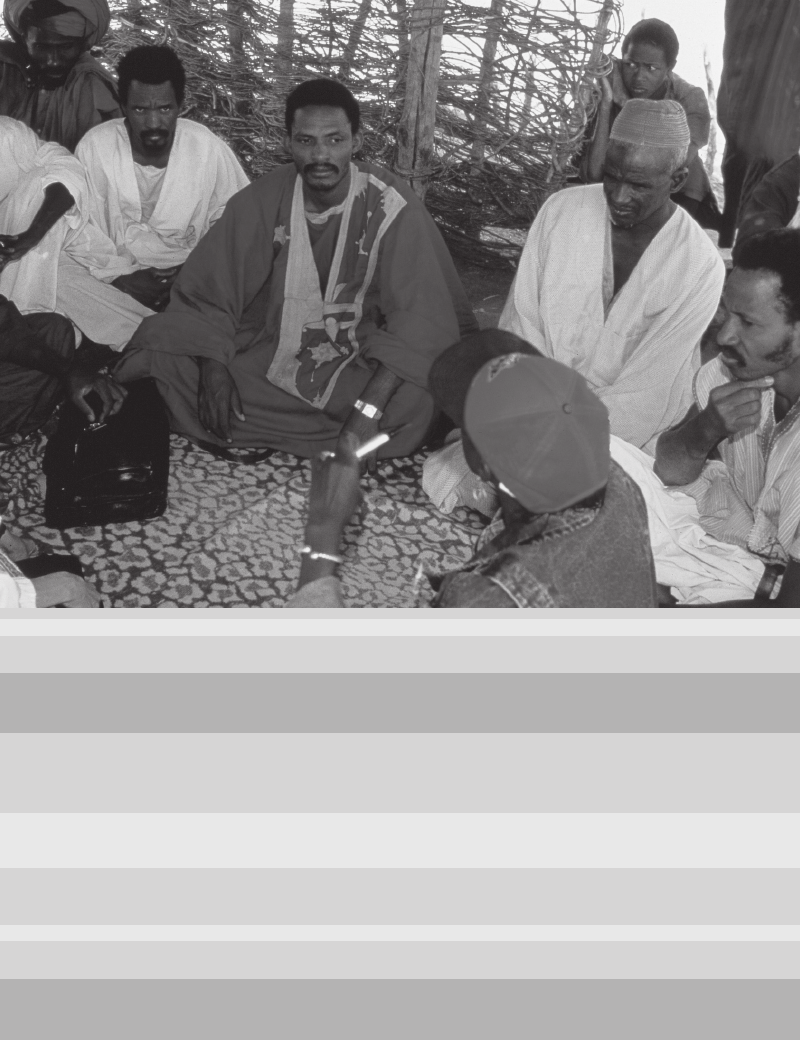
ETHIOPIA / 1
DISASTER RISK MANAGEMENT
Africa
Ethiopia / Ghana / Mozambique / Togo
Disaster Risk Management Programs for Burkina Faso, Madagascar, Malawi, Mali, and Senegal
are under preparation and will be presented at the 7th Consultative Group Meeting
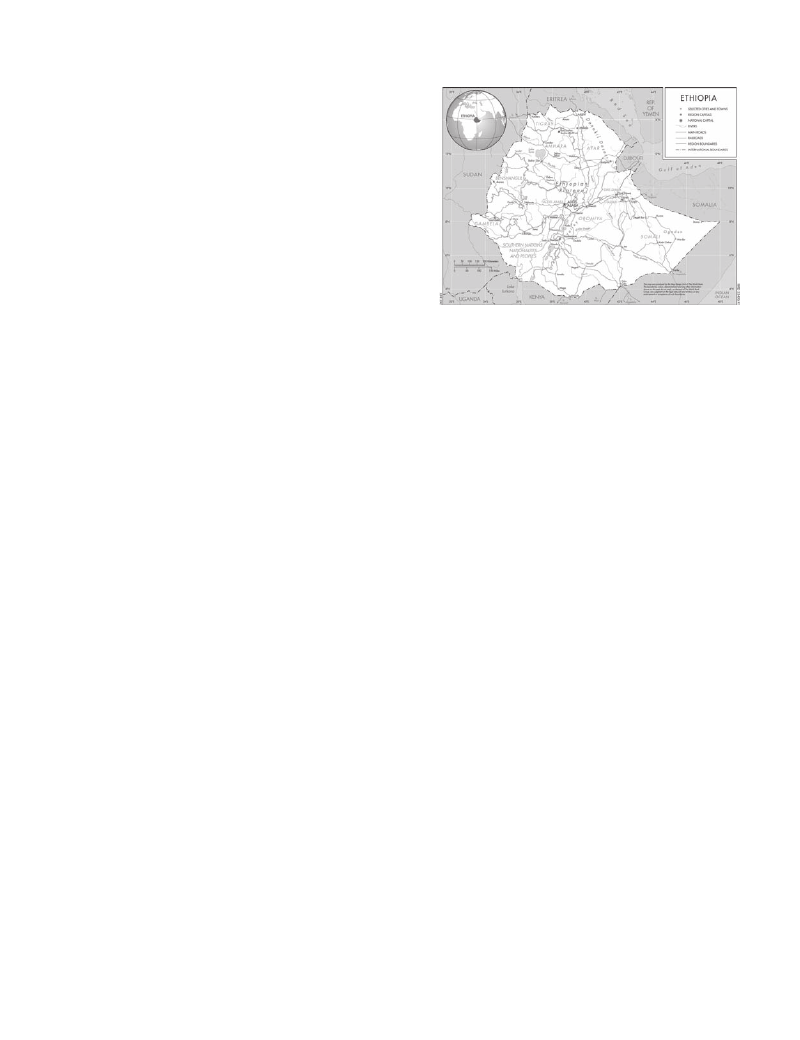
2 / Disaster Risk Management PROGRAMS FOR PRIORITY COUNTRIES AFRICA
ETHIOPIA
The preparation of the Ethiopia Disaster Risk Management (DRM)
Plan comes at a very opportune moment because of: a) the
recent (and ongoing) Business Process Re-engineering (BPR)
throughout the government, which has considerably transformed
structures and staffing at several ministries, including the Ministry
of Agriculture and Rural Development; b) the development of
a new National Policy on Disaster Risk Management, which
is expected to be submitted to Parliament by July 2009 and
potentially ratified in 2010; and c) a new mandate and approach for Disaster Management and Food Security Sector
(DMFSS) to shift from a focus on ex-post emergency response and relief work to the much broader ex-ante disaster risk
reduction. DMFSS is also a lead agency for issues related to climate change.
To prepare the Country DRM Note, consultations were undertaken with members of the World Bank’s Ethiopia
Country team and the DMFFS, and meetings were held with Ministry of Health, Ministry of Water Resources, National
Meteorological Agency, Environmental Protection Authority, European Commission, WFP, UN-OCHA, UNDP, UN-ECA,
UNICEF, FAO, DFID, USAID, FEWS-NET, DMFSS Livelihood Integration Unit, SC-UK, IFPRI, Oxfam-US, CARE, Relief
Society of Tigray, and the Ethiopian Red Cross.
The matrix of priority areas and actions for DRM and estimated budget allocations were discussed and cleared at a debriefing
meeting held at DMFSS on May 15, 2009 with wide participation of stakeholders from Government, donors, and NGOs.
There is strong support and ownership and endorsement by DMFSS for the matrix of priority areas and actions.
1. Disaster Risk Profile
A wide range of natural hazards are present in Ethiopia, including drought, floods, landslides, human and animal
diseases, pests, earthquakes, and urban and forest fires. Recurrent drought and floods in particular have the most severe
impacts on people’s lives in Ethiopia (refer to Figures 1 and 2). The country’s vulnerability to natural disasters is due to a
number of inter-linked factors. These include dependence on rain-fed agriculture, under-development of water resources,
land degradation, low economic development, and weak institutions. Furthermore, with a population of 80 million people,
Ethiopia is the second most populous country in Sub-Saharan Africa, and has a relatively rapid annual population growth
rate of 3.2%. With a GDP of US$200 per capita, Ethiopia is also one of the world’s poorest countries.
Drought is the most significant and recurrent climate-related hazard affecting the country. Ethiopia has
mainly dry sub-humid, semi-arid and arid regions, all of which are prone to desertification and drought. Ethiopia has a
long history of recurring drought; however, since the 1970s, the magnitude, frequency, and impacts of droughts have
become more severe. Moreover, due to climate change and human-induced factors, the areas affected by drought and
desertification are expanding in Ethiopia.
Flash floods and seasonal river floods are becoming increasingly common due to deforestation, land deg-
radation, increasing climate variability, and settlement patterns. During the past two decades, major floods in
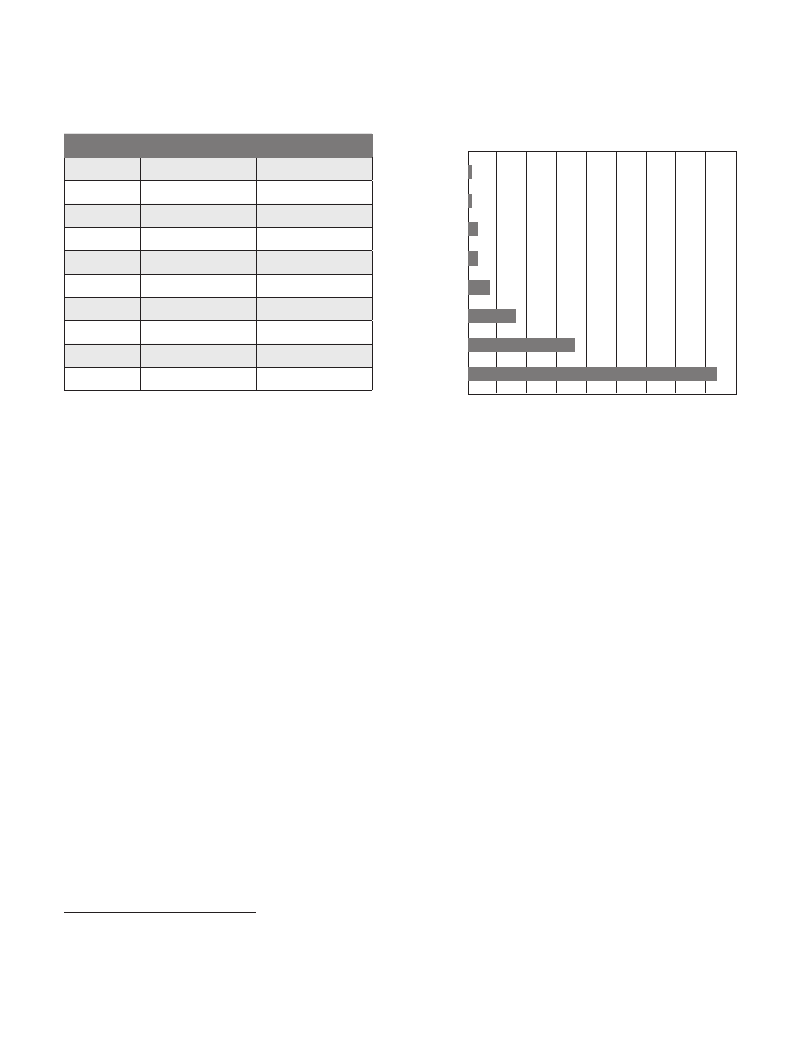
ETHIOPIA / 3
Top 10 Disasters in Ethiopia,
1999-2009
Hazard
Drought
Drought
Drought
Flood
Flood
Flood
Flood
Flood
Flood
Flood
People Affected
12,600,000
4,500,000
2,600,000
361,600
239,586
235,418
110,000
79,000
45,000
38,000
Date
2003
2008
2005
Oct 2006
July 2007
Apr 2005
Apr 2003
Oct 1999
Oct 1999
Aug 2006
Natural Disaster Occurrence Reported,
1980-2008
0
10
20
30
40
Mass mov. dry 1
Wildfire 1
Mass mov. wet 2
Volcano 2
Insect infestation 4
Drought
8
Epidemic
18
Flood
42
Source: EM-DAT: The OFDA/CRED International Disaster Database, Université catholique de Louvain, Brussels, Belgium.
1988, 1993, 1994, 1995, 1996 and 2006 have caused significant loss of life and property. Large-scale flooding is
limited to the lowland areas of the country; however, intense rainfall in the Highlands causes flooding of settlements in
a number of river basins, particularly the Awash River Basin in the Rift Valley. Annual flooding in urban areas, especially
in Addis Ababa, causes property damage along streams descending from the nearby hills. Flash floods are common in
most parts of the country, especially when rains occur following prolonged dry spells.
Ethiopia’s climate is highly variable, and is projected to become more variable due to climate change, with
the potential for increased frequency of extreme weather events including floods and droughts. Rural areas are
very vulnerable to climate variability. The most vulnerable sectors to climate variability are agriculture, water, health, and en-
ergy.1 Smallholders dependent on rain-fed crop production and pastoralists in drought-prone areas are the most vulnerable
rural livelihood systems. Approximately 85% of the population lives in rural areas and depends on the local natural resource
base to meet their basic welfare needs. The relatively under-developed, semiarid, and arid regions of Afar and Somali have
been historically vulnerable to unfavorable climatic conditions, which are being exacerbated by climate change. The Amhara
and Oromia regions are characterized both by areas of good agricultural production in the highlands and midlands and by
recurrent droughts. The Tigray region, vulnerable to recurrent drought, is also vulnerable to climate change.2
Recurrent droughts, conflict, rising food prices and isolation of affected populations have resulted in per-
sistent and high levels of food insecurity, and recurrent emergency situations. In 2008, more than six million
Ethiopians required emergency food assistance due to drought and rising food prices. In recent years the value of
emergency food and non-food aid has reached over US$350 million on average per year. Although once self-sufficient
in food and a net exporter of food grains, since the 1980s, Ethiopia has been a net importer of grain due to a decline in
crop production caused by land degradation, soil erosion, and a decline in farm sizes, and rapid population growth and
increasing demand for grains as livestock feed. Food aid has tended to be managed through emergency mechanisms
that hand out food to needy households, rather than being provided as part of development programs that build and/or
1 Most of Ethiopia’s electricity is from hydro-electric power.
2 ‘Measuring Ethiopian Farmers’ Vulnerability to Climate Change Across Regional States.’ Temesgen Deressa, Rashid M. Hassan, Claudia Ringler.
IFPRI Discussion Paper 00806, October 2008.

4 / Disaster Risk Management PROGRAMS FOR PRIORITY COUNTRIES AFRICA
protect assets (human, natural or physical). Thus, although there have been massive flows of food aid into Ethiopia since
the 1980s, its contribution to sustained economic development has been insignificant.
The vulnerability to climate-related hazards and food insecurity is closely linked to land degradation. About 85% of the
land surface in Ethiopia is considered susceptible to moderate or severe soil degradation and erosion. In the Highlands,
shrinking farm sizes and soil degradation and erosion are reducing the sustainability of agricultural production and
causing downstream pollution (including siltation of dams), thereby making it difficult for rural populations to meet their
basic needs. The annual costs of land degradation are estimated to be at least 2-3% of agricultural GDP.3 To put this
in perspective, that means that land productivity would need to increase by more than 20% immediately to reverse the
damage of the past 10 years. In addition, land productivity is declining as average per household landholdings are
declining due to population pressure and limited uncultivated land.
Despite the widespread problems related to droughts, there are some Highland areas that are relatively
high rainfall areas, and, from a national perspective, Ethiopia is relatively well endowed with water re-
sources. However these water resources are unevenly distributed both spatially and temporally. Between 80-90% of
the country’s surface water resources are found within four major river basins – Abay (Blue Nile), Tekeze, Baro Akobo
and Omo and Omo Gibe. These are located in the west and southwest of the country with no more than 30-40% of the
total population. In the east and central river basins, where 60 percent of the population resides, there are only 10-20%
of the country’s surface water resources. The Ethiopian Highlands contain the headwaters of a number of major rivers
that flow across its borders and which are vital sources of water for neighboring and downstream countries, especially
the Sudan, Egypt and Somalia.4 Historically there has been a problem for Ethiopia to exercise its riparian water rights
and to access rivers whose source is in Ethiopia.
2. ACTIVITIES UNDER HYOGO FRAMEWORK OF ACTION
HFA Priority # 1: Policy, Institutional Capacity and Consensus Building
Key DRM Institutions and National DRM Policy
Ethiopia’s institutional framework for disaster risk management has undergone numerous changes in
mandate, structure, and scope over the past 30 years. Following the devastating 1973/4 famines in Northern
Ethiopia, the Relief and Rehabilitation Commission (RRC) was established. During its 20-year existence, RRC focused
on disaster response and the distribution of relief supplies. The ratification of the National Policy on Disaster Preven-
tion and Preparedness Management (NPDPM) in 1993 led to a shift in thinking based on the perceived need to more
closely link the relief and development agendas.5 With this in mind, the government restructured RRC to establish the
Disaster Prevention and Preparedness Commission (DPPC), and gave it a mandate to focus on the links between relief
and development.6
In 2004, DPPC was renamed the Disaster Prevention and Preparedness Agency (DPPA), with a revised
and more restricted mandate to focus on acute cases of emergency response. The responsibility to coordinate
employment generation, one of the major strategies that link relief with development, was reassigned from DPPC to the
3 Ethiopian Strategic Investment Framework for Sustainable Land Management (Draft). SLM Secretariat. August 2008.
4 Ethiopian Strategic Investment Framework for Sustainable Land Management (Draft). SLM Secretariat. August 2008.
5In the 1990s, several important documents were created to guide the early warning system and food security: 1) the National Food Security Policy;
2) the 1993 National Policy for Disaster Prevention and Preparedness Management (NPDPM); 3) General Guidelines for the Implementation of the
National Policies on Disaster Prevention and Preparedness Management; and 4) the Five-Year Disaster Prevention Plan 1998-2002.
6See Climate Risk Management in Africa: Learning from Practice, edited by M.E. Hellmouth and others. (2008) International Research Institute for
Climate and Society. The chapter “Food Security in Ethiopia” provides a good overview.
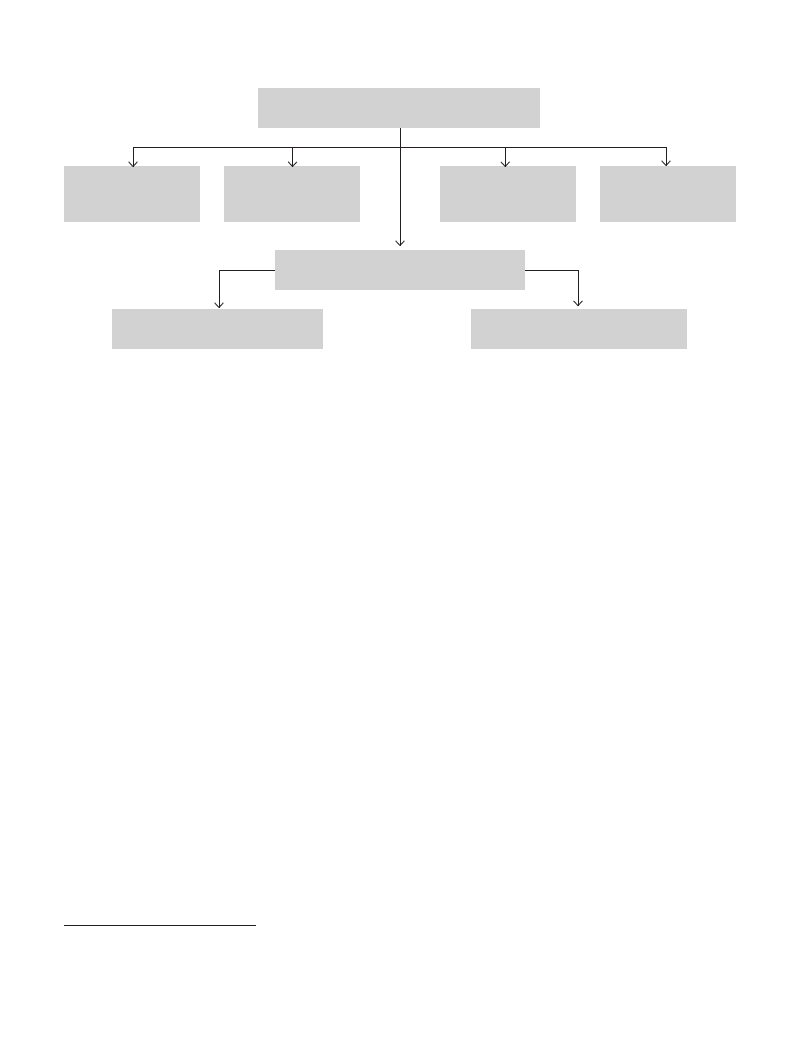
Ministry of Agriculture and Rural
Development (MoARD)
ETHIOPIA / 5
Agricultural
Development
Sector
Agricultural
Marketing
Sector
Natural Resource De-
velopment
Sector
Support
Process
Disaster Risk Management and Food
Security Sector (DMFSS)
Food Security Program
Directorate (FSPD)
Early Warning and Response
Directorate (EWRD)
newly created Food Security Coordination Bureau (FSCB). As such, DPPA was no longer responsible for addressing
the underlying causes of disasters, and was responsible only to respond to fast-onset disasters or unpredictable events.
FSCB addressed national food security through a productive safety nets program, other food security-related projects
that attempted to enhance assets and livelihoods, and a voluntary resettlement program. At the institutional level, DPPA
was responsible for transitory vulnerability, while FCSB dealt with chronic vulnerability. In practice, though, many per-
ceive that this distinction between chronic and transitory vulnerability is not so clear-cut in reality, and that there is some
movement of households between categories.7
The recent (and ongoing) Business Process Re-engineering (BPR) process throughout the government
during 2008-2009 has again restructured the institutional arrangement for disaster risk management, and
established the Disaster Management and Food Security Sector (DMFSS) under the Ministry of Agriculture and Rural
Development (MoARD), with a significant shift in policy direction. DMFSS now assumes all responsibilities of the former
DPPA and FSCB. DMFSS oversees two directorates: the Food Security Program Directorate (FSPD) and the Early
Warning and Response Directorate (EWRD). The diagram on the following page illustrates the current structure of
DRMSS within MoARD.
BPR, which began more than a year ago, has had a major impact on government capacity, resources, and
continuity, and has resulted in staff reductions across ministries. Staff of DMFSS in the national-level MoARD
was streamlined to reduce 60 percent of the staff, including some of the most experienced and skilled staff. There was
less turnover at the regional DMFSS level, and a new cadre of DMFSS staff was created at the woreda (district) level.
Thus, many of the current staff in DMFSS are new, and/or lack significant practical experience in disaster risk manage-
ment. As some donors and NGOs are now beginning to re-engage with Government and try to re-establish partnerships
with new staff, the DMFSS is in need for large-scale institutional and capacity building during this transitional and trans-
formational phase.
Under the new structure, DMFSS is undergoing a major shift in its approach from traditional reactive ex-
post emergency response and relief work to pro-active ex-ante preparedness and disaster risk reduction.
The new approach to DRM is highlighted in the new DRM Policy, which is a revision of the 1993 NPDPM. The new
7 Burg, Jericho. ‘Measuring Populations’ Vulnerabilities for Famine and Food Security Interventions: the Case of Ethiopia’s Chronic Vulnerability
Index.’ Disasters, 2008.

6 / Disaster Risk Management PROGRAMS FOR PRIORITY COUNTRIES AFRICA
DRM Policy is still not completed and needs to be submitted to the legislature for approval. The new and ambitious DRM
policy is organized according to Hyogo Framework for Action (HFA) priority areas and addresses some of the weak-
nesses of the 1993 policy, including the focus on drought and lack of information on community vulnerability and flood
preparedness. Despite DMFSS’s shift toward proactive ex-ante disaster risk management and explicit attention to HFA
principles in the new policy, Ethiopia is not yet a signatory to HFA and has not established a national platform. Becoming
a signatory to HFA would demonstrate Ethiopia’s commitment to the broad principles and strategies outlined in HFA, and
would constitute an important political gesture for the new unit. It is anticipated that the new national DRM policy will be
presented to Parliament in mid-late 2009 and potentially ratified in 2010.
Government capacity at all levels, but particularly at the national level, is a critical issue in the establish-
ment and implementation of this new mandate and proposed DRM policy. Successful implementation of the
new DRM policy will require the development of a concrete and detailed strategic framework and implementation plan.
The failure to fully implement the existing NPDPM has been attributed to the chronic capacity problem at all levels and
lack of legislation to enforce the implementation of the Policy. Major stakeholders, particularly key line departments, do
not always accept and support the main DRM strategy - the Employment Generation Scheme (a mechanism to link relief
and development) - as part of their mandates. Links between responsibility, authority and accountability have not been
clearly understood and observed. This is a major priority for making the new DRM Policy an effective vehicle for DRM.
Lack of coordination and cooperation among development partners and among government branches, and
the lack of a coherent, comprehensive approach to DRM, are the main challenges to the implementation of
the new DRM mandate. DMFSS needs to take a strong lead in providing a coherent framework and policy for DRM
at the national, regional, and local levels. There is also a need for DMFSS to play a significant coordination role among
the many actors involved in DRM, and to provide the donor and NGO community with a clear picture of how the various
DRM investments and interests in the country are aligned.
There is also a strong need for greater coordination by DMFSS for sectoral-level DRM activities within the
line ministries. DMFSS is the lead agency for dealing with hazards including drought, flood, and food insecurity, and
the coordination of DRM across the ministries. Line ministries address the integration of DRM issues at the sectoral level.
The Ministry of Water Resources, for example, is responsible for flood preparedness and the coordination of responses
to water and sanitation-related disasters including floods. The National Meteorological Agency (NMA) falls under this
ministry and prepares and disseminates monthly, seasonal, and annual climate bulletins and seasonal and annual hydro-
meteorological bulletins; NMA also finalized the Government’s National Adaptation Program of Action (NAPA) in 2008
and is mobilizing financial resources for its implementation.8 The Ministry of Health oversees an emergency preparedness,
early warning, response and recovery system for health emergencies linked to hazards including floods and drought.
These DRM activities at the sectoral level need to be better coordinated by DMFSS to avoid duplication of efforts and
develop common methodologies and baselines for risk profiling (see next section for more details on risk profiling)
There is a recognition that food security and early warning activities must be decentralized to regional and
woreda (district) levels. In 1995 the new constitution established a decentralized federal system that divided the
country into a series of semi-autonomous Regional States. Most responsibilities for the planning and implementation
of development policies and programs were decentralized to this level. Each region has its own set of government
institutions which largely replicate those at the federal level. Resources and responsibilities for service delivery and
8Other environmental strategies and policies include: (i) the 20-year Ethiopian Forestry Action Program (EFAP) formulated in 1994; (ii) the Ethiopian
Water Sector Strategy formulated by the Ministry of Water Resources in 2001 and its 15-year (2002-16) water sector development program; and
(iii) the Ethiopian National Biodiversity Strategy and Action Plan prepared in 2005 in fulfillment of the country’s obligations following ratification of
the UN Convention on Biodiversity.

ETHIOPIA / 7
project implementation have been moved to the woreda offices. In practice, however, both woreda and regional policies
are still guided by federal sector policies and by cross-sector strategies and programs.9
A second phase of decentralization in 2002 established the woredas as the center of socio-economic
development and empowered woreda administrations. The woredas now have economic autonomy and receive
direct block grants from the regional level. Each woreda now has an elected council, from which are elected a woreda
administrator and deputy who exercise overall leadership. The administrator chairs the woreda cabinet, which consists of
the heads of the various government departments found at this level.10
There is a Task Force on DRM, led by DMFSS, that is supposed to bring together all of the Ministries that
deal with DRM at the sectoral level: 11 Ministry of Water Resources, Ministry of Health, Ministry of Agriculture and
Rural Development, Ministry of Environment, and NMA. This forum and other similar working groups and platforms,
including the Early Warning Working Group (EWWG), Rural Economic Development – Food Security (RED-FS) Group,
and the Sustainable Land Management (SLM) national platform, need to be better coordinated and integrated, with the
clear establishment of roles and responsibilities. However, during and immediately after the BPR, this Taskforce has not
been functioning. It is important to re-establish a functioning Taskforce on DRM to help finalize the new DRM Policy and
to help lead the process for developing a detailed operational strategy and implementation plan.
HFA Priority # 2: Disaster Risk Assessment, Monitoring, Early Warning
Risk Assessments
A major priority of the DMFSS is to develop risk (hazard/vulnerability/coping) profiles at the woreda level.
The purpose of the profiles would be to integrate the baseline data on livelihood zones (disaggregated by livelihood
groups) developed by the USAID-funded Livelihoods Integration Unit (LIU) with historical woreda-level data on hazards
(e.g., floods, drought, malaria outbreaks, livestock disease) provided by the line ministries to determine multi-hazard risk
profiles at the woreda level. Ultimately, this information can serve as a source of forecasting and early warning information
based on historical data and also based on real-time data. In addition, the risk profiles can serve as a tool for analyses
and planning exercises based on the interface between sustainable land management (SLM), DRR and CCA, and
incorporate information on other sectors such as water balances, health and nutrition, land use, etc.
As such, DMFSS is seeking a common methodology for its proposed risk profiling. The existing early warning
system places more emphasis on the livelihood zone database (i.e., vulnerability profiles), and how climate variability
(notably lack of rainfall) can impact household well-being in terms of food production and consumption. It is possible
to have more detailed historical and “real-time” multi-hazard data to estimate the potential disaster risks, and to extend
the number of household well-being variables under consideration and to better model coping mechanisms and other
household adjustments to changing conditions (including changing prices). Thus, the woreda-level risk profiling could
provide a vast amount of information to integrate monitoring, forecasting, early warning systems, contingency plans and
contingency financing for multi-hazard analyses that cover many sectors.
Early Warning System
The National Early Warning System (EWS) has been in place in Ethiopia since 1976. It is supported by a
National Committee for Early Warning (NCEW), whose members, as stipulated in ‘Directives for Disaster Prevention and
9 Ethiopian Strategic Investment Framework for Sustainable Land Management (Draft). SLM Secretariat. August 2008.
10 Ethiopian Strategic Investment Framework for Sustainable Land Management (Draft). SLM Secretariat. August 2008.
11 Additional ministries and agencies with relevance to DRM include the Ministry of Federal Affairs, Ministry of Transport and Communication, Ministry
of Works and Urban Development, Ministry of National Defense, Ministry of Mines and Energy, and Environmental Protection Authority.

8 / Disaster Risk Management PROGRAMS FOR PRIORITY COUNTRIES AFRICA
Management,’ include senior staff members of EWRD, Ministry of Agriculture and Rural Development, Ministry of Health,
Central Statistical Authority, Ethiopian Mapping Authority, and NMA. In 1996 the multi-agency Early Warning Working
Group (EWWG) was established to coordinate early warning activities related to food-insecurity among government
agencies, donors, UN agencies, and NGOs. Early warning committees at all levels, including woredas, gather information
and report to higher-level committees.
The EWS conducts hazard assessments periodically and yearly by monitoring social, economic, cultural
and physical indicators. The EWS was established to “monitor and warn the threat of disasters ahead of time to
trigger timely, appropriate, and preventive measures.” However the primary focus of the EWS has been to monitor causal
factors of food insecurity. Thus it monitors the occurrence of drought, rainfall, pests, and the outbreak of human and
livestock diseases that affect the availability of, and access to food. The existing EWS is not well-suited to fast-onset
natural disasters such as floods, and certain rapidly spreading diseases and pests, and conflicts.
Communication among the kebele (community), woreda, regional, and federal levels is at the core of the
early warning system and must be strengthened for effective functioning of the system. This includes improved
systems for data collection, analysis, and dissemination to end users, as well as strengthening of the communication
channels from the community to national levels.
There is widespread recognition, among Government and development partners, of the need to develop a
more unified, transparent, coordinated, and objective early warning system, that has a system of “checks
and balances.” Although more than 30 early warning systems, methodologies, and approaches exist in the country, there
is no coordinating framework that brings together the different streams of information into a multi-sectoral early warning
system that assesses hazards in, e.g., agriculture, health, nutrition, and natural resources management.12 There should
be one major unified early warning system that assesses multi-sectoral hazards across the country, including monitoring
of drought risk, food insecurity, health epidemics, malaria outbreaks, livestock diseases, and market information. This
requires the coordination of early warning activities from the community level up to the federal levels, across line Ministries
at the federal level, and among the many actors and donors working on early warning issues at the community, regional,
and national levels.
There has been some progress toward the development of unified early warning systems. In recent months
the USAID-funded FEWS NET and the WFP-funded Vulnerability Analysis Mapping (VAM) have joined forces to generate
a unified monthly Early Warning Bulletin. This is a major stride toward streamlining and integrating existing monitoring
and early warning systems in Ethiopia. In addition, DMFSS has requested technical assistance from FEWS NET and
VAM to help in preparation of monthly reports by Government.
The Government has made a strategic decision to decentralize the early warning system to the woreda level,
particularly with regards to slow-onset risks such as drought and food insecurity. Given the importance of data
captured and used at the woreda level, DMFSS needs to focus on woreda-level capacity building for monitoring and early
warning, along with contingency planning and financing. In the existing system, the key information gathered and potential
decision-making is at the woreda level. This allows information gathered at the community level to be used by those at the
community level. One potential mechanism for the transfer of information between the community, regional, and national
levels is through the WoredaNet system, an initiative to connect the woredas through a network. This system is largely non-
functional at present but has the potential to be an important mechanism for information dissemination.
12Sue Lautze, Yacob Akalilu, Angela Raven-Roberts, Helen Young, Girma Kebede and Jennifer Leaning.: Risk and Vulnerability in Ethiopia: Learning
from the Past, Responding to the Present, Preparing for the Future. A report for the U.S. Agency for International Development, 2003.

ETHIOPIA / 9
Improved data collection at the local level and a strengthened multi-hazard early warning system require
reliable information on climate monitoring. The National Meteorological Agency (NMA) currently has about 1,000
hydro-meteorological stations of various classes located throughout the country.13 however, information at the local level
is seen as unreliable, and not captured in a way that would allow the community itself to use the data for early warning
and forecasting, and for planning of crop-livestock systems. There is a need to provide capacity building for better
and more reliable climate information at the local level through climate downscaling, expansion of hydro-meteorological
stations, and support for new technologies.
The NMA is promoting the “Mali model” for community-based climate monitoring whereby climatic data, along with other
data (e.g., on vegetation, crops and livestock status, human and animal health and nutrition, water resource availability
and quality, environmental indicators, etc) are collected at the community level to help in forecasting and early warning,
and also to better understand local conditions. In turn, this information can be used together with agriculture and heath
extension agents for planning farming systems and livelihoods that have higher returns, are more resilient to hazards, and
are environmentally sustainable.14
Contingency Planning
Along with capacity building for the early warning system, there is a clear need to strengthen the entire
contingency planning process, including the development of contingency plans at all levels, formulation of
objective and transparent “triggers” for the plans, and integration of the plans into the EWS. Woreda level
risk profiles can be key for linking EWS and contingency plans. Contingency plans are currently developed at the national
level to guide emergency responses, and are activated by the Policy and Planning Department of DMFSS and the
associated regional Disaster Prevention and Food Security Bureau. The movement toward decentralization of the EWS
and the transfer of more responsibilities to the woreda level, including the collection of early warning information, requires
greater capacity and responsibility at grassroots levels to develop appropriate and actionable contingency plans. This
includes the development of alternative contingency planning and funding mechanisms, along with risk financing and risk
transfer mechanisms (including index-linked insurance) to strengthen and complement contingency funds.
Risk Financing
Within the framework of the NPDPM, a National Disaster Prevention and Preparedness Fund (NDPPF) has
been established as an emergency fund that provides resources for carrying out relief measures. The Fund is owned at
the federal level and is managed by a National Disaster Prevention and Preparedness Fund Administration (NDPPFA).
The Fund, which is guided by a Board of Directors and with technical involvement of major donors, intends to provide
loans to agencies involved in disaster reduction. The NDPPFA has been operational and supported relief measures in
three instances in 2003; however, this fund is relatively new and has limited capacity.
A risk financing mechanism is being established through the LEAP (Livelihoods, Early Assessment and
Protection) index, supported by the World Food Program and the World Bank. The LEAP index is intended to
harmonize key components of a risk management framework designed to translate early warning information into early
emergency response. LEAP produces good indicators of yield shortfalls and livelihood stress and has been used by the
Government for early warning and crop stress monitoring during 2008, while the World Bank has used the index to help
13 There are about 18 synoptic “full-service” stations, 180 “indicative” stations, 300 rain and temperature gauge stations, and 500 rain gauge sta-
tions.
14See Climate Risk Management in Africa: Learning from Practice, edited by M.E. Hellmouth and others. (2008) International Research Institute for
Climate and Society. The chapter “Agriculture in Mali” provides a good overview of the “Mali model” for community-based climate monitoring.

10 / Disaster Risk Management PROGRAMS FOR PRIORITY COUNTRIES AFRICA
determine regional allocations of a US$25 million contingent grant to livelihood-stressed beneficiaries. The framework
is designed to protect five million livelihoods and would scale up the existing Productive Safety Net Program (PSNP) to
reach transient food insecure beneficiaries.
To quote Ato Mathewos Hunde, Director of the EWRD of DMFSS:
“Early warning systems are useless unless backed up by contingency plans and financing”
HFA Priority #3: Knowledge and Capacity Enhancement for DRM
Ethiopia’s undergraduate and graduate program on DRM at Bahir Dar University is an important mechanism
to increase knowledge and capacity enhancement for DRM, and should be supported as a critical element
of an overall national DRM strategy. The Department of Disaster Risk Management and Sustainable Development
(DRMSD) was developed within the Faculty of Agriculture and Environmental Sciences at Bahir Dar University (BDU)
as a response to an identified need to build more resilient communities through strengthened capacity and sustainable
development in Ethiopia. The three-year interdisciplinary undergraduate DRMSD curriculum was created in 2005 by a
joint committee of experts (BDU, Save the Children/UK and Canada and DPPC).
By strengthening and expanding upon the undergraduate DRMSD program at Bahir Dar University, USAID
is funding an interdisciplinary Disaster Risk Science and Sustainable Development Masters of Science
program. The curriculum is structured broadly to have both a proactive component that develops the skill to assess
the underlying vulnerabilities of different livelihood systems, contributing to sustainable development, and a reactive
component that addresses all stages of the disaster risk cycle.
Continued support for applied research and studies on DRM-related issues conducted by other Ethiopian
research institutes is important to further the DRM agenda in the country and to build capacity of local
institutions. Such institutions include the Ethiopian Development Research Institute (EDRI) and the Ethiopian Institute
of Agricultural Research (EIAR).
HHFA Priority # 4: Disaster Risk Reduction and Financing
Risk Reduction
Disaster risk reduction in Ethiopia is closely linked with poverty reduction, food security, and sustainable
land management (SLM) initiatives at the community and local level. Programs to reduce vulnerability include:
increase crop and livestock production and productivity of vulnerable population through moisture retention, soil and
water conservation (SWC), water harvesting and pasture development activities and improvement of extension services;
programs that improve the access of poor people to food in chronically food insecure areas through implementing
diversified income generating and cash based safety net, provision of credit and skill training; programs that improve
health and nutrition including water and sanitation, nutrition education, and preventive health activities; and resettlement
programs to provide access to land to the landless and/or to those who are settled in agriculturally marginal areas.
Although Ethiopia is mainly a rural country and largely dependent on agriculture, in urban risks are increasing
because of increasing hazards and vulnerabilities (e.g., increased population and informal settlements,
industrialization, and changing land use patterns). In particular, the Environmental Protection Agency (EPA)
has emphasized that industrial water and air pollution could contribute to a major environmental disaster. Also, lack of
adequate household and industrial solid waste management contributes to poor sanitation and drainage and increases

ETHIOPIA / 11
exposure and vulnerability to flooding and disease. EPA expressed urgency to address industrial water and air pollution
and solid waste management as a means to address risk reduction in urban areas.
HFA Priority # 5: Disaster Preparedness and Recovery
Given the restructuring caused by the Business Process Re-engineering (BPR) and shift toward
decentralization, there is a need to assess the best mechanisms for logistics, funding, and distribution
of relief supplies during a disaster response. At present DMFSS has institutionalized a Strategic Relief Fleet
that provides transport services in areas that are not accessible by long-haul trucks. In addition to short-haul trucks the
logistics plan is to mobilize pack animals to transport relief commodities. This system needs to be reviewed for upgrading
of the relief fleet; enhancement of delivery mechanisms; and improvement of the logistical system for distribution.
The community level storage facilities known as Relief-Food Outlets (RFOs) are established so that
affected populations receive assistance within their vicinity. The Government-owned storage capacity throughout
the country is around 1.7 million MT. Primary warehouses are placed in seven strategic locations and have 23,500MT
capacity. At regional states level the total storage capacity is nearly 1.3 million MT.
However, most drought-prone areas are inaccessible, forcing beneficiaries to travel long distances to
collect food rations. During emergencies, it is a common practice to use schools and other public facilities for storing
food as necessary. However, transportation of relief food from ports to the primary warehouses has not caused a major
problem so far although port congestions have been reported periodically.
The UNDP, though UNDP/BCPR, has just initiated a new integrated early recovery program that is a multi-
sectoral, multi-level and multi-stakeholders response mechanism to risk and disaster management. The UNDP’s new
integrated early recovery program aims at restoring the livelihoods of disaster-affected communities and provides basic
social services. The objective is to strengthen disaster response systems by lessening the negative impacts of disasters
and enhancing the positive development process.
3. Integration of Disaster risk management in Development Strategies
The FY 2008-2010 Ethiopia CAS recognizes the risks posed by climatic shocks, including droughts and
floods, and the need to reduce poverty and strengthen livelihoods for food-insecure Ethiopian households
to withstand adverse climatic shocks. The CAS identifies the potential entry points for reducing household
vulnerability from food insecurity. These include existing programs such as the Productive Safety Nets and Food Security
program as well as proposed programs such as the Land Management Project and the Tana Beles Integrated Water
Resource Development Project. The CAS also emphasizes urban development and extending infrastructure for poverty
reduction.
The Ethiopia Plan for Accelerated and Sustainable Development to End Poverty (PASDEP, 2006-2010)
provides an overarching policy strategy for reducing poverty and addressing food security. PASDEP builds
on the initiatives pursued under the Sustainable Development and Poverty Reduction Program (SDPRP), particularly in
promoting agricultural and rural development, developing human capital, promoting local capacity building in support of
the decentralization process, increasing household access to primary health care, and responding more effectively to the
HIV/AIDS pandemic.
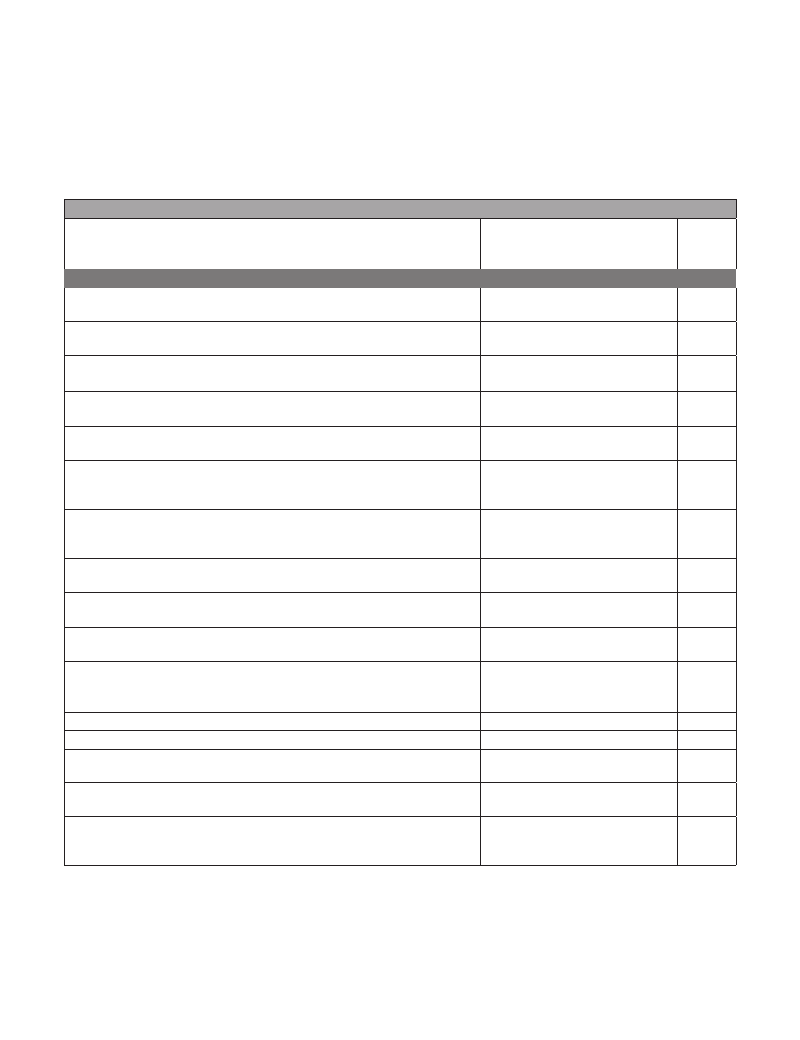
12 / Disaster Risk Management PROGRAMS FOR PRIORITY COUNTRIES AFRICA
4. Key Donor Engagements
There are many ongoing donor activities in DRM in Ethiopia. A major challenge is to better coordinate efforts between
Government, donors, NGOs and civil society to provide a more integrated and effective DRM program that is synergistic
and not duplicative and/or contradictory.
World Bank and Other Donor-Supported Projects Related to DRM in Ethiopia
Ongoing Projects and Organizations
World Bank Projects
Facilitating Provision of Baseline Vulnerability Information on Flood-Exposed
Communities in Ethiopia (GFDRR Track II)
Mitigating Impacts of Adverse Shocks on Nutrition and Health (GFDRR Track II)
Weather Risk Management Framework using Weather-Based Indices (GFDRR
Track II)
WMO/IGAD Climate Predictions and Applications Center (ICPAC) (GFDRR
Track I)
Economics of Adaptation to Climate Change (EACC) – Ethiopia Case Study
Food Security Project (World Bank, CIDA; DFID; Italy)
Productive Safety Net Program (PSNP) II (multi-donor project)
includes a specific component for risk management
Pastoral Community Development Project (PCDP) II APL
includes a specific component for risk management
Protection of Basic Services in Ethiopia (PBS) II
Ethiopia Financial Sector Capacity Building (National Bank of Ethiopia; NMSA;
Ethiopia Inst of Banking & Insurance; IMF; IFAD)
Rural Capacity Building Program
(WB/CIDA program)
Ethiopia National Nutrition Project
Irrigation and Drainage Project
Eastern Nile Flood Preparedness and Early Warning
Sustainable Land Management (SLM) Country Program (IDA, GEF, GTZ)
Tana and Beles Integrated Water Resources Development Project (World Bank,
Finland; MoWR; river basin organizations; regional BoARDs; ENTRO)
includes a specific component for risk management
Indicative budget, years
$550,000
2008-2010
$745,000
2008-2010
$660,000
2008-2010
$473,000
2008-2010
$80,000
2008-9
$85 million IDA, with other donor
funds to a total of $110 million,
2002-2009
$175 million WB/IDA contribution
with other donor funding to a total
of $906 million; 2007-2010
$80 million
2008-2013
$540 million IDA plus donor
contributions, 2009-2014
$15 million
2006-2009
$54 million WB/IDA,
$17 million CIDA
2006-2011
$21 million IDA, 2008-2013
$100 million IDA, 2007-2015
$3.5 million (Phase I)
2007-2010
$19.6 million IDA
2008-2013
$45 million IDA
2009-2013
HFA
activity
area(s)
2
2, 4
2, 4
1, 2
2,3,4
1,2,4,5
1,2,4,5
1,2,3,4,5
2,4,5
4
1,4
2,4
2,4,5
2,4,5
1,2,4,5
2,4,5
(Cont.)
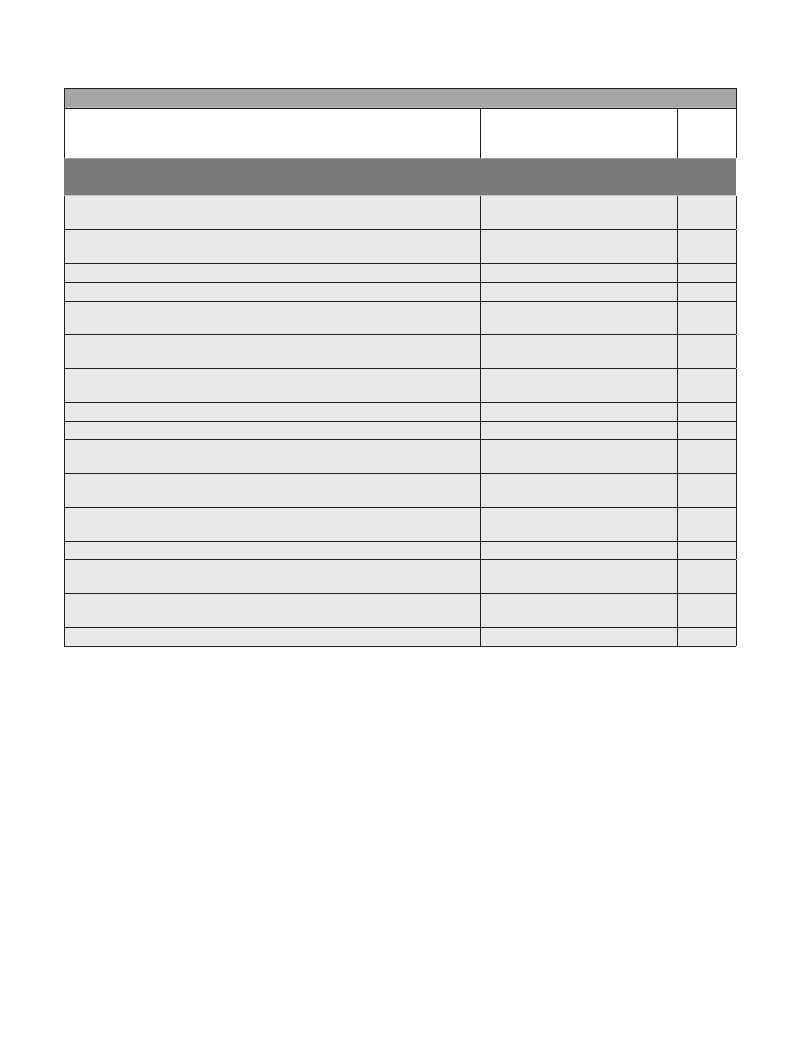
ETHIOPIA / 13
World Bank and Other Donor-Supported Projects Related to DRM in Ethiopia
Ongoing Projects and Organizations
World Bank Projects
Donor Projects
UNDP Program for Food Security and Recovery
UNDP Recovery Strategy for Ethiopia
UNDP Technical Assistance (IT Support) for DMFSS
UNDP/BCPR Early Recovery Program
WFP Managing Environmental Resources to Enable Transition to Better
Livelihoods Project (MERET)
WFP Relief Program (save lives and livelihoods in emergencies through food
and non-food relief)
WFP HIV/AIDS (multi-donor fund, PEPFAR, Global Fund)
WFP Food for Education (CIDA, US Government)
WFP Targeted Supplementary Feeding Program
USAID Livelihoods Integration Unit
USAID Miscellaneous Activities: Support for Preparation of New DRM Policy,
support for Preparation of Multi- Hazard Profiles
USAID Support to Bahir Dar University
USAID Famine Early Warning Security Network (FEWS NET)
FAO SLM Activities (Land tenure/administration, Participatory Forestry Manage-
ment (PFM)/Natural Resource Management (NRM), watershed management)
DFID: Productive Safety Nets Project
DFID: Risk Transfer
Indicative budget, years
$4.4 million for 2009
2009-2011
Salary for 1 international and 3
national, 2009
$300,000 (estimated), 2009
$3 million, 2009-2011
Planned budget for 2009: about
32,000 MT food
$4.9 million
$22 million; $43 million with other
donor contributions, 2008-2010
$43 million, (2007-2011)
$1.2 million
$5 million
2004-2009
2008-2009
$300,000 per year
2008-2010 (?)
???
$1.6 million
2009-2011
Approx $30-40 million per year
2006-2012
Approx $15 million 2010
HFA
activity
area(s)
1,2,4,5
1,4,5
1, 2
1,2,4,5
1,2,4,5
4,5
3,4
4,5
4,5
1,2,3,4,5
1, 2
1,2,3
2,4,5
1,2, 3,
4, 5
2, 5
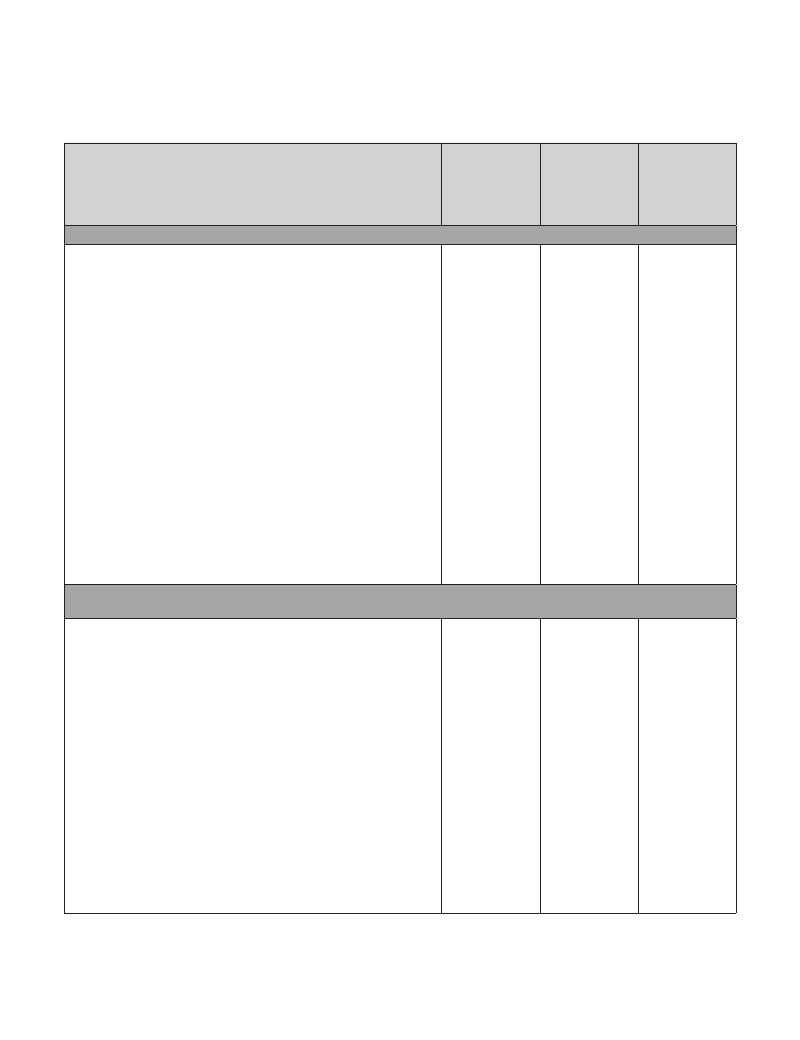
14 / Disaster Risk Management PROGRAMS FOR PRIORITY COUNTRIES AFRICA
5.global facility for disaster reduction and recovery (gfdrr):
action plan
HFA Priority Areas
Key Partners*
Estimated
GFDRR
Budget for
2009-2011
Already
Approved
GFDRR
Funding for
2008-2010
HFA 1: Strengthen national disaster risk management strategies and institutions
a) Support for Ethiopia to become a signatory to the Hyogo Framework
for Action (HFA), and to establish a National Platform for DRM by
strengthening existing platforms dealing with issues related with
DRM
b) Finalization of new DRM Policy, with process of awareness building
and advocacy
c) Support for development of DRM Implementation Strategy and Plan
d) Support for preparation of DRM legislation
e) Institutional and capacity assessment of DRMFSS, line ministries,
and regional, and woreda levels to implement new DRM approach
f) Support to line ministries to mainstream DRM into sectoral strategies
and plans
g) Capacity needs assessment and subsequent capacity building
at national, regional and woreda levels (e.g., training, computers,
transport logistics and communication equipment including
cellphones and PDA) to implement DRM
h) Develop software and application packages to use woreda.net and
other IT technologies/systems an integrated DRM information and
communication links between kebele, woreda, regional and national
levels
i) Funding for DRM Technical Advisor for DMFSS
j) Funds for selected short-term consultancies
UN-ISDR, IGAD,
ECA, UNDP,
USAID, DFID
$1,300,000
HFA 2: Ensure risk and vulnerability assessments, early warning and contingency planning and financing – in both
rural and urban areas
1) Risk Assessments:
a) Technical support to develop methodology and implementation
modalities of risk profiling (hazard/vulnerability/coping) at woreda
level (including collection of additional data to build upon existing
livelihood zone baselines and hazard profiles)
b) Technical support to develop methodology and implementation
modalities to link recently developed WB-DFID financed climate
change computable general equilibrium (CGE) models to woreda
level risk profiling
c) Training, experience sharing (with other countries), and capacity
building for DMFSS staff (and other relevant persons and
institutions) to support of a) and b)
d) Piloting of woreda level risk profiles that aggregate community/
kebele level risk profiles (in areas with different hazards and different
livelihood zones, both inside and outside areas supported by World
Bank projects)
e) Support for preparation of woreda level integrated DRM and
Environmental Plans to be mainstreamed into woreda-level
Development Plans
WFP, UNDP,
UNICEF. IGAD,
ECA, DFID,
IFPRI,
TerrAfrica/
SLM Network,
NGOs
$1,400,000
$550,000
(GFDRR Track
II Funding
for Flood
Hazard Risk
Assessments,
GFDRR
$350,000 plus
co-financing)
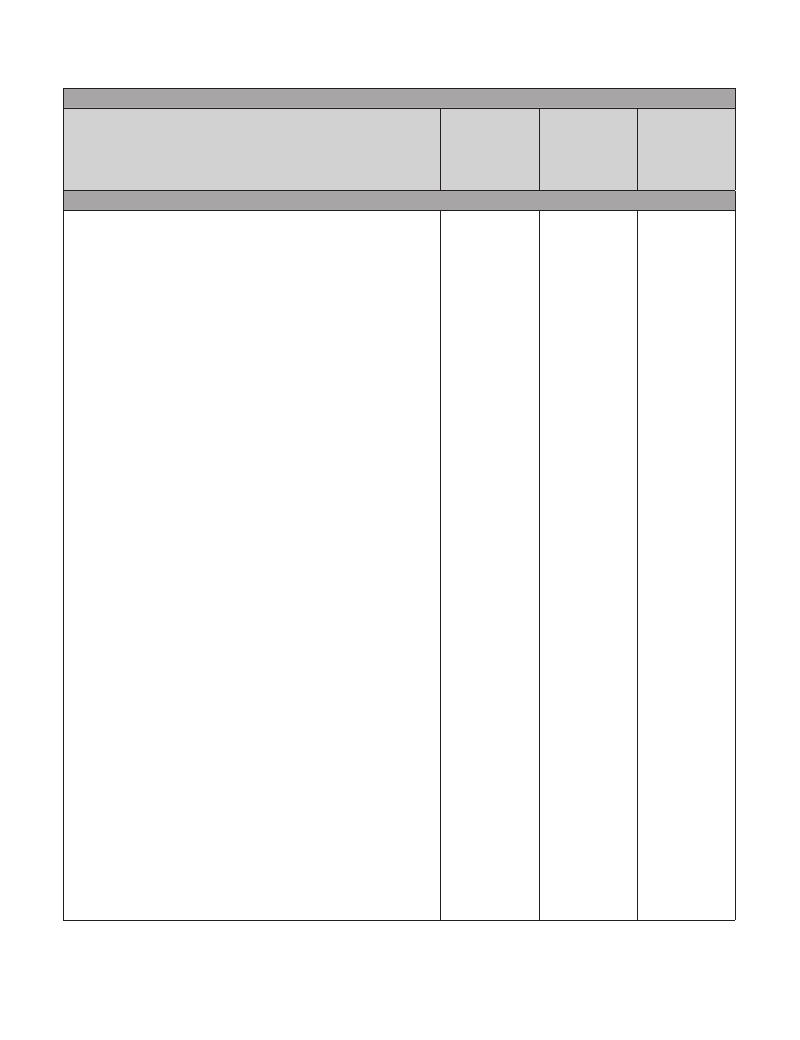
ETHIOPIA / 15
Ethiopia (Cont.)
HFA Priority Areas
HFA 2: (Cont.)
1) Risk Assessments (Cont.):
f) Piloting of woreda level risk profiles that aggregate community/
kebele level risk profiles (in areas with different hazards and different
livelihood zones, both inside and outside areas supported by World
Bank projects)
g) Support for preparation of woreda level integrated DRM and
Environmental Plans to be mainstreamed into woreda-level
Development Plans
Key Partners*
2) Early Warning Systems: Multi-Hazard Forecasting and
Warning
Support to the National Meteorological Agency (NMA and others):
a) capacity building for improved timeliness, reliability and local
specificity of climate forecasting through use of new information
(e.g., climate downscaling) and technologies (e.g., satellite imagery),
and expansion of meteorological stations including communities-
based “stations”,
b) improve flood monitoring, forecasting and early warning system
c) improved systems for data collection, analysis and dissemination
to end users
d) improved access to NMA data by DMFSS through networking and
improved coordination
e) improved application of climate information and forecasts for DRM
by end users at various levels, including the community
f) link to other DRM monitoring and forecasting systems (e.g., health
epidemics and malaria forecasting)
g) adopt relevant climate risk modeling techniques and tools, and build
capacity for their application (e.g., LEAP)
h) improve capacity for preparation of early warning bulletins at national,
regional and woreda levels
IGAD, ACPC
(ECA), WMO
UNICEF, WHO,
WFP, FAO,
USAID
FEWSNET
3) Contingency Planning and Financing: Moving from Early
Warning to Response
a) Support for design of community and woreda level integrated
multi-sectoral monitoring, early warning, contingency planning and
contingency financing mechanisms (using objective and transparent
“triggers” that are linked to the community and woreda risk profiling)
b) Review and revise early warning guidelines in line with new DRM
approach
c) Capacity building to implement integrated early warning system that
includes monitoring, forecasting, warning, contingency planning and
financing linked to rapid response at community, kebele, woreda,
regional and national levels
d) Support for development of different risk financing and risk transfer
mechanisms (e.g., index-linked insurance) to strengthen and
complement contingency funds (e.g., for catastrophic events)
Estimated
GFDRR
Budget for
2009-2011
Already
Approved
GFDRR
Funding for
2008-2010
$600,000
$700,000
$473,000
(GFDRR Track
I IGAD regional
project, part of
which to benefit
Ethiopia)
$750,000
(GFDRR
Track II funding
for Health
Early Warning
Systems to
support National
Nutrition
Project,
$350,000
GFDRR funding
plus co-
financing)
$330,000
(GFDRR
Track II
funding for
Risk Financing
piloting to
support
Productive
Safety Project)
(Cont.)
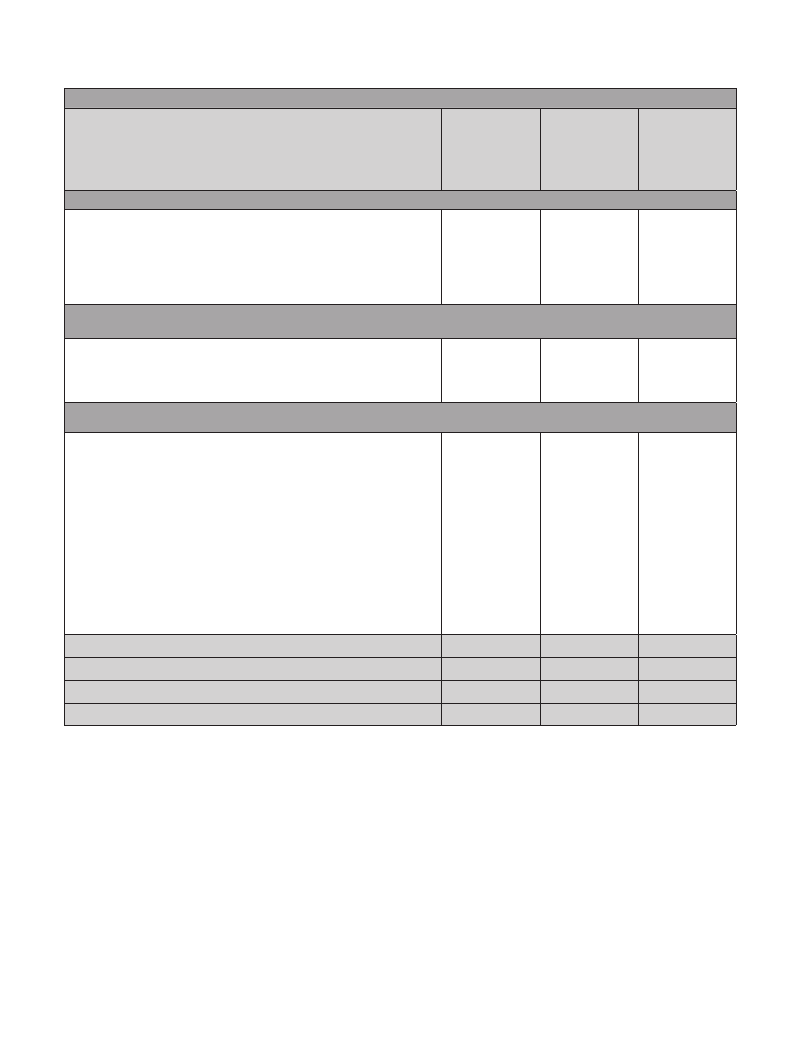
16 / Disaster Risk Management PROGRAMS FOR PRIORITY COUNTRIES AFRICA
Ethiopia (Cont.)
Already
Estimated
GFDRR
Budget for
Approved
GFDRR
Funding for
HFA Priority Areas
Key Partners* 2009-2011
2008-2010
HFA 3: Increase and sustain awareness creation, education and capacity building
a) Support to strengthen BA and MA Programs in DRM at Bahir Dar
University, including applied research
b) Support for specialized training programs in DRM at Bahir Dar
University in DRM
c) Support for DRM-related applied research and studies at other
Ethiopian institutions (e.g., EIAR, EDRI)
USAID, DFID,
IGAD
$400,000
HFA 4: Reduce underlying risk and vulnerability (and integrate DRR into sector planning and practices for
example in water, agriculture, health, environment)
Design and implement pilot programs to reduce industrial water and air
pollution, and to improve solid waste management in Addis Ababa and
Bahir Dar (linked to climate change programs that provide “credits” for
pollution reduction)
UNDP, DFID,
GEF
$300,000
HFA 5: Improve emergency preparedness and response through capacity strengthening
a) Conduct study to propose optimal logistics and funding mechanisms
for decentralized rapid response and recovery (e.g., identify needs
for warehouses for pre-positioning of food and non-food items,
maintenance of strategic reserves, relief fleet, and management/
administration of the system)
b) Support for implementation of a), above
c) Support for development of appropriate post-disaster needs
assessment methodologies and techniques for rapid onset disasters,
and implement training and capacity to facilitate early recovery
focusing on community, kebele, woreda, regional levels
d) Support for design of decentralized emergency rapid response
systems based on all of the above, that also strengthens regional
collaboration and information exchange
GFDRR Track II Funding:
WFP, UNDP,
UN-OCHA,
UNICEF, IGAD,
ECA, USAID,
NGOs
$300,000
$5,000,000
$1,030,000**
Co-financing for GFDRR Track II Projects
$400,000
Total GFDRR Track II Funding and Co-financing
$6,430,000
GFDRR Track I Funding
$473,000
Note: this matrix reflects the overall priorities of the DMFSS. The proposed GFDRR funding can, obviously, only provide some of the required funds to carry out the activities.
* Key Partners: This refers to key partners for ongoing or potential funding and/or technical support. There are many ongoing and proposed activities in DRM in Ethiopia.
There is expressed interest to provide support for the activities detailed in this matrix in different parts of the country. There are also ongoing World Bank projects funding
activities in these priority areas in different parts of the country.
** Only a very small part of these budgeted funds have been utilized to date.
See: www.gdfrr.org for details about GFDRR Track I and II Projects in Ethiopia and other countries, along with Track III and South-South Cooperation
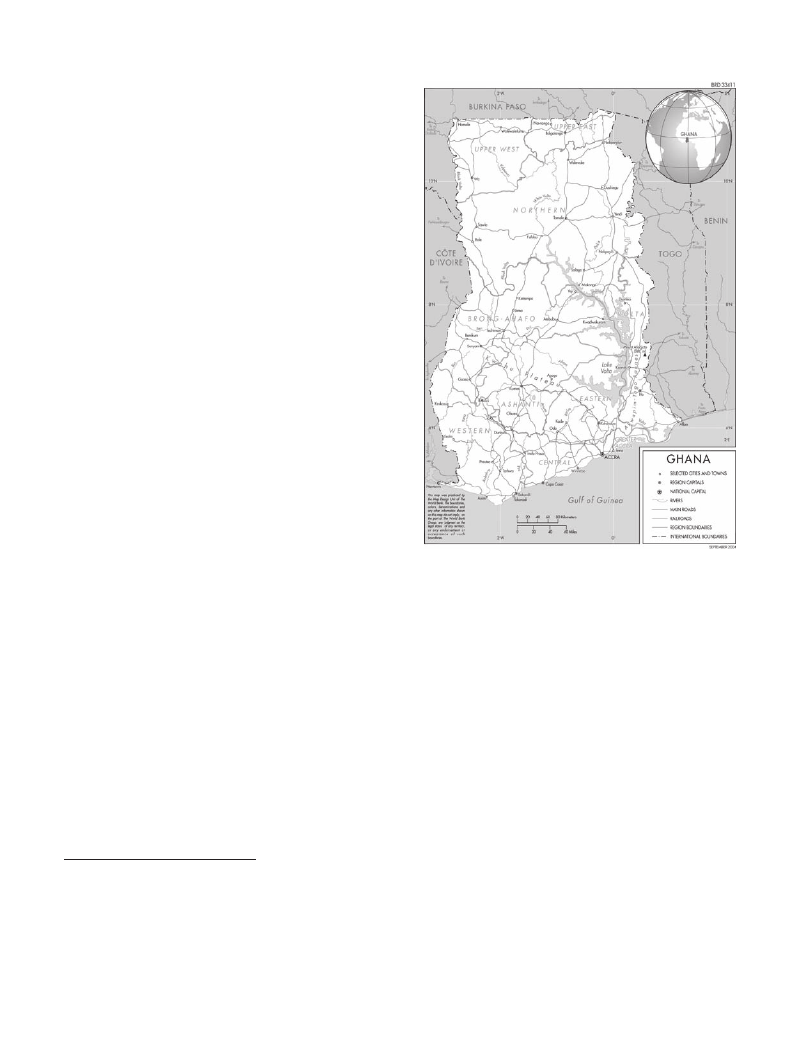
GHANA
GHANA / 17
In order to prepare the Country DRM Plan for Ghana the Africa
DRM Team agreed with UNDP on beforehand to undertake
a joint UNDP-World Bank mission. The mission was also ac-
companied by a representative from ECOWAS and a mem-
ber of the donor coordination group on Environment. This joint
mission held extensive meetings with the National Disaster
Management Organization (NADMO), and met representa-
tives of the Ministry of Interior (MoI), Environmental Protection
Agency (EPA), Ministry of Lands and Natural Resources (MoL-
MNR), Ministry of Food and Agriculture (MoFA), Ministry of Lo-
cal Government and Rural Development (MoLGRD), Ministry
of Water Resources (MoWR), Ministry of Finance (MoFEP),
National Meteorological Agency, and various development
partners, including UNICEF, WFP, the Danish Embassy and
UNDP. The team undertook a field visit to a District Office of
NADMO. The Mission also met with the technical team leading
the development of the Northern development Initiative (NDI),
and included a one day workshop with staff of the Country
Management Unit.
1. Disaster Risk Profile
Hazard Risks1
Ghana ranks high amongst African countries most exposed to risks from multiple weather-related hazards.
Ghana is exposed to floods and droughts, particularly in the Northern Savannah belt. Epidemics, pests, infestations and
wildfires occur across the country.2 There are risks of land slides, urban hazards, and coastal hazards (e.g. storms, storm
surges, and coastal erosion). Coastal erosion has become more pronounced, especially along the Eastern coastline. Seis-
mic hazards are most pronounced in areas around Accra, including the Akosombo Dam. The catastrophic floods in the
North in 2007 affected more than 325 000 people with close to 100 000 requiring assistance in some form or another to
restore livelihoods. The 2007 floods followed immediately after a period of drought that damaged the initial maize harvest,
and were indicative of the high variability in climate and hydrological flows in Northern Ghana. The long-term and economy-
wide impacts on the regional economy are still not well known, but an estimate of damage alone exceeds USD 130 million.
Between 1991 and 2008 the country experienced six major floods; the largest number of people affected being in 1991
1Some key sources for the Country DRM Plan: Amoako, P. Y. O. and S.T. Ampofo (eds) 2009 Hazard Mapping in Ghana, Report to NADMO,
Accra; NADMO website: www.nadmo.org, www.preventionweb.net, HFA Regional Summary of Africa, self-reported data; EM-DAT: The OFDA/
CRED International Disaster Database, Université catholique de Louvain, Brussels, Belgium; UNDP-Ghana: http://www.undp-gha.org/project.
php?page=25;
2 Between 1995 and 2008 the country experienced six major floods in the following years (number of people reported affected in brackets); 1991
(2.0 mill), 1995 (700 000), 1999 (325, 000), 2001 (144 000), 2007 (325 000), and 2008 (58 000). The last major drought was in 1982-83, af-
fecting more than 12 million people..

18 / Disaster Risk Management PROGRAMS FOR PRIORITY COUNTRIES AFRICA
(2.0 million people). The floods have revealed weaknesses in the disaster preparedness and emergency response system,
and exposed vulnerabilities of people, land use systems and infrastructure.3 In this regard, it is important to understand the
interface between risk, hazard, vulnerability, and capacity (risk = hazard x vulnerability/capacity).
Vulnerability and Exposure to Hazards
Current development dynamics and demographic changes put more people at risk of disasters in Ghana,
related to increasing rural poverty, rapid urbanization, growth of informal urban and coastal neighborhoods,
poor urban governance, and declining ecosy tems.4 The high dependence on natural resources in rural areas (more
than 60 percent of Ghana’s 20 million people depend directly on agriculture), lack of secure livelihoods, and limited
informal and formal social safety nets add to these vulnerabilities. Moreover, there are widespread epidemic diseases,
often in combination with HIV/AIDS and malaria. The impacts of localized disasters (droughts, local floods, epidemics
and wildfires) are likely to have accumulated impacts on rural livelihoods over time as a consequence of climate change,
in particular on communities in the North.
To this end, the severity and depth of poverty is highest in the three Northern regions (Northern, Upper
West and Upper East). Out of 18 percent of the total population that live in extreme poverty, 54 percent live in Northern
Ghana.5 Poverty is highest among food crop farmers. Northern Ghana, especially Upper East Region, is also most ex-
posed to land degradation and soil erosion. Land degradation accelerates run off, reduces soil productivity, and capacity
of ecosystems to provide critical functions and services, including regulation of floods in key watersheds and resilience
to climate variability.6
Rapid population growth and pressure on land resources are often accompanied by unsustainable agricul-
tural intensification, including expansion of (shifting) cultivation, deforestation, and depletion of vegeta-
tion cover due to overgrazing. The majority of rural households depend on small-scale agriculture for their livelihoods,
while they often lack access to markets and infrastructure necessary to improve farming practices, diversify livelihoods,
and build up their assets and coping capacity. Hence, many households engage in non-farm income generation, urban
migration (temporary or permanent), or become dependent on formal or informal safety nets through family or neigh-
bors.7
Climate Change
Overall, there is evidence that the agriculture sectors (including fisheries, cocoa, cereals, and root crops),
and water resources sectors as well as human health and women’s livelihoods will be negatively impacted
by climate change; the poor being most vulnerable. Moreover, climate change may also contribute to accelerated
storm surges and coastal erosion, to which Ghana is particularly vulnerable (World Bank et al. 2006, Dasgupta et al
2009)8. Coastal fisheries are undergoing severe changes due to change in sea temperature and currents combined with
overfishing and non-functioning resource regimes. Similar issues face Lake Volta, with important implications for the lake
3 The catastrophic floods in 2007 destroyed thousands of houses, and key sections of bridges and roads and other infrastructures including treat-
ment plans and pumps for water supply. It also damaged crops and agriculture lands.
4 The UNDP Human Development Report ranked Ghana 129th of 175 countries and approximately 45 percent of the population live below the
poverty line of one USD per day.
5Northern Ghana has only about 17 percent of the total Ghanaian population.
6 Past studies estimate that 69 percent of the total land surface is prone to severe or very severe soil erosion (EPA 2002), the main manifestation of
land degradation in Ghana. A recent study estimated soil erosion to cost around 2 percent of the national GDP (World Bank et al. 2006).
7 Population almost tripled over the last 40 years, from 6.7 million in 1960 to 18.4 million in 2000 (Ghana Statistical Service 2000).
8 Dasgupta, S, Laplante, D, Murray, S, and D. Wheeler, 2009: Sea-Level Rise and Storm Surges. A Comparative Analysis of Impacts in Developing
Countries, Policy Research Working Paper 4901, DRG, Environment and Energy Team, The World Bank

GHANA / 19
ecology and livelihoods of fishermen. Disaster risk and poverty are strongly linked in Ghana, and are in turn intertwined
with the reality of climate change. Climate change is expected to expose people to higher rainfall variability, water stress,
drop in agricultural yields, and depletion of resource-based livelihoods. This would increase the risk of drought periods,
increase evaporation and reduce agricultural productivity (10% lower rainfall is expected by 2050; IPCC 1997). More-
over, climate change will probably result in rising temperatures (1.4-1.6 higher temperature is expected by 2050; IPCC
1997), potentially increasing the risk of forest and bushfires. At the same time, Ghana’s economy and rural population
depend on sustainable growth in these climate-sensitive sectors.9
The impacts of climate risks are likely to magnify the uneven social and spatial distribution of risk in
Ghana, and possibly amplify poverty in the North. At the same time, the links between disaster risk and poverty
—in a changing climate—means that reducing disaster risk can help reduce rural and urban poverty, further sustainable
development and growth and improve adaptation to climate change.
2. ACTIVITIES UNDER HYOGO FRAMEWORK OF ACTION
HFA Priority # 1. Policy, Institutional Capacity and Consensus Building
Confronted with a variety of natural hazards, and prompted by the recent floods in the North, the Govern-
ment of Ghana has initiated actions on several fronts in order to develop strategies and strengthen insti-
tutional capacity in disaster risk management with increasing donor support. Disaster risk reduction has its
main institutional home within the National Disaster Management Organization (NADMO) in the Ministry of the Interior.
NADMO was established in 1996 under a National Security Council, chaired by the President of the Republic of Ghana.
NADMO functions under a National Secretariat, ten Regional Secretariats, one hundred and sixty-eight District/munici-
pal Secretariats and nine hundred Zonal offices. The NADMO Committees at National, Regional and District levels imple-
ment the policies, and are supported by Technical Advisory Committees. NADMO has a dual objective of i) to manage
disasters by coordinating the resources of Government institutions and non-governmental agencies, and ii) developing
the capacity of communities to respond effectively to disasters and improve their livelihood through social mobilization,
employment generation and poverty reduction projects (ref. Amendment to the NADMO Act).
Since its inception under the NADMO Act (Act 517, 1996), NADMO has contributed considerably to the
management of disasters across the country, despite a constant struggle to obtain resources and maintain
response capacity on the ground. A draft National Disaster Management Plan (NDMP) has recently been prepared
(as a revision of the 1997 NDMP), along with an Amendment to the Act. These documents will be considered revised
to reflect a stronger role of NADMO in DRR and CRM. NADMO has also prepared draft Operational Procedures will
also be finalized in view of this. OCHA has helped develop the modalities for a national relief fund, through a three days
workshop, which are intended to be captured in the Amendment of the Act. As an organization, NADMO possesses a
country-wide structure with representation at regional, district, and zonal levels with about five staff members in each
district. As such, the structure of NADMO makes it relatively well positioned to play a key role in disaster response and
preparedness – as well as in disaster risk reduction. NADMO does however lack required capacity at all levels and bud-
getary support to play such a key role (see below).
9 While Ghana’s growth was historically furthered by natural resources exploitation (agriculture, forestry, energy), this growth cannot be sustained in
face of the alarmingly high rates of degradation, which represents a cost to Ghana’s GDP of about 10 percent per year (Ghana Country Environ-
mental Analysis (CEA), World Bank, cited in NREG program document).

20 / Disaster Risk Management PROGRAMS FOR PRIORITY COUNTRIES AFRICA
Beyond strengthening its capacity in emergency response and relief work, a main challenge for NADMO
and its stakeholders is to keep reinforcing the approach to ex-ante preparedness and disaster risk reduc-
tion. This approach would need to address the critical factors that drive the increasing exposure to risk in communities
of Ghana linked to vulnerable rural livelihoods, poor urban governance and declining ecosystems. Such a shift in focus
would need to involve an institutional transformation in NADMO related to e.g. management, capacity, mindsets of staff,
and communication systems. It would imply that national disaster management policies and strategies be coordinated
with sector programs in policies, legislation, and practice. The choice of approach would need to exploit synergies and
ensure mutual reinforcing measures across ministries and agencies more so than what has been achieved in the past.
This needs to be done at the national, regional and district level – with outreach mechanisms to engage the community
level. This is a tall order that requires sustained Government interest and commitment across all key sector agencies (for
further details on institutional capacity building opportunities, see under section HFA 4 and HFA 5).
There is also a need for more regular and substantive exchange of risk information and knowledge across boundaries
with e.g., Burkina Faso, Togo, Cote d’Ivoire on floods and other hazards. There is scope for transboundary collabora-
tion on issues of climate change, coastal zone and fisheries management, drought management, and issues related to
epidemics and pests. ECOWAS can potentially play an important role in this regard, given its recent strengthening in
areas of DRM&CCA.
HFA Priority # 2. Disaster Risk Assessment, Vulnerability Assessment, Monitoring, Early Warning
Ghana has recently undertaken country-wide hazard mapping that covers the broad geographical distribu-
tion of disaster exposed areas for key hazards, such as for ge logical (seismic, coastal erosion, and landslides),
hydrometeorological (floods), pests and insects, and fires (wild bush fires, domestic, industrial).10 Other hazards have not
yet been mapped. Moreover, the interface between hazard exposure and vulnerability is poorly mapped, and the informa-
tion is not analyzed and brought together and made available for different audiences on a regular basis, except in some
pilot programs. Vulnerability and capacity assessment is ongoing by the National Development Planning Commission
(NDPC), and WFP has engaged MoFA and MoH in a Food Security Monitoring System for Northern Ghana.
Climate predictions linked to hazard exposure and vulnerability need to be improved as an information
service for targetted early warning systems. NADMO has established Technical Advisory Committees that has the
mandate to identify, monitor, and assess hazards. However, these committees need to be strengthened through training
and support. The capacity of NADMO to monitor and forecast hazards, and provide early warning and mechanisms for
preparedness and early response is limited at all levels. Messages do not reach out. The 2007 floods indicated weak
communication and coordination among key stakeholders engaged in emergency response or risk management. There
are elements of EWS in place, for example, for river-level monitoring.
A key recommendation would be to assess the need for an effective and decentralized multi-hazard early
warning system, including how to design such a system, linked to stronger monitoring, information analy-
sis, communication, and outreach. Such a system would need to start from improved climate predictions and infor-
mation services from an upgraded National Meteorological service. An early warning system would need to be supported
by contingency plans and improved response capacity at local and district levels (and tested through rehearsals and
simulations). This would require a coordinated effort by several agencies including between NADMO, Ministry of Environ-
ment (EPA), which coordinates work with the National Climate Change Strategy, and the Ministries of agriculture, water,
energy and health, which would depend on improved climate information services for decision making.
10 Amoako, P. Y. O. and S. T. Ampofo (eds) 2007: Hazard Mapping in Ghana, UNDP/NADMO, Accra

GHANA / 21
An early warning system is however no better than its weakest link. Hence, any EWS would need to be accom-
panied by systematic institutional capacity strengthening and conscious efforts to link e.g. climate information to multi-
media communication systems e.g. cell-phones, radio, television, and tailor information to different audiences.
It would be particularly useful to carry out urban hazard mapping – linked to ways of improving urban
governance – in one or two coastal cities. This could be done by testing a World Bank Cities Primer methodology
(carried out already for Dakar). Flooding in urban areas, especially in informal settlements due to lack of proper drainage
system is a key issue; drains often being clogged by solid waste. There is also a need to consider piloting participatory
risk mapping in hazard prone areas of vulnerable rural and urban communities.
There is also a need to identify and map key assets and infrastructure at risk as basis for spatial planning,
sectoral, or integrated urban or regional planning. This could involve focused mapping of assets in urban and
coastal areas and river basins; areas which are most exposed to hazards.
HFA Priority # 3. Knowledge and Capacity Enhancement for DRM
A risk aware population is essential to promoting risk reduction behavior at different levels of society.
Hence, public awareness and education about hazard risks and vulnerabilities are essential for effective
disaster risk management. Ghana is known for its relatively strong education system and independent think tanks.
Some of these institutions conduct specific research in the areas of water resources, pest and insect infestations, epi-
demiology and geology, and there are experts from academic institutions as members of NADMO’s Technical Advisory
Committees. However, there are at present no educational programs that directly address DRM. A strategic approach
to the inclusion of disaster risk management and climate change in school curricula should be developed, including an
approach to the training of teachers.
NADMO has a history of engaging in public awareness building and social mobilization, and received some
funding from UNDP recently to revitalize public awareness campaigns (2007/8). A general awareness and
sensitization program on DRR & CRM should be designed for different audiences within Government and outside the
Government. Initially, community volunteers and leaders could be key target groups of such campaigns, including also
Local Assembly representatives. This work is intended to be stepped up with UNDP funding in particular.
HFA Priority # 4. Reducing Underlying Risk Factors and Integration Across Sectors
An increasing number of Government and donor sector programs in Ghana are addressing disaster risk reduction – and
related issues of vulnerability and sustainable land management (see below).
To this end, there exists a set of innovative approaches and tools across sectors in the areas of agriculture
and rural livelihoods, watershed management, ecosystem management, urban governance, risk transfer,
and community-based development that might be applied to a variety of local context in Ghana. The main
challenge is to reinforce and mainstream new approaches by linking national policy and governance systems for disaster
risk reduction, poverty reduction and climate change adaptation through a coordinated approach. A selection of piloting
exercise could be initiated related to for example flood protection; water harvesting/watershed management in drought
prone areas; coastal erosion in selected sites; and social infrastructure using safe building norms in collaboration with
sector programs.
Development strategies to address hazard risks and vulnerabilities, however, cut across the Government’s

22 / Disaster Risk Management PROGRAMS FOR PRIORITY COUNTRIES AFRICA
sector forms of organization, and require coordination and types and scales of programs well beyond NA-
DMO’s mandate and capacity. This is for example recognized in the draft Development Plan for the North, which cov-
ers all key sectors and includes a strong focus on mainstreaming disaster risk reduction. Various new sector programs
are being planned, including for the North, within which NADMO could usefully play a proactive role and become partner
(including new programs with World Bank funding in integrated river basin management, social protection, and carbon
finance/forestry).
However, until recently, where NADMO has been capable of engaging sector agencies in the DRR&CRM agen-
da, it is more from an emergency response perspective rather than from a perspective of mainstreaming DRR/
CRM in sector programs and strategies. The National DRR Platform has not started functioning, and few substantive
linkages have been built across sector agencies since its inception in 2005. Coordination is relatively week and there are
no focal points for DRM in most of the sector agencies; while there is a fairly active Environment Sector Group.11 Relevant
stakeholder agencies also lack resources and appreciation of what constitutes hazard risks, hampering effective en-
gagement. Hence, the strengthening of NADMO alone would not be sufficient for effective emergency response, say
integration of DRR & CRM in planning and development at different levels of society. For example, there is at present
no system of integrated physical/environmental/ land use planning at district level which is a responsibility of the Minis-
try of Environment; a mechanism that could help bring actors together around issues of land use planning, zoning, and
codes for climate/risk resilient infrastructure and buildings. Moreover, decentralization processes have moved slowly, and
vertical linkages between national sector ministries and local state bodies and local assemblies are not well developed
(including between NADMO, the Ministry of Local Government Rural Development, Environment, and MoFA). It is also
not clear what role traditional authorities (Chiefs and local leaders), play or can play in this regard.
HFA Priority # 5. Disaster Preparedness and Recovery
In Ghana, the disaster response structure has four levels of organization beyond the community level. Re-
sponse to a given natural hazard starts with the local level (Zonal Offices of NADMO) determining whether
the event is of a magnitude that require outside assistance from the District, Regional or National levels.
In reality, due to limited capacity of the Zonal Offices, emergency warnings at local level often rely on ad hoc messages
from community volunteers, and/or District Assembly representatives with contacts in rural locations.
The 2007 floods revealed that effective disaster preparedness and recovery operations in NADMO face
critical challenges related to coordination and implementation capacity at all levels, due also to inadequate
and late release of government funding.12 NADMO has been underfunded for years, and has received limited gov-
ernment support. Institutional capacity strengthening is required at all levels, including in management, logistics, and
transport. The systems of hazard monitoring, early warning and communication are not well-functioning and the hardware
is outdated. The system of warehouses, logistics and equipment for effective disaster response is weak – in particular
at the level of the regional and district offices. Training and capacity building are lacking, and rehearsals and simulation
exercises are done only rarely. There is no substantive DRM planning at district and regional levels. The recent capacity
assessment of NADMO concludes that the organization faces low human resources capacity, lack of training opportuni-
ties, low remuneration, and weak coordination power in terms of engaging relevant sector agencies in disaster response
and emergencies.
11 The National Platform was established in 2005 and a program of action prepared, involving all the key objectives of the HFA (ref. Report on the
Establishment of a National Platform for Disaster Risk Reduction in Ghana, Sept. 2005).
12Sync Consult 2008: Capacity Assessment, Disaster Preparedness of NADMO, Accra (with UNDP funding)

GHANA / 23
Given that volunteers at local level play a critical role in local level disaster response, it is important to test
community-based approaches to disaster risk reduction that may enable volunteer groups and communities and local
government to identify and explore appropriate community-based solutions to DRR&CRM.
A main challenge, beyond strengthening the institutional capacity of the response system at different lev-
els, is to mobilize funding and ensure capacity for rapid and early recovery in the aftermath of a disaster
e.g. a flood event.
The Government, related to its work with OCHA on establishing a relief fund, expressed an interest in ex-
amining various mechanisms for risk transfer and risk financing. Mechanisms for risk financing and risk transfer
are still insignificant, reflecting that such measures are still in their early stages also in neighboring countries. There are
still no mechanisms developed for private or sovereign catastrophe insurance. In certain coastal areas or water basin
areas, where the level of risk and infrastructure exposure is high, financial risk transfer mechanisms can be considered
an area for future development in Ghana.
3. Integration of Disaster risk management in Development Strategies
The mission met strong Government commitment to the integration of DRR & CCA in development policy
and programs across key ministries. However, it is fair to say that DRR & CCA have only recently attracted more
substantive attention in development planning, even if for example NADMO – as well as key sector ministries – have
in various manners been engaged in disaster risk reduction for several years. The renewed attention to these agendas
reflects concerns over the 2007 floods as well as observed changes in climate variability. It may also be a response to
global trends and increased opportunities for external funding to these agendas. DRR & CCA are increasingly mani-
fest in new donor programs and policies, and have also started to become more firmly reflected in Government sector
programs. The National Planning Commission has recently raised the issue of CCA in long term development planning,
while DRR has not yet been internalized. The Government budget allocations to disaster management, as a measure of
commitment, is limited; NADMO being provided only about $ 5 million annually; less than 5% of this budget set aside
for investments and programs.13
The 2003-2005 Ghana PRSP does however refer to the potential impacts of climate change and the impor-
tance of DRM, early warning, and flood prevention. The Joint Staff Advisory Note, commenting on the PRSP prog-
ress in 2006, commends the focus on addressing environmental decline and natural resources degradation, which is
seen to severely undermine economic growth, and refers to the need for effort to manage land, forests, mining and urban
environment better. But the report does not raise issues of climate risks and variability and effects on sustainable land
use. Moreover, the Ghana Growth and Poverty Reduction Strategy – GPRS II (2006-2009) refer to these themes only
indirectly with reference to the degrading environment and declining agricultural productivity and its impact on poverty.
The focus is on economic growth, human resource development and governance. Hence, DRM is not well integrated in
these key planning documents. Similarly, UNDAF (2006-2010) does not refer to DRM and climate change – although
issues of environmental degradation and vulnerable groups in the North are addressed.
In the recent years, however, as the next section indicates, the attention to DRR&CCA has moved higher
up on the development policy agenda in Ghana, manifest in a set of new innovative donor supported pro-
grams and government commitment to the agenda. The most recent World Bank Country Assistance Strategy
13 More than 85% of the budget is for personnel and administrative expenses, according to a review of the 2009 budget presentation. Another ex-
ample of lack of priority accorded to this field is the fact that the National Action Program to Combat Drought and Desertification (NAPCDD), which
was prepared in 2004, only received some funding with the initiation of the UNDP program starting in 2009 (see matrix of donor engagements).
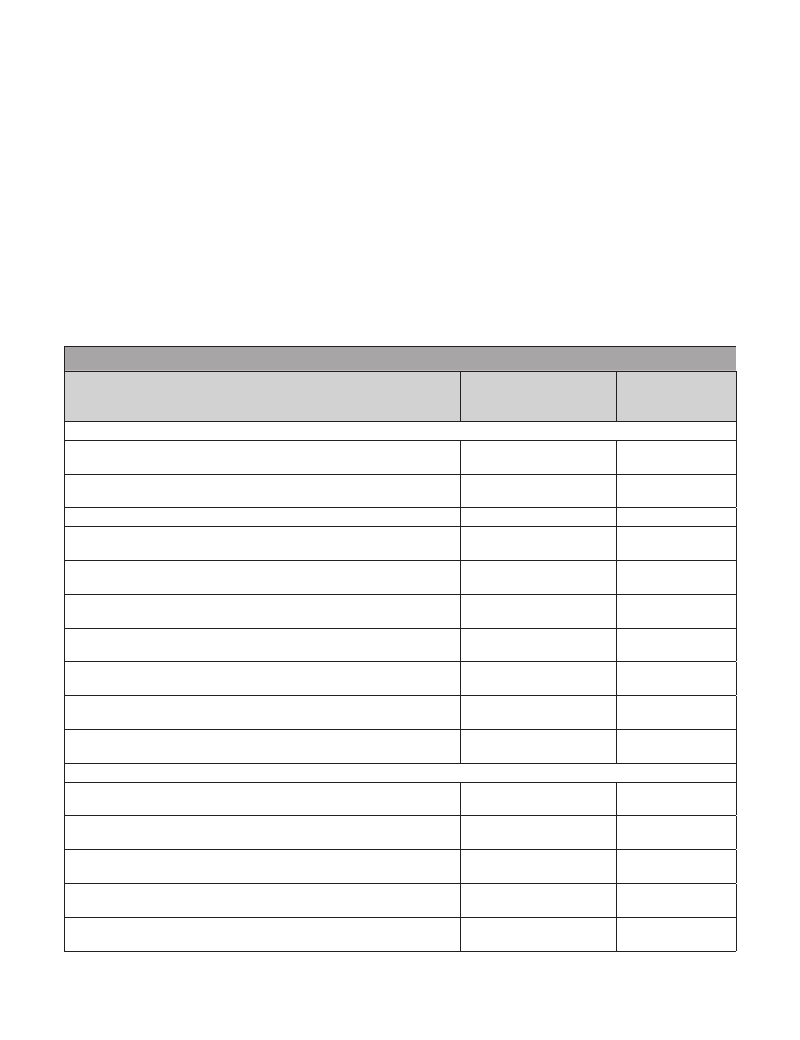
24 / Disaster Risk Management PROGRAMS FOR PRIORITY COUNTRIES AFRICA
(CAS) (FY08-11) has explicit reference to the need for assisting vulnerable populations, and support measures towards
minimizing the impact of climate variability and climate change. This increased attention is evident, for example, in several
new UNDP programs, which followed in the aftermath of the recent floods in 2007, and UNDP Annual Work Plan 2009
has a special focus on institutional support to integrated CC and DRR into national development plans. Moreover, the
Second Natural Resources and Environmental Governance policy operation (NREG ) raises climate risks and climate
change adaptation and the need for a new climate change strategy as key issues.
4. Key Donor Engagements
Overall, the integration of DRR&CCA in new donor supported programs, some of the most important are listed here, is
a clear indication that the “new” development agenda in Ghana has started firmly addressing these cross-cutting fields.
The list is not complete.
World Bank and Other Donor Supported Projects in Ghana
Ongoing Projects and Organizations
Indicative budget
(where available, details on
years covered)
World Bank supported projects
Ghana North- Sustainable Development, Disaster Prevention, and Water
Resources Management (GFDRR)
US $660,000
(2008-2011)
Community Co-Management for DRM of Marine Resources in West Africa
(GFDRR) (multi-country program; Ghana involved)
TerrAfrica (Sustainable Land Management – knowledge creation)
Economics of Adaptation to Climate Change (EACC)
US $ 900, 000
(2008-2011)
(multi-country)
(multi-country study)
(2009-2010)
Natural Resources and Environmental Governance (NREG)
Ghana Productive Safety Nets Project
Integrated Water Resources Development and Agricultural Competitiveness
Project, Planned (FY10)
Ghana Community Based Rural Development Project (CBRDP)
Ghana Urban Water Project
US$ 60 million
(2008-2010)
US$ 30-50 million
(under preparation)
US$ 50-100 million
(under preparation)
US$ 60 million
(ending Dec. 2010)
US$ 103 million
(2004-2010)
Carbon finance project
UNDP funded projects
UNDP-Ghana: Mainstreaming DRR and CCA (mainly capacity building)
US$ 30 million
(under preparation)
US$ 700,00
(2009)-
UNDP-BCPR: Early Recovery Program for Northern Region
UNDP-GEF Impacts of CC on Health
US$ 1,2 million
(2009-2010)
US$ 2,0 million
(2010-2013)
UNDP-UNEP: CC-DARE (for preparation of National CCA Strategy)
UNDP Africa Adaptation Program (AAP)
US$ 150,000
(2009-2010)
US$ 2,5-3,0 million
(2009-2012)
HFA activity
area(s)
4, 5
1, 3, 4, 5
2, 3, 4
2, 3, 4
1, 2, 3, 4, 5
4, 5
3, 4
2, 4
4
1, 2, 3, 4, 5
1, 2, 5
4
1
1, 2, 3, 4, 5
(Cont.)
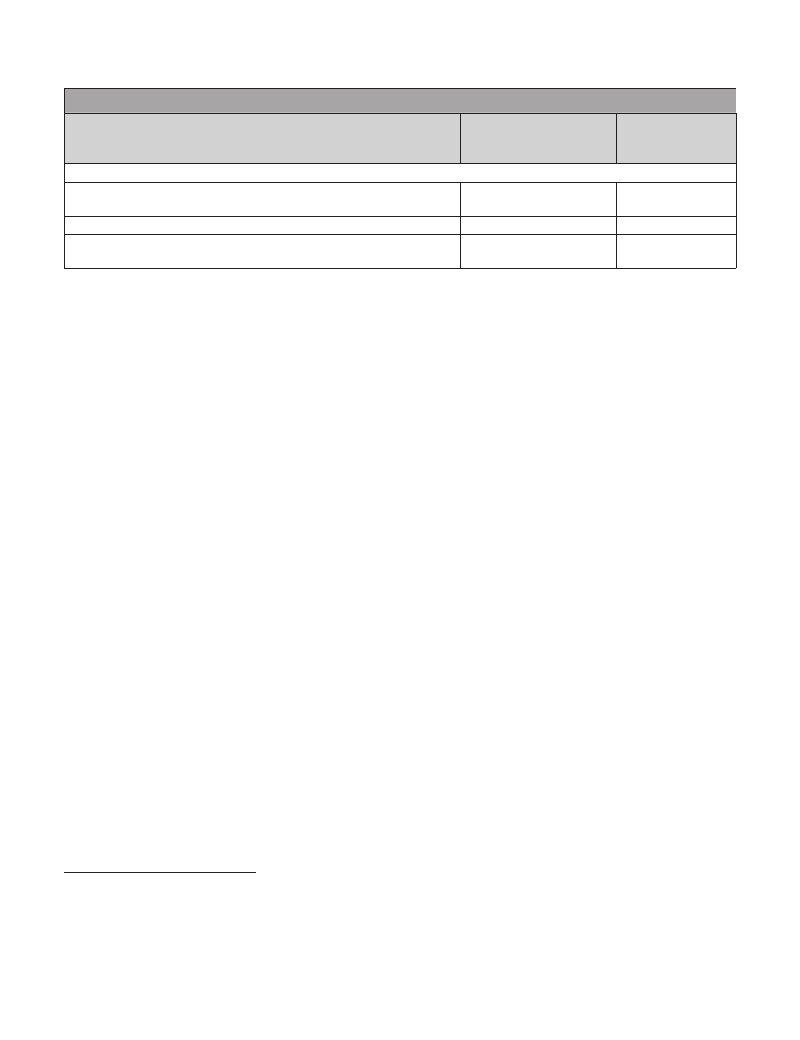
GHANA / 25
World Bank and Other Donor Supported Projects in Ghana
Ongoing Projects and Organizations
Indicative budget
(where available, details on
years covered)
Other donor projects (incomplete)
Food and Agriculture Budget Support (FABS) and the Agricultural
Development Policy Operation (Ag DPO)
Ghana Environmental Management Project (GEMP)
UNDP-GEF – for sustainable land management (in support of National
Action Plan to Combat Drought and Desertification)
(2009-2013)
HFA activity
area(s)
4
2, 3, 4
2, 3, 4
5.global facility for disaster reduction and recovery (gfdrr):
action plan
Given the substantial number and scale of new donor engagements, including those of the World Bank and
UNDP, it is essential to consider the GFDRR support within a broader national framework that ensures a
coordinated and harmonized approach. It was thus agreed to develop a National Program Framework for
Disaster Risk Management and Climate Risk Management which would help ensure a comprehensive and
integrated programmatic approach. 14 The World Bank and UNDP agreed to prepare together with Government a pro-
gram document to this end, under which the UNDP-World Bank/GFDRR projects would be implemented.
The total UNDP-World Bank support for this National Program will be about $ 12 million. Under this national
framework program there would be five UNDP supported operations, and the new World Bank/GFDRR “Country DRM
Plan” conceptualized as a joint program (See Annex 1 for more details about the joint UNDP-World Bank programmatic
approach). The program could later include additional projects, even from other partners.
The new program will include two on-going GFDRR funded programs; i) Ghana North: Sustainable Develop-
ment, Disaster Prevention, and Water Resources Management (2008-2010).15 The original funding of US$ 660 000
has been agreed allocated as follows; i) US$ 400 000 for the integrated flood prevention and watershed management
strategy for the Volta basin with a focus on developing irrigation potentials (about US$ 25 000 has so far been utilized
for a scoping mission). The remaining funding would be utilized to: a) advance work under the Country DRM Plan, includ-
ing the funding of a consultant to prepare a Government program document as an umbrella for the joint UNDP-World
Bank funding; and b) to strengthen capacity for planning and implementation of the new SADA; ii) The second GFDRR
funded program is a multi-country program with a component in Ghana: Community Co-Management for Disaster Risk
Management of Marine Resources in West Africa (US$ 900, 000). The project will strengthen the capacity of coastal
and sea-shore communities in marine and coastal resource management in face of local risk factors, effects of climate
change and marine resource over-exploitation. The project combines support for local-level resource management strat-
egies with interventions at national policy and institutional levels. The project includes a component for management of
marine resources of Lake Volta.
14 This in recognition of the fact that the two agendas of DRR and CCA are interwoven (yet distinct) – one focusing mainly on emergency response,
and early recovery, disaster preparedness and reduction of risks – the other mainly on medium- and long-term adjustments to climate change
through adaptation and mitigation. But both agendas meet under the objective of addressing climate risks management (CRM).
15 The Ghana specific GFDRR grant, approved in the context of the post-2007 floods, supports three work-streams: (i) support to the development
of the Northern Development Initiative (NDI); (ii) development of an integrated water resources and flood management plan for the Volta Basin; and
(iii) capacity building for Ghana’s national disaster management structures in particular NADMO, and b) The other GFDRR supported project is
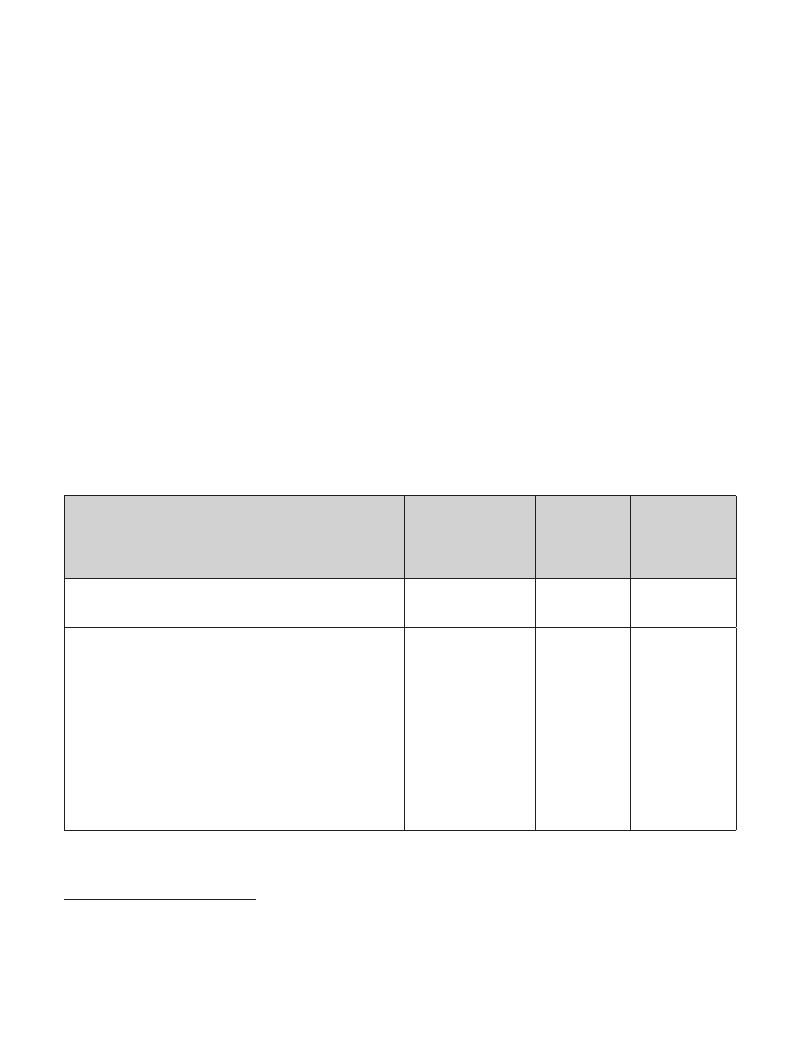
26 / Disaster Risk Management PROGRAMS FOR PRIORITY COUNTRIES AFRICA
It is essential that the new National Program be coordinated closely with the Natural Resources and Envi-
ronmental Governance (NREG) Development Policy Operation – which is supported by all key bilateral donors
and the World Bank – and which constitutes the main coordination mechanisms for program support on the environment
and climate change.
On this background, the indicative program areas identified for specifically for GFDRR financing – here de-
noted the GFDRR “Country DRM Plan” - are listed in the matrix below, with reference to the sharing of responsibili-
ties between the World Bank/GFDRR and UNDP – but referring only to the allocation of costs for GFDRR funding. The
GFDRR program would largely be Government-executed for a duration of three to five years, and implemented under the
umbrella of the National Program Framework.
In conclusion, a comprehensive approach to DRM will require national policy coordination for DRR, CCA,
poverty reduction, and human development led from the highest political and organizational level with a
focus on risk reduction as a means to promote sustainable development in all sectors.16 Bridging the North-
South divide in development requires addressing risk management, combined with a growth and rural poverty strategy,
in the Northern regions of Ghana. The approach would place considerable demand on governance systems from na-
tional to local level across a set of ministries. A key challenge is for the Government to be able to link national policy and
governance frameworks for disaster risk reduction, poverty reduction, and CCA through a new approach to sustainable
development.17 A first mechanism for different agencies to rally around would be the development of a national multi-
hazard early warning system linked to communication and contingency plans from the national to the local level, possibly
with an initial focus on the North.
Indicative new program areas for GFDRR/World Bank
funding under the “Country DRM Plan” for Ghana*
1. Strengthening national disaster risk management
strategies and institutions
Potential output/
outcomes
- Review and finalize new DRR/CRM policy/strategy based on
review of existing sectoral policies and new climate change
strategy
- Establish inter-ministerial coordination mechanism
- Validate and publish policy and ensure passage of the revised
Amendment Bill
- Sensitize key stakeholders on new policy directions, including
with the NADMO Committee members
- Prepare a government-owned National Program Framework
for DRR&CRM under which the joint UNDP-World Bank
program will be implemented
- Follow up the NADMO capacity assessment with a plan for
systematic institutional strengthening at all levels
Policy on DDR/CRM
mainstreamed
Coordination improved
DRM policy and CC
strategy integrated
Indicative
budget
for GFDRR
funding
US $
550,000
200,000
Partnerships
UNDP,
ISDR, NREG,
ECOWAS
UNDP will
continue to take
a lead role in
finalizing policy
and legal acts and
build capacity.
(Cont.)
16Commission on Climate Change and Development, 2009: Closing the Gaps: Disaster risk reduction and adaptation to climate change in develop-
ing countries, Report to the CCDC, info@ccdcommission.org, Stockholm)
17See 2009 Global Assessment Report on Disaster Risk Reduction: Risk and Poverty in a Changing Climate: Invest today for a safer tomorrow, UN-
ISDR, 2009.

GHANA / 27
Indicative new program areas for GFDRR/World Bank
funding under the “Country DRM Plan” for Ghana*
- Establish 9 Regional Platforms for DRR and CRM and develop
plan for systematic capacity strengthening
- Establish District Platforms for DRM/CRM, initially in the
North
- Develop Regional and District DRM plans
- Support and monitor the implementation of plans
- Develop program for capacity strengthening and provide
specialized training in DRM/CRM and damage/loss
assessment
- Develop and test low-cost communication systems (internet,
cell-phone) between District, Regional, and National levels
within NADMO – linked to community outreach (relates to
actions listed under HFA 5 below)
Potential output/
outcomes
National Platform
for DRR/CRM
strengthened
Regional and District
level platforms in
operation
Efficient
communication
systems in operation
Indicative
budget
for GFDRR
funding
US $
300,000
Partnerships
GFDRR support
will include
communication
equipment and
capacity building
(in tandem with
UNDP)
- Undertake exchange programs and visits in neighboring
countries and consider to establish Platforms for regional
coordination
- Improve information sharing with neighbors on climate related
risks – related to specific program needs
- Strengthened networks with sub-regional organizations
2. Ensure risk and vulnerability assessments, early
warning and contingency planning and financing
- Review and update existing hazard assessments and maps
- Develop an overview of key infrastructure and assets
threatened by hazards
- Provide technical support to develop methodology and
implementation arrangements for relevant hazard/vulnerability/
risk profiling at district level related to integrated DRM and
resource management plans (pilot in hazard prone flood areas
and coordinated with the Sustainable Land Management
Network/MoFA)
- Conduct pilot exercise in urban hazard mapping and urban
governance (based on Cities primer)
Trans-boundary and
regional cooperation
on DRR/CRM
strengthened
Hazard, vulnerability
and risk assessments
and relevant maps
carried out for all
climate related hazards
Risk profiling at district
level undertaken (on
pilot basis)
- Training and capacity building for the above
50,000 UNDP will take
the lead
2, 450,000
400,000
200,000
UNDP, WFP,
Met. Station
UNDP has
funded the initial
hazard mapping,
while World
Bank/GFDRR
will take the lead
in taking these
activities forward
(Cont.)

28 / Disaster Risk Management PROGRAMS FOR PRIORITY COUNTRIES AFRICA
Indicative new program areas for GFDRR/World Bank
funding under the “Country DRM Plan” for Ghana*
- Undertake an inventory of existing EWS, assessment of
future needs, and design of a multi-hazard EWS, including
infrastructure/communication needs. A major gap accepted
by all parties is the fragmented monitoring and early warning
system (EWS) in Ghana. This activity will related closely to the
CCA agenda and the work of EPA.
- Support to National Meteorological Agency (capacity building
and renovation of weather stations)
- Technical support and capacity building for EWS and
contingency planning
- Assess, improve and modernize EWS in communities
- Review of existing contingency plans and develop suggestions
for new plans that include DRR/CRM at Regional, District and
community levels
3. Increase and sustain public awareness creation,
education, and capacity building
- Organize workshops and seminars for policy makers and
professional bodies on DRR/CRM
Potential output/
outcomes
Early warning systems
(multi-hazard) updated,
and capacity for
management created
at all levels
Contingency plans for
DRR/CRM piloted and
scaled up
Increased awareness
of DRR&CRM, and
ways of coping
- Equip Regions and selected Districts with communication and
outreach equipment
- Seek to standardize and harmonize communication equipment
between NADMO and potential stakeholders
- Organize durbars and outreach programs for hazard-exposed
groups and civil society organizations
- Carry out community-based outreach programs
- Develop and distribute handbooks/text books on DRR/CRM
to educational institutions
- Collaborate with tertiary institutions to develop or provide
courses on DRR/CRM
Improved
communication
networks
Improved public
education and
increased awareness
Courses designed
at different levels of
education
Indicative
budget
for GFDRR
funding
US $
1,850,000
300,000
Partnerships
UNDP will mainly
support capacity
building, while
World Bank/
GFDRR will
mainly support
logistics and
hardware.
WFP/MoFA
has developed
a food security
monitoring system
that can be built
on.
UNDP, NGOs,
UNICEF, ISDR
UNDP will take
the lead
(Cont.)

GHANA / 29
Indicative new program areas for GFDRR/World Bank
funding under the “Country DRM Plan” for Ghana*
4. Reduce underlying risk and vulnerability factors
Potential output/
outcomes
- Sensitize stakeholders across sectors and within civil society
on the need to integrate DRR&CRM into planning and
program design
- Establish focal points in all sector agencies (MDAs) and –
encourage key sector ministries to prepare sectoral DRR/
CRM strategies and integration in programs (linked to CC
agenda)
- NADMO to engage with key sector programs including with
NREG on environment, forestry and mining
- NADMO to engage with Savannah Accelerated Development
Authority (SADA) and the Northern Development Initiative
which has adopted an integrated DRR perspective in the
development plan for the North.
- Revitalize the Technical Advisory Committees (TACs)
- Identify and sensitize women on DRR and CRM
- Train and resource women in vulnerable communities in viable
economic activities to build assess and coping capacity
- Train and resource youth groups and other CBOs
5. Improve emergency preparedness and response
Improved collaboration
and integration of DRR
& CRM into sector
planning and programs
Sector ministries more
aware of DRR & CRM
linkages
Community-based
DRM pilot projects
established for women
and other vulnerable
groups
- Develop a program for systematic strengthening of NADMO in
emergency preparedness and response
- Organize regular consultative and coordination meetings with
key stakeholders through Platforms at all levels and inter-
ministerial committee – strengthen coordination by NADMO
- Establish MoU with relevant stakeholders related to
contingency plans and emergency response
- Update inventory of logistics and equipment of NADMO and
stakeholders for rapid deployment and support
- Identify and improve warehouses at strategic locations
- Finalize the data preparedness work for appropriate post-
disaster needs assessments
- Assess training needs and provide specialized training for rapid
response and early recovery
- Equip NADMO Operations Room with digitized risk/hazard
maps and key communication equipment for effective hazard
monitoring, outreach and response
- DRM technical advisor in NADMO for design and
implementation of emergency preparedness and response
Improved capacity
of NADMO and
key stakeholders
to respond to
emergencies and
integrate DRR/CRM in
preparedness
Improved logistics for
emergency supplies
and data readiness
Indicative
budget
for GFDRR
funding
US $
200,000
200,000
Partnerships
UNDP, WFP,
ISDR, ECOW-
AS, TerrAfrica
Joint UNDP
and World
Bank/ GFDRR
engagement
UNDP to take the
lead
1,800,000
1100,000
UNDP, UN-
OCHA, ISDR,
ECOWAS
Major area for
GFDRR support.
UNDP has
supported
capacity building
of NADMO,
including support
for ICT in three
Districts in the
North (UNDP/
BCPR Early
Recovery Project).
(Cont.)

30 / Disaster Risk Management PROGRAMS FOR PRIORITY COUNTRIES AFRICA
Indicative new program areas for GFDRR/World Bank
funding under the “Country DRM Plan” for Ghana*
- Conduct study to propose optimal institutional arrangement,
logistics and funding for decentralized rapid response and
recovery (linked to EWS, contingency plans, warehouses for
prepositioning, logistics)
- Support design and implementation of integrated multi-
sectoral monitoring, early warning, contingency plan – linked
to the new EWS – based on a programmatic approach and
piloting of community-based DRM
- Design community-based DRM pilot exercises and sensitize
vulnerable communities on DRR/CRM, hazard monitoring,
mapping and contingency planning to engender volunteerism
- Introduce systematic training of Disaster Volunteer Groups
(DVGs) and provide minimum equipment and support
- Review and simulate community-based contingency plans for
effective response at all levels based on an examination of
various mechanisms for risk transfer and risk financing.
Total new GFDRR funding
Potential output/
outcomes
Improved capacity at
community level of
DRM approaches and
strengthened capacity
among DVGs to
respond to and prepare
for disasters
Indicative
budget
for GFDRR
funding
US $
700,000
Partnerships
World Bank will
work closely with
UNDP/ BCPR
5,300,000
* Note: This matrix represents key priorities put forward by NADMO for a comprehensive program on DRR & CRM – with a few adjustments. Given the limited GFDRR fund-
ing, not all of these activities can, obviously, be fully covered or carried out.
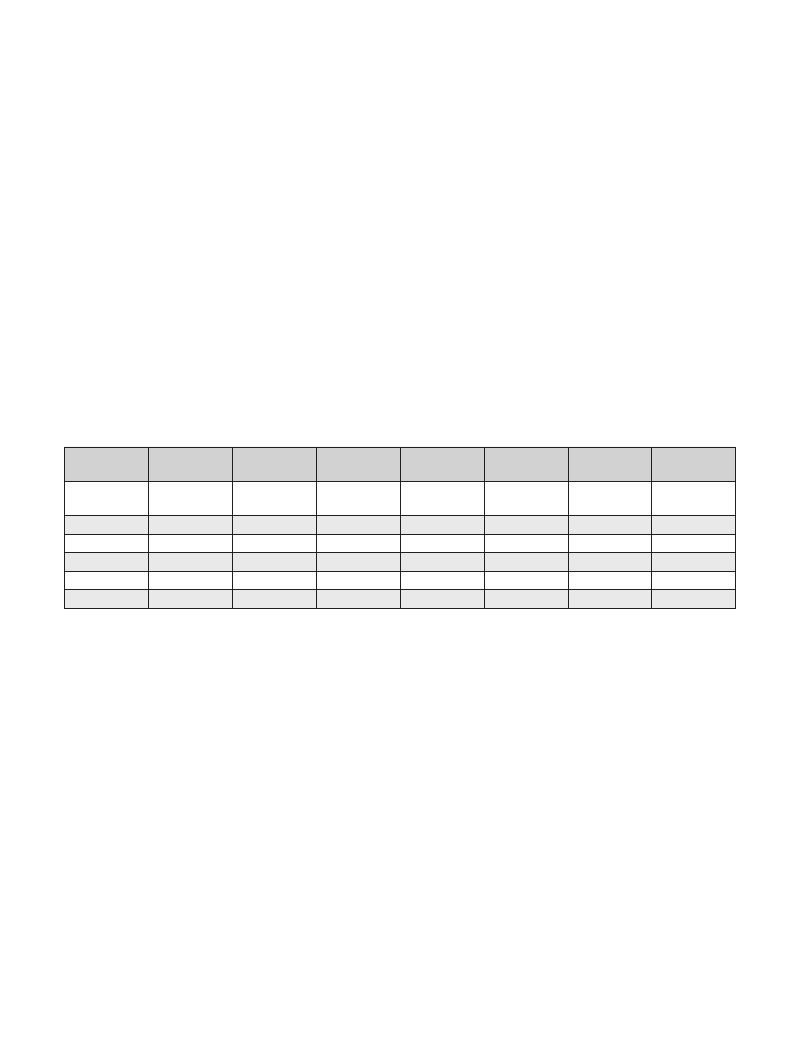
GHANA / 31
Annex 1
A joint World Bank-UNDP framework program
The World Bank and UNDP agreed to prepare together with Government a National Program Framework for Disaster
Risk Reduction and Climate Risk Management under which the UNDP-World Bank/GFDRR projects would be imple-
mented.
The total UNDP-World Bank support for this National Program will be about $ 12 million. Under this umbrella
there will be five UNDP supported operations, and one new World Bank/GFDRR program (which would include the two
on-going GFDRR program – one Ghana specific and one multi-country program on coastal/marine resources manage-
ment). The combined support from UNDP and the World Bank/GFDRR would help ensure that the work of lead govern-
ment agencies become linked, integrated and coordinated with the view to exploit synergies between them.
The coverage of these six programs in relation to the two main agendas – DRM & CCA – and along the five priority areas
of the Hyogo Framework of Action (HFA) would be as in the matrix below.
Coverage of World Bank/GFDRR and UNDP supported programs across Disaster Risk Management (DRM)
and Climate Risk Management (CRM)/Climate Change Adaptation (CCA)
HFA/
Project
Funding
Mill. $
HFA1
HFA2
HFA3
HFA4
HFA5
GFDRR18
5,900
x
x
x
x
BCPR
1, 200
x
x
x
x
x
UNDPa19
0,350
x
x
x
x
x
AAP
2,500
x
x
x
CC DARE
0,150
UNDP-GEF
(health)
0,350
x
x
x
UNDPb
0,350
x
x
x
x
x
18 While the lion share of GFDRR funding would be for DRM, a substantial amount would be for the CCA/CC agenda related to HFA 2 on hazard as-
sessment and early warning system, to accompany the AAP and the NREG projects, for example. The EWS would be national in scale and support
also agencies such as EPA and GMet and the CC agenda.
19 The UNDP Annual Work Plan 2009 has, for illustrative purposes, been divided equally between DRM and CCA – and denoted UNDPa and UNDPb
respectively in the matrix.
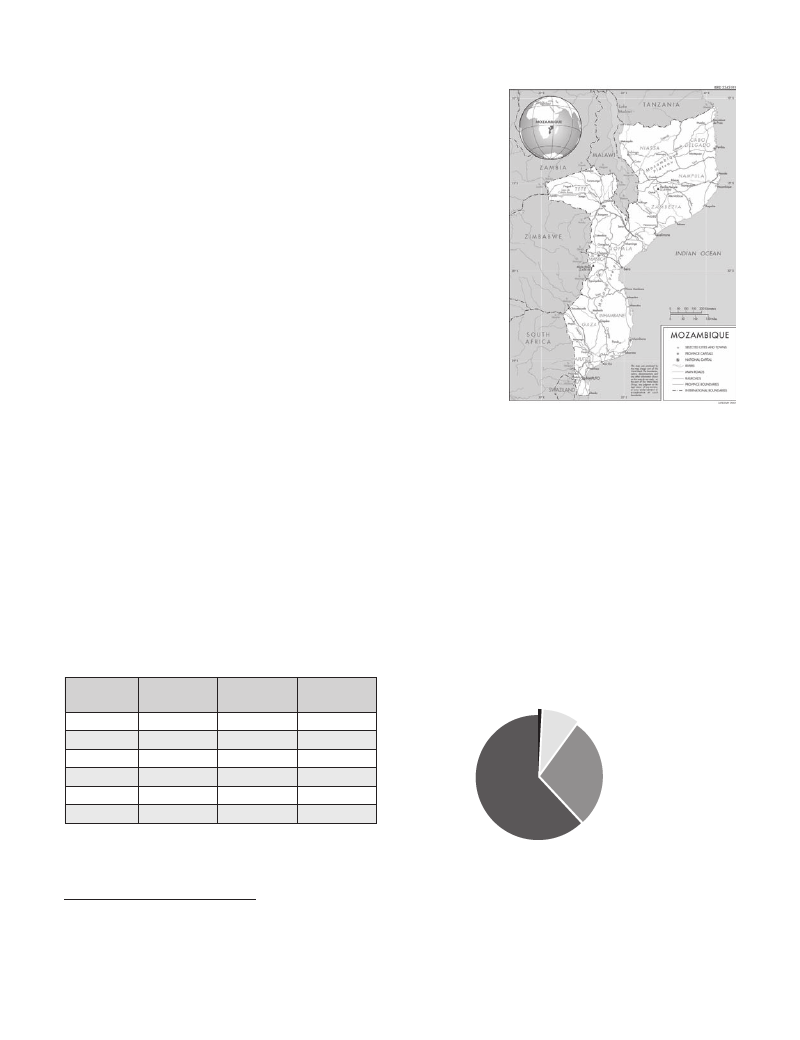
32 / Disaster Risk Management PROGRAMS FOR PRIORITY COUNTRIES AFRICA
MOZAMBIQUE
1. DISASTER RISK PROFILE
More than 60 percent of Mozambique’s population of 21 million lives
in coastal areas, and is therefore highly vulnerable to cyclones and
storms along its 2,700 km coastline. Like Bangladesh, it lies at the receiv-
ing end of major international hydrographic basins1. Many of these basins
suffer from saline intrusion deep into river mouths. Despite strong economic
growth (6.5% in 2008), over 80 percent of the population continues to de-
pend on agriculture. The elevated rates of poverty (54% in 2003), malnutri-
tion, HIV/AIDS, and endemic diseases contribute to what is already a high
physical vulnerability.
Mozambique ranks third amongst the African countries most exposed to risks from multiple weather-relat-
ed hazards, suffering from periodic floods, cyclones and droughts. As much as 25 percent of the population is
at risk from natural hazards. Floods, epidemics and cyclones are the most frequent disasters, although drought affects by
far the largest number of people (Table 1 and Fig.2). Droughts occur primarily in the Southern and Central regions, with
a frequency of 7 in 10 and 4 in 10 years, respectively. Floods occur every 2-3 years along major river basins, low coastal
plains, and areas with drainage problems. The risk is highest in the central and southern region. Over the past 40 years,
Mozambique was greatly affected by upstream river use in the Zambezi and the construction of the Kariba Dam in 1959
and the Cahora Bassa Dam in 1974. Epidemics have been generally associated with flood disasters. Cyclones affect
the entire coast, but with highest wind impact along the northern area, from October to April, with frequencies of about
1-2 in 4 years, depending on the regions2.
Table 1. Summary of Disaster Impacts by Type
(1956–2008)
Number
Events
Droughts
10
Floods
20
Cyclones
13
Epidemics
18
Others*
6
Total
67
* Earthquakes and Windstormd
Number
Killed
100,200
1,921
697
2,446
24
105,288
People
Affected
16,444,000
9,039,251
2,997,056
314,056
6,540
28,801,147
Source: Quebec (2008) in INGC (2009). Study of Impact of Climate Change on
Disaster Risk in Mozambique (Draft).
Figure 2. Number of People Affected by Type
of Hazzard (1956–2008)
Epidemics
1%
Cyclone
10%
Drought
58%
Flood
31%
Source: Quebec (2008) in INGC (2009). Study of Impact of Climate Change on
Disaster Risk in Mozambique (Draft).
1 The international basins are the Buzi, Incomati, Limpopo, Maputo, Pungoé, Save, Rovuma, Umbeluzi and Zambezi. The largest basins the Zambezi
and the Limpopo. For all but Rovuma, the flood plains are inside Mozambique.
2Sources: Ministry for the Coordination of Environmental Affairs (MICOA), 2007. National Adaptation Plan for Action (NAPA) and INGC (2009)
Study on Impact of Climate Change on Disaster Risk in Mozambique (draft).

MOZAMBIQUE / 33
In 2007, flooding in Mozambique killed at least 29 people and affected 285,000 people, the worst since 2000-
2001, when 700 people died and half a million lost their homes.3 In 2008, heavy rains in Zambia, Zimbabwe and Malawi
caused flooding in Mozambique that displaced tens of thousands of people and destroyed almost 100,000 hectares of
crops. As a result of the floods and consecutive droughts in 2002/03, 2003/4 and 2007/08, the World Food Programme
placed 300,000 people under food assistance. Some 35 percent of the population is now thought to be chronically food
insecure. Disaster costs to the national economy have been estimated at US$1.74 billion during 1980-2003, but this
largely underestimates economic losses and impacts on the poor4.
Climate change will increase extreme weather patterns, based on observed trends and future scenarios.
Historical records from 1960-2005 point to a warming trend in central and north Mozambique of 1.1-1.6o C in maxi-
mum temperatures and to significant increases in duration of heat waves, as well as a delay in the start of the rainfall
season. By 2040-2060, maximum temperatures are expected to increase by 2.5-3.0oC in the interior. Thus, the future
weather is expected to exacerbate current climate variability, leading to more intense droughts, unpredictable rains,
floods and uncontrolled fires. Depending on global sea level rise scenarios, critical urban centers such as Beira and
Maputo would need to significantly strengthen their coastal defenses or plan a retreat of urban infrastructure. Future
models predict a 25 percent increase in magnitude of large flood peaks in the Limpopo and Save and a reduction
in Zambezi river flow of 15 percent, requiring a major rethinking in power consumption strategies. With population
growth, per capita water availability is expected to decline in the major hydrographic basins, placing critical stress on
water resources. The Zambezi, Save and Limpopo rivers could experience saline intrusions up to 30 km inland. The
intensity of hurricane-strength cyclones is also expected to increase in a future climate.5 Hence, critical sectors that will
be at increasing risk include agriculture, infrastructure, power, water and sanitation, and health and nutrition.
2. ACTIVITIES UNDER HYOGO FRAMEWORK OF ACTION
HFA Priority # 1. Policy, Institutional Capacity and Consensus Building
The National Institute of Disaster Management (INGC), established in 1999, coordinates disaster risk man-
agement activities in Mozambique. INGC operates under the Ministry of State Administration (MAE) and is man-
dated to coordinate emergencies, promote disaster prevention through population and government mobilization; protect
human lives; ensure multisectoral coordination in disaster emergency; coordinate early warning systems; carry out public
awareness; and re-utilize arid and semi-arid zones. They are responsible for coordinating disaster risk management at
the national, provincial and district levels. Three regional emergency operation centers handle cyclones and droughts
(Vilankulos), floods (Caia) and cyclones (Nacala). There are also four multiple use centers (CERUM) at the district level
specializing in reducing vulnerability to droughts. At the community level, INGC acts through local Committees for Di-
saster Risk Management that are empowered to deal with both disaster prevention and preparedness.
The Coordinating Council for Disaster Management (CCGC), chaired by the Prime Minister, ensures multi-
sectoral coordination in disaster prevention, assistance to victims, and disaster rehabilitation. It receives ad-
vice from a Technical Council for Disaster Management (CTGC). The CTGC, composed of technical staff from sector
Ministries represented in the CCGC, proposes technical responses to disasters which are then submitted for analysis and
approval to the CCGC. The CCGC decision is then forwarded to the operating body of INGC for action through its regional,
provincial and district representatives. The CTGC is also active at the provincial level, where it advises the local INGC
and the Provincial Government and conducts disaster evaluations.
3OCHA Situation Report 2, 9 February 2007.
4 Abrams, Len. Long-term Strategic Planning for Disaster Risk Reduction in Mozambique and Malawi.
5INGC, 2009. Study on Impact of Climate Change on Disaster Risk in Mozambique (draft).
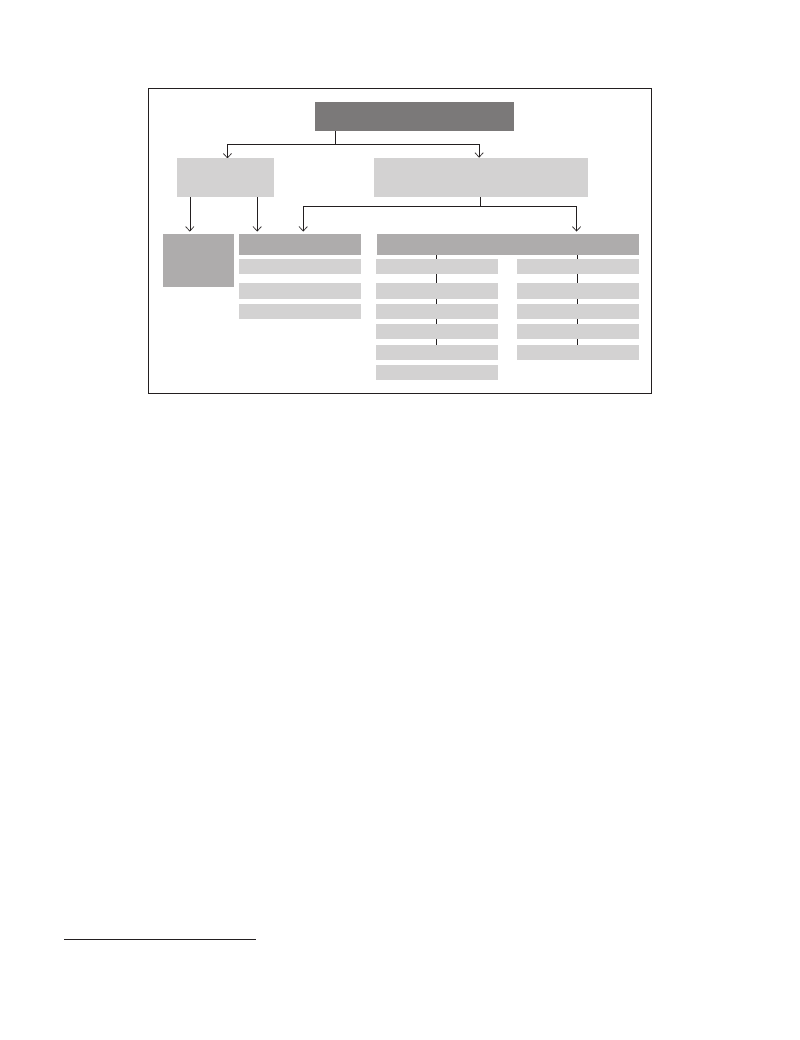
34 / Disaster Risk Management PROGRAMS FOR PRIORITY COUNTRIES AFRICA
MAE
COUNCIL OF MINISTERS
COORDINATOR COUNCIL OF
DISASTERS MANAGEMENT
UN, NGOs,
DONORS AND
OTHERS
INGC
PROVINCES
DISTRICTS
ADMINISTRATIVE P.
TECHNICAL COUNCIL
INAM
FIRE BRIGATE
WATER
AGRICULTURE
ENVIRONMENT
HEALTH
HAB, URBANIZATION
DEFENCE
ROAD ADMINISTRATION
MINERAL RESOURCES
IND. COMMERCE
Mozambique adopted a National Master Plan for Prevention and Mitigation of Natural Calamities in 2006.
The Master Plan followed the Disaster Management Policy of 1999 and became the country’s operative strategy for di-
saster risk management. It specifically emphasizes the links between development policies and preparedness, prevention,
mitigation and vulnerability reduction. Attention is paid to developing arid zones through introduction of conservation
agriculture and non-agricultural income generation activities, water supply and rainwater harvesting. For flood protection in
risky area, water resources infrastructure such as dams and dikes are considered keys elements for flood prevention.6
The Ministry for the Coordination of Environmental Affairs (MICOA) finalized a National Adaptation Pro-
gramme for Action (NAPA) in 2007. The plan, prepared by an inter-agency NAPA team, reviewed Mozambique’s
vulnerability to key hazards and identified four adaptation priorities:
1. Strengthening early warning systems;
2. Strengthening the capacity of farmers to deal with climate change
3. Reduction of the impacts of climate change along the coastal zone, and
4. Water resources management.
Despite this progress, a number of critical institutional weaknesses remain: the 2008 Interim National Prog-
ress Report on the Implementation of the Hyogo Framework for Action cites weak institutional capacity to manage the
relationship between Disaster Risk Management, and Climate Change and Environmental Issues. The main capacity
constraints are unresolved coordination issues between INGC and MICOA to address disasters as an environmental
issue, and the fact that most line ministries lack a legal mandate to participate in the Master Plan. A national disaster
management law is in draft form, but has been awaiting ratification by parliament for a number of years. As a result the
responsibilities of various government departments in disaster risk management are not yet clearly defined. Partially as
a consequence of this, Mozambique continues to depend heavily on international technical assistance to implement
disaster risk management plans.5 The UNDP project “Strengthening Local Risk Management and Mainstreaming Disas-
ter Risk Reduction” seeks to address some of these weaknesses by strengthening capacity for integrated emergency
response at the national and regional levels.
6Interim national progress report on the implementation of the Hyogo Framework for Action, 2008.

MOZAMBIQUE / 35
HFA Priority # 2. Disaster Risk Assessment, Monitoring, and Early Warning
In March 2009 INGC completed the first phase of a major report, “Study on the Impact of Climate Change
on Disaster Risk in Mozambique,” funded by the Government of Denmark, UNDP and GTZ. This study is
expected to help set priorities for the Pilot Program from Climate Resilience (PPCR) as well as other national programs
in climate change adaptation and disaster risk management. It researched extensively the projected effects of climate
change by 2040 and 2060, and the adaptation measures needed to reduce vulnerability to these impacts. It is being
complemented by the Economic Vulnerability and Disaster Risk Assessment Study and the Economics of Adaptation
to Climate Change Study, funded by the World Bank.
Mozambique has also made progress on risk mapping. Recently, INGC completed a major risk atlas for the
Limpopo Basin, in collaboration with FEWS NET and Universidade Eduardo Mondlane (UEM). The resulting atlas offers
access to maps, charts and images, and identifies the hazards that could affect the Limpopo river basin. Flood Risk Maps
have also been developed by the Water Administration unit, for the Limpopo and Incomati Basins.5
There is a further need, however, to identify and map key assets at risk as a basis for spatial planning. Ac-
cording to the 2008 review of the Hyogo Framework, however, there is a need for a comprehensive risk analysis of the
13 river basins in Mozambique. INGC and CTGC agencies also need to complete the identification and mapping of the
basic assets at risk in the major sectors of the economy – e.g. schools, health centers, transport infrastructure, etc. – so
that contingency plans and risk maps can be produced readily for areas exposed to major hazards. There is also a need
for better participatory risk mapping to ensure that communities are involved in the process and accept the mitigation
measures recommended by the studies. Given the vulnerability of coastal cities, INGC has also identified participatory
urban mapping of Inhambane, Maxixe, Maputo, Beira, Xai-Xai, and Quelimane, and coastal erosion and adaptation stud-
ies of Maputo, Beira and Inhambane, as major priorities for future assessments.
While much is known about flood, drought and cyclone risks, relatively little is known about seismic haz-
ards and the risks they pose to major cities. Seismic risk has become a particular concern since the 2006 earth-
quake, which struck the southern province of Manica with an intensity of 7.5 in the Richter scale, causing 4 dead and 36
injured7. The impact was also felt on the major metropolitan city of Beira, home to 600,000 inhabitants. Seismic modeling
and the development of seismic-resistant norms is an area of growing importance, particularly for the main urban centers
of the central region (Quelimane, Beira and Chimoio).
Mozambique has a well developed Early Warning System. INGC holds overall coordination responsibilities for the
system, but monitoring is carried out by specialized agencies. Hence, the National Directorate of Water is responsible for
flood forecasting, in collaboration with INGC and the National Institute of Meteorology (INAM). INAM and its regional
center are responsible for cyclone monitoring. Once Southern Africa Climate Regional Climate Outlook Forum forecasts
are released, the national institutions draw specialized forecasts, and INGC launches a Contingency Plan preparation. The
Technical Secretariat for Food Security and Nutrition platform (SETSAN) is responsible for the food security early warn-
ing system. SETSAN is composed of most ministerial institutions under the leadership of the Ministries of Agriculture and
Health. It carries vulnerability surveys nationwide to assess community food insecurity and requirements for emergency
relief. GTZ/Munich Re and UNDP fund specialized flood early warning systems in the basins of Save and Licungo.
A reported weakness of the early warning system is a lack of investment in the information and com-
munications needed to properly feed the system. The flood warning system, for example, depends on the in-
7OCHA Integrated Regional Network Report, 1 March 2006.

36 / Disaster Risk Management PROGRAMS FOR PRIORITY COUNTRIES AFRICA
volvement of the national television system, radio, and local government working with flood-affected communities.8 The
system is also hampered by lack of continuous funding, poor maintenance and lack of insurance for equipment and op-
erations. Moreover, the process of information exchange amongst agencies is uncoordinated: for example, the National
Directory of Water does not use the rainfall information available from INAM to predict expected rainfall, but instead re-
lies on data from the U.S. Geological Survey. These weaknesses in information harmonization also permeate across the
disaster risk management network. The current UNDP assistance aims to address them through an information sharing
platform on disaster preparedness, contingency planning and early recovery which includes a loss data observatory.
Mozambique needs to optimize the use of its meteorological radars. Following the 2000 floods, Mozambique
received two radars covering the southern (Xai-Xai) and central (Beira) regions. Each has a 300 km outreach. There is
a need to invest in their further in their calibration, product development and training to optimize their application to the
early warning system covering these two regions.
HFA Priority # 3. Knowledge and Capacity Enhancement for DRM
Newly created post-graduate academic programs are expected to greatly assist the development of nation-
al risk assessment and adaptation strategies. The Department of Geography at Universidade Eduardo Mondlane
is carrying out a project on the application of RadarSat-1 SAR data for flood mapping in cooperation with the Canadian
Space Agency and IUCN. The Department of Physics at the same University is active in research on Adaptation to
Climate Change in cooperation with INGC. Nonetheless, there is still a need to support short-term international post-
graduate degrees in highly specialized fields that may not be available in-country (such as hydrology modeling).
Community awareness and education projects are being carried out on a pilot basis. With GTZ support,
INGC has carried out pilot awareness projects in primary schools in Buzi River, Sofala, training students and teachers
in risk management. GTZ/INWENT also helped INGC prepare school training materials for pilot in Chókwe. In 2007,
MICOA, in cooperation with UN Habitat, produced training materials for local communities living along river basins, using
the Limpopo River as a pilot. This set of materials (“O jogo do rio”, or River Game) are used to train communities through
the Local Committees for Risk Management.
There is still a need, however, for a more comprehensive public communications strategy. Most disaster risk man-
agement documents are still not written or translated into Portuguese. More effective public outreach programs need to be
established in partnership with the media. INGC is presently carrying out an advocacy campaign based on sharing information
with national Universities, but further efforts are needed to support public communications strategies around key disaster
management themes (e.g. improved construction norms).
HFA Priority # 4. Disaster Risk Reduction and Financing
While significant progress has been done to mitigate flood impact in key basins, Mozambique needs to re-
vise its building and infrastructure norms to take into account hazard risks. A number of flood protection mea-
sures are being adopted in the transport sector (see below), but construction regulations are out of date, do not properly
take into consideration key risk such as cyclone wind or storm damage, and are weakly enforced. Technologies used by
the construction industry therefore fail to protect common facilities from heavy storms and cyclones along the coast line,
resulting in frequent economic damages. A revision of norms would therefore be important at the national level, both for
buildings as well as for other infrastructure likely to be affected by cyclone winds, fire, flooding and seismic damage. Of
particular importance would be to review standards for social infrastructure such as schools and health centers.
8Interim National Progress Report on the Implementation of the Hyogo Framework for Action, 2008.

MOZAMBIQUE / 37
After completing a substantial number of background studies, the Government is now placing high priority
on piloting risk reduction on key sectors. These include:
(a) Flood protection measures such as dams, settlement protection dikes, and increased drainage in transport infra-
structure. The Massingir dam recently rehabilitated in the Limpopo river prevented floods in 2008 which could
have affected Chókwe and Xai-Xai Cities, and small towns along the river basin. The dam was also perceived as
having protected the largest irrigation scheme in the country in Chókwe. Protection dikes have also been popular
measures to protect settlements from floods: during 2007 and 2008, for example, dikes along the Zambezi were
seen to have protected Luabo and Marromeu towns from inundation. New technologies for road construction us-
ing drifts and drainage have also reduced road cuts during floods. As a result, trade has become less affected
and traffic has been re-established in the immediate post-disaster period, stabilizing food security and access to
markets.9
(b) Water management in arid lands, including the construction of small retention dams and ponds to increase water
availability for irrigation purposes and for cattle in dry land areas. Investments in pilot adaptation measures for
water management in arid lands, however, are not yet as developed as in flood-prone areas.
(c) Coastal erosion control measures. These pilots are still incipient and closely linked to coastal inundation control.
They are urgently needed in vulnerable coastal cities such as Beira, Maputo, Inhambane, and Quelimane. Given
that the vulnerability of certain low-lying areas may leave no choice but to consider retreat, involvement of urban
communities in participatory mapping is considered essential.
(d) Social infrastructure using safe norms. Once hazard risk management guidelines are incorporated into building
codes and infrastructure safety standards, the Government would like to promote “safe pilots” - such as model
houses, schools, health centers and other social infrastructure. These would serve to show to communities and
the private sector how their infrastructure can be protected against common hazards.
Mechanisms for risk financing and risk transfer are still incipient. The Government of Mozambique is presently
studying mechanisms for the establishment of a prevention and disaster contingency fund, under UNDP assistance.
While some preliminary work has been done in this regard, there is as of yet no clear mechanism for private or sovereign
catastrophe insurance. Given the level of risk and infrastructure exposure in the coastal cities, and the likely balance
between private and public damages, financial risk transfer mechanisms should be considered a priority area for future
development in Mozambique.
HFA Priority # 5. Disaster Preparedness and Recovery
The National Emergency Operations Center, CENOE, under INGC, coordinates disaster response activities.
CENOE is supported by a National Civil Protection Unit (UNAPROC) to assist with search and rescue activities.
INGC prepares Annual Contingency Plans in a participatory manner involving central and regional gov-
ernment, donors, the UN System and civil society. The Plans are prepared following the issuance of the hydro-
meteorological forecast by the Meteorological National Institute in coordination the National Directorate of Water and
consider four main hazards: floods, droughts, cyclones and earthquakes. They include a profile of the most vulnerable
districts and priority needs.
According to the scenarios established by the Contingency Plan, pre-positioning of goods takes place in
the most vulnerable and least accessible areas. The early warning mechanism is refined and a national, regional
9Interim National Progress Report on the Implementation of the Hyogo Framework for Action, 2008.

38 / Disaster Risk Management PROGRAMS FOR PRIORITY COUNTRIES AFRICA
and local simulation takes place, as a signal to launch Mozambique’s disaster response. Training to Local Committees for
Risk Management is accelerated. In addition, CTGC weekly meetings are held to exchange information among disaster
risk response stakeholders. The CENOE information team is activated to monitor information sharing among all disaster
risk reduction institutions, including high-level decision makers who are members of the CCGC, chaired by the Prime
Minister (Figure 6). INGC, UNDP, GTZ and INWENT are currently taking the lead in financing the strengthening and
training of local risk management committees and the expansion of this network to other high-risk districts.
Even though disaster response institutions are well developed in Mozambique, there is still a need to
strengthen damage and loss assessment applications as a basis for reconstruction. Post disaster assess-
ments tend to rely on rapid sectoral evaluations that typically under-estimate economic losses. Mozambique could there-
fore benefit from capacity building in standard Post-Disaster Needs Assessment training, particularly standard UN/
ECLAC Damage, Loss and Needs Assessment. This could enable it to gradually strengthen its risk exposure data and
use it as a basis for probabilistic risk assessment, risk mapping, and eventually financial risk transfer (insurance).
3. Integration of Disaster risk management in Development Strategies
Disaster Risk Management is integrated, although not yet fully mainstreamed, into major development
strategies. The Government’s Five Year Plan (2005-2009) addresses some of the challenges related to disaster risk
management and climate change adaptation. It identifies as priority objectives the reduction of number of human victims
and amount of property loss, and it emphasizes a culture of prevention and mitigation. As part of the Plan, the Gov-
ernment committed to mapping zones at high risk, strengthening early warning systems, increasing resources for the
prevention and mitigation of natural disasters, reinforcing capacities for inter-sector coordination, strengthening river
basin management, establish a database for information on climate change trends and impacts, promote water storage
systems in drought-prone areas, and increase training and civic education.
The national Second Poverty Reduction Support Strategy (PARPAII 2006-2009) recognizes disaster risk
management as a cross cutting issue thereby acknowledging the need for a long-term strategy to reducing the
vulnerability of communities and infrastructure exposed to extreme natural phenomena. Disasters are also part of the
Medium-Term Fiscal Framework (MTFF). However, the priorities identified by the Master Plan for Disaster Preven-
tion and Mitigation were not reflected in the PARPA II. With the recent release of the NAPA and INGC’s “Study on Im-
pact of Climate Change on Disaster Risk,” adaptation strategies are expected to be much more closely mainstreamed
into the next Poverty Reduction Support Strategy which is starting to be prepared.
Disaster mitigation and enhanced resilience are specific objectives under the World Bank’s Country As-
sistance Strategy. The Mozambique Country Partnership Strategy (2008-2011) specifies “mitigation of risks from
disasters and shocks” as one of the objectives and “enhanced capacity to respond to disasters” as one of the outcomes
under the pillar on Sustainable and Broad-Based Growth. The establishment of early warning and emergency prepared-
ness systems is specified as a goal. The CPS also recognizes that future economic growth depends on the prevention of
a major natural disaster. The Joint Staff Advisory Note, commenting on the PRSP progress, indicates a need to integrate
disaster risk management in sectoral plans at all levels, and strengthen inter-sectoral coordination. While it compliments
Government efforts in mitigating the impacts of climate shocks in 2007, it recognizes the financial limitations of the Gov-
ernment in facing major disasters, and therefore recommends the establishment of a National Disaster Fund, including
mechanisms for risk transfer.
The Government annually provides USD $3.5- $5 million to INGC for disaster risk management and re-
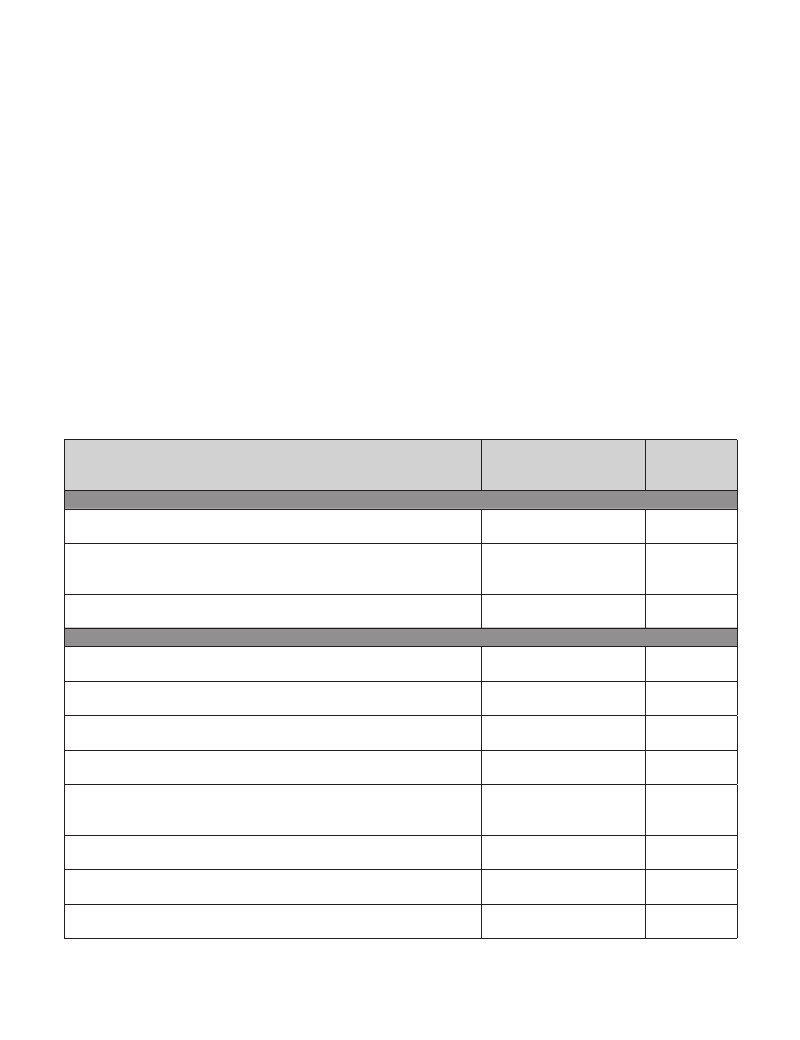
MOZAMBIQUE / 39
sponse, which may be increased depending on the magnitude of a disaster. This is equivalent to about 0.2
percent of the annual State Budget. The Contingency Plan is also funded by international donors. Additional resources
are also allocated to other sectors for disaster risk management activities, such as irrigation schemes, small dams, con-
struction of ponds and environmental protection.
Since 2006, provinces and districts have gradually integrated disaster risk management into their annual
plans and budgets. The Government allocates direct financing to provincial and district plans in accordance with the
Decentralization Law of 8/2003. District land use plans have been developed by local governments (districts) with the
support of provincial governments and integrated into District Development Strategic Plans. However, regional INGC
delegations are still considered to be weak and need considerable support and capacity building to respond adequately
to the numerous disaster risk management challenges.
Despite these challenges, disaster risk management and adaptation to climate change have unquestion-
ably become a central issue to economic development in Mozambique, and are expected to continue to grow
in importance in the future.
4. KEY DONOR ENGAGEMENTS
Ongoing Projects and Organizations
World Bank Projects
Mainstreaming Disaster Reduction for Sustainable Poverty Reduction:
Mozambique (GFDRR)
Economics of Adaptation to Climate Change (EACC) – Mozambique Case Study
(funded by DFID and Netherlands and executed by the World Bank) will be
launched shortly
Pilot Program for Climate Resilience (under preparation)
Donor Projects
UN Joint Programme for Strengthening Disaster Risk Reduction and Emergency
Preparedness
UN Joint Programme on Environment Mainstreaming and Adaptation to Climate
Change
UNDP/GEF: Coping with Drought and Climate Change
(Special Climate Change Fund)
UNDP: Climate Risk Management Technical Assistance Support Project (CRM-
TASP) (executed by Asian Disaster Preparedness Center, ADPC)
UNDP (funded by Government of Japan Africa Adaptation Programme)
Mainstreaming Climate Change Adaptation Mechanisms in Policy, Development
and Investment Framework in Mozambique
GTZ: PRO-GRC Institutionalizing DRR in Mozambique (Projecto da
Institucionalização da Gestão de Risco de Calamidades em Moçambique)
UNDP, Denmark, GTZ: Impact of Climate Change on Disaster Risk Study
(executed by INGC)
DIPECHO Projects: several disaster preparedness project implemented by UN-
Habitat, Oikos, OXFAM GB & Intermon OXFAM, Concern, German Agro Action)
Indicative budget
(where available, details
on years covered)
USD $900,000
US$800,000
USD $30-70 million
(2009- )
USD $10 million
2007-2009
USD $7 million
2008-2010
USD $ 1.8 million
2008-2011
US$2.75 million
2008-2009
US$ 5.0 million
2009-2011
USD $ 3.9 million
2007-2009
USD ~0.5 million
USD $ ~3.1 million
HFA activity
area(s)10
1, 2, 4
1, 2, 4
1,2,3,4
1, 2, 3, 4, 5
1,2,4
1, 2, 4, 5
1,2,4
1,2,4
1, 4, 5
2
1, 3, 4, 5
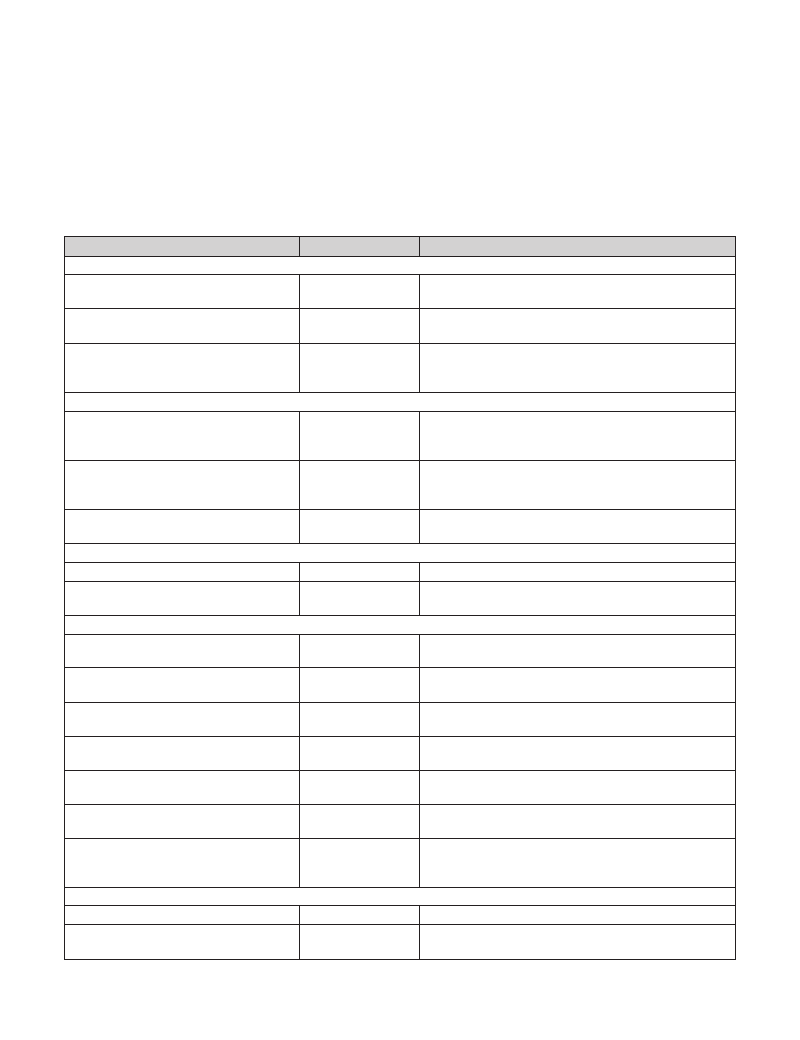
40 / Disaster Risk Management PROGRAMS FOR PRIORITY COUNTRIES AFRICA
5.global facility for disaster reduction and recovery (gfdrr):
action plan
Given the substantial number of donor engagements, it is essential to consider GFDRR within the broader
framework of a disaster risk management and adaptation program in Mozambique. While the framework
below is still preliminary and centered on Hyogo Framework for Action priorities, it helped identify areas where GFDRR
was best placed to leverage its expertise and resources.
Hyogo Framework For Action Area
Major Partner
1. Policy, Strategy, and Institution Building
Master Plan, Policy, NAPA, Regulations
UNDP
Mainstreaming DRM and Adaptation
into Development
Capacity Building
UNDP and WB/
AfDB (PPCR)
UNDP and GFDRR
2. Risk Identification, Assessment, and Monitoring
Climate Trends, and Hazard Risks
UNDP, Denmark,
GTZ, World Bank
GFDRR
Risk Mapping
UNDP/GRIP,
FEWS/NET, UEM
GFDRR
Early warning system
UNDP, GFDRR
3. Education and Awareness to build a Culture of Resilience
DRM School Education Programs
GTZ/INWENT
Community Awareness
DIPECHO
4. Reduction of Underlying Risk Factors
Revision of Hazard norms
GFDRR
Risk mitigation using revised
infrastructure norms
Flood protection
Water management in arid areas
Fisheries adaptation
Health adaptation
Risk financing and Transfer
GFDRR
PPCR, Others
GFDRR
PPCR, Others
GFDRR
PPCR, Others
UNDP
PPCR, Others
UNDP
PPCR, Others
UNDP, GTZ
GFDRR
5. Strengthening Disaster Preparedness
Emergency Preparedness
UNDP, DIPECHO
Post Disaster Needs Assessment
GFDRR
Comment
Already developed, except for law and regulations (under
preparation with assistance from UNDP)
Considered to be adequately covered by UNDP and PPCR
UNDP to finance capacity building for CTGC and regional
DRM committees
GFDRR to fund specialized and academic training in DRM
Completed by Stage I study.
Economic impact to be completed by WB study.
GFDRR to help fund Stage II Study (Adaptation Options)
Risk atlas completed for Limpopo
UNDP/GRIP will fund data harmonization
GFDRR to fund mapping of key assets at risk
UNDP to fund information sharing platform
GFDRR to optimize use of radars in early warning
GFDRR to fund promotion and awareness of revised norms
as part of Hyogo 4 activity below.
GFDRR to help revise safety norms for earthquakes,
cyclonic winds, and floods
GFDRR to pilot
PPCR and other larger investments to expand
GFDRR to pilot along Zambeze
PPCR and other larger investments to potentially expand
GFDRR to pilot
PPCR and other larger investments to potentially expand
UNDP to pilot
PPCR and other larger investments to potentially expand
UNDP to pilot
PPCR and other larger investments to potentially expand
UNDP and GTZ helping to develop contingency funds
GFDRR to assist in exploring catastrophe insurance
mechanisms
Considered to be adequately covered
Capacity Building in Damage, Loss and Needs
Assessment
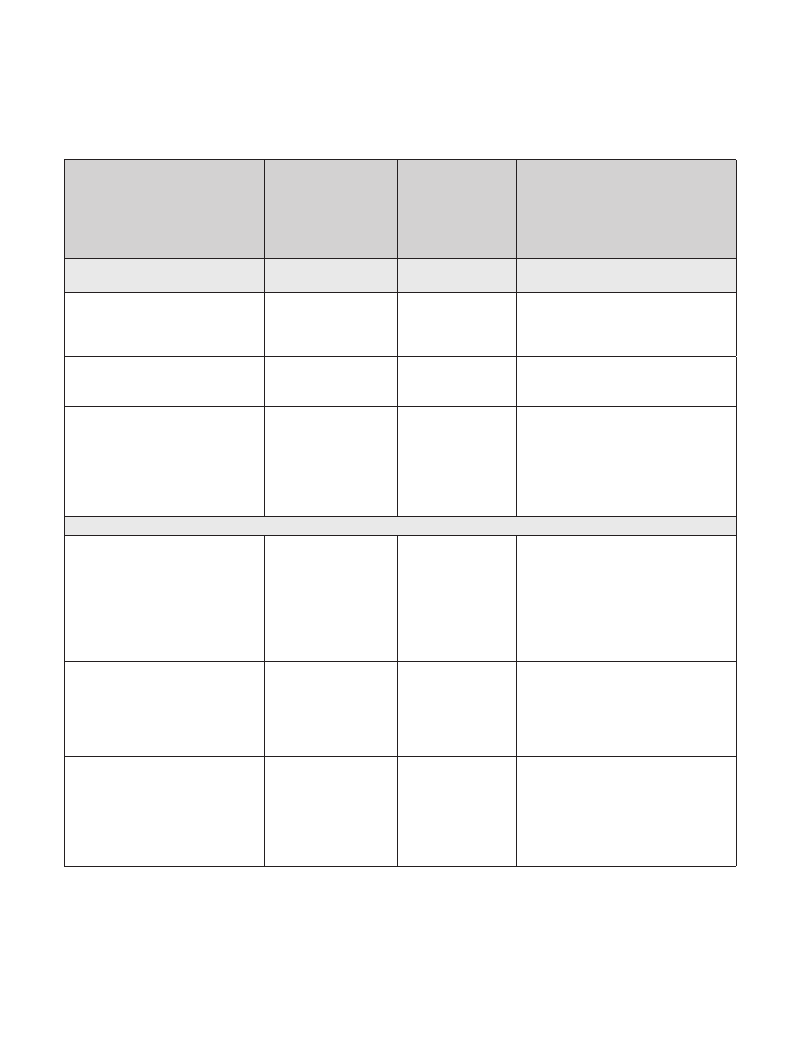
MOZAMBIQUE / 41
The program areas identified for GFDRR financing and indicative funding are listed below. Once the detailed
proposal is developed, an estimated 10 percent of the budget will be earmarked for project management. The project
would be Government-executed, for a duration of five years (2010-2015).
Indicative New Program Areas
and Projects for GFDRR
Funding
1. Policy, Strategy, and
Institution Building
1.A. Strategy, Policy and Institutional
Coordination
Partnerships
INGC, UNDP, PPCR
1.B. Studies for National Program of
Disaster Risk Management and
Adaptation to Climate Change
1.C.Strengthened Sector Capacity
in Disaster Risk Management
INGC, UNDP, GTZ,
Denmark
INGC, UNDP
2. Risk Identification, Assessment and Monitoring
2.A.Risk Mapping for Vulnerable
Assets
INGC, UNDP
2.B. Participatory Urban Mapping
INGC, MICOA, Urban
Municipalities
2.CEarly Warning System Radar
Applications
INAM, UNDP
Indicative
Budget
for GFDRR
Funding
and years covered
(USD)
Potential outcomes and comments
150,000
(2010-2015)
200,000
(2010)
350,000
(2010-2015)
500,000
(2010-2013)
150,000
(2010-2011)
500,000
(2010-2013)
This would be a limited budget for
strategic activities of the CTGC UNDP
and PPCR would take the lead role in
this area.
This would be a complementary support
to Phase II of the INGC study, focusing
on risk reduction options and strategies.
UNDP would fund most of the capacity
building for CTGC and regional DRM
committees; GFDRR funding would
focus on specialized training and
seminars, and in selected master level
degrees not available in Mozambique
(e.g. hydrology modeling).
This financing would complement ca.
US$200,000 in UNDP/GRIP funding
to enable INGC to complete its geo-
referencing of vulnerable assets in key
sectors (e.g. schools, health centers,
transport infrastructure), and thereby
build an integrated platform for risk
mapping
This would involve participatory urban
rezoning of the cities of Maxixe and
Inhambane taking into account major
hazards. Most of the studies would be
financed by a reallocation of Track II
funds (US$400,000).
This would include calibration of the
two existing radars of Xai-Xai and Beira,
development of software, technical
assistance and training to optimize their
use for the early warning system serving
the southern and central regions. UNDP
would co-finance some of the training.
(Cont.)

42 / Disaster Risk Management PROGRAMS FOR PRIORITY COUNTRIES AFRICA
Indicative New Program Areas
and Projects for GFDRR
Funding
Partnerships
4. Reduction of Underlying Risk Factors
4.1.Review of Hazard Norms
INGC, MOPH, MICOA,
INAM
4.2. Pilot Demonstration Projects
Applying New Norms
INGC, MOPH, MICOA
4.3. Flood Protection for Vulnerable MOPH, INGC, MINAG
Communities (pilot)
4.4.Water Management in Arid
Areas (pilot)
4.5.Risk Transfer Mechanisms
MOPH, MINAG
Ministry of Finances,
INGC, UNDP
5. Strengthening Disaster Preparedness
5.1.Specialized Training
INGC and CTGC
UNDP
Total Funding Requested from
GFDRR
Indicative
Budget
for GFDRR
Funding
and years covered
(USD)
Potential outcomes and comments
350,000
(2010-2012)
800,000
(2011-2014)
600,000
(2010-2013)
600,000
(2010-2013)
600,000
(2010-2013)
Revised construction norms taking
cyclone winds, earthquake hazards and
inundation risks into account.
Revised infrastructure norms taking
flood risk into account
These would focus on social
infrastructure (e.g. schools and health
centers) as well as low-cost houses in
highly vulnerable areas able to serve as
models to stakeholders
The pilot is envisaged to focus along
the Zambezi. While dykes have been
the measure of choice, other flood
management measures would be
considered on a pilot basis
This could involve small water reserves
(for livestock) and other water and rain
retention measures
While UNDP assistance has focuses
on establishing a contingency fund,
GFDRR would focus on the feasibility of
catastrophe insurance (both private and
sovereign mechanisms)
250,000
(2010-2013)
5,050,000
This would target primarily Damage,
Losses and Needs Assessment (UN/
ECLAC Methodology) as well as other
specialized disaster response training.
UNDP is funding most activities under
Hyogo Priority 5.
Leveraged Funding:
ca. US$58 million
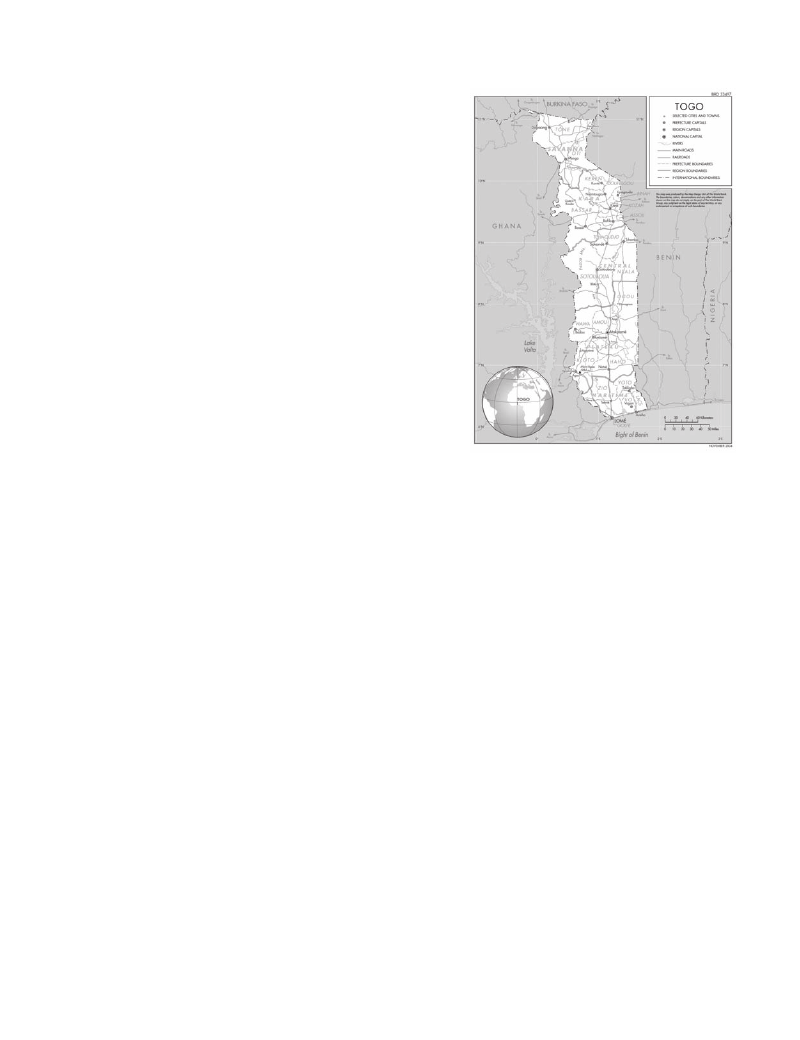
TOGO
TOGO / 43
To prepare the Country DRM Note, consultations were undertaken with
members of the World Bank’s Togo Country team and the Ministère
de l’Environnement et des Ressources Forestières, Ministère de la
Coopération, Développement, Aménagement du territoire, Secrétariat
de la Stratégie Internationales des Nations Unies pour la prévention
des Catastrophes (ONU/SIPC), Croix Rouge Togolaise, Ministère de
l’Enseignement Supérieur et la Recherche, Université de Lomé,
Ministère Administration Territoriale et Collectivités locales, Ministère
de l’Urbanisme et de l’Habitat, UNDP, Ministère de la Sécurité
et de la Protection Civile, Coopération Française, Commission
Européenne, Associations des ONGS, Ministère du Commerce et de
la Promotion du Secteur Privé, Ministère de l’Agriculture, de l’Elevage
et de la Pèche, Secréterait Technique du Projet de Développement
Communautaire, Agence d’appui aux Initiatives de Base—AGAIB
Région Savanes, Agence d’appui aux Initiatives de Base—AGAIB
Région Kara, Agence d’appui aux Initiatives de Base—AGAIB Région Centrale, Agence d’appui aux Initiatives de
Base—AGAIB Région Plateaux, Agence d’appui aux Initiatives de Base—AGAIB Région Maritime.
1. Disaster Risk Profile
A poor country which suffered from years of weak governance. Togo is a country of 54,400 km2 located in West
Africa on the Atlantic coast of the Gulf of Guinea. The country’s population was estimated at 6.1 million in 2006 with
an average annual growth rate of 2.4 percent. The political movement toward more democratic institutions that started
in the early 1990s resulted in socio-political unrest that peaked in 1993 and lasted more than a decade. This period of
prolonged political instability was also marked by serious economic and financial management problems that led to the
deterioration of the economy and the withdrawal of donors’ support to the country. In fact, the cumulative effect of this
political and economic instability led to reduced public investments which fell from 13.8 percent of GDP in 1990 to 3.3
percent in 2005; public spending in social sectors decreased dramatically. The annual growth rate of GDP averaged 1.1
percent during the same period, well below the annual growth rate of population of 2.4 percent. As a result, the living
standards of the majority of the population declined sharply. Income per capita (US$350 in 2006) is low compared to
Sub-Saharan Africa (US$842) and Low Income Countries (US$650) averages. Moreover, Togo now ranks 152nd out of
177 countries in terms of human development, according to UNDP’s 2007 Human Development Report.
The prolonged political turmoil and governance shortfalls had adverse impacts on the environment and on
natural resources. As the highly centralized public administration system crumbled in the wake of civil unrest, so did
the associated policy tools that should have ensured the sustainable exploitation of natural resources and the protection
of environmental services and infrastructure. Because of the crisis, there was an expansion of the informal sector, which
resulted in adverse environmental consequences as rural and urban households resorted to survival strategies that relied
on non sustainable exploitation of natural resources (forest resources, wildlife, fisheries) and environmental services. Key
environmental challenges facing the country include land degradation and deforestation.
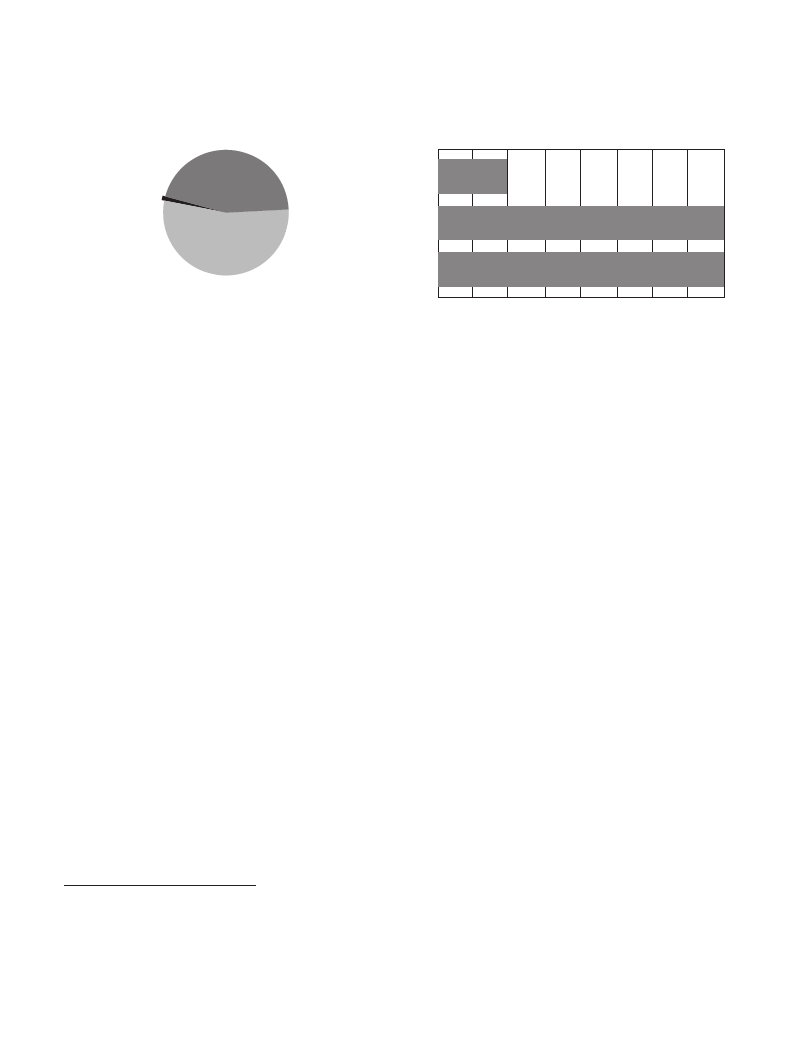
44 / Disaster Risk Management PROGRAMS FOR PRIORITY COUNTRIES AFRICA
Natural Hazards in Togo
Percentage of people reported
affected by disaster type, 1983 – 2008
Epidemic
1%
Drought
45%
Flood
54%
Natural disaster occurrencereported, 1983 – 2008
0
2
4
6
8
Drought
2
Epidemic
8
Flood
8
Within Togo, there is locational differentiation of risks associated with flooding and soil and coastal
erosion. In general, all watersheds are vulnerable to flooding. The northern half of Togo shares the Upper Volta River
Basin with Ghana and Burkina Faso and is therefore vulnerable to water resource management decisions made in these
countries. Both rural and urban areas in Togo are vulnerable to flooding. Areas along the coast, like Lomé, are subject to
coastal flooding due to high levels of coastal erosion. Phosphate mines, located near the coast, also create a precarious
situation in natural disasters. Deforestation is a major concern in Togo and exacerbates the effects of flooding. Trees
have been cut down by individuals, communities, and companies to create farmland and to use and sell the wood. The
removal of trees and other plants and the soil erosion that results from this practice can intensify flooding and worsen its
effects on the land and on infrastructure.
In the past ten years, there have been no major droughts, but there have been six major floods that have
had negative environmental, social, and economic impacts on the country. Both the scale and intensity of
the floods, the weakness of government contingency plans and the lack of ex-ante risk mitigation measures, led to
infrastructural damage and to high numbers of people affected by the floods.
Recent Flooding and its Consequences
Though Togo experiences flooding almost every year, the past two years have witnessed particularly
widespread and devastating floods. In 2007, when floods occurred in most West African countries, Togo was one of
the hardest hit. Most of the people affected were from the northern regions of the country with the Savanes region worst
affected.1 In particular, 127,880 people were affected, 13,764 people were displaced and 23 died as of 17 October
2007.2 In 2008, severe rains led to heavy flooding in the southern, northern, and central regions (Maritime, Savanes and
Centrale), with 24,500 people affected, 4,000 people were displaced in six camps, and 4 people killed as of August 4,
2008.3
Floods can have severe environmental consequences. Recent flooding in Togo led to increased soil erosion which
contributed to the destruction of infrastructure and cultivated land. This soil erosion also contributes to a decrease in
the arability of land by washing away essential nutrients in the topsoil. Erosion of river banks can expose the country to
increased flooding in the future.
1 A person affected by the floods is one whose house, farmland, livestock, or food stock is damaged by flooding.
2 West Africa Floods map 2007, UN Office for the Coordination of Humanitarian Affairs, 17 October 07, http://www.reliefweb.int/rw/
fullMaps_Af.nsf/luFullMap/4D732D0EA69F879985257378004875E2/$File/ocha_FL_afr071017.pdf?OpenElement
3 West Africa Floods map 2008, UN Office for the Coordination of Humanitarian Affairs, 2 September 2008, http://www.reliefweb.int/rw/fullMaps_
Af.nsf/luFullMap/5598E04D6AF1AB19C12574B900467E0F/$File/ocha_FL_afr080902.pdf?OpenElement

TOGO / 45
Social infrastructure like schools and health centers can be destroyed in floods due to soil erosion, water
damage, and fragile building materials. Four schools were reported as completely destroyed in the 2008 floods,
and there was substantial damage to many more schools, classrooms and teachers’ quarters. The destruction of a
number of key bridges made it difficult for many students to reach schools and complicated access to health facilities,
making it difficult for health centers to restock their supplies. Though there was no report of an outbreak of waterborne
diseases during the floods of 2007/08, the proliferation of waterborne diseases is a risk of future flooding.
Floods can cause severe economic distress to a country, especially one like Togo with an economy that
is heavily reliant on agriculture. Preliminary assessments estimated that 11,688 hectares of cultivated land were
washed away by the rains in the floods of 2008. Many farmers lost an enormous portion of their annual income (if not all),
and the affected areas suffered from food shortages. The destruction of crops and the increased price of transportation
resulting from both the flooding of 2007 and 2008 combined with high global food prices will most likely continue to
have a negative impact on food availability into the future. The price of transportation increases during floods because
of the destruction of roads and bridges. In the 2008 floods in Togo, eleven major bridges were destroyed.4 Many more
small bridges and culverts were swept away by swollen rivers and streams. Over 300 km in rural roads were seriously
damaged. Destroyed transportation infrastructure has inhibited the ability of rural Togolese to engage in economic
activities—including the purchase of basic necessities. The destruction of roads and bridges has also hurt the national
economy. Large companies working within Togo that the government relies on for tax revenue were hurt by the spike in
transportation costs. Additionally, Togo lost customs and entrance fees from landlocked countries like Burkina Faso, Mali
and Niger that rely on the port of Lomé for their importation and exportation of goods.
Climate Change and Hazards in Togo
Climate change is expected to have greater impacts on poorer countries such as Togo, due to their
vulnerability to hazards, particularly droughts andfloods. Given that the impacts of climate change are expected
to exacerbate some existing hazards, as well as result in the emergence of new hazards and risk patterns, Togo needs to
address climate change hazards related to the existing flood and drought risks, as well as sea-level rise. Specific fragile
environments in the North and Central Regions of Togo, in particular those most exposed to soil erosion, require specific
focus and attention since they are at the origin of some of the extreme consequences of recent floods.
Sea-level rise and coastal erosion are also major hazards. Moreover, the low-lying coastal area of Togo is narrow
and covers an area of 1,710 square kilometers. According to the IPCC’s “Climate Change 2007: Impacts, Adaptation
and Vulnerability” report, low-lying coasts are likely to be especially affected by climate change, being threatened by 1)
sea-level rise leading to increased risk of flooding and groundwater salinization; and 2) increased frequency and severity
of storms and tidal surges. The coastal area in Togo represents an important economic zone for the country with more
than 90 percent of the country’s economic activities, and more than 42 percent of the country’s population. Lomé, a large
and growing city located on the sea, is particularly vulnerable due to overcrowding and extremely fragile structures in the
unplanned parts of the city. Beach erosion is also a serious ecological problem in West Africa. Along the eastern section
of Lomé harbor, an annual erosion rate of 20 m has been recorded.
4OCHA, West Africa Floods Special Update, 2 September 2008.

46 / Disaster Risk Management PROGRAMS FOR PRIORITY COUNTRIES AFRICA
2. Disaster Risk Management Framework
The institutional framework is fragmented but the Government is committed to mainstream disaster
prevention in all development instruments, starting with the I-PRSP. Despite the above-mentioned highly
fragmented situation, the Government is determined to strengthen the country’s policy and institutional framework for
environmental management. The renewed Government commitment to address the causes of environmental degradation
and to make disaster prevention a priority is evidenced in the 2008 I-PRSP where the policy objectives in the area of
environmental management are described under Strategic Pillar 2: Consolidation of Economic Revival and Promotion
of Sustainable Development. Under this pillar, it is stated the Government’s efforts towards promoting sustainable
development will aim to:
• Reduce the pressure on natural resources mainly through more effective means to control land degradation and
to promote biodiversity conservation;
• Promote the integrated coastal zone management, including the control of coastal erosion;
• Strengthen the capacity of national institutions for sustainable environmental management;
• Adopt effective policy instruments to control and monitor pollution and nuisance from wastes and chemical
substances in order to protect the quality of life and human health in urban and rural areas; and
• Promote disaster prevention and management through the establishment of an appropriate policy and institutional
framework, the development of technical capabilities for disaster prevention, preparedness, and monitoring.5
The I-PRSP (2007) also indicates that, as part of the social protection policy, the Government will focus on
improving management of the vulnerability to different shocks and to disasters. Advanced drafts of the full PRPS
(2009-2011) discuss the plans of the Government in the areas of management of natural and technological disasters
and suggest two main areas of intervention: a) improvement of the political and institutional framework for the prevention
and management of disasters; b) strengthening of the technical capacity (and human resources) in the areas of planning,
monitoring and early warning and in the areas of managing the emergencies related to natural disasters.
The 2008-2012 UNDAF mentions the importance of disaster risk prevention, management and response. The
paper states that existing climate change, urbanization and population movements expose certain regions to the effects
of natural disasters, particularly floods which typically appear each year. The section on institutional capacity building and
democratic management indicates that, with reference to refugees and IDPs, the UN agencies have consolidated efforts
to assist the Government to reinforce national capacity for disaster preparation and response (population displacements,
floods, epidemics, etc). This work will lead to: 1) an evaluation of the capacity of emergency management structures, 2)
a reinforcement of capacities and structures, and 3) direct assistance to affected populations.
3. activities under the hyogo framework of action
Togo is a signatory to the Hyogo Framework for Action (HFA), which outlines a global strategy for disaster
risk reduction from 2005 to 2015. A 2007 document prepared by the Ministry of Environment and Forest Resources,
“Report on the Implementation of the HFA in Togo,” states that a risk assessment is necessary in order to develop a
national risk reduction strategy. Togo’s 2008 Interim National Progress Report on the Implementation of the Hyogo
5 Ibid.

TOGO / 47
Framework for Action states that as of September 2008, little progress had been made on the implementation of the five
HFA priority actions.6 The remaining of this section is organized around the five HFA priorities.
HFA Priority # 1. A strong institutional framework for implementation
There have been some encouraging progresses in this area. Successes in the implementation of this priority
include: (i) the creation of the national platform for disaster risk reduction; (ii) the amendment to the national environmental
policy framework to incorporate the definition of strategies of disaster prevention and risk reduction; and (iii) components
of a climate change policy have been recently elaborated by the Ministry of Environment
National Platform
The national platform for disaster risk reduction and prevention was created on April 17, 2007 by the
Togolese Ministry of Environment and Forest Resources. The platform is charged with developing a national
strategy for disaster risk reduction, mainstreaming the strategy into sector plans, and monitoring its implementation. It is
also responsible for promoting information dissemination related to disaster risk reduction, coordinating the work of the
government and non-governmental actors, and mobilizing funding from national and international donor for support in the
domain of disaster risk reduction.
The platform has been active but there has been delay in developing a national strategy. The platform, which
functions as a committee, is composed of representatives from ministries, scientific and learning institutions, NGOs,
the Red Cross and Red Crescent societies, the private sector, and other actors in the field of disaster risk management
and reduction. The platform has been active, but the development of a national strategy for disaster risk reduction has
been delayed by the floods of 2007 and 2008, which forced the platform to focus its attention on disaster response and
reconstruction.
There were recent attempts to revitalize the national platform. On March 3, 2009, the Ministry of Environment
with the support of UNDP organized a workshop on the revitalization of the national platform. The objectives of the
workshop, led by a representative from the United Nations International Strategy for Disaster Reduction (UN-ISDR),
were to operationalize the platform and explain HFA and the directing principles of national platforms to Togo platform
members and the role played by the actors involved in risk prevention and reduction. At the end of the workshop, several
priority actions for the platform were outlined:
• Prepare a work plan for the development of a national strategy for disaster risk management and prevention;
• Improve the quality of early warning systems;
• Decentralize the platform to the regional level;
• Establish a National Institute of Cartography;
• Establish a support fund for use in case of emergencies and disasters.
Policy and Institutions for Environmental and Natural Resource Management
The Ministry of Environment and Forest Resources is the body charged with the implementation of the
disaster prevention strategy, according to the national law on environment management in Togo (law 2008-005,
6 The five Hyogo Framework of Action (HFA) priority action areas are: 1) Ensure that disaster risk reduction is a national and a local priority with a
strong institutional basis for implementation; 2) Identify, assess, and monitor disaster risks – and enhance early warning; 3) Use knowledge, innova-
tion, and education to build a culture of safety and resilience at all levels; 4) Reduce the underlying risk factors; 5) strengthen disaster preparedness
for effective response at all levels.

48 / Disaster Risk Management PROGRAMS FOR PRIORITY COUNTRIES AFRICA
article 113). Current environmental policy in Togo is based on the national environmental policy framework adopted in
1998. The policy framework has two main objectives: (i) to promote the sustainable management of natural resources
and the environment, and (ii) to consolidate the measures aimed to integrate environmental aspects into economic
reforms.7 This framework was supplemented by the National Environmental Action Plan (NEAP) finalized in 2001. The
NEAP guided the formulation of the national environmental management program that includes three sub-programs (i)
capacity building for environmental management, (ii) natural resources management, and (iii) coastal zone management
and environmental quality improvement.8 Other policies related to environmental management have been developed, but
with little implementation. The National Action Programme against Desertification (PAN) takes disaster risk reduction into
account, but has not yet been implemented due to lack of financial resources.
Climate Change Policy
The Government is committed to elaborate specific policies to address the impact of climate change. In
order to reduce the vulnerability of the population to the negative effects of climate change, the Government of Togo is
committed to integrate measures addressing climate change issues into national policies and interventions. A National
Plan for Adaptation (NAPA) has been recently elaborated by the Ministry of Environment in collaboration with the UNDP.
The NAPA aims at identifying the most urgent interventions needed to face the negative impacts of climate change. The
Ministry of Environment is the institution in charge of the follow up and implementation of the NAPA process9.
HFA Priority # 2. Enhance Disaster Risk Assessment, Monitoring, and Early Warning
A comprehensive study on the assessment of risks and vulnerabilities in Togo has not yet been conducted,
mainly due to financial constraints. Togo’s Interim National Progress Report on the Implementation of the Hyogo
Framework for Action states that as of September 2008, little progress had been made on priority area 2 of the HFA,
“to identify, assess, and monitor disaster risks and enhance early warning.” According to the progress report, the lack
of a comprehensive risk analysis is one of the main constraints to implementing priority areas 3, 4, and 5. Some initial
steps toward risk mapping have taken place. The Government of Togo, with the support of UNDP, is currently working
on finalizing the TORs for mapping risk zones. The NGO Plan-Togo completed a minor risk analysis in 2006.
HFA Priority # 3. Use Knowledge, Innovation and Education (Priority area 3)
No significant progress in Priority area 3. According to the 2008 Interim National Progress Report on the
Implementation of the Hyogo Framework for Action, Togo has made no significant steps forward in meeting Priority Area
7Concept Note for Togo Country Environmental Analysis, TTL: Remi Keni, AFTEN
8Ibid.
9 The NAPA identifies 7 priority actions. Those actions have been ordered according to their impact in terms of vulnerability reduction, their contribu-
tion to sustainable development and their cost. The actions identified are the following:
1. Adaptation of the agricultural production system in three regions through the promotion of climate change resistant farming techniques and the
enhancement of the agro-meteorological information system.
2. Setting up an early warning system to inform the local population on the risk of floods in the Savanes and Maritime regions.
3. Reinforce the protection mechanisms of the seaside on the eastern section of Lome harbor against the coastal erosion.
4. Support the rural communities in the Savanes and Plateaux regions to prevent and reduce waterborne diseases.
5. Develop small irrigation systems for group of farmers in the Centrale, Kara and Savanes regions in order to reduce rural migration.
6. Develop income generating activities for the communities of small farmers and fishermen in the coastal region in order to respond to the nega-
tive effects of climate change on their economic activities.
7. Support the development of water retention systems in the Savanes and Kara regions through the construction of appropriate water manage-
ment infrastructures.

TOGO / 49
3 of the HFA, “use knowledge, innovation, and education to build a culture of safety and resilience at all levels.” Several
constraints were identified to the development of research methods and tools for multi-risk assessments and cost benefit
analysis, and the dissemination of disaster risk information. These constraints include the lack of information on risk
areas, along with the types of risks, as well as the lack of capacity of the national platform and researchers in the areas
of methodologies and adequate risk assessment instruments.
There has been little reported progress in terms of the incorporation of information on risk reduction in
school programs or trainings. However, a documentary project entitled “Prevention of Disasters Begins at School” is
being developed with the support of development partners. The NGO Plan Togo is reportedly developing a program to
develop a “culture of disaster prevention” within schools. Financing is considered the chief constraint to this indicator.
HFA Priority # 4. Disaster Risk Reduction and Financing
There has been limited progress in Priority area 4. In terms of HFA priority area 4, “strong policy, technical and
institutional capacities and mechanisms for disaster risk management, with a disaster risk reduction perspective are in
place,” the country reports little progress in the 2008 Interim National Progress Report on the Implementation of the
Hyogo Framework for Action. Some achievements cited by the report include the integration of risks into the PRSP
and into the legal framework and the forestry code, the creation of the national platform, and the development of Plan-
ORSEC. Although Plan-ORSEC outlines response plans (see below), financial reserves are not included in the national
budget to ensure that disaster assistance will be available. Thus the Government is often obliged to launch a Flash
Appeal to the UN system.
HFA Priority # 5. Foster Disaster Preparedness and Recovery
Togo has a Plan in place to deal with natural and man-made disasters. In May 2008, the Ministry of Security
and Civil Protection, in coordination with the UN, finalized Plan-ORSEC (Le Plan de l’Organisation des Secours), which
outlines the Government’s response in case of a natural or man-made disaster. The objective of the Plan is to identify the
potential risks to people and goods, and to define the roles and responsibilities of organizations responding to disasters
in prevention, response, and reconstruction. On a national scale, the plan institutes the CNPS (Comité National de
Planification des Secours), a body that coordinates emergency response mechanisms at the national level.
The Plan has some shortcomings. While Plan-ORSEC is a useful guide to natural disaster response mechanisms in
Togo, it has three main shortcomings:
1. The plan prescribes the same response mechanisms for all five regions without any consideration of differentiation
between regions.
2. The plan does not foresee a role for communities in disaster management.
3. The plan appears to be highly complex to manage, especially if one considers the limited availability of capacity
and technical means.
Togo has completed an Inter-Agency Contingency Plan (IACP) with OCHA, UNHCR, UNICEF, and other
agencies of the United Nations system to coordinate the assistance of development agencies to national response
efforts but the institutional and physical infrastructure for emergency management remains limited.
Discussions are on-going to finalize a National Contingency Plan. In April 2009 the Ministry of Security and Civil
Protection in collaboration with the UNDP organized a workshop in order to elaborate a National Contingency Plan. The
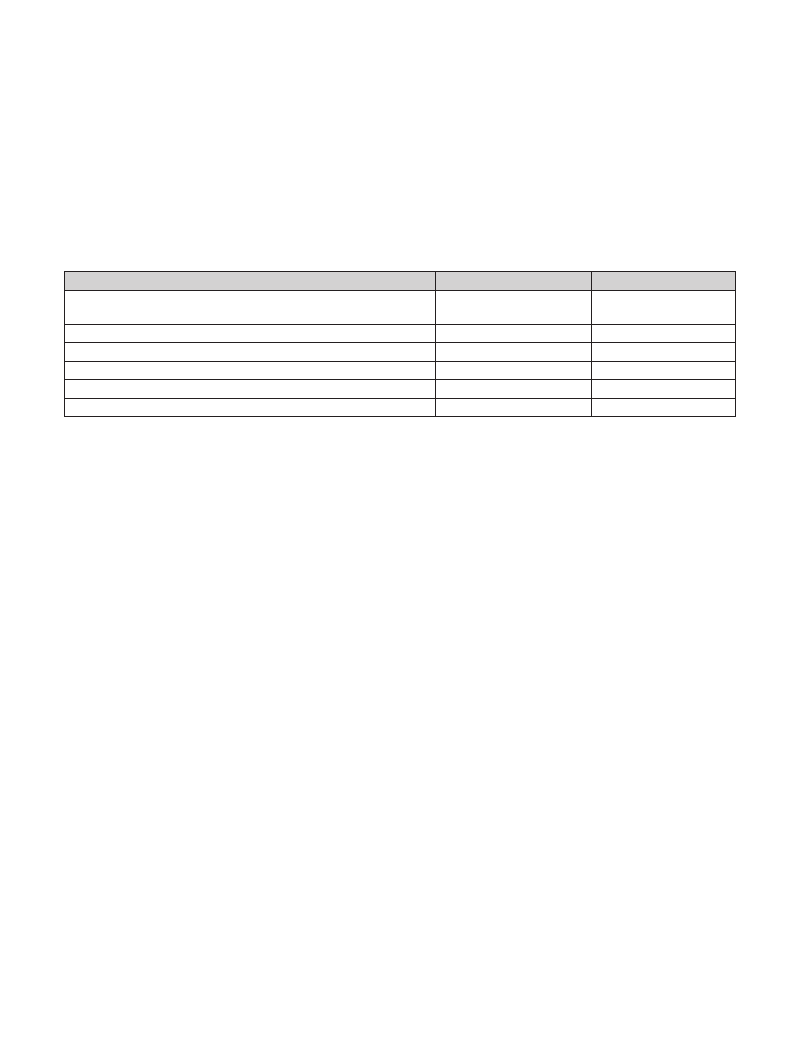
50 / Disaster Risk Management PROGRAMS FOR PRIORITY COUNTRIES AFRICA
Plan will be finalized in a short period of time. The objective of the National Contingency Plan is to identify the major risks
that the country faces and to plan appropriate mechanisms to face them.
4. Key Donor EngagementS
Some existing projects implemented by the main donors agencies and organizations contribute to the
achievement of the various HFA priority actions. Here are the main engagements of the international community in
areas directly or indirectly related to prevention and response to natural disasters.
Ongoing Projects and Organizations
World Bank – Emergency Infrastructure Rehabilitation and Energy
Project (EIREP) (to be approved)
World Bank – Community Development Project (CDP)
UNDP – Risk Prevention and Management program
GEF- NAPA implementation
AFD- EU- BOAD- Urban Environment project in Lome
German Red Cross- Enhance early warning
Indicative budget
$26.8 m
$17.2 m
$160,000
$3 m
Euro 11 m
FCFA 119 m
HFA activity area(s)
4
4
1-5
3-5
4
2
World Bank
Emergency Infrastructure Rehabilitation and Energy Project (EIREP). The proposed grant would help finance
the following activities: Component A—Infrastructure Rehabilitation, including: (i) drainage; (ii) urban roads rehabilitation;
(iii) urban water supply; (iv) energy equipment rehabilitation and light bulb replacement; and Component B—Institutional
Strengthening. The proposed support will address urgent and immediate needs to improve pedestrian and vehicular
access to some of the city’s poorest neighborhoods, and support Government efforts to reduce their periodic flooding.
Community Development Project (CDP). The main objective of the CDP is poverty reduction, through the establishment
and strengthening of basic socioeconomic infrastructure geared towards poor communities in Togo, mainly in the areas
of health, education, water and sanitation, and revenue-generating activities.
UNDP
UNDP is assisting the Government of Togo through the Ministry of Environment to enhance the coordination
mechanisms of the national platform and involve ministries, UN agencies, NGOs, and other civil society actors.
UNDP is also assisting the Government of Togo in the development of a national strategy for disaster risk management
and prevention, a national risk/hazard mapping, a contingency plan and an early warning system.
GEF- NAPA
The Global Environment Facility financed the elaboration of the National Adaptation Plan of Action (NAPA)
in collaboration with the UNDP. Once the NAPA approved by the Government, the GEF will finance part of the priority
projects, for a total amount of $3m. The Project Identification Forms will be submitted at the GEF probably at the end
of 2009/beginning of 2010. The NAPA process has an estimated cost of $23m and it will need the financial assistance
of others donors in order to be fully implemented. Some of the NAPA priorities of action, as the risk assessment, the
enhancement of the early warning system and initiatives aimed at reducing the vulnerability of the population to natural
hazards, are strictly related to the GFDRR program.

TOGO / 51
AFD (French Development Agency)
Urban Environment project in Lomé. This project has a component that finances the drainage of the exceeding rainy
water from the lagoon of Lomé. This project will help to overcome the floods caused by the water of the lagoon during
the rainy season in some particularly exposed area of the capital city. The project is co-financed by the European Union
(Euro 5m) and the West African Bank for Development, BOAD (Euro 3 m).
UNISDR
The UNISDR is supporting the National platform in preparing the DDR strategy. During the Togo National
Platform meeting held in Lomé on March 3, 2009, the national platform requested assistance from UNISDR and
ECOWAS for the development of the DRR strategy and to conduct an “institutional diagnostic.”
UN OCHA
UN OCHA is a partner of the Government in supporting response mechanisms. UNOCHA works closely
with the Government of Togo through the Ministry of Environment and the Ministry of Security and Civil Protection to
strengthen preparedness and response mechanisms in case of emergency. OCHA provided guidance and assistance
during the 2008 floods and ran a simulation exercise recently between Togo and Benin.
Other projects and support
There are other projects – smaller in size and scope – being implemented or prepared. A project entitled
“Resource Mobilization Project for the Implementation of the National Action Programme against Desertification (PAN),”
funded by the Global Mechanism of the UN Convention on Desertification, is in development. The UN-SPIDER program
will conduct an evaluation mission in Togo to review and draft recommendations on the use of geospatial data for DRR.
The project financed by the German Red Cross and implemented in collaboration with the Togolese Red Cross aims
at improving the early warning system in about 100 targeted communities. The project will put in place a mechanism to
control the level of the water in some rivers and it will establish an early warning system for the communities living nearby
in case of emergency. After the floods of 2007, the International Committee of the Red Cross worked with the Togolese
Red Cross to prepare a National Contingency Plan. The plan includes a pilot early warning system for floods. Other
organizations involved in the response to the 2007 and 2008 floods include UNICEF, Caritas, WFP, WHO, FNUAP and
FAO, OCHA, TRC, OCDI, and PLAN-TOGO. These organizations have been incorporated into the disaster response
mechanism outlined by the Plan-ORSEC.
5.global facility for disaster reduction and recovery (gfdrr):
action plan
Togo is susceptible to natural disasters that have enormous destructive potential on environmental, social,
and economic levels. Though a plan for natural disaster response and reconstruction exists in the Plan-ORSEC, there
is no strategy for disaster risk reduction and prevention, although it is now being discussed and key actions have been
indentified, which are all in need of additional support and financing in particular. The proposed program is prepared with
the support of the following ministries:
• Ministry of Environment and Forestry
• Ministry of Security and Civil Protection
• Ministry of Social Action, Promotion of Women and Protection of Children and Elderly
• Ministry of Internal Affairs, Decentralization, and Local Communities
• Ministry of Cooperation, Development, and Local Planning
• Ministry of Higher Education and Research

52 / Disaster Risk Management PROGRAMS FOR PRIORITY COUNTRIES AFRICA
Recently, the government of Togo has been involved in the revitalization of some of the efforts to mitigate
the impact of natural disasters. The Government is working on operationalizing the national platform, mapping risk
zones, developing a national strategy for disaster risk reduction along with other activities. Moreover, the national platform
in collaboration with the UNDP will conduct over the next months two studies in order to identify the national priorities
on risk management and reduction on the short, medium and long term. A document outlining a preliminary strategy for
disaster risk reduction will be ready in approximately 5 months. The results of this analysis will serve as a basis to better
define the interventions financed under the GFDRR plan. In addition to that, the Government of Togo is making the effort
to integrate climate change adaptation measures into national policies. The NAPA process identify the priority actions
needed to face this phenomenon, among others the enhancement of the early warning system and the reduction of the
vulnerability of the population to natural risks related to climate change.
The proposed program seeks to fill the gaps in these on-going activities and complement them - over a
three years period - in close collaboration with other donors, in particular the UNDP. The initiative financed
under the GFDRR will contribute also to the achievement of some of the NAPA priorities, mainly to set up an early
warning system and initiatives addressing the issue of vulnerability to climate change. The institutional arrangement
for project implementation is not yet defined, although the project will be implemented in close collaboration with the
national platform on disaster risk reduction.
It is proposed that the GFDRR finances the following activities:
Component 1. Institutional and capacity building for effective natural disaster risk management and
preparedness.
Risk and Vulnerability Assessment. A comprehensive risk assessment will be conducted in all regions of Togo, encompassing
a hazard, asset and vulnerability analysis that takes into account locational, structural, operational, and socio-economic
vulnerabilities. The assessment will include hydrologic modeling as floods are one of Togo’s most frequent natural hazards
and will incorporate various climate change scenarios. The objective of this assessment is to identify appropriate disaster
mitigation investments and/or risk transfer mechanisms to inform the development of a natural disaster risk reduction strategy
and to inform the strengthening of the national platform and the Plan-ORSEC. An update of the national cartography is also
necessary in order to assess the risks and enhance the early warning system. This component will finance the purchase of
satellite images receiving antennas and consulting services to update the cartography. This will also give the opportunity
to have real-time images during a natural disaster. The component will finance also some equipments needed to monitor
risks and meteorological conditions (measure of the pluviometry, the wind, the hydrometric network) in order to give to the
country the means to conduct independent risks assessment in the future.
Capacity Assessment of the institutions involved in risk management. The national platform in collaboration with the UNDP
is conducting a preliminary institutional assessment in order to analyze the existing arrangements and key institutions on
disaster risk prevention and management. This component will complete this analysis and it will finance a study assessing
the technical competencies in terms of financial management, procurement and human resources management of the
main key institutions identified. This will highlight the strengths and weaknesses of existing institutional arrangements
with the purpose of simplifying them.
Follow up of the National Platform and Implementation of Disaster Risk Reduction Strategy. The national platform is
already operative but it will need some technical support (equipments, training, financials means) to assure its well
functioning. A national disaster risk reduction strategy will be ready in the next months. This strategy will outline the
reforms needed and the actions to be taken over the short and medium term. Once this analysis done, the platform
will identify the priority of actions for the implementation of the strategy and further initiatives that will need the financial
support of the GFDRR.

TOGO / 53
Training and equipment will be provided to key national, and regional, local and community actors that engage in disaster
prevention, mitigation, preparedness, response and recovery based on the natural disaster risk reduction strategy and
the Plan-ORSEC. A general awareness campaign about the disaster risk reduction and the new national risk reduction
strategy will be undertaken within the government and the general public. The objective of this activity is to ensure human
resources are prepared and equipped to implement the natural disaster risk reduction strategy and the Plan-ORSEC.
Component 2. Strengthening resilience in multi-sectoral investments.
This component will finance prefeasibility studies and other analytical work to support the upgrading of future investments
to better withstand the effects of natural disasters and climate change effects. In particular this component will finance
(i) Upgrading of building codes for climate/risk resilient infrastructure and buildings;
(ii) A study on the integrated flood prevention and watershed management strategy, in particular on the northern half of
Togo which shares the Upper Volta River Basin with Ghana and Burkina Faso. This study will be conducted in close
collaboration with the Ghana authorities in charge of the watershed management strategy for the Volta basin.
Component 3. Support to local development activities to reduce vulnerability to natural disasters and
climate change.
Incorporation of Risk Management in the Community Development Project
A US$17.2 million IDA financed Community Development Project (CDP) in Togo was approved by the board on June 26,
2008. The objective of this project is to provide poor communities with improved basic socio-economic infrastructures
and income generating activities, by financing at least 350 subprojects that are identified and implemented directly by
communities. Community subprojects will be implemented by poor rural communities with the support of the AGAIB
(Agences d’Appui aux Initiatives de Base). Currently, there are no guidelines in place on incorporating disaster risk
reduction into the design and implementation of these subprojects.
In order to assist AGAIB with the incorporation of disaster risk reduction measures into the Community Development
Project, it is proposed that the Global Facility for Disaster Reduction and Recovery (GFDRR) fund:
a. Community Assessments and Training
1. Community Risk Assessment. A consultant will be hired to conduct a risk assessment of communities in which
the CDP operates. This assessment will gather information on the risks communities face and the way in which
communities respond to such risks. This assessment will include also a sociological analysis that will identify the
traditional early warning systems existing in the communities, the reasons behind the resistance of the population
to respond in case of emergency and the role played by local authorities in this process.
2. Development of Guidelines for Incorporating DRR into the CDP. Advisory services are requested to establish a
set of guidelines to incorporate disaster reduction and recovery into CDP.
3. Training and Capacity Building. Training and capacity building will be provided to key AGAIB and community
actors involved in the implementation of subprojects.
b. Pilot Project
4. Community based pilot activities to mitigate impact of extreme events in fragile areas. Extensive soil-degradation,
deforestation and other human activities have had a serious negative impact on agricultural productivity and on
income of poor rural communities. Preliminary studies have already identified some very fragile areas, where
selected public works focused on soil and water conservation activities can help mitigate the effects of floods
and other extreme events, and provide an example to replicate in other sites of Togo. Interventions would
include: soil embankment construction; stone embankment construction; pond construction and maintenance;
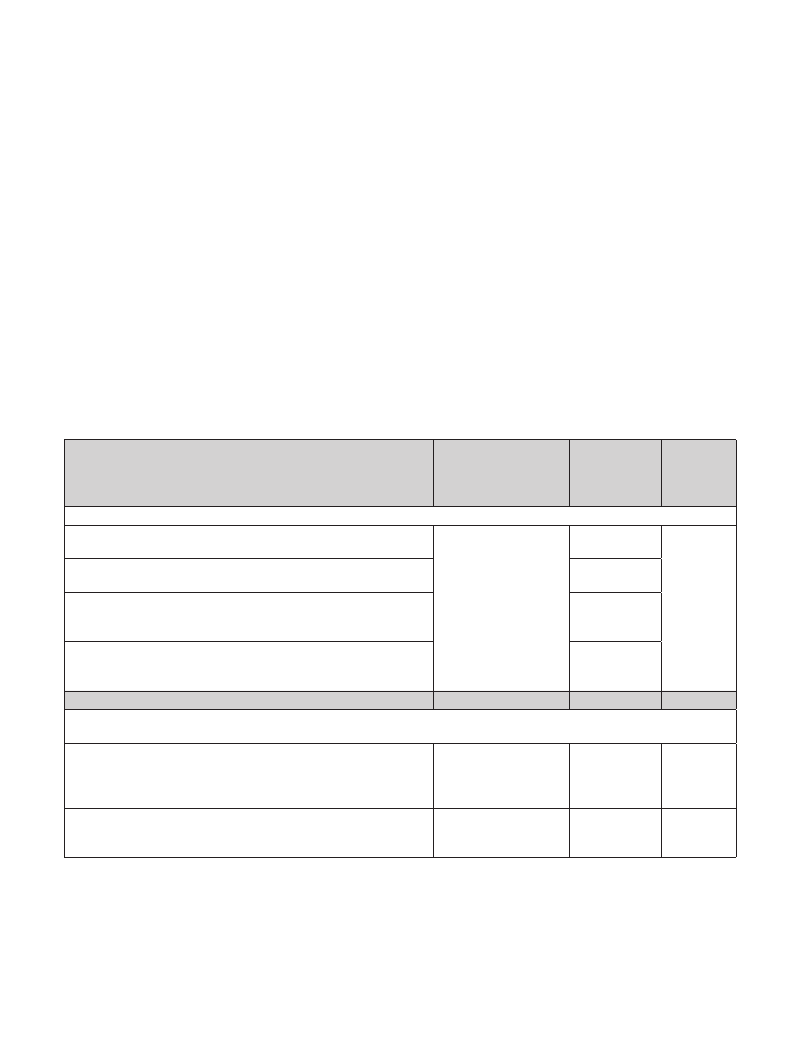
54 / Disaster Risk Management PROGRAMS FOR PRIORITY COUNTRIES AFRICA
spring development; land rehabilitation though area enclosure; small-scale irrigation canals; tree nursery site
establishment; rural road maintenance; and tree planting. The pilot project will include early-recovery safety nets
initiatives after a disaster.
Component 4: Project Management.
This component will finance project management costs relating to monitoring and evaluation, incremental operating
costs for project management and costs related to project reporting and audits.
Results of activities both at the national and community level will be measured against indicators associated
with HFA priorities for action. Key outputs of activities will include reports on the findings of the risk assessments
(both national and community) a report on the findings of the national institutional assessment, a national cartography, the
guide to incorporating disaster reduction and recovery into the Community Development Project, and the assessment
of the pilots.
The program will be conducted in partnership with existing and prospected activities and partners and a
US$ 8.1 million budget is proposed. The table on page 52 gives an overview of the activities under each component,
the envisaged partnership for their implementation and the HAF priorities each intervention addresses. A provisional
budget to finance the interventions proposed in the Disaster Risk Management Action Plan is of US$8.1m.
HFA Priority areas
Key Partners
HFA 1: Strengthen national disaster risk management strategies and institutions
Estimated
Budget for
2010-2013 in
US$
Notes
1.1 Institutional and capacity building for effective natural disaster risk
management and preparedness
1.2 Support to establish plans to reduce risks at all administrative
levels
1.3 Develop community participation approaches through
decentralization of authority and transfer/mobilization of
resources to local level
1.4 Functioning multi-sectoral platform for risk reduction is in place
with institutional assessment of basic implementation functions of
key agencies and capacity building/systems development
National Platform
Ministry of Environment
UNDP
CDP Technical
Secretariat
700,000
500,000
400,000
650,000
(Of which
1,500,000
at the
national
level and
750,000
at the local
level)
TOTAL HFA 1
2,250,000
HFA 2: Ensure risk and vulnerability assessments, early warning and contingency planning and financing – in both
rural and urban areas
2.1 Risk assessment (national and local) based on data and
information on hazards/vulnerabilities
2.2 Updated cartography
National Platform
Ministry of Environment
UNDP
University of Lome
National Platform
University of Lome
500,000
Includes
technology
support
1,000,000
Includes
technology
support
(Cont.)
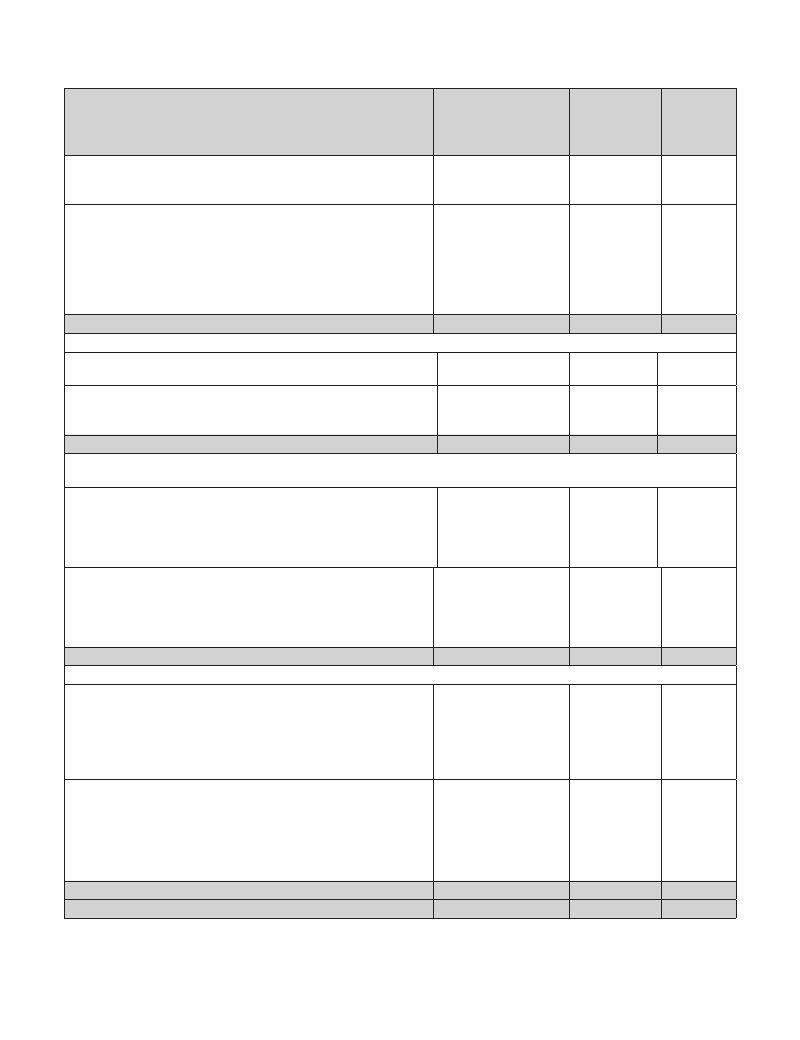
TOGO / 55
HFA Priority areas
Key Partners
Estimated
Budget for
2010-2013 in
US$
Notes
2.3 Study on the integrated flood prevention and watershed
management strategy, in particular on the northern half of Togo
National Platform
University of Lome
Other institutes
300,000
2.4 Early warning systems are in place on the majority of natural
hazards and are transmitted to communities
National Platform
Ministry of Environment
UNDP
Plan ORSEC
University of Lome
Civil society
organizations
500,000
Includes
technology
support
TOTAL HFA2
2,300,000
HFA 3: Increase and sustain awareness creation, education and capacity building
3.1 Information on hazards are accessible at all levels and to all actors National Platform
UNDP
300,000
3.2 Information campaigns to promote a culture of prevention
National Platform
CDP Technical
Secretariat
200,000
TOTAL HFA3
500,000
HFA 4: Reduce underlying risk and vulnerability (and integrate DRR into sector planning and practices for example
in water, agriculture, health, environment)
4.1 Community based pilot activities to mitigate impact of extreme
events in fragile areas
Technical Secretariat of
the CDP
Ministry of Youth and
Youth Employment
AGAIB
2,000,000
4.2 Upgrading of building codes for climate/risk resilient infrastructure
and buildings.
National Platform, CDP
Technical Secretariat,
ministry of Public works,
Ministries of Education
and Health,
300,000
TOTAL HFA4
2,300,000
HFA 5: Improve emergency preparedness and response through capacity strengthening
5.1 Development of Guidelines for Incorporating DRR into the CDP
and training
Technical Secretariat of
the CDP
UNDP
AGAIB
Civil society
organizations
250,000
5.2 Support to Emergency/contingency plans at all administrative
levels and drills are taking place
Plan ORSEC National
Platform
500,000
TOTAL HFA5
TOTAL GFDRR
750,000
8,100,000
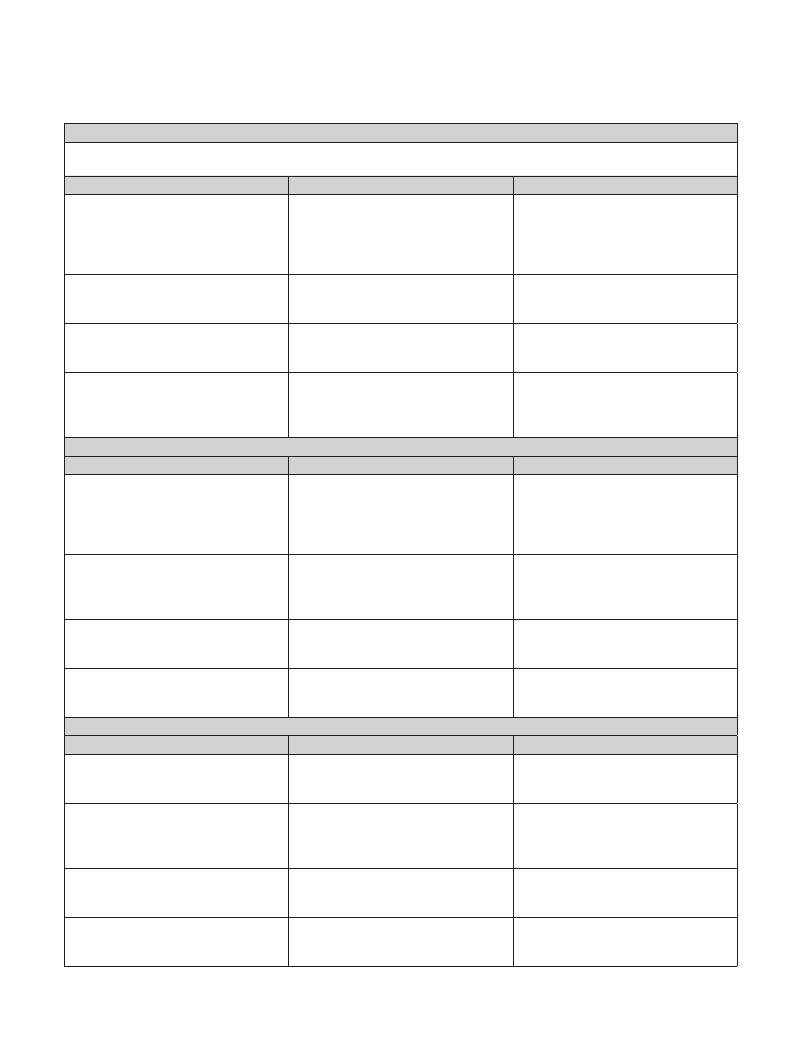
56 / Disaster Risk Management PROGRAMS FOR PRIORITY COUNTRIES AFRICA
Annex: Hyogo framework – Togo – Update on actions (as of March 2009)
Hyogo priority
1. Ensure that disaster risk reduction is a national and a local priority with a strong institutional basis for imple-
mentation
Indicator
Status
Constraints
1.1 National policy and legal framework
for the mitigation of risks is in
place. With clear decentralized
responsibilities and capacity at
different levels
Weak systematic commitment at the
institutional/political level although some
progress in recent times (March 2009
workshop)
Financial constraints
1.2 Sufficient resources are allocated to
establish plans to reduce risks at all
administrative levels
Limited progress (no budget line to
prevent disasters)
Financial constraints
1.3 Community participation is ensured
through decentralization of authority
and of resources to local level
Institutional commitment is in place.
Implementation is still incomplete
Financial constraints
1.4 Functioning multi-sectoral platform
for risk reduction is in place
Institutional commitment in Place and
legal framework in place. Some progress
made during the recent workshop (March
2009)
Financial constraints to mobilize all
stakeholders
2. Identify, assess, and monitor disaster risks – and enhance early warning
Indicator
Status
Constraints
2.1 Risk assessment (national and local)
based on data and information on
hazards/vulnerabilities is available
Institutional commitment is in place.
Implementation is still incomplete. With
support from UNDP some studies will be
launched on the assessment of risks at
the national/local level
Lack of resources to prepare more
realistic regional maps
2.2 Systems in place to asses, archive
and disseminate information on
hazards and vulnerabilities
Institutional commitment is in place.
Implementation is still incomplete.
“Journal L’environment” is the newsletter
on natural disasters
Strengthen the capacity of the technical
secretariat of the National platform
2.3 Early warning systems are in place
on the majority of natural hazards
and are transmitted to communities
Institutional commitment but no system
in place.
Financial constraints
2.4 Trans-national risks are taken into
account by the national/local risk
assessment strategy
Institutional commitment but no system/ Financial constraints
action in place.
3. Use knowledge, innovation, and education to build a culture of safety and resilience at all levels
Indicator
Status
Constraints
3.1 Information on hazards are
accessible at all levels and to all
actors
Limited progress (waiting for a
diagnostic)
Identification of risk areas and types
3.2 School curricula, textbooks and
training include modules on risk
reduction and concepts and best
practices on reconstruction
Limited progress. Documentary on
“prevention of disasters begins at school”
currently being designed
Financial constraints
3.3 Research methods and technical
capacity are in place to asses
multiple risks (and cost analysis)
Limited progress
Strengthen the capacity of the technical
secretariat of the National platform and of
researchers
3.4 Information campaigns to promote a
culture of prevention
Limited progress. Plans to promote the
documentary and other programs with TV
channels and other media
Financial constraints
(Cont.)

TOGO / 57
Hyogo priority
4. Reduce the underlying risk factors
Indicator
Status
4.1 The reduction of risk of disasters is
an integral part of policies and plans
in the environment sector (planning,
management of natural resources
and adaptation to climate change)
Major progress include: parliamentary
vote, National plan on the environment,
National plan to adaptation, etc.)
4.2 Policies and social plans are in place
to reduce vulnerabilities of specific
groups
Institutional commitment but system/
action limited.
4.3 Policies and sector (economic) plans
are in place to reduce vulnerabilities
of specific groups
Institutional commitment but system/
action limited.
4.4 Planning and management of human
settlements integrate risk reductions
consideration and construction
standards
Some progress with the creation of a
special association of architects
4.5 Risk reduction of disasters is part
of the reconstruction/rehabilitation
process
Institutional commitment but
implementation is limited/incomplete
4.6 Procedures are in place to assess
the impact of risk reduction on all
development projects, especially in
infrastructures
Institutional commitment but
implementation is limited/incomplete
(there is a decree on type of projects to
be monitored/assessed)
5. Strengthen disaster preparedness for effective response at all levels
Indicator
Status
5.1 Policies, mechanisms and capacity
are in place to manage risks
Institutional commitment but
implementation is limited/incomplete
5.2 Emergency/contingency plan are in
place at all administrative levels and
drills are taking place
Institutional commitment but
implementation is limited/incomplete
5.3 Financial emergency/contingency
plan are in place to support
emergency/reconstruction
Limited progress. Plan Orsec is in
place, but no contingency financing for
emergencies
5.4 Procedures to exchange information
on hazards are in place with the aim
of conducting post-disaster analysis
Institutional commitment but
implementation is limited/incomplete
Constraints
Financial constraints to move forward,
especially in the implementation of the
National plan of adaptation
Financial constraints to finance priority
project as included in the PRSP
No statistical information
No real policy in spatial/habitat planning
Financial constraints (to prepare TOR/
manuals)
Financial constraints (especially to
monitor the implementation of the
decree)
Constraints
Operationalization of the National
platform
Financial constraints
Financial constraints
Financial constraints
Source: Rapport national intermédiaire du suivi de la mise en œuvre du Cadre d’Action de Hyogo, Ministère de l’Environnement et des Ressources Forestières, Septembre
2008 and update by the Focal Point of the Ministère de l’Environnement et des Ressources Forestières (April 2009).


/ 59
Progress Towards GFDRR Financed
Disaster Risk Management Programs
in the Five Remaining Priority Countries
in the Africa Region
Burkina Faso, Madagascar, Malawi, Mali, and Senegal
The interactive planning process for the country disaster risk management programs requires additional dialogue
with the governments, UNDP and other critical in-country stakeholders in the countries of Burkina Faso, Madagas-
car, Malawi, Mali, and Senegal. The five programs are scheduled to be completed by the end of this calendar year.
The taken approach strongly addresses poverty and sustainable growth issues in these countries. It requires further na-
tional policy coordination for the three areas of disaster risk reduction, climate change adaptation, and poverty reduction
led from high political and organizational levels with a focus on climate risk reduction as a means to promote sustainable
development. The process is placing considerable demand on governance systems from national to local levels across
a set of ministries to lay the foundation for genuine plans with clear ownership by the government.
All five countries rank very high amongst African countries most exposed to risks from multiple weather related hazards, in
particular drought and floods (Sahel and Malawi) and cyclones (Madagascar). Epidemics, pests and infestations are also
widespread. Wildfires have become an increasing concern in several of these countries. Coastal erosion - in part related
to storm surges - is a particular issue in Senegal and to some degree in Madagascar. Current development dynamics
and demographic changes in each of these countries put more people at risk of disasters, due to, for example, rapid ur-
banization and weak urban governance as well as declining ecosystems and ecosystem services. The high dependence
on natural resources in rural areas, the lack of secure livelihoods and limited safety nets add to these vulnerabilities.
Climate change will gradually increase these problems and especially the agricultural sectors - including fisheries, water
resources, plantation crops, food crops, and livestock - will be negatively impacted. Few of these countries have as-
sessed risk and vulnerabilities of people, infrastructure and ecosystems to any substantive degree. Policy development,
institutional capacity and investment commitments at different levels for the reduction of risks and vulnerabilities are only
just beginning. The country programming is addressing these and other deficiencies.

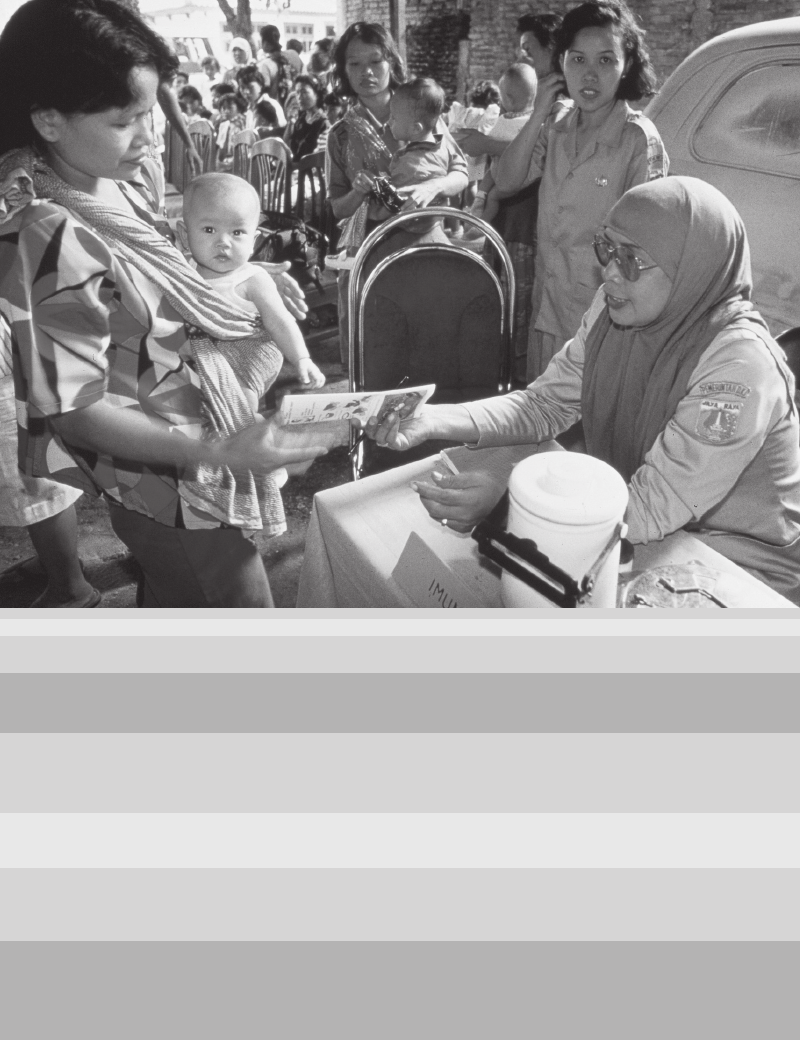
DISASTER RISK MANAGEMENT
East Asia and Pacific
Indonesia / Marshall Islands / Papua New Guinea / Solomon Islands / Vietnam
There are ongoing negotiations to include Timor Leste for this round of GFDRR programming.
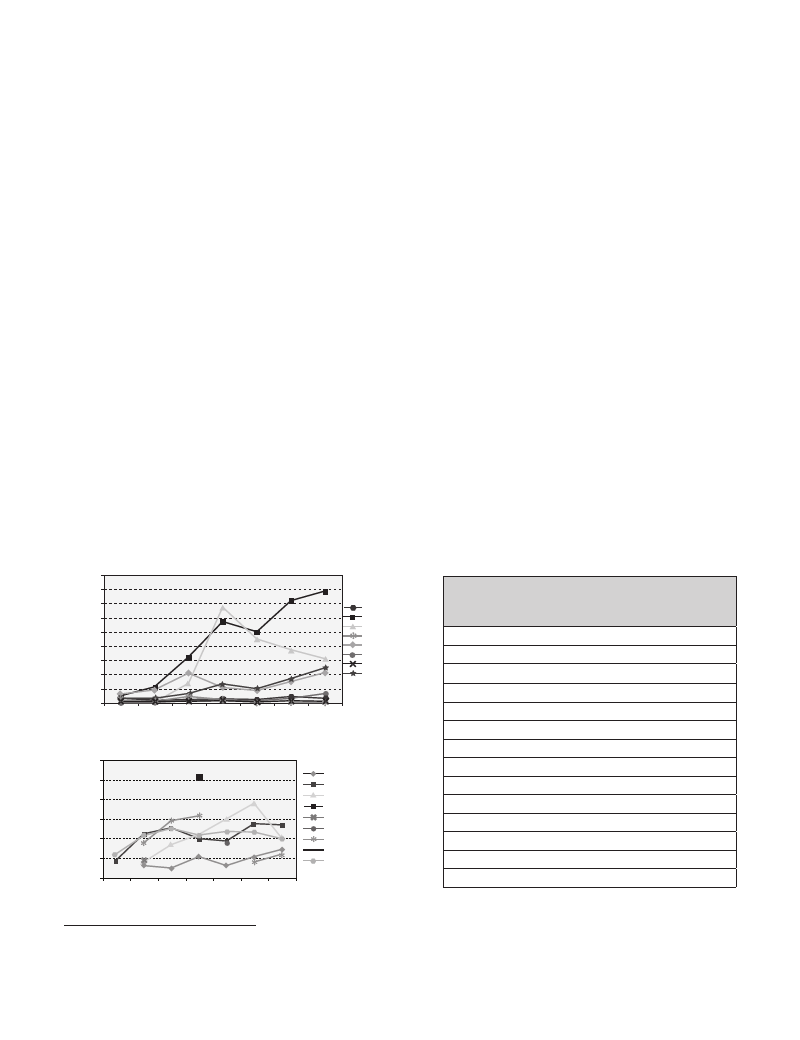
62 /
INDONESIA
In preparing this DRM Country Note, a series of consultations were carried out with the National Disaster Management
Agency (BNPB) and with the National Development Planning Agency (BAPPENAS) to determine priority areas that
could be supported if more funding are available. Upon identification of the scope for scalled up support, another
consultation was carried out with international development partners working in Indonesia, and who also have major
support programs for the country such as AusAID, JICA, the European Commission, DFID and UNDP. This consultative
process is part of on-going partnership to build synergy, avoid duplication and increase leverage. The final proposal was
also discussed by a visiting high official of the World Bank and the Minister/Head of
the National Disaster Management Agency (BNPB) on 18 May 2009.
1. DISASTER RISK PROFILE
Indonesia ranks 12th among countries at relatively high mortality risks from multiple hazards. Indonesia is
situated in one of the most active disaster hot spots where several types of disasters such as earthquake, tsunami, vol-
canic eruption, flood, landslide, drought and forest fires frequently occur. According to a global risk analysis by the World
Bank1, Indonesia is among the top 35 countries that have high mortality risks from multiple hazards with about 40 percent
population living in areas at risk. For a country that has more than 230 million population, this percentage gives a very
large nominal number of more than 90 million population potentially at risk creating a major humanitarian catastrophe
should large disasters occur.
Disaster Occurence in Indonesia
450
400
350
300
250
200
150
100
50
0
2001
2002
2003
2004
2005 2006
Source: DiBi-BNPB
Mortality From Disaster in Indonesia
1000000
100000
10000
1000
100
10
1
2001
Source: DiBi-BNPB
2002 2003
2004 2005 2006
2007
EARTHQUAKE
FLOOD
DROUGHT
FOREST FIRE
LANDSLIDES
TIDAL WAVE & TSUNAMI
VOLCANIC ERUPTION
WINDSTROM
2007
Windstorm
Floods
Earthquake
Tsunami
Forest Fire
Drought
Social Conflict
Volcanic Eruption
Landslides
COUNTRIES AT RELATIVELY HIGH MORTALITY
RISK FROM MULTIPLE HAZARDS1
(Top 35 Based on Population)
1. Taiwan, China
2. El Salvador
3. Costa Rica
4. Dominica
5. Philippines
6. Antigua and Barbuda
7. Guatemala
9. Dominican Rep.
10. Jamaica
11. Nicaragua
12. INDONESIA
16. Bangladesh
17. Colombia
35. Panama
1See World Bank, Natural Disaster Hotspots, A Global Risk Analysis (Washington, DC: Disaster Risk Management Series, 2005),
table 1.2
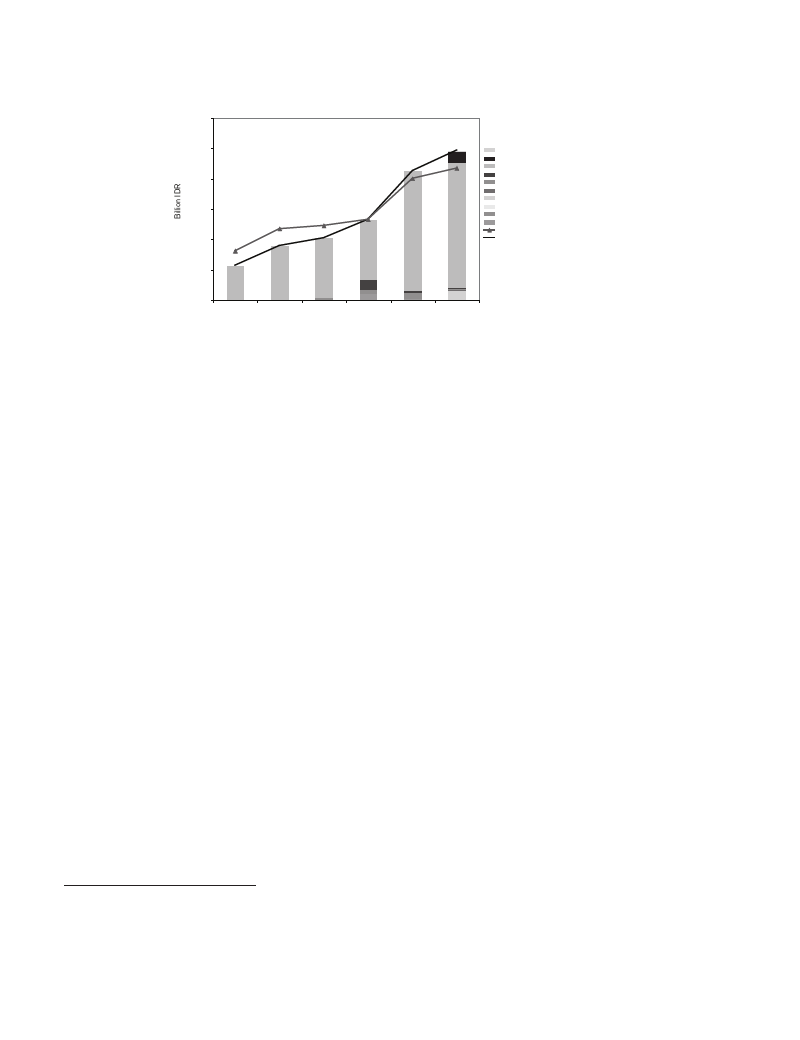
INDONESIA / 63
GoverGnmoevnetrnExmpeenndtitEuxrepeonndDiitsuarseteor RneDspisoansseter Response
3000
2500
2000
1500
1000
500
569
892
1,019
1,324
2,125
2,459
coastal Protection and Mitigation
lava Flow control
Flood Mitigation
Prevention of land, Water, Forest Degradation
Dev. of national Disaster Mgmt. system
capacity Building of local Gov.
Early Warning
spatial Planning of Hazard Zones
research and Mapping
Disaster Preparedness
Total Expenditure (HK 2005)
Total Expenditure (nominal)
0
2001
2002
2004
source: Budget Disbursement Database, Min. of Finance
2005
2006
2007
Increasing frequency of disaster impacting public expenditures. According to the Government’s disaster data2,
between 2001 and 2007 alone there have been more than 4,000 occurrences of disasters including floods (37%),
droughts (24%), landslides (11%), and windstorm (9%). As the disasters damage public infrastructure and people’s
homes, mostly uninsured, they created an enormous burden on public expenditure to restore those facilities.
Hazard Profile
Geologic
Situated in the earthquake belt and pacific ring-of-fire Indonesia is highly vulnerable to earthquakes and
volcanic eruptions. The areas most vulnerable to earthquakes are Sumatera, Java, Bali, Nusa Tenggara, Maluku, Su-
lawesi and Papua. Sumatera alone has suffered from over 15 large earthquakes in the past 100 years. Indonesia also
has 129 active volcanoes, 70 of them are classified as dangerous. Between 2001 and 2007 alone, 26 volcanic eruptions
were recorded mostly in Java. In 1815 the Tambora volcano on the northern coast of Sumbawa, West Nusa Tenggara
Province erupted claiming more 92,000 lives, whereas on 1883 the Krakatoa eruption claimed more than 36,000 lives
and created tsunamis as far away as South Africa. The islands of Java and Sumatra are also prone to landslides because
of their topographic and unstable soil conditions.
Hydro-meteorologic
High rainfall regime in the west and dry zone in some eastern provinces are are subject to recurring floods
and droughts. Within the past century, floods have been the most frequent disaster for Indonesia. The floods often
hit major population centers such as Jakarta (with population more than 13 million), Medan (more than 2 million), and
Bandung (more than 4 million). The Government estimated that the 2007 flood that hit Jakarta created total damage
and losses amounting to more than $900 million3. According to the Ministry of Public Works, the annual flood in the
Bengawan Solo watershed that occurred in 2007 cost the government more than $200 million or equal to the total
emergency allocation for all disasters for the entire year of 20084.
Climate variability and change
Deforestation and prolonged drought intensify the occurrence of forest fires. The wildland fire and smoke-haze
2 DiBi database (Data and Information on Disaster in Indonesia), National Disaster Management Agency (BNPB). http://dibi.bnpb.
go.id
3 Laporan Perkiraan Kerusakan dan Kerugian Pasca Bencana Banjir Awal Februari 2007 di WIlayah Jabodetabek, National Devel-
opment Planning Agency (BAPPENAS) 2007.
4Source: Center for Strategic Assessment of the Ministry of Public Works, April 2009.

64 / Disaster Risk Management PROGRAMS FOR PRIORITY COUNTRIES EAST ASIA AND PACIFIC
episodes in Indonesia during the 1980s and 1990s were the first documented influence of drought impact triggered by
the El Niño-Southern Oscillation (ENSO). In East Kalimantan alone, nearly 3.5 million hectares of forests were affected
by drought and fire. Nearly 0.8 million ha of primary rain forest was burned, but impacts were more widespread in logged-
over and secondary forests (mainly in the vicinity of settlement areas)5. The climate anomaly brought by El Nino also
induced the decrease in rainfall impacting food production by an average of 3.06 percent6.
Factors of Vulnerability
Population increase and urbanization. As in many other developing countries, economic growth in Indonesia has
shown a strong correlation with urbanization, both in the sense of people moving from rural areas to the cities and in
terms of the urbanizing of the rural settlements. By 2008, at least 50 percent of the population was living in the cities
and urban areas were increasing at 4.4% per year, well beyond national population growth. This had placed more than
110 million people in around 60 cities mostly located in the coastal areas, exposing them to common hazards such
as earthquakes, flooding and communicable diseases. The high population density in many of the larger cities also
increased the vulnerability of the population in case of large-scale disasters.
Increased exposure due to poorly enforced zoning and poorly maintained infrastructures. The high rate
of urbanization in Indonesia in the midst of limited capacity of the urban centers to provide adequate shelters and
infrastructure has led to the emergence of many unplanned settlements. Poor quality and enforcement of land use zoning
in turn led to many hazard prone locations being occupied by settlements, increasing the exposure of the population
to disasters. The Ministry of Public Works estimated that a quarter of the population in the cities (or around 25 million
people) are living in the slums and informal settlements7. The combination of the poor quality settlements and inadequate
infrastructure has made Indonesia vulnerable, especially when larger scale hazard events occur.
Overall Risk Profile
More frequent events, increased exposure, lower coping capacity hence higher impacts. A combination
between the uniqueness of Indonesia’s geological setting and the complexity of its population settlements has generally
led to increased disaster occurrence with a tendency for significant human impacts (e.g., loss of life as well as economic
consequences). Although the natural events that cause hazard cannot be stopped, the severity of their consequences
can be minimized or even avoided through better community preparedness and resilience. Overall, Indonesia’s population
is at higher risk due to increased exposure and weaker resilience.
The climate factor. Climate variability and change increase the level of risk to disaster for Indonesians. In addition to
higher intensity of the meteorologically influenced events such as floods and droughts, climate has also influenced the
food production pattern and outputs, bringing additional uncertainty in the event of disaster which could further exacerbate
its impacts. While awareness of the importance of taking into consideration the impact of climate variability and change
is increasing, more evidence-based response and adaptation measures need to be developed and explored.
5 Fire Situation in Indonesia. IFFN No. 26, January 2002, p. 37-45.
6 Fenomena Anomali Iklim El Nino dan La Nina: Kecenderungan Janga Panjang dan Pengaruhnya Terhadap Produksi Pangan. Bam-
bang Irawan. Forum Penelitian Agro Ekonomi, Vol. 24 No 1. Juli 2006: 28-45.
7 Toward Developing Slum Free Cities 2025 (in Bahasa Indonesia). Djoko Kirmanto, Minister of Public Works. Keynote Speech delivered on the
commemoration of World Habitat Day 2008. Bali 30 October 2008.

INDONESIA / 65
2. DISASTER RISK MANAGEMENT FRAMEWORK
A comprehensive legislative framework has been put in place, but implementation remains a major challenge.
After the 2004 Indian Ocean Tsunami, Indonesia enacted a new Law on Disaster Management (Law 24/2007) that
outlines the principles, division of labor, organization and implementation of the national disaster management system,
including the role of international organizations. The Law has been further elaborated by the issuance of three key
Government Regulations, one Presidential Regulation and numerous implementing guidelines. While the issuance of
the legal framework is an important first step, more work needs to be carried out to ensure that the regulations are
disseminated and implemented by the respective institutions and observed by the public.
A new National Disaster Management Agency has been created but only six out 33 provinces have
established provincial disaster management agencies. A major shift brought by the new Disaster Management
Law is the establishment of a dedicated agency to deal with disaster, the National Disaster Management Agency (BNPB),
where previously there was only an ad-hoc inter-ministerial council. BNPB is empowered with a strong mandate to
coordinate line ministries on the entire cycle of disaster management from pre, during, and post disaster stages. While
the Law clearly mandated the creation of disaster management agencies at the provincial (mandatory) and districts
(depending on needs and capacity) levels, to-date only six out of 33 provinces and six out of more than 450 districts and
municipalities have actually established their disaster management agency (BPBD). This necessitates further formulation
of both the governance and the policy incentive for the provincial and local government to comply with the mandate of
the Law.
The first three-year National Action Plan for Disaster Risk Reduction (NAP-DRR) is nearly concluded, and
there is a need to develop a new action plan based on risk assessment. Indonesia was among the first few
countries in Asia that formulated their national actions plan for disaster risk reduction (NAP-DRR), which is the first
priority of the Hyogo Framework for Action (HFA). This first NAP-DRR covering the period of 2006-2009, which was
formulated through multi-stakeholder processes, is nearly concluded. With the issuance of Government Regulation
21/2008 on the Implementation/Conduct of Disaster Management, the next NAP-DRR will have to refer to the National
Disaster Management Plan (DM Plan) currently under formulation. The Government Regulation also stipulates that both
the DM Plan and the NAP DRR would be based on risk analysis and be part of the broader development program.
This new policy would require significant support in its follow up, both in terms of detailed institutional and technical
procedures, and in terms of capacity for field implementation.
Government budget on DRM has quadrupled in amount, but comprehensive risk financing has not been put
in place. The Government of Indonesia quadrupled its spending on disaster related activities between 2001 and 2007
as a response to two major disasters in Aceh (2004) and Java (2006). However, further analysis by BAPPENAS8 on
sectoral budget allocations indicated that the amounts in the last three years from 2007 to 2009 actually decreased with
the budget for 2009 back to one third of the spending in 2007, suggesting that most of the spending was for response
and recovery. The analysis also noted that further tracking of sectoral allocation was still not possible to determine if DRR
is fully mainstreamed in regular development programs. A new Government Regulation No 22/2008 on Funding and
Management of Disaster Assistance has also stipulated three categories of funding namely: contingency fund, on-call
budget, and social assistance fund through grant. However, in broader risk financing terms, other forms of financing such
as risk insurance and contingency line of credit in the event of a large scale disaster are only recently being considered
and are still under discussion.
8 “Planning and Budgeting for Disaster Management Plan in Indonesia”. Dr. Suprayoga Hadi, presentation to UN/NGO/DONOR/Red Cross Con-
vergence Workshop, February 2009.

66 / Disaster Risk Management PROGRAMS FOR PRIORITY COUNTRIES EAST ASIA AND PACIFIC
Capacity building for local government and communities in disaster risk reduction requires major
development investment. To fully transform the reactive mindset into one that reduces risk and prevents catastrophic
impacts, systematic investment is required to build the capacity of local actors including governments, civil society and
community organizations and the private sector. The current approach, which is still reactive in allocating resources
for spending on disaster management, will have to be gradually shifted into investment for reducing risk and achieving
sustainable development. This will require continuous improvement to build competent human resources and organizations
to manage disaster risks.
Implementation of comprehensive disaster risk management measures requires both consensus and major
rehabilitation works. Indonesia’s efforts to build a national system for disaster risk management under Law 24/2007
have provided more room for concrete actions to reduce risks. Relevant laws on spatial planning, on environment as well
as on natural resource management have provided the legal basis. But, detailed implementation still requires both more
specific consensus and new innovation for rehabilitating the current pattern of development and human settlement to
build physically and socially safer and more resilient communities.
3. ACTIVITIES UNDER HYOGO FRAMEWORK OF ACTION9
HFA Priority #1: Policy, Institutional Capacity and Consensus Building for Disaster Management
Focus on national institutional, legal and resource frameworks. Based on the first National Action Plan for
Disaster Risk Reduction (NAP-DRR) covering the period of 2006-2009, Indonesia has put particular emphasis on
the establishment of the proper legal, institutional and resource frameworks as part of building the national disaster
management system. A new Law on Disaster Management (Law 24/2007) was recently enacted followed by the
issuance of four key implementing regulations on the establishment of a new National Disaster Management Agency/
BNPB (Presidential Regulation No 8/2008); on the implementation of disaster management (Government Regulation No.
21/2008); on Funding and Management of Disaster Assistance (Government Regulation No. 22/2008); and on the role
of international institutions and international NGOs in disaster management (Government Regulation No. 23/2008).
Development of human resources in disaster management. Through the current NAP-DRR, the Government of
Indonesia has also actively facilitated the participation of stakeholders to build the capacity of human resources in disaster
management. The Evaluation Report of the NAP-DRR recorded that 26 government ministries/agencies, 14 donor agencies
and international NGOs, 4 universities and 3 local governments were actively implementing training and capacity building
programs. These include, among others, training of disaster management volunteers, disaster management information
system for local governments, disaster victim identification, as well as the basics of disaster management.
Fostering consensus and participation of broad stakeholders. In addition to the engagement of stakeholders
in capacity building, the Government of Indonesia is also actively promoting the involvement of local governments and
communities in disaster management. In cooperation with the IFRC and the Indonesian Society for Disaster Management
(MPBI), a framework and several symposia on community based disaster risk reduction and disaster management had
been developed and carried out. There have also been active collaborations between UN agencies, international NGOs,
and national stakeholders on various aspect of disaster management through a Convergence Group that has established
a mechanism for regular consultation and exchange of information. A National Platform for Disaster Risk Reduction
9 Most of the activities summarized in this section are based on the published government report titled “Evaluation Report on the Implementation of
National Action Plan for Disaster Risk Reduction for the 2007-2008”. National Development Planning Agency (BAPPENAS) and UNDP, September
2008.

INDONESIA / 67
was also recently established comprising of representatives from the civil society, private sector, academia, and the
government. The National Platform’s first task would be to facilitate the formulation of the new National Action Plan for
Disaster Risk Reduction for the period of 2010-2012.
HFA Priority #2: Disaster risk assessment and monitoring
Risk assessment at national and regional levels. Several key government ministries and agencies have continued to
update and disseminate hazard and risk analyses within their sectoral purview. The Ministry of Home Affairs, for instance,
has developed disaster risk maps for 11 provinces as the basis for governance (institutions, local by-laws, budget
allocation) at the provincial and local levels. The Meteorological, Geophysical and Climatological Agency (BMKG) has
developed and updated the map of potentially flooded and landslide-prone areas based on historical and forecasted
data. The Ministry of Public Works has developed flood and landslide risk maps, particularly for major watersheds of
economic and social importance. Other agencies such as volcanological survey and disaster mitigation center (VSI)
and national mapping agency (BAKOSURTANAL) have also updated their risk maps. The National Agency for Disaster
Management (BNPB) is currently also preparing a guideline for the local governments to conduct their disaster risk
assessment (PARBA).
Improvement of early warning system. Since the 2004 Indian Ocean Tsunami, Indonesia has begun to more
systematically develop an early warning system for tsunamis. Several agencies under the coordination of the Ministry for
Research and Technology including BMKG, BAKOSURTANAL, and the Technology Agency (BPPT), with the assistance
of Germany, have established a network of Tsunami Early Warning System (TEWS) initially in hazard prone areas facing
the Indian Ocean, South China Sea, and the Southwestern Pacific Ocean. Several volcano monitoring systems and their
associated hazard maps have also been installed and updated by the Volcanological Suvrey of Indonesia (VSI) for active
volcanoes in Sumatra, Java and Sulawesi.
Capacity development in risk assessment and regional response. Capacity development in risk assessment and
the required regional response also continue to be important activities under the HFA. The National Mapping Agency
(BAKOSURTANAL) and the Ministry of Public Works continue to update national and regional base and thematic
maps required for regional risk assessment and monitoring. Several international organizations such as the European
Commission (through DIPECHO) and the IFRC have also provided support to building capacity in regional and local
preparedness.
HFA Priority #3: Use of knowledge, innovation, and education to build a culture of safety and
resilience at all levels
Information management and exchange. Management and exchange of DRM information have intensified, in
particular following the 2004 Indian Ocean Tsunami. Among notable progress was the launch of Data and Information
on Indonesian Disaster (DiBi) by BNPB providing online searchable data on past disasters. Fourteen ministries/national
agencies, 3 international organizations and 2 universities have been reported as actively developing DRM information
and/or promoting information exchange.
Education, training and research. Training and education on DRM have been focused on increasing preparedness
toward more common disasters such as earthquakes, floods and landslides, tsunamis and volcanic eruptions. Seventeen
stakeholder groups have been reported as active in this area including 8 from government ministries and agencies, 6
from the international community, 2 from universities, and 1 local government. Research on DRM is mostly focused
on field surveys, risk assessment and area-based piloting of disaster management approach/model. A Consortium on

68 / Disaster Risk Management PROGRAMS FOR PRIORITY COUNTRIES EAST ASIA AND PACIFIC
Disaster Education (CDE) consisting of members from national civil society organizations, international NGOs, the Red
Cross and UN agencies has also been active in promoting DRR through its mainstreaming in education.
Public Awareness. Increasing awareness of the general public about the importance of reducing risks from disaster
through prevention and preparedness has been an important focus for the last three years. Many pocketbooks, leaflets
and video clips have been produced providing easily digested DRM information to the general public. Innovative media
such as community radio have also been used in rural agricultural villages located near the active Merapi volcano in
Central Java and in rural Aceh province providing the community with continuous situational update while conducting
their livelihood on their agricultural lands.
HFA Priority #4: Reduction of the underlying risk factors (reduction of exposure and vulnerabil-
ity and increase resilience)
Sustainable natural resource and environmental management. Improved natural resource and environmental
management is a key theme in addressing the underlying factors of flood, the most frequent disaster occurring in Indonesia.
Key government ministries such as Public Works, Forestry, Environment, and Marine Affairs are actively advocating the
importance of forest rehabilitation and the proper establishment and management of greenbelt areas buffering the
hazard risk zones from the population.
Economic and social development. Poverty and the weak coping capacity of the community to respond to disaster
is one of the major issues exacerbating the impacts of many recent disasters in Indonesia. In the last three years, efforts
have been initiated to address food security, hospital preparedness, and piloting of safe school buildings. The Ministry
of Marine Affairs has also piloted a micro-insurance for coastal communities as part of micro–credit scheme aimed at
enhancing the economic resilience of the community in facing natural disasters such as tsunamis or weather-related
events such as tidal waves and high seas.
Land use, spatial planning and zoning. Land use zoning, disaster resistance standards compliance, and enforcement
are the main underlying factors for population exposure and risk to major disaster such as flood, earthquake and tsunami.
The Ministry of Public Works, which has the mandate and capacity to manage this system, continues to promote the
incorporation of disaster risk in the spatial plans (as mandated by Law 26/2007 on Spatial Planning), and local zoning
regulations, as well as improving building standards and codes. As Indonesia is now highly decentralized, the enforcement
of the zoning, standards and codes are in the hands of local governments. Central government agencies such as Public
Works and Marine Affairs Ministries are providing technical guidance and assistance to local governments, while several
NGOs and universities are developing pilots to showcase to the communities.
HFA Priority #5: Disaster preparedness, recovery and reconstruction at national, regional and
local levels
Policy, institution, technical capacity and coordination in disaster response. With the enactment of the new Disaster
Management Law (Law 24/2007), Indonesia has adopted a more comprehensive approach in the coordination of disaster
response covering the stages of pre, during, and post disaster. National agencies such as BNPB, Ministries of Social
Affairs, and Health, and the Indonesian Red Cross are actively updating contingency plans and providing guidelines and
training on emergency response, logistic support system, and preparedness of health crisis centers.
Regional response through risk reduction and contingency planning. As Indonesia is geographically spread out, regional
rapid response in remote areas is a major logistical challenge. The Ministries of Social Affairs and Health, and the
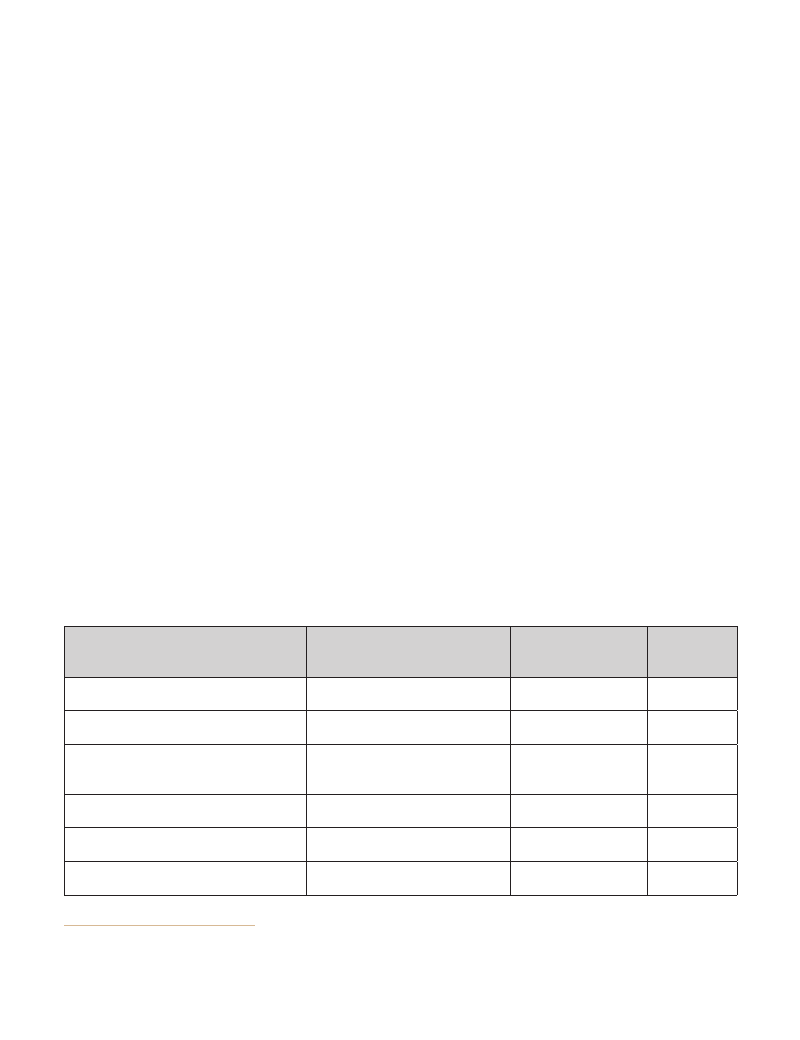
INDONESIA / 69
Indonesian Red Cross are also actively supporting the capacity building of regional government and logistical and health
centers, and promoting networking among regional crisis and logistical centers.
Building volunteerism in disaster management. Indonesia has witnessed a rapid growth of voluntary organizations
specializing in disaster management. In addition to the local disaster response volunteers (TAGANA) facilitated by the
Ministry of Social Affairs, the Ministry of Health and Red Cross are actively supporting the formation of volunteer brigades
by many organizations including faith-based charity organizations, Corporate Social Responsibility (CSR)-supported
groups, and even political parties. While the growth trend remains positive, the focus is still limited to emergency response
and less on risk reduction.
Lessons learned in rehabilitation and reconstruction from recent major disasters. Recent major disasters
such as the Indian Ocean Tsunami and the Yogyakarta and Central Java earthquakes provided Indonesia with significant
experience in recovery, rehabilitation and reconstruction as lessons for disaster risk reduction. The government through
BAPPENAS has established a joint secretariat for planning and management of disaster response (P3B) which has
been active in documenting and sharing development lessons. The implementation of major multi-donor funded initiatives
such as the Multi-Donor Fund for Aceh and Nias (MDF) and the Java Reconstruction Fund (JRF) offer lessons in both
donor coordination and collaborative approach among stakeholders, not to mention complex financial management.
Overall, DRR still needs to be mainstreamed in the recovery process and rehabilitation and reconstruction practices, and
to become the essence of successful recovery.
4. KEY DONOR ENGAGEMENTS
From recovery assistance to longer-term programmatic support. Following the 2004 Indian Ocean Tsunami
and the 2006 Java earthquake, Indonesia received significant size of international assistance mostly for post-disaster
reconstruction. But, as the recovery process reached completion, there have been continued support provided by the
international community on longer-term capacity building in disaster risk reduction, both as new programs and as part of
the recovery itself.
Existing Projects with Donors and
International Financial Institutions
Australia Indonesia Facility for Disaster
Reduction
Regular annual programming which include
support to DRR projects
Institutional revitalization project for Flood
Management; and Flash Flood Disaster
Management
Multi-disciplinary hazard reduction
Promoting Private Sector Role in Disaster
Risk Reduction in Indonesia
Safer Community through Disaster Risk
Reduction (SCDRR)
Funding Agency /
International Partners
Australian Agency for International
Development (AusAID)
Australian Agency for International
Development (AusAID)
Japan International
Cooperation Agency
Japan International
Cooperation Agency
US Agency for International
Development (USDAID)
UNDP
(w /support from DFID and AusAID)
Allocated
Budget and Period
(US$)
42 million
2009-2014
5 million/yr
annually programmed
-
2007-2010
2008-2011
-
2009-2011
300,000
2008-2010
18 million
2007-2011
HFA Activity
Area(s)
1,2,3,4,5
1,2,3,4,5
5
2,3,4,5
3,5
1,2,3,4,5
(Cont.)
10 Most of this funding is allocated mainly to rehabilitation and reconstruction activities. But, many of the activities include relevant DRR mea-
sures such as earthquake resistant structure, etc.

70 / Disaster Risk Management PROGRAMS FOR PRIORITY COUNTRIES EAST ASIA AND PACIFIC
Existing Projects with Donors and
International Financial Institutions
Mainstreaming DRR in Indonesia
Multi Donor Fund for Aceh and Nias
Reconstruction10
Java Reconstruction Fund10
Funding Agency /
International Partners
World Bank (GFDRR)
15 donors & managed by World Bank
7 donors & managed by World Bank
Allocated
Budget and Period
(US$)
1.25 million
2008-2010
692 million
2005-2012
94.06 million
2006-2010
HFA Activity
Area(s)
1,2,3,4,5
5
5
Building on the achievement of current GFDRR support. Indonesia has received support from GFDRR Track-II
at a relatively modest size ($1.25 million) relative to the size of the country and its disaster risks. The current funding
has supported the Government in three core areas: 1) the preparation of the new National Action Plan for Disaster Risk
Reduction, which will be more risk-based and will at the same time strengthen the newly formed National Platform as
a consultative forum; 2) capacity building of disaster management agencies in DRR, and 3) the preparation of a cata-
strophic risk insurance framework. In addition to the above core areas, the current funding also provides support to the
internal mainstreaming of DRR within the World Bank projects. While the current activities are on-going and creating a
strategic momentum for improving both the risk response planning, institutional capacity in DRR, and financing systems,
further support needs to be provided to follow through the current achievements into more concrete actions by the rel-
evant sectors and stakeholder groups.
5. GLOBAL FACILITY FOR DISASTER REDUCTION AND RECOVERY (GFDRR):
ACTION PLAN
Key development issues to be addressed. Considering the risk profile of Indonesia where hazard occurrences are
increasing while a large number of population become more exposed and vulnerable, development investment targeting
different aspects of risk reduction is urgently required. Four key issues will be addressed in the proposed scaled-up
GFDRR Track-II funded program, including: 1) the need to follow through the National Action Plan for DRR into key
targeted sectoral and regional investments, 2) the need to further strengthen disaster management agencies at the
central and local levels in building the appropriate risk analysis and risk-response systems, 3) the need to devise a more
comprehensive risk financing strategy including to incentivise concrete risk reduction measures (e.g., insurance linked to
the application of disaster resistant building standards), and 4) the need to showcase the importance of investing in ‘no-
regret’ solutions for DRR and climate adaptation (e.g., improving the quality of urban drainage and sanitation to prevent
flooding and water shortage).
Core areas for the scaled-up program. In response to the four key issues identified above, the proposed GFDRR
scaled-up program will target the following areas of engagement: 1) Mainstreaming DRR in regular development and
through post disaster recovery, 2) Capacity building of national and local DRM agencies including in risk assessment
and risk-response, 3) Supporting the Government’s effort to implement a comprehensive risk financing strategy linked to
DRR actions, and 4) Linking DRR and climate adaptation initiatives through pilot investment projects.
Leveraging national programs and donor assistance. As a global and flexible facility, GFDRR is best positioned to
leverage national programs and other donor assistance which exist in the form of larger programs. GFDRR can be used
to complement the government and donor programs to build a more integrated approach to DRM in Indonesia. Through
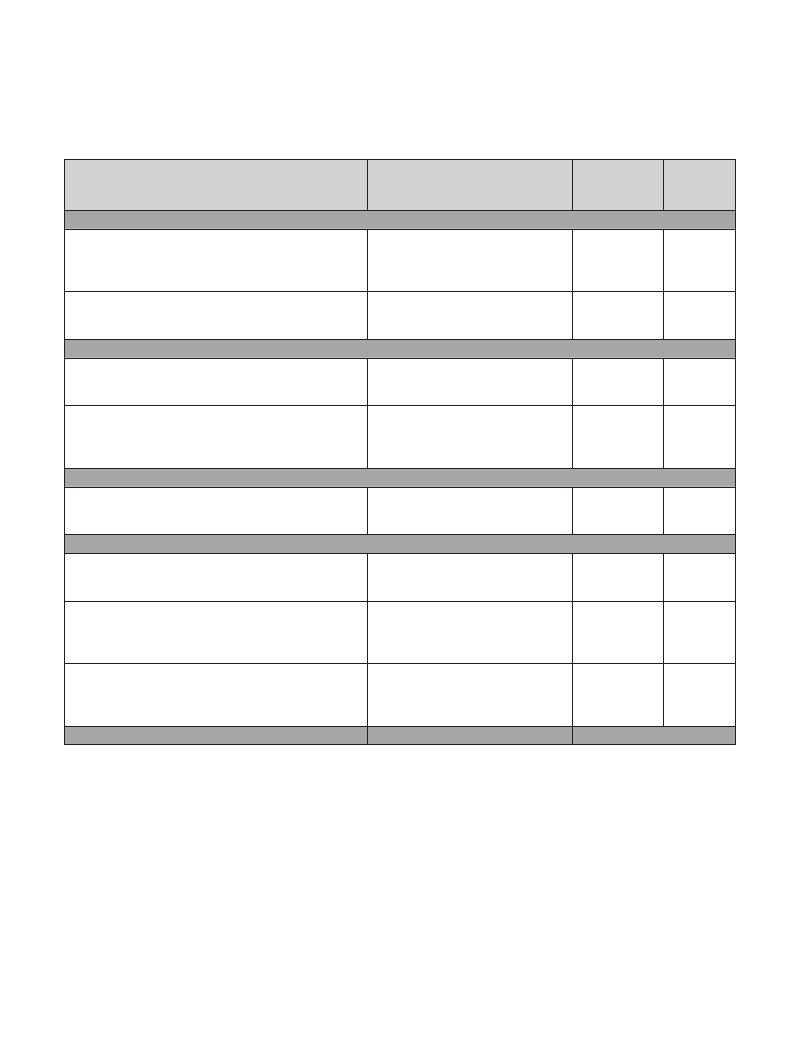
INDONESIA / 71
its Steering Committee mechanism for the current Track-II funding, key donor partners such as UNDP, the European
Commission, AusAID and JICA will continue to provide collective partnership under the leadership of the Government
(BNPB and BAPPENAS) in directing the program.
Indicative Program for GFDRR Funding
(Projects and engagement areas being considered
for GFDRR funding)
Implementing Agency /
International Partners
Indicative
Budget and
Period (US$)
HFA
Activity
Area(s)
I. Mainstreaming DRR in regular development and through post-disaster recovery
Support for the mainstreaming of DRR in: (i) sectoral
development programs; (ii) regional and local
development programs; (iii) World Bank and donor
financed development programs and projects
National Development Planning
Agency (BAPPENAS), Ministry of
Public Works, Local Governments,
Civil Society, World Bank
3.2 million
2009-2012
1,2,3,4,5
Support to the capacity development of Government of National Disaster Management
750,000
5
Indonesia’s efforts to mainstream DRR into rehabilitation Agency (BNPB), UNDP, World Bank 2009-2012
and reconstruction framework
II. Capacity building of national and local DRM agencies, including in risk assessment and risk-response
Support for the establishment and capacity building of
national, provincial and local disaster management agencies,
leveraging government and other donor programs
National Disaster Management
Agency (BNPB), Ministry of Home
Affairs, Local Governments
4 million
2009-2012
1,2,3,4,5
Technical Assistance for the development of national and
regional risk and impact assessment frameworks, tools
and methodologies
National Development Planning
Agency (BAPPENAS), National
Disaster Management Agency
(BNPB), World Bank
750,000
2,3
2009-2012
III. Support to comprehensive risk financing strategy linked to DRR actions
Technical Assistance for the development and
implementation of comprehensive risk financing
framework for Indonesia
Ministry of Finance, National
Development Planning Agency
(BAPPENAS), World Bank
1.6 million
5
2010-2012
IV. Linking Disaster Risk Reduction and Climate Adaptation
Support to national and local strategy for DRR and CCA
linkages
National Council for Climate
Change (DNPI), National Disaster
Management Agency (BNPB)
250,000
2009-2011
1,2,3,4,5
Pilot initiatives and investment in climate adaptation and
resilience in urban and rural communities to build alliance
among the DRR and CCA constituents and programs
National Council for Climate
Change (DNPI), National Disaster
Management Agency (BNPB), Local
Governments, Civil Society, World Bank
3.5 million
2009-2012
3,4,5
Support to implementation of disaster and climate proof
building codes and standards and micro zoning
Ministry of Public Works, National
Disaster Management Agency
(BNPB), Local Governments, Civil
Society, World Bank
1 million
2010-2012
3,4,5
Total Budget Requested:
US$ 15.050 million
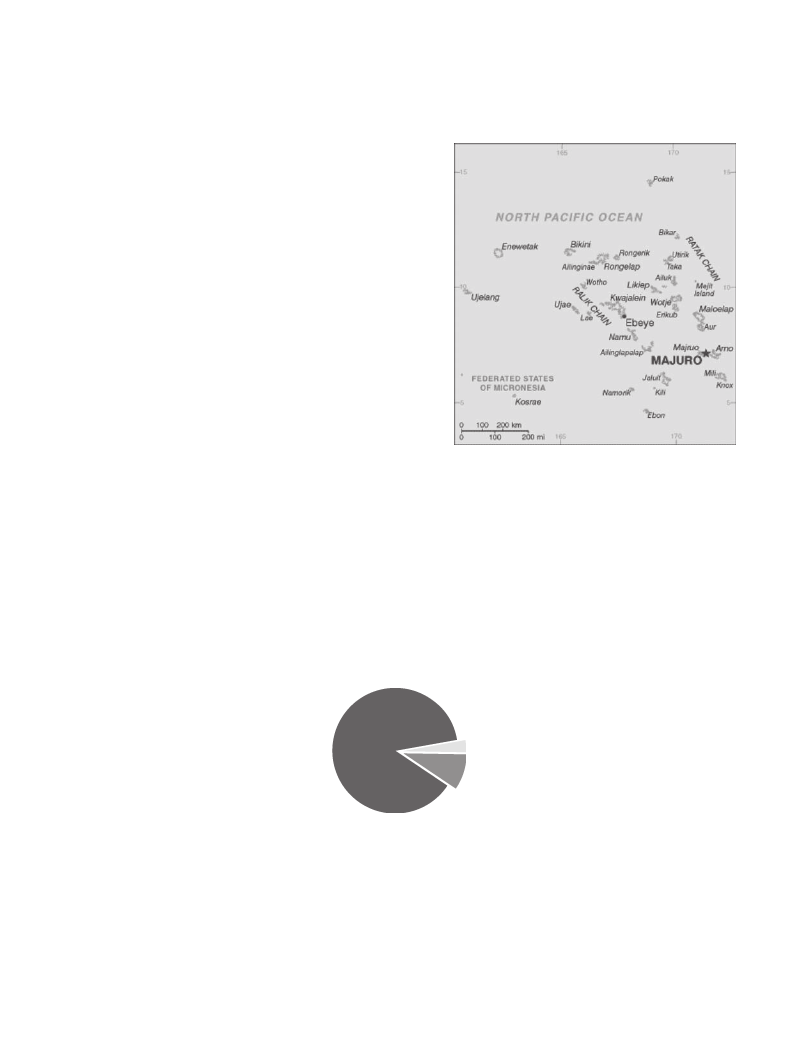
72 /
MARSHALL ISLANDS
1. disaster risk profile
The Republic of the Marshall Islands (RMI) consist of 29 low lying
atolls and five islands just west of the international date line and
north of the equator. Its land area is roughly 70 sq miles compared
with 700 sq miles of ocean surrounding the islands.
The major natural hazards facing the RMI are tropical storms,
typhoons, storm surge and drought. Additional challenges/
hazards include sea-level rise, coastal erosion, pollution of the
marine environment, ecosystem degradation and food security. The
hazard that poses the most threat to RMI is sea-level rise. Its highest
point is just 10 m above sea level.
The key natural hazards – tropical storms and typhoons, high surf and drought – are all climate-related and
expected to worsen with global warming. Moreover, the RMI faces physical, demographic and socio-economic
conditions which exacerbate vulnerability to the above hazards including high population density, a substantial poverty
rate, low elevation, limited fresh water resources and wide dispersal of the islands.
Major storms do not often affect the Marshall Islands. The last typhoons which caused substantial damage to the
Islands were Typhoon Gay and Tropical Storm Axel in 1992. However RMI is impacted by high wave action and ocean
swells after hurricanes in the neighboring Pacific Islands. The last major disaster to hit RMI was in late 2008. A storm
surge/coastal flood affected 600 people.
% People Affected by Disaster Type
Storm
88%
Epidemic
3%
Flood
9%
According to a 2008 World Bank assessment, while the list of hazards facing the RMI is comparatively
small, their potential for damage is significant as the islands two urban areas account for 60-70% of the
population. In terms of the country as a whole, the greatest impact would be from direct typhoon hits on the urban
centers of Majuro and Ebeye. The land has low elevation and is narrow; housing and most buildings are generally of poor
construction, not well maintained and tightly packed; there are no established agreed means of evacuation or identified
shelters to seek refuge; the airport would be unusable. Climate change is likely to increase the intensity, frequency, path
and other characteristics of typhoons.
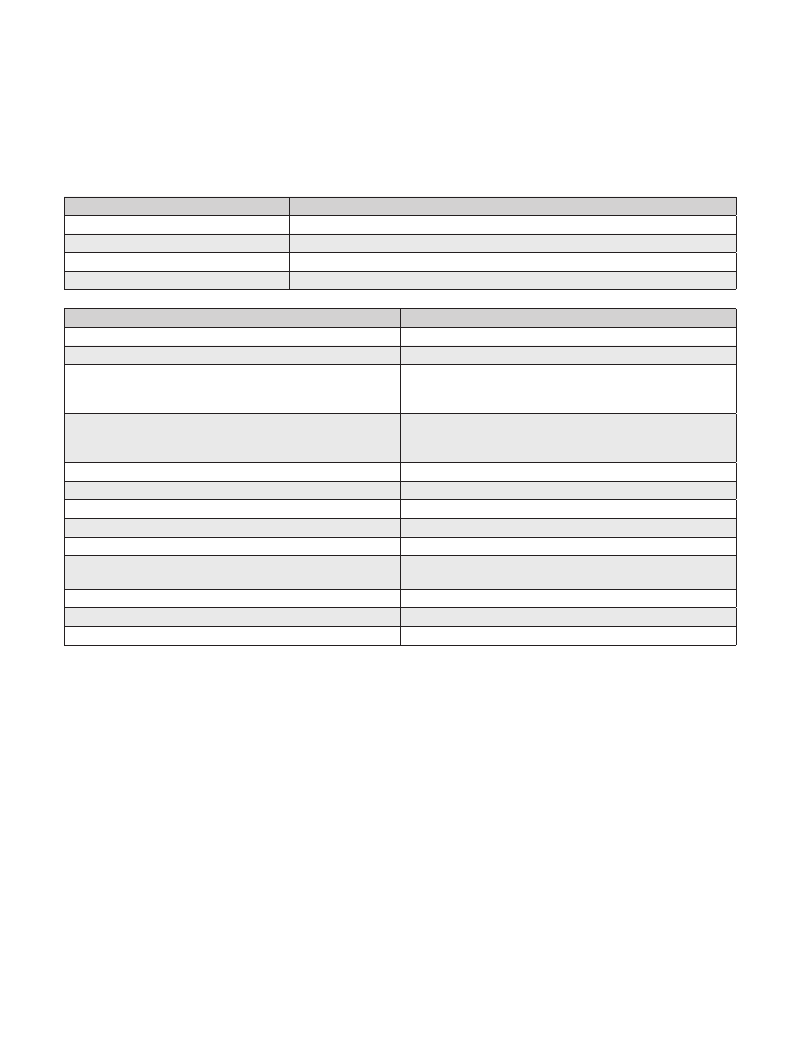
MARSHALL ISLANDS / 73
The inhabitants of the Marshall Island rely on rainwater for 95% of their fresh water.
A state of emergency was declared in 2007 after a prolonged drought depleted fresh water supplies. In 2008 the storm
surge and high tides caused widespread flooding in the capital city of Majuro and other urban centers, located at just
one meter above sea level and the government declared a state of emergency
Key Natural Hazards
Tropical Storms and Typhoons
High Surf
Drought
Key Man-made or Human-induced Hazards
Fire
Contamination of water supply
Outbreak of epidemic diseases
Commercial transport accidents
Official Language
Independence
Area
Capital
Land Use
Government
Population
GDP
HDI
Terrain
Climate
Natural resources
Major products
Main development donors
World Fact Book, World Bank Country Reports
Majuro (Delap)
Marshalese, English
October 21, 1986 (from the United States)
total: 181.3 sq km
land: 181.3 sq km
water: 0 sq km
arable land: 11.11%
permanent crops: 44.44%
other: 44.45% (2005)
constitutional government in free association with the US
64,522 (July 2009 est.)
Per capita $3070 (2007)
na
low coral limestone and sand islands
tropical; hot and humid; wet season May to November; islands
border typhoon b
coconut products, marine products, deep seabed mineral
copra cake, coconut oil, handicrafts, fish
United States
2. disaster risk management frameworK
In 1987, RMI passed its National Disaster Management Plan. Seven years later, the enactment of the Disaster
Assistance Act established a National Disaster Management Committee and a National Disaster Management Office
(NDMO) located in the Office of the Chief Secretary. In 1994, the RMI also passed a Hazard Mitigation Plan, a National
Disaster Manual, and an Airport Disaster Plan. A Drought Disaster Plan was passed in 1996, followed by the drafting of
a revised National Disaster Management Plan in 1997. The most recent legislative activity in disaster risk management
was the development of a Standard Hazard Mitigation Plan in 2005. The draft NAP is linked to the RMI development
policy.
The National Action Plan for Disaster Risk Management (NAP) aligns itself both with the regional policy framework (i.e.
the Pacific Regional Framework for Action on DRR & DM) and the national policy framework. AUSAID - SOPAC has
plans to support a NAP Disaster Facility to assit the RMI in establishing its DRM framework.

74 / Disaster Risk Management PROGRAMS FOR PRIORITY COUNTRIES EAST ASIA AND PACIFIC
NAP Goals and Outcomes for RMI
Goal 1: Establish an enabling environment for improved DRM in RMI
Outcome: Well-functioning Institutions and Systems for Disaster Risk Management
Goal 2: Mainstream DRM in planning, decision making and, budgetary processes at national and local
levels
Outcome: DRM is mainstreamed in all relevant processes at all levels, and in all relevant sectors
Goal 3: Improve capacity for emergency preparedness and response at all levels
Outcome: Organizations and agencies at all levels are well prepared and resourced to respond todisasters
Goal 4: Build a strong and resilient DM early warning and emergency communication systems
Outcome: Effective early warning and communication between Majuro, Ebeye and the Outer Islands at all times
Goal 5: Access to safe and adequate clean water at all times
Outcome: Reduced vulnerability to water-related hazards and water-shortages resulting from hazards.
Goal 6: Sustainable development of the coastal area
Outcome: Reduced vulnerability to coastal hazards
Goal 7: Reduce economic dependency of the Outer-Islands
Outcome: Improved Outer-Island resilience to hazards
Goal 8: Improve understanding of the linkages between zoning, building codes, and vulnerability to
disasters
Outcome: Decision-makers and public more receptive to the need for adequate zoning and building codes in
reducing vulnerability
Goal 9: Raise the awareness of DRM amongst the public
Outcome: Public are better informed of National and Outer Island DRM issues
Goal 10: NAP implementation and impact is monitored and reviewed on a regular basis
Outcome: The NAP is effectively implemented and kept up to date
Source: GFDRR Country Assessment Marshall Islands 2008
3. activities under the hyogo framework of action
HFA Priority #1: Ensure that disaster risk reduction is a national and a local priority with a
strong institutional basis for implementation
THE NATIONAL DRM AGENCY
The overall coordination of disaster management falls under the National Disaster Committee (NDC)
and its operational arm, the National Emergency Management and Coordination Office (NEMCO). They
have traditionally focused on post disaster response, not disaster prevention mitigation or CCA activities. The NDC is
chaired by the Chief Secretary and the NEMCO falls under the Chief Secretary Office (CSO), reporting directly to the
President.
In response to the growing importance and attention to DRR and the implementation of the National Action
Plan for Disaster Risk Management (NAP), an implementation unit (NAPIU) will be established under the
CSO. There is currently a lack of resources and funding for the NAP implementation unit.

MARSHALL ISLANDS / 75
While the NDC meets regularly, it is also responsible for other tasks outside the national disaster issues;
meetings cover a wider scope and include emergency relief coordination and planning efforts. Disaster risk
management is regularly discussed by the sub-group of the NDC which is the DRM NAP Task Force. This group also
meets regularly. The Task Force is chaired by the Deputy Secretary.
DRM LEGISLATION
In 1987, RMI enacted the Disaster Assistance Act. Several laws such as the National Environmental Protection Act
(1984), the Planning and Zoning Act (1987), and the Coast Conservation Act, 1988 all provide a good framework and
require specific measures to be undertaken to prevent further environmental degradation.
DRM AT THE SUB-NATIONAL LEVEL
Local government has been engaged throughout the development of the NAP. The NAP requires that all Atoll Local
Governments to develop their own disaster risk management action plans.
DRM IN THE POVERTY REDUCTION STRATEGY
In terms of national development policy and priorities, the Government charted the Vision 2018: The
Strategic Development Plan Framework 2003-2018 which establishes the overall development priorities
for the RMI and sets the first segment of the Government’s Strategic Development Plan for the next 15
years. The Strategic Development Plan will consist of Master Plans which are mandated under the Vision 2018 focusing
on major policy areas, and the Action Plans of Ministries and Statutory Agencies. Although Vision 2018 was drafted
before the recent attention to DRR, it is felt within RMI government that its goals remain broad and flexible enough to
accommodate the emphasis on DRR without amendment
The National Action Plan for Disaster Risk Management (NAP) aligns itself both with the regional policy framework (i.e.
the Pacific Regional Framework for Action on DRR & DM) and the national policy framework (i.e. Vision 2018 and its
Master and Action Plans).
INTERMINISTERIAL INVOLVEMENT IN DRM
The other agencies which have a role in DRM include:
• Environmental Protection Agency (RMIEPA) – RMIEPA was created under the National Environmental Protection
Act of 1984 and carries out multiple responsibilities including water quality monitoring, solid waste monitoring, public
awareness and coastal management.
• The Office of Environmental Planning and Policy Coordination (OEPPC) was established to provide policy advice to
the President and Cabinet; to ensure adequate attention is given to addressing the RMI’s international commitments
made through the international treaties; to ensure that activities arising from associated international Conventions are
linked to national priorities and to collaborate with other Government Partners/NGOs and Communities in implement-
ing environmental projects/programs.
• The Marshall Islands Marine Resources Authority (MIMRA). MIMRA is responsible for coordinating and regulating the
exploration, exploitation and management of marine resources.
• The Ministry of Resources and Development is responsible for preparing much of the adaptation and response to the
impacts of climate change as they arise.
• The Majuro Water and Sewer Company (MWSC) is responsible for the operation of the water supply, treatment and
distribution systems.
• The National Disaster Management Committee (NDC) and is for responsible of overall coordination of disaster relief
operations.
• The National Emergency Management and Coordination Office (NEMCO) is the operational arm of the NDC. It is

76 / Disaster Risk Management PROGRAMS FOR PRIORITY COUNTRIES EAST ASIA AND PACIFIC
responsible for disaster response (not prevention); under the CSO.
• Marshall Islands National Weather Service is supported by the US National Oceanic Atmospheric Administration
(NOAA) and provides weather, hydrologic, and climate forecasts and warnings for the Marshall Islands, its territories,
adjacent waters and ocean areas.
CLIMATE CHANGE AND DISASTER RISK MANAGEMENT
RMI adopted its Climate Change Strategic Plan in 2006. It was a short term strategic plan developed in line with
the Vision 2018 and based on group and regional discussions, public consultations and needs assessments conducted
by OEPPC. This plan would lay the groundwork for establishing a longer-term climate change strategy for RMI. The
strategic focus areas of this plan are:
• Institutional strengthening and capacity building
• Initial support to existing energy programs in the context of climate change
• Meet RMI’s obligations under the United Nations Framework on Climate Change
• Clearinghouse mechanism
• Public Awareness
• Link climate change to development through policy
• Building capacity in adaptation to climate change and develop a plan
HFA Priority #2: Identify, assess and monitor disaster risks and enhance early warning
NATIONAL, REIONAL AND LOCAL SECTORAL RISK ASSESSMENTS
Factoring in climate change into RMI’s risk mapping is an extremely high priority and urgent need given
the country’s low lying atolls. The Marshall Islands Resources Authority (MIMRA) has begun with marine resources
mapping surveys which consider future climate change but is in need of both improved technology and human resource
development.
EARLY WARNING SYSTEMS
Different agencies have roles in hazard monitoring and no one agency is responsible. The National Weather
Service has an advanced warning system available for all the islands. The DRM NAP will formalize the responsibility and
give the responsibility to one agency. There is a relatively solid based of knowledge, data and tools for some sectors in
RMI particularly in terms of climate data. However there are some important gaps in mapping, monitoring and related
activities. The NAP provides a framework for implementing risk reducing activities and risk assessment which would be
founded on sufficient data and an understanding of the dynamics of the process. Therefore it is critical to develop an
information management system wherein there is a system of organization, storage and sharing of data and information,
including communication and sharing with outer islands.
FORECASTING
RMI relies on Meteorological Service Unit owned and supported by the US National Oceanic and Atmospheric
Administration’s (NOAA) National Weather Service and operated by RMI nationals contracted by NOAA. There
are two tidal gauges (the longer established gauge provided by the University of Hawaii and the more recent Sea-Frame
gauge, supported by Australia) which record sea-level data and are readily accessible. The record of temperature,
precipitation, wind and pressure data are archived and available for time periods and forms which facilitate a range of risk
and climate change reviews and assessments. These are housed at the U.S. National Climate Data Center. These data
has been used for three month climate and rainfall forecasts but could be further utilized for DRR/CCA activities.

MARSHALL ISLANDS / 77
Both the UNDP partnership in the Pacific Disaster Network and the SOPAC Pacific Disaster Network project will also
strengthen technical skills for integrating an integrated hazards information system
DATA SHARING
Developing an information management system should be a priorty for the RMI. There is no centralized
system for natural hazard information management and no method to facilitate the storage and sharing of basic and
the RMI would benefit from a low-tech” starter system to facilitate simple MIS with the goal of having all sector actors
utilizing the same data base for all phases (conceptualization, planning, implementing, benchmarking, monitoring and
follow up).
HFA Priority #3: Use of knowledge, innovation, and education to build a culture of safety and
resilience at all levels
PUBLIC AWARENESS
There is a need for increased community awareness about natural hazards, an activity which will be
covered under SOPAC’s programming. However, in the preparation of the NAP, there was extensive consultation
with government officials, line agencies, mayors, the private sector and local communities. They were made aware of the
government’s commitment to the DRR and CCA principles as well as the opportunities and benefits of risk reduction.
There is a need to continue this participatory approach to further reinforce the message.
INFORMATION MANAGEMENT AND EXCHANGE
Regional organizations such as SOPAC provide an important networking partnership that link the DRM
NAP development and implementation processes with other organizations within and outside country.
Much needed technical assistance is also provided by the network partners. As stated above, however, there is need for
a centralized system to store and share hazards data.
RESEARCH
RMI has two institutes studying hazards and vulnerabilities. The first is the School of the Pacific Rainfall
Climate Experiment which is a collaborative field project involving schools (from elementary to university level) and local
meteorological services from the PICs, atolls and the US Mainland. Its headquarters is at the University of Oklahoma.
This program seeks to educate students on environmental issues and enhance the science programs in the participating
schools. The students collect data that is used for climatological research and are part of the study of weather patterns
in the Pacific.
The second program is the South Pacific Sea Level and Climate Monitoring project that is managed by the Flinders
University of South Australia. Under this program, 11 SEA Level Fine Resolution Acoustic Measuring Equipment
(SEAFRAME) stations were established in the Pacific Islands and one of them is located in the Marshall Islands. Data
from these monitoring stations will provide the PICs access to data on climate variability and the impact of GHG and this
will help RMI in planning and developing strategies to respond to the issues.
HFA Priority #4: Reduction of the underlying risk factors (reduction of exposure and vulnerabil-
ity and increase of resilience)
ENVIRONMENTAL AND NATURAL RESOURCE MANAGEMENT
Development in the country has not taken into account current and future risks. With its fragile eco system
and dense population, there is urgent need to safeguard the RMI’s natural resources, particularly its clean

78 / Disaster Risk Management PROGRAMS FOR PRIORITY COUNTRIES EAST ASIA AND PACIFIC
water supply. The RMI is poised to embark on a number of projects, especially as regards bolstering water supply
systems in order to reduce the risks from drought. These include both individual and community water-harvesting
projects. However, in general, these projects are not taking climate variability and change explicitly into account in terms
of designing to acceptable levels of risk.
The SOPAC-GEF project in Integrated Water Management and Development Plan for Laura Groundwater Lens, Majuro
will go some of the way to addressing this issue with $500,000 in GEF funding and $3,362,583 in other donor funds.
LAND USE PLANNING
At the national level, integration of disaster risk into land use planning provisions may be in place, but
implementation falls short at the local level and unregulated costal development poses a serious threat
to the islands. For example, in order to avoid further coastal degradation and reduce risks, the Coastal Conservation
Act 1988 and the National Environmental Protection Act 1984 provide the enabling provisions, but local governments
who are responsible for enacting ordinances for land-use zoning requirements have not done so. As a stop-gap, the EIA
regulations have been used on selected case-by-case bases. The Coastal Management National Framework, approved
by RMIEPA but not yet endorsed by Cabinet, will hopefully provide a basis for filling the gap. In terms of fire risk, the lack
of land-use planning and zoning has resulted in houses being built too close together in overly narrow streets, resulting
in a major fire risk for parts of Majuro and Ebeye. The NAP seeks to mainstream DRM into the planning, decision making
and budgetary processes across a broader sectoral arena at both national and local levels.
BUILDING CODES
Reviewing and revising draft building codes is essential for sustainable development in the islands. Each
donor or entity is responsible for implementing its own building codes as, despite having been drafted over a decade
ago, building codes have not been enacted. There is currently no control over design and location of buildings and high
density, structurally-deficient buildings pose health and fire hazards, especially in areas of rapid urbanization.
HFA Priority #5: Disaster preparedness, recovery and reconstruction at national, regional, and
local levels
RISK FINANCING
The Disaster Assistance Account was established under Disaster Assistance Act. This account is under the
supervision and control of the Ministry of Finance. When there is a disaster, the amount utilized will appropriated
in the budget for the next financial year but the fund should maintain a continuous balance of $200,000 at the beginning
of each fiscal year. However, it is very difficult to get critical capital expenditures required for risk reduction explicitly
targeted in the budget due to a lack of willingness, awareness and accountability as well as lack of available funds.
There is a stationary fund which is only drawn upon in the event of a disaster (not for prevention or
preparedness). If disaster does not strike, the funds accumulate (at present, the fund has US $2 million). The funds
are appropriated in the Annual Appropriation Act for the following year based on the amount utilized in the current year.
However, if the need arises for additional funding due to a disaster, the Chief Secretary in consultation with NDC will
submit his/her request to the Ministry of Finance.
The government does not have mechanisms for compensation either for public or private assets damaged by a natural
disaster. Compensation will be given only if the property was taken and used for coping with the disaster and only upon
order by the Cabinet or NDC. All claims shall be filed with the Office of the Chief Secretary.

MARSHALL ISLANDS / 79
Under an amended agreement, the RMI will be able to request disaster assistance from USAID in a
declared state of emergency, after utilizing the national Disaster Assistance Emergency Fund, (established
by the amended Agreement as a first resource for disaster response), and requesting international assistance through
the United Nations
EMERGENCY MANAGEMENT
National Emergency Management and Coordination Office (NEMCO) is in charge of emergency response
in RMI and is headed by the Chief Secretary. The Emergencies Act 1979 outlines the steps for declaring a state
of emergency but does not provide for an early warning protocol.
Under the COMPACT, RMI has access to the programs of the Department of Homeland Security/Federal
Emergency Management Agency (FEMA). USAID will be expanding its role in this arena and will be focusing on
training and capacity building in order for RMI to take full responsibility for DRM and even DRR.
REGIONAL APPROACHES AND PARTNERSHIPS
RMI works closely with the neighboring countries in the Pacific and is part of many regional partnerships/
treaties. Because they are vulnerable to extreme weather events which affect not only their country but also their
neighbors, it is beneficial to collaborate in responding to this common issue. One such initiative is the Micronesia
Challenge wherein the participant countries aim to conserve 30 % of marine resources and 20% of forest resources.
RMI has a mutual assistance agreement with the United States under the Compact of Free Association.
Moreover, RMI works with several key international development assistance partners in DRM, including:
the United States, Republic of China, Japan, the EU, AusAID, SOPAC and the Asian Development Bank. RMI and
the US have a strong relationship of mutual assistance covered under the Compact of Free Association (COFA). In
exchange for certain defense rights including the lease of 11 islands on Kwajalein Atoll, the US provides guaranteed fi-
nancial assistance through the Office of Insular Affairs. RMI participates in many of the TA activities under this Office and
has access to many US domestic programs including disaster preparedness, response and recovery program through
the Department of Homeland Security (DHS)/Federal Emergency Management Agency (FEMA). RMI has several on-
going projects with EU/AusAID and SOPAC. Possible future players may include UNDP, UNICEF, IFRC and regional
organizations as Secretariat of Pacific Community (SPC).
4.key donor engagements
One of the major donors in RMI is the United States. RMI has a mutual aid agreement with the US. In exchange for
defense rights, the US provides support for capital improvements and development assistance.
The Asian Development Bank (ADB, through its Regional Environment Technical Assistance Project, facilitated the
preparation of the National Environment Management Strategy (NEMS). Recently ADB prepared a Regional Technical
Assistance Report on Regional Partnerships for Climate Change Adaptation and Disaster Preparedness. This TA was
undertaken as part of ADB’s contribution to a World Bank led initiative looking at the feasibility of a catastrophe insurance
scheme for the Pacific.
The Pacific Regional Environment Programme (SPREP) conducted an in-depth study on the potential impact of expected
climatic changes (primarily sea-level and temperature rise) in the Marshall Islands.
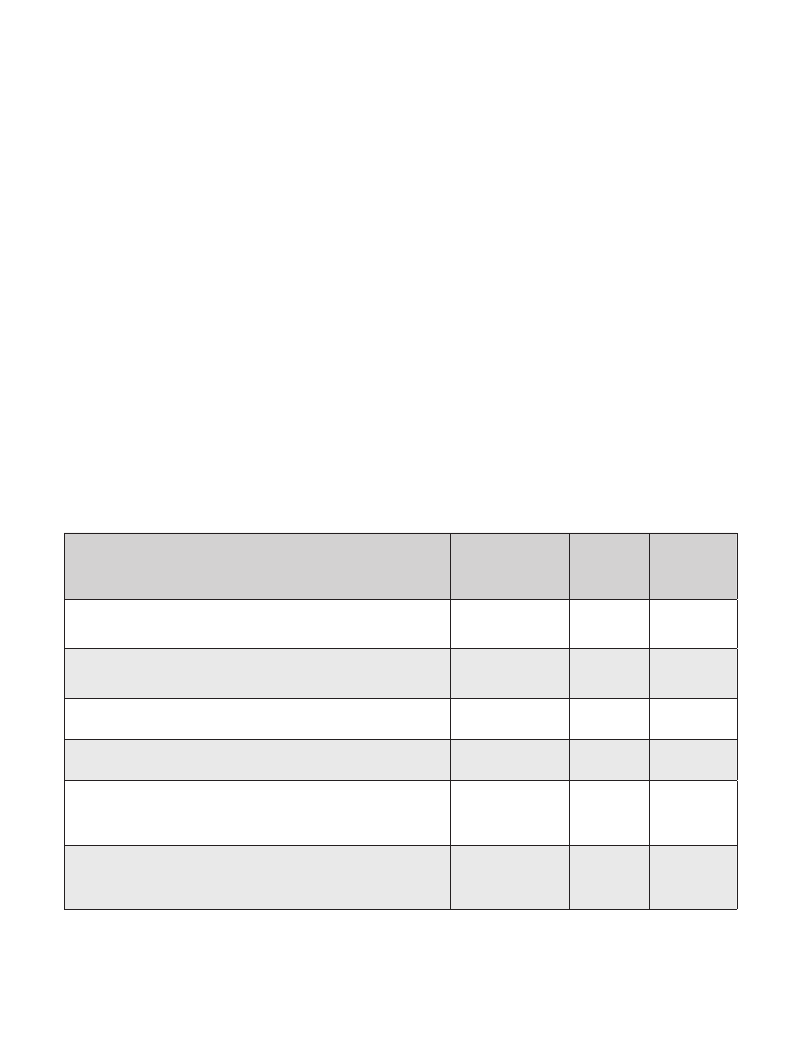
80 / Disaster Risk Management PROGRAMS FOR PRIORITY COUNTRIES EAST ASIA AND PACIFIC
The Pacific Islands Applied Geoscience Commission (SOPAC) provides technical assistance to RMI through its (a)
Ocean and Islands Programme for the Marshall Islands; (b) Community Risk Programme; and (c) Reducing Vulnerabilities
of Pacific ACP States.
Through the Pacific Islands Climate Change Assistance Program (PICCAP), RMI prepared its First National
Communication Report to the UNFCCC. PICCAP is funded by GEF and its main goal is to assist countries to build
sustainable capacities to accomplish the required activities under the convention.
UNDP and GEF have also been RMI’s partners in addressing climate change issues. The following programs were
either implemented/funded/overseen by UNDP Fiji MCO: (a) National Capacity Self Assessment (NCSA) (GEF-
US$225,000) provides tools/guidance in complying with their obligations to UNFCCC, UNCBD and UNCCD; (b)
Second National Communications to UNFCCC: Stocktaking Exercise and Enabling Activity (US$420,000) – provides
assistance in preparing the SDN for submission to UNFCCC; (c) Action for the Development of Marshall Islands
Renewable Energy (ADMIRE) (Budget US$2,6500,000; GEF US$1,000,000) – aims to broaden scope and utilization
of renewable energy; (d) Coconut Bio-Fuel (UNDP-US$30,000) – explores the use of coconut products as a source of
electricity for rural communities; (e) Regional Energy Program for Poverty Reduction (UNDP, Bangkok – US$2,782,500)
– aims to contribute towards MDG targets through energy initiatives. In addition, UNDP PC provides funding to SOPAC
for Mainstreaming Disaster Risk Management and Adaptation to Climate Change (ACC) into National Development
Planning (Budget US$500,000 for all PICs)
The World Bank, together with ADB and with funding provided by GFDRR and PFIII, are currently undertaking a Feasi-
bility Study Catastrophic Risk Pool. They are also conducting Regional and Country Assessments as part of the TA for
Sustainable Management through Reduced Risk from Disaster and Climate Variability in the Pacific Islands.
Existing Projects with Donors and International Financial
Institutions
Sustainable management through reduced risk from disasters and climate
(Fiji, Kiribati, Marshall Islands, Papua New Guinea, Solomon Islands,
Timor-Leste, Vanuatu )
Pacific Catastrophe Risk Pool Feasibility Study
Regional Technical Assistance Report on Regional Partnerships for
Climate Change Adaptation and Disaster Preparedness.
Funding Agency /
International
Partners
World Bank
World Bank
ADB
Allocated
Budget
and Period
(US$)
2008 –
present
$1,900,000
2008 -
present
$400,000
n/a
HFA Activity
Area(s)
2,3,4,5
1,2,5
1,2,4
Preparation of the National Environment Management Strategy (NEMS)
ADB
n/a
1
Ocean and Islands Programme for the Marshall Islands;
Reducing Vulnerabilities of Pacific ACP States. (Fiji, Papua
New Guinea, Samoa, Solomon Islands Tonga, Tuvalu and
Vanuatu, Cook Islands, Federated States of Micronesia, the Marshall
Islands, Nauru, Niue and Palau.)
The Pacific Islands
n/a
Applied Geoscience
Commission
(SOPAC)
The Pacific Islands
Applied Geoscience
Commission
(SOPAC) /EU
4
1,2
(Cont.)
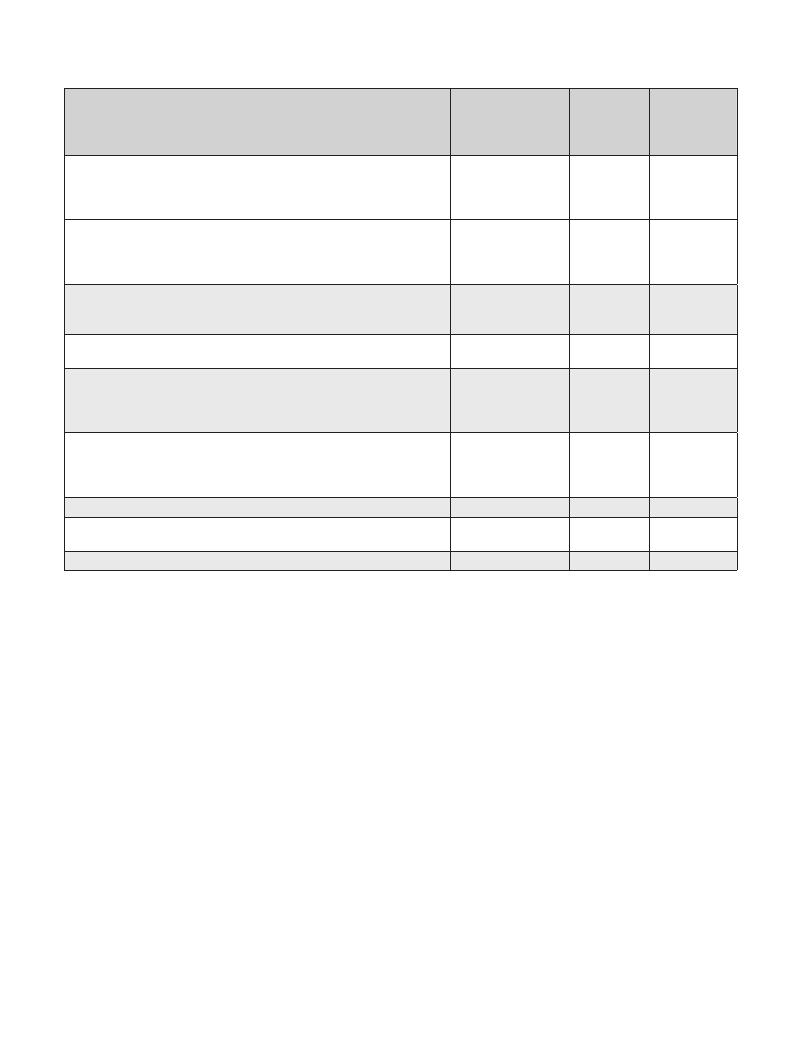
MARSHALL ISLANDS / 81
Existing Projects with Donors and International Financial
Institutions
Community Risk Programme
Pacific Islands Disaster Assistance Program (PDAP): The Cook Islands,
Fiji, Kiribati, Niue, Palau, Papua New Guinea, Samoa, Solomon Islands,
Tonga, Tuvalu, and Vanuatu , Federated States of Micronesia and the
Republic of the Marshall Islands.
Pacific Islands Climate Change Assistance Program (PICCAP), (Cook
Islands, Federated States of Micronesia, Fiji, Kiribati, Marshall Islands,
Nauru, Samoa, Solomon Islands, Tuvalu and Vanuatu)
EDF 9 B Envelope – Upgrading monitoring and early warning systems
Pacific Islands Climate Prediction Project
(Cook Islands, Fiji, Kiribati, Niue, Samoa, Solomon Islands, Tonga, Tuvalu,
Vanuatu, Papua New Guinea)
South Pacific Sea Level and Climate Monitoring Project (Cook Islands,
Federated States of Micronesia (FSM), Fiji, Kiribati, Marshall Islands,
Nauru, Papua New Guinea (PNG), Samoa, Solomon Islands, Tonga, Tuvalu
and Vanuatu.)
NAP Disaster Facility
Pacific Disaster Net
Project in Integrated Water Management
Funding Agency /
International
Partners
The Pacific Islands
Applied Geoscience
Commission
(SOPAC)
USAID/OFDA
SPREP
European Union
AUSAID and the
Australian bureau of
Meteorology
AUSAID
AUSAID
SOPAC, UNDP,
UNOCHA, IFRC
SOPAC-GEF
Allocated
Budget
and Period
(US$)
2008-12
3.2 million
euro
US$ 2.2
million
2004 -
present
1991 -
2010
2009-2011
$500,000
HFA Activity
Area(s)
3,4
5
4
2
2
1,2,3
3,5
4
5.global facility for disaster reduction and recovery (gfdrr):
action plan
Based on the GFDRR funded Country Assessment of RMI, six priority areas were identified:
• Strengthening the capacity of National Emergency Management and Coordination Office (NEMCO);
• Developing an information management system;
• Enhancing community-based awareness, education and participation in risk-reduction and resilience-building;
• Climate-proofing new water supply developments;
• Reviewing and revising draft building codes; and
• Early warning response
Two of these priority areas are already or likely to be supported by other donors or agencies – awareness raising slated
to be taken up by SOPAC and early warning response has a host of interested donors coordinated by SOPAC.
The World Bank could support the remaining four priority areas as follows:
• Strengthening the capacity of the National Emergency Management and Coordination Office (NEMCO),
under which the NAP Implementation Unit (NAPIU) will operate. The support would be for Technical Assistance. The

82 / Disaster Risk Management PROGRAMS FOR PRIORITY COUNTRIES EAST ASIA AND PACIFIC
success of the NAP will depend heavily on the NAPIU, and this, in turn, depends heavily upon ensuring that NAPIU
has strong capacity for technical advice, leadership and coordination. The NAP has been produced by an extensive,
inclusive process of consultation, including local government, civil society and the private sector, which, as a result,
has garnered significant in-country commitment. The institutional arrangements, placing the NAP within DRC/NEMCO
under the Chief Secretary’s Office within the Office of the President, gives it strong positioning within government.
Within three years, the preliminary implementation plan would be advanced and set the stage for implementation of
the longer-term action plan.
• Developing an information management system. Such a system does not currently exist. The actions under the
NAP (and other DRR and CCA actions) require cross-sectoral, cross-governmental (national to local) collaboration
and integration of effort. And that requires a systematic system of organization, storage and sharing of data and
information, including communication and sharing with outer islands. Technically, such a system could be established
well within a three-year period, and, once established, would have long term benefits in facilitating integrated action
across agencies and sectors. To be successfully implemented, the information system would have to be strongly
championed by NEMCO.
• Climate-proofing new water supply developments. The RMI is poised to embark on a number of projects,
especially as regards bolstering water supply systems in order to reduce the risks from drought. These include
both individual and community water-harvesting projects. However, in general, these projects are not taking climate
variability and change explicitly into account in terms of designing to acceptable levels of risk. Here is an excellent
opportunity, with minimal additional support required, to maximize the synergy between DRR and CCA with actual on-
the-ground risk-reducing measures. The climate-proofing measures would be “added value” to efforts that are current
getting underway to enhance water supply systems. The time-frame for implementation is short, well within three years.
The “on-the-ground” benefits, however, are long-term, and promote sustainable water resources in the face of future
climate change.
• Reviewing and revising draft building codes, ensuring that DRR and CCA are incorporated explicitly. While
RMI has had draft building codes for nearly two decades, they have never been enacted by local government. The
government of RMI, as voiced by the NRC, the OEPPC and the EPPSO, stresses the paramount importance of
getting building codes in place. While there has been failure to enact draft codes in the past, it is felt that the
circumstances are changing and are now more favorable for enactment, particularly if efforts at awareness raising and
greater participation in DRR and CCA are pursued. The reviewing and revising of draft building codes is contained
with the NAP as an action and is highlighted by the DRC as a priority. The required time-frame is short, within three
years, but the benefits, if enacted, are long-term and sustainable in terms of resultant effects.
Indicative Program for GFDRR Funding
(Projects and engagement areas being considered for
GFDRR funding)
Facilitate Implementation of the NAP through providing TA support
to the NAP Implementation Unit (NAPIU)
Priority Activities:
–Establish the NAPIU to lead the NAP implementation
–Develop DRR/CCA policies and work with Govt ministries and
local Govt to build an enabling environment for mainstreaming
DRR/CCA in RMI.
Implementing Agency /
International Partners
CSO with NDC, NEMCO
Indicative
Budget and
Period
(US$)
$500,000
2009-2011
HFA
Activity
Area(s)
1,2,4
(Cont.)

MARSHALL ISLANDS / 83
Indicative Program for GFDRR Funding
(Projects and engagement areas being considered for
GFDRR funding)
Establish Integrated Hazards Information System and Tools (with
GIS capability)
Priority Activities:
– Provide TA support for the development of an integrated hazards
information system including:
–Develop and adopt a Hazards Information Policy addressing:
–Assess data needs and products for DRR/CCA
–Identify long term storage requirements, analysis tools and
mapping needs
–Acquire appropriate computer hardware, software and high speed
Internet connection
–Support capacity building through populating the information
system with available historical data and undertaking vulnerability
mapping and risk modeling for CC & risk prediction
Climate-proofing water supply systems
Priority Activities:
–Identify and establish collaborative arrangements with donors,
government agencies, private sectors, and communities involved
in water supply
–Develop and pilot a climate-proofing approach to a new water
harvesting initiative, involving:
1.Assessing the system design with respect to risks of drought
(present and future);
2. Consultation with water consumers and system designers
concerning acceptable levels of risk;
3.Assessment of options for reducing the risks;
–Build in-country capacity to implement the approach and tools;
–Incorporate the climate-proofing approach and methods into the
wider programme of water supply developments.
Review, revise and promote building codes
Priority activities:
–Review the draft building codes and identify potential areas for
improvement and strengthening with respect to risk reduction.
–Develop preliminary set of options for revision covering range of
hazards
– Hold consultative workshops with local governments and
communities in order to incorporate stakeholder views and
preferences
–Revise draft based on outcomes of consultation
–Identify key proponents of building codes within government and
promote government approval.
Total Budget Requested
Implementing Agency /
International Partners
CSO with NAPIU, EPA,
Met Services, MWSC,
R&D, MIMRA, EPPSO, IA
EPPSO, with EPA,
Weather Office, Min. of
Internal Affairs, PWD
CSO with NDC, NEMCO
Indicative
Budget and
Period
(US$)
$300,000
2009-2011
$500,000
2009-2011
$200,000
2009-2011
$1.5 million
HFA
Activity
Area(s)
2
4
4

84 / Disaster Risk Management PROGRAMS FOR PRIORITY COUNTRIES EAST ASIA AND PACIFIC
6. bibliography
ADB Regional Technical Assistance Report on Regional Partnerships for Climate Change Adaptation and Disaster Preparedness.
2008 (http://www.adb.org/Documents/TARs/REG/41187-REG-TAR.pdf)
Bettencourt, Sofia, Richard Croad, Paul Freeman, John Hay, Roger Jones, Peter King, Padma Lal, Alan Mearns, Geoff Miller, Idah
Pswarayi-Riddihough, Alf Simpson, Nakibae Teuatabo, Ulric Tritz, Maarten Van Aalst ‘Not If, But When: Adapting to Natural Hazards
in the Pacific Island Region’ The World Bank. 2005
Climate Change Strategic Plan (2006), Office of Environmental Planning and Policy Coordination (OEPPC), Office of the President,
Majuro.
Coast Conservation Act 1988. Marshall Islands Consolidated Legislation. Accessed 3/26/09
<http://www.paclii.org/mh/legis/consol_act/cca1988217/>
Community Risk Programme for the Marshall Islands. Pacific Islands Applied Geoscience Commission, SOPAC. Accessed
3/26/09. <http://www.sopac.org/Community+Risk+Programme+for+The+Marshall+Islands>
Disaster Assistance Act 1987. Marshall Islands Consolidated Legislation. Accessed 3/26/09.
<http://www.paclii.org/mh/legis/consol_act/daa1987208/>
Draft Country Assessment – Marshall Islands, World Bank, 2009
Marshall Islands Interim national progress report on the implementation of the Hyogo Framework for Action 2008 (http://www.
preventionweb.net/files/7500_MarshallIslands.pdf)
Ocean and Islands Programme for the Marshall Islands. Pacific Islands Applied Geoscience Commission, SOPAC. Accessed
3/26/09. <http://www.sopac.org/Ocean+and+Islands+Programme+for+
The+Marshall+Islands>.
Pacific Environment Information Network (PEIN) Country Profile Marshall Islands. Pacific Regional Environment Programme.
Accessed 3/26/09 <http://www.sprep.org/publication/pein_marshall_islands.asp>.
PICCAP: National Activities, Coordination, Focal Point. The Republic of Marshall Islands Climate Change Website. accessed
3/26/09. <http://unfccc.int/resource/ccsites/marshall/ activity/piccap.htm>
Rei, Muligatele Joe (2008): An Assessment of the Impact of Climate Change on Agriculture and Food Security in the Pacific: A
Case Study in the Republic of the Marshall Islands. Food and Agriculture Organization.
Republic of the Marshall Islands – European Community EDF10 Country Strategy Paper and National Indicative Program (for the
period 2008-2013). European Community, 2008.
SEAFRAME: National Activities, Coordination, Focal Point. The Republic of Marshall Islands Climate Change Website. Accessed
3/26/09 <http://unfccc.int/resource/ccsites/marshall/ activity/seaframe.htm>
SOPAC-EU Project: Reducing Vulnerabilities of Pacific ACP States. Pacific Islands Applied Geoscience Commission, SOPAC.
Accessed 3/26/09. http://www.sopac.org/SOPAC-EU.
SPaRCE: National Activities, Coordination, Focal Point. The Republic of Marshall Islands Climate Change Website. Accessed
3/26/09 <http://unfccc.int/resource/ccsites/marshall/ activity/sparce.htm> .
Strategic Development Plan Framework 20013-2018, Republic of the Marshall Islands.
Summary of Climate Change Projects Implemented/Funded/Overseen by UNDP. Pacific Regional Environment Programme
(SPREP). Accessed 3/26/09 <http://www.sprep.org/publication/
pein_marshall_islands.asp>.
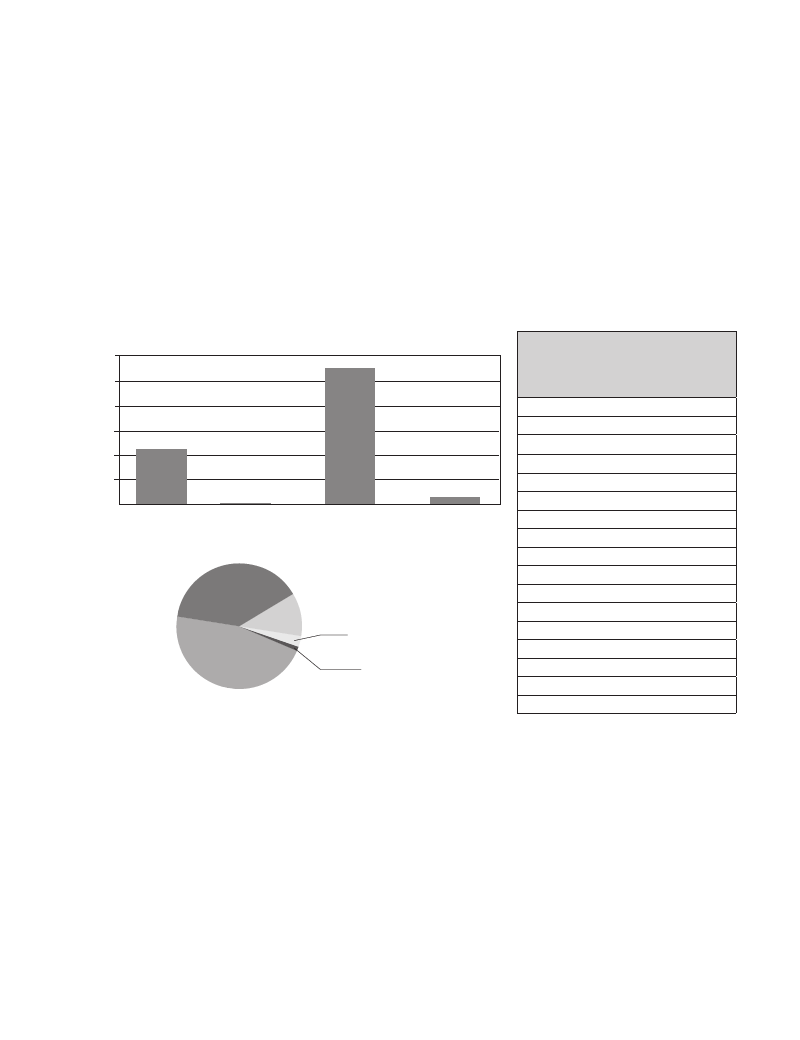
PAPUA NEW GUINEA
PAPUA NEW GUINEA / 85
1. disaster risk profile
Papua New Guinea is prone to earthquakes, volcanic eruptions, tsunamis, cyclones, river and coastal
flooding, landslides and drought. It is ranked 54th among countries most exposed to multiple hazards based on
land area, according to the World Bank’s Natural Disaster Hotspot study.
120000
100000
80000
60000
40000
20000
0
Economic Damages by Disaster Type (1000s USD)
Flood
Storm
Volcano
Earthquake
% Population Affected by Disaster Type
Flood
39%
Volcano
11%
Storm
46%
Source: “EM-DAT: The OFDA/CRED International Disaster Database”
Earthquake
1%
Mass
movement wet
3%
COUNTRIES MOST EXPOSED
TO MULTIPLE HAZARDS
(Top 60 based on land area
with 2 or more hazards)
1. St. Kitts and Nevis
2. Macao, China
5. Taiwan, China
10. Guatemala
15. Somalia
18. Cayman Islands
20. Japan
25. Chile
28. Tajikistan
30. Madagascar
35. Mexico
40. Swaziland
45. Lesotho
50. Dominica
54. PAPUA NEW GUINEA
55. Jamaica
60. Armenia
Large parts of the country are extremely isolated. Most parts of the Highlands were not accessed by outsiders
until the 1930s and many settlements are still inaccessible except by very difficult overland routes. The capital city is
still not connected by road to most of the country and the range of communication, including radio, is extremely limited,
increasing the inhabitants’ vulnerability.
MAJOR NATURAL HAZARDS
Like its neighboring Pacific states, Papua New Guinea is prone to natural-caused disasters including
earthquakes, volcanic eruptions, tsunamis, cyclones, river flooding and coastal erosion, landslides, droughts
and frost. It ranks in the top 6 countries with the highest percentage of population exposed to earthquake hazards and
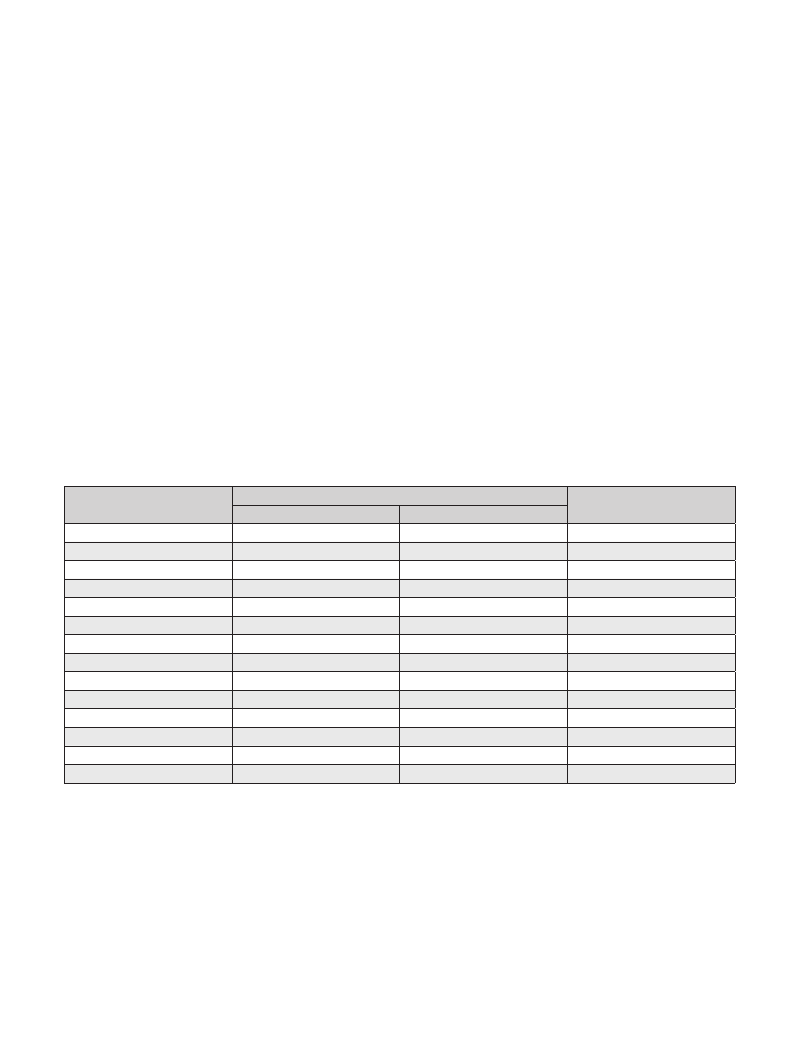
86 / Disaster Risk Management PROGRAMS FOR PRIORITY COUNTRIES EAST ASIA AND PACIFIC
has the highest percentage of population exposed to severe volcanic risk. Given its topography, high seismicity and
high annual rainfall, the country ranked highest in terms of landslide hazard profiles according to the World Bank Hotspot
study.
RECENT DISASTERS
In 1994 the capital of East New Britain was rendered non-functional due to a twin-volcanic eruptions from
Tavurvur and Vulcan mountains. As a result, they moved the capital to Kokopo including the airstrip and the resettlement
scheme for the affected population. Between June 1997- February 1998 an El Nino influenced drought affected over
3,158,861 (70%) of the total population surveyed from the nation’s total population of 4.5 million in that year. Most
Papua New Guineans were immensely affected in the areas of food, water, education, economy, health and nutrition,
agriculture and cultural practices. The National Disaster Centre’s conservative estimate can put the total amount
between PNGK81.0 million and PNGK85.0 million was used directly and indirectly for the drought, frost relief efforts by
all concerned stakeholders. A total of eight (8) disease outbreaks reported but sad to admit, the National Department of
Health does not or is not in the position to provide the statistics on deaths directly or associated with drought impact.
In 1998, 3 x 10-15 meter high tsunami waves devastated coastal villages in the Aitape-Sissano coastal area. In 2007,
the island was hit by cyclone Gruba and in 2009, a landslide on a major highway paralyzed trade and transportation.
Around 40 per cent of PNG’s population lives in poverty, that is, on less than US$1 a day, increasing their vulnerability
to natural disasters.
CALAMATIES
Volcanic Activities (4)
Floods (22)
Landslides (22)
Sea Rise (1)
Famine (1)
Earthquakes (4)
Cyclone (1)
Drought & Frost
Disease Outbreak (2)
Hailstorm (3)
Tsunami (1)
Chemical Spill (1)
Kerosene Explosion (1
Total: (63)
Source: PNG NDCen
Examples of cost of disasters in PNG (5 years -1997-2002)
POPULATION AFFECTED
Total Affected
Killed
46,358
480,517
19,707
128
3,227
2,000
221,285
2
158,780
3,158,861
?
196
11
2,259
12,427
3,210
750
39
5
4,106,406
3,356
COST (PNGK)
4,058,870
13,709,423
1,090,000
620,000
200,000
18,674,000
4,960,760
85,000,000
250,000
31,000,000
46,000
35,826
K158,844,879
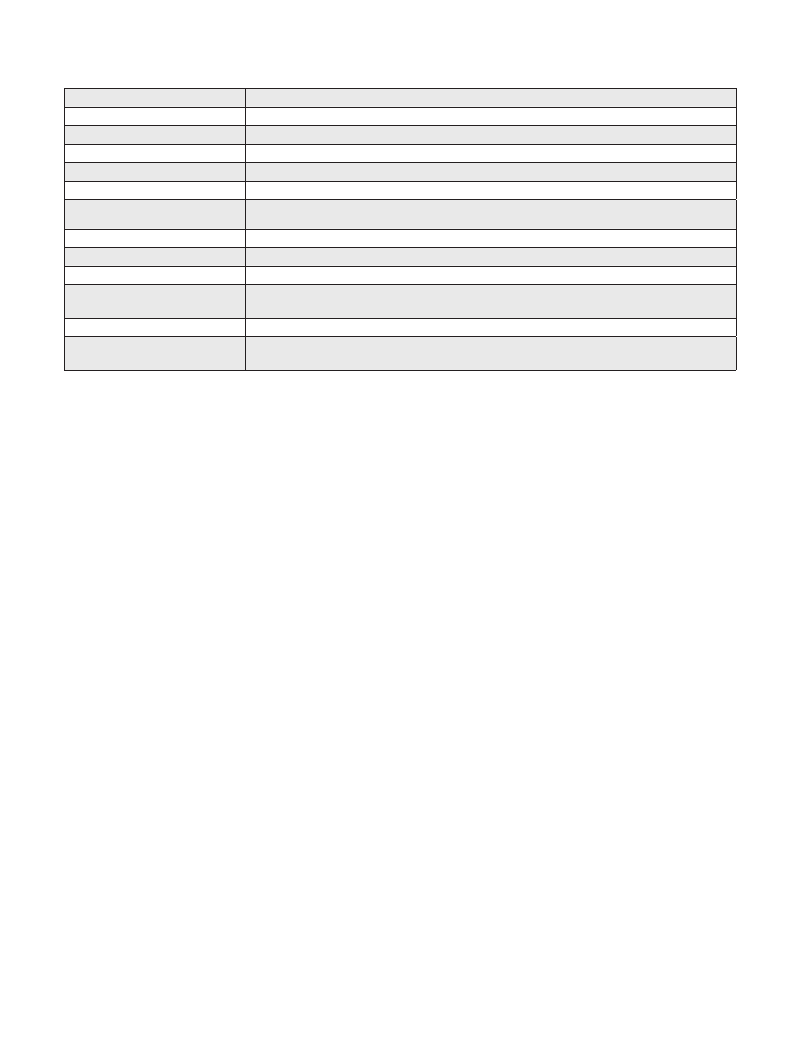
PAPUA NEW GUINEA / 87
Capital
Languages
Independence
Area
Land Use
Government
Population
Port Moresby
English, Tok Pisin, and Motu (official)
16 September 1975 (from the Australian-administered UN trusteeship)
total: 462,840 sq km land: 452,860 sq km water: 9,980 sq km
arable land: 0.49% permanent crops: 1.4% other: 98.11% (2005)
constitutional parliamentary democracy and a Commonwealth realm
6,057,263 (2009 est.)
GDP
$2,200 (2008 est. – per capita)
HDI
149th
Terrain
mostly mountains with coastal lowlands and rolling foothills
Climate
tropical; northwest monsoon (December to March), southeast monsoon (May to October); slight
seasonal temperature variation
Natural resources
gold, copper, silver, natural gas, timber, oil, fisheries
Main development partners
Australia, Japan, EC, New Zealand, the United States, The United Kingdom, the World Bank,
UN agencies, ADB
The World Fact Book, World Bank Country Reports
2. disaster risk management framework
Papua New Guinea was among the first counties to adopt the Hyogo Framework for Action in November
2005, but has been unable to integrate the actions into its national development priorities. The Disaster
Management Plan, in place since 1987, is considered outdated and not 100% relevant to the contemporary best
practices. The current operational document for response management is the 2003 National and Provincial Disaster
and Risk Management Handbook. The Papua New Guinea Disaster Risk Reduction and Disaster Management National
Framework for Action 2005- 2015 is still in draft form and has not yet been adopted by the GoPNG. However various
partners and stakeholders like UNDP (PNG) and the University of Papua New Guinea have been aligning their work
plans and teachings based on this Framework.
The National Disaster Centre (NDC) within the Department of Provincial and Local Government Affairs
was established by an Act of Parliament to coordinate rapid responses to the impacts of natural-caused
disasters. However, the NDC is not fully effective within the government and lacks sufficient budget, human resources
and government backing. The NDC has embraced the whole of hazard approach through the principles of the totality of
disaster management through Disaster Management Cycle where it spells out the importance of before disaster, during
disaster and post disaster management .That was why PNG Mitigation Policy was established in later 2003.
3. activities under the hyogo framework of action
HFA Priority # 1: Ensure that disaster risk reduction is a national and a local priority with a
strong institutional basis for implementation
THE NATIONAL DRM AGENCY
The national agency responsible for DRM is the National Disaster Centre (NDC) within the Department of
Provincial and Local Government Affairs. The NDC is the implementing arm of the National Disaster Committee.
While the NDC is tasked with coordinating all disaster risk reduction activities, in reality the budget, human resources
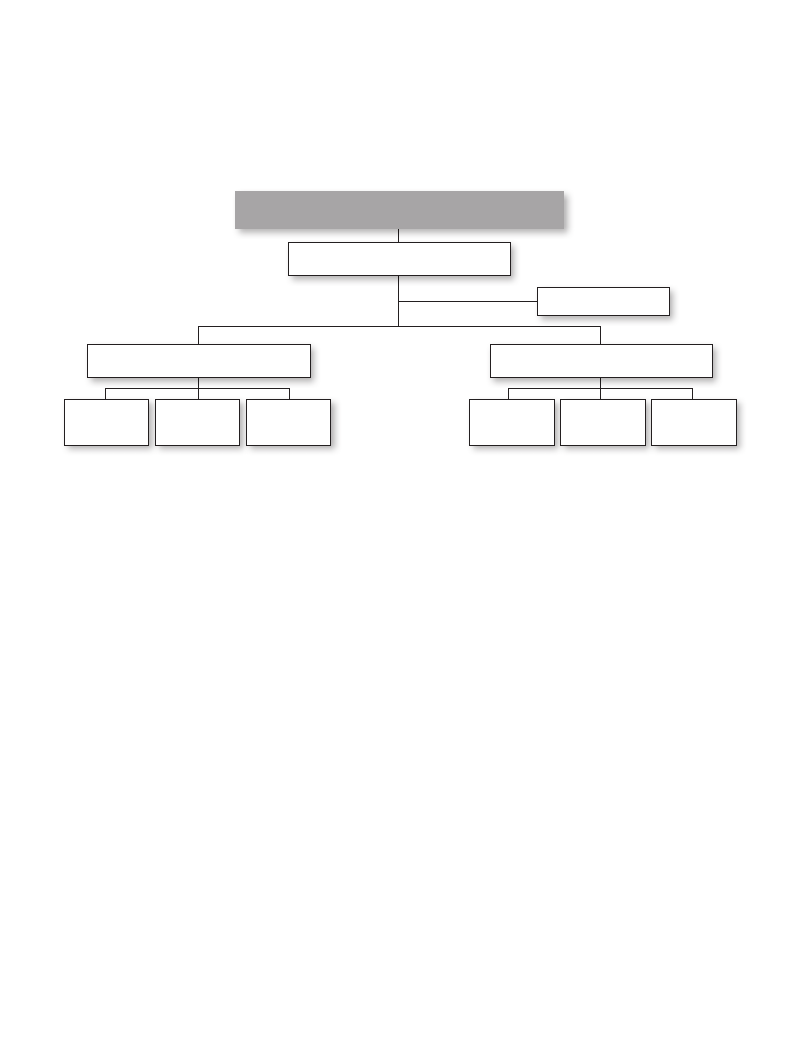
88 / Disaster Risk Management PROGRAMS FOR PRIORITY COUNTRIES EAST ASIA AND PACIFIC
and government commitment to this center are insufficient to undertake risk reduction activities. Members of the
National Disaster Committee include the Commander of the Department of Defense and Police Commissioner and the
department heads for Finance, Defense, Works and Supply Matters, Health, Foreign Affairs and Trade and Provincial and
Local Governments.
Organization Structure of NDC
Secretary
Department of Provincial and Local Government Affairs
Director
National Disaster Centre
Executive Assistant
Assistant Director
Community & Government Liaison
Assistant Director
Risk Management
Logistics and
Communication
Advisor
Source: ADRC
Executive
Officer
Donor
Liaison
Officer
Education/Training
Officer
IT Officer
Research
Officer
A parallel body called the Disaster Management Team has been established by donors and stakeholders and has recently
provided disaster response coordination. The DMT is chaired by UNDP.
DRM LEGISLATION
The Disaster Management Plan has been in place since 1987 and is in need of updating. The current
operational document for response management is the 2003 National and Provincial Disaster and Risk Management
Handbook and the Draft Papua New Guinea Disaster Risk Reduction and Disaster Management National Framework for
Action 2005- 2015.
The National Disaster Management Act of 1984 (amended in 1987) is the country’s DRM law and focuses
only on preparedness and response arrangements during disasters. A National Disaster Mitigation Policy was
prepared and approved by the National Executive Council in November in 2003 and launched in early 2004. The Policy
would have created the National Environment and Disaster Mitigation Authority whose responsibilities would have
included not only disaster management but environment and disaster mitigation as well.
DRM AT THE SUB-NATIONAL LEVEL
The draft National Framework for action cites lack of capacity for disaster risk reduction at the provincial
level. The draft Framework also mentions plans to integrate DRM into provincial level planning and budgeting and include
disaster risk assessments into investment decisions at the community level. The NDM Act provides for the establishment
of Provincial Disaster Committees which should be responsible for preparing emergency plans for the provinces and
coordinate relief operations. UNDP has identified this and an opportunity for action in their future programming.
According to a World Bank draft assessment of DRM in Papua New Guinea, only four of the 19 provinces
have active disaster management arrangements. While there is reasonable awareness among provinces, there is
an extreme shortfall in resources to implement disaster risk management activities at the sub-national level, and focus

PAPUA NEW GUINEA / 89
is solely on response rather than preparedness or mitigation. As well as lack of budgetary resources, there is a lack of
human resource capacity to create sub-national disaster action plans let alone lack of office accommodation in some
provinces including support facilities like communication and office equipment.
DRM IN THE POVERTY REDUCTION STRATEGY
Disaster Risk Reduction is not explicitly identified in the Government Medium Term Development Strategy
(MTDS) 2005-2010 and there are no coordinated disaster risk reduction initiatives in current sector budgets. The
MTDS noted that previous national strategies had failed due to political instability, weak institutional capacity and lack of
ownership and commitment.
DISASTER RISK MANAGEMENT IN THE COUNTRY PARTNERSHIP STRATEGY
The World Bank Interim Strategy note for Papua New Guinea (2005) notes the country’s vulnerability to natural
hazards.
INTERMINISTERIAL INVOLVEMENT IN DRM
The other ministries and agencies which should play a role in DRM include:
• The Department of Mineral Policy and Geohazards Management which is responsible for seismology, volcanology
and geotechnical issues
• The National Weather Service which operates observation networks and provides local forecasting
• The Water Resource Management Branch within the Department of Environment and Conservation which is
responsible for water resources
• Members of the National Disaster Committee, who include the Commander of the Department of Defense and
Police Commissioner and the Departmental heads for Finance, Defense, Works and Supply Matters, Health,
Foreign Affairs and Trade; Provincial and Local Government.
There is reportedly weak coordination amongst agencies on disaster risk reduction and minimal sharing of information.
CLIMATE CHANGE AND DISASTER RISK MANAGEMENT
The agency responsible for climate change adaptation is the Greenhouse unit within the Department of
Environment and Conservation. However, a Climate Change Office is in the process of being established and will
directly report to the Prime Minister’s Office.
HFA Priority # 2: Identify, assess and monitor disaster risks and enhance early warning
NATIONAL, REGIONAL AND LOCAL SECTORAL RISK ASSESSMENTS
While there is significant historical data available, there is a lack of national, regional and local sectoral
risk assessment in Papua New Guinea. There is little government focus on risk and vulnerability assessment and
tools for analysis and monitoring are not available. Papua New Guinea does however have some limited volcanic risk
mapping according to their 2005 reporting on progress made towards commitments under the Hyogo Framework.
EARLY WARNING SYSTEMS AND FORECASTING
The newly-formed Department of Mineral Policy and Geohazards Management (DMPGM) addresses
seismology (9 staff), volcanology (16 staff) and geotechnical issues (7 staff all vacant). The department inherits the policy
and geohazard management functions from the previous Department of Mining following the formation of the Mineral
Resource Authority (MRA) in early in 2008.

90 / Disaster Risk Management PROGRAMS FOR PRIORITY COUNTRIES EAST ASIA AND PACIFIC
In the mid 80’s there was a seismic network of 16 stations with both seismographs and accelerographs.
The system has gradually run down and is now ineffective according to a recent World Bank assessment study. There
is an EU funding proposal to install 6-10 new seismographs to resurrect a monitoring and assessment capacity. Adding
accelerographs to these proposed installations would provide capacity for identifying potential areas of high impact.
The last major magnitude 8 earthquake was in the New Ireland region in 2000. Parts of New Britain, New Ireland and
Bougainville demonstrate some of the highest seismic hazard potential in the world.
The Geotechnical unit covers landslides and slope stability, erosion (including coastal) and tsunamis. This
unit is severely depleted but makes use of MRA staff for emergency situations. Landslide potential is high over large areas,
given the combination of PNG’s steep mountain ranges, volcanism, high seismicity and high annual rainfall. According to
Geoscience Australia (2008), three of the world’s largest landslides recorded in the last 120 year have occurred in PNG.
In the Highlands area, intensified land use due to increasing population and increasing climate variability are adding to
the problem.
The Papua New Guinea National Weather Service (NWS) sits within the Department of Transport. In recent
years, its staffing has been decreased from 107 positions to 66. The Service operates three observation networks.
There is a network of 14 synoptic weather stations with data continuously contributing to the regional and international
weather systems (including the Pacific Islands Climate Prediction Project) through Melbourne. This network is very
coarse and provides only limited detail for local forecasting. Responses are thus mainly reactive, rather than being based
on predictive information. A rainfall network of 57 gauges is operated through volunteers providing monthly records of 24
hour rainfall. This network used to comprise 1000 stations, but now its usefulness for monitoring rainfall trends across
a country of highly complex terrain is seriously compromised. Finally there is a 4 station synoptic network including
measuring sea level and temperature, as part of the Pacific Island Climate Prediction Programme. There is also a Manus
Island SEAFRAME station for sea level and climate monitoring.
Overall, the NWS feels its monitoring network is falling below a credible level. Staff consider that the existing
data systems are inadequate for detailed trend analyses. They say there is little ability to identify local climate change
trends. Increasing climate variability (the threat of droughts and other extreme events) linked to the annual direction of
the Southern oscillation is becoming a major concern for the Service.
The Water Resource Management Branch (WRMB) sits within the Department for Environment and
Conservation (DEC) and is responsible for the management of national water resources under the
Environment Act 2000. The WRMB undertakes river monitoring and the allocation of ground water resources. The
Branch is not adequately equipped to carry out these functions.
The WRMB reported that over the past 10 years, river monitoring stations have been reduced from 130 stations
to less than 10 and that the national network was effectively closed. In March 2008 only one station on the Ramu
River was fully effective and two stations were to be reopened. Additionally, all four stations on the Laloki catchment were
supposed to be reopened by mid 2008 and a new station is to be constructed on the Goldie River. Some four to six
Representative Regional Stations will be required as part of the Pacific HYCOS project. A hydrological strengthening study
undertaken in the late 1990’s recommended a credible system of 72 stations was required nationally.
Although the historical record of hydrological monitoring in PNG is strong (going back to the 1960’s with an
emphasis on hydro-power project investigation), data digitizing, database development and analysis and
catchment mapping capability is deficient. WRMB reported that flood records have not been analyzed since 1997
and low flow records do not exist to contribute to understanding potential drought conditions.

PAPUA NEW GUINEA / 91
HFA Priority # 3: Use of knowledge, innovation, and education to build a culture of safety and
resilience at all levels
EDUCATION AND TRAINING
There are courses on disaster risk reduction and hazard assessment at the University of Papua New Guinea
these courses have not established strong links with the government. Other institutions such as the National
Agriculture Research Institute and the National Fisheries Institute are undertaking climate related hazard work in food
and water security.
AWARENESS RAISING
Fostering public awareness about natural hazards is the responsibility of the National Disaster Awareness
and Preparedness Committee. The committee was formed in 1999 following the lessons learned from 1997/8
drought and the Aitape Tsunami in July 1998 to prepare provincial baseline data, but meetings of the committee have
apparently lapsed recently. A World Bank assessment of disaster risk reduction in Papua New Guinea found the overall
level of awareness about natural hazards was high amongst the departments and provinces. However the study found
there was a general sense that resources and skills available were inadequate to deal with them and little appreciation
that they would impact a sector’s activity or an individual’s “job”.
HFA Priority # 4: Reduction of the underlying risk factors (reduction of exposure and vulnerabil-
ity and increase of resilience)
ENVIRONMENTAL AND NATURAL RESOURCE MANAGEMENT
The rapidly growing rural population is placing increased stress on land and water resources and
increasing the population’s exposure to hazards. However, the country has adopted the Environmental Act in
2000, which aims to regulate the environmental impact of development and protects national water resources.
LAND USE PLANNING
The Physical Planning Act (1989) administered by the Department of Lands (DOL) provides a strong
enabling tool for managing land use to reduce natural hazard risk. It has the ability to apply to both alienated and
customary land. In fact 97% of PNG land is customary with 3% alienated. The Physical Planning Act has been applied to
just 2% of customary land which is subject to a government lease and on-lease for development purposes. Where land
is subject to physical planning it is a requirement that both environmental and hazard issues be addressed.
A recent World Bank Assessment noted that the mainstreaming of risk reduction into development planning
is not occurring. For example, while land use legislation requires consideration of hazards and environmental impacts,
these inputs are not sought from the government hazard agencies or DEC in national or provincial land-use planning
considerations.
The Department of Works advises that consultants make their own interpretation of design parameters often
without reference to local hazard information. The WRM branch of DEC noted they have not been approached by
infrastructure consultants for hydrological data in the past two years. There are reports of new road developments being
washed out by rainstorms or landslides – even donor funded projects which are specified to be risk and climate proofed.
In the provinces it is reported that design manuals are not used.
.

92 / Disaster Risk Management PROGRAMS FOR PRIORITY COUNTRIES EAST ASIA AND PACIFIC
HFA Priority # 5: Disaster preparedness, recovery and reconstruction at national, regional, and
local levels
RISK FINANCING
The Disaster Management Act mandates that the Provincial Government will bear the cost of the first
K15,000 (US $5,400) for disaster relief and any amount over K15,000 and up to K100,000 (US $36,220) will
be split between the National and Provincial Governments. Any amounts above K100,000 shall be borne by the
National Government. When reporting on progress made toward commitments under the Hyogo Framework in 2005,
Papua Guinea noted that there was a budget available for disaster risk reduction activities. However, this budget is not
readily available. Most Provinces (Sub-national) have not readily taken the DRM in proactive way to prepare themselves
for the onset of natural calamities because they still regard the DRM as the functions of the National Government. Once
the draft DM Act is reviewed by end 2009, hopefully this should be corrected and the sub-nationals should take leading
roles through planning and budgeting for any minor disaster in the province.
While disaster response appears to be under resourced given the potential economic losses which could
be caused by natural disaster, disaster risk reduction activities have no standing budget at all. Papa New
Guinea was one of the countries covered in the World Bank’s Pacific Catastrophe Risk Financing Initiative Feasibility
Study where they found the worst single year loss in Papua New Guinea was equivalent to 2.7% of the country’s GDP.
EMERGENCY MANAGEMENT
The National Disaster Centre is in charge of emergency response in the country. According to a recent UNDP
study, emergency response capacity is improving in Papua New Guinea and institutional restructuring is underway to
improve the response time and coordination of the Emergency Services. Though there has been some initiatives to
combine the National Disaster Service, the Fire Service and the Ambulance Service under one agency and to have it
come under a proposed National Disaster and Emergency Authority which will sit under the Ministry of Defense, that
initiative has been shelved pending the outcome of the improvement the current PNG disaster management protocols..
The Protocol is now wit the Government to consider.
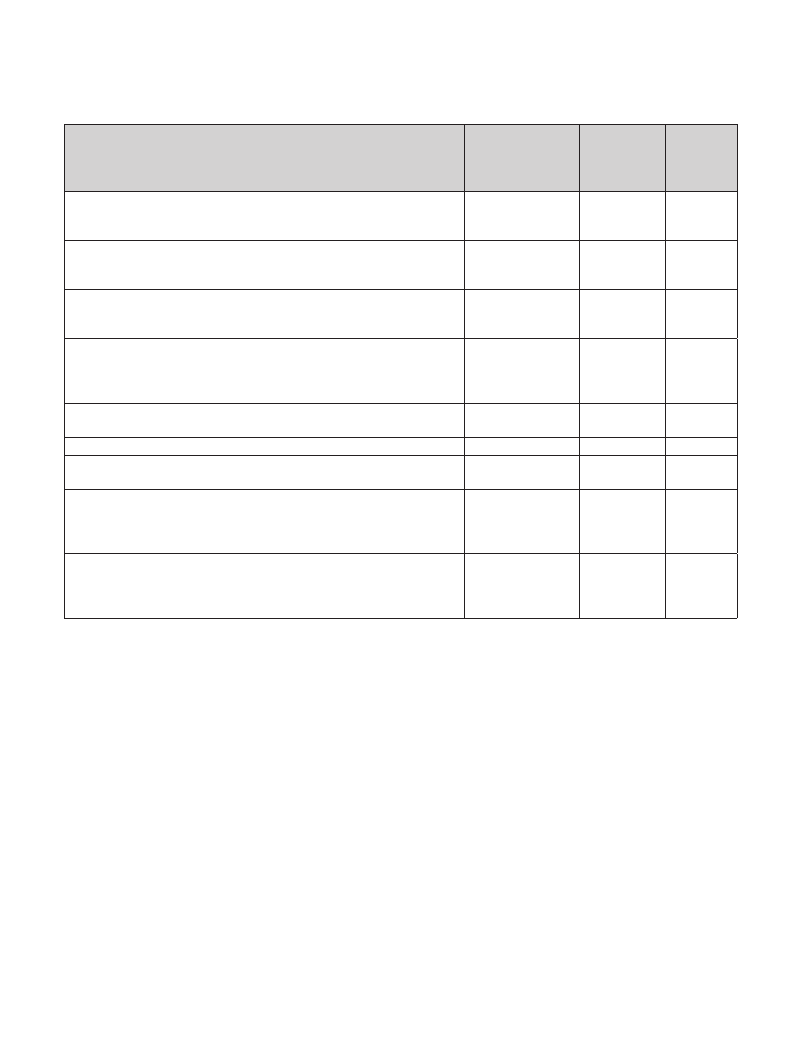
PAPUA NEW GUINEA / 93
4.key donor engagements
Existing Projects with Donors and International
Financial Institutions
Pacific Catastrophe Risk Pool Feasibility Study (Cook Islands, Fiji, Papua
New Guinea, Samoa, Solomon Islands, Tonga, Tuvalu, Vanuatu )
Sustainable Management Through Reduced Risk from Disasters and
Climate (Fiji, Kiribati, Marshall Islands, Papua New Guinea, Solomon
Islands, Timor-Leste, Vanuatu )
Support for DRM in PNG
Pacific Islands Disaster Assistance Program (PDAP): The Cook Islands, Fiji,
Kiribati, Niue, Palau, Papua New Guinea, Samoa, Solomon Islands, Tonga,
Tuvalu, and Vanuatu , Federated States of Micronesia and the Republic of the
Marshall Islands.
Department of Environmental Conservation (DEC) Capacity Building Project
Disaster Risk Management
EDF 9 B Envelope – Upgrading monitoring and early warning systems
Pacific Islands Climate Prediction Project
(Cook Islands, Fiji, Kiribati, Niue, Samoa, Solomon Islands, Tonga, Tuvalu,
Vanuatu, Papua New Guinea)
South Pacific Sea Level and Climate Monitoring Project (Cook Islands,
Federated States of Micronesia (FSM), Fiji, Kiribati, Marshall Islands, Nauru,
Papua New Guinea (PNG), Samoa, Solomon Islands, Tonga, Tuvalu and
Vanuatu.)
Funding Agency/
International
Partners
World Bank
World Bank
AUSAID
USAID/OFDA
UNDP
UNDP
European Union
AUSAID and the
Australian Bureau
of Meteorology
AUSAID
Allocated
Budget and
Period
(US$)
2008 -
present
$400,000
2008 –
present
$1,9 million
2009-2012
US$ 7.4
million
$4,001,756.
1995-present
$300,000
2006-2012
2009
3.2 million
euro
AUS $ 5.5
million
2004 -
present
1991 - 2010
HFA
Activity
Area(s)
1,2,5
2,3,4,5
1, 2, 3,4,5
5
1,4
1,2,3,4
2
2
2,5
5.global facility for disaster reduction and recovery (gfdrr):
action plan
Due to the weak policy and institutional frameworks currently evident in Papua New Guinea, opportunities for investment
have been restricted to those which:
• contribute to reducing actual risk
• contribute to building on existing in-country capacity
• are supported by, or contribute to, or inform sector risk reduction policy frameworks within country priority
activities.
• Have a reasonably strong change of receiving government commitment and partnership

94 / Disaster Risk Management PROGRAMS FOR PRIORITY COUNTRIES EAST ASIA AND PACIFIC
Indicative Program for GFDRR Funding
(Projects and engagement areas being considered
for GFDRR funding)
Develop a Coordinated Hazard Policy and Integrated Spatial
Hazard Risk Information and Mapping System for PNG
(National Scale)
Priority activities
(1) Provide (Technical Adviser ( TA) support to hazard departments to:
• Establish a coordinated government policy on the collection and
storage of hazard data, the development of vulnerability, risk and
trend information and it presentation and sharing across sectors for
planning and development purposes
• Assess needs and develop an integrated spatial database with
analysis tools and mapping capability
• Identify requirements and acquire appropriate map and image bases
for hazard mapping and land use management purposes for urban,
rural, coastal and highland applications
• Enter existing and historical datasets across all hazards and develop
initial vulnerability and risk information
• Enhance seismometer network installation (EU funded) with
installation of accelerogram equipment.
Implementing Agency/
International Partners
Min of Mineral Policy and
Geohazards Management
with Geohazards Division,
National Weather
Service, Water Resource
Management Branch,
National Mapping Bureau,
DL&PP, DEC, NDC
NDCen
Indicative
Budget and
Period
(US$)
2009-2011
$550,000
$550,000
$1,500,000
HFA
Activity
Area(s)
2
1, 5
1, 5
Capacity Building on National Disaster Centre & Key agencies
in the areas of:
• Finance Management
• GIS & Remote Sensing Skills for Hazard Mapping & Risk
Management (national scale)
• DRR Trainings for provinces and community based DRR
NARI, DAL, NDCen,
DEC, Geohazard Office,
NMBureau, NS Actors
2, 3, 4, 5
Conduct Hazard Maps, Digitizing and Spatial Information on
Drought, Frost, Coastal Erosion Plus Awareness in view of
Predicted Mega Drought in 2012 (Local Scale embedded into
local planning and regulatory tools)
• Drought Vulnerability Map
• Bush Fire Vulnerability Map
• Water/River catachment Map
• Food Security Information
• Training
• Awareness Information through media and stakeholders
Total budget request
$2,600,000

PAPUA NEW GUINEA / 95
6. bibliography
AUSAID Country Brief Papua New Guinea 2009
Bettencourt, Sofia, Richard Croad, Paul Freeman, John Hay, Roger Jones, Peter King, Padma Lal, Alan Mearns, Geoff
Miller, Idah Pswarayi-Riddihough, Alf Simpson, Nakibae Teuatabo, Ulric Tritz, Maarten Van Aalst ‘Not If, But When:
Adapting to Natural Hazards in the Pacific Island Region’ The World Bank. 2005
Dilley, Max, Robert S. Chen, Uwe Deichmann, Arthur L. Lerner-Lam, and Margaret Arnold ‘Natural Disaster Hotspots; A
Global Risk Analysis’ World Bank 2005
EM-DAT: OFDA/CRED International Disaster Database, Catholic University of Louvain, Brussels, Belgium 2009
Framework for Action 2005-2015: An Investment for Sustainable Development in the Pacific Island Countries Disaster
Risk Reduction and Disaster Management; Building the Resilience of Nations and Communities to Disasters.
Hyogo Framework for Action 2005-2015: I S D R International Strategy for Disaster Reduction
Priorities and Action Agenda 2006-2015 Supplementary for Mainstreaming Disaster Risk Reduction and Disaster
Management
IBRD Interim Strategy Note for Papua New Guinea 2005
Sikivou Mosese What do Pacific Developing Member Countries Want from Catastrophe Insurance, Pacific Islands
Applied Geoscience Commission, National Catastrophe Risk Insurance Mechanisms for Asia and the Pacific, November
4-5, 2008, Tokyo, Japan
Papua New Guinea Disaster Management Act 1984
Papua New Guinea Environmental Planning Act 1978
Papua New Guinea Australia Development Cooperation Strategy 2006-2010
UNDP ‘Human Development Index’ 2007
UNDP Gaps and Opportunities for DRM Programming in Papua New Guinea 2009
UNISDR, Living with Risk: A Global Review of Disaster Reduction Initiatives 2002
UNISDR http://www.unisdr.org/eng/mdgs-drr/national-reports/Papua-New-Guinea-report.pdf
The World Bank (Draft) Pacific Catastrophe Risk Financing Initiative 2009
The World Fact Book 2009
The World Bank Draft Country Assessment Report Papua New Guinea
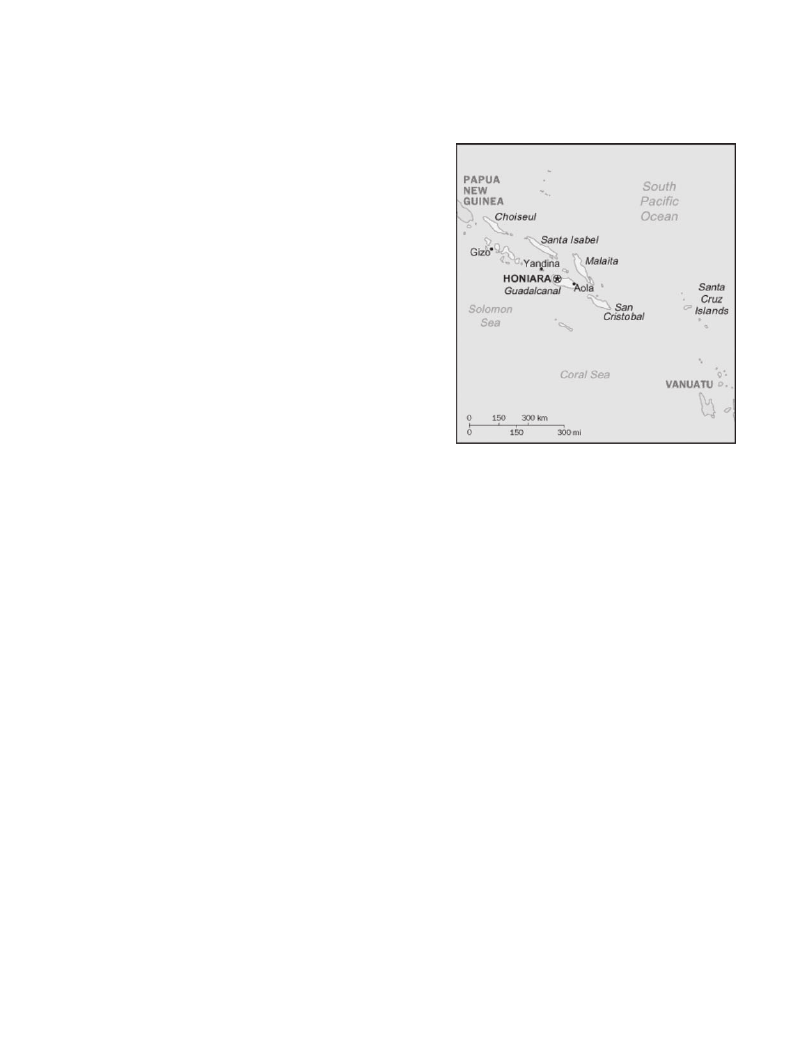
96 / Disaster Risk Management PROGRAMS FOR PRIORITY COUNTRIES EAST ASIA AND PACIFIC
SOLOMON ISLANDS
To prepare the Country DRM Note, consultations were undertaken
with members of the World Bank?s Pacific team and the Director of
the NDMO, and meetings were held with Ministry of Home Affairs,
Ministry of Environment, Conservation and Meteorology, Ministry
of Mines and Energy, Ministry of Planning and Aide Coordination,
Ministry of Finance, Ministry of Works and Infrastructure, European
Commission, ADB, AusAID, NZAID, UNDP, SOPAC, Red Cross.
The matrix of priority areas and actions for DRM and estimated
budget allocations were discussed and cleared with the NDMO
Director in May 2009 after consultation within Government and with
key donors and partners. There is strong support and ownership and
endorsement by NDMO for the matrix of priority areas and actions.
1. disaster risk profile
The Solomon Islands rank among 20 countries with the highest economic risk exposure to two or more
hazards. With over 992 islands stretching over 1,500 kilometers, this group of mountainous islands with some low lying
coral atolls has just over half a million people.
The Solomon Islands lie East of Papua New Guinea and north of Vanuatu. At its furthest reach, the Santa Cruz
Islands are north of Vanuatu and some 200 kilometers from the closest other island in the Solomon Islands chain.
The Islands are exposed to a wide range of geological, hydrological and climatic hazards, including tropical
cyclones, volcanic eruptions, earthquakes, tsunamis, landslides, floods and droughts. Over the past 30
years there have been six major natural disasters: two earthquakes – one with an associated tsunami – and four tropical
cyclones, directly impacting over 100,000 people with over 100 deaths.
The last disaster was the earthquake and tsunami that occurred on 2 April 2007 centered on the Western
Province and Choisel Provinces. It killed 52 people and damaged or destroyed some 6,000 homes and other
buildings including schools and hospitals. The cost of reconstruction was estimated at around US$100 million or 80%
of the 2006 national recurrent budget.
Heavy rain from 29 January to 2 February 2009 caused extensive flooding in western and eastern parts
of Guadalcanal, impacting a total population of 52,000, displacing an estimated 2,000 people and costing around
US$3m.
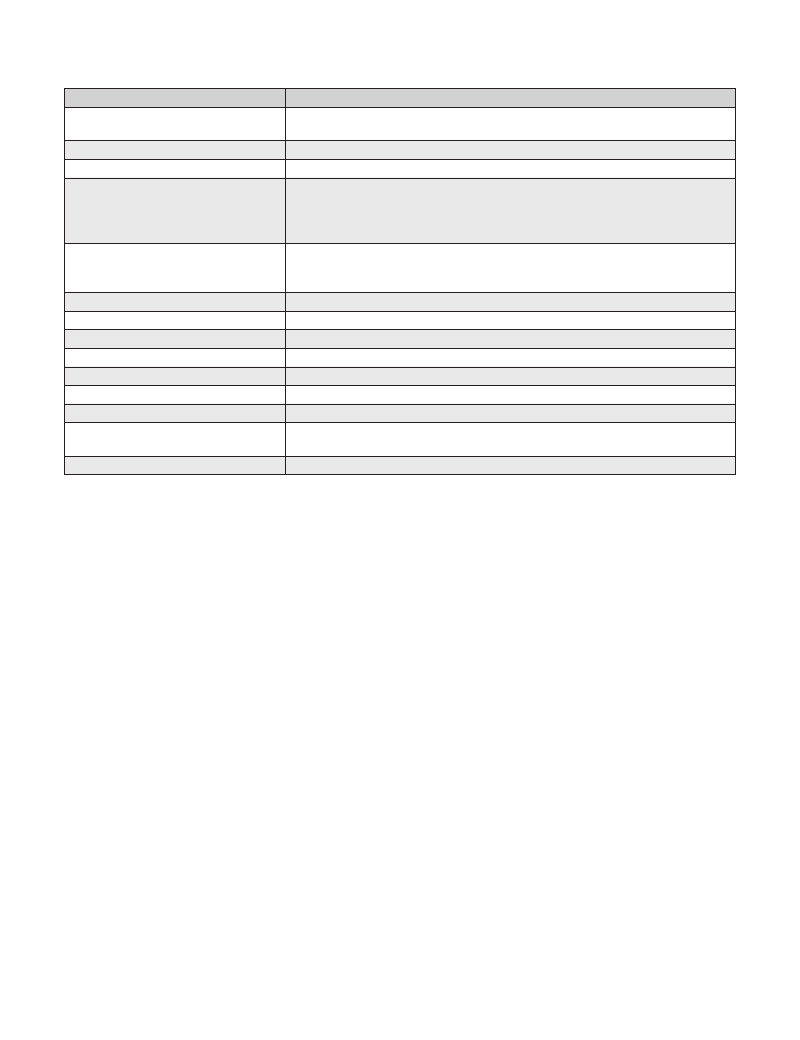
SOLOMON ISLANDS / 97
Provinces
Capital
Official Language
Independence
Area
Land Use
Government
Population
GDP
HDI
Terrain
Climate
Natural resources
Major products
Main development donors
World Fact Book, World Bank Country Reports
Honiara
Nine provinces: Guadalcanal, Central, Western, Ysabel, Malaita, Makira, Temotu,
Choiseul, and Rennell & Bellona.
English
July 7 1978 (from UK)
total: 28,450 sq km
land: 27,540 sq km
water: 910 sq km
coastline: 5313 km
arable land: 0.62%
permanent crops: 2.04%
other: 97.34% (2005)
Parliamentary Democracy
595,613
GDP (December 2007): $270 million.
129 out of 177
mostly rugged mountains with some low coral atolls
tropical monsoons; few extremes of temperature and weather
fish, forests, gold, bauxite, phosphates, lead, zinc, nickel
Copra, marine products, and timber. Subsistence activities dominate the lives of 80
percent of Solomon Islanders.
Australia, New Zealand, the EU, Japan, and the Republic of China (Taiwan)
2. activities under the hyogo framework of action
HFA Priority # 1: Ensure that disaster risk reduction is a national and a local priority with a
strong institutional basis for implementation
The National DRM Agency
The National Disaster Council has the primary responsibility for disaster risk management in the Solomon
Islands. Established by the National Disaster Council Act (1989) and National Disaster Plan (1987), it is supported by
the National Disaster Management Office (NDMO) under the Ministry of Home Affairs. The NDC is currently reviewing the
institutional framework for DRM as they plan to develop a National Action Plan for DRM and Disaster Risk Reduction.
A cross-section of ministries participates in the National Disaster Council: the Police Commissioner, the
Permanent Secretary of the Ministry of Home Affairs, the Ministry of Foreign Affairs, the Ministry of Infrastructure and
Development, the Ministry of Finance and Treasury, the Ministry of Communications and Civil Aviation, the Ministry of
Health and Medical Services, and the Ministry of Provincial Government. Other ministries and agencies can be co-opted
based on the nature of the emergency.
Disaster Risk Reduction needs to be owned by all government agencies rather than a single ministry. The
NDMO has limited ability to coordinate across ministries due to its location in the Ministry of Home Affairs. The Chairman
of the NDC does not report to the Prime Minister but to the Minister of Home Affairs. The proposal for the new National
Disaster Risk Management Plan and Act foresees that the NDC falls directly under the Prime Minister’s office, with the
Chairman reporting to the Prime Minister.

98 / Disaster Risk Management PROGRAMS FOR PRIORITY COUNTRIES EAST ASIA AND PACIFIC
The country’s disaster risk management framework is currently under review and a new proposal should
be presented to Parliament by November 2009. This new plan and legislation addresses both CCA and DRM and
provides for a broader NDC membership including the Prime Minister’s Office, the Ministry of Development Planning and
Aid Coordination; the Ministry of the Environment, Conservation and Meteorology; The Ministry of Mines and Energy; the
Ministry of Agriculture and Livestock and the Ministry of Women Youth and Children.
The new proposal will establish four NDC Committees: Committees on (1) Disaster Management (lead by the
NDMO), (2) Hazards (lead by the Ministry of Environment, Conservation and Meteorology), (3) Recovery & Rehabilitation
(lead by the Ministry of Devel opment Planning and Aid Coordination), and (4) Risk Reduction (led by the Ministry of
Lands, Housing and Survey).
Legislative Framework
The current legislation does not address risk reduction. The National Disaster Council Act provides the current
institutional framework for Disaster Management (DM). The Act legally supports the creation of a National Disaster Plan.
It also spells out the use of special powers in times of disasters should the need arise. Upon Parliament’s approval of
the National Disaster Risk Management Plan, a National DRM Act will be drafted. The Solomon Islands does not have
sub-national DRM strategies or plans.
A review of the current Act and other potentially relevant legislation took place in 2006. Based on the findings,
the proposed National DRM Plan (and Act) will address current shortcomings such as moving the NDC to the Prime
Minister’s Office, strengthening the institutional structures and ensuring a more coordinated joint Government effort.
The NDC meets quarterly and in response to disasters. In the future, the four proposed Committees should meet
regularly to address their area of responsibility and report to the quarterly NDC meetings.
DRM at the Sub-National Level
The provincial disaster committees are tasked with disaster awareness, preparedness, management and
response activities. In the event of a natural disaster, they are responsible for ex-post response. However, there are no
provincial disaster plans currently in place and arrangements are minimal and lacking accountability.
Interministerial Involvement in DRM
Several key ministries participate in disaster risk management. As mentioned above, the Ministry of Home Affairs
has the primary role for disaster management in the area of preparedness and response; the Meteorological Division (Ministry
of Environment, Conservation and Meteorology) provides climate data; the Geohazards Unit of the Ministry of Mines and
Energy is responsible for data and information on geological hazards; the Water Resources Division of the Ministry of Mines
and Energy provides stream flow data; the Ministry of Agriculture and Livestock is responsible for pest control and the
Ministry of Health and Medical Service has the responsibility for pandemics and is involved in disaster response.
However, effective mechanisms for cross-sector collaboration and cooperation are absent and linkage
between national, provincial and community governance systems are weak. Sector ministries are uncertain
of their roles both before and after disasters and avoid accountability. Structures into communities beyond provincial
government are non-existent except for arrangements for distributing relief. The revised disaster risk management
framework will address all of these shortcomings with increased focus and accountability through the creation of the
four Committees and improved coordination and clarity of roles through explicit structures at the national, provincial and
local levels. To be effective, these institutional structures will need sustained support for implementation over three years
and beyond.

SOLOMON ISLANDS / 99
Climate Change and DRM
The Ministry of Environment, Conservation and Meteorology’s Climate Change Division is responsible for
climate change adaptation (CCA). Cross sector coordination is through the National Advisory Committee on Climate
Change – currently known as the TeCOM (Technical Committee on Climate Change). A policy framework for CCA is
yet to be developed and linkages across government are weak. It is intended that CCA will come within the widened
overview and scope of the new NDC. Currently MECM is only a co-opt member of the NDC. A larger role is foreseen
under the new framework and the MECM will take the lead of the Hazards Committee.
The National Adaptation Programmes of Action (NAPA) was developed in November 2008 and lays out the
following priority adaptation activities: 1) managing the impacts of, and enhancing resilience to, climate change
and sea-level rise in agriculture and food security, water supply and sanitation, human settlements, human health and
education, awareness and information; 2) climate change adaptation on low-lying and artificially built-up islands in Malaita
and Temotu provinces; 3) waste management; 4) coastal protection; 5) fisheries and marine resources; 6) infrastructure
development; and 7) tourism.
HFA Priority # 2: Identify, assess, and monitor disaster risks—and enhance early warning
National, Regional, Local and Sector Risk Assessments
Hazard maps are unavailable at sufficient fine scales for purposes of disaster risk reduction and climate
change and adaptation activities. Flood hazard maps exist for northern Guadalcanal, albeit at a somewhat coarse
scale. National volcanic and landslide hazard maps are not available. While some data exists, a detailed seismic mapping
would require analyses and additional data. However, there is a lack of capacity and tools to carry out data analyses,
hazard mapping and vulnerability and risk assessments.
The existing risk maps do not factor future climate projections and there are no comprehensive community-level risk
assessments or mapping.
The existing observation networks for hazard monitoring are degrading and are inadequate to support ongoing
understanding of the local hazard or changes due to climate change or to support local early warning arrangements.
Early Warning
There are various technical agencies charged with collecting hazard information. Data and information on
geological hazards is produced by the Geohazards Unit (MME), climate data by the Meteorological Division (Ministry of
Environment, Conservation and Meteorology - MECM), and stream flow data by the Water Resources Division (Ministry
of Mines and Energy (MME) – all of which on a national level). The Ministry of Agriculture and Livestock (MSL) monitors
pests, and Ministry of Health and Medical Services (MHMS) pandemics. MHMS is a member of the NDC, the others
are co-opted members. The proposed new framework foresees full membership for all the above ministries, and NDC
committee leadership for MECM on hazards.
Forecasting is linked to the Australian Bureau of Meteorology and Pacific Regional Meteorological Center
in Fiji, which provide the primary source of data.
In case of a cyclone for example, the Meteorological Division receives information from overseas weather
sources in Nadi (Fiji), Brisbane (Australia) and Honolulu (Hawaii/USA) (for Tsunami information, which
is however of limited use for locally generated tsunamis). The Meteorology division informs the Chairman of
the NDC, the Commissioner of Police, the Chief of Marine, the Controller of Aviation and the Chairman of the relevant

100 / Disaster Risk Management PROGRAMS FOR PRIORITY COUNTRIES EAST ASIA AND PACIFIC
Provincial Disaster Committees and Solomon Island Broadcasting Corporation.
NDMO is responsible for the activation of emergency management arrangements, coordinating the
National Disaster Operations and the issuing of public safety messages/evacuation orders through radio
and television. Issuing of cyclone warnings to the public takes place only after the approval of the NDC. The National
Emergency Operation Center contacts the Provincial Disaster Committee, while NDMO directly contacts affected
communities.
A wide range of communications systems are available for disaster information dissemination from the
more sophisticated to community-based methods High frequency (HF) radio transceiver units; VHF transceiver
units; Telephone (urban); facsimile (urban); Internet and email service; Satellite telephone; EMWIN (for warnings to the
Met Service and NDMO), Broadcasting (SIBC; Television broadcasting service) and PFNET rural e-mail services. Apart
from ENWIN these services do not have 24 hour operation. All have limited outreach to rural and remote communities.
There are severe limitations in the ability to get early warnings and information to large parts of the rural community which
makes up 85% of the population. This is also true for livelihood and development information. The lack of an effective
communication network through the approximately 10 000 small rural villages is a major constraint to effective DRM and
risk reduction – as it is also to effective rural development activities across the livelihood and welfare sectors.
HFA Priority # 3: Use of knowledge, innovation, and education to build a culture of safety and
resilience at all levels
Education and Training
The National Disaster Council runs an annual Disaster and Risk Awareness Campaign through the NDMO
with input from the Meteorological Service, the geohazards and hydrology units of the Ministry of Mines and Energy, the
Ministries of Health and Education, the Police, Search and Rescue and a number of involved NGOs. The program targets
schools, villages and the business sector and addresses hazard information, preparedness and warning arrangements.
However, there is a lack of funding to support this activity.
To be effective programs need to occur in the villages and be followed up year by year. The resources and
local arrangements required are significant to address the around 10 000 villages of the Solomon Islands. In addition,
materials and content need to be developed. Core frameworks need to be developed within which to coordinate NGO
and civil society programs.
DRM is not currently integrated into school curricula. The only education programs with a DRM component is in
School of Nursing, which includes a three-day introduction into DRM for its third year students
HFA Priority # 4: Reduction of the underlying risk factors
Mainstreaming DRR integration into land use, zoning, building codes, location and con-
struction of public infrastructure
Disaster risk management is not yet integrated into the Solomon Islands’ planning and budgeting processes.
There is no mechanism for the mainstreaming of DRM into national and sector policies, plans, legislation and regulations.
If DRM is incorporated in land law, it is not enforced and land use, zoning, building codes, location and construction of
public infrastructure do not take hazards into account.
While recognizing public assets are extremely vulnerable to adverse natural events, key ministries (i.e.

SOLOMON ISLANDS / 101
transport, planning, water resources, etc) have not mainstreamed disaster risk reduction measures into their plans
and new investments. DRM is not mainstreamed into major sector investments (e.g., education, water, environment,
infrastructure, health sectors). The World Bank does not have school, hospital or roads building projects in the Solomon
Islands but disaster risk considerations are incorporated into other new projects such as rural development.
The revised scope and committee structure for the proposed NDC reporting to Cabinet will provide the mechanism to
address these issues but ongoing support for planning, capacity development and implementation at the sector level will
be necessary to achieve sustainable progress on the ground.
Private Sector involvement in DRM
The private sector is involved in response by providing and delivering relief in disaster affected areas.
However, problems with regards to payment mechanisms are a major constraint. There are no public-private partnerships,
nor is there a forum for regular consultation with the private sector on DRM. Irregular private sector engagement takes
place, for example, at the 2007 Post-Tsunami workshop. The private sector was also consulted on the proposal for the
new framework for DRM and provisions for financial management and engagement mechanisms with the private sector
(as well as for other partners) will be included.
Risk Financing Framework
The NDMO has a limited annual budget allocation for both ex-ante and ex-post activities, Financing for
disaster risk management allocation in 2009 was (1) SBD 800.000 (USD $99.400) for awareness, education and risk
reduction and (2) SBD 2M (USD $248,600) for response activities.
If unused, response activity funds cannot be carried over. In case of emergency, the SBD 2M are paid into the
National Disaster Council Fund, which also includes donations, contributions or income from sales of property. Funds
in the NDC Fund that are not required for immediate use do not lapse but are to be invested in securities – with the
exception of the annual appropriation of SBD 2M. There is also a contingency warrant to request funds in cases of
emergency.
There is no government insurance scheme in place for public assets and, common amongst many countries,
the government has no obligations to cover losses to private properties. A World Bank Pacific Islands
Catastrophe risk financing initiative that would cover losses to public and private assets in the pacific islands nations
is under consideration but should await the implementation of the new DRM framework and possibly the completion of
some rigorous assessment of national and strategic assets.
HFA Priority # 5: Strengthen disaster preparedness for effective response at all levels.
Emergency Management
The National Emergency Operations Center (NEOC), which falls within the functions of the National Disaster
Council, is in charge of the country’s emergency response. Immediate response is coordinated with the Police
Department but the current National Disaster Plan makes coordination across other agencies difficult. Systems for
assessment, planning and financial management are limited.
The Police and Fire Department includes search and rescue teams but equipment is limited. The presence
of the Regional Assistance Mission to the Solomon Islands (RAMSI) provides another response capability.
Response capacity is often dependent on international support but poor systems make coordination of this
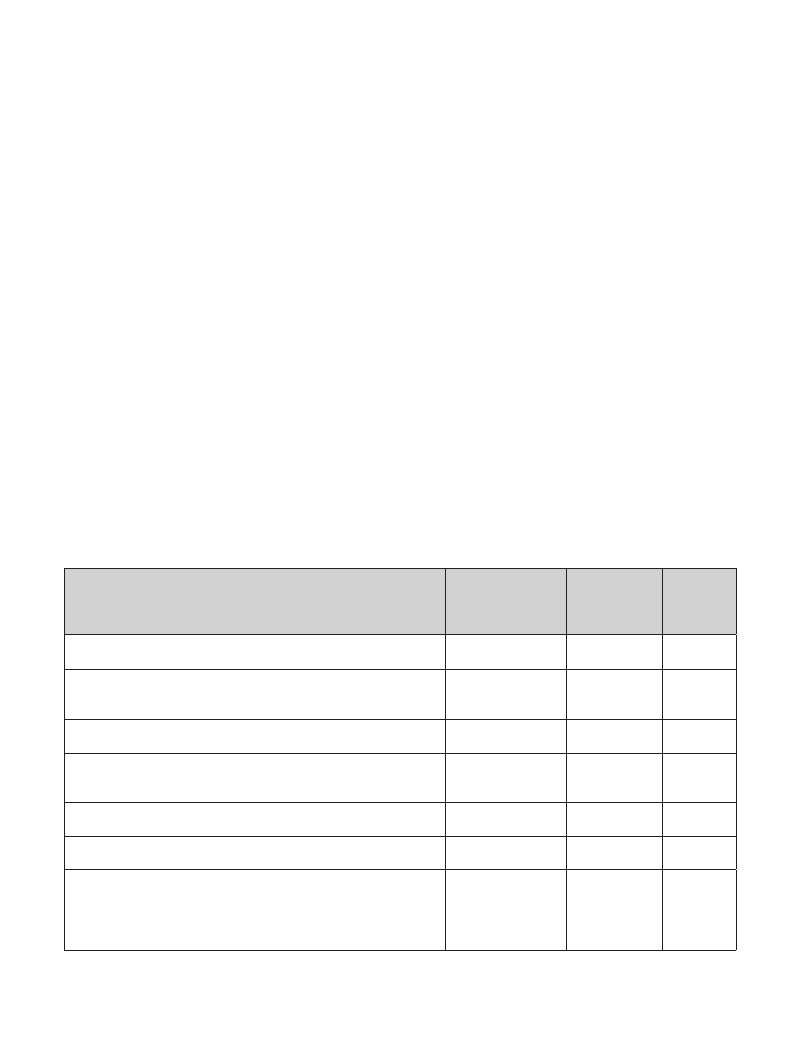
102 / Disaster Risk Management PROGRAMS FOR PRIORITY COUNTRIES EAST ASIA AND PACIFIC
support difficult and lead to loss of confidence in Government arrangements. The new DRM arrangements are
intended to improve this with explicit structures and accountabilities across government agencies.
Simulation exercises
Disaster simulation exercises are done as part of annual training sessions with Provincial Disaster
Committees. The Solomon Islands participates in the Pacific-wide Tsunami Exercise with communities. A nation-wide
disaster simulation exercise is planned for October/November 2009 to test the new framework as part of the proposal
for a new DRM plan.
Regional Linkages
In part due to its own limited capacity and resources, the Solomon Islands are linked in with a number of
regional facilities. The Meteorological Division receives information from overseas weather sources in Fiji, Australia
and Hawaii. Tide gauges throughout the region give tide measures, pressure, wind speed and direction and sea surface
and are all linked to the Australian National Tidal Facility in Adelaide, which was established as part of the South Pacific
Sea Level and Climate Monitoring Project.
Damage and Loss Assessment
In the past damage and loss assessments have been slow and if not inaccurate then often conflicting,
hampering relief and particularly recovery activities. With nine new Provincial Disaster Officers assessments
teams will be formed and trained as part of the new arrangements. This is a significant commitment by the Government
and on-going support will be needed.
3.key donor engagements
Existing Projects with Donors and International Financial Insti-
tutions
Pacific Catastrophe Risk Pool Feasibility Study (Cook Islands, Fiji,
Papua New Guinea, Samoa, Solomon Islands, Tonga, Tuvalu, Vanuatu )
Sustainable management through reduced risk from disasters and
climate (Fiji, Kiribati, Marshall Islands, Papua New Guinea, Solomon
Islands, Timor-Leste, Vanuatu )
Strengthening the National Disaster Management Office
Strengthening disaster management facilities in the provinces
Community level disaster risk reduction and disaster preparedness
workshop
Disaster Risk Management Advisory Support and Rehabilitation of
Damaged infrastructure
Pacific Islands Climate Change Assistance Program (PICCAP), (Cook
Islands, Federated States of
Micronesia, Fiji, Kiribati, Marshall Islands,
Nauru, Samoa, Solomon Islands, Tuvalu
and Vanuatu)
Funding Agency /
International
Partners
World Bank
World Bank
AusAID through the
NDMO
The European
Union/provincial
level partners
JICA/provincial level
partners
ADB
SPREP
Allocated
Budget and
Period
(US$)
2008 - present
$400,000
2008 – present
$1,900,000
2005 – 2010:
Aus$2,500,000
Na
Na
Na
1997-present
HFA
Activity
Area(s)
1,2,5
2,3,4,5
1, 2, 3, 4,
1,2,3,4
2,3,4
4
(Cont.)
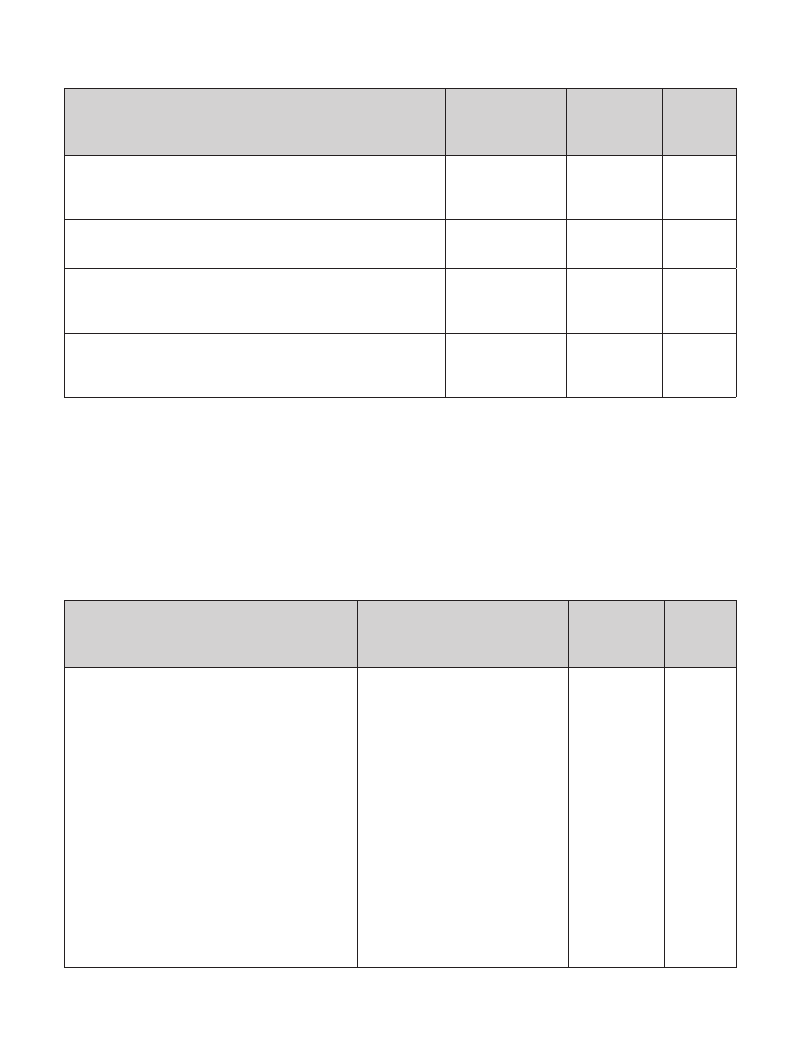
SOLOMON ISLANDS / 103
Existing Projects with Donors and International Financial Insti-
tutions
Pacific Islands Disaster Assistance Program (PDAP):. The Cook Islands,
Fiji, Kiribati, Niue, Palau, Papua New Guinea, Samoa, Solomon Islands,
Tonga, Tuvalu, and Vanuatu , Federated States of Micronesia and the
Republic of the Marshall Islands.
Pacific Islands Climate Prediction Project
(Cook Islands, Fiji, Kiribati, Niue, Samoa, Solomon Islands, Tonga, Tuvalu,
Vanuatu, Papua New Guinea)
South Pacific Sea Level and Climate Monitoring Project (Cook Islands,
Federated States of Micronesia (FSM), Fiji, Kiribati, Marshall Islands,
Nauru, Papua New Guinea (PNG), Samoa, Solomon Islands, Tonga,
Tuvalu and Vanuatu.)
Environmental sustainability mainstreamed into regional and national
policies and planning frameworks Federated States of Micronesia, Fiji,
Kiribati, Nauru, Palau, Marshall Islands, Solomon Islands, Tonga, Tuvalu,
Vanuatu);
Funding Agency /
International
Partners
USAID/OFDA
AUSAID and the
Australian Bureau of
Meteorology
AUSAID
UNDP
Allocated
Budget and
Period
(US$)
$4,001,756.
1995-present
AUS $ 5.5
million
2004 - present
1991 - 2010
2008 - 2012
$16,831,000
HFA
Activity
Area(s)
5
2
2,5
4.global facility for disaster reduction and recovery (gfdrr):
action plan
As the islands currently lack a disaster risk management strategy and implementation plan, a key activity would be
providing technical assistance to the development of a framework for disaster risk management and developing facilities
whereby this framework can be funded. Both country specific and PIC initiatives must be considered to (i) strengthen
institutional capacity for strategic planning and coordination (ii) integrate disaster risk reduction into all development
planning and (iii) lead towards the next phase of a comprehensive risk finance strategy.
Indicative Program for GFDRR Funding
(Projects and engagement areas being
considered for GFDRR funding)
A. Support the integration of DRM, including
DRR and CCA, in Solomon Is Government
institutions, policies and plans
Priority Activities:
1. Support the implementation of the DRM/CCA
Institutional Framework through the National
Disaster Council (NDC). This could include:
support to NDC Committees and Operational
Clusters at the national, provincial and local levels;
development of policies and arrangements for
integrating DRM/CCA into national, sector and
provincial planning and budget processes.
2. Strengthen DRR/CCA planning and budgeting
capacity of sector specific institutions and develop
DRR/CCA plans within key ministries (Ministries
of Agriculture, Infrastructure, Lands, Women Youth
and Children, Health, Education, Environment, Rural
Development)
Implementing Agency /
International Partners
Prime Minister’s Office
National Disaster Council (NDC)
Ministry of Development Planning and
Aid Coordination
Ministry of Finance and Treasury
NDC Ministries
NDMO
Sector Ministries
International Partners:
AusAID 2009 Au$0.6m
Potential for cooperation and
coordination with donor and NGO
community programs in DRR and CCA
Indicative
Budget and
Period
(US$)
2009 – 2011
2009
US$0.1m
2010
US$0 .2m
2011
US$0 .2m
HFA
Activity
Area(s)
1,2,3,4,5
(Cont.)

104 / Disaster Risk Management PROGRAMS FOR PRIORITY COUNTRIES EAST ASIA AND PACIFIC
Indicative Program for GFDRR Funding
(Projects and engagement areas being
considered for GFDRR funding)
B. Implement DRR activities and pilot
investments in priority sectors and at community
level
Priority activities:
1. Implementation of priority DRR activities in selected
key sectors. Possible activities could include:
improving end-to-end early warning arrangements;
developing and disseminating risk maps, undertaking
provincial and community level DRM programs in
conjunction with NGO and local community groups,
encouraging the private sector in DRR activities and
promoting the sustainable use and management of
ecosystems - including through better regulation of
land-use and development activities to reduce risk
and vulnerabilities.
This activity and the selection of pilot interventions
will depend on the progress under Activity A and
will be coordinated with other donors and partner
institutions.
2. Support the development and implementation of a
wireless broadband communication network across
the 9 provinces to support disaster risk management
arrangements and early warning systems.
Such a network could also support hazard
observation monitoring networks and rural
development, livelihood and welfare sector programs.
The network could comprise up to 7 satellite
receiving stations, microwave spine systems with
local village networks on a village ownership
business model and be installed in association with
technical co-sponsors.
Activities would include: addressing the feasibility
of the technical and business model solutions;
implementing a satellite receiving network with
microwave spine system in three stages; and
progressively establishing local networks through
villages on a local ownership business model.
Implementing Agency /
International Partners
National Disaster Council (NDC)
Ministry of Development Planning and
Aid Coordination
Ministry of Finance and Treasury
Ministry of Communication and
Aviation
Ministry of Environment, Conservation
and Meteorology
Ministry of Rural Development
NDMO
Utility agencies
NGO’s
Private sector
International Partners:
New Zealand based technical co-
sponsor
UNDP
EU
Indicative
Budget and
Period
(US$)
2009 – 2011
HFA
Activity
Area(s)
1, 2,3,4,5
2010
US$0.3m
2011
US$0.6m
2009
US$0.1m
2010
US$0.5m
2011
US$0.1m
(Cont.)

SOLOMON ISLANDS / 105
Indicative Program for GFDRR Funding
(Projects and engagement areas being
considered for GFDRR funding)
C. Strengthen institutional arrangements for
integrated hazard management, including
developing an integrated hazard information
system and progressively upgrading the hazard
observation networks.
Priority activities:
1. Develop a hazards strategic plan and undertake
capacity development within the hazards group
including but not limited to:
mapping of key hazards, development of an
integrated all-hazards information system with
risk and vulnerability tools, undertaking risk and
vulnerability assessments for priority and identified
sector clients
2. Establish minimum requirements for the Solomon
Is observation networks ( particularly for the
meteorological and hydrological monitoring) and
progressively upgrade in conjunction with other
regional programs
D. Develop the Guadalcanal Flood Plain
Management regime and warning system and
associated DM Arrangements
Priority activities
1. Define hazard monitoring regime and floodplain
management plan
2. Install hydrological network and warning system
3. Develop local disaster management arrangements
Total Budget Requested
Implementing Agency /
International Partners
NDC Committees for Hazards and
Risk Reduction
Ministry of Environment, Conservation
and Meteorology
Ministry of Mines and Energy
Ministry of Lands, Housing and Survey
NDMO
International Partners:
UNDP
EU
Regional HYCOS and Meteorological
review programs Melanesian Volcanic
Network initiative.
NDC – Risk Reduction Committee
Ministry of Mines and Energy –
Hydrological Unit
Ministry of Environment, Conservation
and Meteorology
Ministry of Lands, Housing and Survey
NDMO
International Partners:
ADB
EU
Indicative
Budget and
Period
(US$)
2009-2011
2009
US$0.1m
2010
US$0.2m
2011
US$0.2m
2009-2011
2009
US$0.1m
2010
US$0.5m
2011
US$0.1m
US$3.3m
HFA
Activity
Area(s)
1,2,3,4
2,3,4
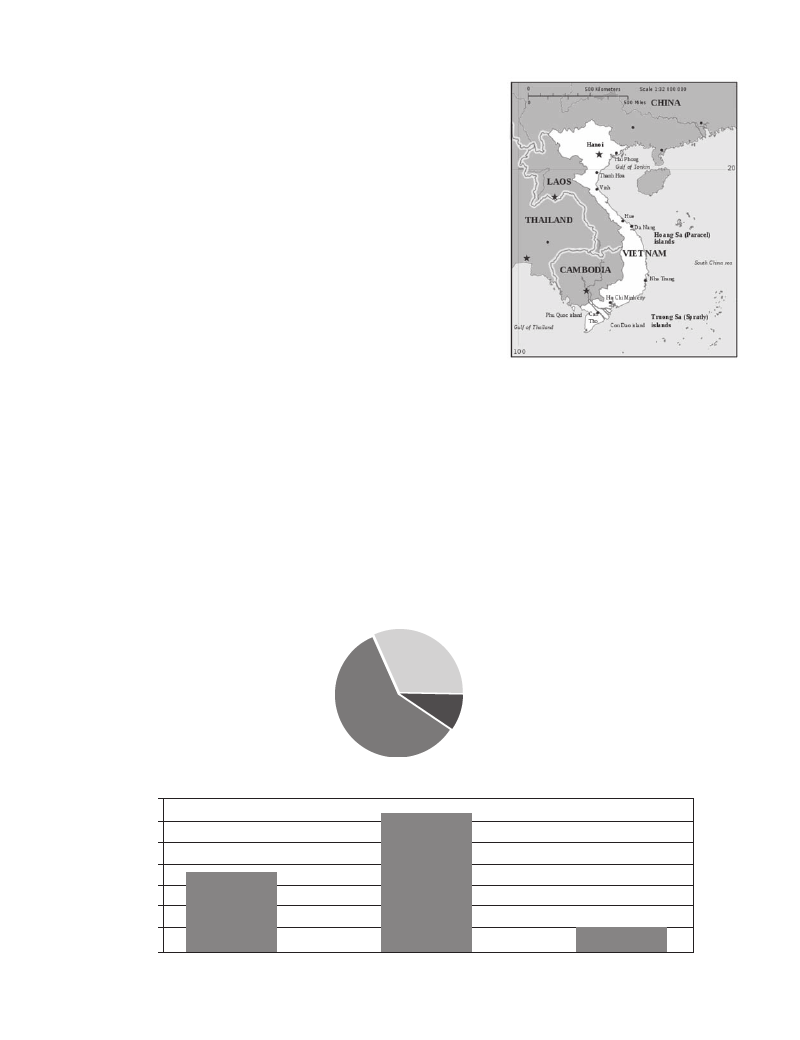
106 / Disaster Risk Management PROGRAMS FOR PRIORITY COUNTRIES EAST ASIA AND PACIFIC
VIETNAM
1. disaster risk profile
Located in the tropical monsoon area in South East Asia, Vietnam is
one of the most hazard-prone areas in the Asia Pacific Region.
Because of its topography, Vietnam is susceptible to typhoons,
floods, droughts, sea water intrusion, landslides, forest fires and oc-
casional earthquakes of which typhoons and floods are the most fre-
quent and most devastating hazards. The storm season lasts from May to December with storms hitting the northern
part of the country in May through June and moving gradually south from July to December.
Given the massive concentration of its population along the coastline and in the low lying deltas, disasters
take a heavy toll in lost lives and damaged livelihoods. The encroachment of economic activity and development
into marginally suitable areas such as floodplains, costal swamps, drainage channels or other natural buffers only adds
to the vulnerability of the population.
Household survey data from 2006 confirms the continued reduction of poverty in Vietnam, with the fraction
of households living below the poverty line attaining 16% (Vietnam Development Report 2008). Most of the
poor live in rural areas and while rural poverty rates are declining, urban poverty rates appear to have stagnated. Natural
disasters continually threaten the progress that has been made.
% People Affected by Disaster Type
Flood
59%
Storm
32%
Drought
9%
1,400,000
1,200,000
1,000,000
800,000
600,000
400,000
200,000
0
Economic Damages by Disaster Type (1000s USD)
Flood
Storm
Drought
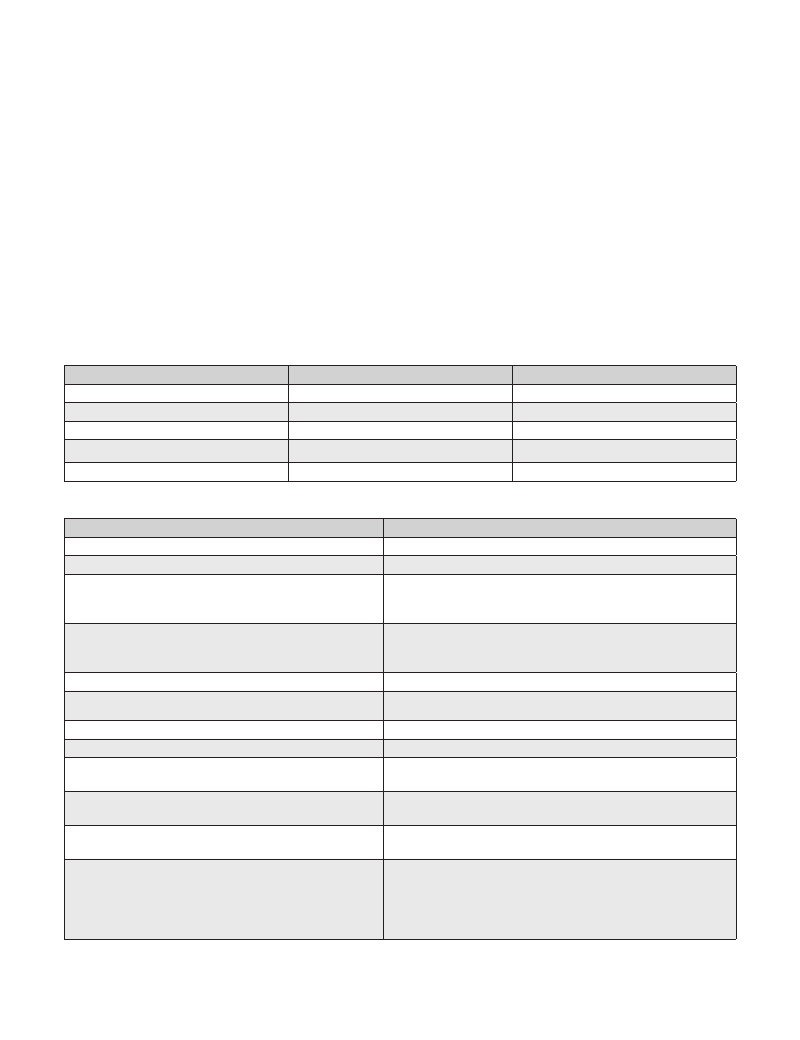
VIETNAM / 107
Every year, natural disasters cause an average of 750 deaths, and result in annual economic losses equivalent to
1.5% of GDP. However, damage and loss data is chronically underreported, so real totals may be much higher. As most
of the population is living in low-lying river basins and coastal areas, more than 70% of the population is estimated to be
exposed to risks from multiple natural hazards.
A 2007 assessment of the World Bank listed Vietnam as one of the five worst affected countries by climate
change, as a large proportion of the population, infrastructure and economic production including irrigated
agriculture, is located in costal lowlands and deltas. It appears that a one-meter rise in the sea level would affect
39 of the 64 provinces in six of the eight economic regions of Vietnam. About 20 percent of the communes could be
wholly or partially inundated, with the Mekong River Delta being the most seriously affected area. By one estimate, a
one-meter rise in sea level would affect approximately 5% of Vietnam’s land area, 11% of the population, and 7% of the
agriculture input.
Relative Disaster Frequency
Flood
Typhoon
Inundation
High
Medium
Hail rain/tornado
Drought
Landslide
Flash flood
Fire
Low
Earthquake
Accident (technology)
Frost
Damaging cold
Deforestation
Official Language
Independence
Area
Land Use
Government
Population
GDP
HDI
Terrain
Climate
Natural resources
Major products
Capital
Hanoi
Vietnamese
2 September 1945 (from France)
Total: 329,560 sq km
Land: 325,360 sq km
Water: 4,200 sq km.
Arable land: 20.14%
Permanent crops: 6.93%
Other: 72.93%
Communist state
86,967,524 (July 2009 est.)
$90.88 billion (2008 est.)
1. 105th out of 177 countries (HD Report 2007/2008)
Low, flat delta in south and north; central highlands; hilly,
mountainous in far north and northwest
Tropical in south; monsoonal in north with hot, rainy season and
warm, dry season
Phosphates, coal, manganese, chromate, offshore oil and gas
deposits, forests, hydropower
Agriculture products: paddy rice, coffee, rubber, cotton, tea, pepper,
soybean, cashews, sugar cane, peanuts, bananas, poultry, fish,
seafood.
Industries: food processing, garments, shoes, machine-building,
mining, coal, steel, cement, chemical fertilizer, glass, tires, oil, paper
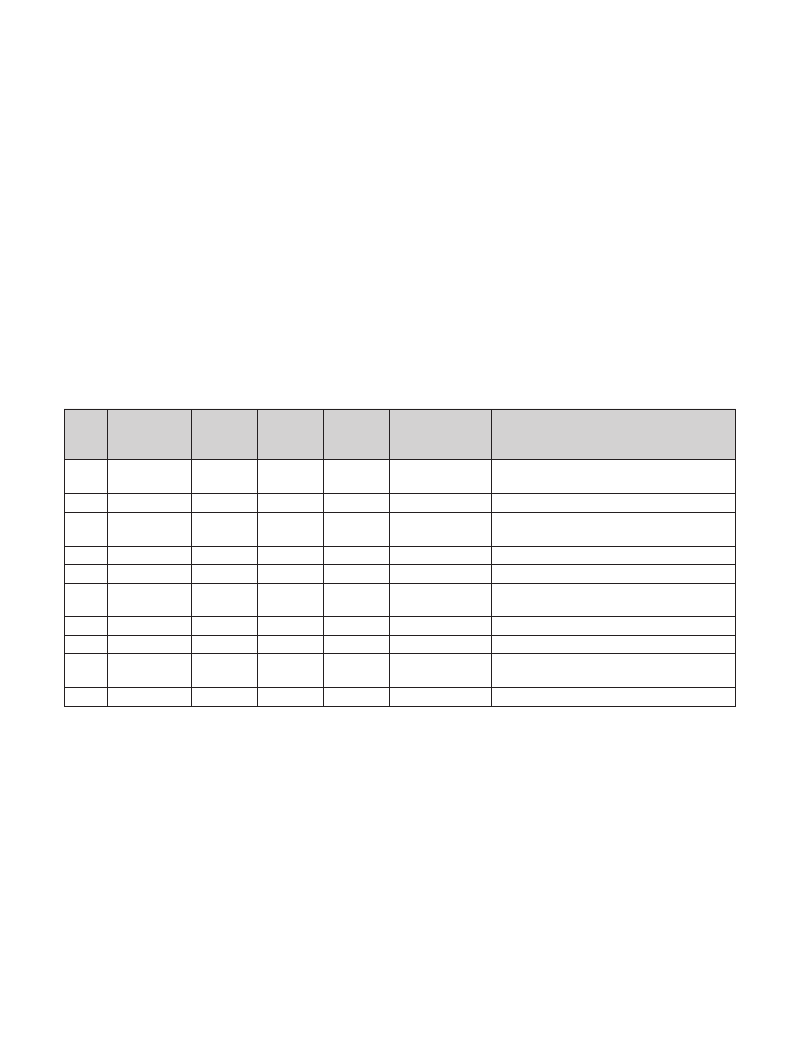
108 / Disaster Risk Management PROGRAMS FOR PRIORITY COUNTRIES EAST ASIA AND PACIFIC
EXPOSURE AND VULNERABILITY
An estimated 80 -90 % of the population is affected by typhoons according to the Ministry of Agriculture’s Cen-
tral Committee Flood and Storm Control. This includes both communities living along the long coastline and those living
in the upland areas who are vulnerable to subsequent flashfloods resulting from the typhoons’ heavy rains.
River plain flooding is extensive and prolonged throughout the wet season in the large deltas. Most of
Vietnam’s 2,360 rivers are short and steep, so that heavy rainfall in their basins produces intense, short duration floods.
Sizeable portions of the country and especially the Central Highlands and Central Coast are subject to heavy rainfall.
Three consecutive years of flooding in the Mekong Delta claimed the lives of over 1,000 people, mainly children.
An average of 6-8 typhoons or tropical storms of varying intensity strike Vietnam each year with more frequent oc-
currences in the northern and central coastal region earlier in the season.
In 1997, Typhoon Linda killed over 3,000 people along the southern coast.
RECENT DISASTERS
Vietnam – Major Hazardous Events of the Decade (1999-2008)
Year
2008
Event
Storm
Kammuri
No. of
people
dead
133
No. of
people
injured
91
No. of
people
missing
34
Economic loss
(VND billion)
1,939.733
Areas affected
9 North and Central provinces
2007 Storm Lekima
88
180
2006 Storm
Xangsane
72
532
8
3,215.508 17 North and Central provinces
4
10,401.624 15 Central and Southern provinces in
2005 Storm No. 7
68
28
3,509.150 12 North and Central provinces
2004 Storm No. 2
23
22
2003 Rains and
65
33
floods
298.199
432.471
5 Central provinces
9 Central provinces
2002 Flooding
171
456.831 The Mekong River Delta
2001 Flooding
393
2000 Flash Floods
28
27
(July)
1,535.910 The Mekong River Delta
2
43.917 5 Northern provinces
1999 Floods
595
275
29
3,773.799
10 Central provinces
Source: CCFSC’s Website, Historical Disaster Database, http://www.ccfsc.org.vn/ndm%2Dp/?module=800&sid=NDMP&mnid=67
2. disaster risk management framework
Vietnam’s primary DRM framework, the National Strategy for Natural Disaster Prevention, Response and
Mitigation to 2020, was approved by the Government in November 2007. The Strategy lays out Vietnam’s primary
disaster risk management objectives, focusing largely on water related disasters. MARD has estimated they will require
a budget of US $18 billion; around US $13 billion for structural measures i.e. building reservoirs, dams, dyke and US
$5 billion for non-structural measures. This figure does not include funds needed by other ministries and provinces to
implement disaster risk reduction action plans.

VIETNAM / 109
The National Strategy’s main objectives are: The integration of disaster risk management into socio-economic
development plans at the national and levels with a focus on disaster response; ensuring sustainable disaster recovery
which integrates disaster risk management; planning five different regional disaster risk management strategies for the
five geographical regions of the country; combining structural and non-structural measures in disaster risk management
and dividing implementation responsibilities and timing for risk reduction among a range of ministries.
Traditionally, Vietnam has focused on preparedness and response with a strong emphasis on structural
measures such as dykes and seawalls. Mitigation activities are slowly entering the development agenda but the
revised strategy still puts disaster preparedness and forecasting as its foremost objectives.
3. activities under the hyogo framework of action
HFA Priority # 1: Ensure that disaster risk reduction is a national and a local priority with a
strong institutional basis for implementation
THE NATIONAL DRM AGENCY
Vietnam’s national disaster risk management agency, the Committee Flood and Storm Control, is chaired by
the Minister of MARD. Established by decree 1990, it formulates all flood and typhoon related policies and mitigation
measures, with the Office of Government, the Ministry of Agriculture and the Ministry of Defense as its key members. Its
secretariat is provided by the Department of Dyke Management and Flood Control (DDMFC) of the Ministry of Agricul-
ture and Rural Development (MARD).
The CCFSC tends to convene primarily in response to natural disasters although Vietnam is making the
shift from a largely reactive to an increasingly proactive approach to disaster risk management. While
the CCFSC is responsible for a broad range of disaster risk reduction activities, its ability to focus on and coordinate
response among a wider range of ministries is limited due to its position within the Ministry of Agriculture and Rural
Development.
DRM LEGISLATION
Vietnam does not have a DRM law. The National Strategy for Natural Disaster Prevention, Response and Mitigation
to 2020 is the key document underpinning all disaster risk reduction policy and strategy. There are ongoing discussions
about drafting a disaster risk management law and this is planned as an activity in MARD’s new action plan and in the
newly-launched UNDP program on disaster risk reduction.
Disaster risk management policy is addressed in several additional Vietnamese laws and decrees.
• The Law on Water Resources promulgated in May 1998 governs water usage and the prevention of water
related disasters
• The Ordinance on Flood and Storm Control promulgated in March 1993 amended and revised in August 2000
formally created the existing institutional structure
• the Law on Dyke promulgated in November 2006 regulates the planning of flood prevention and response in
flood prone areas1
• The Environment Protection Law (1998) governs the use of natural resources as a means to prevent natural
disasters.
1 Available only in Vietnamese at www.ccfsc.org.vn/ndm-p
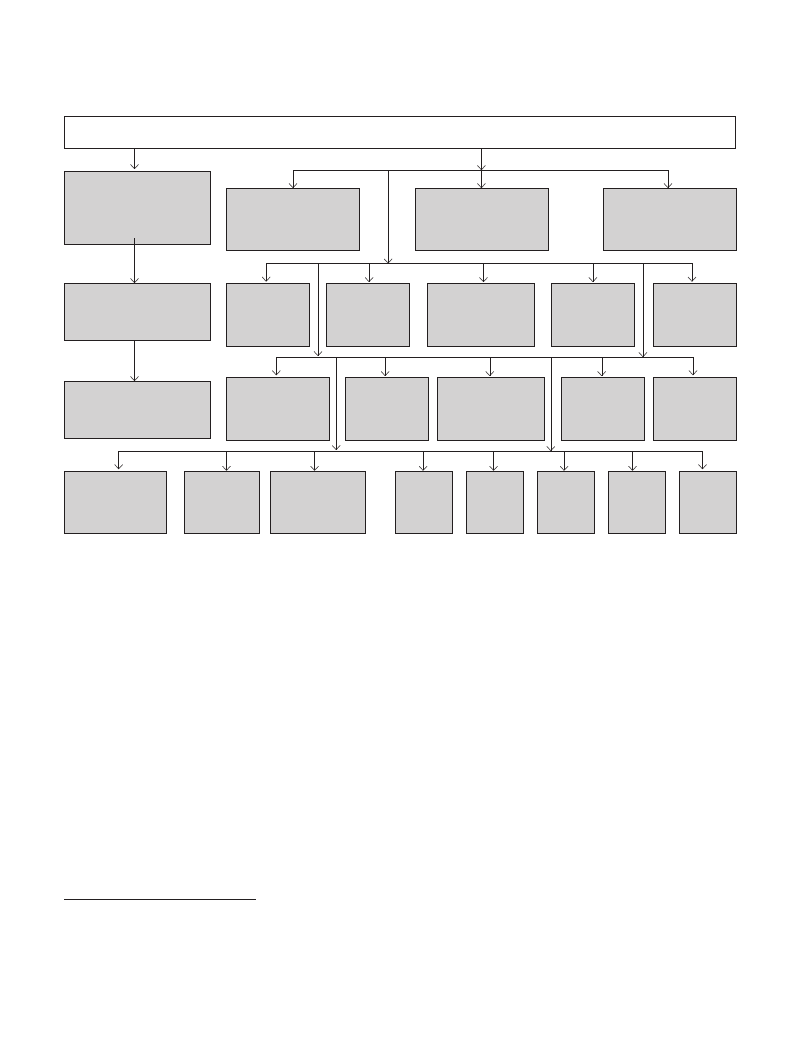
110 / Disaster Risk Management PROGRAMS FOR PRIORITY COUNTRIES EAST ASIA AND PACIFIC
GOVERNMENT
Central Steering Committee for Flood and Storm Control - Vietnam (CCFSC)
Provincial Committees
for Flood and Storm
Control and Search
And Rescue
(64 provinces and cities)
Government Office
Vice Chairman
Ministry of
Agriculture and Rural
Development (MARD)
Chairman
Ministry of Defense
Vice Chairman
District Committees
for Flood and Storm
Control and Search
And Rescue
Ministry of
Planning and
Investment
Member
Ministry of
Finance
Member
Ministry of
Natural Resources
And Environment
Member
Ministry of
Fisheries
Member
Ministry of
Transportation
Member
Commune Committees
for Flood and Storm
Control and Search
And Rescue
Ministry of
Labor, Invalid
and Social Affairs
Member
Ministry of
Foreign Affairs
Member
Ministry of
Science and
Technology
Member
Ministry of
Construction
Member
Ministry of
Health
Member
Ministry of
Labor, Invalid
and Social Affairs
Member
Source: CCFSC
Ministry
of Industry
Member
Ministry
of Tele-
communication
Member
Viet Nam
Red Cross
Member
Viet Nam
Television
Member
Voice
of
Vietnam
Member
Other legislative instruments which incorporate disaster risk management elements are
• The Law on Forest Development and Protection2
• The 2003 Law on Fisheries3
• The Ordinance on Irrigation Structures Utilization and Protection4
• The Ordinance on Hydro-meteorological Structures Protection5
DDMFC
Member
NHMC
Member
LEGISLATIVE AND ORGANIZATIONAL GAPS
Legislation related to natural disasters is prolific—in spite of the lack of an explicit DRM law—but enforce-
ment is erratic. Much of the existing legislation lacks clear institutional arrangements for enforcement and the current
organizational structures, mandates, annual budget earmarks and working agenda focus largely on disaster response
rather than prevention. There is no professional and specialized cadre of staff who focus on disaster management. In-
stead, it is managed in an ‘as-needed’ basis, part-time, by staff of the agriculture and rural development sector, mainly
under the irrigation and dyke management sub-sectors. Some of these gaps have been addressed in the on-going World
Bank Financed Natural Disaster Risk Mitigation project and the new UNDP/One UN program.
2 Available only in Vietnamese at http://www.nea.gov.vn/luat/toanvan/Luat_BVPT_Rung.html
3 Available only in Vietnamese at http://www.nea.gov.vn/luat/toanvan/Luat_Thuysan.html
4 http://www.vncold.vn/Web/Content.aspx?distid=415
5 http://www.kttvqg.gov.vn/Default.aspx?tabid=12

VIETNAM / 111
DRM AT THE SUB-NATIONAL LEVEL
Line ministries, provinces and districts are responsible for disaster risk management planning, creating
both vertical and horizontal reporting structures. The Ordinance on Flood and Storm Control mandates the cre-
ation of provincial and other sub-national disaster risk management strategies and plans and has subordinate provincial
and district Committees for Flood and Storm Control.
All 64 provinces and cities of Vietnam are tasked with developing their own action plans to implement the
National Strategy up to 2020. As of March 2009, approximately 90% of provinces created and approved their own
action plans for incorporation into the National Action Plan. While actual implementation and funding for these action
plans varies widely from province to province, the sheer number of provinces which have undertaken the first steps in
this exercise is commendable.
Disaster risk management activities are coordinated across ministries at the national level though the
work of the CCFSC, but at the provincial and lower level, reporting is both vertical and horizontal, through
line ministries and local committees for Storm and Flood Control. For example, while a wide range of minis-
tries belong to and participate in the Central Committee Flood and Storm Control, at the provincial level, the provincial
department of construction would report upwards to the national Ministry of Construction in parallel to the Provincial
Committees for Storm and Flood Control.
DRM IN THE POVERTY REDUCTION STRATEGY
Disaster risk management is integrated into Vietnam’s Poverty Reduction Strategy and Country Develop-
ment Plans, although implementation remains uneven. Within Vietnam’s Socio-Economic Development Plan
2006-2010, the Government of Vietnam has stipulated it will halve the number of poor people falling back into poverty
due to natural disasters by 2010 as one of its primary indicators6. This is a good first start, but there is room for increased
integration of risk reduction into all levels of development planning.
DISASTER RISK MANAGEMENT IN THE COUNTRY PARTNERSHIP STRATEGY
The Vietnam Country Partnership Strategy 2007-2011 contains the following disaster risk reduction bench-
marks: “Strategy and action plan for DRM approval; 1.) Targeted communities and populations reporting improved early
warning for storms and floods; 2.) Flood forecasting with 80% preciseness on the Red River 48 hours in advance, in the
Mekong River 3-5 days in advance, and 3.) Feasibility of agricultural flood-index based insurance tested for scale-up.”
INTERMINISTERIAL INVOLVEMENT IN DRM
A wide range of government agencies and ministries are involved in disaster risk management. The National
Committee for Search and Rescue (NCSR) is responsible for search, rescue and emergency relief during and after di-
sasters; The Fatherland Front and Red Cross Society are charged with receiving and distributing emergency relief dona-
tions; The Ministry of Natural Resources and Environment (MONRE) and Geophysics Institute of Vietnam Academy of
Science and Technology are charged with disaster warning and forecasting; the Voice of Viet Nam (VOV) and Vietnam
Television (VTV) are responsible for disseminating disaster warning and forecast to the public; The Ministry of Finance
(MOF) is responsible for allocating and releasing emergency response funds and other recourses in order to meet post-
disaster needs; The Ministry of Health (MOH) is responsible for post-disaster environment health needs; The Ministry
of Transportation (MOT) is responsible for traffic safety and rehabilitation during and after disasters; The Ministry of
Post and Telecommunication is responsible for rehabilitating communication systems ex-poste; The Ministry of Labour,
Invalids and Social Affairs (MOLISA) is charged with setting disaster compensation policies; The Ministry of Industry is
6Reporting on progress made on this indicator was not available as of April 2009.

112 / Disaster Risk Management PROGRAMS FOR PRIORITY COUNTRIES EAST ASIA AND PACIFIC
responsible for managing reservoirs in and hydro power plants; The Ministry of Foreign Affairs is responsible for disaster
related international cooperation issues. The above is not an exhaustive list, but all are members of the CCFSC.
CLIMATE CHANGE AND DISASTER RISK MANAGEMENT
The Government of Vietnam approved its National Target Program (NTP) to respond to climate change in
December 2008. The National Target Program steering committee is led by the Ministry of Natural Resources and the
Environment, with the participation of key ministries such as the Ministries of Agriculture, Transportation, and Construc-
tion. This committee cooperates and coordinates fairly well with the national disaster agency, in part due to their own
initiative, in part to external donor pressure. Both ministries participate in DRM and climate change steering committees
and are working together to ensure that their strategies are complimentary.
HFA Priority # 2: Identify, assess and monitor disaster risks and enhance early warning
NATIONAL, REIONAL AND LOCAL SECTORAL RISK ASSESSMENTS
While limited national hazard mapping exists with a primary focus on water related events, there is little if
any comprehensive risk mapping in Vietnam. Where hazard data exists, there is often insufficient exposure data.
Historically, the hazard mapping data that exists is held by different agencies and where detailed maps ex-
ist, considered sensitive by the government and not widely disseminated. There are three larger scale hazard
mapping projects but two of these projects (tsunami and drought mapping) have experienced considerable delays.
For example, where detailed flood maps exist at the provincial level, they are often not factored into new
development plans. No institution, including the Committee Flood and Storm Control, has the mandate to ensure risk
maps are taken into consideration.
Donor and NGO projects have sponsored ad hoc provincial and community level risk assessments. An
OFDA/UNDP 2003 mapping project created high resolution risk maps for eight provinces in central Vietnam. However
limited field survey data produced risk maps that were subsequently never used by most participating provinces and the
map distribution extremely limited. Community level risk mapping have been undertaken in some other projects, but data
quality is not sufficiently detailed to be of use for national level risk maps.
There is however, a high level of awareness about Vietnam’s exposure to natural hazards at both the na-
tional, provincial and commune level when related to annual river based flooding rather than floods as-
sociated with tropical cyclones. Communities living along the low lying Mekong Delta areas have experienced floods
for generations, and the government has developed a program of “living with floods.”
At some point in the future, the government should strong consider an integrated national disaster and
hazards data and mapping system as a first step to obtaining reliable data on the scale of economic ac-
tivities at risk from natural hazards. Currently MONRE’s Institute of Hydro-met and Environment has three hazard
mapping projects underway.
Project
Flash flood risk mapping at district level and 1:200.000
scale for selected mountainous provinces
Tsunami risk mapping for coastal areas
Drought hazard mapping for the Highlands and Southern
Central provinces
INDICATORS ON DISASTER RISK MANAGEMENT
Budget (USD)
$1.02 million
$384,000
$395,000
Timeframe
2006-2009
2006-2008
(not completed)
2006-2008
(not completed)
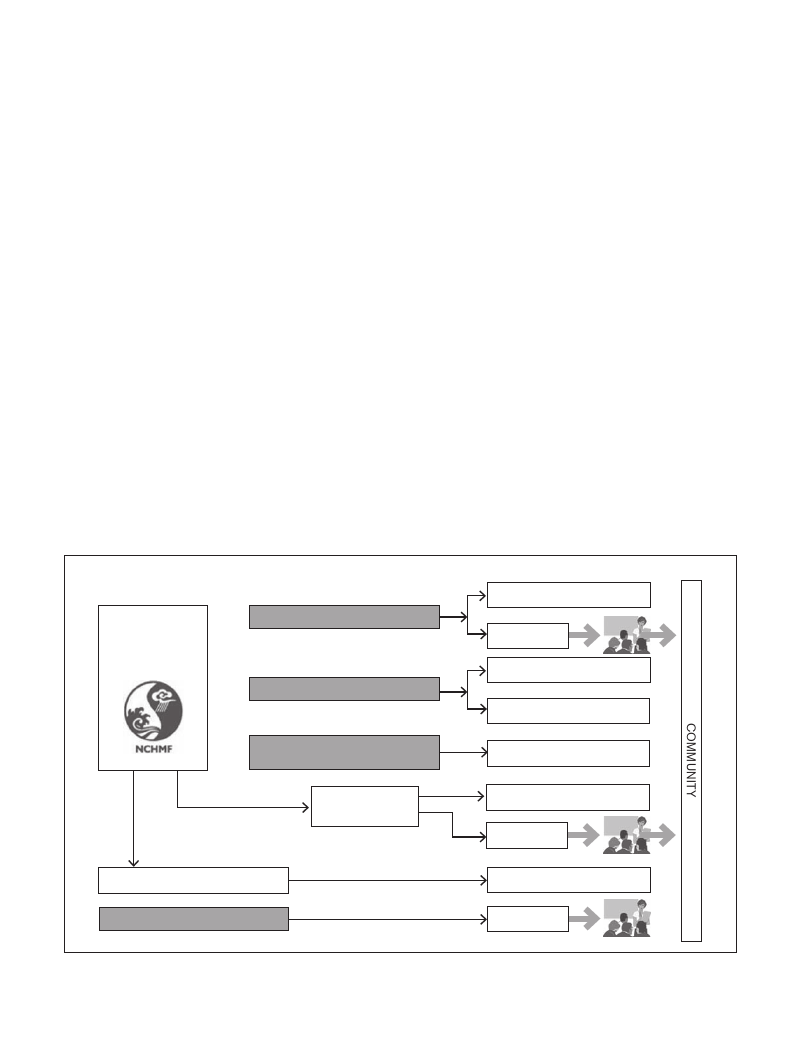
VIETNAM / 113
There shortage of data, tools and capacity to quantify natural hazard risks and to interpret them in a man-
ner which allows risk reduction to be integrated explicitly into development planning and decision-making.
Vietnam lacks a system of disaster risk and vulnerability indicators at national and sub-national scales that will enable
decision-makers to assess the impact of disasters on social, economic and environmental conditions and disseminate
the results to decision makers, the public and populations at risk.
EARLY WARNING SYSTEMS
Disaster risk management coordination is strongest, in Vietnam, for hydromet disasters. When storms ap-
proach over the South China Sea, they are monitored by the Geophysics Institute and the Central Hydro-metrological
Center, which produce forecast bulletins every two hours on the approaching event. The bulletins are immediately and
simultaneously sent to Vietnam Television/ Voice of Vietnam and the Maritime Broadcasting System for broadcasting
nation-wide, to the Department of Dike Management and Flood Control, which is the Standing Office of the Central Com-
mittee for Flood and Storm Control, and uploaded on the Center’s website for external reference. The DDMFC, based
on information received from the National Hydro-met Center, convenes meetings of the CCFSC.
Depending on the severity of the disaster, the CCFSC will be chaired by the Minister of MARD or the Deputy
Prime Minister/Prime Minister. Its other core members, the National Committee for Search and Rescue, MOT,
MOH, VTV, VOV and others participate based on the scale and requirements of the event.
When a storm is incoming or following a natural disaster, the CCFSC convenes once a day, or more fre-
quently if necessary. It prepares directive telegraphs which are dispatched to relevant ministries and localities af-
fected by the disaster, asking for appropriate actions i.e. population evacuation, return of fishing boats, securing critical
assets, etc. These directives are also broadcast through VTV and VOV nation-wide.
MONRE is the state agency charged with hazard monitoring through its Department of Hydro-meteorology
Central Hydro-
Meterological
Forecasting
Center
Delivery of hydro-meeterological forecasts and warnings
Telephone, Fax
Government agencies, CCFSC
Media
International centers
GTS
Web: nchmf.gov.vn
GTS, Maritime Broadcasting Radio,
Internal Hydro-Met. radio
Fishing boats
Regional
Hydro-Met.
Specialized services
Media
Provincial forecasting centers
Source: MONRE
Telephone, Fax
Local government
Media

114 / Disaster Risk Management PROGRAMS FOR PRIORITY COUNTRIES EAST ASIA AND PACIFIC
and Climate Change. The tasks of weather forecasting (mainly hydrological and metrological phenomena) observa-
tions and issuing early warning sits with the National Center of Hydro-meteorology which has networks at the regional
and provincial levels. The National Center of Hydro-meteorology is a member of CCFSC, responsible for providing early
warning and forecasts for the CCFSC’s action.
FORECASTING
Vietnam has nine regional hydro-met forecasting centers, 54 provincial hydro-met forecasting centers, and the following
observation station networks:
Description
Surface meteorological station
Rain gauge sites
Hydrological station
Marine meteorological station
Radio stations
Weather radar stations
Wind-gauge by theodolite
Ozone and UV stations
Weather radars
Radiation
Quantity
174
764
248
18
5
6
8
3
6
13
Insufficient coverage and distribution of the observation centers as well as outdated equipment is cited by
the national hydro- meteorology centers as an impediment to accurate forecasting. It is not only a problem of
equipment. Were more modern equipment in place, it would still need to be accompanied by a comprehensive human
resource development program.
DATA SHARING
Vietnam has linkages to numerous regional and international climate forecasting centers including. It has been a mem-
ber of the WMO since 1955 and is participating in the Regional Association II (Asia). Vietnam also participates in the
UNESCAP/WMO Typhoon Committee (member since 1979, TC chair: 2006-2007), the ASEAN SCMG (member since
1995), the Mekong River Commission (member since 1957; signed the Agreement on the cooperation for the sustain-
able development of the Mekong river basin in 1995), the North-west Pacific Tsunami Advisory Center (NWPTA), Japan,
the Pacific Tsunami Warning Center (PTWC).
Vietnam has a number of bilateral forecasting agreements, including agreements with: China: (since 1993): exchange of
weather forecast expertise, instrumentation in calibration, communication using PCVSAT, research, training; the United
States: (since 2001) for technology transfer (NWSRFS, ETA models), training: Asia Pacific Desk, AMS annual meetings,
training courses in Vietnam and US; Australia: (since 2002) for technology transfer, training; Lao PDR for technology
transfer: providing Data receiving, processing and plotting systems; 6 meteorological and hydrological stations to DMH,
training; Cambodia; Japan (GAME, SOWER/Pacific, MAHASRI); ADPC (Multi-hazard early warning system, application
of climate information and prediction) and APEC (APEC Climate Center).
COMMUNICATIONS
Vietnam’s communications system is relatively developed and functional before and after disasters. Viet-
nam has a telephone and fax hotline which connects the meteorological service with the CCFSC, the NCSAR, and the
VOV/VTV in the event of emergencies. The CCFSC is also connected via phone and fax with the Standing Offices for

VIETNAM / 115
Flood and Storm Control which is often housed in the Department of Agriculture in the provinces. They also make use
of village/neighborhood speaker systems to broadcast warnings at the community level.
HFA Priority # 3: Use of knowledge, innovation, and education to build a culture of safety and
resilience at all levels
EDUCATION AND TRAINING
Increasing community awareness about disaster risk reduction is undertaken primarily though donor-fund-
ed projects rather than through the Government of Vietnam, although the two work in close cooperation.
Vietnam runs natural disaster awareness raising pieces on its state-run television and radio stations and NGOs sponsor
community events on disaster risk management.
Scaling up its Community based Disaster Risk Management program is a main priority for Vietnam in the
next decade. As a part of their CBDRM programs, they plan to train all staff at central, provincial and commune level on
disaster risk management, establish disaster risk management centers at the province level and engage in a large-scale
community awareness raising programs. Support for this activity is being requested from a wide range of donors.
The National Strategy for DRM up to 2020 has a component on integrating disaster risk reduction into
school curricula. While not yet on the curricula, it is acknowledged as an important area with several NGOs already
working on pilot programs.
INFROMATION MANAGEMENT AND EXCHANGE
Vietnam has several academic research institutions designated to studying different hazards. The Institute
of Hydro-Meteorology studies flood and storms, the Institute of Geography focuses on geo-hazards and the Institute of
Geophysics is in charge of studying and providing warnings about earthquakes and tsunamis.
HFA Priority # 4: Reduction of the underlying risk factors (reduction of exposure and vulner-
ability and increase of resilience)
ENVIRONMENTAL AND NATURAL RESOURCE MANAGEMENT
Mangrove forests, which have traditionally provided a barrier against flooding and seawater intrusion,
have steadily been decreasing in acreage as Vietnam’s population expands. However, the government has
been making a concerted effort at mangrove reforestation as well as passed appropriate legislation (such as the Law on
Forest Protection) to reforest vulnerable areas and encourage the sustainable use and management of ecosystems. They
have also offered advice and financial assistance to communities who use adaptive special plants in flood-prone areas.
LAND USE PLANNING
Land use planning incorporates some risk reduction policies but exposure to natural hazards is inconsis-
tently taken into consideration. For example, while new developments must factor in earthquake and other hazards,
a site’s location in an area prone to flash flooding will not necessarily preclude major development. Increasing provincial
level awareness about factoring natural disasters into land use planning is a priority for sustainable development.
Vietnam’s building codes factor in certain natural hazards (for example, typhoons, earthquakes, sea level
rise, wind loading) but their enforcement varies widely from province to province. While construction codes
are stringent about earthquake resilience, flood resistance for buildings is more loosely enforced. In the highly storm and
flood prone provinces of Quang Nam, for example, approval is contingent on considering the impact of a wide range of

116 / Disaster Risk Management PROGRAMS FOR PRIORITY COUNTRIES EAST ASIA AND PACIFIC
natural hazards. In other equally hazard-prone provinces, this is not compulsory. Instead, it is frequently dependant on
the level of awareness of the particular province, investor or developers and their interest in safeguarding their develop-
ment. Pre-construction environmental impact assessments sometimes consider flooding as a factor. The existing build-
ing codes mainly apply for major public works. There is almost no enforcement of the building codes in construction of
private housing.
SOCIAL AND ECONOMIC DEVELOPMENT PRACTICE
Households living in disaster prone areas have been active in diversifying their income sources so as to
reduce risk (Vietnam Development Report 2008). By correlating daily rainfall data from 172 weather stations with
household survey data, it appears that farmers in higher rainfall areas facing more volatile conditions areas diversifying
their labor inputs more to safeguard their assets against risk (i.e. not relying on only crops but on crops and livestock).
But they do not self-insure by accumulating livestock or asset holding. The Vietnam Development Report also suggests
that farmers in these disaster prone areas have fewer diversification options, perhaps because they do not have good
access to land or credit.
HFA Priority # 5: Disaster preparedness, recovery and reconstruction at national, regional, and
local levels
RISK FINANCING
Most budgetary allocations in Vietnam are intended for response. Three percent of both the central and prov-
ince level budgets are allocated for response contingent funds. These funds cannot be carried over from year to year and
are in principal, supposed to be returned to the state budget. They are rarely used for mitigation activities, but frequently
spent each year. There is an annual budget line at central and province level for both the relocation of people living in
high risk areas and for the maintenance of the dyke systems.
Under the Ordinance on Flood and Storm Control, the Vietnamese Government is responsible for losses to
public assets caused by natural disasters. There is also limited compensation for private assets, housing and livestock
(but, as in most countries, insufficient to cover the entire loss). Vietnam does not have a disaster insurance scheme in place.
Currently, MOF and MARD are considering a pilot agricultural insurance scheme which will be submitted to the Govern-
ment by end of June 2009. The World Bank is also undertaking an initial study about risk transfer instruments currently in
place in Vietnam.
When a disaster is declared, provinces use their contingency fund and may later ask the state for reim-
bursement if damage is in excess of the provincial contingent fund. They are also reliant on funds from line
ministries. Funds are usually transferred from state to provincial treasuries for expenditure at the local level.
There is no comprehensive data available for total disaster relief expenditure nor origin of these funds. Post
disaster funding is a complex web of state and provincial budging, line ministry reallocations, donors’ funds outside the
annual line items, private companies and individuals who donate through the mass organizations such as the Fatherland
Front. The CCFSC tries to track funding data on its website.
DAMAGE AND LOSS ASSESSMENTS
Following a natural disaster, key ministries (usually the Ministries of Agriculture, Transportation and Health)
send missions to the worst affected areas to investigate the situation and direct their respective sectors
on appropriate response and recovery actions. The DDMFC receives and consolidates damage data from local
levels on a daily basis following a natural disaster. The consolidated data is sent to the CCFSC/Prime Minister for the
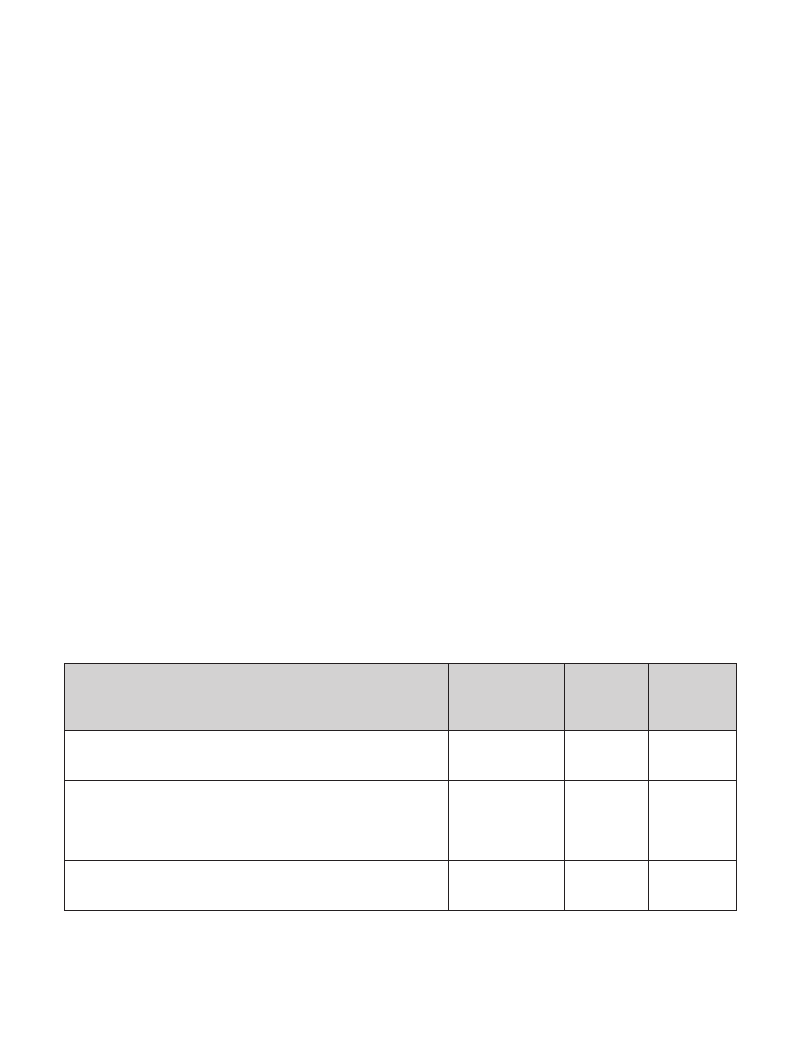
VIETNAM / 117
Government’s decision on the level of support provided to the affected areas. Following the initial disaster and damage
reports, the Ministry of Finance allocates budget support from the State Treasury to provincial Treasuries in accordance
to the Government’s decision.
The broader socio-economic impacts of disasters are acknowledged by the government. But the Govern-
ment’s damage and loss assessments can be inconsistent across sectors and provinces and total loss
figures difficult to substantiate. Damage reported by communes – for instance to housing - may be in excess of
government assistance allowances and so revised downwards to match available funds. Available norms for valuing
damages – as in many countries - do not take loss into consideration and may significantly underestimate the total impact
of natural hazards. Nevertheless, the government does send out teams from central ministries to assess damages in
major sectors as well as relied on commune and provincial damage estimates.
EMERGENCY MANAGEMENT
Vietnam has a central, provincial, district and commune level emergency response plans for storms and
floods which are reviewed and updated annually. Vietnam is particularly strong at evacuations pre-storm and has
moved up to half a million people from the coastline within the space of a few hours.
Search and Rescue is embedded in the Ministry of Defense and its garrisons around the country. Responsi-
bility falls under the National Committee for Search and Rescue located in and led by Ministry of Defense and composing
of a number of relevant ministries such as the ministries of transportation, health, agriculture and rural development.
The National Committee for Search and Rescue has three ‘Centers of Sea Search and Rescue’, three ‘Cen-
ters for Oil Spill Response’ and a number of emergency units at military airports. There is interest on behalf of
the government in improving its search and rescue capacity, particularly in terms of training and equipment. At present,
following a natural disaster, locally based army garrisons are mobilized, often young soldiers with-no professional skills
for search and rescue. As a part of its effort to strengthen key technical capacity across the sector, Vietnam would like to
focus on improving the capacity of its search and rescue cadre.
4.key donor engagements
Existing Projects with Donors and
International Financial Institutions
Natural Disaster Risk Mitigation Program involves prevention and
mitigation investments, community based disaster risk management, post-
disaster reconstruction support and institutional strengthening.
Hazard Risk Management Institutional Development Advocacy and
Capacity Building Program provides technical assistance for capacity
building in risk finance, CBDRM, urban drainage designs, climate resilient
cities, and integration of DRM into poverty reduction activity.(* see chart
below for additional details)
Emergency Rehabilitation of Calamity Damage Project for a rapid
resumption of livelihoods and reduction of vulnerability to natural disasters
in the affected areas (primarily infrastructure repair).
Funding Agency /
International
Partners
World Bank,
Netherlands, Japan
and AusAID
GFDRR
ADB
Allocated
Budget and
Period
(US$)
$110 million
$914,000
$76 million
HFA Activity
Area(s)
1, 2, 3, 4, 5
1,3,4,5
4,5
(Cont.)
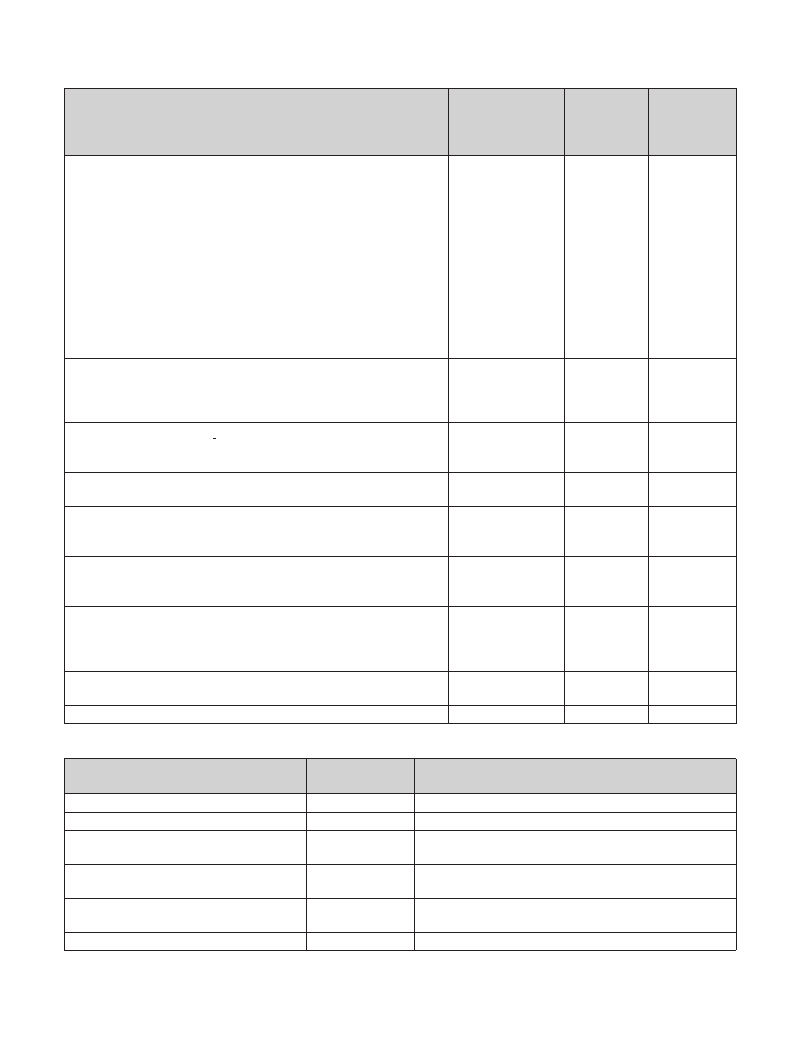
118 / Disaster Risk Management PROGRAMS FOR PRIORITY COUNTRIES EAST ASIA AND PACIFIC
Existing Projects with Donors and
International Financial Institutions
Strengthening Institutional Capacity for Disaster Risk Management in
Vietnam, including Climate Change related disasters program provides
institutional capacity building TA for DRM and climate change related
issues in Vietnam.
-Supporting evidence-based national and local Disaster Risk
Management legislation, strategies and policies and plans developed,
approved and integrated in socio-economic and sectoral strategies and
plans.
-Strengthening Institutional systems and processes to enhance
coordinated and integrated DRR actions and adaptation to global
climate change, at national and provincial level.
-Strengthening national and local capacities to minimize the adverse
social, economic and environmental impacts of climate-related disasters.
Program for Hydrometeorological Risk Mitigation in Asian Cities
(PROMISE): (Chittagong, Bangladesh; Hyderabad, Pakistan; Dagupan
City, the Philippines; Kalutara, Sri Lanka; and Da Nang, Vietnam,
Semarang in Indonesia)
Asia Flood Network (AFN): (Cambodia, China, Laos, Thailand, and
Vietnam in the Mekong river basin and Bangladesh, India, Nepal, and
Pakistan in the Ganges-Brahmaputra-Megna )
Drought Preparedness in Southeast Asia: (Cambodia, East Timor, and
Vietnam.)
Project for Building Disaster Resilient Societies in Central Region of
Vietnam supports storm and flood mitigation infrastructure works in the
three central provinces of Quang Ngai, Thua Thien Hue and Quang Nam.
Joint Advocacy Network Initiative(JANI – formerly Dani) program
works to improve the effectiveness of Community-based Disaster Risk
Management (CBDRM) in Vietnam
Capacity Building for Mitigation and Adaptation of Geodisasters
Related to Environment and Energy Development in Vietnam project
aims to building capacities for Vietnamese experts in the areas of
geodisaster adaptation and mitigation.
Community Based Disaster management in the Mekong Delta/
Mountainous areas
Mangrove Plantation, disaster preparedness and climate change
Funding Agency /
International
Partners
UNDP/One UN
Allocated
Budget and
Period
(US$)
$4.5 million
USAID/OFDA
$1,855,286
2005-present
USAID/OFDA
$2,579,927
USAID/OFDA
JICA
$1,200,000.
$4.5 million
ECHO
Norway
$2.2 million
Oxfam UK/Hong
Kong
Vietnam Red Cross
HFA Activity
Area(s)
1,2,3,4,5
1,2,3,4
2,3
2,3
1,2,3,4,5
1, 2, 3, 5
2,3,4,5
2,3,4
2,3,4
Ongoing GFDRR Activities
(Current GFDRR Portfolio)
Study on existing transfer activities
Study on drainage system for coastal cities
Climate resilient cities, pilot in Ha Noi,
Can Tho and Dong Hoi
Documentaries to promote CBDRM
DRM integration into the Bank’s poverty
reduction project
Capacity support to DRR and CCA
Budget
(years covered)
165k
154k
320k
HFA Activity Area(s)
HFA Priority #4: Reduction of the underlying risk factors
HFA Priority #4: Reduction of the underlying risk factors
HFA Priority #4: Reduction of the underlying risk factors
65k
110k
HFA Priority #3: Use knowledge, innovation and education
to build a culture of safety and resilience at all levels
HFA Priority #4: Reduction of the underlying risk factors
68k

VIETNAM / 119
5.global facility for disaster reduction and recovery (gfdrr):
action plan
By putting forth the National Strategy and National Action Plan, the Government has shown a strong interest in mov-
ing forward with the DRM agenda. Vietnam currently has a $110 million IDA program. Although DRM is a priority for
the government, lessons learned from this activity show there is extremely weak capacity for client implementation so
Bank execution is proposed for much of the next round of GFDRR grants. Moreover, there is a strong need to integrate
DRM into many of Vietnam’s new investment projects. The Government has proposed integrating DRM into its socio-
economic planning and, in partnership, the World Bank Hanoi would like to integrate DRM into its upcoming and existing
projects.
The areas proposed have been identified in consultation with local authorities and reflect HFA priories. They will build
on activities started in the first round of GFDRR programming (such as expanding support for CBDRM and undertak-
ing a more broad reaching risk finance strategy) and will contribute to the development of the future lending program in
Vietnam.
Indicative Program for GFDRR Funding
(Projects and engagement areas being considered for
GFDRR funding)
I Integration of Disaster Risk Reduction into Pipeline
World Bank projects in Vietnam
Priority activities:
1.Identification of pipeline projects suitable for DRM integration
2. Mainstreaming disaster reduction activities (structural
improvement and non structural activities such as assessments,
awareness raising etc) and into upcoming projects such as
roads, schools, hospitals, the Northern Mountains program etc.
during the preparation phase
3. Developing guidelines for a detailed disaster risk assessment
checklist for future Vietnam projects
4. Integration of DRR into upcoming and existing CAA Activities
4. Preparation of the next IDA lending program for Disaster Risk
Reduction in Vietnam which is expected to get on board in FY
2012.
II Risk Financing Options – Supporting the Development
of Vietnam’s Strategy
Priority activities:
1.Identification and assessment of catastrophe risks (e.g. wind,
earthquake, flood),
2. Collection of relevant existing hazard, vulnerability and exposure
data
3. Support development of a catastrophe risk finance model for
Vietnam that would allow for risk transfer and risk sharing
mechanisms
4. Support development of draft legislation and regulations that
would allow implementation if such a scheme in Vietnam.
5. Explore development of supplemental multi-hazard risk maps
6.Strengthen Ministry of Finance and National Planning capacity
for understanding and bringing a focus to this issue
7. Establishment of an umbrella contingent component for the
Bank’s investment projects that can be mobilized for disaster
recovery
Implementing Agency
/International
Partners
WBOH
WBOH
Ministry of Finance,
Ministry of Agriculture
and Rural Development
Indicative
Budget and
Period
(US$)
2009-2011
$2 million
2009-2011
$3 million
HFA Activity
Area(s)
1,2,3,4,5
1,2,3,4,5
(Cont.)

120 / Disaster Risk Management PROGRAMS FOR PRIORITY COUNTRIES EAST ASIA AND PACIFIC
Indicative Program for GFDRR Funding
(Projects and engagement areas being considered for
GFDRR funding)
III Support Vietnam’s NAP Implementation
Priority activitie may includes
1.In close coordination with other donors, provide TA for the
preparation of the National Action Plan to implement the
National Strategy on DRM
2. Support sub national DRM structures, in coordination with
UNDP, including both establishment of centers and staff
capacity building
3. Update and developing risk maps and related information in
conjunction with activity II
4. Support Vietnam’s planned national DRM training and
awareness raising activities
5. Improving development and enforcement of building codes
which incorporate disaster risk reduction measuress
IV Strengthen the hydrological and meteorological
capability for Vietnam
Priority activities
1.Review the meteorological and hydrological observational
networks, data collection, processing and information
dissemination systems.
2. Based on identified gaps and establish requirements for
effective meteorological and hydrological monitoring, forecasting
and end-to-end warning system and service delivery, at the same
time addressing hazard management and climate change needs.
3.Review and develop institutional arrangements to support a
sustainable level of service
4.Implement institutional and sustainable service arrangements.
5.Design and implement systems support purchase of and tools
to support regular meteorological and hydrological monitoring,
forecasting, end-to-end warning and effective service delivery.
6.Enhance the climate database and operational systems for
effective climate change monitoring, prediction and evaluation.
7.Identify skills gap and assist with training and capacity building.
Implementing Agency
/International
Partners
WBOH
Central Committee for
flood and Storm Control,
MONRE, Provincial
authorities
MONRE, Department
of Hydro-meteorology
and Climate Change,
National Center of
Hydro-meteorology
Indicative
Budget and
Period
(US$)
2009 -2011
$6 million
2009-2011
$3.9 million
HFA Activity
Area(s)
1,2,3,4,5
2
Support to program monitoring, evaluation and oversite
Total Budget Requested:
WBOH
3 years
100,000
US$15,000,000
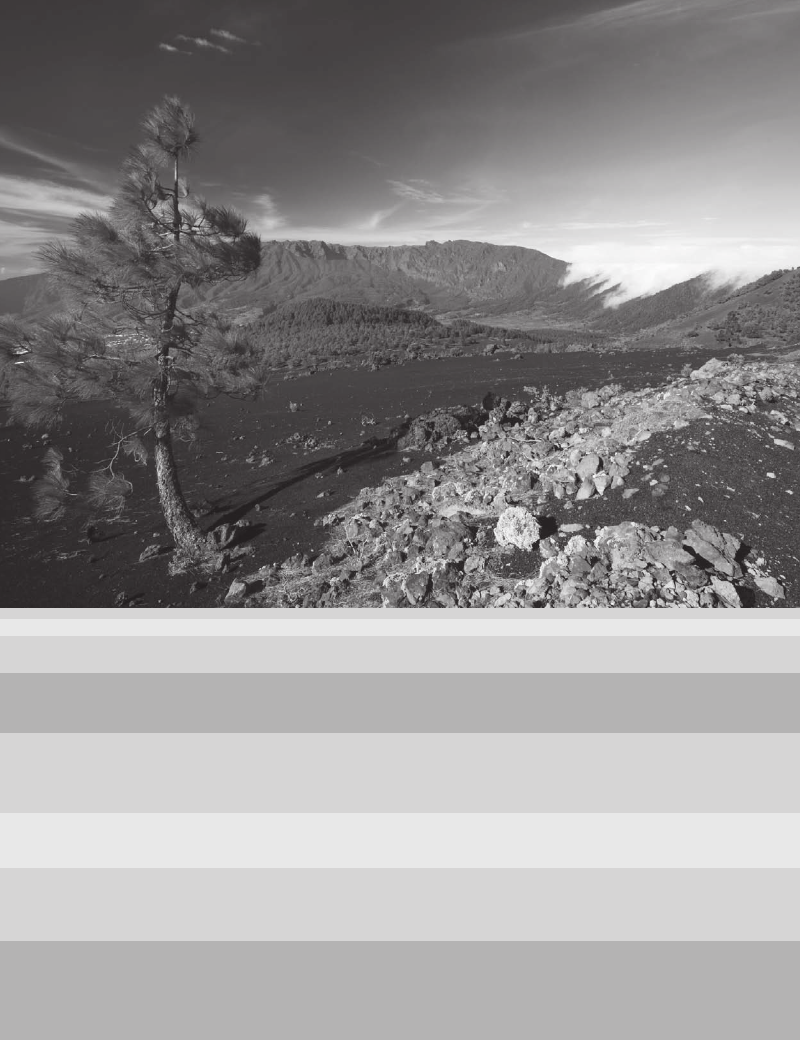
DISASTER RISK MANAGEMENT
Europe and Central Asia
Kyrgyz Republic

122 / Disaster Risk Management Notes for Priority Countries 2009-2015 EUROPE AND CENTRAL ASIA
Kyrgyz RepubliC
To prepare the Kyrgyz Republic Country DRM Note, the team built upon a technical assistance project supported by
GFDRR. This project, —An Action Plan for Improving Weather and Climate Service Delivery in High-Risk, Low-Income
Countries in Central Asia—, involved support from the Kyrgyz Hydrometeorological service, which facilitated the work of
technical missions in Bishkek and Naryn oblast. The Country Note benefitted from ongoing collaboration with the entities
of the sectoral ministries and agencies of the Kyrgyz Republic; in particular, the Ministry of Emergency Situations, the
Ministry of Agriculture, Water Resources and Manufacturing industry, the Ministry of Transport and Communications,
and the Ministry of Industry and Energy. In advancing the Kyrgyz Republic’s hydromet services, the project team
benefited from constructive dialogue with representatives of stakeholders during a consultation workshop in Bishkek
(December 16, 2008). The World Bank’s Bishkek office provided support for these consultations and representatives
of donor organizations such as the Swiss Cooperation Office actively participated and supported the underlying technical
assistance work.
1. disaster risk profile
The geography and topography of the Kyrgyz Republic makes it a highly hazard prone country. These include hydro-
meteorological, geological, geo-physical, and biological hazards. Natural hazards include earthquakes, land and mud-
slides, avalanches, squalls, downpours, icing, frosts, droughts, breakthrough of glacial lakes, floods, rise of sub-soil
waters, epidemics, pests, crop diseases and river erosion. Heavy snowfall in winter leads to spring floods which often
cause serious downstream damage. Some hazards, e.g. floods and landslides, are seasonal and occur annually; oth-
ers, e.g. earthquakes, are rarer events but potentially highly destructive. The country is classified as the most seismi-
cally dangerous territory in Central Asia and 3,000 to 5,000 earthquakes are registered annually. Devastating seismic
catastrophes occur every 5-10 years. On average, natural disasters cause approximately $30- 35 million of damage and
losses annually.
Meteorological Hazards. Kyrgyzstan is located in the center of the largest Eurasian continent, away from significant
water bodies, and close to deserts, which defines the drought-prone continental climate of the country. On average, 3-4
extreme meteorological hazards (drastic changes of weather, frosts, heavy precipitation) occur annually covering the ma-
jority of the country, there are about 7-10 high-impact mudflows and avalanches, and seasonal river floods happen every
year. Destructive mudflows and floods, and large avalanches occur once in several years. Major weather-related risks to
agriculture include droughts (especially associated with low water flow in the rivers), late spring and early fall frosts, winter
thaws (risks for winter grain cereals), and hailstorms. Floods and mudflows generated by snow-thaw and rainstorms de-
stroy residential houses, dams, other irrigation facilities, roads, bridges and agricultural crops. Over the last few decades the
entire Central Asian region (including the Kyrgyz Republic) has experienced an increase in hydro-meteorological disasters.
This trend is likely to continue as the consequences of climate change - particularly increases in temperature - will likely in-
crease the frequency and severity of floods and droughts. Climate change may also cause a higher prevalence of infectious
diseases. Approximately half of Kyrgyzstan’s GDP is weather and climate sensitive and would benefit from more
reliable hydrometeorological and climate information to improve day-to-day operations and planning. Current economic
losses are estimated to vary between 1.0 - 1.5% of GDP. Agriculture is the leading sector of the economy and most
vulnerable to extreme weather, especially droughts and frosts. Other sectors at risk include transport and communication,
construction, energy production and distribution, including domestic heating, health and mining.
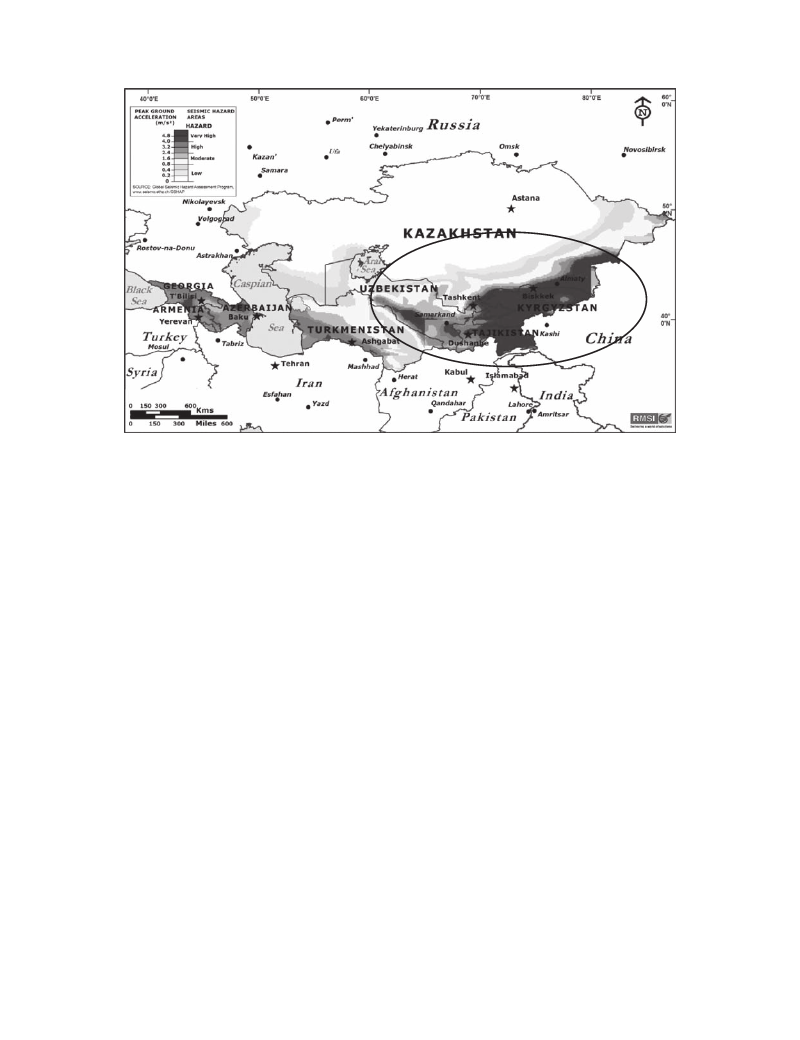
Kyrgyz RepubliC / 123
Seismic Events. As per the Global Seismic Hazard Assessment Program (GSHAP), most of Kyrgyzstan lies in
a region with very high seismic hazard (see map below). When fully operational, the national system of seismic
monitoring registered from 2,000 to 5,000 earthquakes each year. Among them, 5 to 10 per year are considered strong
(felt, but no major damage), while a destructive earthquake (causing infrastructural damage) takes place every 3 to 5
years, and a catastrophic one (causing infrastructural damage and death) every 35 years, on average. During the 20th
century more than 500 earthquakes were registered in Kyrgyzstan with a magnitude greater than 5 on the Richter scale.
Seismologists also warn of the possibility that strong earthquakes with magnitudes of eight on the Richter scale could
strike the capital Bishkek. The most recent destructive catastrophic earthquake (Magnitude 6.6 on the Richter scale)
hit the southeast of the Kyrgyz Republic on 5 October 2008. The village of Nura was the most severely damaged, with
74 people killed, including 43 children; 157 people were injured. An estimated 90% of the village infrastructure was
destroyed and more than 850 people left homeless.
Landslides. Extensive areas of the Kyrgyz Republic are characterized by the presence of very large landslide hazards.
There are about 5,000 potentially active landslide sites, about 3,500 of which are in the southern part of the country.
Stability of most landslides is satisfactory in dry conditions. Landslides are typically activated due to temporary develop-
ment of significant ground water pressures along the slip planes, with actual mass displacement sometimes initiated
within minutes or hours of activation. Such conditions are likely to occur following significant rainstorms and snowmelt.
Furthermore, seismic forces large enough to displace landslides may develop during strong motion earthquakes that are
rather common in Kyrgyzstan. None of the major landslide areas that threaten villages are equipped with monitoring and
warning instrumentation, leaving their populations vulnerable to landslide hazards. Every year landslides cause damage
to buildings, roads, power lines, and water supply, heating supply, and sewerage systems, as well as the death of tens of
people. On average, about 700 houses are damaged or destroyed per year. The last major landslide disaster occurred
on April 20, 2003 when a landslide near Uzgen in Osh Oblast killed 38 people, while 84 families lost their houses.
Uranium Mine Tailings, Rock Dumps and Landslide Hazards. With independence, the Kyrgyz Republic inherited
a legacy of environmental damage caused by many years of output-focused mining development, with little regard to

124 / Disaster Risk Management PROGRAMS FOR PRIORITY COUNTRIES EUROPE AND CENTRAL ASIA
either economic viability or environmental impact. There are five significant locations in the country with old mine tailings
and waste rock dumps. A particularly dangerous location is Mailuu-Suu – an impoverished town of about 23,000 people,
including about 6,000 in surrounding villages - near the Uzbekistan border upstream of the densely populated and highly
productive Ferghana Valley. There was active uranium mining in Mailuu-Suu from 1946 until 1968, leaving behind 23
radioactive tailings and 13 waste rock dumps. The tailings were constructed conveniently near the mill plants and are
mostly within the flood plain of the Mailuu-Suu River, which is a tributary of the Syr-Darya. The total tailings volume is
about 1.96 million m3. The total waste dump volume is 0.8 million m3.
2. disaster risk management framework
Institutional Setup for Disaster Hazard Management and Emergency Response. The Ministry of Emergency
Situations (MES) is responsible for disaster hazard management and emergency response. MES has established depart-
ments responsible for preparedness, mitigation, response, and recovery. There is the understanding within government
and MES for the need to focus on hazard mitigation efforts designed to reduce the loss of life and injuries, and the eco-
nomic and social impacts of future events. A detailed set of risk maps has been developed and potential disasters have
been classified. The outline of a declaration process was developed to define when each successive level of government
becomes involved if a disaster event occurs. Government is, however, anxious to improve the practical effectiveness of
its emergency management and response efforts, and there are a number of critical issues that must be addressed and
resolved in order to successfully build on the current foundation. Since Independence in 1991, the technical capacity
of MES has been reduced considerably and it currently does not have adequate and modern operational procedures in
place, or sufficient levels of resources allocated to carry out its mandates. Emergency intervention criteria have not been
developed in detail, and there is no well-defined system of functions and responsibilities between the various depart-
ments in MES and regional and local administrations to allow for quick and effective intervention in case of emergencies.
Also, staff has not received necessary training to adequately respond to emergencies, and most local communities have
not been involved in disaster response training thus far.
Legislation and Strategies. Several pieces of relevant legislation have been approved in the Kyrgyz Republic. Some
of the important ones are the Law on Tailings and Waste Rock Dumps, the Law on Radiation Safety of the Population
of the Kyrgyz Republic, the Law of the Kyrgyz Republic on Protection of the Population and Territories from Natural and
Man-Caused Emergency Situations, and the Law of the Kyrgyz Republic on Civil Defense. The legislation is generally
acceptable, as it defines authorities, roles and responsibilities at all levels of government and in the private sector. Cur-
rent issues relate to a lack of regulations to support the primary legislation and the lack of coordination, technology, and
resources to implement necessary measures. The Kyrgyz Government sees the National Strategy for Sustainable Human
Development, adopted in May 1997, as the appropriate framework for risk management of disaster hazards with the
broad objective to reduce the vulnerability of the population and the economy to hazardous processes. In this respect,
five specific goals have been set: (i) to provide timely warning to the public of the threat of natural and manmade disas-
ters; (ii) to reduce and mitigate human and material losses from disasters; (iii) to establish a single monitoring system to
ensure safety of the population; (iv) to improve disaster preparedness by training the population; and (v) to improve res-
cue preparedness against disasters. The Kyrgyz Government recently developed a draft National Emergency Response
and Management Plan (NERMP) that will, when approved, serve as a much better structured and funded Government
framework for disaster management.
Status of Hydrometeorological Services. An extensive technical review (financed by GFDRR in 2008-2009) of
observational networks and other hydrometeorological infrastructure of the Kyrgyzhydromet has shown that the current
condition of the hydrometeorological service fails to meet the needs of the government and the weather and climate-
sensitive social and economic sectors for hydrometeorological services, and fails to fulfill the country’s international and

Kyrgyz RepubliC / 125
regional obligations for weather and climate information including those under the World Meteorological Organization’s
Global Observation Network. In particular, (i) there is a persistent downward trend in the quantity and quality of measure-
ments at most stations of the ground-based meteorological network, (ii) the condition of the hydrological observational
network is unsatisfactory resulting in insufficient quality of the runoff forecast; (iii) the snow survey network is almost
destroyed; (iv) no aerological observations are performed which, given the lack of temperature and wind sounding data
from Tajikistan and Turkmenistan, significantly affects the quality of weather forecasts, as well as the results of global and
regional meteorological model calculations for the Central Asian Region; (v) there is a lack of appropriate communication
between stations and monitoring sites of the observational (meteorological and hydrological) network, data collection
center, and regional and district-level users; and (vi) the means of forecasting and production of information products,
possibly except automated technologies of runoff forecasting in the Syr-Darya River basin, developed with Swiss as-
sistance, fail to meet modern requirements for hydrometeorological services provided to public authorities, the economy
and communities. There is an urgent need for hydromet modernization to reduce the risks to human life and potential
damage to Kyrgyzstan’s economy as a result of weather and climate events.
Reducing the financial vulnerability of homeowners and SMEs to natural hazards. Despite major loss po-
tentials from natural disasters, the level of catastrophe insurance penetration in Kyrgyzstan is much too low to mitigate
the adverse financial consequences of future natural disasters on the economy, central government and households
budgets. In addition, the lack of adequate risk management and risk underwriting skills in the local insurance industry
severely impairs the ability of insurers to pay claims in case of catastrophic events. In this context, the Government needs
to develop mechanisms for risk transfer and sharing through public-private partnerships, engagement of the insurance
industry and consider setting up a catastrophe insurance pool. Unfortunately, the analysis of the insurance markets in the
Kyrgyz Republic suggests that the creation of a stand-alone individual country catastrophe insurance pool is unlikely to
be economically and technically feasible. The Kyrgyz Republic would thus benefit from the creation of a regional catastro-
phe insurance pool that would act as a regional aggregator of catastrophe risk and help governments access the global
reinsurance market on better pricing terms. The risk pooling arrangement for the Central Asian countries can be modeled
after the regional catastrophe insurance facility for Southeastern and Central Europe which is currently being developed
by the World Bank, the UN ISDR and the Regional Cooperation Council for SEE countries. The relatively large size of
the Kazakhstan economy and the more advanced state of development of its insurance market may also provide for the
development of a regional catastrophe insurance scheme on the basis of a national Kazakh catastrophe insurance pro-
gram. Such a program could be then extended to the Kyrgyz Republic and other countries of the region.
Systemic Issues. Under the overall disaster risk management (DRM) approach, risk identification, risk reduction and
mitigation, capacity building, risk transfer and emergency preparedness need to be examined for a more effective overall
response. In this regard multi-hazard risk assessments need to be carried out on a priority basis and effective early
warning systems need to be developed and strengthened. The institutional arrangements from the national level down
to the community level need to be operationalized and corresponding capacity needs to be built. This needs to be
complemented by introducing disaster risk reduction curricula in various national institutions along with general public
awareness-raising. A National Emergency Response and Management Plan was recently prepared under the WB-
funded Disaster Hazard Mitigation Project. The Plan changes the way emergency response should be implemented.
What is needed now is for government to consider the Plan and decree to put it in action. If this is not done, emergency
response and management will remain ad hoc. In most disasters sub-standard construction techniques cause substan-
tial fatalities, therefore the Government should review existing building codes and strengthen enforcement. Learning from
the recent Nura earthquake, it is recommended to integrate DRR into sector policy, planning and implementation during
the reconstruction phase. The Government should also develop a methodology and system for common post-disaster
damage, loss and needs assessment so that a better coordinated and rapid needs assessment could be carried out in
case of any future disaster.

126 / Disaster Risk Management PROGRAMS FOR PRIORITY COUNTRIES EUROPE AND CENTRAL ASIA
3. activities under the hyogo framework of action
HFA Priority # 1: Policy, institutional capacity and consensus building for disaster risk
management.
A range of activities have been carried out in the frame of the Disaster Hazard Mitigation Project (DHMP) such as a
review of the current functions of MES and its regional administrative agencies involved in disaster management and
response, development of a draft of the NERMP, development of a manual with guidelines for emergency management,
and development of training programs for civil servants (including simulating an earthquake and a dam breach) and the
population. The Emergency Response Centers, both in Bishkek and Osh, were fully equipped with computer and video
equipment, which serves as an important place to manage the emergencies not just during disaster events but also for
regular transfer of monitoring data from rayons to the GIS center that will be the part of the ERC. The next step for the
Government would be approving the NERMP at earliest convenience, together with an action plan for its implementa-
tion, for which support for institutional development would be needed.
HFA Priority # 2: Disaster risk assessment and monitoring.
Under the DHMP some activities have been completed including supply of the laboratory equipment to assess basic
parameters in water as pH, electric conductivity, oxidation reduction potential and temperature and automated monitor-
ing and sampling unit with data transmission radio telemetry transceiver units. A regional seismic network utilizing digital
data acquisition and telemetry will be developed to provide a means of detecting and locating earthquakes in real time
enabling the immediate notification of MES about a potential risk or immediate damage. The MES ERC has a GIS center
that collects data on potential risk areas, especially related to landslides. Books and atlases were prepared by MES.
Every year, field inspections of dangerous landslide areas are conducted, however, assessments and monitoring of other
potential disasters, e.g. floods is much less structured due to continued weak capacity of Kyrgyzhydromet.
HFA # 3: Use of knowledge, innovation, and education to build a culture of safety and resilience at all lev-
els. Several training programs were carried out for state employees and selected villagers under DHMP. Much more is
needed, which would be done after the acceptance of the NERMP. At the moment, DRM is very much an ad hoc activity
by responding to a disaster, with little focus on prevention and preparedness.
HFA # 4: Reduction of the underlying risk factors (reduction of exposure and vulnerability and increase of
resilience. There is little budget available to make structural improvements to reduce the risk of disasters, e.g. by flood
protection embankments and landslide stabilization.
HFA # 5: Disaster preparedness, recovery and reconstruction at national, regional, and local levels. A man-
ual on essential principles of comprehensive emergency management was elaborated and presented to the ministry.
It includes the integrated approaches to emergency management, local planning, communications and involvement of
NGOs and UN in emergency management processes. Again, the NERMP would put some structure in this.

Kyrgyz RepubliC / 127
4. key donor engagements
The Kyrgyz Republic receives support for hazard risk management (HRM) from the ADB, the European Union, Swiss
Agency for Development and Cooperation (SDC), the UNDP, and the World Bank.
Existing Projects with Donors and International Financial
Institutions
Country Programs
Reducing Vulnerability of the Poor to Natural Disasters, to improve
the capacity of the national and local authorities for reducing the
vulnerability of the poor to frequently occurring natural disasters.
Water Management and Disaster Risk Reduction, which includes
awareness training on integrated DRM, grants for disaster reduction,
and an earthquake safety project.
DRM programme that focuses on preparing for, mitigating and
responding to natural disasters, particularly in the south of the country.
Investigation and Analysis of Natural Hazard Impacts on Linear
Infrastructure in South Kyrgyzstan.
Improving Weather, Climate and Hydrological Services Delivery in
Kyrgyz Rep. (TA project).
Disaster Hazard Mitigation Project (DHMP) to: (i) remediate
abandoned uranium mine tailings in the Mailuu-Suu area; (ii) improve
the effectiveness of emergency management and response by national,
sub-national authorities and local communities; (iii) reduce loss of life
and property in key landslide areas.
Regional Programs
Central Asia Regional Disaster Preparedness Programme, under the
5th DIPECHO Action Plan for Central Asia (July 08) to enable local
communities and institutions to better prepare for, mitigate and respond
adequately to natural disasters.
Central Asia Regional Disaster Management Initiative, including (i)
disaster mitigation, preparedness and response; (ii) disaster financing
and risk transfer; and (iii) hydromet modernization.
Funding Agency
International
Partners
ADB (Japan Grant)
Swiss Development
Corporation (SDC)
UNDP
World Bank (GFDRR)
World Bank (GFDRR)
World Bank (IDA
Grant $6.9m), Japan/
PHRD, GoKR
Directorate General
EC Humanitarian
Office (DG ECHO)
UNISDR, WMO,
CAREC/ADB, World
Bank, GFDRR,
bilaterals.
Allocated
Budget and
Period(US$)
1,000,000
2004-
N.A.
2007-2011
N.A.
2008-2010
50,000
2008-2009
75,000
2008-2009
11,760,000
2004-2010
€7,325,000 for
all Central Asia);
2008-
155,000
(GFDRR track
1) in 2008-
2009
HFA
Activity
Area(s)
1
3
1, 4, 5
2
1, 2, 5
1, 2, 4
5.global facility for disaster reduction and recovery (gfdrr):
action plan
As noted earlier, the Kyrgyz republic faces a variety of natural hazards – earthquakes, floods, hail, landslides,
mudflows, drought, erosion and desertification. Over the past few decades, these natural hazards have caused extensive
damage, and will continue to negatively impact the Kyrgyz Republic unless proactive measures are taken to mitigate and
prepare for these hazards.
(i) Building upon GFDRR-funded country and regional studies (to be completed by June 2009), modernize
Kyrgyzhydromet services under a regional framework, to reduce the risks to human life and to the economy
as a result of weather and climate events;
(ii) Building upon the WB-financed DRM project (closing in 2010) and other donor activities, and to complement
ongoing/planned SWAps in health and education sectors, strengthen overall capacity to prepare and respond

128 / Disaster Risk Management PROGRAMS FOR PRIORITY COUNTRIES EUROPE AND CENTRAL ASIA
to disasters, with a focus on the mitigation of a potential major earthquake in the capital Bishkek and/or
another large city; and
(iii) Support further assessment and studies to develop of a risk financing framework for the Kyrgyz Republic, including a
regional catastrophe insurance pool that would benefit the Kyrgyz Republic and other Central Asia countries.
Component I: Reducing the risks to human life and to the economy as a result of weather and
climate events
Modernization of National Meteorological and Hydrological Services (NMHS) is primarily aimed at reduc-
ing the risks to human life and potential damage to Kyrgyzstan’s economy as a result of weather and climate events. It
is also intended to fulfill of the country’s regional and international obligations, first and foremost, the assessment and
management of regional water resources, the improvement of cooperation between the NMHS and final users of hydro-
meteorological data and information products, and the maintenance of the NMHS capacity by improving its institutional,
staff and financial sustainability.
Under the GFDRR-funded study, three modernization options were considered. The moderate cost option was preferred.
It is a high impact program designed to achieve many of the objectives of the large scale option, but with less investment
in automation of the observing network and implementation of information technologies. Specifically it would allow Kyrgyz-
hydromet to:
• Achieve the key objective of the modernization, i.e. reduce the risk to life and damage to the economy caused by
weather and climate-related events through higher accuracy and longer lead time warnings provided to relevant
emergency agencies;
• Fulfill regional and international obligations of Kyrgyzstan through improved quality and reliability of
meteorological and hydrological (water discharge/runoff) measurements;
• Provide reliable hydrometeorological data and forecasts to users;
• Achieve a level of Kyrgyzhydromet close to “satisfactory” in terms of technology; and
• Retain Kyrgyzhydromet capacity by enhancing its institutional, staff and financial sustainability.
√ GFDRR would co-finance the “moderate cost” option, together with contributions from Government
and other donors, possible including IDA. Because Kyrgyzhydromet is critically dependent on the
strengthening of the regional hydromet framework for its investments, operations, data sharing
and training, GFDRR would also support regional level activities that benefit the Kyrgyz Republic.
Estimated GFDRR financing USD 7.5 million, complementing support from Government and other
donors.
Component II: Improving overall capacity to prepare and respond to disasters, and overcome
a major earthquake.
There is a need to consolidate and continue enhancing the institutional and technical capacity for disaster management
and emergency response supported by the Government and various donors, ensuring a common approach and strength-
ening critical partnerships and platforms. This would be achieved through the implementation of the National Emergency
Response and Management Plan (NERMP).
At the same time there should be more focus on critical gaps: (i) making public facilities such as schools, hospitals and
large residential buildings more earthquake resistant, (ii) develop risk assessment methodologies for commercial, indus-

Kyrgyz RepubliC / 129
trial and residential buildings and (iii) enhance enforcement of building codes.
In particular, a seismic risk mitigation assessment should be carried out for critical public facilities in large cities such
as Bishkek and Osh, to reduce the risk of future earthquake damage to priority public facilities such as hospitals, clin-
ics, schools, administrative buildings and infrastructure. The assessment should also review coordination mechanisms
with local, regional, international and non-governmental partners, equipment and training needs, and the establishment
of a functioning operations center (at local and regional levels). The result of this assessment would be incorporated in
ongoing and planned SWAps in the Health and Education sector, financed by the World Bank and several other donors.
Depending on the availability of funding, GFDRR might co-finance the implementation of priority retrofitting/reconstruc-
tion of selected public facilities on a pilot basis.
In addition, innovative approaches should be supported to better enforce building codes and compliance with land use
plans, notably (i) supporting public awareness of the importance of compliance with building codes and land use plans,
(ii) studies to support the enhancement of guidelines and regulations aiming at better enforcement of building codes
and land use plans, (iii) initiating voluntary certification of engineering professionals, and (iv) supporting selected district
municipalities in enforcement of building codes and land use plans through initiatives streamlining issuance of building
permits and introducing transparency measures in issuance of building and settlement permits.
√ GFDRR would support the implementation of the National Emergency Response and Management
Plan (NERMP) to prepare and respond to disasters, focusing on the mitigation of a potential major
earthquake in the country’s largest cities such as Bishkek and Osh, through a seismic risk mitigation
assessment and the design of a retrofitting program of critical public facilities. In addition, GFDRR
would support regional level activities that benefit the Kyrgyz Republic in this area, through the
proposed regional Disaster Preparedness and Response Center1. Estimated GFDRR financing
needs: USD 1.5 million.
Component III: Reducing the financial vulnerability of homeowners and SMEs to natural hazards
Despite major loss potentials from natural disasters, there is an almost non-existent level of catastrophe insurance cover-
age among homeowners and SMEs in the Kyrgyz Republic. In this context, the Government needs to develop mecha-
nisms for risk transfer and sharing through public-private partnerships, engagement of the insurance industry and reduce
financial exposure through a combination of internal resources and catastrophic insurance facilities. Unfortunately, the
analysis of the insurance markets in the Kyrgyz Republic suggests that the creation of a stand-alone individual country
catastrophe insurance pool is unlikely to be economically and technically feasible.
The Kyrgyz Republic would thus benefit from the creation of a regional catastrophe insurance pool that would act as a
regional aggregator of catastrophe risk and help governments access the global reinsurance market on better pricing
terms. The risk pooling arrangement for the Central Asian countries can be modeled after the regional catastrophe insur-
ance facility for Southeastern and Central Europe– the SECE CRIF – which is currently being developed by the World
Bank, the UN ISDR and the Regional Cooperation Council for SEE countries. A relatively large size of the Kazakhstan
economy and the more advanced state of development of its insurance market may also provide for the development
of a regional catastrophe insurance scheme on the basis of a national Kazakh catastrophe insurance program. Such a
program can be then extended to the Kyrgyz Republic and other countries of the region.
1 The principal objectives of the Center would include: (i) further development of national systems of disaster prevention and response, (ii) emer-
gency planning, coordinated management of regional services and resources, (iii) development of effective information-communication systems
for collecting, processing and analyzing information in real time, (iv) creation of uniform information-sharing space, (v) involvement in international
monitoring systems and networks, including assessment of the seismic hazard in the region, and (vi) cooperation with foreign partners, arrangement
of international seminars, trainings, workshops and conferences.

130 / Disaster Risk Management PROGRAMS FOR PRIORITY COUNTRIES EUROPE AND CENTRAL ASIA
√ GFDRR would support further assessment and studies to develop of a risk financing framework
for the Kyrgyz Republic, including a regional catastrophe insurance pool that would benefit the
Kyrgyz Republic and other Central Asia countries. Estimated financing needs including regional
component: USD 1 million.
Indicative Program for GFDRR Funding
(Projects and engagement areas being considered for GFDRR funding)
Component I: Hydromet Services Modernization
• Develop the technical design of the hydromet monitoring and
telecommunication system
• Improve the system of hydromet monitoring to provide timely warnings of
extreme and hazardous weather events and to manage water resources:
(i) restoration and technical upgrading of the meteorological observational
network, (ii) resume temperature-wind atmosphere sounding, (iii) renew key
observation sites of the hydrological network, and equip operating posts
with the required additional instruments and devices, (iv) restore snow
avalanche observation network, (v) establish quality control of hydromet data
and products, (vi) strengthen IT base
• Institutional strengthening and capacity building, to enhance service delivery,
staff training and professional upgrading
Component II: Capacity building for DRM and seismic risk
mitigation
• Institutional development and technical capacity to support the
implementation of the NERMP2
• Carry out seismic risk mitigation assessment for Bishkek and Osh, including
design of priority retrofitting and reconstruction of selected public facilities
(schools, hospitals), to prepare for future implementation under separate
donor/counterpart funding
• Enforce building codes and compliance with land use plans
• Support to regional DRR center
Component III: Disaster risk financing and transfer
Develop a risk financing framework for the Kyrgyz Republic, including a
regional catastrophe insurance pool that would benefit the Kyrgyz Republic
and other Central Asia countries
Total Budget Requested:
Potential Imple-
menting Agency
/ International
Partners
Govt. , WMO,
IFAS, Switzerland,
Germany, Finland,
UNISDR, World
Bank
Govt., CAREC/
ADB, UNISDR,
UNDP, JICA,
UNOCHA (for
regional center),
World Bank
Govt., CAREC/
ADB, GFDRR,
World Bank
Indicative
Budget and
Period
(US$)
7,500,000
2009-2012
HFA
Activity
Area(s)1
1, 2, 3, 4, 5
1,500,000
2009-2011
1, 2, 5
1,000,000
4, 5
2009-2010
US$ 10 million
*Calendar year.
1 GFDRR support through the NERMP would complement and help consolidate other donors’ support. A more precise scope of GFDRR sup-
port under this component would be discussed and agreed at an upcoming workshop coinciding with the formal approval of NERMP. GFDRR
support could include capacity building initiatives on all levels, national and decentralized in oblasts and communities and development of civil
society participation.

Kyrgyz RepubliC / 131
Expected Benefits of GFDRR Support:
GFDRR support would provide the following systemic benefits:
• Consolidate and leverage donor support for greater impact, benefiting from the catalytic role GFDRR can play
in bringing together key stakeholders
• Mainstream disaster risk management within sector programs and projects, such as the Health and Educa-
tion SWAps supported by several donors, the Bishkek/Osh urban project
• Enable Kyrgyz Republic to benefit more from activities carried out at the regional level, through its increased
participation in a regional hydromet center, regional DRR center, and a potential regional CAT insurance pool.
More specifically, GFDRR support would:
• Help the Kyrgyz Republic fulfill its regional and international obligations, first and foremost, the assessment and
management of regional water resources, the improvement of cooperation between the NMHS and final users of
hydrometeorological data and information products, and the maintenance of the NMHS capacity by improving its
institutional, staff and financial sustainability.
• Help operationalize the National Emergency Response and Management Plan (NERMP) through institutional and
technical capacity development, and in particular help the vulnerable better prepare for future disasters notably
earthquakes.
• Lay the technical and institutional foundation for a potential regional catastrophe insurance pool to benefits
Kyrgyzstan’s economy, businesses and households through risk pooling, resulting in diversification of risks and
reduced insurance premiums.


DISASTER RISK MANAGEMENT
Latin America & Caribbean
Haiti / Panama
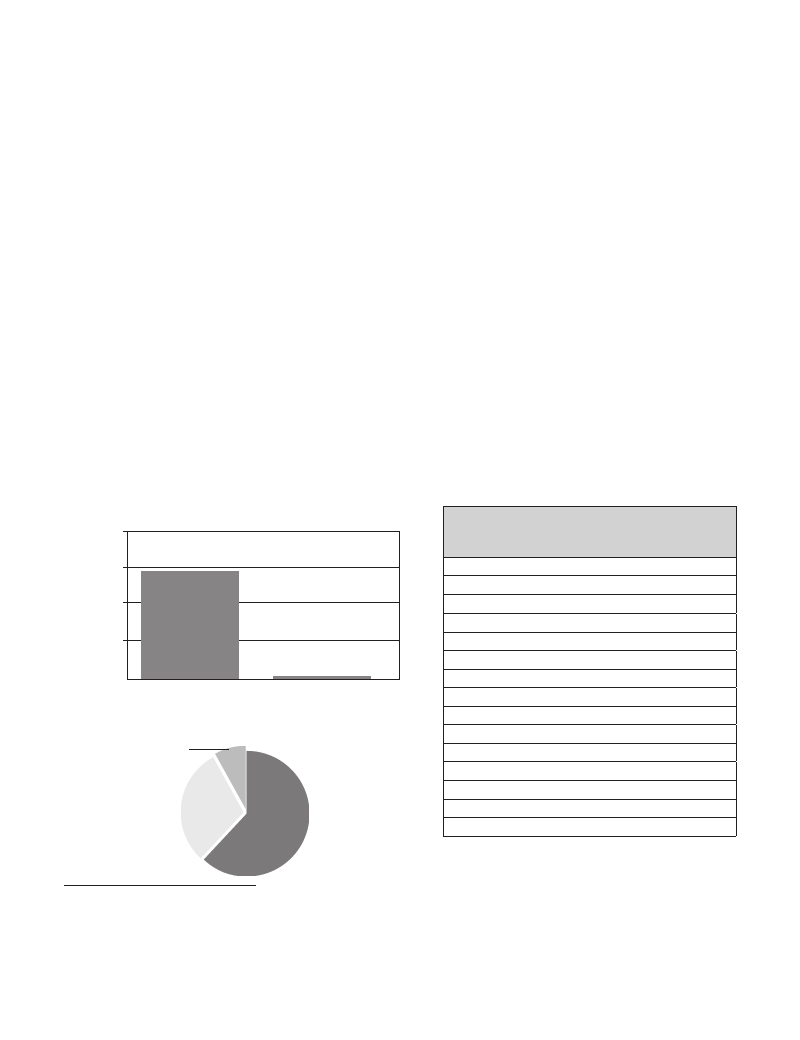
134 / Disaster Risk Management PROGRAMS FOR PRIORITY COUNTRIES LATIN AMERICA & CARIBBEAN
HAITI
The Country DRM Note was prepared following consultations with members of the World Bank´s Haiti Country team and
the TTLs overseeing projects in Haiti, the ministry of Planning and External Cooperation, the Ministry of Interior (the Civil
Protection Directorate), the key financial and technical partners (IADB, European Commission, UNDP, USAID, ACDI,
and AECID).
The priority action plan for DRM was discussed and cleared in May with all institutions and organizations mentioned
above. There is a strong interest and ownership of the plan from the Ministry of Planning and a significant support from
financial and technical partners to join resources and expertise to mainstream DRM into the development programs.
1. disaster risk profile
Haiti ranks as one of the countries with the highest exposure to multiple hazards, according to the World
Bank’s Natural Disaster Hotspot study1. Haiti lies in the middle of the Caribbean Basin and has the 5th
highest mortality risk to two or more hazards. With 96% of its population living at risk, Haiti has the highest
vulnerability rating in terms of cyclones2 among the region’s small island states (12.9 on a scale of 13)3. The effects of
cyclones include wind damage, flooding, land/mudslides and coastal surges.
Economic Damages by Disaster Type4
1500000
1125000
750000
375000
0
Storm
Earthquake
Population Affected by Disaster Type5
Floods
8%
Drought
30%
Storm
62%
COUNTRIES AT RELATIVELY HIGH MORTALITY
RISK FROM MULTIPLE HAZARDS1
(Top 35 Based on Population)
1. Bangladesh
2. Nepal
3. Dominican Republic
5. HAITI
6. Taiwan, China
8. El Salvador
9. Honduras
10. Guatemala
12. Costa Rica
13. Trinidad and Tobago
15. Antigua and Barbuda
16. Dominica
17. Nicaragua
19. Cuba
26. Ecuador
1See World Bank, Natural Disaster Hotspots, A Global Risk Analysis (Washington, DC: Disaster Risk Management Series, 2005), table 1.2.
2Includes tropical depression, storms and hurricanes.
3Reducing Disaster Risk, a Challenge for Development, UNDP 2004
4 EM-DAT: OFDA/CRED International Disaster Database, Catholic University of Louvain, Brussels, Belgium, online at: www.emdat.net
5 EM-DAT: OFDA/CRED International Disaster Database, Catholic University of Louvain, Brussels, Belgium, online at: www.emdat.net

HAITI / 135
Severe environmental degradation and the presence of settlements in low lying areas and floodplains are
key contributing factors towards the country’s vulnerability. Further contributing factors include high levels of
poverty, weak public infrastructure, a history of ineffective governments and serious fiscal problems. In addition to the
hydrometeorological hazards, Haiti is also located in a seismically active zone, intersected by two fault lines. The country’s
high population density (up to 40,000 km2 in Port-au-Prince) coupled with the large number of informal structures, and
weak public and private infrastructure, render the state and its population particularly vulnerable.
Economic losses from adverse natural events are increasing in Haiti. As more assets are created and concen-
trated, losses from adverse natural events are increasing. This is demonstrated by the events of August and September
2008, which Tropical Storm Fay and Hurricanes Gustav, Hannah and Ike6 affected Haiti during a three week period re-
sulting in damage and losses equivalent to 15% of the country’s GDP. FGHI represented the largest evaluated disaster
in Haiti’s history.
The implications of climate change on the intensity and frequency of adverse natural events underscores
the importance of a proactive approach to disaster risk reduction (DRR) According to the report of the Climate
Investment Fund’s Pilot Program for Climate Resilience Expert Group, Haiti is one of the 10 global climate change
hotspots. The inability or failure of a government to address its vulnerability and to support the mitigation of risk can
drastically undermine its natural rate of growth and overall poverty reduction efforts.
Major Natural Hazards
Haiti lies in the middle of the Caribbean basin and according to the World Bank’s Natural Disaster Hotspot study7, Haiti
is one of the most at risk countries in the world. With 96% of its population living at risk, Haiti has the highest vulnerability
rating in terms of cyclones8 among the region’s small developing island states (12.9 on a scale of 13)9. The effects of the
cyclones include wind damage, flooding, land/mudslides and coastal surges.
Much less known, is Haiti’s seismic risk. With two active seismic fault lines, Haiti has experienced a number of severe
seismic events. The frequency for earthquakes of 7 or above on the Richter scale is estimated at once every 150-200
years and the most recent quake occurred in 1842. The recent collapse of several buildings, most notably the La
Promesse School, which resulting in over 90 deaths, is a sharp reminder of the weak and unregulated public construc-
tion sector and the potential implications should a significant seismic event occur.
Exposure and Vulnerability
Located in an active cyclone and seismic region, Haiti is exposed to frequent adverse natural events. Due
to its high level of physical, environmental, socio-economic and political vulnerability, Haiti suffers from
a very low disaster threshold10. Haiti’s principal physical vulnerability factor is its topography. With more than 60%
of the country covered by mountains, most of the population and economic assets are concentrated in low laying flood
prone coastal areas.
Haiti suffers from severe environmental degradation, as evidenced by only 2% forest coverage and the
overall degradation of the country’s watershed. In past decades, water catchment areas in upper watersheds have
suffered an accelerated process of expansion of the agricultural frontier and deforestation to satisfy local food, energy
and other income generating demands. Most of the forested lands have been converted to agricultural and livestock
6 Herein referred to as “FGHI”
7See World Bank, Natural Disaster Hotspots, A Global Risk Analysis (Washington, DC: Disaster Risk Management Series, 2005).
8Includes tropical depression, storms and hurricanes.
9 Reducing Disaster Risk, a Challenge for Development, UNDP 2004
10 As evident during May 2004 when localized rains in Fonds Verrettes triggered flash floods resulting in over 1500 deaths.

136 / Disaster Risk Management PROGRAMS FOR PRIORITY COUNTRIES LATIN AMERICA & CARIBBEAN
use, or simply deforested for charcoal production, without replanting, provoking reductions in the filtration capacity of
water and leading to extensive erosion. This combined with strong demand pressure in urban areas further reduces the
availability of potable water from surface and underground sources.
These pressures, exacerbated by Haiti’s mountainous topography, changing climatic environment and
the movement of small land title holders to increasingly fragile upland soils, have resulted in extensive
deforestation, accelerated erosion, depleted fertility, reduced water retention and widespread silting of
waterways. This in turn diminishes the carrying capacity of the land and contributes to a downward economic and
environmental spiral contributing to near catastrophic events such as Tropical Storm Fay and Hurricanes Gustav, Hannah
and Ike (herein after referred to as “FGHI”).
With 77% of the Haitian population living on less than 2$/day and 52% living on less than 1$/day, extreme
poverty represents a significant social vulnerability. This translates into precarious living conditions for the majority
of the population, which drastically decreases their coping abilities and thus resilience to the impact of adverse natural
events. The vicious circle existing between the frequency of adverse natural events and the decreasing coping capacities
of the population further fuels the non-sustainable exploitation of Haiti’s natural resources and rapid urbanization of the
country. Currently, upwards of 50% of Haiti’s 9.8 million inhabitants live in urban areas. The high population density (up
to 40,000 km2 in Port-au-Prince) coupled with unregulated construction, weak social and economic public infrastructure,
and lack of land use planning, further aggravates the extensive social vulnerability.
Additionally, Haiti suffers from significant governance issues that further increase its vulnerability to
disasters. Haiti’s long history of political instability has greatly weakened its state institutions and governance mechanisms
(Haiti has the lowest index of corruption perception11) which contribute to, inter alia, serious fiscal, regulatory and
planning issues. The lack of political stability has a significant impact on the continuity and effectiveness of the National
Disaster Risk Management System (NDRMS), in particular its risk reduction components. Often the GoH often is not
afforded the time to develop the strategic policies, programs and ensuing coordination, monitoring and evaluation tools,
to successfully implement an effective DRR program. Rather GoH chooses short-term reactionary actions to cope with
the disaster rather than develop longer-term strategies and programs to address their causes.
Recent Disasters and Tendencies
Recent disasters in Haiti confirm an increasing level of vulnerability facing the country and its hard won
development gains. During the 20th century, Haiti experienced 56 internationally recognized disasters of the hydro-
meteorological nature. Approximately 80% of disasters happened after 1954 and 44% occurred in the 1990s alone.
This trend is expected to continue both in terms of frequency and impact due to climate change, continued concentration
of assets and expected seismic activity. In the last few years alone, a number of particularly significant disasters affected
Haiti. In 2004, Tropical Storm Jeanne affected over 300,000 people, and in 2008, FGHI affected more than 865,000
people. The impact of the disaster on the national economy in terms of damage and losses for Tropical Storm Jeanne
(2004) was evaluated at 7% of the GDP12, and at 15 % of GDP for FGHI (2008)13.
Climate change will also be important with Haiti classified as one of the 10 global climate change hotspots14.
With a projected increase in the frequency and severity of storms and a decrease in average rainfall associated with
climate change, the potential impact on populations and livelihoods will require a comprehensive and integrated approach
towards the management of the risks associated with changing global and regional weather patterns.
11 Transparency International, 2006 classifies Haiti as 163rd among 163 countries
12Le cyclone Jeanne en Haïti: dégâts et effets. CEPALC, 2005
13 Post Disaster Need Assessment (PDNA). UN, World Bank, European Commission, 2008
14 Report of the PPCR Expert group – Proposal for selection of pilot programs, Climate Investment Funds, 2009

HAITI / 137
2. DISASTER risk management framework
The National Disaster Risk Management System (NDRMS) in Haiti was signed into effect in 2001 by 10 key
line ministers and the President of the Haitian Red Cross. The NDRMS has achieved significant results in the
areas of disaster preparedness and response since its inception. While the 2004 hurricane season resulted in 5,000
casualties over 300,000 affected people, FGHI resulted in less than 800 casualties over 865,000 affected people.
Strong collaboration between the key members of the NDRMS and its technical and financial partners (TFP15) was
critical to improving the speed and efficiency of the response capacity.
While efforts to further strengthen the NDRMS’ preparation and response capacities continue, there is a
greater need to focus on protecting investments as well as livelihoods in order to transition from a ´living at
risk´ to ´living with risk´ approach. Disaster Risk Reduction (DRR) has been included as a key cross cutting priority
in the Government of Haiti’s (GoH) Poverty Reduction Strategy Paper (PRSP: 2008-2011) and as a principle pillar of
the United Nations Development Assistance Framework (UNDAF:2009-2011), as well as the World Bank’s Country
Assistance Strategy (CAS: 2009-2011). This demonstrates a growing consensus within the GoH and amongst its TFP
of the importance of integrating DRR as a critical component of a successful poverty reduction and economic growth
strategy.
Haiti’s hard won development gains are often jeopardized by adverse natural events. To ensure a rapid and
effective transition from the emergency response phase to the rehabilitation and reconstruction phase, it is important
to account for the intermediary social and economic recovery needs. The recovery phase presents an opportunity to
begin integration DRR activities and sets the foundation for a successful rehabilitation and reconstruction process. This
process ensures DRR is mainstreamed not only in the post disaster plan but is also a core component of sustainable
poverty reduction and economic growth program.
3. activities under the hyogo framework of action
HFA Priority # 1: Policy, institutional capacity and consensus building for disaster
risk management
Haiti’s National Disaster Risk Management System (NDRMS) was signed into effect in 2001 by 10 key line
ministers and the President of the Haitian Red Cross. The National Disaster Risk Management Plan (NDRMP)
provides the operational framework for the NDRMS and identifies the specific roles and responsibilities of the participating
institutions. The system is headed by the National Risk and Disaster Management Committee (CNGRD), which is led by
Prime Minister16 and composed of the signatory Ministers of the NDRMP and the President of the Haitian Red Cross. At
a more operational level, the Directorate of Civil Protection (DPC) and the Permanent Secretariat of Risk and Disaster
Management (SPGRD) are responsible for the implementation of the NDRMP. Established in 1997, the DPC is the
institution most involved in the implementation of the NDRMP, yet as a line ministry Directorate, it does not have the
mandate or the technical capacity to design national or sectoral DRR strategies for adoption and implementation by the
government and its key line ministries. The SPGRD, led by the Director General of the Ministry of Interior and Collective
Territories (MICT)17, is composed of technical representatives for the signatory Ministries of the NDRMP and the Red
Cross and is divided into two branches: a disaster management branch consisting of the Emergency Operation Center;
and a risk management branch, composed of thematic and sectoral committees.
15Including International Financial Institutions (IFIs), bilateral donors, NGOs and the private sector
16Leadership delegated to the Minister of the Interior and Territorial Collectivities (MICT)

138 / Disaster Risk Management PROGRAMS FOR PRIORITY COUNTRIES LATIN AMERICA & CARIBBEAN
The NDRMP emphasizes a proactive approach vis-à-vis risk reduction and mitigation rather than disaster
management; however its implementation has focused so far on the latter. The NDRMP identifies the following
three axes of intervention: i) risk management at the central level, ii) disaster management at the central level, and iii)
disaster and risk management at the local level. The NDRMS has historically focused on disaster preparation and
response with the objective of reducing fatalities associated with adverse natural events. Most of the existing DRR
programs evolve around the DPC and SPGRD, but there has recently been an increase in sector integrated DRR
projects and activities.
The NDRMS has prioritized the engagement of local communities and the strengthening of their capacities
in an effort to decentralize their operations and bolster the system’s capacities. The NDRMS has established
an extensive network of DRM committees (CDRM) present at departmental level (all 10 departments) and municipal
level (more than 110 of the existing 165 municipalities). Under the leadership of relevant senior government officials (the
delegate of the President at the departmental level and the mayor at the municipal level), the CDRM are composed of
the representatives of government, civil society and international technical partners. Trained initially to focus on disaster
management activities (preparedness and response), the CDRM are acquiring the tools and capacities to assume greater
responsibility in the development of their respective DRR strategies and execution of local risk reduction activities.
Currently, most line ministries do not have the legal mandate, strategic framework or technical capacity to
effectively fulfill their DRR role and responsibilities as defined within the NDRMP. Although the NDRMP was
signed in 2001 by 10 ministries and the Red Cross, the MICT is the only institution with a clear DRR mandate. The lack
of legal framework makes it difficult to allocate financial resources and limits the involvement of the signatory ministries at
the institutional level. As a result, the NDRMS has come to rely mostly on multi-sectoral coordination committees without
the necessary corresponding institutional involvement. Several legal frameworks and decrees have been proposed to
further operationalize the NDRMS and raise the status of the DPC to the level of General Directorate.
HFA Priority #2: Disaster risk assessment and monitoring
Over the last 8 years, the NDRMS has improved its data collection for risk assessments. Although there
is currently no updated national, departmental or sectoral comprehensive risk assessment, there exists a number of
significant initiatives, namely: i) Oxfam elaborated in 2002 the first national natural hazard and disaster vulnerability maps,
ii) the National Center for Geospatial Information has developed two pilot local flood maps, and iii) the Ministry of Planning
and External Cooperation (MPCE) and several line ministries are interested in developing sectoral risk assessments to
better inform their strategic investment program decisions. At the local level, risk assessment has improved significantly
over the last 5 years. The close collaboration between the DPC and its technical and financial partners (TPF)18 has
allowed for each CPC to develop a rudimentary risk map based on available data.
Haiti relies on limited hazard specific data collection and monitoring capacity and there is currently no
structured national early warning system for natural disasters. Several data collection and monitoring systems
are operational, but fail to provide the coverage required. Haiti’s National Meteorological Center (NMC) relies on 2
weather-monitoring stations and a network of volunteer observers around the country to provide the data necessary to
supplement the United States’ National Oceanic and Atmospheric Administration’ National Weather Service (NWS)
forecasts. With 13 unique microclimates, their capacity to accurately forecast the local weather conditions and provide
timely early warning is limited. Although several institutions and organizations have local rainfall monitoring capacity,
a formal network to gather and action the data does not exist thereby undermining the ability of the NMC to fulfill
17Leadership delegated to the Director of the Directorate of Civil Protection
18Including International Financial Institutions (IFIs), bilateral donors, NGOs and the private sector

HAITI / 139
its mandate. Similar situations exist for other major hazards like seismic activity, where the combination of a lack of
equipment, formal networks, databases, and limited institutional capacities constitute a challenge.
The NDRMS has successfully managed to reduce mortality rates associated with hydro-meteorological
events from thousands to hundreds as a result of better diffusion of warning messages and increased
local awareness. The current flood and hurricane warning system depends heavily on the regional data provided by the
NWS’s Hurricane Center in Miami and from local observers. More work is needed to improve the forecasting capacities
and decentralize further the monitoring capacity. After the elaboration of 2 pilot activities for flood early warning systems
(FEWS) financed by USAID and UNDP, the Inter-American Development Bank is now financing a national program
covering the installation of FEWS across 13 priority watersheds. The European Commission (EC) is also providing
assistance for the installation of seismic stations on the main active faults.
While numerous analyses, studies and data collection mechanisms exist, there are no established
mechanisms to update or integrate them. Due to the tightly coupled relationship between Haiti’s different vulnerability
factors, it is essential to create a work dynamic among the numerous ongoing topical observatory initiatives (poverty,
environment, food security etc.) under one platform that can be used as the basis for formulating a comprehensive risk
assessment. The implementation of such an initiative will require considerable funding, technical assistance, networking
and partnership building. With all the required resources not yet mobilized and the urge for quick and visible interventions,
this may take some more time.
HFA Priority # 3: Use of knowledge, innovation, and education to build a culture of safety and
resilience at all levels
The NDRMS has benefited from significant increases in financial and technical support from the GoH’s
TFPs, for the purposes of, inter alia, institutional strengthening activities. The technical expertise mobilized in
support of the institutional strengthening agenda has resulted in improved procedures and products and the development
of new tools as well. To ensure that the acquired knowledge and tools are institutionalized, thus contributing to long-
term impact of the outputs, the implementation of a knowledge management system is essential. While there exists an
ongoing initiative to set up a disaster management database (following the guidelines of the Regional Center for Disaster
Information) with support from UNDP, more resources are required to establish a dynamic knowledge management
system for the promotion of a culture of vulnerability reduction.
Through the CDRM network and efficient partnership with the media, the NDRMS has made significant
process in raising the public’s awareness of DRR. The NDRMS has targeted national, departmental and local
government officials, the general public and the vulnerable groups (women, elderly and children) with specific messages
for preparedness and response. The NDRMS also disseminates general DRR information through the media on various
occasions. The thematic committee working on public awareness and education is developing a more structured public
communication strategy and plans for raising awareness in schools. In addition, the thematic committee is supporting the
development of a DRR module for integration into the national curriculum.
A major challenge remains to develop the human capital with the necessary strategic and technical
expertise. In order to capitalize on the improved institutional capacities and effective outreach programs, additional
human capital with DRR expertise is needed in order to successfully promote a culture of safety and resilience. This is
also critical to protect against the potential loss of knowledge and expertise through the anticipated turnover of the limited
staff working within the NDRMS. Through an academic partnership between the University of Florida and the University
of Quisqueya Haiti, 20 people completed a DRR master program during the 1990’s. Unfortunately this partnership no

140 / Disaster Risk Management PROGRAMS FOR PRIORITY COUNTRIES LATIN AMERICA & CARIBBEAN
longer exists, however recent efforts to reestablish new university level graduate and postgraduate programs partnership
are underway.
HFA Priority # 4: Reduction of the underlying risk factors (reduction of exposure and vulnerabil-
ity and increase of resilience)
The PRSP represents a significant opportunity for the integration of DRR into the national development
process, with the objective being to transition from “living at risk” to “living with risk”. Following FGHI
in 2008, which resulted in economic damage and losses equal to 15% of Haiti’s GDP (or the equivalent of the sum
of disbursements made by the GoH’s TFP from 2004-200819) the GoH revised the PRSP to place a much greater
emphasis on the integration of DRR into the national and sectoral strategies and investment programs as a means of
securing its investments.
The integration of DRR at the strategic level translates into more effective operations at the sectoral level.
In addition to the Ministry of Planning and External Cooperation (MPCE) and the Ministry of the Environment (MEF),
numerous line ministries are interested in strengthen their respective DRR capacities as evident by emerging ministerial
rhetoric. The GoH’s TFP have taken notice and are beginning to support the shift in the GoH’s strategy by allocating
significant portions of post disaster recovery and reconstruction assistance towards mitigation and DRR capacity
building activities. While the World Bank is working with select line ministries through its existing portfolio to begin the
mainstreaming of DRR20, it has launched an advocacy campaign - in support of the NDRMS - to further orient pipeline
investments of the GoH’s TFP to include DRR activities.
Risk reduction activities at the departmental level have increased, yet they require additional technical and
financial support to successfully address the high levels of vulnerability. Departmental and local governments
are acutely aware of the risks they face, yet struggle to implement a comprehensive DRR program due to limited technical
and financial resources. The World Bank, the EC and the UNDP currently finance local risk reduction activities (using
a community driven approach) and capacity building activities at departmental level. However additional resources are
required to ensure the integration of DRR in local governance activities, i.e. through land use planning, local development
plans, etc.
The next step on the risk reduction agenda is a multilayered approach to strengthen both the institutional
capacities at national, sectoral and local levels and to increase the volume of investment and projects
taking into account DRR factors. For the institutional component, the objectives are to: i) establish a central strategic
and coordination capacity within the ministries of Planning and Economy, ii) build up the sectoral DRR capacities of
line ministries and support investment securing activities, iii) strengthen local governments for the integration of DRR in
their plans and the execution of risk reduction activities through the sectors. For this, the World Bank is working in close
collaboration with the most relevant TFP, including UNDP, EC, IADB, USAID.
HFA Priority # 5: Disaster preparedness, recovery and reconstruction at national, regional, and
local levels
The NDRMS has achieved significant results in the areas of disaster preparedness and response, effectively
reducing the mortality rate. While the 2004 hurricane season alone resulted in 5,000 casualties and 300,000 people
19 Budget support excluded
20 Emergency Recovery and Disaster Management Project, Emergency Bridge Reconstruction and Vulnerability Reduction
Project, Emergency School Reconstruction Project

HAITI / 141
affected, FGHI affected over 865,000 people yet caused less than 800 casualties. Although the mortality remains high,
significant advances were made based upon an effective strategy encompassing the following areas: i) strengthened
local capacities, ii) increased early warning capacity and effective public awareness campaigns, iii) development of
partnerships with key actors, iv) establishment or strengthening of the NDRMP coordination mechanisms, and v)
development and operationalization of technical tools for disaster preparedness and response.
At the local level, the establishment of the CDRM has been effective to develop local knowledge and
capacity. With close to 4,000 people involved through the departmental and local CDRM, the true operational capacity
of the NDRMS is at the decentralized level. The CDRM bring together the local actors to plan for the hurricane season
and coordinate and conduct disaster response operations with support from the NDRMS’ TFP.
The NDRMS has significantly improved its warning system capacity, allowing it to save many lives at risk
from disasters. The number of evacuated people (6,000 in 2006; 33,000 in 2007 and 122,000 in 2008) is an indicator
of the improved structuring and dissemination of warning messages and the public responsiveness to the warnings.
The establishment of warning protocols and their application by the majority of institutions involved in the NDRMS has
also contributed to a faster and more efficient mobilization for response operations. The next steps are: i) to increase
the forecasting capacity at the local and central levels through installation of additional FEWS (IADB supported), ii) to
improve the link between the warning system and shelter management, and iii) to extend the public awareness campaign
to cover additional natural hazards.
To increase its span of work, the NDRMS has established or strengthened a number of coordination
mechanisms as defined in the NDRMP. To support the DPC and the SPGRD, the two central institutions in charge
of DRR activities, the NDRMS has strengthened the thematic committees (early warning system, public awareness and
education, environment, shelter management) and plans to establish several more. These committees are composed
of all interested institutions and partners to work on a specific theme for strategy development, activity planning and
coordination. The committees often need technical assistance, as most of the expertise is not available. The NDRMS has
also put in place and improved the Emergency Operation Center (EOC), with one at the central level and several at the
departmental level, enabling faster and more efficient initial disaster response.
The NDRMS is actively developing operational strategies, technical tools and emergency procedures
for disaster preparedness and response activities. At a strategic level, the NDRMS has developed hurricane
preparedness strategies (revised annually) and post -hurricane season evaluations. On a more technical level, the NDRMS
has: i) strengthened its training delivery capacity through the standardization of training modules, by establishing a pool
of nationally recognized instructors and introducing a training certification processes; ii) developed and disseminated
tools to guide DRM activities, and iii) increased the technical capacities of its members. As for emergency procedures,
they remain of limited use due to weak sector specific DRM capacity and institutional involvement. Generally speaking,
the expertise level allows for greater response efficacy compared to a few years ago, yet work remains in terms of the
institutional prearrangements and allocation of financial resources to allow for greater efficacy in the deployment of the
established tools and procedures.
One of the greatest challenges facing the NDRMS is to facilitate a rapid and smooth transition from recovery
to development following the disasters. Typically, emergency response operations begin immediately following a
disaster. However, as evident by the results of the GoH and their TFP’s response to Jeanne in 2004, failure to identify
and launch recovery activities designed to bring the affected communities back to a self-sustainable situation through
social and economic activities can prove disastrous for the reconstruction effort. Furthermore, the reconstruction suffers
from the lack of land use planning and normative tools and often fails to reduce the underlying risk factors. The next
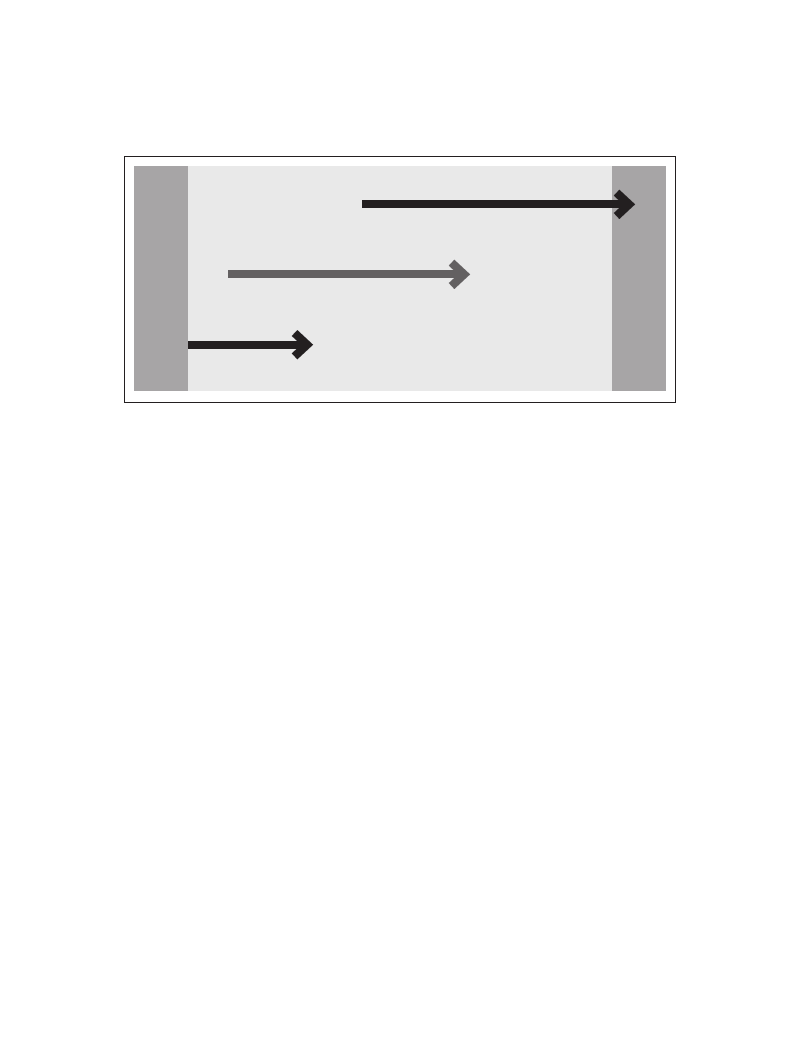
142 / Disaster Risk Management PROGRAMS FOR PRIORITY COUNTRIES LATIN AMERICA & CARIBBEAN
steps would be to strengthen the recovery planning capacities through institutional support and work at strategic and
technical level to raise awareness for such needs and their critical role to ensure proper return from crisis management
to development.
C
r
Reconstruction and
rehabilitation phase
i
s
I
Recovery phase
s
Emergency phase
D
E
V
E
P
L
R
O
S
P
P
M
E
N
T
The GoH has successfully introduced DRR as a condition for sustainable development and has built
consensus among its institutions and partners. The consensus represented within the respective strategic
documents is of particular importance because the international community finances more than 60% of the investment.
More work lies ahead to ensure the DRR priorities identified in the national development plans are
integrated within sectoral agendas. There is currently no ministry integrating DRR into their respective strategies,
although key coordination ministries such as the MPCE and MEF and several line ministries have expressed interest. The
next steps consist of building the necessary institutional capacity (both strategic and technical) and foster consensus
among the actors involved in each specific sector. Among the TFP, there is a clear adjustment of overall strategy with
more organizations integrating DRR in their plans. In addition to the World Bank and UN system, IADB and USAID are
planning for greater investment in DRR over the coming years: USAID in the form of technical assistance to the Ministry
of Agriculture, Rural Development and Natural Resources (MADRNR) and the Ministry of the Environment (MEF) in the
context of national risk reduction through a watershed rehabilitation program.
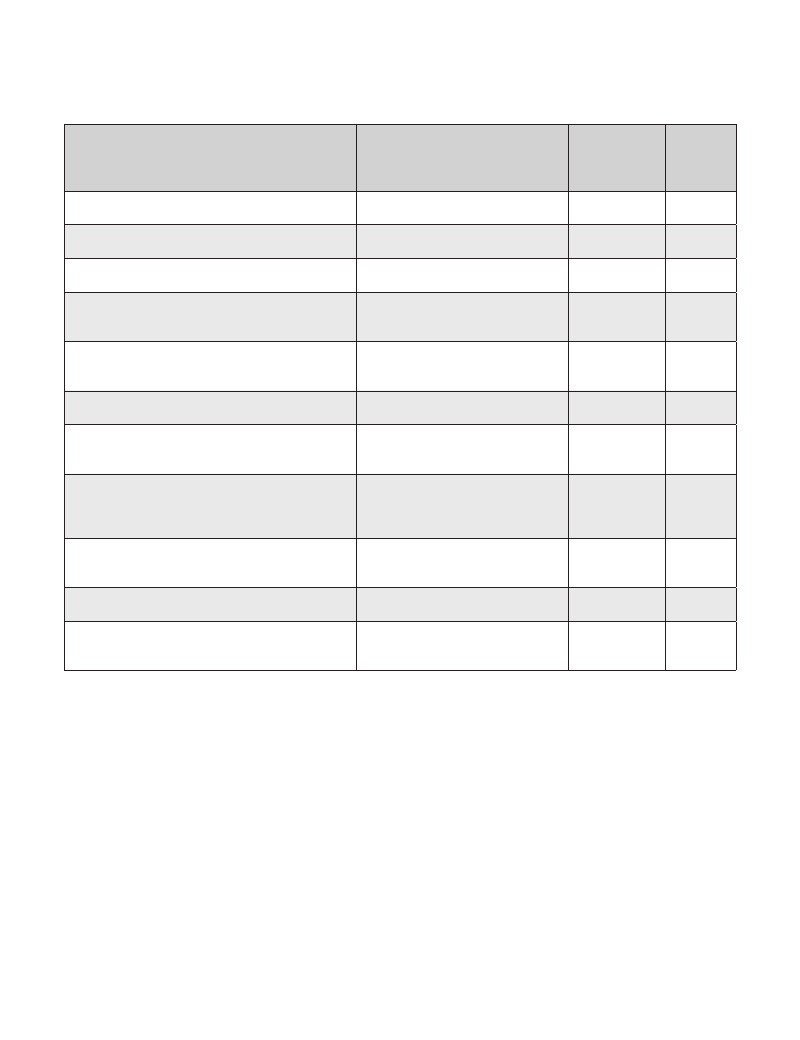
HAITI / 143
4. key donor engagements
Existing Projects with Donors and International
Financial Institutions
Emergency Reconstruction and Disaster Management
Project
Risk Management Program
Funding Agency /
International Partners
World Bank (IDA)
UNDP, European Commission
European Commission
NDRMS Development Program
National Early Warning System Program
Haiti Integrated Growth through Hurricane Emergency
Recovery
Emergency Bridge Reconstruction and Vulnerability
Reduction Project
Emergency School Reconstruction Project
Haiti Transportation and Territorial Development Project
Haiti Catastrophe Risk Insurance Project
Hurricane Noel Reconstruction Project
UNDP
World Bank
IADB
UNDP
World Bank
USAID
UNDP, IADB,
World Bank
World Bank (IDA)
IADB, UNDP
World Bank (IDA)
Canadian International Development
Agency, IADB
World Bank, European Commission,
Agence Française de Développement,
IADB, Canadian International
Development Agency
World Bank (IDA)
Canadian International Development
Agency
European Commission
Technical Assistance to Support the Creation of the
DRR Unit at the Ministry of Planning and External
Cooperation (MPCE)
World Bank (GFDRR)
Ministry of Planning and External
Cooperation
Allocated
Budget and
Period
(US$)
19.4 million
2005-2010
7.8 million
2006-2009
4 million
2009-2011
6 million
2006-2010
HFA
Activity
Area(s)
1, 2, 3, 4, 5
1, 2, 3, 4
1, 2, 3, 5
2, 3, 5
96 million
2009-2011
1, 3, 5
20 million
2009-2012
5 million
2009-2013
1, 2, 4
1, 3, 4
16 million
5
2007-2012
9.4 million
2006-2010
3.9 million
2009-2011
500,000
2009-2010
5
4, 5
1, 2, 4
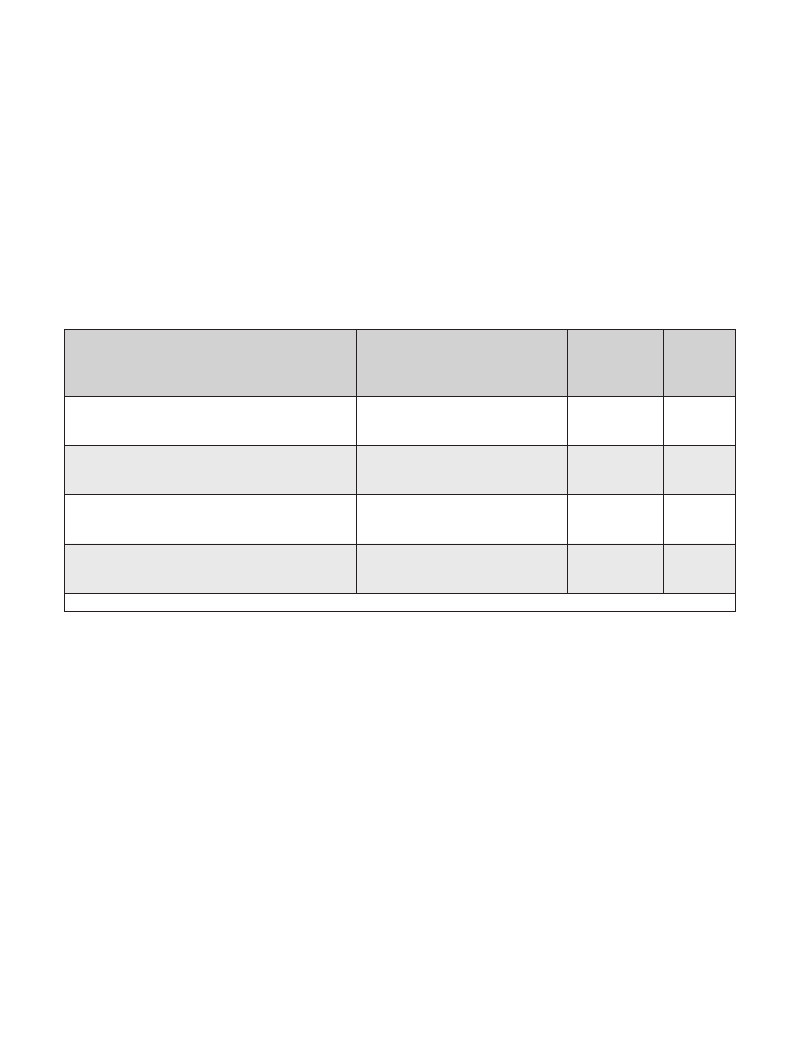
144 / Disaster Risk Management PROGRAMS FOR PRIORITY COUNTRIES LATIN AMERICA & CARIBBEAN
5.global facility for disaster reduction and recovery (gfdrr):
action plan
Given Haiti’s risk profile and its existing framework for disaster risk management, the key priority in Haiti
is to reduce the level of extreme vulnerability through a comprehensive disaster risk reduction approach
targeting all phases (recovery, reconstruction, prevention, and mitigation). Strategic actions are needed in
the following areas to enhance disaster risk management in Haiti: (i) strengthen institutional capacity for
strategic planning and coordination at central and local levels, (ii) mainstream DRR in specific sectors, and
(iii) develop a comprehensive risk assessment and monitoring capacity.
The following activities have been identified in consultation with local authorities and reflect HFA priority action areas.
These actions support Haiti’s disaster risk management program.
Indicative Program for GFDRR Funding
(Projects and engagement areas being considered for
GFDRR funding)
Implementing Agency /
International Partners
Indicative
Budget and
Period
(US$)
HFA
Activity
Area(s)
Technical Assistance to Strengthen Central Capacity
through DRR Unit within the Ministry of Economy and
Finance (MEF)
Ministry of Planning and External
Cooperation
400,000
2010-2011
1, 2, 4
Strengthening Sector Specific DRR Institutional
Capacities (Ministries of Agriculture, Public Work,
Social Affairs, Education, Environment)
Ministry of Planning and External
Cooperation, IADB, UN System
1.3 million
2010-2012
1, 2, 4
Development of local DRR expertise through pilot DRR
activities within priority sectors*
Ministry of Planning and External
Cooperation, UNDP, European
Commission, USAID
1.8 million
2010-2012
1, 2, 4
Building Risk Assessment and Monitoring Capacity*
Ministry of Planning and External
1.1 million
2
Cooperation, UNDP, IADB, USAID,
2010-2012
European Commission
Total Budget Requested: US$ 4.6 million
* The local DRR pilot activities and the risk assessment and monitoring capacity will focus on the same priority sectors in order to complete the institutional strengthening
efforts previously identified programs for GFDRR financing: Agriculture, Public Work, Social Affairs, Education, and Environment.
This initial step aims to build capacity at the central planning level and on the priority sectors with a dual approach: institu-
tional strengthening at the central level and DRR pilot activities at local level. The pilot activities will focus on designated
vulnerable communities, which will receive technical assistance aiming DRR mainstreaming in local development plans.
After the initial step, the second phase will focus on expanding the scope of work to other line ministries (such as Com-
merce and Trade, Health, Tourism, Culture, etc.) and increasing the geographic coverage of vulnerable communities. A
request for additional financing will be elaborated for this next step.
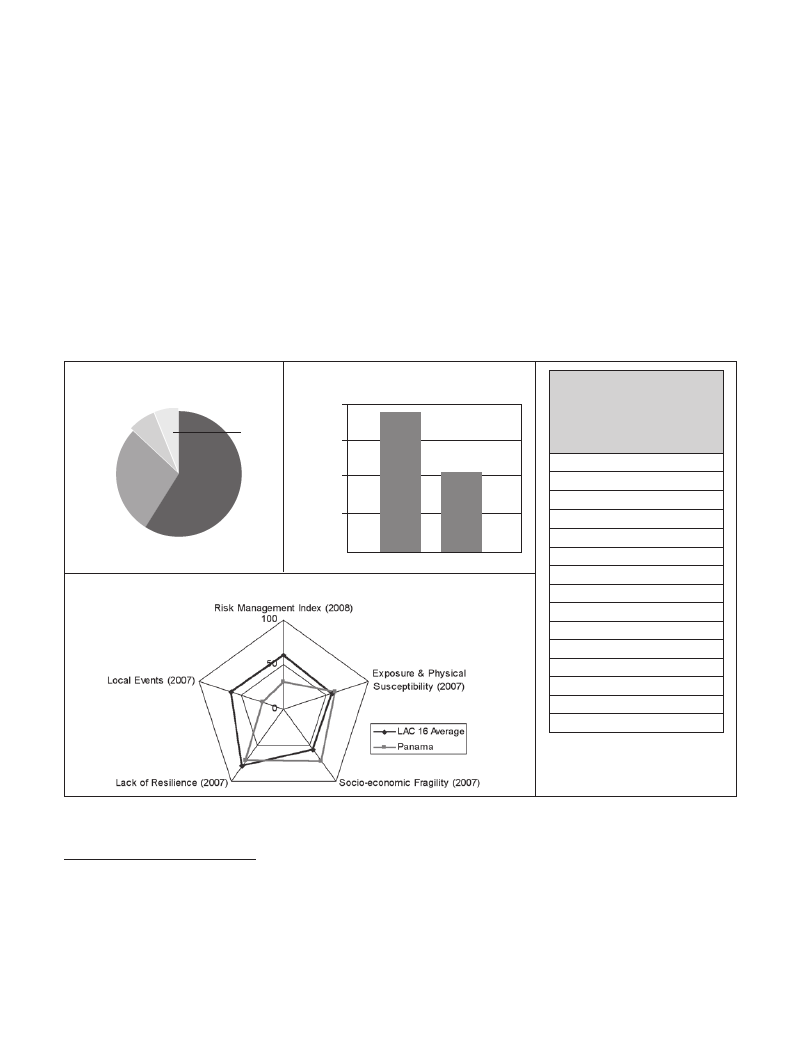
PANAMA
PANAMA / 145
1. disaster risk profile
Panama ranks 14th among countries most exposed to multiple hazards based on land area, according to
the World Bank’s Natural Disaster Hotspot study1. Panama has 4.4% of its total area exposed and 2.9% of its
total population vulnerable to up to three hazards. The same study ranks Panama 35th among countries with the highest
percentage of total population considered at a “Relatively High Mortality Risk from Multiple Hazards”.
Population Affected
by Disaster Type2
Earthquakes
7%
Storms
6%
Economic Damages by Disaster Type
(1000s USD)2
80000
60000
Drought
28%
40000
Flood
59%
20000
0
Storm
Relative Vulnerability and Risk Indicators3
Flood
COUNTRIES
MOST EXPOSED
TO MULTIPLE HAZARDS
(Top 15 Based on Land Area
with 3 or more hazards)1
1. Taiwan, China
2. Costa Rica
3. Vanuatu
4. Philippines
5. Guatemala
6. Ecuador
7. Chile
8. Japan
9. Vietnam
10. Solomon Islands
11. Nepal
12. El Salvador
13. Tajikistan
14. PANAMA
15. Nicaragua
1See World Bank, Natural Disaster Hotspots, A Global Risk Analysis (Washington, DC: Disaster Risk Management Series, 2005).
2 EM-DAT: OFDA/CRED International Disaster Database, Catholic University of Louvain, Brussels, Belgium, online at: www.emdat.net
3Relative Vulnerability and Risk Indicators are adapted from IADB-IDEA (2007), Programa de Información e Indicadores de Gestión de Riesgos
(Manizales, Colombia, 2004), Annex (2009). Values are normalized on scale of 0 – 100 and presented against the average for 16 LAC countries
found in IADB-IDEA (2007). Risk Management Index is presented as the negative (ie 0 = optimal, 100 = incipient) of IADB’s Risk Management
Index: measures country’s risk management capability in (i) risk identification (ii) risk reduction (iii) disaster management (iv) financial protection.
Resilience, fragility and Exposure are taken from the component indices of Prevalent Vulnerability Index

146 / Disaster Risk Management PROGRAMS FOR PRIORITY COUNTRIES LATIN AMERICA & CARIBBEAN
Major Natural Hazards
Due to its geographical location and geotectonic characteristics, Panama is exposed to a variety of natural hazards,
including hydrometeorological and geophysical. The Isthmus of Panama is barely 60 to 90 km wide between the
Caribbean Sea and the Pacific Ocean, with a mountain divide well known for its slope instability, intense rainfall and
active tectonics.
Panama is characterized by very intense and long lasting rainfalls, windstorms, floods, droughts, wildfires,
earthquakes, landslides, tropical cyclones, tsunamis and ENSO4/El Niño-La Niña episodes. Natural Disaster
Data from Panama published on the Prevention website5 indicates that the country experienced 32 natural disaster
events between 1983-2008, with total economic damages estimated at US$86 million, and a total of 249 people killed
by these events.
The country is located over a segment of the Caribbean tectonic plate, namely the Panama Deformed Belt
(also know as the Panama micro-plate), at the border of the Cocos and Nazca Plates, with influence from the nearby
South American Plate. This is one of the most important seismogenic sources in the region as part of the Circum-Pacific
Belt.
Earthquakes have continued to strike Panama. The most recent incident occurred in 2003 of a 6.0 magnitude
at a depth of 22km in Armuelles, near the Costa Rican border; more than 60 aftershocks (of magnitude higher than
4.0) occurred in the subsequent month. Soil liquefaction occurrences were widespread creating more damage to the
infrastructure and at least three fatalities6.
Volcanism and tsunamis are also present in Panama with a volcanic range stretching from the border with Costa
Rica to the East, dividing the country into two main North-South watersheds (Caribbean and Pacific). Chiriquí volcano,
also known as Barú, is the highest mountain peak of the country reaching 3,475m7. Tsunamis have been recorded as
affecting both Panama’s Caribbean and Pacific shores with up to 5m surge wave height.
Exposure and Vulnerability
Vulnerability to floods, landslides, earthquakes, windstorms, wildfires and storm surges has resulted in
the most important recent disasters in Panama. A high proportion of the low income population in Panama lives in
areas most exposed to natural hazards and resides in poorly designed and inadequately built structures. Absence of land
use regulations, uncertainty about the compliance with building codes, rapid demographic growth and random urban
and industrial expansion are responsible for most of the current and significant increases in vulnerability. Panama City’s
skyline is growing steadily and concerns are widespread about adherence to construction codes.
In light of significant economic growth, the Government of Panama must be proactive to ensure the country
reduces its long-term exposure to hazards. The integration of disaster risk management is essential in activities
such as the Panama Canal expansion and the large infrastructure investments in buildings, urban development, and
roads. In 2000, the Panama Canal and its cluster of related operational and economic activities contributed about US$2
billion to the Panamanian economy, about 21% of its GDP. In 2004, the Panama Canal generated direct and indirect
4 El Niño-Southern Oscillation; commonly referred to as simply El Niño, a global coupled ocean-atmosphere phenomenon.
5 Prevention Web. Panama. Data and Statistics. http://www.preventionweb.net/english/countries/statistics/?cid=131 accessed: March 2009.
6 Damage caused by the 2005 earthquake: http://www.igc.up.ac.pa/info.jpg
7 Volcanoes in Panama: http://www.igc.up.ac.pa/index.php?option=com_content&task=view&id=28&Itemid=49

PANAMA / 147
contributions totaling 25% of the revenues received by the National Treasury8. Special attention in Panama is required to
protect these assets by reducing the country’s increased vulnerability.
Global climate change models9 have predicted that Panama will undergo several climatic shifts such as
increases in temperatures, droughts, higher intensity rainfalls and storms, and rising sea level. It is known that ENSO
events have already severely impacted water availability and canal operations. It is also known that inter-annual climate
variability of either the Pacific (i.e. ENSO) or Atlantic (i.e. North Atlantic subtropical highs) causes a significant amount of
the total variance in rainfall in the Caribbean and Central America10. There are studies of geology, geomorphology, and
hydrometeorology, developed or sponsored by the Panama Canal Authority that can be interpreted as studies on natural
hazards exclusively for the Panama Canal watershed.
As is the case in most Central American countries, cities in Panama have grown steadily and have thereby
heightened vulnerability due to the increased concentration of the population, infrastructure and production of goods
and services. Meanwhile, the implementation of earthquake-resistant parameters in new buildings and towers is uncertain,
despite being essential measures to reduce disaster risk in Panama.
2. disaster risk management framework
Panama has improved its legal and institutional framework for disaster risk management (DRM). The
authority for Panama’s DRM National Platform stems from Law No. 7, Resolution 28 which created the National Civil
Protection System (SINAPROC) in 2005. SINAPROC is responsible for coordinating DRM in Panama as the highest
ranking authority in the event of a natural catastrophe or man-made emergency. SINAPROC is also charged with
executing the actions, regulations and directives towards the removal or reduction of the negative effects of disasters
on human lives, goods and society.
As the leading DRM authority in Panama, SINAPROC maintains responsibility for the National Emergencies
Plan and the country’s Risk Management Plan. The mandate of the National Emergencies Plan is to define roles,
responsibilities and general procedures for institutional preparedness and response, establish an inventory of resources,
coordinate operational activities, and assessments in order to safeguard life, protect property, and restore normalcy as
soon as possible after the occurrence of a dangerous phenomenon. The role of the Risk Management Plan is to guide
risk reduction activities and preparations for emergencies and disaster recovery efforts. These measures are intended to
improve safety against various risks while greatly reducing material losses and social consequences from disasters.
Panama is active in several regional and international forums for DRM, including participation in the Central
American Coordination Center for Natural Disaster Prevention (CEPREDENAC) and the United Nations International
Strategy for Disaster Reduction (UN-ISDR).
Panama has nationwide networks of volcanological and meteorological monitoring stations and has
implemented regional and local flood early warning systems. The country also has a national emergency line
“335” that integrates several ICTs11 to alert the public.
8 PCA 2006A
9 Hadley Centre Coupled Model, Version 2 (HADCM2), as reported in M. Mulligan, “Downscaling” Global Climatic Futures for Hydro-impact Stud-
ies, King’s College London, 2003. Same modeling data as used by the Intergovernmental Panel on Climate Change (IPCC).
10 Giannini, Kushner, and Cane 2002
11ICT: Information and Communication Technologies

148 / Disaster Risk Management PROGRAMS FOR PRIORITY COUNTRIES LATIN AMERICA & CARIBBEAN
While DRM is not explicitly reflected in Panama’s national development plan and the FY2008-2010 Panama
Country Partnership Strategy states that the country is not seriously affected by natural disasters, the Government of
Panama has made some initial efforts to mainstream DRM in its planning processes. The National Environment Authority
and the Canal Watershed Inter-Institutional Committee have integrated DRM and climate change in its national agenda. This
is in recognition of the fact that each year during the rainy season, from May to November, floods and landslides are the most
destructive natural disasters in the country, affecting people and communities, agriculture productivity, the road system and
housing. In addition, the Panama Canal Watershed is particularly vulnerable to wildfires and the canal itself is vulnerable
to earthquakes that can cause floods, damages to dams, and loss of life and property. Contingency measures have been
developed to retrofit infrastructure, train staff, acquire necessary equipment and enhance inter-institutional coordination.
Panama has adopted the recommendations and priority actions of the “Hyogo Framework of Action 2005-
2015: Building the Resilience of Nations and Communities to Disasters” as part of the Government of Panama’s efforts
to improve its DRM capacity. However, Panama is confronted with the challenge of strengthening its existing institutional
capacities for DRM under policies of decentralized authority and resources in accordance with recommended best
practices within the Hyogo Framework.
3. activities under the hyogo framework of action
HFA Priority # 1: Policy, institutional capacity and consensus building for disaster risk manage-
ment
SINAPROC is in charge of planning, scientific research, direction, supervision, assessment, information,
education, organization, public policy implementation and all DRM actions in Panama. The execution of the
National DRM Plan, including proactive initiatives and coordination with all national and international entities, is also
within SINAPROC’s responsibilities. Emergency management and disaster response are prescribed in Articles 6, 7 and
8 in Panamanian Law.
Emergencies are managed by the Center for Emergencies Operations (COE12). This entity was created in 2000
with funding from the Southern Command of the United States Army. Although equipped with the latest technology
and theoretically managed by civil servants, it has a military hierarchical structure that is vertical and centralized. Alerts,
supervision and command-control operatives are executed during emergency situations for both natural and man-
made hazards. A recent assessment of emergency and disaster responses revealed weaknesses related to financial
sustainability, training, organizational aspects, inter-institutional linkages and cooperation, information dissemination
and operational structures. The vision and organizational structure remain emergency and disaster-driven, while the
assessment also detected gaps, breaches and overlaps in activities13.
According to the Government of Panama’s June 2007 statement14, some of Panama’s accomplishments and
outcomes within HFA1 are as follows:
• The Regional Plan for Disaster Reduction was updated at the national level in accordance with national priorities
on risk management. Other institutional guidelines, rules, and policies were also improved upon by incorporating
risk reduction into development plans.
12COE: http://www.sinaproc.gob.pa/index.php?option=com_content&task=view&id=26&Itemid=120
13SINAPROC, 2007
14 “Intervención de la S.E. Una Alfú de Reyes. Embajadora Representante Permanente Adjunta de la Misión Permanente de Panama, ante la Primera
Sesión de la Plataforma Global para la Reducción de Riesgo de Desastres. Junio 2007. Ginebra” http://www.preventionweb.net/files/2271_Pana-
maStatementGP07.pdf

PANAMA / 149
• Efforts have been made to develop and strengthen cooperation between the National Commission of the
Coordination Center for Natural Disaster Prevention in Central America (CEPREDENAC) and the Executive
Secretary.
• A coordinating network was created for the National Civil Protection System and CEPREDENAC-PANAMA
National Commission’s members to enable effective management of disaster risk reduction projects.
• Best practices for DRM and sustainable development have been developed through the involvement of private
companies and public institutions.
• Through community-based efforts, a platform for local risk management was developed in vulnerable
communities.
Some effort has also been made to mainstream DRM into the development of sectoral policies. There are
several environmental policies that address DRM in an attempt to foster sustainable environmental development, such
as the national policies for water, climate change, cleaner production, environmental monitoring, and environmental
information, among others. Health policy and related strategies are also designed to take into consideration the
economic, political, social, cultural, and environmental dimensions that determine the health condition of the population
in Panama.
HFA Priority # 2: Disaster risk assessment and monitoring
Earthquakes are monitored by two seismological networks: the Earthquake Western Observatory (OSOP15)
and the National Seismological Network (RSN16). Earthquake hazard has been probabilistically assessed in Panama
through the RESIS II Project (NORSAR, 2008). Volcanic hazards have only been preliminarily assessed in the western
region, near the Barú volcano17.
The Hydrometeorological Management Office of the Electric Transmission Company (GH-ETESA18) acts as
the national climatologic, meteorological and hydrological monitoring service in Panama. Hydrometeorological
hazards are also assessed at this bureau with coordination links to SINAPROC and COE.
According to the Government of Panama’s June 2007 statement19, Panama reported the
following accomplishments and outcomes within HFA2:
• The disaster inventory database was updated and refined.
• Flood-prone and landslide-prone areas were identified in the district of San Miguelito: Villa Greece and 8
communities of Bocas del Toro province.
• Several early warning systems for floods were implemented in vulnerable communities prone to floods from the
Mamoni, Cabra, and Chico rivers.
• Monitoring tools were customized for the Cabra, Tocumen and Tatar rivers and hazard maps of floods were
developed to support decision-making in vulnerable districts. Additional hazard maps were created for rainfall,
temperature, runoff patterns, and volcanic risk to benefit communities and enhance DRM activities.
15OSOP: http://www.osop.com.pa/index.html
16RSN: http://www.igc.up.ac.pa/
17 Volcanoes in Panama: http://www.igc.up.ac.pa/index.php?option=com_content&task=view&id=28&Itemid=49
18 Hidrometeorología-ETESA: http://www.hidromet.com.pa/sp/InicioFrm.htm
19 “Intervención de la S.E. Una Alfú de Reyes. Embajadora Representante Permanente Adjunta de la Misión Permanente de Panama, ante la Primera
Sesión de la Plataforma Global para la Reducción de Riesgo de Desastres. Junio 2007. Ginebra” http://www.preventionweb.net/files/2271_Pana-
maStatementGP07.pdf

150 / Disaster Risk Management PROGRAMS FOR PRIORITY COUNTRIES LATIN AMERICA & CARIBBEAN
Advances have been made to develop structural and non-structural risk assessment and risk reduction
programs pertaining to health infrastructure. All hospitals exposed to natural or human threats must be retrofitted
to withstand the impact of a disaster and to assist victims during the critical period that follows. This requires the
timely reduction of the vulnerability of the infrastructure, in addition to preparedness for providing a timely and effective
response. National risk assessments of hospitals and health centers have been supported through the Social Security
Fund and 95% of related staff has been trained in risk management.
Monitoring systems and related networks have been advanced in Panama. The University of Panama’s
Geosciences Institute has a real-time data gathering system with 20 seismological stations that continuously monitor
seismic activity at national and local levels. Also, twelve research projects were implemented to develop monitoring
networks of urban hazards throughout Panama.
Inspections have been conducted by the National Civil Protection System in prevention and mitigation
activities, developing changes in home building processes, erosion control in urban development, and integrated
watershed management, towards reducing the impact of flooding in the most vulnerable areas of the country.
The hydrometeorological network was implemented and expanded through the Electric Power Company to
monitor climatic conditions and support DRM initiatives. Long-term, weekly and daily weather forecasts have also been
prepared. These forecasts are provided to the Ministry of Agrarian Development to support decision-making and are
shared with the Ministry of Health, Smithsonian Institution, National Civil Protection System, the National Environmental
Authority, and international organizations.
HFA Priority # 3: Use of knowledge, innovation, and education to build a culture of safety and
resilience at all levels
The National Secretariat for Science and Technology and Innovation (SENACYT) is charged with fostering
all research, development, training and education efforts related to natural hazards, risk, and DRM in Panama.
According to the Government of Panama’s June 2007 statement20, Panama reported the following
accomplishments and outcomes within HFA3:
• An initiative was proposed to develop a National Strategic Education Plan for Risk Management and
Sustainable Development in order to mainstream a culture of prevention that strengthens the Panamanians’ way
of life and advances sustainable development.
• The inter-agency coordination between the Social Investment Fund, the General Accounting Office, the Tomy
Guard Institute, and SINAPROC was strengthened to facilitate the management of scientific and technical
DRM information.
• Disaster Risk Prevention campaigns were developed through health fairs, newspapers, and radio broadcasting.
The National System of Civil Protection and the Ministry of Education have begun incorporating risk
management and disaster topics in the programs and curricula of early childhood education, primary, middle and
high schools, and the first DRM manual has been released for teachers of primary education. The National System of
20 “Intervención de la S.E. Una Alfú de Reyes. Embajadora Representante Permanente Adjunta de la Misión Permanente de Panama, ante la Primera
Sesión de la Plataforma Global para la Reducción de Riesgo de Desastres. Junio 2007. Ginebra” http://www.preventionweb.net/files/2271_Pana-
maStatementGP07.pdf

PANAMA / 151
Civil Protection and the University of Panama’s Faculty of Education initiated coordination activities towards developing
qualified DRM personnel to strengthen the Operative Plan for School Safety Program.
Community outreach on environmental concepts, information and actions was done through World
Meteorological Day celebrations and other activities. For instance, a training project between the Electric Power
Transmission Company and the Ministry of Education called “Rain Source of Life” sought to develop awareness of
the natural environment among fifth and sixth graders, facilitating the training of teachers. Also, a “decimal” contest
was developed for children as a tool to raise awareness about disasters, the environment and how to protect the area,
sponsored by the ETESA Electric Transmission Company and the Ministry of Education.
The Technological University of Panama has integrated DRM topics by delivering programs on safe housing
construction, quality control of construction materials, and seismic instrumentation for high-rise buildings.
HFA Priority # 4: Reduction of the underlying risk factors (reduction of exposure and vulnerabil-
ity and increase of resilience)
Panama’s June 2007 statement21 indicated the following activities as some accomplishments and outcomes
within HFA4:
• Climate change scenarios were adapted for the Santa Maria River Watershed to facilitate the identification and
implementation of adaptation measures.
• The “Strengthening of Forest Fire Prevention and Control Management” program was developed in the
Soberania and Camino de Cruces National Parks.
In the context of community capacity development for disaster risk prevention and mitigation, the National
Civil Protection System has strengthened local capacity for DRM and emergency response capabilities in several
communities. DRM Local Civil Protection Committees have been established in twenty-nine vulnerable communities.
Communal Civil Protection bases have also been created to foster effective DRM practices and response in the event of
a disaster or emergency in areas identified as high risk. These areas include the province of Panama, western Panama
and the countryside, Chiriquí, Bocas del Toro, Colón, Herrera and Los Santos.
HFA Priority # 5: Disaster preparedness, recovery and reconstruction at national, regional, and
local levels
According to the Government of Panama’s June 2007 statement22, some of Panama’s accomplishments and
outcomes within HFA5 are as follows:
• Based on a regional plan, the Ministry of Public Works developed a risk reduction master plan and Emergency
Operation Centers were established in the Provinces of Chiriquí and Coclé.
• Panama implemented the first early warning system in Central America that integrates voice and text messaging
for communities at risk. This service, known as “Line 335”, is free for landlines and mobile phones for all users
21 “Intervención de la S.E. Una Alfú de Reyes. Embajadora Representante Permanente Adjunta de la Misión Permanente de Panama, ante la Primera
Sesión de la Plataforma Global para la Reducción de Riesgo de Desastres. Junio 2007. Ginebra” http://www.preventionweb.net/files/2271_Pana-
maStatementGP07.pdf
22 “Intervención de la S.E. Una Alfú de Reyes. Embajadora Representante Permanente Adjunta de la Misión Permanente de Panama, ante la Primera
Sesión de la Plataforma Global para la Reducción de Riesgo de Desastres. Junio 2007. Ginebra” http://www.preventionweb.net/files/2271_Pana-
maStatementGP07.pdf
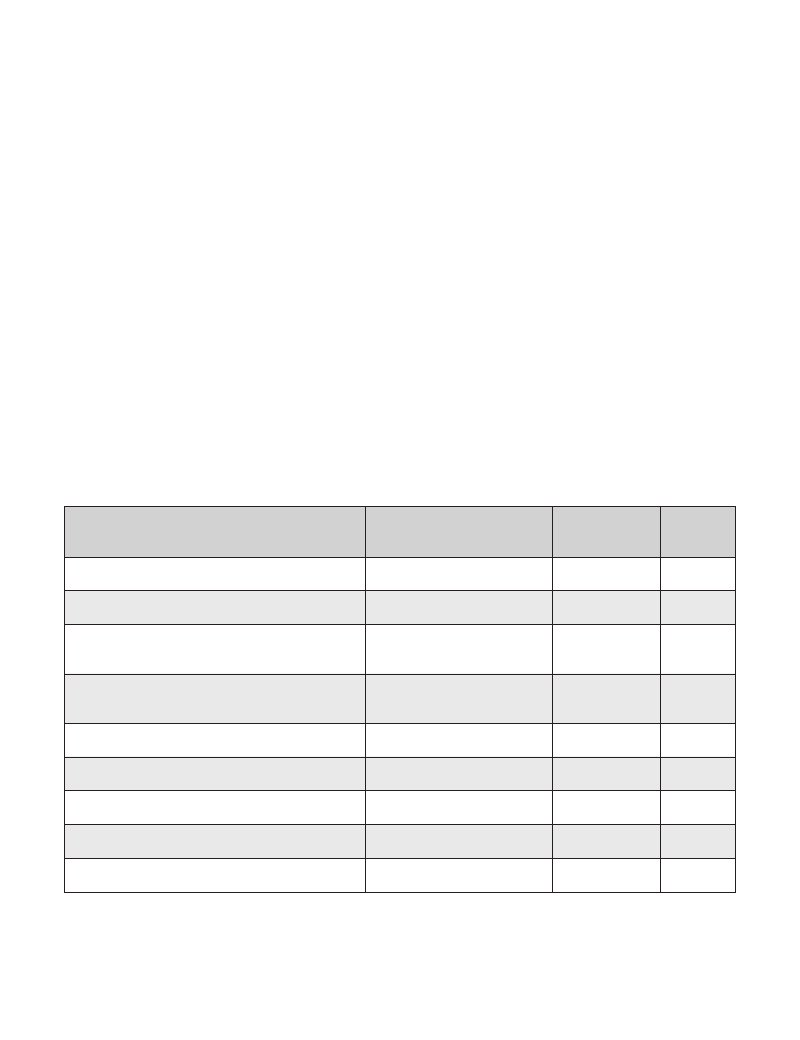
152 / Disaster Risk Management PROGRAMS FOR PRIORITY COUNTRIES LATIN AMERICA & CARIBBEAN
requesting information about emergencies and disasters. This information is accessible 24 hours a day, 365
days a year.
• Six technical cooperation agreements, on the topics of disaster risk reduction, preparedness, and emergency
response have been signed with government agencies and international organizations (e.g. the Southern
Command of the United States, Water Center for the Humid Tropics of Latin America and the Caribbean,
Japan’s International Cooperation Agency and the United Nations Development Program).
• Significant effort was made to improve emergency response capabilities at the local level by training water
rescue personnel, providing courses on the Incident Command System, and piloting a project to promote
procedures for standard search and rescue and pre-hospital care.
Panama will benefit from building on these initial efforts to ensure local governments are accountable
for the implementation of critical DRM activities, such as the design and enforcement of building codes and
establishment of an adequate regulatory framework for the zoning of urban and industrial developments.
It is expected that Panama will continue mainstreaming the concepts of risk reduction into the national
planning process while promoting further integration of DRM into development plans. It is also expected that
improving strategic risk management planning in relevant sectors such as health, environment, education, agriculture,
public works and investments, housing, and human settlements will continue.
4.key donor engagements
Existing Projects with Donors and
International Financial Institutions
Integration of adaptation measures in the management
of natural resources in priority watersheds
Development of disaster risk management capacity at
the local level
Strengthening of CEPREDENAC and National
Commissions for disaster vulnerability reduction in
Central America
Earthquake Risk Reduction In Guatemala, El Salvador
and Nicaragua with regional cooperation support to
Honduras, Costa Rica and Panama (RESIS II)
Regional Program of Environment in Central America
(PREMACA)
Program for the Reduction of Vulnerability and
Environmental Degradation Panama (PREVDA)
Support to advance a Regional Plan for Disaster
Reduction (PRRD)
Mesoamerican coordination system for territorial
information
Strengthening of Information and Communication for
CEPREDENAC and National Commissions
Funding Agency /
International Partners
UNDP
Japan International Cooperation
Agency
Spanish International Cooperation
Agency
Norway
Danish Cooperation (DANIDA)
European Commission
Norway, Spanish International
Cooperation Agency
IADB
World Bank (Institutional
Development Fund)
Allocated
Budget
(US$)
Not available
2009-2012
300,000
2008-2011
130,000
2005-2009
2.4 million
2007-2010
Not available
3.34 million
2007-2011
400,000
2006-20011
800,000
2009-2011
446,000
2007-2009
HFA
Activity
Area(s)
2,4
2,4
1
2
2,4
2,3
1
2
1,2
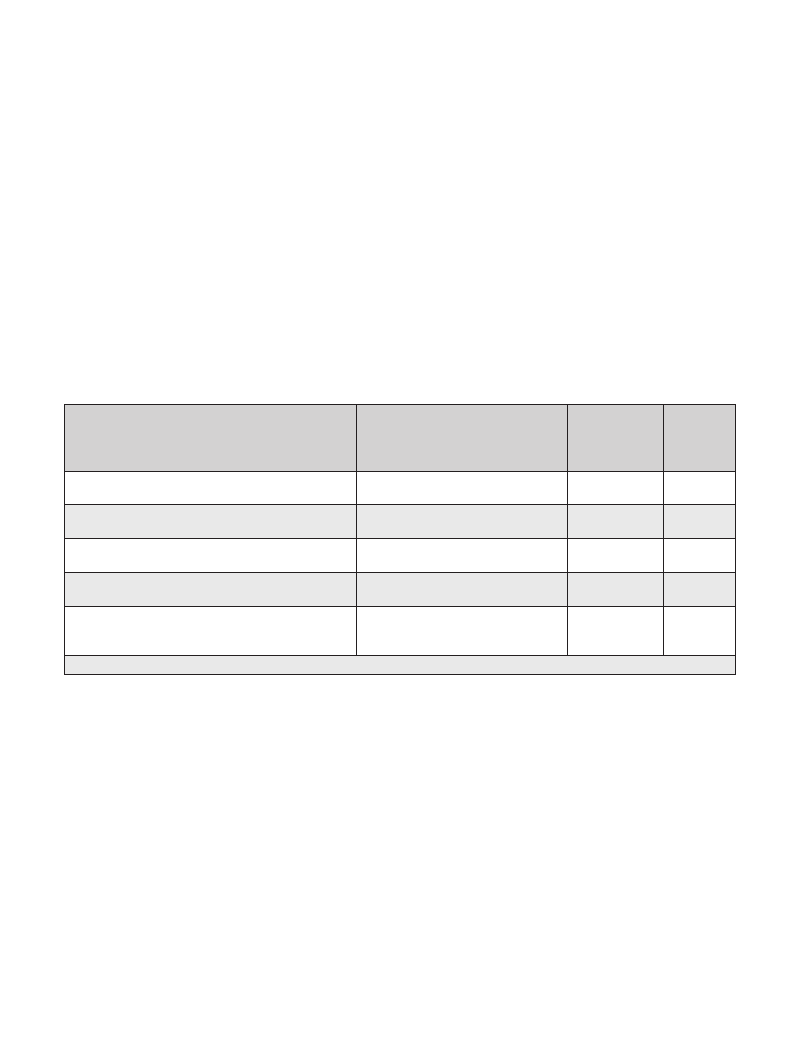
PANAMA / 153
5.global facility for disaster reduction and recovery (gfdrr):
action plan
Given Panama’s disaster risk profile and its existing framework for disaster risk management, the key
priority in Panama is to mainstream disaster risk reduction at the sectoral level. Strategic actions are needed
in the following areas to enhance disaster risk management in Panama: (i) strengthen institutional capacity of members
of the national system, (ii) reduce vulnerability in urban areas, and (iii) develop a comprehensive risk assessment and
monitoring capacity.
GFDRR has no ongoing or completed projects in Panama at the moment; however, Panama is becoming a core country
of the GFDRR program. The most immediate activity envisioned for Panama is its incorporation of a comprehensive Risk
Assessment Platform by joining efforts with other regional countries that are actively involved with the Central American
Probabilistic Risk Assessment.
The following activities have been identified in consultation with local authorities and international donor agencies. These
actions support Panama’s disaster risk management program and reflect HFA priority action areas.
Indicative Program for GFDRR Funding
(Projects and engagement areas being considered
for GFDRR funding)
Implementing Agency /
International Partners
Indicative
Budget and
Period
(US$)
HFA
Activity
Area(s)
Support for the development of a Risk Assessment
Platform for Panama
SINAPROC, Universities, Minister of
Finance
914,000
2009-2011
1,2,3
Support capacity building and integrate risk reduction
into national planning systems to mitigate urban risk
SINAPROC, Municipality of Panama,
Other Municipalities, UNDP
2.2 million
2009-2012
1,2,4
Technical assistance to mainstream disaster risk
management in the water and transport sectors
Ministry of Health, Ministry of
Transport, SINAPROC
600,000
2009-2011
1,2,4
Support to mainstream disaster risk management in
other priority sectors
Minister of Finance, SINAPROC
980,000
2009-2012
1,2,3,4,5
Technical assistance to raise public awareness and
proactively engage the private sector in disaster risk
reduction activities
SINAPROC, Private Sector Entities
500,000
2009-2011
1,3,4
Total Budget Requested: US$ 5.194 million
In addition to the above-mentioned activities, there is ongoing dialogue with national and local officials to identify disaster
risk management measures that consider climate change as part of adaptation strategies in Panama.


DISASTER RISK MANAGEMENT
Middle East & North Africa
Djibouti / Republic of Yemen
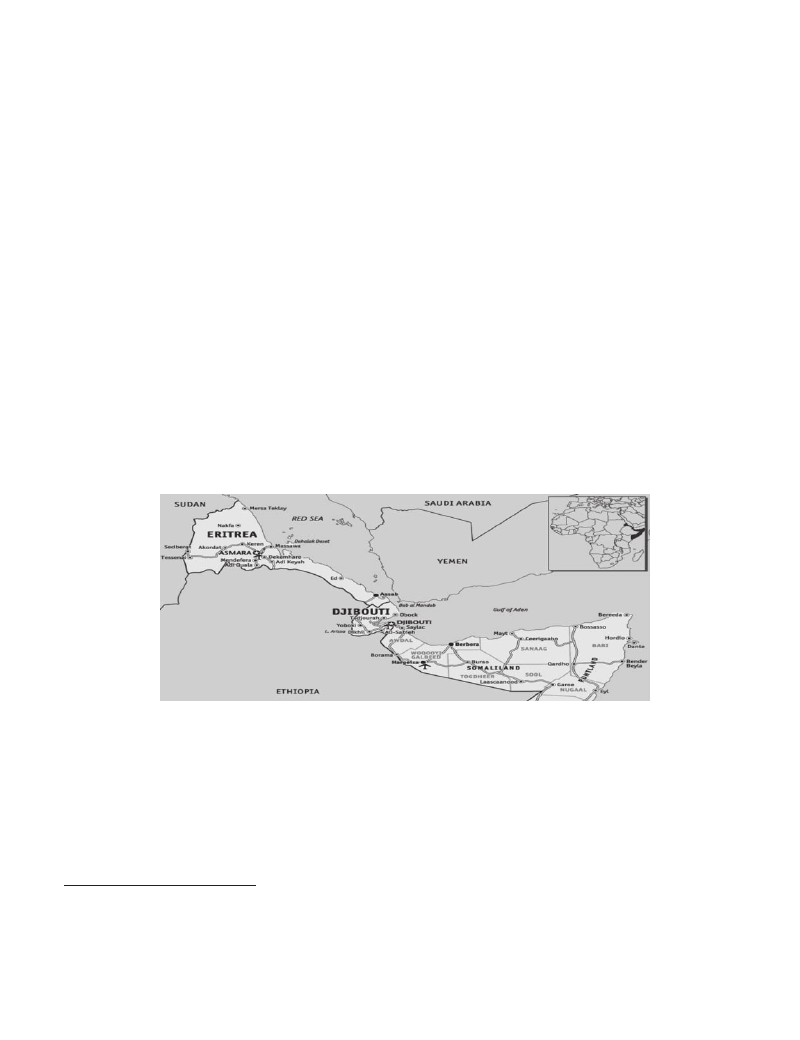
156 / Disaster Risk Management PROGRAMS FOR PRIORITY COUNTRIES MIDDLE EAST & NORTH AFRICA
DJIBOUTI
The Djibouti Disaster Risk Management (DRM) program is the result of active collaboration between the World Bank and
five leading Djibouti DRM agencies. The following are the national agencies engaged: (i) the Djibouti Center for Study and
Research (CERD); (ii) the Executive Secretariat for DRM (SEGRC); (iii) the Ministry of the Habitat, Urbanism, Environment,
and Land Management (MHUEAT); (iv) the Meteorology Division of the Airport; and (v) the University of Djibouti.
1. DISASTER RISK PROFILE
Djibouti is a resource scarce country. Measuring 23,000 sq km, it is located at the juncture of the Red and
the Aden Sea, which serves as a vital regional and international trans-shipment port. According to 2003
national statistics, the country’s population is estimated at 734,000 people, 85 percent of which live in urban coastal
areas1 and roughly 65 percent in Djibouti-ville, the capital city. In 2008 Djibouti’s real GDP grew by 5.9 percent, driven
mainly by foreign direct investments (FDI) in construction and maritime services. According to the World Bank, Djibouti’s
strong externally financed public investment and the growing diversification of maritime services will allow Djibouti to
decrease its dependence on Ethiopian trade and will support real GDP growth of about 5 percent in 2009.
Figure 1. Map of Djibouti
Djibouti is vulnerable to a range of natural hazards: i) extended dry multi-annual droughts that result in water
scarcity for agriculture and domestic uses; ii) frequent intense flash floods with a variable but approximate recurrence of
7 years; iii) frequent earthquakes ranging in magnitude between 4 and 5 on the Richter scale iv) volcanism originating
along the Afar rift area; and v) fires fueled by droughts and exacerbated by precarious construction materials.
Data from recent disasters (Table 2) demonstrates that Djibouti’s economic growth and sustainable
development have been heavily affected by natural disasters. According to the World Bank Natural Disaster Hot
Spots Study2, Djibouti is characterized by a relatively high economic risk from multiple natural disasters. Approximately 33
percent of its population lives in areas of high risk3, and 35.3 percent of the economy is vulnerable to natural disasters.
1 The majority of Djiboutian population is located near the coast, and is particularly at risk from sea level rise and flash floods (as seen in 1927, 1989,
1994, and lately in 2004).
2 World Bank, Natural Disaster Hotspots: A Global Risk Analysis. 2005.
3 According to UNDP, the drought of 1999 affected more than 150,000 nomadic herdsmen, and the scarcity of rainfalls resulted in the loss of 30
percent of the cattle.
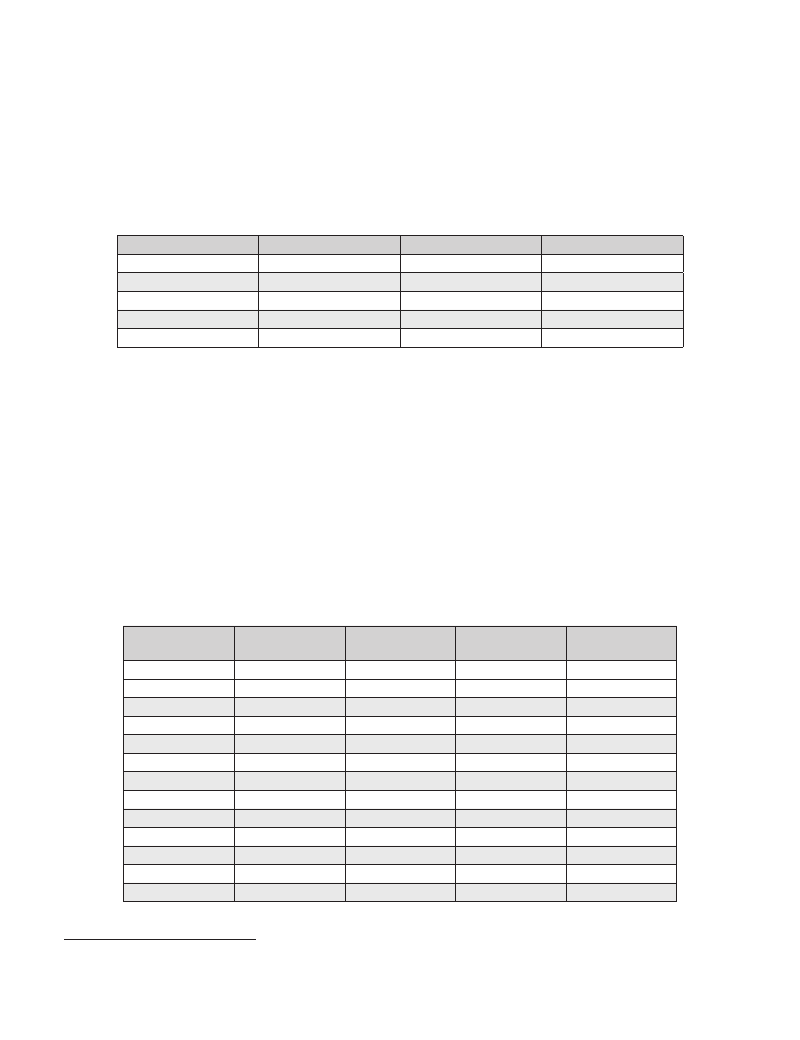
DJIBOUTI / 157
Djibouti’s disaster risk vulnerability is worsened by scarce water resources management, insufficient land
use planning, non-systematic building codes enforcement, as well as by the country’s limited capacity to
prevent and respond effectively when a natural disaster occur. Furthermore, at present the country is experiencing
a water crisis due to the pressure placed on its renewable freshwater resources by population growth, as well as by
climate change. With less than 400 m3/yr/per capita (in 2005), the country is classified as water scarce (according to
World Health Organization definition of <1000 m3/yr/per capita) (Table 1).
Table 1. Country snapshots
Index
Population (1000)
Growth rate (%)
Water per capita (m3/yr)
GDP agriculture (%)
Rural water access (%)
Djibouti
793
2.1
378
4
59
Source: United Nations Statistic Division (2005)
Morocco
31,478
1.5
921
16
56
Yemen
20,975
1.1
195
13
65
Droughts have been exacerbated by two consecutive failed rainy seasons, which resulted in the insufficient
replenishment of water catchments. According to the Emergency Events Database (EM DAT), 2008 drought damage
and loss affected roughly 50 percent of the population. As the drought worsened food prices for staples reached record
levels, worsening the situation for poorer households. Poor urban households can currently buy only 68 percent of their
daily minimum food requirements4. According to the Food Security and Nutrition Working Group, 284,000 people (41
percent of total population) are food insecure or at risk of food insecurity due to droughts.
A recent World Bank study indicates that annual economic losses resulting from the April 2004’s flash
floods at Oued d’Ambouli, exceeded DJF 1.8 billion (approximately US$ 11.1 million), caused 230 fatalities
and severely affected about 20,000 households. The flash floods caused grave damage to services, roads, bridges,
health facilities, and schools.
Table 2. Main Natural Disasters in Djibouti 1970 – 2007
Natural Disaster
Flood
Flood
Drought
Flood
Drought
Drought
Flood
Flood
Flood
Epidemic
Wind storm
Drought
Epidemic
Year
1977
1978
1980
1981
1984
1988
1989
1993
1994
1994
1995
1996
1997
Total Dead
0
25
0
0
10
0
145
10
0
0
50
Number of
Affected People
91,000
106,000
145,000
102,000
80,000
30,000
15,0300
20,000
120,000
239
775
100,000
2,424
Damage
US$ million
2,500
1,100
2,119
(Cont.)
4 World Bank, Djibouti Economic Monitoring Report, Social and Economic Development Group MNA. April 2008.
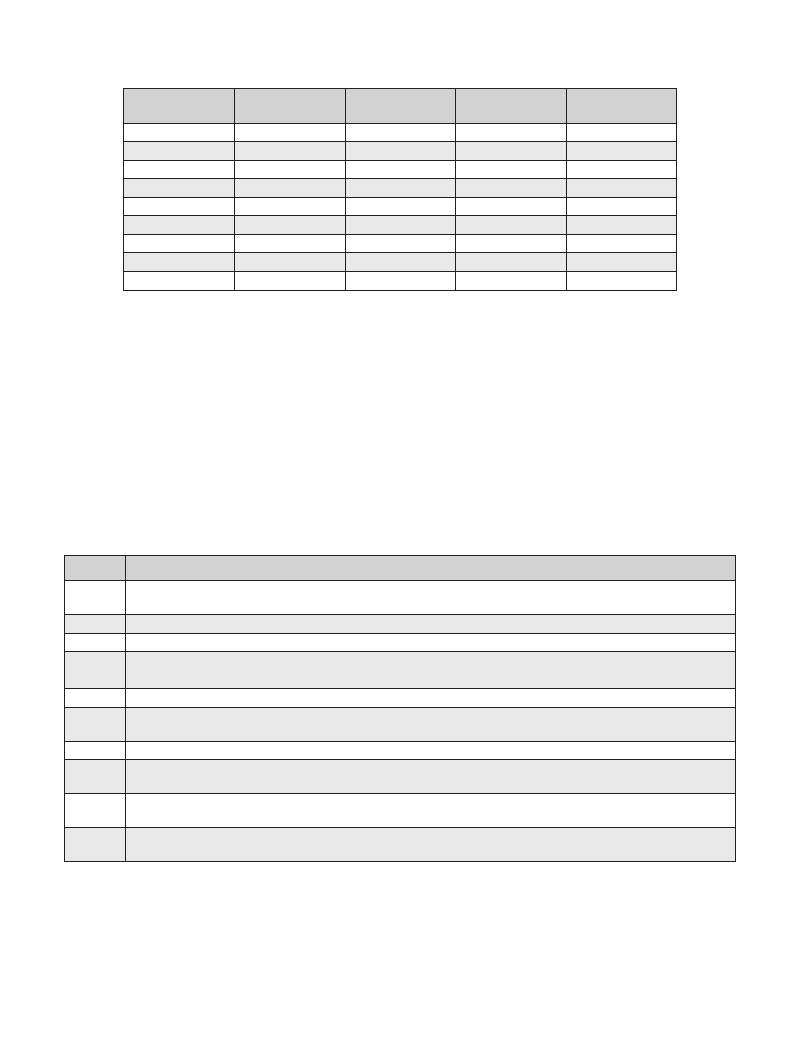
158 / Disaster Risk Management PROGRAMS FOR PRIORITY COUNTRIES MIDDLE EAST & NORTH AFRICA
Natural Disaster
Epidemic
Drought
Drought
Epidemic
Flood
Flood
Drought
Drought
Drought
Year
1998
1999
2000
2000
2001
2004
2005
2007
2008
Total Dead
43
0
0
4
0
230
0
0
0
Source: UNDP, Disasters for LDCs (2004); GFDRR (2009)
Number of
Affected People
2,000
100,000
150,000
419
95,000
115,000
42,750
150,000
284,000
Damage
US$ million
1,600
NA
NA
NA
2. activities under the hyogo framework of action
HFA Priority # 1: Institutional Capacity and Consensus Building for Disaster Risk Reduction
Djibouti’s main DRM strategy objectives includes the following pillars: (a) increase national leadership
and commitment to the sustainability of DRR through the implementation of the HFA; (b) enhance collaboration and
coordination among national stakeholders in order to increase DRR knowledge and understanding; (c) increase national
commitment to protect disaster vulnerable households; and (d) serve as national focal point in the United Nations
International Strategy for Disaster Reduction (ISDR) system, and strengthen links with its secretariat.
Table 3. Djibouti’s DRM Legal and Policy Framework
Date
Oct-06
Jul-06
Mar-06
Jun-05
DRM Legislations/Documents
National Action Program for Climate Change Adaptation; Ministère de l’Habitat, de l’Urbanisme, de l’Environnement et
de l’Aménagement du Territoire, UNEP, GEF, UNFCCC
Decree No. 2006-0192/PR/MID. Institutional framework for disaster and risk management
Exécution of the National Strategy for DRM; Ministère de l’Intérieur et de la Décentralisation
Coastal Environmental Profile of the Republic of Djibouti; Ministère de l’Habitat, de l’Urbanisme, de l’Environnement et
de l’Aménagement du Territoire
Feb-05
Aug-04
Jun-04
Dec-01
Jul-01
Dec-00
Prescription No. 2005-0147/PR. Creation of the Post-Flooding Rehabilitation Program Steering Committee
Prescription No. 2004-0579/PR/MID. Creation of a Technical Committee to prepare and elaborate a national strategy
for disaster and risk management
Law No. 58/AN/04/5ème L. Creation and status definition of the Civil Protection Bureau
Republic of Djibouti First National Communication to the UNFCCC; Ministère de l’Habitat, de l’Urbanisme, de
l’Environnement et de l’Aménagement du Territoire
Study of Vulnerability and Adaptation to Climate Change; Ministère de l’Habitat, de l’Urbanisme, de l’Environnement et
de l’Aménagement du Territoire
National Environmental Plan; Ministère de l’Habitat, de l’Urbanisme, de l’Environnement et de l’Aménagement du
Territoire
Source: World Bank 2009
DRM is a priority of the Government of Djibouti, and is an integral part of the processes of development
planning and poverty reduction. However, disaster prevention, mitigation and preparedness are new to the country
and need to be further strengthened. The institutional structure for DRR and DRM is headed by the National Committee,

DJIBOUTI / 159
presided by the First Minister responsible for: (i) policies and strategies formulation; (ii) international aid mobilization, and
(iii) integrating DRM activities with poverty reduction.
In 2006 Djibouti’s Government established the Executive Secretariat for Risk and Disaster Management
(SEGRC). SEGRC advises the National Committee on natural disaster technical matters, coordinates prevention,
mitigation, and response activities. Moreover SEGRC controls the crisis center, promotes and coordinate the preparation
of sectoral and regional plans for risk and disaster management. Although SEGRC capacity is limited (it consists of three
staff members), a plan for its expansion is envisaged, increasing staff members to 6 by the end of 2009.
The National Inspectorate for Civil Protection has been operational since 1970. In 2004 a new law has been
approved in order to expand and better define the Civil Protection core DRR competencies. The Civil Protection
has two main functions: (a) fire risk management and prevention; and (b) emergencies operational management. The
Inspector manages all relief operations either from the command post of the Civil Defense Inspectorate or, in most cases,
from the field. The Government of Djibouti has been enhancing the Civil Protection capacity and is currently establishing
regional Civil Defense offices.
Djibouti’s main think tank is the National Center for Scientific Study and Research (CERD). CERD is a
multidisciplinary scientific research development institute which provides policy makers and citizen’s access to training,
workshops and knowledge on: (i) environmental studies; (ii) social sciences; (iii) international strategic studies; (iv)
cartography and geography; and (v) information technologies. CERD has led the first phase of GFDRR technical
assistance, and would be one of the key partners in the development of the second phase.
In terms of DRM Institutional Capacity and Consensus Building for DRR, several multilateral organizations
are engaged in strengthening DRM capacity in Djibouti. These organizations are: USAID, UNEP, UNDP, UNICEF,
and the EC. In addition, the MNA DRM Team is currently seeking to establish regional partnership with IGAD in order to
foster disaster preparedness.
HFA Priority # 2: Disaster Risk Assessment and Monitoring
Djibouti has not regularly assessed the country’s exposure to natural disaster risk, nor to climate variability.
In spite of the country technical sectoral expertise (meteorology, seismology, hydrogeology, geology, and geography)
Djibouti lacks risk assessment and evaluation capacity. There have been limited attempts to assess risk in probabilistic
and financial terms, and there are no local, national and regional hazard risk maps available. Policy makers have therefore
limited access to risk evaluation tools.
The MNA DRM Team has carried out preliminary activities to develop a comprehensive risk assessment
system for the country, in partnership with CERD and the MHUEAT and in close coordination with SEGRC.
The activities developed are: (i) establishment of detailed TORs for the system; and (ii) undertaking of a detailed inventory
of vulnerability data existing in Djibouti.
In 2006 MHUEAT in partnership with GEF, and the United Nations Intergovernmental Panel on Climate
Change (UNIPCCC) led the preparation of a national action program for adaptation to climate change:
The National Adaptation Program of Action (NAPA)5. The key objectives of this report were: (i) establish a climate
adaptation framework; and (ii) improve the government effectiveness to tackle climate variability challenges.
Following April 2004 devastating flood that stroke Djibouti-City, the Government applied for USAID funding
to establish a flash flood early warning system. In January of 2009 the Government of Djibouti began the installation
5UNEP, GEF, et al. National Adaptation Program of Action. 2006

160 / Disaster Risk Management PROGRAMS FOR PRIORITY COUNTRIES MIDDLE EAST & NORTH AFRICA
of a surveillance system in the Ambouli River Basin, and several Government officials are currently undertaking training
at CERD prior to the system becoming operational in the fall of 2009. SEGRC needs to develop alert and shelter
protocols, as well as set up a simulation system in order for the surveillance system to be upgraded to an early warning
system. SEGRC is also working with USAID for the establishment of an additional early warning system for the region
of Oued d’ Amis.
In 2001 Djibouti developed its first disaster vulnerability, as well as climate change adaptation study on the
vulnerability and adaptation to climate change impact.
HFA Priority # 3: Reduce the underlying risk factors
DRR awareness dissemination is limited, and does not comprise university curricula, school training, or
text books for primary or secondary education. The SEGRC, with funding from the IDA-financed Flood Emergency
Rehabilitation Project, developed some activities to raise awareness, notably training of technical staff from various
government agencies, creation and training of regional disaster prevention committees, and launching of general
awareness radio emissions. Nevertheless these efforts have been limited in scope and have lacked a framing long-term
strategy. The dissemination of disaster and environmental information, best practice and lessons learned in Djibouti has a
long way to go. There is a lack of information and knowledge regarding: the country’s natural resources; potential natural
disaster and environmental impacts. Furthermore, there is no systematic DRR training provided to decision makers,
neither is risk knowledge disseminated to vulnerable rural and coastal communities.
HFA Priority # 4: Reduction of the underlying risk factors
Disaster response has improved considerably as a result of combined national and international efforts,
as well as because of Djibouti increased financial allocation to disaster planning and emergency response.
Nonetheless, DRR is not systematically incorporated into the design and implementation of emergency, response,
recovery and rehabilitation processes of the national policy framework. Consequently, risk reduction policies struggle to
find due consideration and justification, needed to encourage investment in prevention.
Although some efforts to introduce building codes standards have taken place, law enforcement is limited.
DRR elements are not systematically included in land use development plans; additionally technical construction
standards are not always elaborated and implemented.
With regard to climate change adaptation, in February 2009 the World Bank, with support from the Bank
Netherlands Partnership Program (BNPP), issued a report on climate change risks and adaptation options
for the Republic of Djibouti6. This report aims to identify Djibouti most climate change vulnerable sectors, and to
outline potential priority adaptation measures that could help develop national capacity to understand and adapt to
climate change impacts.
HFA Priority # 5: Strengthen disaster preparedness and response at all levels
There are currently limited disaster preparedness and risk transfer activities. However the Government
is planning to increase funding for the development of the following activities: (i) creation of a contingency fund; (ii)
elaboration of emergency planning at all levels and; and (iii) enhancement of emergency and crisis related institutional
capacities.
6 Wilby, R. Climate Change Risk and Adaptation Options for the Republic of Djibouti. February 2009
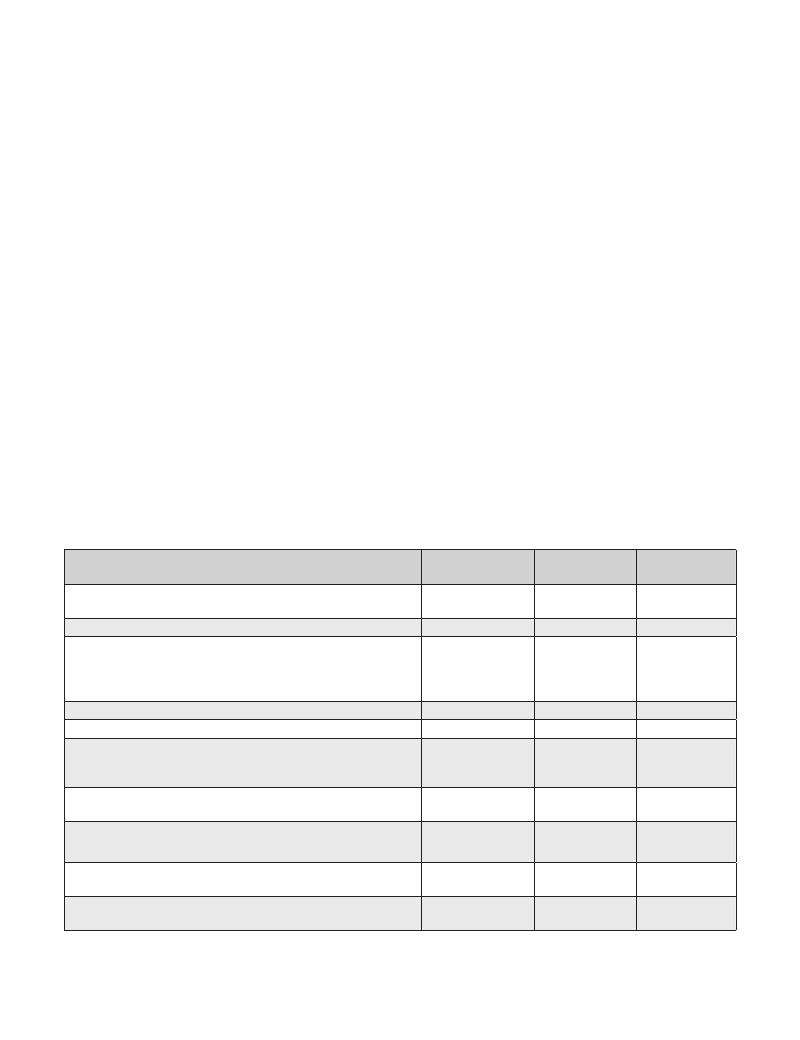
DJIBOUTI / 161
3. INTEGRATION OF Disaster risk management IN DEVELOPMENT STRATEGIES
To address its social and economic challenges, in January 2007 the Government of Djibouti launched the
“Initiative Nationale pour le Développement Social (INDS)”, replacing the Poverty Reduction Strategy
Paper (PRSP). The INDS will promote access to basic social services and improve the quality and effectiveness of
delivery. In terms of DRR, INDS aims to streamline DRR in priority sectors by strengthening DRM institutional capacity,
risk mitigation and preparedness.
The current Country Assistance Strategy (CAS) for the Republic of Djibouti (FY 2009-2012) recognizes
natural disasters as one of the main causes of poverty. Djibouti CAS proposes to tackle disaster vulnerability by
integrating DRR into sectoral activities, increasing investment in the water sector in order to retain water for agriculture,
to prevent floods, and to recharge water aquifers. This is very relevant given that most disasters in Djibouti are of water
born nature.
UNDAF 2008-2012 emphasized Djibouti’s risks exposure to natural disaster and proposes to strengthen
national institutions responsible for poverty reduction, with a special focus on DRR, and epidemics. More
concretely UNDAF envisaged a framework for a better management of natural resources. This framework will include the
establishment of: (i) an integrated environmental safeguarding strategy; (ii) a framework for fighting desertification; (iii)
an early warning system; and (iv) and the active involvement of rural communities in the prevention and management of
natural disaster activities.
4. KEY DONOR ENGAGEMENTS
Table 4. Key Donors and International Financial Institutions Engagement
Ongoing Projects
Developed Countries Fund (LDCF) project grant
Flood Emergency Rehabilitation Project: Establish SEGRC
Preparatory activities and methodology to develop a comprehensive
system for risk assessment
Climate modeling and risk management (Multi country project)
Urban Poverty Reduction Program
DRM Strategy
Drought Prevention Water Management
Ensure that a national multi-sector platform for DRR is operational
UN, Donor, IFI
Cooperation
Global Environment
Facility (GEF)
World Bank
Global Facility for
Disaster Reduction
and Recovery
(GFDRR)
GFDRR
World Bank
United Nations
Development
Program (UNDP)
European
Commission (EC)
World Bank, UNDP,
UNEP, EC
Indicative
Budget (US$)
10,500,000
6,500,000
70,000
43,900
3,000,000
50,000
769,000
800,000
National Adaptation Program of Action (NAPA)
Climate Change Risks and Adaptation Options for the Republic of
Djibouti (Final Report)
MHUE, UNEP,
GEF
World Bank, BNPP
200,000
60,000
HFA Activity
Area(s)
HFA 2-4-5
HFA 5
HFA 1-2
HFA 1-5
HFA 1
HFA 1
HFA 1-2-3
HFA 1-2-4
HFA 2-3-4
HFA1-2-3-4

162 / Disaster Risk Management PROGRAMS FOR PRIORITY COUNTRIES MIDDLE EAST & NORTH AFRICA
5.global facility for disaster reduction and recovery (gfdrr):
action plan
Although Djibouti has made considerable progress in DRR, significant challenges remain unaddressed.
Understanding of natural hazards remains limited, and natural disasters are predominantly dealt in an
ex-post manner. The following strategic actions are necessary in order to streamline DRR: (i) increase technical
capacity, awareness and equipment of national DRM institutions; and (ii) mainstream DRR in priority sectors. Given the
limited capacity in the country, the task team proposes that the second phase of the technical assistance be focused on
improving risk assessment and monitoring capacity, targeting the following organizations: CERD, SEGRC, the University
of Djibouti, MHUEAT, and the METEO.
The task team proposes country execution for this activity in order to ensure the highest transfer of DRM
capacity to Djibouti agencies. However, in order to ensure effective project implementation, key national agencies
seek to establish an implementation unit which will be housed in CERD and will be responsible for activity coordination,
financial and administrative management. By working with the five identified institutions through a structured technical
assistance, we will gain further coordination and we will provide support to data analysis, which is indispensable for
developing prevention activities.
MNA DRM team will seek GFDRR financial assistance to continue strengthening Djibouti risk assessment
and monitoring capacity. The second phase of GFDRR Track II activity aims to develop Djibouti’s comprehensive
system for risk assessment. This activity will further strengthen CERD, SEGRC and MHUEAT DRM capacity, and reinforce
stakeholders understanding of the country’s exposure to natural disasters and its social, economic, environmental and
physical vulnerabilities. The TORs for the Comprehensive Risk Assessment activity in Djibouti are inspired by The Central
American Probabilistic Risk Assessment (CAPRA). CAPRA seeks to develop appropriate standards and methodologies
for probabilistic risk evaluation, and incorporates state of the art models into a geographic information platform.
Strengthen SEGRC DRM capacity. SEGRC has limited staff, consisting of three staff members: the executive secretary
and two administrative assistants. Under the second phase of GFDRR work, the task team plans to strengthen SEGRC
DRR capacity by developing an activation and crisis management protocol, as well as broadening the development of
disaster simulations at national and community levels.
In terms of climate change adaptation, MNA DRM team aims to strengthen MHUEAT, as well as National
and Local Government capacity to understand and adapt to climate change. The climate adaptation activities
options under consideration seek to build on existing efforts such as the NAPA, and the 2008 World Bank Climate
Change Risk Adaptation Options for the Republic of Djibouti. This activity will consist of a coastal climate adaptation
pilot project, which will seek to reduce the adverse effects of climate change through raising climate risk awareness, and
by increasing the understanding of available climate adaptation options.
Broaden DRR training programs for country stakeholders through the involvement of the University of
Djibouti, public schools, and key national think tanks. This activity aims to develop DRR training modules and
a master’s degree for students as well as specialized training for teachers. This component will ensure that university
curricula, education material and relevant trainings include DRR and recovery concepts and practices. By incorporating
disaster risk-related issues into existing university curricula, the DRR team contributes to continuous learning and
sustainability of the program, as well as reinforces DRR knowledge in the country.
Enhance the Division of Meteorology knowledge of meteorological risks, and quality of data access in order
to strengthen the METEO climatic risk analysis. This will be obtained by establishing between 7 and 15 automatic
weather stations throughout the seven climatic regions of Djibouti and by providing specialized training to staff.

DJIBOUTI / 163
Djibouti is looking to engage in the GFDRR South-South Cooperation Program. South-South Cooperation will
expand partnership with disaster-prone countries facing similar challenges, by tapping into technical know-how, sharing
experiences and lessons learned of governments, institutions, and NGOs, leading to efficient solutions to challenging
disaster risk and climate change problems.
Table 5. Planned DRM Activities
Indicative Program for GFDRR Funding
(engagement areas being considered for
GFDRR funding)
Development of a comprehensive risk assessment
platform (CARAD), within CERD and provide
technical assistance and equipment to use and
maintain the platform
Implementing
Agency
CERD
Indicative Budget
Year
(US$)
1.000.000
2009-2012
HFA Activity
Area(s)
HFA 1-2-3
Establish an implementation unit to facilitate project
implementation
CERD
60,000
2019-2011
HFA 1-2-4
Strengthening institutional DRM and DRR capacities
of national organizations
1,538,000
2009-2012
HFA 1-2-3
Elaboration and activation of alert and shelter
protocols, and development of a simulation program
SEGRC, Regional
DRM Committees
300,000
2010-2011
HFA 1-3-5
Develop a climate adaptation pilot in the northern
coast of Djibouti
MHUEAT
350,000
2009-2011
HFA 3-4
Develop DRM module training and master for
professional and students
University of
Djibouti, University
of Montpellier, WB
480,000
2009-2012
HFA 1-3
Total indicative budget requestedUS$3,728,000
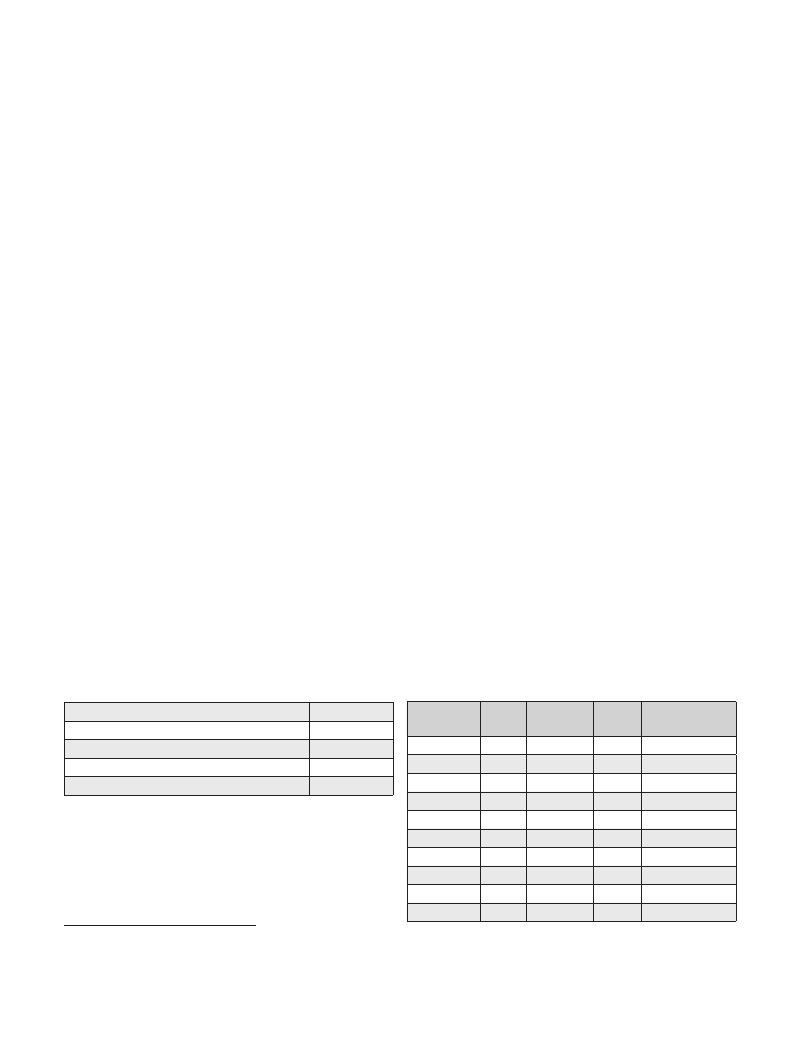
164 / Disaster Risk Management PROGRAMS FOR PRIORITY COUNTRIES MIDDLE EAST & NORTH AFRICA
REPUBLIC OF YEMEN
The Yemen Country Note is based on vigorous consultations undertaken with various governmental agencies, the UN
agencies, and the World Bank country office staff to understand the current organizational structure for managing disasters
in Yemen and identify possible areas of support for strengthening Disaster Risk Management (DRM). Major governmental
agencies consulted include the ministries of Planning and International Cooperation, Oil and Minerals, Communications
and Information Technology, Transport, Public Works and Highways, Civil Defense, Water and Environment, Agriculture and
Irrigation, Health, and Local Administration. The findings of the consultations were presented to a cabinet level meeting,
held on April 23rd 2009, chaired by the Deputy Prime Minister, Ministry of Planning and International Cooperation. During
the meeting, the Government of Yemen provided guidance and identified priority areas of interventions for DRM.
1. DISASTER RISK PROFILE
The Republic of Yemen, covering an area of nearly 528,000 km² on the Arabian Peninsula near the Horn of Africa,
is home to a population of about 22 million that is growing at over 3 percent per annum. Yemen’s urban population,
currently about 27 percent of the total, has a much faster growth rate than the overall population growth rate, and is
growing at about 5 percent per annum. The country’s topography of rugged mountains, highlands, deserts, and coastal
plains, coupled with arid weather conditions, render Yemen highly susceptible to desertification and floods, and make it
a disaster prone country that has experienced at least one disaster per year over the last two decades.
Floods are the most recurrent natural disaster in Yemen, followed by landslides and earthquakes. The most recent
major floods occurred in 1996, 2000, and 2008. While regular flooding has traditionally been beneficial for agricultural
practices in Yemen, when flooding occurs in areas that are densely populated, there are significant economic damages
that occur due to loss of lives, damage to livelihoods, property and infrastructure. With an estimated per capita GDP of
US $870 and therefore limited financial resources, Yemen can ill afford the losses it currently sustains from recurrent
disasters. Table 1 provides an overview of the natural disasters reported in Yemen over the last 28 years, while Table 2
provides estimates of loss from the ten most major disasters over the last twenty years.
Table 1. Natural disasters reported from 1980-20081
Table 2. Top 10 natural disasters reported (1988-2008)2
No of events
No of people killed
No of people affected
Economic Damage (US$ X 1,000)
Economic Damage per year (US$ X 1,000)
27
908
1,064,592
2,849,500
101,767
Disaster
Flood
Earthquake
Flood
Flood
Flood
Flood
Flood
Flood
Flood
Drought
Date
2008
1991
1991
1993
1999
1996
1998
2006
2007
1988
Affected
700,000
40,039
30,000
21,500
19,750
5,000
3,000
2,000
2,000
NA
1 Provention Web and WB DLNA: October 2008 Tropical Storms and Floods, Republic of Yemen 2009.
2Ibid.
Killed
73
70
65
50
36
33
32
31
28
NA
Cost
(US$ X 1000)
1,638,000
10,000
1,500
NA
NA
NA
NA
NA
NA
NA
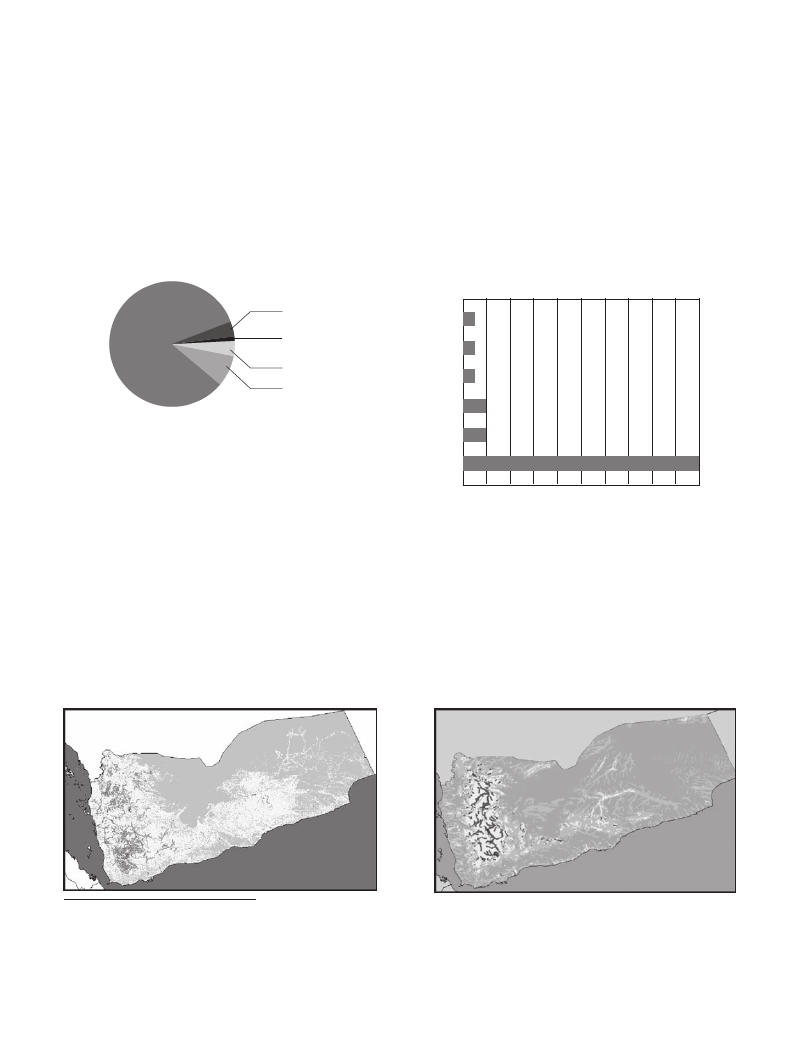
REPUBLIC OF yemen / 165
Floods are the major natural disaster in Yemen
Loss of human life has been the greatest from floods and the economic damage from the 2008 flood was very severe
(Figures 1 and 2). Floods occur almost every year in Yemen with major floods reported in 1991, 1993, 1996, 1999,
2000, 2006, and 2008. The 2008 flood affected two governorates in Yemen, which received 90 mm of rainfall in 30
hours, almost eighteen times greater than the normal rainfall of 5mm to 6mm. The rain fell over a catchment area of 2
million hectares, and the nearly 2 billion cubic meters of water caused severe flash floods in the valley, with water surges
exceeding 10 meters in some areas.
Figure 1. Percentage of reported people killed
by disaster type
Figure 2. Natural disaster occurrences reported
0
4
8
12
16
20
Flood 83%
Epidemic 4%
Erthquake* 1
Earthquake* 1% Mass mov. wet 1
Storm 4%
Mass mov. wet 8%
Volcano 1
Epidemic 2
Storm 2
Flood
20
Source: WB DLNA: October 2008 Tropical Storms and Floods, Hadramout and Al
Mahra, Republic of Yemen
The last flood was caused by a level-three tropical storm that affected the two eastern Governorates of Al-Mahara
and Hadramout3. 73 people were killed, over 25,000 people were displaced, and about half the population in these
Governorates lost their livelihood. Consequently, the poverty rate in these two Governorates is expected to increase
from 28 to 51 percent, and the national poverty rate is expected to go up by 1.1 percent. The overall damage and loss
assessment from this flood was estimated to be about US$1,638 million, or about 2.8% of Yemen’s GDP4.
Spatial distribution of floods, earthquakes, and landslides in Yemen
Floods: The areas that are at risk from flooding are largely the densely populated areas of western Yemen, that include
governorates of Sada’a, Sana’a, Dhamar, Ibb, Taiz, Lahz, Mareb, and Abyan (Figures 3 and 4)5. In central and eastern
Figure 3. Population Density
Figure 4. Flood Hazard
3 Yemen is divided into 19 governorates
4Source: WB DLNA: October 2008 Tropical Storms and Floods, Hadramout and Al Mahra, Republic of Yemen
5 Preliminary risk maps from WHO e-atlas of disaster risk for Eastern Mediterranean Region, 2008; population density map from LandScanTM Global
Population Database (2006). Oak Ridge National Laboratory. Available at http://www.ornl.gov/landscan/.
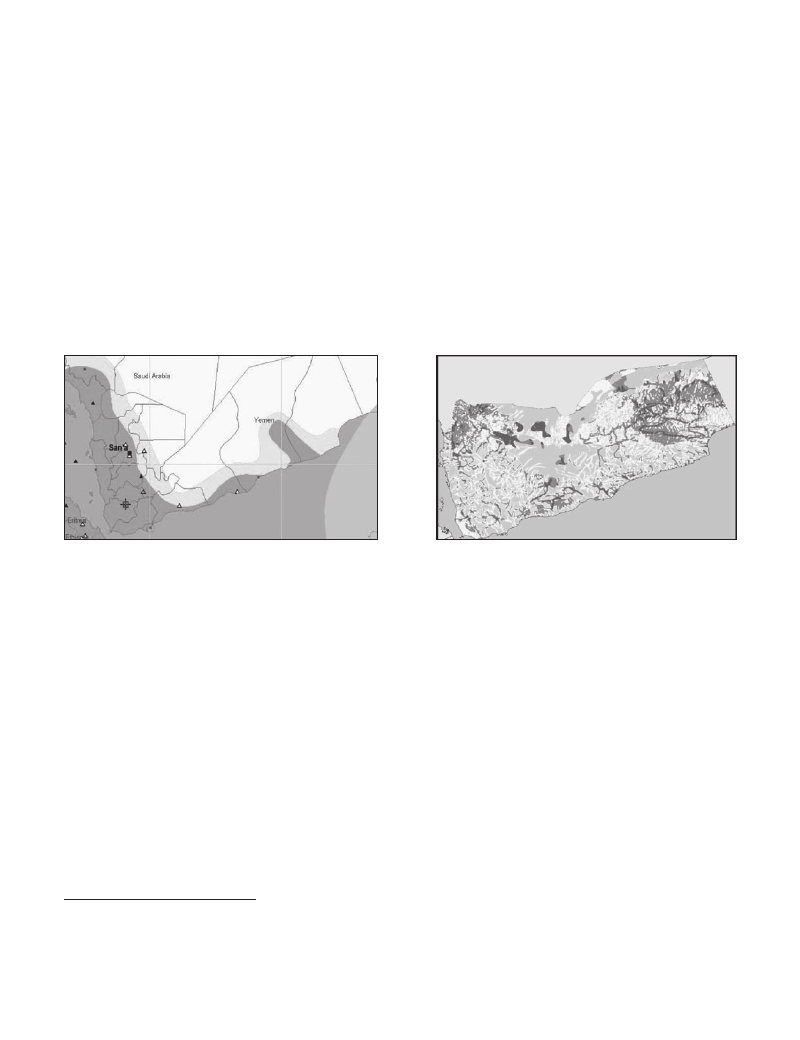
166 / Disaster Risk Management PROGRAMS FOR PRIORITY COUNTRIES MIDDLE EAST & NORTH AFRICA
Yemen, the Hadramout Valley and the southern coastline of Yemen are also at risk from flooding. Floods in Yemen mostly
result from high-intensity rainfall, and sometimes from coastal storm surges and tsunamis.
Earthquakes: Yemen is located in the seismically active zone between the Arabian and African tectonic plates. The
western and southern portions of Yemen (Figure 5)6 around the rifts of the Red Sea and Gulf of Aden, are at risk from
earthquakes. This is where the Arabian and African plates are pulling apart.
Landslides: Unstable geological conditions, including the development of extensive cracks due to natural aging and
extreme weather conditions, exist in several mountainous regions of Yemen such as Al-Dhafeer Al Gayah and Al-Semah.
In such regions, heavy rains, storms, earthquakes, or volcanic eruptions, as well as mining and inappropriately sited
infrastructure, can combine to trigger landslides. Since the terrain of Yemen is mostly mountainous, the entire country is
at risk of landslides (Figure 6)7.
Figure 5. Seismic Hazard
Figure 6. Landslide Hazard
Three main factors that exacerbate Yemen’s vulnerability to natural disasters
Climate change is expected to increase exposure to drought and flash floods, leading to a trend: While there is no
international consensus on the impact of climate change on precipitation levels in Yemen, Global Climate Models (GCM)
predict a three to four degree centigrade increase in mean temperatures8 by the 21st century. Climate change induced
impacts may include a rise in sea levels, and increased exposure to droughts and flash floods in the country.
Depletion of water resources: The availability of water in Yemen stands at 150 cubic meters per capita, and is well
below the threshold of 1000 cubic meters per capita established by the United Nations for classifying countries as water
scarce countries. In fact, the availability of water in Yemen is much lower than the average figure for the Middle East and
North Africa Region, which is about 1250 cubic meter per capita. This limited availability of water is further exacerbated
by three factors: (i) seasonal and temporal changes in the pattern of rainfall that Yemen receives; (ii) both expansion of
the area under cultivation as well as water intensive agricultural production; and (iii) higher ground water extraction and
reduced ground aquifer recharge as a result of increased urbanization which in turn has resulted in an expansion in built-
up areas. The depletion of water resources is increasing aridity, which could lead to reduced economic prospects in the
future, thereby making Yemen more vulnerable to natural disasters.
6Source: http://mrnathan.munichre.com.
7 Preliminary risk maps WHO e-atlas of disaster risk for Eastern Mediterranean Region, 2008
8 Values are for changes in mean temperature between 20th century (1961-1990) to 21st century (2070-2099) as projected by nine climate-change
models and reviewed by IPCC Third Assessment Report (2001).

REPUBLIC OF yemen / 167
Ineffective urban planning and development in hazard prone areas: Ineffective and weak land-use planning coupled with
a lack of building codes not specific to withstanding the impacts of natural disasters, has exposed both urban and rural
households in Yemen to greater risk of losses. Much of the expansion of built-up areas in Yemen’s cities is taking place in
unplanned settlements, located predominantly in environmentally sensitive zones where land values tend to be low, e.g. low
lying flood prone areas, steep hillsides, etc. Development in such zones often blocks existing natural drainage channels,
rendering them much more prone to damage when these areas get flooded due to inadequate drainage. In rural areas
too, as observed in the Hadramout valley, traditional mud structures on the edge of river beds are starting to give way to
concrete structures often built inside river beds, which impede the natural flow of water. Such man-made obstructions
obstruct to the natural flow of rain water, which can lead to floods and increase Yemen’s vulnerability to disasters.
Moving from a reactive to a preventive approach to disaster management in Yemen
Yemen’s approach to managing disasters is currently reactive, focused on post disaster relief and recovery activities.
Post disaster relief activities consist of emergency relief, and recovery & reconstruction programs. Such programs involve
the army, international relief agencies, various branches of technical ministries, and utility agencies at Governorate level.
Recovery and reconstruction activities are currently financed through specialized Recovery and Reconstruction Funds
(e.g. the recently established Fund for Recovery and Reconstruction in Hadramout and Al Mahara). The branches of
line ministries, other specialized agencies such as the Public Works Program, the Social Fund, and the Social Welfare
Fund contribute to recovery and reconstruction activities in keeping with their specific institutional mandates and
implementation capabilities.
The concept of disaster risk management (DRM) is new to the country. As a result of a current focus on post-disaster
relief, Yemen has relied largely on central government agencies to mobilize for relief activities. Going forward, however,
as Yemen’s commitment to proactive risk management is translated into re-mapping of administrative responsibilities of
central agencies and the forging of essential partnerships horizontally between and amongst central agencies, there will
be a need to establish effective vertical linkages between central and sub-national levels of government that penetrate
effectively down to the level of communities.
Donors have begun supporting the rationalization and clarification of roles and responsibilities for various central agencies
that are either already contributing to, or have the capability to contribute to the design and development of a cohesive,
coordinated, and efficient program for proactive risk management. While efforts to improve and enhance the horizontal
linkages between central level agencies is an excellent start, there is a long way to go before there is an established disaster
risk management program with a specific focus on (i) the prevention of disaster, (ii) the mitigation of the impacts of a
disaster, and (iii) and the preparedness needed to deal with disasters when they occur. The planning and execution of such
a program will require functional linkages, both horizontally and vertically, between national and sub-national government
agencies, local communities, international development agencies, as well as non-governmental organizations.

168 / Disaster Risk Management PROGRAMS FOR PRIORITY COUNTRIES MIDDLE EAST & NORTH AFRICA
2. Progress towards Hyogo Framework for Action
Yemen is a signatory to the Hyogo Framework for Action9 and in keeping with the five priority areas for action, Yemen
has committed to:
1. Ensuring that the reduction of risks from disasters is a national and a local priority with a strong institutional
basis for implementation;
2. Identification, assessment, and monitoring of risks from disasters, and enhancing its early warning system;
3. Use of knowledge, innovation, and education to build a culture of safety and resilience at all levels.
4. Reduction in the factors that make Yemen more vulnerable to disasters; and
5. Strengthening disaster preparedness for effective responses at all levels.
The next section describes the state of progress that Yemen has made in the above mentioned five Hyogo Framework
priority action areas, along with the gaps and possible next steps.
HFA Priority # 1: Ensure that disaster risk reduction is a national and a local priority with a
strong institutional basis for implementation
Yemen has accorded high priority to disaster risk reduction, and has established two focal agencies to take
the lead in this area. These are:
(i) The National Disaster Management Unit (NDMU), housed within the Civil Defense General Directorate
(CDGD) under the Ministry of Interior (MoI); and
(ii) The Directorate of Environmental Emergencies and Disasters (DEE) under the Ministry of Water and
Environment (MWE), established in 2004 through a ministerial decree.
The Unit in the Civil Defense Directorate has the mandate to focus on disaster management and response in Yemen,
while the Department of Environmental Emergencies under the Ministry of Water is responsible for reporting on progress
in Yemen on the five priority areas of action outlined in the Hyogo Framework for Action, to the UN International Strategy
for Disaster Risk Reduction (UNISDR) – UNISDR being the agency that is responsible for monitoring progress on the
Hyogo Framework. Although the DEE has represented Yemen at several international forums, it has limited resources.
The Unit in the Civil Defense Directorate, on the other hand, is better resourced as it has been responsible for providing
emergency relief after disasters.
Yemen has established an institutional basis for implementation of actions related to disaster risk
reduction. There is a legal foundation for the creation of an organizational structure for managing the risks from
disasters, and Yemen has designated its Ministry of Interior to lead the structure. The 1997 Civil Defense Law defines
the responsibilities of the Civil Defense General Directorate with respect to for disaster management10. Subsequently,
the Executive Bylaw and the Republican Decree (N°386) became the basis for the Supreme Council of Civil Defense.
The Council is responsible for providing policy direction, approving plans for disaster preparedness and response,
and defining the tasks and responsibilities of each ministry/agency, actors and stakeholders before and during any
9 The Hyogo Framework for Action (HFA) 2005-2015: Building the Resilience of Nations and Communities to Disasters was developed during
2005 World Conference on Disaster reduction in Kobe, Japan. The HFA aims to substantially reduce disaster losses, in lives and in the social,
economic and environmental assets of communities and countries by effectively integrating, in a coherent manner, disaster risk considerations into
sustainable development policies, planning, programming, and financing at all levels of government.
10 Protecting the population from natural and general disasters and securing methods of safety and communication during peace and war (source
Law N° (24) of 1997 on Civil Defense).

REPUBLIC OF yemen / 169
emergency. It is chaired by the Minister of Interior, and includes key ministries as members11. However, when the floods
occurred in 2008, the Supreme Council was chaired by the Prime Minister himself on two occasions.
There is progress on the identification, assessment, and monitoring of risks from disasters, and the
establishment of an early warning system is in its infancy. The UN agencies and the Government of Norway
have provided support to initiate disaster risk management related activities in Yemen. They supported the Disaster
Preparedness, Management and Recovery project in 2003, which established under the Civil Defense General Directorate
the National Disaster Management Unit. However, the Unit needs technical, and financial strengthening, in addition to an
improved internal re-organization that enables it to develop the necessary vertical mechanisms for coordination with sub-
national entities and communities (which will also need strengthening). In order to develop an effective, comprehensive
and integrated disaster risk management system, the Civil Defense General Directorate was accorded the status of
an authority, with greater managerial and financial autonomy. However, it still functions as a ministerial department,
and its budget is approved by the Ministry of Interior. The National Disaster Management Unit has a National Disaster
Management Team that consists of focal staff from various ministries. It developed a National Disaster Management Plan
in 2006. This Plan, in addition to proposed initiatives for capacity building, GIS mapping, and rescue operations, includes
a checklist of activities to be undertaken in the event of a disaster, as well as a list of key contacts. This Plan is awaiting
approval by Yemen’s Cabinet.
There is a need to further strengthen the organizational structure for managing the risks from disasters, streamline agency
functions, and improve functional coordination and information sharing for an early warning system. Other prominent
agencies that play an important role in disaster risk management are the Public Works Program, the Geological Survey
and Mineral Resources Board, the National Water Resources Agency, and the Vulnerability Assessment Mapping Unit
under Ministry of Health. These agencies are active in risk assessment, early warning, and post disaster reconstruction &
recovery according to their specific institutional mandate and implementation capabilities. Figure 7 provides an institutional
map of agencies that are active within the different categories of activities that together constitute a comprehensive
disaster risk management program, and their relationship with the National Disaster Management Unit.
Yemen has to make rapid progress towards making disaster risk management a priority at the local
level. Sub national governments, their agencies, and local communities need to be integral to the planning and execution
of disaster risk management activities, so that there is more ownership which can lead to more effective implementation.
There is already progress towards decentralization in Yemen, and Yemen’s decentralization policy12 has mandated local
governments with disaster risk management and reduction. The legal foundation for developing and implementing
disaster risk management programs at the local level already exists.
11 The ministries currently and proposed to be represented are: Public Health and Population, Electricity and Energy, Commerce and Industry, Com-
munications and Information Technology, Transport, Finance, Oil and Minerals, Education, Justice, Public Works and Highways, Deputy General
Staff for Training Affairs and the Chairman of Civil Defense Authority, Planning and International Cooperation, High Education and Scientific Re-
search, Foreign Affairs, Local Administration, Information, Youth and Sport as well as the Chairman of the NGO Yemeni Red Crescent and Chair-
man of Federation of Commerce and Industry
12 The Local Authorities Law No. 4 of 2000
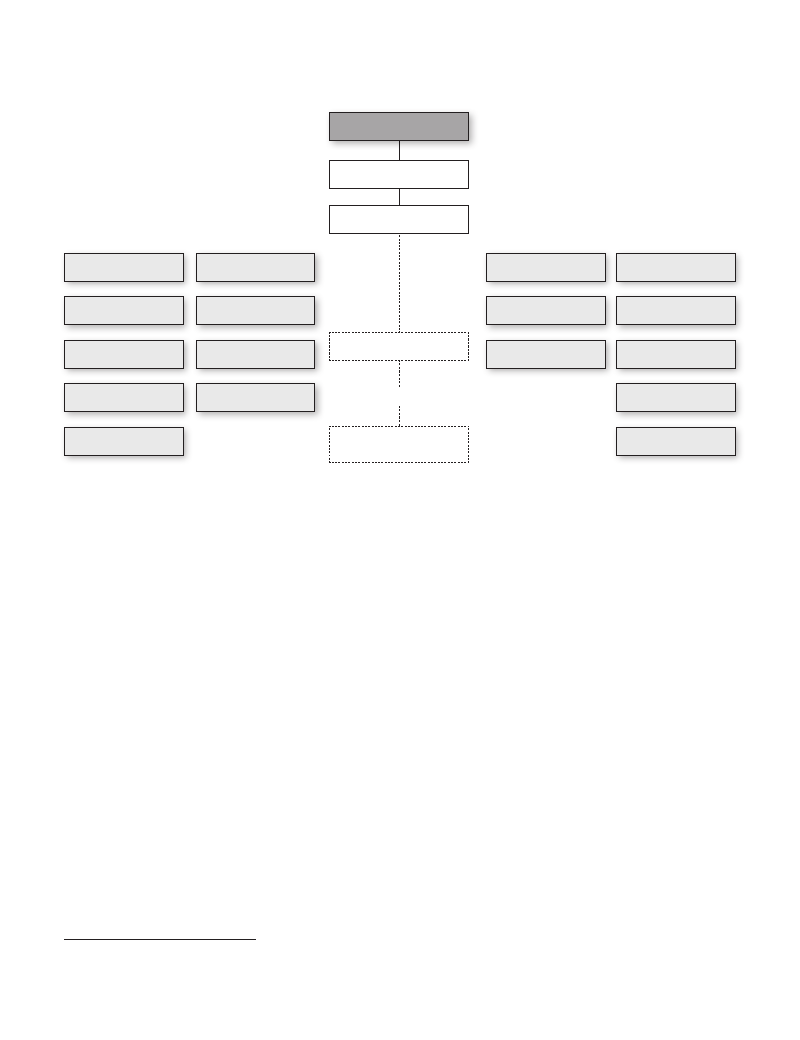
170 / Disaster Risk Management PROGRAMS FOR PRIORITY COUNTRIES MIDDLE EAST & NORTH AFRICA
Figure 7. Organizational Map of Government agencies for disaster risk management in Yemen
Ministry of Interior
Supreme Council
Risk Assessment
NDMU
Risk Reduction
Land Survey
& Urban Planning
Geological Board
Public Works
RS and GIS Center
Agriculture
NDMU
Governorate level
Early Warning
CAMA-
Transportation
NWRA- Water &
Environment
Awareness
Social Affairs
Education
Earthquake Center
Health
Earthquake Center
Water & Environment
Local Council
Housing
Health- GIS Center
EWS and Community
Preparedness Cell
NGOs
HFA Priority # 2: Identify, assess, and monitor disaster risks, and enhance early warning systems
Implementation of initiatives that identify disaster risks is well underway, although a formal early warning
system does not so far exist. A National Probabilistic Risk Assessment of Yemen, as well as detailed risk assessment
for the Governorate/s of Hadramout & Al-Mahara governorate, and Sana’a are underway13. These studies will provide a
risk atlas for various kinds of hazards in early 2010, and be the basis for planning and execution of various initiatives for
disaster risk management in the country. The atlas will enable informed political debate on difficult choices that Yemen
may have to make for both planning and retrofitting sectoral infrastructure in various spatial locations, and help the
country develop a strategy that can be supported by donors, including possibly through additional IDA operations.
The identification of risks and their mapping is underway in Yemen. Several agencies are preparing digital
risk maps of Yemen (Table 3). There is, however, no mechanism to either ensure compatibility between the data formats
being developed by the agencies, or to avoid duplication of functions for optimizing the use of resources. There is also no
institutionalized mechanism that links these agencies which are the critical suppliers of critical data, with the sub-national
agencies and communities that are the users of this data. Unless such coordination and integrative mechanisms are in
place, the design and implementation of disaster risk management activities will be ineffective and yield sub-optimal
results.
13 $700,000 study under TF #091825 and TF#091190
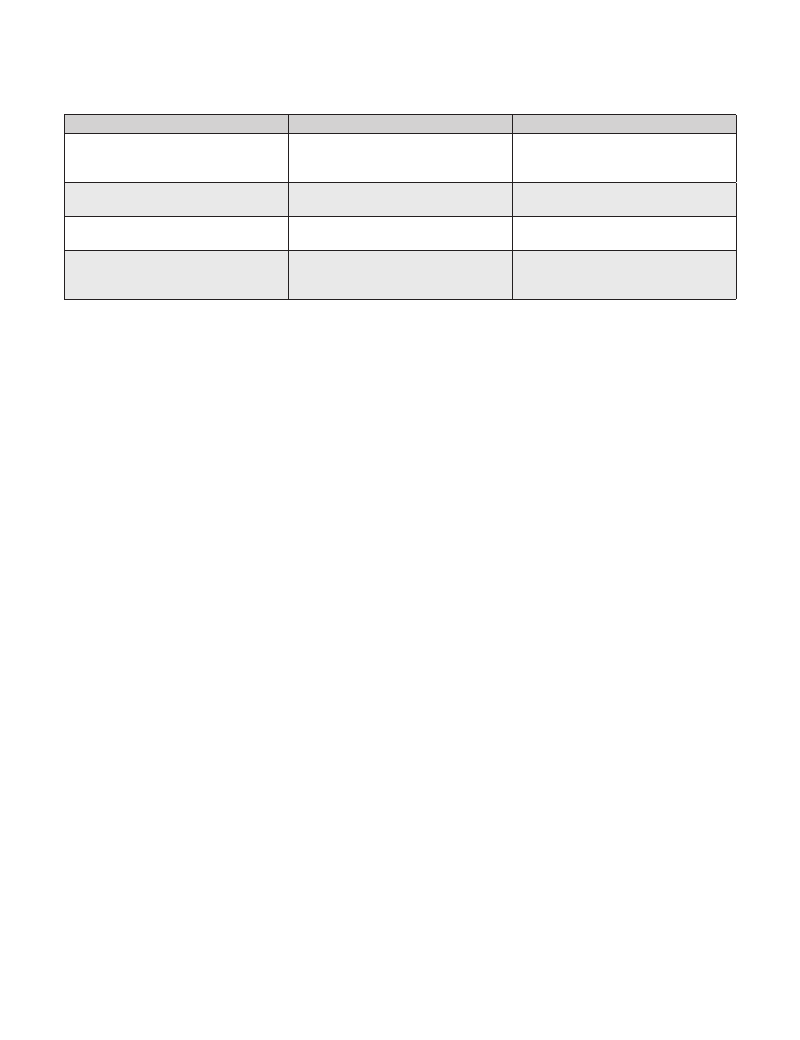
REPUBLIC OF yemen / 171
Table 3: Agencies active in risk mapping
Agencies
Geological Survey Board Ministry of Oil
and Minerals
Relation to Risk Assessment
Landslide and earthquake risk mapping
Remote Sensing and GIS Center
Min. Telecommunications
GIS cell in NDMU
Ministry of Interior
Health Sector Mapping, Ministry of Health
National depository of base maps for
Yemen and satellite imagery
Preparing maps of hospitals and
emergency shelters
Health vulnerability assessment maps
Comments
Good infrastructure, over 15 years
experience. Need consistent budget and
capacity building
Good infrastructure, 4 years experience
Location within NDMU, just started
working with UNDP staff
Good infrastructure, developing health
facility maps with WHO guidance and
support
Establishing a formalized early warning system in Yemen will require functional linkages between
agencies as well as substantial support to procure modern technology. A number of agencies are involved
in collecting weather, seismic, and hydrological data useful for early warning system. These include the National
Seismological Observatory Center, the Civil Aviation and Meteorology Authority, the Maritime Affairs Authority, the
Desert Locust Monitoring and Control Center, the General Directorate of Animal Resources, Yemen Red Crescent, UN
agencies, and local/international organizations. The National Water Resources Agency is developing a proposal for early
warning system at river basin levels both for warning communities about hazards, as well as for optimal management of
flood control structures.
The Government of Yemen has allocated funds for the development of a formal early warning system.
Although there is no formal early warning system at the national or local level, the Government has allocated US$7.5
million to the Civil Defense General Directorate for the development of emergency control rooms in fifteen governorates.
An emergency room, possibly for an early warning system and rescue operations, has become partially operational in
Aden. A control room established in Sana’a is not yet operational due to financial and technical constraints. There are
plans to establish emergency rooms are in Mukalla, Taiz, and Hodeida.
An initiative to strengthen the capacity of the National Disaster Management Unit to enable it to deliver
early warnings to coastal communities and enhance their preparedness is underway. This initiative,
known as the Disaster Preparedness, Management, and Recovery Project is being supported by the UNDP. An initial
assessment report from this project highlights a list of priority actions and priority intervention locations which are Al-
Mahara, Hadramout, Aden, Shabwa, Abyan, Lahz, Taiz, Hodeidah, and Hajja. It also lists the key players that need to be
involved in these areas. The project has supported community awareness programs in two pilot areas - Al Mahara and
Socotra Island. The National Disaster Management Unit may partner with Oman to share early warnings about tsunamis
with coastal communities.
HFA Priority # 3: Use knowledge, innovation, and education to build a culture of safety and re-
silience at all levels
The Government of Yemen is extremely receptive to integrating knowledge and innovation into its disaster
management program. The recently completed 2008 Damage and Loss Needs Assessment was well received by the
Cabinet of Yemen and is being widely disseminated within the country. Similarly, the Government of Yemen is seeking
to collaborate actively with Gulf Cooperation Countries in developing a regional mechanism in areas related to disaster
mitigation like early warning systems and post-disaster response.
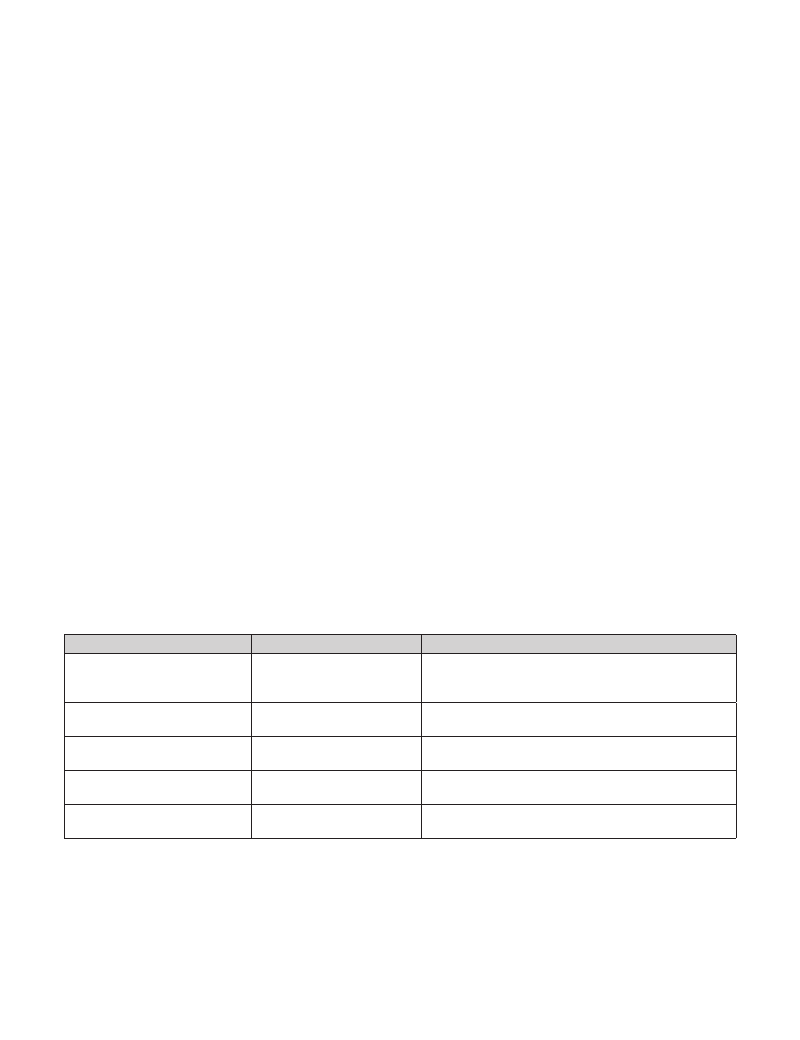
172 / Disaster Risk Management PROGRAMS FOR PRIORITY COUNTRIES MIDDLE EAST & NORTH AFRICA
Initial educational efforts to start building a culture of resilience is underway in Yemen. A national strategy
for awareness, targeting school children specifically and the public more generally, is being developed by the National
Disaster Management Unit. The literature that is being developed for the awareness campaign includes advice on ‘what
to do during emergency’. Also included are interactive games for children.
Much progress remains to be made on building a culture of resilience at all levels. So far there exist no
formal institutions or programs that can deliver training on adapting to climate change at a scale that is needed to
build resilience at all levels. The National Disaster Management Unit is trying to include the concept of disaster risk
management as well as the importance of environmental protection in reducing risks from disasters, in the curriculum
of schools. The Ministry of Water and Environment, the Ministry of Health, and the Ministry of Social Welfare are also
developing communication material that can effectively reach out to the larger public and inform on the appropriate
response needed during a disaster or an emergency. With multiple agencies developing communication strategies and
tools, efforts are needed to ensure adequate coordination and avoid duplication so that there is optimum impact on
building a culture of resilience at all levels.
HFA Priority # 4: Reduce the underlying risk factors
Sectoral ministries are working towards reducing the risks posed by the three main factors that exacerbate
Yemen’s vulnerability to natural disasters: (i) climate change, (ii) depletion of water resources, and (iii)
ineffective land use planning that are contributing to development in hazard prone areas. Table 4 maps the
various national and sub-national entites that have a crucial role in limiting risks from the three underlying factors. There
is a need to develop clear guidelines for mainstreaming disaster risk reduction into the sectoral planning and investment
cycles of these ministries. Discussions amongst policy makers are underway to include in the institutional mandates of
these agencies, an explicit focus on reducing the risks from disasters, so that appropriate initiatives can be mainstreamed
and supported. These agencies have already embarked on some steps to reduce the risks from disasters, for example,
the incorporation of flood plain protection in strategic land use planning, the development of appropriate building codes,
and environmental impact assessment procedures.
Table 4. Agencies active in risk reduction
Agency
Governorates/Director of Districts
General Authority on Land Survey
and Urban Planning
Ministry of Public Works
Ministry of Agriculture and
Irrigation
Ministry of Water and Environment
Relation to Risk Reduction
Implementation and
Enforcement
Master Plans in accordance
with flood plain location
Building codes, permits, design
and construction
Flood protection works, Dikes/
Dams
Environmental Impact
Assessment (EIA)
Comments
With decentralization, the role of these agencies is crucial
for the development of strategic land-use planning and their
enforcement.
Has advisory role, need actual implementation at local level
Needs greater implementation at local level
Ministry would like to focus in the areas of desertification
and locust storms
By law all infrastructure projects should follow EIA to
ensure no alteration in hazard prone areas
Implementation of specific measures that impact the underlying risk factors will not be possible without
significant ownership of necessary actions at the community level. At present disaster risk reduction efforts
in Yemen are far from being coherently organized vertically. Without decentralization, there will be little empowerment
of sub national levels of government and their communities to develop an effective and balanced program to reduce

REPUBLIC OF yemen / 173
risks. Effective disaster risk management strategies will be difficult to develop, and the implementation of policies and
programs developed centrally will be difficult and inefficient.
HFA Priority # 5: Strengthen disaster preparedness for effective response at all levels
Disaster preparedness for effective response at all levels has not as yet received attention in Yemen,
as the planning focus has been on disaster relief and recovery operations. Although there is no institutional
mechanism to ensure adequate preparedness levels for natural disasters and an emergency response to them, as stated
earlier, the National Disaster Management Unit in the Ministry of Interior has developed a National Disaster Management
Plan. This plan spells out in detail, the role of key line ministries before, during, and in the post disaster emergency
phase. It provides checklists for essential activities to be executed in the different phases of a disaster, as well as a list
of essential contacts. This plan, however, is yet to be approved by Yemen’s cabinet.
In the absence of attention to the pre-disaster planning, the only central government practice that exists
is for an area to be declared a “Disaster Affected Area” before resources can be mobilized. In the event of a
disaster, the President of Yemen declares the affected areas as “Disaster Affected Areas”. Only after this declaration can
relief funds are allocated, with relief efforts coordinated through a high level inter-ministerial committee. Such a committee
was organized under the Prime Minister’s Office after 2008 floods to coordinate national and international relief efforts. This
committee coordinates the efforts of the army, international relief agencies, the branches of technical ministries, and utility
agencies at governorate level, which are the main actors during the disaster relief phase of disaster operations.
Immediate recovery and reconstruction activities, i.e. post emergency relief, are coordinated at the governorate level by
branches of line ministries (chief being Ministry of Public Works) and local NGOs. Long-term recovery and reconstruction
activities are mostly coordinated by specialized Recovery and Reconstruction Funds (e.g. recently established Fund
for Recovery and Reconstruction in Hadramout and Al Mahara). There is a need to develop and adopt early warning
protocols and preparedness plans at regional and local levels.
3. key donor engagements
Since 1990s the World Bank (WB) has supported more than seven operations (approx. US$ 200m), largely focused
on post-disaster reconstruction, in addition to flood reducing activities under other operations. The most significant
projects are the Taiz and Sailah (Sana’a) flood management projects that have dramatically transformed the cities and
reduced the risks associated with floods. In 2008, in response to floods in Hadramout and Al-Mahara Governorates
in Yemen, the Bank completed a Damage, Losses and Needs Assessment (DLNA), established the Yemen Recovery
and Reconstruction Fund (YRRF), and got approval of the Yemen Flood Protection and Emergency Reconstruction
project (US$ 41 million). To enable a shift from a an existing reactive approach towards a preventive approach for the
management of disasters, the Bank is supporting three activities focused on mapping disaster risks at the national level
as well as for Al-Mahara & Hadramout, and Sana’a. GFDRR has provided about US$ 1.2 million in support for various
activities in Yemen since 2007. Almost two decades of sustained Bank support for post-disaster reconstruction has
resulted in the emergence of a strong and trusting partnership between the Government of Yemen and the Bank, and
there exists today a high level of awareness on the importance of pre-disaster planning amongst policy-makers.
Yemen’s Third Socio-Economic Development Plan (2006-2010) explicitly recognizes the need to reduce risks from natu-
ral disasters and focuses on mainstreaming risk reduction from natural disasters in development. The current Country
Assistance Strategy (CAS) for the period 2009-2013 therefore includes the “management of natural resource scarcity

174 / Disaster Risk Management PROGRAMS FOR PRIORITY COUNTRIES MIDDLE EAST & NORTH AFRICA
and natural disaster risk” as an explicit CAS goal. IDA has provided substantial support over the last three decades, for
post-disaster and pre-disaster investments in drainage and flood protection or flood reduction, building resilience for
climate change particularly in rural areas, water resource protection to tackle one of the three underlying risk factors14.
The World Bank has been involved in lending operations in the area of flood protection in Yemen through the Taiz
Municipal Development and Flood Protection Project (TMDFPP) since 2002. More recently, in March 2009 the World
Bank approved an IDA Grant for $35 million for the reconstruction and rehabilitation of selected key infrastructure
damaged by October 2008 floods. On the request of the Government of Yemen, the World Bank under TMDFPP is also
preparing packages for financing priority infrastructure works in the governorate of IBB.
Table 5. Donor Support for disaster related activities in Yemen: on-going and closed
Projects
1. UNDP: Disaster Preparedness, Management and Recovery
Project
2. WB/GFDRR – Strengthening Yemen National System for
Disaster Risk Reduction and Recovery
(Disaster Risk Reduction Institutional Mainstreaming
Strategy and Priority Intervention Areas in Sana’a, National
Probabilistic Risk Assessment Study including Al Mahara
and Hadramout)
3. WB/GFDRR – Comprehensive Damage and Loss Needs
Assessment
Implementing
Agency
Civil Defense General
Directorate/ UNDP/
Government of Norway
Ministry of Planning
and International
Cooperation
Budget and
Timeline
(US$)
1,469,372
(GOY - 700,000 &
GO Norway - 28,812)
2003 - extended to
2008
1,200,000
2007- ongoing
($700,000 currently
committed)
Ministry of Planning
and International
Cooperation
199,000
2008-2009
HFA
Activity
Area(s)
1,3,5
1,2,4
5
4.global facility for disaster reduction and recovery (gfdrr):
action plan
Thw World Bank participated in a cabinet level meeting to discuss the way forward for Yemen to move from a reactive
approach to disasters to a more pro-active approach that enables the reduction of risks posed by natural disasters. This
proposal is based on guidance provided by the cabinet level meeting chaired by the Deputy Prime Minister, Ministry of
Planning and International Cooperation. The Government of Yemen has established the following principles to guide the
development of a comprehensive program for reducing the risks from disaster:
• No new institution will be created. Rather, to embed mainstreaming into regular government work, the focus of
donor support will be to support existing institutions to improve their organizational structures and operations.
• Donor support should focus on strengthening coordination mechanisms both before and during disaster
• The existing National Disaster Management Unit should remain small and efficient, so that it is able to attract and
retain highly qualified staff within its budget.
• Donor support for developing local level initiatives to help communities better plan, prepare and respond to
disasters before, during and after a major event, is welcome.
14 (Annex on this should be developed and attached with inputs provided by all Country Team members to bring sectoral colleagues into the picture
and start to build ownership)

REPUBLIC OF yemen / 175
• Sequencing of activities, as well as their spatial location, will be determined by targeting those governorates as
priority, that are at severe risk of experiencing floods and landslides, which appear to be the following based on the
analysis available to date: Abyan Aden, Al Mahara, Hadramout, Hajja, Hodeidah, Ibb, Lahz, Shabwa, and Taiz.
Based on the above, Yemen’s profile of risk from natural disasters, as well as a rapid assessment of the existing institutional
organization of government agencies active in the area of disaster risk reduction, this proposal for support over five years
(2009-2014), has two strategic objectives:
(i) strengthen Yemen’s institutional capacity for planning, coordinating, implementing, and monitoring disaster risk
assessment and risk reduction activities from the national to the community level, and
(ii) jump-start the implementation of a national civil works program for reducing the risks from floods.
Table 6 provides an overview of the proposed activities that are expected to be supported by this proposal, the focal
agency that will be responsible for their execution, estimated costs, and finally the which of the five priority action areas
of the Hyogo Framework for Action, the proposed activities can be mapped to.
Table 6. Proposed GFDRR DRM Program
Proposed activities
Focal
Agency
Budget
US$ m
I). Strengthening institutional capacity for planning, coordination, monitoring, and reporting at both central and
local levels (Hyogo Framework for Action Priority Areas 1, 3, 4 and 5)
1. Development of legal framework
2. Technical capacity assessments of key central agencies
3. Technical capacity assessments of key sub-national agencies in five Governorates
4. Analysis, consensus building and implementation of an action plan for any re-mapping of inter-
agency functional links, inter-ministerial coordination, monitoring and reporting. The action
plan will include actions that enhance horizontal and vertical organizational links to improve the
preparedness and response to disasters.
5. Development of focused training and communication tools, dissemination, as well as the design and
delivery of courses targeting government and non-government audiences.
6. Development of an inter agency, data portal that integrates data both horizontally and vertically, and
enables real time information sharing by multiple users.
NDMU
0.8m
II). Design and execution of a National Awareness Campaign (Hyogo Framework for Action Priority Areas 1 and 3)
7. Design and execution of a national communications program and implementation of a
communications and public participation program at the community level in five Governorates.
8. Design and execution of the delivery of key messages to school going children, stratified by region.
9. Program targeting political leaders & civil society
10. Design and Execution of an internal inter-agency communications strategy for disaster risk and
preparedness (with eventual links to enabling strategic electronic communications linked to the
data portal) amongst them, as well as the delivery of cohesive messages to an external audience.
11. Design and delivery of a communications program targeted to political leaders and civil society
stakeholders.
NDMU/
MoE/ MWE
0.3m
III). Development of a risk assessment forum (Hyogo Framework for Action Priority Areas 1, 2 and 3)
12. Institutionalization of a structured forums at central and governorate levels (e.g. annual national
disaster risk awareness events)
13. Technical national and international forums/ exchange programs for knowledge sharing
14. Development, management and mainstreaming of the use of risk maps linked to the data portal
15. Satellite/ aerial imagery of hazard prone areas Scaling up of current risk assessment studies
NDMU/
GSMRB
0.8m
(Cont.)

176 / Disaster Risk Management PROGRAMS FOR PRIORITY COUNTRIES MIDDLE EAST & NORTH AFRICA
Table 6. Proposed GFDRR DRM Program
Proposed activities
Focal
Agency
Budget
US$ m
IV). Design and establishment of a National Early Warning System (Hyogo Framework for Action Priority Area 2)
16.Review and analysis of existing elements of the system (human as well as technical resource
needs).
17. Procurement of goods and training for central and sub-national agencies.
NDMU
1.0m
V). EWS and community preparedness (Hyogo Framework for Action Priority Areas 1, 3, 4 and 5)
18.Targeted action plans designed specifically for the communities at risk, as identified by the risk
assessments underway, will be executed for at risk communities in Hadramout, Al Mahara, Ibb, and
Taiz Governorates.
19.A specific action plan will be developed and executed for the at-risk communities in Sana’a
Min. of Loc
Admin.
with local
partners
1.2m
VI). Jumpstarting national civil works program (Hyogo Framework for Action Priority Areas 4 and 5)
20. Financing of priority investments to protect at-risk areas from floods in Ibb.
Min. of
Public
Works /
NDMU
5.5m
TOTAL
10.56m
(Note: NDMU- National Disaster Management Unit, MoE- Ministry of Education, MWE- Ministry of Water and Environment, GSMRB- Geological Survey and Mineral Resources Board)
Preconditions essential for results from this program for disaster risk management
For a successful implementation and maintenance of the proposed program, the following preconditions are required:
• Adequate yearly budget allocations should be made for salaries and operating costs of agencies involved in
disaster risk assessment, prevention and preparedness activities.
• Staff of the involved government agencies should meet proper qualification criteria and be motivated by proper
compensation, a stimulating work environment and a career growth plan.
• Institutions and people responsible for disaster risk prevention and preparedness should be held accountable for
any possible failure, as failure in DRM can have catastrophic consequences.

DISASTER RISK MANAGEMENT
South Asia
Nepal
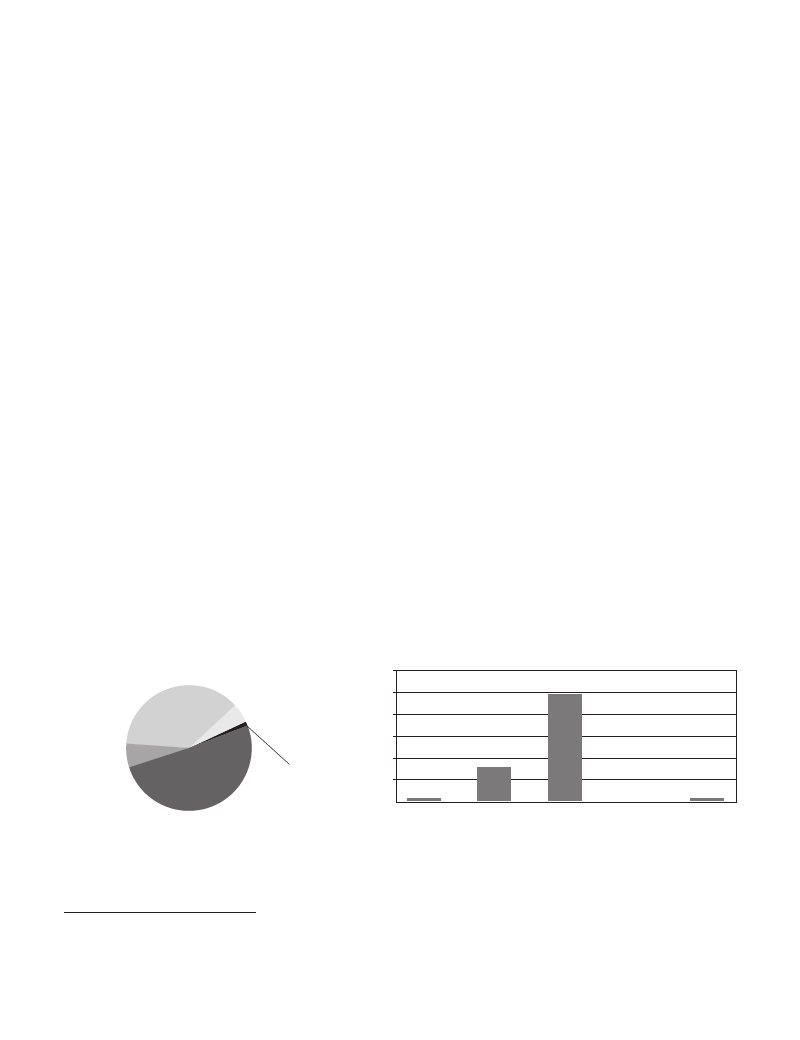
178 / Disaster Risk Management PROGRAMS FOR PRIORITY COUNTRIES SOUTH ASIA
NEPAL
To prepare the Country DRM Note, consultations were undertaken with members of the World Bank’s Nepal Country
team. Meetings were held with the Ministry of Home Affairs (MoHA) and other key ministries and departments involved
in Nepal’s disaster management system including Ministry of Water Resources, Ministry of Finance, Ministry of Local
Development, Ministry of Public Works, the Department of Water-Induced Disaster, Ministry of Environment, Science and
Technology, Ministry of Education, Ministry of Health, the Department of Hydrology and Meteorology, and the Kathmandu
Fire Brigade. Additionally, meetings were held with selected NGOs, including the National Society of Earthquake
Technology, Nepal and the Nepal Centre for Disaster Management. The World Bank Kathmandu office convened a
roundtable meeting of a broad segment of the Donor Community—ADB, FAO, UN OCHA, European Union, and the
Nepal Red Cross Society.
There is strong support and ownership for the matrix of priority areas and actions from the MoHA and other key ministries
and departments engaged in disaster management.
1. disaster risk profile
Nepal is a landlocked country lying between India and China. It is divided into three ecological zones, the “Terai” low-
lying plains and marshy area in the south, the “Hills” in the middle and the “Mountains” in the north. Nepal’s landscape is
predominantly composed of hills and mountains covering about 83 % of the total area of the country.
Nepal faces several types of natural disasters every year, the most prominent being floods including glacial lake outburst
flooding (GLOFs), drought, landslides, wildfires and earthquakes. Nepal ranks 11th in the world in terms of vulnerability
to earthquakes and 30th in terms of flood risks.1 A combination of rough topography, steep slopes, active seismic zone
and intense impact of monsoon rains makes Nepal extremely vulnerable to disaster impacts.
% Popu lation Affect ed (190 0-200 7)
1,200,000
Floods
37%
Landslides
5%
1,000,000
800,000
600,000
Earthquake
6%
Drought
51%
Wildfires
1%
400,000
200,000
Drought
Damage in USD ‘000 (1900-2007)2
Earthquake Floods Landslides Wildfires
There are more than 6,000 rivers and streams in Nepal. On reaching the plains, these fast-flowing rivers often overflow
causing widespread flooding across the Terai region as well as flooding areas in India further downstream. Another
potential hazard is Glacial lake Outburst Flooding (GLOF). In Nepal, a total of 159 glacial lakes have been found in the
1UNDP, A Global Report: Reducing Disaster Risk, 2004
2 EM-DAT: OFDA/CRED International Disaster Database, Catholic University of Louvain, Brussels, Belgium, www.emdat.net (disclaimer from EM-DAT
regarding the reliability of the economic damage data)
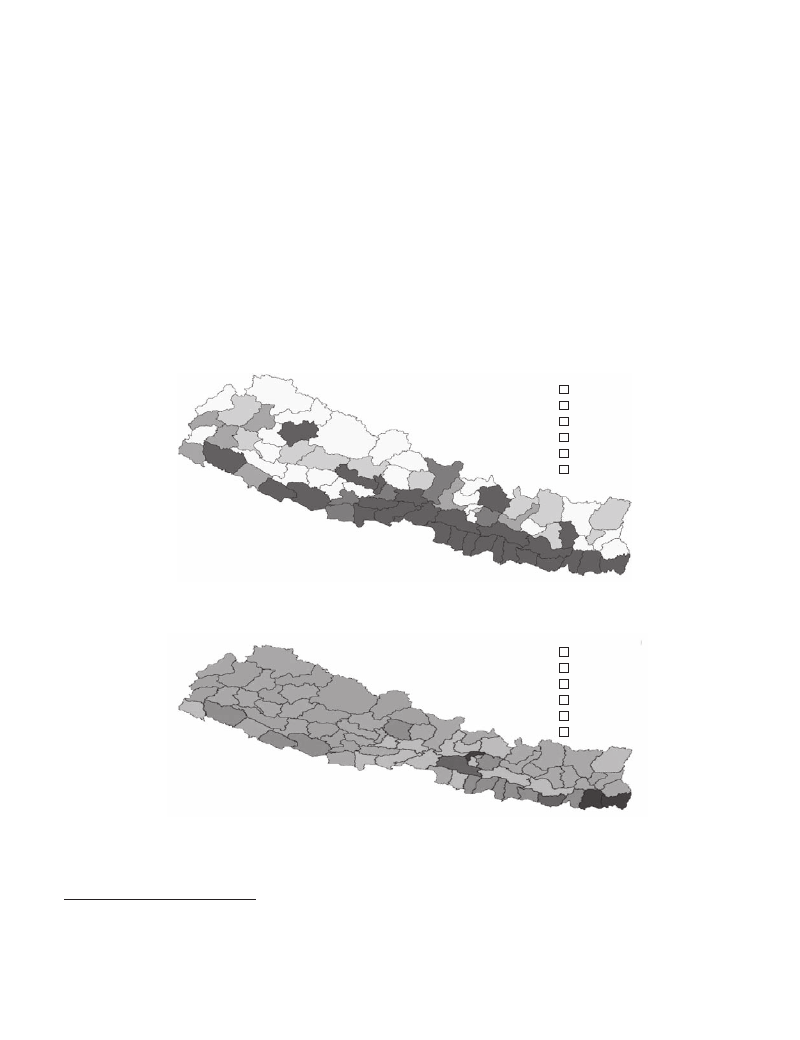
NEPAL / 179
Koshi basin and 229 in the Tibetan Arun basin. Of these, 24 have been identified as potentially dangerous and could
trigger a GLOF event. In the period from 1935-1991, Nepal has experienced 14 GLOF events.3 Seismic records for
Nepal date back to 1255. In 1934, Nepal experienced a major earthquake which claimed more than 8,500 lives. There
followed other earthquakes in 1980 and 1988 further highlighting the extreme vulnerability that Nepal faces regarding
earthquakes.4
Exposure and Vulnerability
Out of 21 cities around the world that lie in similar seismic hazard zones, Kathmandu city is at the highest risk in terms
of impact on people. Studies conducted5 indicate that the next big earthquake is estimated to cause at least 40,000
deaths, 95,000 injuries and would leave approximately 600,000 – 900,000 people homeless in Kathmandu. Haphazard
urban growth, poor construction quality and non-enforcement of building codes further add to the vulnerability faced by
the people regarding earthquake risk.
People affected by disasters per District (1971-2007)
Affected
n No Data
n Less than 10,000
n 10,000 – 20,000
n 20,000 – 30,000
n 30,000 – 40,000
n Above 40,000
Frequency of Disaster Events by District (1971-2007)
Number of Events
n < 100
n 100 – 200
n 200 – 3000
n 300 – 400
n 400 – 500
n > 500
3ICIMOD, Impact of Climate Change on Himalayan Glaciers and Glacial lakes, 2007
4NSET, Global Assessment of Risk: Nepal Country Report, 2008
5 Nepal’s hazard profile, Sumesh Kumar Bhattrai, The Kathmandu Valley Earthquake Risk Management Action Plan, National Soci-
ety for Earthquake Technology [NSET]-Nepal and GeoHazards International, 1999

180 / Disaster Risk Management PROGRAMS FOR PRIORITY COUNTRIES SOUTH ASIA
Nepal has a population of over 27 million people, of which 84 % live in rural areas. Almost 31% of the population is
below the poverty line and Nepal ranks at 1426 in the Human Development Index country ranking, the lowest in South
Asia. Poverty and a large reliance on agriculture for livelihoods increase the vulnerability of rural communities in getting
impacted by disasters and in being able to recover socially and economically from disaster events.
As effects of climate change become more pronounced through increased seasonal variability, extreme weather events and
glacial melt, Nepal is amongst those countries that will be most severely affected by the impacts of climate change.
2. disaster risk management framework
The current institutional framework of the Government of Nepal is more oriented towards disaster response and relief. The
government organization responsible for disaster management is the Disaster Management section within the Ministry of
Home Affairs. The Ministry collaborates with Nepal Police and the Royal Nepalese Army. Through Chief District Officers,
the Ministry has a network throughout the country that extends to the district level. Although the Ministry of Home Affairs
holds the overall responsibility of emergency preparedness and disaster management, it is still primarily concerned with
the provision and distribution of emergency relief to disaster victims.
The Central Disaster Relief Committee (CDRC) is the apex body of the disaster response system in Nepal. The
Central Disaster Relief Committee is headed by the Minister of Home Affairs, consists of the Minister of Health, the
Minister of Physical Planning & Works, Secretaries of other ministries, representatives from the Royal Nepalese Army
and the Nepal Police, the Director Generals from the Department of Mines & Geology and from the Department
of Hydrology & Meteorology, as well as representatives from the Social Welfare Council, the Nepal Red Cross Society
and the Nepal Scouts. Following a disaster, the CDRC meets as required to address the needs of the affected
population. The committee controls a Central Disaster Relief Fund (CDRF), which is occasionally supplemented by
the Prime Minister’s fund.
At the district level, the District Disaster Relief Committee (DDRC) is the nodal body for coordinating relief efforts.
The District Disaster Relief Committee is chaired by the Chief District Officer, consists of representatives from public
sector organizations such as the District Health Office and the Nepal Red Cross Society. The Natural Calamity (Relief)
Act, 1982 also accommodates the provision for the establishment of regional and local disaster relief committees as
required.7
3. Progress towards Hyogo Framework for Action
HFA Priority # 1: Ensure that disaster risk reduction is a national and a local priority with
a strong institutional basis for implementation
The Natural Disaster Relief Act enacted in 1982 (though having been revised twice) is primarily focused on post disaster
relief and recovery. The Ministry of Home Affairs (MoHA) has recently taken up revision of the 1982 Disaster Relief Act
towards formulation of a Disaster Management Act. The MoHA has also initiated the development of a National Strategy
for Disaster Risk Management covering all aspects of DRM. However the strategy is still not approved by the final
authorities in the government and thus still remains a conceptual document.
6 Human Development Report, Human Development Index, Nepal ranked 142 out of 177
7NSET, National Strategy for Disaster Risk Management in Nepal, 2008; www.drrgon.gov.np
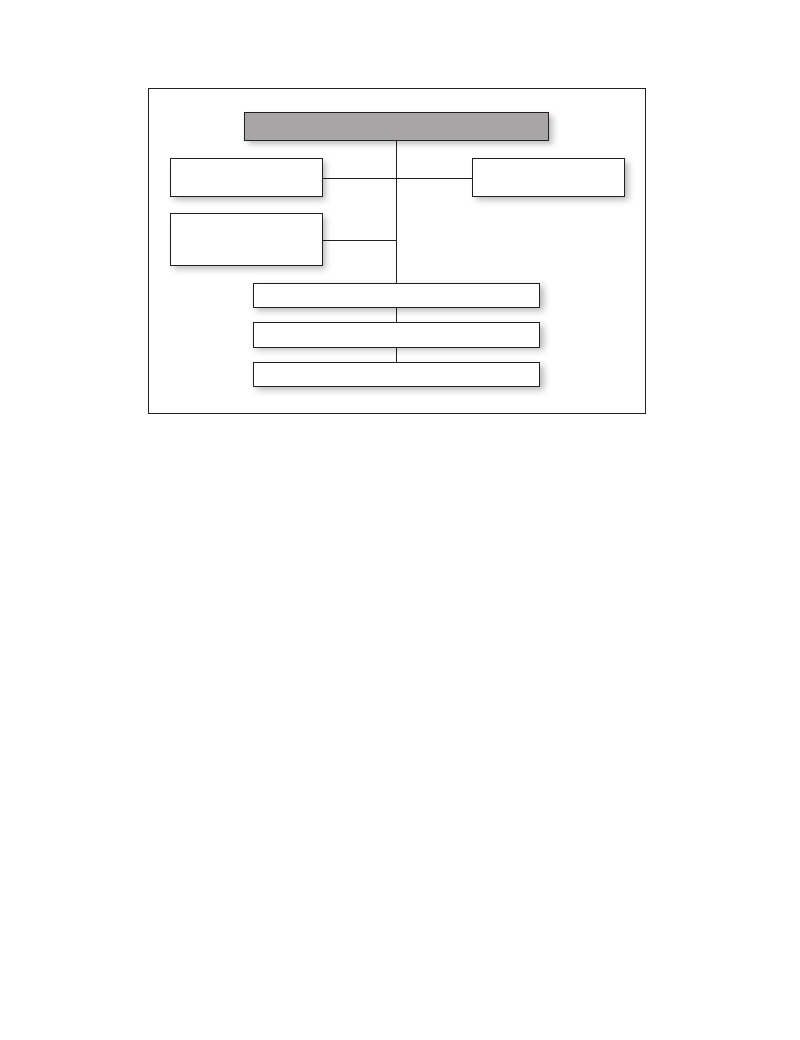
NEPAL / 181
Central Natural Disaster Relief Committee
Relief and Treatment
Sub-committee
Relief and Treatment
Sub-committee
Supply, Shelter and
Rehabilitation
Sub-committee
Regional Natural Disaster Relief Committee
District Disaster Relief Committee
Local Disaster Relief Committee
The Government of Nepal allocates 2.5 billion Nepal rupees (US$ 36 million, which is approximately 1.5 percent of the
total annual budget) every year in the annual budget for disaster management. There is also a provision of Prime Minister
Relief Fund and Central Disaster Assistance Fund for Disaster Management. However these are primarily for relief and
rescue activities. Resources for disaster risk reduction are not allocated on a priority basis.
The Local Self-Governance Act (1999) has given the authority and responsibility to the local government authorities
(District Development Committees (DDC), Municipalities and Village Development Committees (VDC)) to design and
implement DRR activities at the local level. However, there is no systematic and assured mechanism of resource allocation
to the local authorities from the center.
The Ministry of Home Affairs has already initiated a process to establish a multi-sectoral national platform with
representatives from concerned government agencies, UN agencies, donors, INGOs, NGOs, media, academic
institutions, private sector and CBOs.
HFA Priority # 2: Identify, assess, and monitor disaster risks – and enhance early warning
There has been some effort in hazard mapping by UNHABITAT and Department of Mines and Geology in 1993. There
is no national level multi-hazard risk assessment covering regularly occurring disasters. However, there is a historical
record of disaster occurrence and their impact for 37 years available in Nepal. This database based on the “DesInventar”
system is managed by NSET and UNDP. International organizations such as International Centre for Integrated Mountain
Development (ICIMOD) have initiated a process to assess the socio-economic impacts of GLOFs and flash floods
through case studies.
The Government of Nepal has also established a seismic monitoring system within the Dept. of mines and geology. Few
localized single hazard-oriented early warning systems managed by Department of Hydrology and Meteorology and
some I/NGOs are in existence in a few places. However, there is no early warning system in place for major hazards with
outreach to disaster-prone communities.

182 / Disaster Risk Management PROGRAMS FOR PRIORITY COUNTRIES SOUTH ASIA
National and local level risk assessment is still a new phenomenon in the country. The need for regional cooperation and
especially real-time data sharing has been recognized by most stakeholders in different forums. With the support from
UNISDR, the Government of Nepal is undertaking the disaster-poverty interface study.
HFA Priority # 3: Use of knowledge, innovation, and education to build a culture of safety and
resilience at all levels
The Department of Water Induced Disaster Prevention, Nepal Red Cross Society and other I/NGOs have been collecting
and disseminating national level information. However, as of now there is no designated and fully functional central and
district-level data clearing house. Similarly, there is no established mechanism to share such available information.
The current school curricula have a limited amount of information on disaster management. In 2008, the secondary level
of education curriculum has recently incorporated the disaster management component with the support of WWF and
other institutions. Several I/NGOs have been supporting the MoE to incorporate DRR in to school curricula, teachers
training on DRR, awareness building classes, publication of various IEC (Information, Education and Communication)
materials on DRR.
Science based disaster risk reduction/ management is a new phenomenon in Nepal. Organizations such as The World
Bank, Asian Development Bank and ICIMOD have initiated empirical research on cost-benefit analysis and mitigation
practices in Nepal. The World Bank is carrying out four different studies8 in the area of risk reduction in the country. With
support from UNISDR, Nepal is undertaking a national level study on the relationship between poverty and disaster. Nepal
is practicing some internationally accepted and practiced tools for retrofitting of buildings and vulnerability assessment.
HFA Priority # 4: Reduction of the underlying risk factors
The existing natural resources management Acts and Acts related to climate change does not include disaster
management as an integral part of it. However, the National Disaster Management Plan developed in 1993 and endorsed
by the Government in 1996 emphasized that the need to bring the natural resources management, climate change and
development together with disaster management. It is anticipated that the forth coming National Strategy for Disaster
Risk Management will bring synergy to integrate natural resources management (NRM) and climate change along with
sustainable disaster management.
The Ministry of Health with technical and financial support from WHO and NSET has initiated the non-structural
vulnerability assessment of hospitals. However, this initiative has covered only few hospitals. The Ministry of Agriculture
has been involved in vulnerability reduction activities such as drought risk reduction, food security, etc. Insurance in the
agriculture sector is still under developed.
Implementation and monitoring of Land-use is extremely weak. Building Codes have been made compulsory in municipal
areas. The National Shelter Policy, 1996 and the National Urban Policy 2007 have incorporated disaster risk reduction
to some extent. However there is a serious lack of enforcement of the codes. Unplanned urbanization and construction of
unsafe houses can be clearly seen in the Katmandu Valley. The absence of land-use planning and management of human
settlement in the valley has increased the vulnerability of people to earthquakes by many folds.
As of now there is no systematic Disaster Impact Assessment carried out in any major development projects, even in
most of the key infrastructure projects. However, there is a strong recommendation in the proposed National Strategy for
Disaster Risk Management in making Disaster Impact Assessment a practice.
8 1)Study of glacial lakes for potential GLOFs with ICIMOD, 2) a study on school earthquake safety with NSET, 3) Hazard risk assessment of Nepal
and 4) Emergency response system in Nepal.

NEPAL / 183
HFA Priority # 5: Strengthen disaster preparedness for effective response at all levels
The Disaster Management Act (1982) focuses primarily on post disaster activities. The proposed new DRM act and the
strategy encompass all elements of disaster management, long term and sustainable disaster risk reduction and linking
disaster with development. The proposed Act and the strategy also strongly emphasize the establishment of a national
framework for disaster risk management that includes establishment of autonomous DRM authorities from the central
level (NADRM as an apex body) through all levels. Institutional commitment is required for the effective implementation
of the plans and policy.
Few districts of Nepal had developed District Disaster Management Plans (DDMP) based on GIS information during the
early 2000s. However, due to lack of coordination and technical capacity these plans were not fully implemented and
monitored. On an ad hoc basis, several organizations organize lessons learnt sessions after the occurrence of any disaster
in the country. There is no any concrete and well established forum for sharing such knowledge and experiences.
4.key donor engagements
Some of the ongoing DRM initiatives are supported by multilateral assistance. These initiatives are listed below:
UNDP: In relation to disaster risk management, UNDP Nepal is actively assisting in the development of a legal and
institutional framework on disaster risk management; incorporating DRM into national development planning and assisting
through emergency grants for flood and landslide response projects.
UNICEF: Mainly engaged in preparedness and risk assessment in the water & sanitation and emergency health &
nutrition sectors.
FAO: Engaged in food security and the livelihoods sector, especially post-disaster.
UN OCHA: Engaged in disaster preparedness, response preparedness and emergency coordination.
WHO: engaged in DRM in the health sector through its Emergency and Humanitarian Action (EHA) Programme. WHO
Nepal has been an active partner in the heath sector emergency planning and preparedness activities. WHO along with
NSET is leading the Safe Hospitals campaign in Nepal.
DIPECO: Supporting different organizations of whom, Practical Action, an I/NGO, has developed community based
early warning systems that can be managed by local communities and have long-term sustainability as a key consideration
in their design and operation.
NSET: Focusing on Earthquake Risk Management. NSET is substantively engaged in the area of Earthquake Engineering
& Research, School Earthquake Safety Program, Urban & Community Based Disaster Risk Management Preparedness
& Emergency Response, Program for Enhancement of Emergency Response.
Action Aid: Working on hazards and vulnerability reduction through community awareness and capacity building
programs. They have been active in developing school curriculums with disaster risk management elements.
Oxfam: Mainly engaged in humanitarian response post-disaster.
Nepal Red Cross Society (NRCS): NRCS is the largest humanitarian organization in Nepal with a nationwide network
of volunteers. Main focus is on disaster risk reduction as well as response (relief) and recovery.

184 / Disaster Risk Management PROGRAMS FOR PRIORITY COUNTRIES SOUTH ASIA
5.global facility for disaster reduction and recovery (gfdrr):
action plan
Ongoing GFDRR Funded Activities
Ongoing GFDRR funded activities
Disaster Risk management Program, Nepal
TA and analytical work on GLOFs,
earthquake safety and emergency response
capacity amongst others
Nepal: Agricultural Insurance Feasibility
Study
Partnerships
MoHA, NSET,
ICIMOD
Insurance Board,
MoHA, Min. of
Agriculture
Budget
$ 914,000
$159,400
HFA priority area(s)
HFA Priority 1: Ensure that disaster
risk reduction is a national and a local
priority with a strong institutional basis
for implementation
HFA Priority 4: Reduction of the
underlying risk factors
Indicative New Program Areas and Projects for GFDRR Funding
Institutional Strengthening and Building Technical Expertise
The Ministry of Home Affairs needs a lot of support towards building technical expertise of staff involved in DRM
activities. Needs range from foundational training in Incident Command, Emergency Operations systems, Resource
Management, Search and Rescue, Building Code Enforcement, Fire Management, and Structural Retrofitting. Training
programs organized in-house and in foreign institutions will allow knowledge sharing and capacity strengthening of some
key personnel.
Flood Management Project - Rapti River Basin
Given the annual flooding issues faced by Nepal, the project will focus on a pilot river basin towards developing a
comprehensive flood management project. The project will focus on the hardware aspect of installation of better
equipment towards collection of real-time precipitation data and assisting the ability of climate scientists in the
Department of Hydrology and Meteorology towards improved 3-5 day weather forecasts. The project will also focus on
the softer aspects of awareness, mobilization, preparedness and risk reduction for floods and other disasters for targeted
communities living in the Rapti basin. The project will develop a pilot flood early warning system to focus on effective and
efficient information dissemination down to the community level.
Enhancing Emergency Response Capacity
Majority of Nepal’s population is rural while more than 80% of the country is hilly and mountainous. A disaster emergency
at times makes it very difficult to access the affected areas from Kathmandu, the capital, where most of the resources
are located. This entails a strong network of emergency search and rescue and relief supplies to be strategically located
across the country. This also entails developing a strong logistical and distribution system in case of a calamity. The
project will support the MoHA and the Nepal Red Cross Society in strengthening the emergency relief supplies network
through strategically located warehouses across the country.
Deployment of a more robust emergency communications network, or construction of a national emergency operations
center, will prove effective if there is an enhanced understanding of Incident Management and Emergency Operations
processes and procedures. The UNDP has been working towards establishment of an Emergency Operations Centre.
The proposed funding will complement activities planned by the UNDP in helping strengthen communication linkages
between the center and districts.
Enhancing Weather Forecast for Disaster Preparedness
Extreme weather events and severe weather conditions often wreak havoc and impact peoples’ livelihoods across Nepal.

NEPAL / 185
Presently, the Nepal Department of Hydrology and Meteorology has limited capabilities in making weather forecasts
beyond 24 hours with acceptable accuracy. Improving the capacity of the department in being able to make reliable
1-5 day weather forecasts would greatly enhance the capacity of the MoHA and the district level government officials
in being better prepared against extreme events. Advanced information dissemination to communities can also greatly
benefit their coping strategies against disaster impacts. The project will undertake a study to identify existing gaps and
needs within the Department of Hydrology and Meteorology and will provide technical assistance through a partner
international climate forecast organization in building the technical expertise of Nepal’s climate scientists. In addition,
this component includes the purchase of equipment.
School and Hospital Emergency Planning and Safety Initiative
The Department of Education (DoE) expressed the need for development of a comprehensive plan covering all aspects
of safe schools, including capacity building towards retro-fitting including training of masons, training of technical
personnel, development of safe schools guidelines and creating community awareness. The DoE also needs support in
the elaboration of a National Action Plan on Safe Schools.
The WHO in collaboration with the Ministry of Health has developed a project towards Strengthening Initiatives for Safe
Heath Facilities in Nepal. The project will focus on assessing the safety of primary health care centers; develop checklists
similar to the existing Safe Hospital Checklist and pilot test in one heath care center in each health region. The Safe
Hospital Checklist will be applied in all public hospitals. Safety improvement plans will be developed for health facilities.
The project will also support the development of a GIS to facilitate the use and application of space-based technologies
and related services for DRM activities in the health sector, including the national safe hospitals program. In addition, this
component would include structural strengthening measures of selected health facilities.
Indicative new program areas
and projects for GFDRR funding
Institutional Strengthening and Building
Technical Expertise
–DRM skill training for MoHA staff
–Damage & needs assessment methodology
training
–Specialized training for Incident Command,
emergency operation system, Building Code
enforcement, Resource management, Fire
Management, Search & Rescue
Partnerships
MoHA, UNDP, relevant
national & international
training institutions
Flood Management Project – Rapti River Basin
–Real-time collection of precipitation data
–Improved and reliable 1-5 day weather
forecast capability
– Community preparedness and pilot flood
early warning system
Dept. of Hydrology
& Meteorology, other
relevant international
organizations
Indicative Budget
or GFDRR funding
$ 750,000
(3 years)
HFA priority area(s)
HFA Priority 1: Ensure
that disaster risk
reduction is a national
and a local priority with a
strong institutional basis
for implementation
$ 1,250,000
(3 years)
HFA Priority 3: Use of
knowledge, innovation,
and education to build
a culture of safety and
resilience at all levels
HFA Priority 2: Identify,
assess, monitor disaster
risks, enhance early
warning
HFA Priority 5:
Strengthen disaster
preparedness for
effective response
(Cont.)

186 / Disaster Risk Management PROGRAMS FOR PRIORITY COUNTRIES SOUTH ASIA
Indicative new program areas
and projects for GFDRR funding
Enhancing Emergency Response Capacity
–Strengthening network of emergency relief
supplies and distribution system across the
country
–Support development of emergency
communications system and an Emergency
Operations Centre
Enhancing Weather Forecast for Disaster
Preparedness
–Technical assistance for building expertise
of Nepal’s climate scientists towards
development of reliable 1-5 day forecasts
– Purchase of equipment
School & Hospital Emergency Planning and
Safety Initiative
–Developing a comprehensive safe schools
program and piloting specific activities
–Strengthening initiatives for Safe Health
Facilities in Nepal
TOTAL
Partnerships
MoHA, UNDP, Nepal
Red Cross Society
Dept. of Hydro &
Met, WMO, relevant
international climate
institution,
Department of
Education, NSET,
Ministry of Health, WHO
Indicative Budget
or GFDRR funding
$ 3,500,000
(3 years)
$ 2,500,000
(3 years)
$ 2,400,000
(3 years)
$ 10,400,000
HFA priority area(s)
HFA Priority 2: Identify,
assess, monitor disaster
risks, enhance early
warning
HFA Priority 5:
Strengthen disaster
preparedness for
effective response
HFA Priority 2: Identify,
assess, monitor disaster
risks, enhance early
warning
HFA Priority 3: Use of
knowledge, innovation,
and education
HFA Priority 3: Use of
knowledge, innovation,
and education to build
a culture of safety and
resilience at all levels
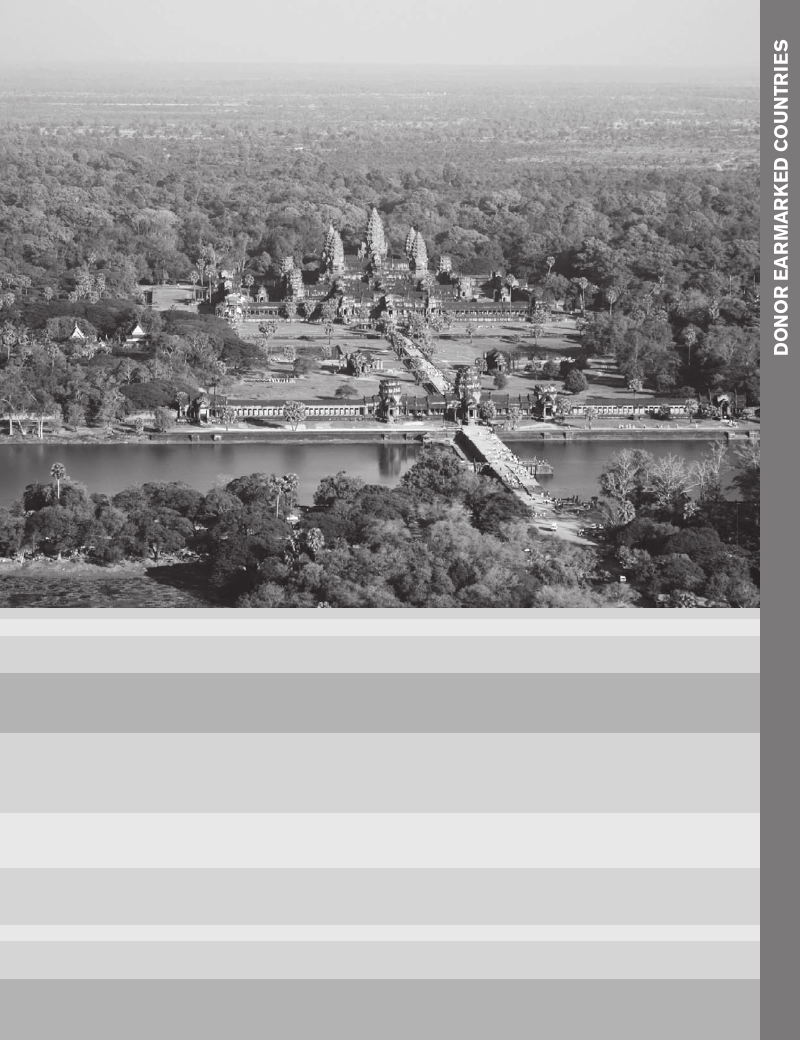
DISASTER RISK MANAGEMENT
East Asia and Pacific
Cambodia / Lao PDR / Vanuatu
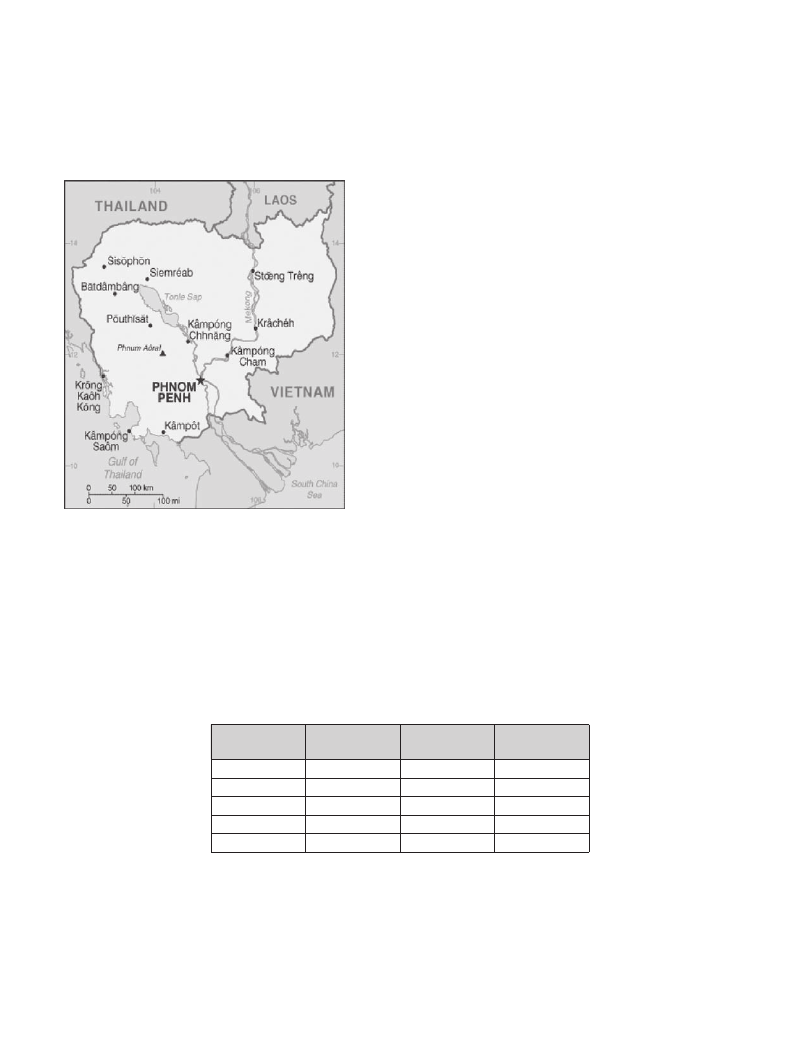
188 / Disaster Risk Management PROGRAMS FOR PRIORITY COUNTRIES EAST ASIA AND PACIFIC
Cambodia
In order to prepare the Country DRM Plan for Ghana the Africa
DRM Team agreed with UNDP on beforehand to undertake a joint
UNDP-World Bank mission. The mission was also accompanied
by a representative from ECOWAS and a member of the donor
coordination group on Environment. This joint mission held extensive
meetings with the National Disaster Management Organization
(NADMO), and met representatives of the Ministry of Interior (MoI),
Environmental Protection Agency (EPA), Ministry of Lands and Natural
Resources (MoLMNR), Ministry of Food and Agriculture (MoFA),
Ministry of Local Government and Rural Development (MoLGRD),
Ministry of Water Resources (MoWR), Ministry of Finance (MoFEP),
National Meteorological Agency, and various development partners,
including UNICEF, WFP, the Danish Embassy and UNDP. The team
undertook a field visit to a District Office of NADMO. The Mission
also met with the technical team leading the development of the
Northern development Initiative (NDI), and included a one
day workshop with staff of the Country Management Unit.
1. Disaster risk profile
Cambodia today presents an environment that is favorable, but a bit of urgency, to support its disaster risk management
initiatives: Efforts made by the country in recent years to manage its natural disasters provide a strong foundation for
taking concerted steps towards reducing vulnerability of its people and economy from natural disasters. Post-conflict
Cambodia has made good improvements in its socio-economic conditions: by managing its disaster risks more effectively,
there is opportunity to improve further the living standards and preserve the development gains.
Table 1. Top 5 Natural Disasters in Cambodia for the Period
1980-2009/5 (sorted by numbers of total affected population)
Disaster
Drought
Flood
Flood
Flood
Flood
Date
June 1994
July 2000
August 2001
August 2002
June 1996
No Total
Affected
5000000
3448053
1669182
1470000
1300000
Damage
(000 US$)
100000
160000
15000
100
1500
Source: “EM-DAT: The OFDA/CRED International Disaster Database; www.em-dat.net-Université
Catholique de Louvain – Brussels – Belgium
The year 2009 marks a milestone year for Disaster Risk Management in Cambodia The Strategic National Action Plan
for Disaster Risk Reduction (2008-2015) which sets out clear priorities was launched by the Government in March. The
country has been freshly assessed of its disaster preparedness response capacity by UNDAC. Moreover it is the 15th

CAMBODIA / 189
year of the establishment of the National Committee for Disaster Management, the apex body for coordinating disaster
risk management activities in Cambodia. NCDM and its provincial and district units are making efforts to transform them-
selves from their traditional disaster managers to disaster risk managers. Thanks to years of effort by numerous local,
national, regional and international organizations, the concept of Disaster Risk Management (contra disaster manage-
ment) is trickling down from national to the local level, and there is an appreciable amount of understanding of ideas and
concepts surrounding Disaster Risk Management in the country.
The field of Disaster Risk Management in Cambodia is also crisscrossed by a host of actors The field appears
uncoordinated and external support fragmented; it remains saturated with reports containing good recommendations
that wait to be implemented; and interventions that are yet to make sustainable impact.
2. disaster risk management framework
The major natural disasters Cambodia faces are floods and droughts: The southwest monsoon begins around mid May
and lasts until end October and brings over three quarters of the country’s annual rainfall. As a result floods along the
Mekong River, the Tonle Sap Lake and the tributaries are recurrent and often convert into major disasters. Mekong river
floods affect the provinces of Kandal, Kampong Cham, Kratie, Prey Veng, Stung Treng, Svay Rieng and Takeo. Flash
floods in tributaries around the Tonle Sap Lake affect several other provinces as well. Delays or early ending of the
Monsoon rains and erratic (volume and period) rainfall have contributed to agricultural droughts.
A large segment of the population lives in the flood plains of the Mekong and Tonle Sap watersheds: Natural disasters
have had significant impact on the country’s people and economy. For example, floods accounted for 70% of rice
production losses between 1998 and 2002, while drought accounted for 20%. Cambodia is one of the countries which
at relatively high economic risk from multiple hazards. About one tenth of the total area of the country is estimated to be
at risk from two or more hazards. Moreover 31.3% of the population and 34.5% of GDP are estimated to be at areas of
risk from two or more hazards (Dilley et al. World Bank 2005).
Urban vulnerabilities are accumulating: As the population in the Mekong floodplain of Cambodia continues to increase
mainly due to rural-urban migration, and as major cities such as Phnom Penh and Siem Reap urbanize rapidly with—often
without adequate land use planning—newer vulnerabilities continue to accumulate. Lack of building codes that respond
to country context and their weak enforcement, as well as lack of proper drainage in urban centers have increased the
vulnerabilities of urban dwellers.
Increasing rural vulnerability: On the rural front, where about four fifths of the population (and 90% of the poor) resides,
livelihoods—agriculture, fisheries and forestry—are subject to increasingly more frequent floods and drought. Deforestation
and subsequent soil erosion; inadequate irrigation systems and water conservation measures to protect against drought;
have all contributed to increase rural people’s vulnerability to natural disasters.

190 / Disaster Risk Management PROGRAMS FOR PRIORITY COUNTRIES EAST ASIA AND PACIFIC
3. Progress towards Hyogo Framework for Action
HFA Priority # 1: Ensure that disaster risk reduction is a national and local priority with a strong
institutional basis for implementation
Strategic National Action Plan for Disaster Risk Reduction in Cambodia 2008-2013
The Strategic National Action Plan for Disaster Risk Reduction in Cambodia 2008-2013 (herein after SNAP-DRR) was
launched in March 2009. Prepared by NCDM and Ministry of Planning (MoP), this strategy has been formulated to serve
as the “road map” for development and strengthening of institutions, mechanisms and capacities of disaster management
committees at all levels, enable them to effectively and efficiently implement disaster risk reduction in the country.
The SNAP-DRR identifies six key DRR components and outlines DRR priorities in four levels-critical, first, second
and third level. The six components follow the HFA and are: (1) Ensure that DRR is a national and a local priority; (2)
Strengthen sub-national and community based disaster risk management; (3) Identify, assess and monitor hazard risks
and enhance early warning; (4) use knowledge innovation and education to build a culture of safety and resilience;
(5) mainstreaming DRR into policies and programs for relevant government ministries and (6) Strengthen disaster
preparedness for effective response at all levels.
The critical priorities which correspond to HFA 1 seek to ensure that DRR forms an integral part of the government’s
development agenda. Specific activities under this priority include formulation of national disaster risk management
policy and legislation, creation and strengthening of national DRR coordination mechanism; integration of DRR into the
national development planning.
First level priorities set out by the SNAP-DRR are strengthening sub national and community disaster risk management
capacities; mainstreaming DRR into policies and programs of relevant government ministries mainly the Ministry of Land
management, Urban Planning and Construction (MOLLMUPC); Ministry of Agriculture, Forestry and Fisheries (MOAFF),
Ministry of Education, Youth and Sports (MOEYS), Ministry of Environment (MOE); Ministry of Health (MOH) and Ministry
of Rural Development (MORD); and strengthening disaster preparedness for effective response at all levels.
Second Level priorities include DRR projects that enhance component 2 and component 6; DRR projects related
to component 3 that require greater technical expertise and specialization; and DRR projects aimed at raising public
awareness corresponding to Component 4. The last level of priorities are those deemed “not feasible” within a short
span of time such as establishment of a disaster fund, risk financing instruments, and establishing partnership with local
and international scientific institutions.
• National, Provincial and District Disaster Management Committees (NCDM, PCDM, DCDM): The National
Committee for Disaster Management (NCDM) was established as the lead coordinating agency in 1995 by
Sub-decree 35ANKR-BK signed by the Prime Minister (amended in 1999 under Presidential Decree 1566, Sub
decree 54ANKR-BK). Chaired by the Prime Minister, its members are 22 government ministries and agencies
such Economics and Finance, Agriculture, Forestry and Fisheries; Water Resources and Meteorology; Rural
Development, Health, Defense, Police, etc. NCDM is replicated at lower levels--each province also has a PCDM
and each district a DCDM which are chaired respectively by provincial governors and district chiefs; and the
committee members are government line ministries and agencies. The NCDM is responsible for managing disaster
risk data and providing reporting on disasters, securing resources for emergency response, DRM capacity building
and human resource development in DRM, coordinating the implementation of disaster management policies and
information sharing on DRM.
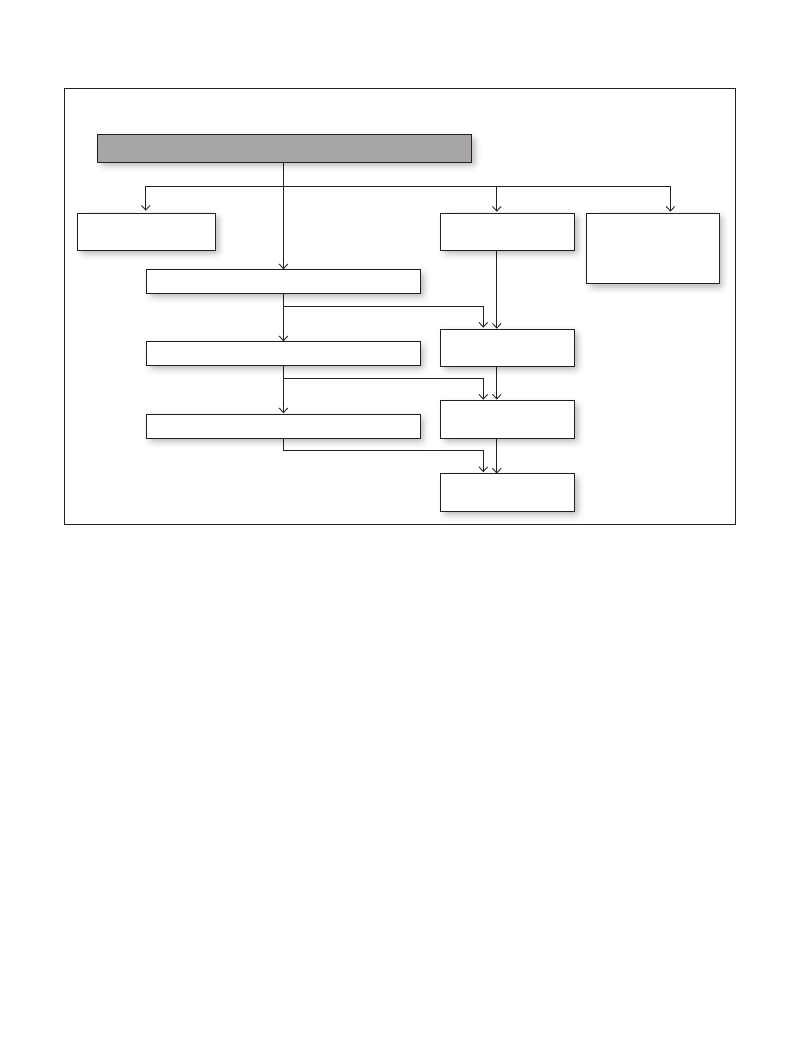
DRM Coordination Mechanism in Cambodia
National Committee for Disaster Management (NCDM)
CAMBODIA / 191
Cabinet of President
Provincial Committee for Disaster Management
General Secretariat
Disaster Management
Working Group
of Ministries and
Institutes
District Disaster Relief Committee
PCDM Secretariat
Commune Committee for Disaster Management
DCDM Secretariat
CCDM Secretariat
• Emergency Management Policy and National Disaster Management Bill: The NCDM is finalizing a national
Emergency Management Policy and National Disaster Management Bill that will provide a strong basis for
coordinated and effective disaster risk management in the country. Both these documents are awaiting approval
from the Council of Ministers.
• The country’s National Poverty Reduction Strategy (NPRS) identifies natural disasters—floods and droughts—as
critical factors in increasing the vulnerability of rural poor and placing a disproportionate burden of coping with
the effects of disasters on women.
• The National Strategic Development Plan (NSDP) for 2006 -2010 incorporates issues of disaster risks in
sectors such as social welfare, water resource management and agriculture and rural development, including the
protection of rural areas from floods and droughts, community based disaster preparedness and risk reduction
and vulnerability reduction for the poor.
HFA Priority # 2: Identify, assess and monitor disaster risks and enhance early warning
• Cambodia has limited scientific information of its risks. Available information is not regularly developed, updated,
and disseminated and also remains fragmented amongst national authorities and partner agencies. Ministry of
Water Resource and Meteorology (MoWRAM) through Department of Hydrology and River Work (DHRW) and
Department of Meteorology is responsible for establishing, maintaining and disseminating weather and flood
forecast and early warning systems. Human resources and equipments appear as major constraints for risk
assessment and monitoring. Several of the Early warning systems are not well functioning; systems face

192 / Disaster Risk Management PROGRAMS FOR PRIORITY COUNTRIES EAST ASIA AND PACIFIC
problems such as poor dissemination mechanism of forecast and early warning to the end-users at community
levels; poor maintenance.
• Some progress in risk assessment and monitoring and EWS can be found in the works of the Mekong River
Commission which is developing flood and drought vulnerability indices for Lower Mekong basin. The MRC has
also produced some flood maps for flood-prone provinces. Mekong River Commission has flood forecasting
and early warning for the river flood plains which is complemented by community-based flood EWS projects of
Cambodian Red Cross. Further, local risk assessments through Vulnerability and Capacity Assessment undertaken
by NGOs such as Oxfam, Care and ActionAid. Also, in 2003, the NCDM and the UN World Food Program
(WFP) developed risk maps of 500 of the most at risk communities. Of these 260 prone to floods and 293 prone
to drought. This represents about one third of the total number of communes in the country.
HFA Priority # 3: Use knoweldge, innovation and education to build a culture of safety and resil-
ience at all levels
• Several NGOs involved in managing disaster (risks) have created a Disaster Risk Reduction Forum with support
from DIPECHO.
• With assistance from DIPECHO and ADPC Ministry of Education Youth and Sports has piloted mainstreaming
of disaster risk reduction measures into education sector. The work includes mainly developing and integrating
DRR into school curriculum.
• NCDM has formulated a national disaster risk communication strategy.
• Several NGOs have conducted local public awareness campaigns as part of community based projects.
HFA Priority # 4: Reduce the underlying risk factors
• Numerous small scale (ponds, culverts, safety boats, etc) flood and drought mitigation projects implemented by
NGOS and MoWRAM has developed flood protection structures in few provinces.
• MRC implementing long term Flood Mitigation and Management Programme (FMMP) for lower Mekong basin No
risk financing strategy and extremely limited insurance penetration
• Tonle Sap Basin Authority created for sustainable use of lake ecosystem with ADB support Limited efforts to
address DRR across sectors
• MRC is in the process of producing flood proofing guidelines. However in general there is lack of national
building codes, standards and technical specifications that response to Cambodian disaster contexts and lack of
enforcement
• Comprehensive norms and standards not established for integration of disaster risk reduction measures into post
disaster recovery and rehabilitation processes
• National Adaptation Program of Action to Climate Change (NAPA): Approved by the government in 2006, the
NAPA presents 16 priority adaptation activities in key sectors such as agriculture, water resources and coastal
zone management. Do far a very few projects proposed in NAPA have been taken up. SNAP/DRR presents
mainstreaming of DRR into the NAPA as a first order priority under Mainstreaming DRR into policies and Programs
of Ministry of Environment. Both SNAP/DRR and the NAPA seek to address community vulnerability to hazards.
HFA Priority # 5: Strengthen disaster preparedness for effective response at all levels
• There is a national working group on disaster coordination, response and recovery chaired by NCDM. Also, as

CAMBODIA / 193
mentioned under HFA 1, the draft of the National Emergency Management Policy has been formulated by NCDM.
However there is still lack of a Standard Operating Procedure for national and local emergency response.
• Svae Rieng and Takeo Provinces have formulated Flood preparedness Plans while the provinces of Prey Veng,
Kandal and Kratie are being supported under Flood Emergency Management Strengthening (FEMS) program of
ADPC/ADB.
• United Nations Disaster Management Team, IFRC, Oxfam and Care have well established regional response
mechanisms in place.
4. key donor engagements
Regional Initiatives
1. The ARPDM (ASEAN Regional Program on Disaster Management (2004-2010) and subsequent AADMER
(ASEAN Agreement on Disaster Management and Emergency Response) signed by member states in 2005,
Standard Operating Procedure for Regional Standby Arrangements and Coordination of Joint Disaster Relief and
Emergency Response Operations (SASOP)
2. The Regional Consultative Committee on Disaster Management (RCC) RCC Program on Mainstreaming Disaster
Risk Reduction into Development (MDRD) Phase I (2004-2007) and Phase II (2008-2012)
3. ASEAN, UNISDR and WB 5 year Memorandum of Cooperation (2009-2014)
4. Forthcoming Memorandum of Understanding between Asian Disaster Preparedness Center (ADPC), and World
Bank, sets forth the framework for a collaborative alliance between the two organizations.
5. Mekong River Commission: Created as an intergovernmental body by the countries of the Mekong Basin, MRC is
supporting member countries in the following five areas: Flood Management and Mitigation programme, including
Establishment of Regional Flood Management and Mitigation Centre (RFMMC); Structural Measures and Flood
Proofing; Enhancing Cooperation in Trans-boundary Flood Issues; Flood Emergency Management Strengthening;
and Land Management.
6. Asian Disaster Preparedness Centre: The Asian Disaster Preparedness Center (ADPC) is a regional non profit
resource center based in Bangkok, with substantial experience in implementing disaster risk management projects
in countries of the region including Cambodia. Some of the projects which it helped implement in Cambodia are
Capacity Building for Integrated Disaster Management in Cambodia (UNDP support), Community Based Flood
Mitigation and Preparedness 1995-2004 (under the Asian Urban Disaster Mitigation Program), Flood Emergency
Management Strengthening 2004-2007 (with MRC and GTZ) and mainstreaming DRR in the education Sector
(with NCDM, ECHO, UNDP and MoEYS).
Donors/IFIs
• AusAID: Reducing the vulnerability of the poor to natural disasters is one of the three themes for Australia’s
engagement in development cooperation with Cambodia. Australia has been a
• DIPECHO: Ongoing funded projects include Promoting and Strengthening Disaster Resilient in Cambodia
DIPECHO Partners include several NGOs including Action Aid, Lutheran World Federation (LWF-Cambodia),
Cambodian Red Cross, Danish Red Cross, Netherlands Save the Earth, etc. DIPECHO South East Asia Action
Plan (Subject to availability of funds) will support DIPECHO projects beginning April 2010 and will have a
duration of maximum 15 months.
• ADB - Community Based Disaster Risk Reduction Strategy for Flood and Drought (2007 – 2012) Implemented

194 / Disaster Risk Management PROGRAMS FOR PRIORITY COUNTRIES EAST ASIA AND PACIFIC
with ADPC, in partnership with MoWRAM. Promoting community level action and developing CBDRM plans.
• UNDP: UNDP is engaged in supporting the NCDM and Mekong River Commission as well as in developing
climate forecasts and applications, and flood mapping and early warning initiatives
• World Bank: The GFDRR/WB is preparing a Technical Assistance to ensure better coordination and
implementation of SNAP-DRR, to integrate disaster risk reduction into national development planning, implement
the national CBDRR strategy and develop guidelines for integration of DRR into local development plans, initiate
the mainstreaming DRR into policies and programs of two ministries, support the development of provincial multi
hazard DRR plans and implement partnerships in at least two new provinces, strengthening the Management of
NCDM. Similarly past World bank engagement under the completed Flood Emergency Rehabilitation Project
(FERP) repaired and rehabilitated infrastructure damaged by floods in 2000, and provided TA to help build
capacity to more effectively manage and mitigate future water disasters
• GTZ: Providing major support to MRC; GTZ-MRC-ADPC Flood Emergency Management Strengthening
(FEMS)
• WFP: Food aid through Food For Work program targeted towards poorest communities; damage and needs
assessment (DANA) guidelines and tools for NCDM developed
• UNESCAP: Partnership for Disaster Reduction in Southeast Asia (PDR-SEA) (Phase I, II, III & IV)
NGOs
• LWF, CWF, Concern Worldwide, Care International, World Vision, ZOA, Action Aid, CRC, Oxfam GB, Oxfam
America, Oxfam Australia, DCA, Save the Earth and other local NGOs etc.
Guiding Principles for GFDRR/WB interventions
The main objective of the GFDRR/WB support will be to safeguard livelihoods of rural poor against floods and drought
risks and help address persistent poverty and maintain sustainable economic development. Following will be the guiding
principles for WB engagement in DRM in Cambodia for 2010-2012:
• Disaster types: Focusing on flood and drought risk management which is directly linked to the rural poverty;
• Promoting national strategies: Advancing priorities as set out in the SNAP-DRR and the DRR components of the
National Adaptation Plan of Action (NAPA);
• People and livelihood focus: Taking a people centered approach to safeguard their livelihoods from disaster;
• Partnerships: NCDM will be the coordinating partner at the national level and line ministries will be focal points;
PCDM/DCDM will be partners at implementation level. Where possible we will rely on respective comparative
advantages;
• Multi-sector approach: Engaging the provinces in implementing the DRR on the ground to enable a multi-sector
approach (education, transport, agriculture, water resources and health) to mainstream the DRR into the sector
policy and plan; build a cadre of disaster risk reduction champions across sectors;
• Focus on poor provinces: Focusing on provinces which are relatively poor and with less donor support;
• Regional consideration: Engaging Vietnam and MRC to address the flood and drought risk management from a
regional view.
• Emerging urban risks: While the priority is on rural, begin actions towards identifying and assessing emerging
urban risks

CAMBODIA / 195
• Risk financing: Begin actions towards disaster risk financing (private sector engagement, agricultural insurance,
credit schemes, etc);
• Capitalize on existing DRM experience (from pilots) such as in education sector
• Tie with existing World Bank projects where possible
• Promote organizations with regional expertise on disaster risk management
• Prepare engagement framework with other donors
• Prepare a cadre of Damage and Loss Assessment experts.
• Consolidate GFDRR Phase-I activities
Key Program Targets
• Key structure and non-structural measures implemented in the high priority provinces;
• DRR elements integrated into the provincial sector planning and implemented on the ground;
• Adequate capacity for disaster management built at the provincial, district, and the community level, and the
national level capacity strengthened
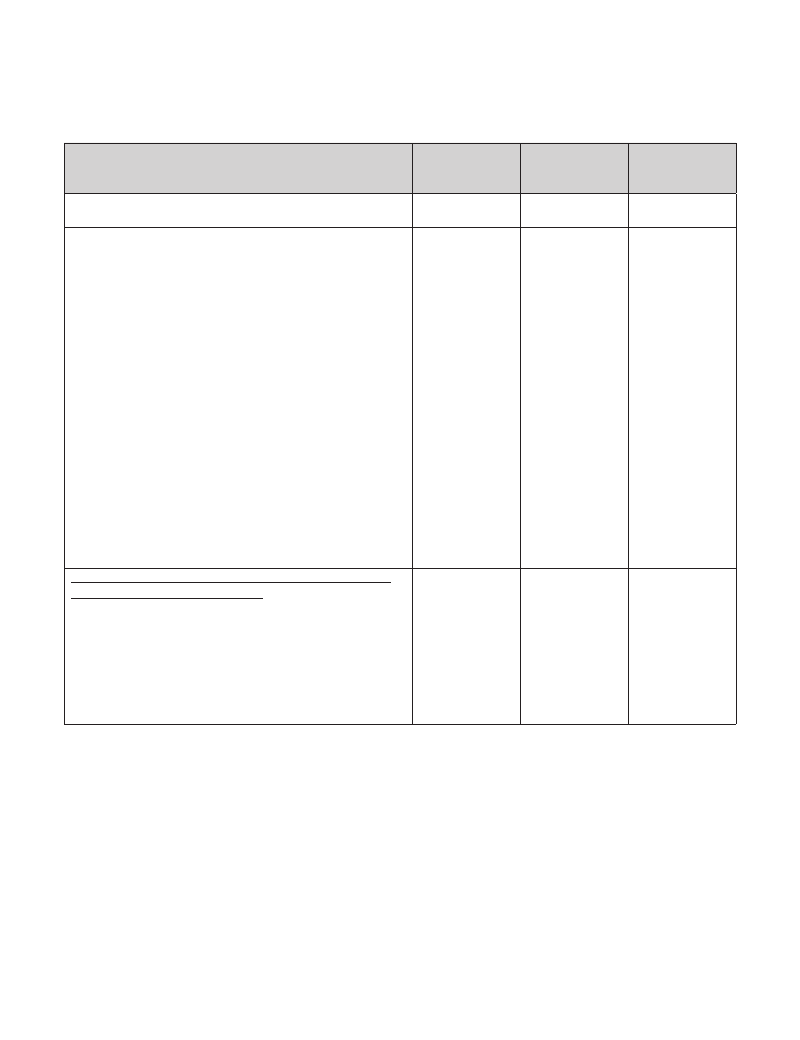
196 / Disaster Risk Management PROGRAMS FOR PRIORITY COUNTRIES EAST ASIA AND PACIFIC
5.global facility for disaster reduction and recovery (gfdrr):
action plan
Indicative Program for GFDRR Funding
(Projects and engagement areas)
Capacity building of Hydmet agencies for Early Warning and
weather forecast systems
Consolidate Phase I GFDRR activities in Svay Rieng and Pray
Veng provinces/
Expand to 3 provinces of Eastern Mekong Delta
Partners
MoWRAM, NCDM
Indicative
Budget (US$)
200,000
- Public consultation and preparation of risk mapping
- Capacity assessment of PCDMs for disaster risk management
-Development of Sector Adaptation Plans (transport, health,
education and agriculture)
- Contribution to National and Regional Food and Drought
Strategy
-Support for Early Warning and weather forecast systems
- Flood and Drought Vulnerability Mapping (possible co-operation
with WFP)
-Disaster-proofing existing critical infrastructures
-Support efforts by stakeholders for better coordination (AA/
Oxfam/Care)
-Support Roadmap for Developing and Implementing Flood and
Drought Risk Reduction Programs (2008-2012) for high risk/
vulnerable communities
- Climate Adaptation: Support priority projects in NAPA
-Conclusion of activities in Prey Veng and Svay Rieng as
outlined in Phase I.
Task Based Strengthening of NCDM: to make them effective in
coordinating WB support to Cambodia
Various relying
on comparative
advantages
2,400,000
-Organizational strengthening in terms of human and material
capacity
-Support NCDM to integrate disaster risk reduction in national
development strategies including National Poverty Reduction
Strategy (NPRS) and National Strategic Development Plan
(NSDP).
NCDM
Part of Above
SNAP Priority/
HFA Activity
Area
Critical/ 2, 4
First/1-5
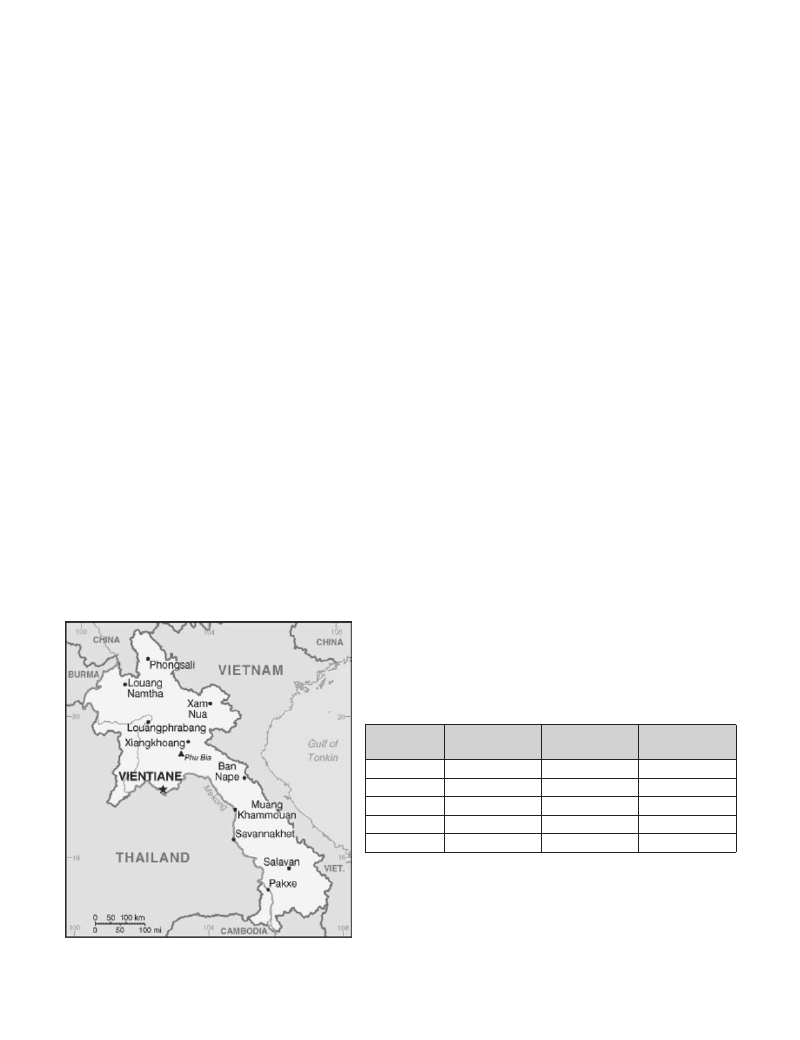
LAO PDR
LAO PDR / 197
To prepare the Country DRM Note, consultations were undertaken with the National Disaster Management Office
(NDMO) and members of the World Bank’s Country team. Working closely with NDMO, consultations were held
with Ministry of Health, Ministry of Education, Ministry of Public Works and Transport, Ministry of Agriculture,
Lao National Mekong River Commission, Department of Meteorology and Hydrology, Mekong River Commission,
Asian Development Bank, JICA, UNDP and Oxfam-Australia. Consultations were also held with the Provincial
Disaster Management Committees in Vientiane and Khammouane provinces; and line departments representing
the committees. In Khammouane, discussions were held with Khammouance Development Project (KDP) including
Department of Irrigation; authorities of Nongbok District Disaster Management Committee. Together with ADPC
and KDP, flood prone areas were visited and consultations were also held with flood vulnerable people in Sokbo
village. The findings were presented to the National Disaster Management Committee and the guiding principles for
engagement in the country agreed upon.
1. disaster risk profile
Laos PDR has made significant gains in the area of disaster risk management in recent years and presents a suitable
environment to make further DRM initiatives: National institutions at various levels are making efforts to transform
themselves to take up disaster risk management roles (from merely managing disasters), a Strategic Plan on Disaster
Risk Management (SPDRM) was adopted in 2003 and there is considerable presence of donors willing to support
Lao PDR in the field of DRM. By managing its disaster risks more systematically, Laos PDR also has an opportunity to
preserve development gains, reduce poverty and improve the living standards of rural farmers, and ultimately graduate
out of its LDC status.
2.disaster risk management
framework
Table 1. Top 5 Natural Disasters in Lao for the Period
1980-2009 (sorted by numbers of total affected population)
Disaster
Storm
Drought
Flood
Flood
Flood
Date
August 1995
Dec-88
Aug-01
Sep-00
15/08/1996
No Total
Affected
1000000
730000
453000
450000
420000
Damage
(000 US$)
N/A
N/A
N/A
N/A
N/A
Created on: May-25-2009 - Data version: v12.07; Source: “EM-DAT: The OFDA/CRED
International Disaster Database; www.em-dat.net - Université Catholique de Louvain - Brussels,
Belgium
Source: CIA Fact book

198 / Disaster Risk Management PROGRAMS FOR PRIORITY COUNTRIES EAST ASIA AND PACIFIC
The major natural disasters Lao PDR faces are floods and droughts: Most flooding occurs during May to September
when Monsoon rains accumulate in the upper Mekong river basin. In addition to river basin flooding, flashfloods in the
northern mountainous region are also common. It is estimated that the south and central regions, where about two
thirds of the country’s population live, face on an average of 1.5 serious floods or droughts every year. Lao PDR is also
susceptible to landslides, pest infestations and fire due to slash and burn agriculture. Most recently, the Floods of 2008
August is estimated to have affected about 204,000 people, damaged an estimated 50,000 Ha of arable land and
caused a damage and loss of over USD 9 million.
High degree of poverty in the rural areas means even low intensity natural disasters increase the vulnerability of rural
farmers: Agriculture is mostly dependent on rainfall, and a modest drought could increase food insecurity. In the urban
side, Capital Vientiane is urbanizing rapidly. As newer infrastructures are built with inadequate land use planning and
weakly enforced building codes, newer vulnerabilities are fast accumulating in the city.
3. activities under the hyogo framework of action
HFA Priority # 1: Ensure that disaster risk reduction is a national and local priority with a strong
institutional basis for implementation
• National Disaster Management Committee (NDMC), an inter-ministerial committee, is the apex body with
responsibilities for developing policies and coordinating DRM activities in the country. NDMC was established
through a prime ministerial Decree No. 158/PM in August 1999. National Disaster Management Office (NDMO)
is the secretariat of NDMC and is located in the Ministry of Labor and Social Welfare (MLSW). Roles and
responsibilities of the NDMO and each member of NDMC have been defined by the internal MLSW decree No.
097/MLSW of June 2000. Under this decree, disaster management committees are established at the Provincial,
District and Village levels.
• As a result of directions by NDMC, the Provincial Disaster Management Committees are now chaired by provincial
governor instead of vice-governor which gives them more authority to act on DRM issues. Also, more and more
line departments are being represented in the PDMCs.
• NDMC is currently represented by several important sectors such as health, education, public works, transport,
etc. A proposal is under consideration for expanding the membership of the NDMC to include additional important
sectors such as energy and mining, planning and investment, water resources and environment, science and
technology and agencies such as Lao PDR Women Union, and Lao Youth Union.
• An MLSW decree (/MLSW) of April 2003 defined the Strategic Plan on Disaster Management (SPDM)
corresponding to three different periods 2003-2005, 2005-2010 and 2010–2020. ) The SPDRM emphasizes
sustainable development through DRR, risk reduction through environmental protection, more preparedness
than relief. The Strategic Plan also aims to share the DRM responsibility between the communities and the
government.
• DRM is integrated into the Lao PDR’s Sixth National Socio Economic Development Plan (2006-2010) (NESDP)
and the National Growth & Poverty Eradication Strategy (NGPES). The United Nations Development Assistance
Framework lists DRM as a key area for cooperation and one of the critical components of poverty reduction
framework.
• NDMO, with UNDP support, is planning to prepare a Strategic National Action Plan for DRM by 2010. The draft
is planned for December 2009. The Action Plan will focus on getting more ownership by various sector ministries
in advancing DRM in the country.
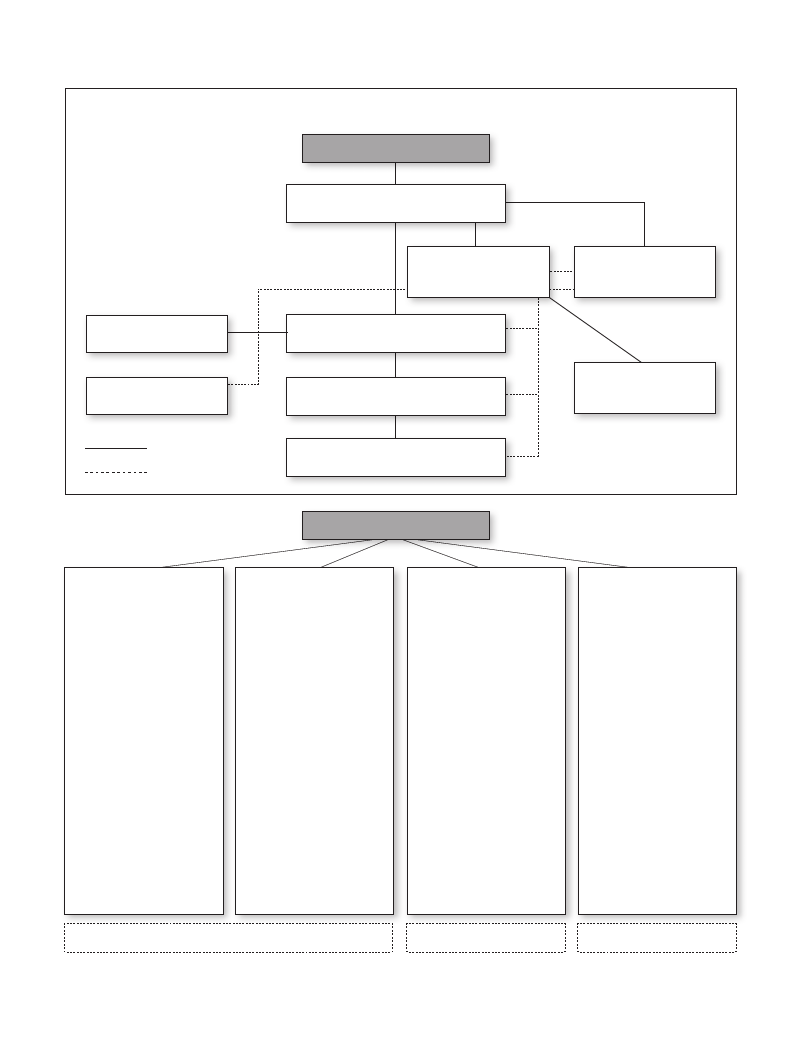
LAO PDR / 199
Provincial Focal Point
in Unit (PFPU)
District Focal Point
in Unit (DFPU)
Belonging line
Coordination line
The NDMC Diagram
Prime Minister’s Office
National Disaster Management
Committee (NDMC)
Ministry Focal Point
(MFP)
Provincial Disaster Management
Committee (PDMC)
District Disaster Management
Committee (DDMC)
Village Protection Disaster Unit
(VPCU)
NDMC
National Disaster
Management Office
(NDMO)
Ministry Focal Point
in Unit
(MFPU)
Early Warning
Forecasting
Monitoring
Early Warning
Leading Agency:
WREA
Provinces
Preparedness
Community Mobilization
Structure Measures
Nos Structure Measures
Leading Agency: NDMO
Emergency Response
and Relief
Damage Mitigation
Damage Monitoring
Relief Dispatch
Leading Agency: NDMO
Early Recovery and
Term Reconstruction
Damage and Loss
Assessment
Early Recovery Support
Long Term
Reconstruction
Leading Agency:
MPI, MOF
Line Ministries
WREA
MAF
MPWT
MOH
MOE
Provinces
Provinces
Provinces
Before the Floods
During the Floods
After the Floods

200 / Disaster Risk Management PROGRAMS FOR PRIORITY COUNTRIES EAST ASIA AND PACIFIC
HFA Priority # 2: Identify, assess and monitor disaster risks and enhance early warning
• Limited risk mapping in selected communes and districts have been funded under donor projects, but no
comprehensive or composite country-wide hazard or risk mapping exists.
• Department of Meteorology and Hydrology (Ministry of Agriculture and Forestry) is the main agency that produces
the early warning information and disseminates to disaster management organizations, mainly to the NDMO. The
NDMO then sends this information to the local disaster management organizations to take appropriate actions
and disseminate early warnings to communities at risk.
• When disaster occurs, information from the local level to the national level is slow. The capacity and the resources
available with the local DMCs for data collection and dissemination is extremely weak.
• Flood Vulnerability Assessment and Mapping Project (FVAMP) of the Mekong River Commission (MRC) is working
to provide flood vulnerability indices to better manage flood and drought indices
• Hazard, Vulnerability and Capacity Assessment is being carried out under Lao Red Cross project ‘Community
Based Disaster Preparedness Program (2007–2011) in 5 flood and drought prone villages in Khammoaune and
Savannakhet province.
• The World Bank’s GFDRR pipeline project will fund risk mapping in two to three provinces.
HFA Priority # 3: Use knoweldge, innovation and education to build a culture of safety and resil-
ience at all levels
• Lack of comprehensive disaster information management system. NDMO is responsible to carry out the function
but it lacks human and information management capacities. A project with Save the Children Australia/ADPC
aims to strengthen the information management system, currently being piloted in Sayaboury province.
• Phase II of the Mainstreaming DRR in the Education Sector in Lao PDR project between MOE, NDMO, ADPC,
and UNDP (with Support from ECHO), is taking up further activities to mainstream DRR in the education sector
such as supporting institutionalization of the DRR module of phase I in the national curriculum and in the teachers
training system; pilot testing of DRR teaching aid materials in six schools; developing a framework curriculum
plan to aid in the future integration of DRR in Lao PDR; and identify specific opportunities for integrating hazard
resilience school construction features in one pipeline project.
• A comprehensive national action plan for disaster resilient school systems is lacking. Further the following needs
were identified by MoE: building more trainers at all levels; sensitizing (for better understanding of DRR) high
ranking officials in MOE, heads of local education departments, head of schools and primary school children;
experience sharing with other countries; and expansion of curriculum across all technical sectors.
• Under Laos Australia NGO Cooperation Agreement (LANGCOCA), a project Tools for Disaster Risk Assessments
(TDRA) is being conducted by NDMO and Save the Children Australia with the support of ADPC. The project will
support the development of a risk assessment system for use in Sayaboury district and will support the provincial
and district capacities in hazard and risk identification, assessment, and financing.
• The national government has no specific DRM public awareness and education programs in place. However
activities under donor programs such as (i) Flood Preparedness Project ADPC-MRC (ii) Mainstreaming in
education Sector (ADPC) and (iii) DRR Project (Oxfam/SCA) have awareness and education programs.

LAO PDR / 201
HFA Priority # 4: Reduce the underlying risk factors
• Most recently the National Action Plan for Adaptation for Climate Change has been approved. The NAPA has
identified, 45 priority project proposals to implement adaptation activities in four main sectors: agriculture,
forestry, water and water resources, and public health. 12 of these projects have been prioritized as primary while
remaining 33 as of secondary priority. There is a greater need for NDMO and Climate Change Office to work
closely to advance DRR components of the NAPA.
• Some limited efforts in agriculture sector such as river embankment, protection of dams, seed stocking during
floods, maintenance and rehabilitation of irrigation canals have been carried out.
• JICA is supporting the update of Urban Development Master Plan for Vientiane capital which has a component
of improving building codes. Similarly Component 5 of the MRC project on FMMP has a land management
component.
• Capacity building for Damage and Loss Assessment is being carried out by NDMP and MPI with support of
World Bank. This capacity building effort aims to prepare a cadre of local experts for damage and loss assessment
who can be readily deployed in the event of a major natural disaster.
HFA Priority # 5: Strengthen disaster preparedness for effective response at all levels
• Practically there is very limited budget for DRM or recovery activities. Funds are mobilized from the national and local
budgets in the event of a disaster. One Billion kip, about US$ 120000 through MSWL for emergency response
per year is earmarked by government. The government does not have a national disaster relief reserve fund that
provides funding for emergency response and recovery activities when a disaster strikes. Some departments have
their own funds albeit limited such as agriculture (seed, water pump repair), public works (road repair), Social
welfare and labor (relief) etc.
• Department of Social Welfare compiles from provincial departments the loss/damage and need for assistance,
then the department makes request to Minister for use of funds.
• NDMO is inadequately mandated (resource poor) and its mandate for risk reduction is yet to be understood by
other line ministries.
• No contingency plan for natural disaster events elaborated by the NDMC. However every year NDMC meets
prior to the disaster season, collects preparedness plan from line ministries. NDMC notifies PDMCs suggesting
them to prepare response plans. Some province do well; those provinces without disaster history have difficulty
in planning. However planning is poor and there is need to strengthen the process. Information from line ministries
may or may not come. Need to have better intra governmental cooperation and inter agency-cooperation.
• There is a need for a uniform methodology for making post disaster damage and needs assessments for
consistency and coming up with nationally agreed upon damage and loss figures. Also, there is need to have a
disaster information centre at NDMO, as the NDMC secretariat.

202 / Disaster Risk Management PROGRAMS FOR PRIORITY COUNTRIES EAST ASIA AND PACIFIC
4.key donor engagements
Regional Initiatives
1. The ARPDM (ASEAN Regional Program on Disaster Management (2004-2010) and subsequent AADMER
(ASEAN Agreement on Disaster Management and Emergency Response) signed by member states in 2005,
Standard Operating Procedure for Regional Standby Arrangements and Coordination of Joint Disaster Relief and
Emergency Response Operations (SASOP)
2. The Regional Consultative Committee on Disaster Management (RCC) RCC Program on Mainstreaming Disaster
Risk Reduction into Development (MDRD) Phase I (2004-2007) and Phase II (2008-2012). Lao PDR is an active
member.
3. ASEAN, UNISDR and WB 5 year Memorandum of Cooperation (2009-2014)
4. Forthcoming Memorandum of Understanding between Asian Disaster Preparedness Center (ADPC), and World
Bank, sets forth the framework for a collaborative alliance between the two organizations.
5. Mekong River Commission: Created as an intergovernmental body by the countries of the Mekong Basin, MRC is
supporting member countries in the following five areas: Flood Management and Mitigation programme, including
Establishment of Regional Flood Management and Mitigation Centre (RFMMC); Structural Measures and Flood
Proofing; Enhancing Cooperation in Trans-boundary Flood Issues; Flood Emergency Management Strengthening;
and Land Management.
6. Asian Disaster Preparedness Centre: The Asian Disaster Preparedness Center (ADPC) is a regional non profit
resource center based in Bangkok, with substantial experience in implementing disaster risk management projects
in countries of the region including Lao PDR.
Donors/IFIs
• Laos Australia NGO Cooperation Agreement (LANGOCA), a consortium between Australian NGOs and Lao
government, funded by AusAid is strengthening community level preparedness and response to natural disasters.
LANGOCA works closely with NDMO.
• NDMO, with UNDP support, is planning to prepare a Strategic National Action Plan for DRM by 2010. The draft
is planned for December 2009. The Action Plan will focus on getting more ownership by various sector ministries
in advancing DRM in the country. UNDP is working with NDMO to enhance capacity at all levels of government
disaster management for preparedness, response and rehabilitation.
• LNMC, ADPC and NDMO are preparing/prepared Flood Preparedness Plans for Khammouane and Savannakhet
province with financial support from GTZ and ECHO.
• Emergency Relief for the 2008 Floods has been provided by most major UN Agencies (FAO, WHO, UNICEF)
and NGOs and bilateral donors (ECHO, USAID, Japan, Singapore, Sweden, Canada and Germany (OCHA).
• Mekong River Commission (MRC) is currently implementing Flood Mitigation and Management Program (FMMP)
with the support of donors such as Japan and Denmark. Asian Development Bank is preparing a TA for flood
management project.
• A Priority Investment Plan was developed for mainstreaming DRR into Agriculture sector by NDMO and Ministry
of Agriculture with technical support from ADPC and GTZ.
• JICA is supporting Riverbank Protection in Vientiane Municipality (pilot)
• Most recently the World Bank is working with NDMO, WREA and MPI to support the operationalization of the
Strategic Plan for DRM. This includes funding a $1 million project assisting the GoL to design an implementation
plan for its DRM strategy and strengthen the hydromet, early warning and river basin management. It is also

LAO PDR / 203
helping strengthen the Government’s capacity in carrying out damage and loss national assessment (DALNA) to
measure impact of natural disasters.
Guiding Principles for GFDRR/WB interventions
The main objective of the GFDRR/WB support will be to safeguard livelihoods of rural poor against floods and drought
risks and help address persistent poverty and maintain sustainable economic development. Following will be the guiding
principles for WB engagement in DRM in Lao PDR for 2009-2012:
• Disaster types: The focus will be on flood and drought risk management that is directly linked to the rural
poverty;
• Promoting national strategies: Advancing priorities as set out in the Strategic PDM and the DRR components of
the National Adaptation Plan of Action (NAPA);
• Incorporating the DRR elements into the investment planning (PIP and NESDB);
• Engaging with the provinces in implementing the DRR on the ground.
• People and livelihood focus: Taking a people centered approach to safeguard their livelihoods from disaster;
• Multi-sector approach: Engaging the provinces in implementing the DRR on the ground to enable a multi-sector
approach (education, transport, agriculture, water resources and health) to mainstream the DRR into the sector
policy and plan; build a cadre of disaster risk reduction champions across sectors;
• Emerging urban risks: While the priority is on rural, begin actions towards identifying and assessing emerging
urban risks
• Risk financing: Begin actions towards disaster risk financing (private sector engagement, agricultural insurance,
credit schemes, etc);
• Tie with existing World Bank and bi-lateral operations where possible (Education SWAp, Transportation Sector
Project, KDP, IMWRP)
• Consolidate GFDRR Phase-I
• Partnerships: NDMO will be the coordinating partner at the national level and line ministries will be focal points;
PDMO/DDMO will be partners at implementation level. Where possible we will rely on respective comparative
advantages of other stakeholders;
• Strengthen overall capacity of NDMO and support to establish a broader engagement framework for the donors
(ADB, UNDP, LANGOCA, JICA)
• Regional consideration: Engaging riparian countries and MRC to address the flood and drought risk management
from a regional view.
• Promote organizations with regional expertise on disaster risk management
• Explore implementation of existing DRR plans (such as Flood Preparedness Plans in Khammouane, JICA work on
Urban Strategic Dev Plan) & capitalize on existing DRM experience (from pilots) such as in education sector
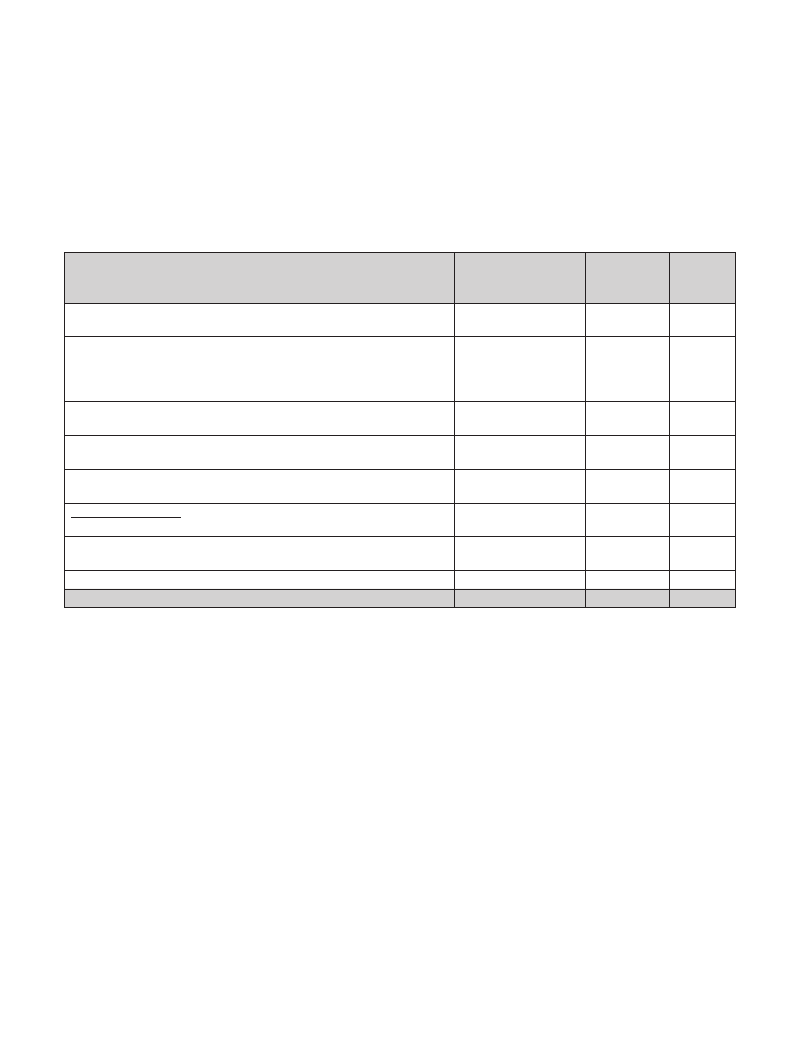
204 / Disaster Risk Management PROGRAMS FOR PRIORITY COUNTRIES EAST ASIA AND PACIFIC
5.global facility for disaster reduction and recovery (gfdrr):
action plan
Program Targets
• DRR elements integrated into the national and sector planning and implemented on the ground;
• Key structure and non-structural measures implemented in the high priority areas;
• Adequate capacity for disaster management built from the national, provincial, district, and the community level
Indicative Program for GFDRR Funding
(Projects and engagement areas)
Capacity building of Hydmet agency for early warning and weather
forecast systems
Develop DRM components within Sector Wide Approach (SWAp) in
Education, Health and Transport Sector
Incorporating DRM component in Mekong Water Resources Management
Project
Incorporating DRM component in Khammouane (Province) Development
Project, and Second Province Development Project
Strengthening existing technical standards and design specifications in
different sectors (transport, school)
Emerging urban risks
Identifying and assessing emerging urban risks for Vientiane Capital
Issue paper on disaster risk financing
(agriculture insurance, private sector participation, etc)
Strengthening capacity for DRM (3 years)
Total Indicative Budget
Partners
DMH, WREA, NDMO
Various relying
on comparative
advantages; MOE,
MOH, MPWT, NDMO
Various, MRC, ADB,
WREA
Various
MPWT, MOE, NDMO
JICA, MPWT, NDMO
MAF, MRD, NDMO
Indicative
Budget
(US$)
200,000
HFA
Activity
Area(s)
4
2,000,000
1-5
2,000,000
1-5
1,000,000
1-5
Part of Sector
4
SWAps
300,000
2, 4
50,000
4
100,000
5,450,000
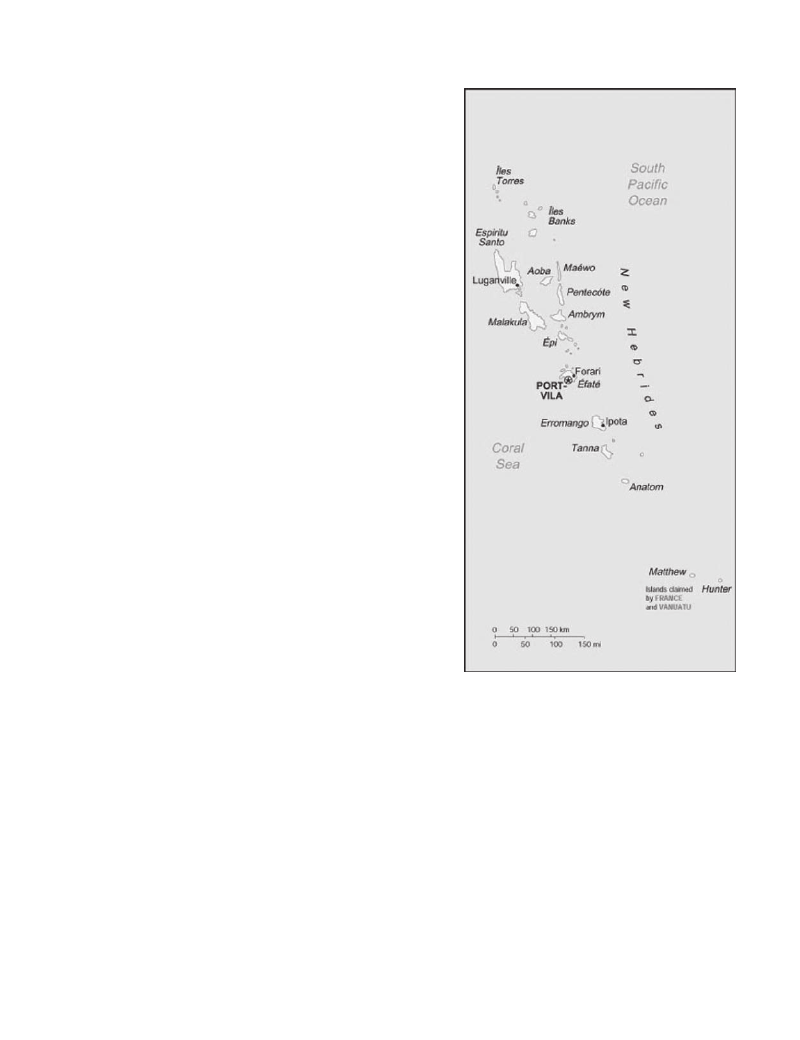
VANUATU
VANUATU / 205
1. disaster risk profile
Vanuatu ranks as one of the countries with the highest
exposure to multiple hazards, according to the World Bank’s
Natural Disaster Hotspot study. Vanuatu is geographically located
in the “ring of fire” and the “cyclone belt” of the Pacific. Almost 81 %
of its landmass and 76% of its population is vulnerable to two or more
hazards including volcanic eruptions, cyclones, earthquakes, droughts,
tsunamis, storm surge, coastal and river flooding and landslides. For
this reason, Vanuatu has a UN Least Developed Country (LDC) status
despite a per capita GDP above the LDC threshold.
Vanuatu is made up of 83 islands with a total land area of
12,300 km spread over 1,300 km in a north to south direction.
The islands are located some 1,750 kilometers east of Australia
with New Caledonia to the south, and the Solomon Islands to the
northwest. The current population is 235,000, of which 80% live
in rural villages on the seven islands of Efate, Espiritu Santo, Tanna,
Malekula, Pentecost, Ambae and Ambrym.
Recent disasters include the Penama earthquake and tsunami
of November 1999, which affected over 23,000 people and
the 2002 Port Vila earthquake which caused structural and
infrastructure damage. The country is subject to climatic variability
and extremes. Vanuatu’s latitude places it in the path of tropical
cyclones, making it vulnerable to cycles of El Nino and La Nina, which, respectively, increase the risks of droughts and
floods. Future climate change and sea-level rise threaten to exacerbate the risks posed from tropical cyclones, coastal
and river flooding, coastal erosion, heavy rainfall events, and droughts.
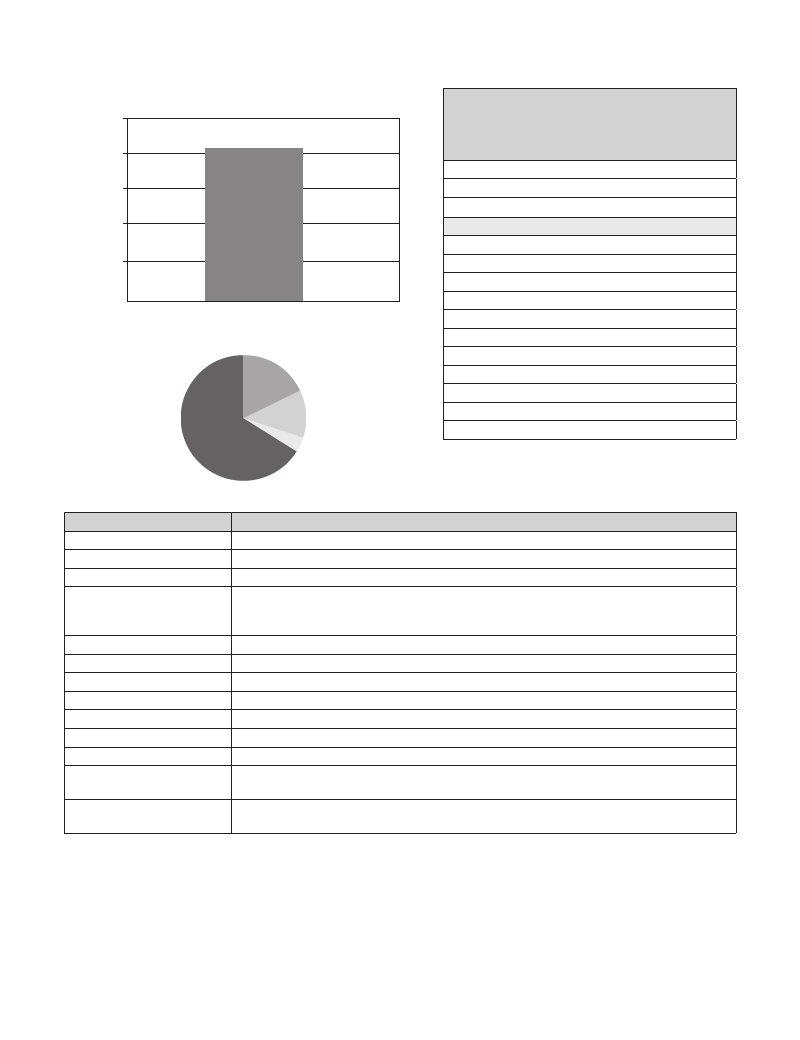
206 / Disaster Risk Management PROGRAMS FOR PRIORITY COUNTRIES EAST ASIA AND PACIFIC
Economic Damages by Disaster Type (1000s USD)
250000
200000
150000
100000
50000
0
Storm
Population Affected by Disaster Type
Earthquake
18%
Storm
66%
Volcano
12%
Floods
4%
COUNTRIES AT RELATIVELY HIGH MORTALITY
RISK FROM MULTIPLE HAZARDS
(Top 60 based on land area
with 2 or more hazards)
1. St. Kitts and Nevis
2. Macao, China
4. Hong Kong, China
6. VANUATU
7. Costa Rica
8. Philippines
9. Nepal
10. Guatemala
12. Ecuador
13. Reunion
15. Somalia
16. South Africa
17. Japan
19. Bangladesh
26. Solomon Islands
Capital
Languages
Independence
Area
Land Use
Government
Population
GDP
HDI
Terrain
Climate
Natural resources
Major products
Main development donors
Port Vila
Bislama (Pidgin), English (official), French (official), over 100 tribal languages
(from France and U.K.): July 30, 1980
-11,830 sq. km. (4,568 sq. miles) archipelago of 83 islands
arable land: 1.64%
permanent crops: 6.97%
other: 91.39% (2005)
Parliamentary democracy.
235,000 (2008)
$343.6 million. (2006)
120 out of 177 (2007)
Mostly mountains of volcanic origin, narrow coastal plains
Tropical or sub tropical
Forests, agricultural land, marine resources
Agriculture: Products--copra, cocoa, coffee, cattle, timber.
Industry: copra production, beef processing, sawmilling, tourism, financial services
Australia, the United Kingdom, France, and New Zealand Japan, Canada, Germany, and the United
States
The World Fact Book, World Bank Country Reports,
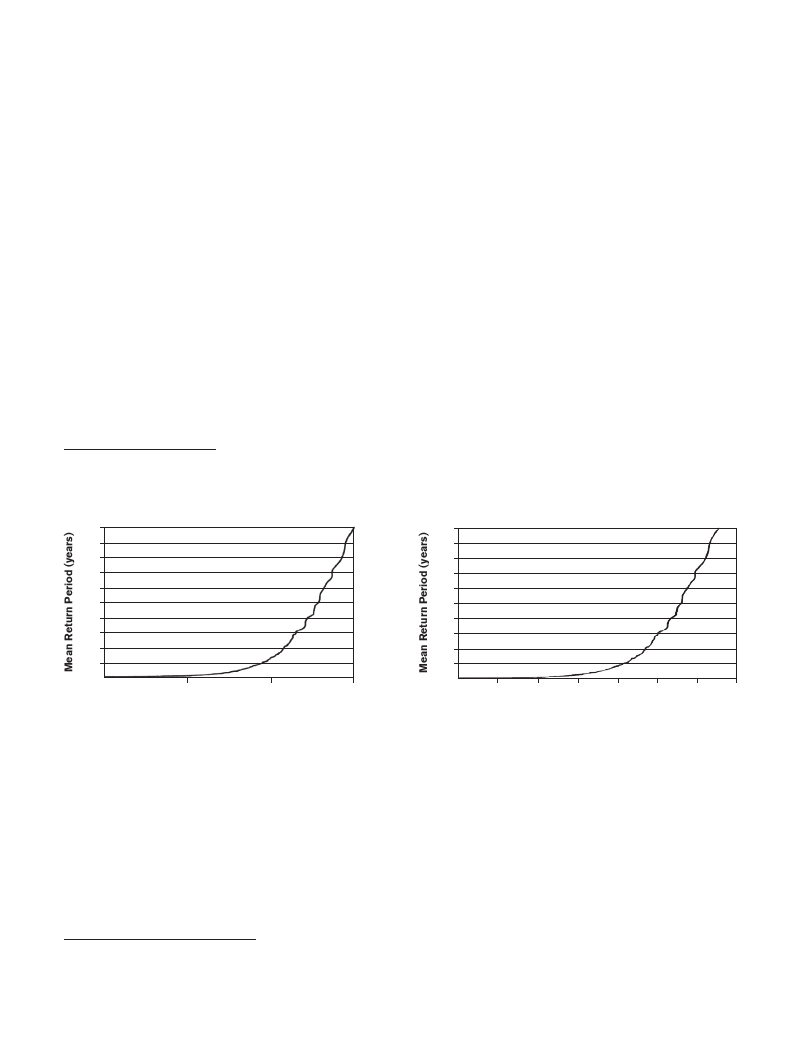
VANUATU / 207
Historic Overview of Disasters
Since 1939 Vanuatu has experienced 124 tropical cyclones, of which 45 were categorized as having hurricane
force winds. A category 3-4 Cyclone, Uma struck Port Vila, Vanuatu, in February 1987. While the insured loss was only
about USD20 million, 55 people were killed and 95% of the buildings in the capital city were damaged. Power and water
supplies were cut, 40 boats in the harbor were lost and a storm surge of 2-4 meters reached Rue Higginson, the main
street. The economic cost was estimated at around 150% of annual GDP. A natural disaster with comparable GDP
impact on Japan, for example, would have a death toll of nearly 34,000 people and a cost of around USD 5 trillion.
Other recent natural disasters include:
• Cyclone Ivy, 2004, damage of US $1.7 million in the education sector alone.
• Cyclone Danny, 1999, US $8.5 million estimated damage.
• Lake Vui volcanic activities in 2005-6, estimated damage of US $427,313.
• Earthquake 2002, US $851,628 estimated damage.
• Tidal waves generated by the 1999 earthquake, 5 lives lost.
• Penama earthquake and tsunami of November 1999, which affected about 23,000 people.
Exposure and Vulnerability
The following two figures show the mean return period of direct losses (in US $million and as percent of GDP, respectively),
due to the combined impacts of earthquake, tsunami and tropical cyclones on Vanuatu.
1000
900
800
700
600
500
400
300
200
100
0
0
150
50
100
Direct losses (in millions USD)
1000
900
800
700
600
500
400
300
200
100
0
5
10
15
20
26
30
35
Direct losses (% GDP)
A narrow economic base and a weakly developed economy contribute to the country’s vulnerability. While
small-scale agriculture provides a living for 65% of the population, 65% of GDP is generated by the service sector.
Agriculture and a small industry sector accounts for about 25% and 10% of GDP, respectively. The local market is small.
The growing tourism sector, with 60,000 visitors (in 2005) mainly around Port Vila, is the main foreign exchange earner.
This narrow economic base makes the cash economy particularly vulnerable to disruption by natural disasters1.
Weak inter- and intra-island communication and transport networks also increase the islands’ vulnerability.
Many areas lack national radio reception. Road transport is only well developed near population centers -only 111 km of
roads are sealed - mostly on the larger islands. While air service is daily to the main islands, there are only 5 airports with
sealed runways (out of 29 in total)4.
1 World Bank Vanuatu Country Risk Assessment (Draft) 2009

208 / Disaster Risk Management PROGRAMS FOR PRIORITY COUNTRIES EAST ASIA AND PACIFIC
Wide dispersal is a further factor in vulnerability. The 83 islands are spread over a maritime exclusive economic
zone (EEZ) of 680,000 km2. Many areas of the country are very isolated and therefore extremely vulnerability in the event
of disaster.
2. disaster risk management framework
In 2006, Vanuatu created a 10 year National Action Plan (NAP) for Disaster Risk Reduction derived from the
National Disaster Act (2000). The NAP was adopted by Government in 2007. This determines eligibility to apply for
funding for implementation under the LDC Fund, which is managed by the Global Environmental Facility (GEF).
Vanuatu is the only Pacific Island Country to complete both a National Action Plan (NAP) for disaster
risk reduction and a National Adaptation Program of Action (NAPA). In addition, a Disaster Risk Management
Framework and arrangements flowchart was adopted by the government in early 2007 as the basis for developing new
legislation, a new disaster management plan and new government organizational arrangements.
In August 2007, a 3-year Provisional Indicative Implementation Program (PIP) 2008-2010 was adopted by
the government as the means to implement the NAP. The Government has committed VT25million (US $220,887)
towards the implementation subject to discussions with donors on supporting the full implementation of the PIP at a cost
of approximately US $3.3 million.
3. activities under the hyogo framework of action
HFA Priority # 1: Ensure that disaster risk reduction is a national and a local priority with a
strong institutional basis for implementation
The National Disaster Risk Management Agency
Disaster risk management is housed the Ministry of Internal Affairs (MoIA), which supports the National
Task Force (NTF) for Disaster Risk Reduction and Disaster Management. The NTF comprises representatives
of departments with a role in disaster risk management and is co-chaired by the Director of the Meteorological Service
and the National Disaster Management Office.
The NTF for DM and DRR takes a proactive as well as reactive approach – thus it does not meet solely in
response to a disaster events.
The National Disaster Committee (NDC), established by the National Disaster Act is tasked with developing
the country’s disaster risk reduction policy and strategy. It is made up of representatives of the Director General
of the MoIA, the Commissioner of Police; the Director of the National Disaster Management Office who is to provide
secretarial support to the Committee; and three NGO representatives
The National Disaster Management Office is its secretariat; The NDMO has a staff of three, and is tasked with
implementing the strategies and policies of the National Disaster Committee (NDC). However the NDMO has no
powers to require other agencies to act on any identified prevention measures. The NDC coordinates response and
recovery activities including coordination with donors.

VANUATU / 209
Legislative Framework
The relevant legislation in this area is the National Disaster Act of 2000 which focuses primarily on
preparedness and response arrangements for disasters. While the Act includes a definition of prevention, it is not
specific about requirements and powers for addressing prevention measures. The legislation is currently administered
by the Ministry of Internal Affairs through the National Disaster Management Office.
The governance arrangements for disaster risk reduction are being reviewed at the national level and should
include explicit structures, accountabilities and connections for cross sector arrangements. Provisions should
extend to the provincial and local levels.
Disaster Risk Management at the Sub-National Level
Both the NAP and the PIP include provisions for extending disaster risk management to the provinces.
However, lack of funding prevents implementation of the NAP. Provinces are, in theory, also mandated to
prepare their own Disaster Plans which should be approved by the NDMO Director, reviewed annually, and updated as
needed.
Moreover, lack of action on the central NAP has prevented the creation of provincial action plans. Provincial
authorities are responsible for coordinating responses under the guidance of the NDMO and NDC. Each village should
have a disaster management committee which coordinates response at the local level, works in consultation with the
provincial level and is responsible for local level damage and loss assessments.
Legislative and Organizational Gaps
The current legislative, policy and organizational structures for disaster risk reduction are weak. Initiatives
like the NAP are unfunded. The Natural Disaster Act, the National Action Plan and the organizational arrangements of
NDMO should be reviewed to strengthen disaster management arrangements and mainstream disaster risk reduction.
Work on arrangements for disaster risk reduction at the national level is being undertaken but this initiative should be
extended to provincial and local levels as well.
Disaster Risk Management in the Poverty Reduction Strategy and Country Development
Plans
Disaster risk management is integrated in the country’s Priorities and Action Agenda 2006-2015. The key
priorities and strategies as it relates to environment and disaster management are as follows: Implement the environment
management and conservation act and the regulate of related activities; Encourage development of protected areas;
Improve sewage treatment and reduce pollution in the harbors and lagoons near urban centers; Conduct a solid waste
disposal study; Encourage eco-tourism as a means to protect the environment where feasible; Conduct community
awareness of the need to protect the environment; Develop and implement risk reduction programs in communities;
Prepare a Port Vila development plan which mainstreams climate change and disaster risk reduction measures.
The action agenda recognizes Vanuatu’s vulnerability to natural disasters and states that “the emphasis
in disaster management has been on making communities aware of the need for preparedness and
promoting the renewal of traditional knowledge of mitigation and preparedness”. It further states that “the
National Disaster Management Office, with the assistance of the National Disaster Committee, is mandated to develop
strategies for the prevention of, preparation for, response to and recovery from, disasters.” The Land Reform Policy which
is currently under development will lead to a five-year action plan that includes land-use zoning maps and vulnerable area
mapping, addressing both disaster risk reduction and climate change adaptation.

210 / Disaster Risk Management PROGRAMS FOR PRIORITY COUNTRIES EAST ASIA AND PACIFIC
Interministerial Involvement in Disaster Risk Management
Vanuatu’s government has a high level of awareness and appreciation of the potential risks to sustainable
development posed by the country’s exposure to geological, hydrological and climatic hazards. This is
evident across a range of ministries and departments. As a consequence there appears to be a willingness to work
across sectors to address areas of common interests in risk reduction.
A number of ministries and agencies participate in disaster risk management, including Vanuatu’s Meteorological
Department which is responsible for day to day weather forecasting, cyclone and tsunami warnings and advisories, and long
term seasonal forecasting; the Agriculture Department which is involved in disaster response; the Department of Internal
Affairs which coordinates responses between provincial authorities; the National Advisory Committee of Climate Change
which assists in raising awareness on disaster risk reduction through its climate change core team; and the Ministry of
Lands and Natural Resources (MLNR), which incorporates risk reduction into to land, water and energy planning.
Climate Change and Disaster Risk Management
Vanuatu has a National Adaptation Plan of Action (NAPA) which was adopted by Government in 2007
and was posted on the UNFCCC web site in December 2007. This determines eligibility to apply for funding for
implementation under the LDC Fund, which is managed by the Global Environmental Facility (GEF).
The NAPA identifies four priority sector areas: Agriculture and Food Security, Sustainable Tourism Development,
Community Based Marine Resource management and Sustainable Forestry Management. Climate change activities are
coordinated by the National Advisory Committee of Climate Change (NACCC). It is made up of department heads and
chaired by the Director of the Meteorological Service. The Director of the Meteorological Services is co-chair of the
National Task Force for Disaster Risk Reduction and Disaster Risk Management.
HFA Priority # 2: Identify, assess, and monitor disaster risks—and enhance early warning
National, Regional, Local and Sector Risk Assessments
Despite the multiple risks faced by Vanuatu and despite the fact that there is a moderately high level of
awareness and commitment to risk reduction at the national level, there are only rudimentary understanding
and assessments available of the degrees of risk, who is at risk, and where. For example, there are no tsunami
hazard maps available other than a single scenario inundation map for the greater Vila area, according to the World
Bank’s Draft Country Risk Assessment.
While there is some information on areas prone to flooding based on past events, there are no detailed
flood maps that would be of use in the development of flood risk and land-use zoning. For most of the
volcanoes there are volcanic hazard maps, largely derived from general understanding of specific volcanic hazards.
A National Water Strategy Plan has been prepared proposing risk assessments and vulnerability mapping.
This work has not commenced and there is very little capacity to undertake it. The biggest impediment to the development
of risk and vulnerability assessments and maps is the lack of climatic, hydrological and geophysical data.2
The Country Risk Profile prepared the World Bank and SOPAC under the Pacific Catastrophe Risk Financing
Initiative are currently in draft and will map country level risks. Currently no risk maps reflect the influence of
climate change on future risk levels. However, software has been purchased that will allow such effects to be estimated
when maps are produced in the future.
2 World Bank Draft Vanuatu Country Assessment 2009

VANUATU / 211
In general, there is a severe paucity of data, tools and capacity to quantify natural hazard risks and to
interpret them in a manner which allows risk reduction to be integrated explicitly into development planning
and decision-making. For example, for water resources and water-related risks, such as floods and droughts, there
are currently only six hydrological monitoring stations that are operational: two on Efate and four on Santo according to
the World Bank’s Draft Country Risk Assessment.
Furthermore, these were established for water supply and hydro-power purposes and in support of
developments having to do with mining, and not for long-term monitoring for risk assessment (two stations
were removed after they were no longer needed for immediate development purposes). Yet, flooding is
recognized as a major hazard, particularly in peri-urban Vila (Mele and Teuma) and Luganville (Sarakata R) and the risks
are increasing with the growing population. Long-term hydrological data to underpin risk reduction in such areas do not
exist. Moreover, the hydrological (and other) data, both digital and paper, were destroyed in a fire in 2007. Efforts are
underway to retrieve data from SOPAC and other regional and national databanks, but the retrieval will only be partial.
The variability and extremes of rainfall are central to understanding the flood, drought and water supply
risks facing the country. There is very limited rainfall intensity data and analyses of extreme rain events available.
Nonetheless, there are very few rainfall stations in Vanuatu. The monitoring network, once quite extensive prior to the
country’s independence, has dwindled. There is only one automated weather station and eight manual rain gauges, with
three-hourly readings and reporting of daily rainfall. There is a proposal for 60 manual stations (for 10 provinces), which
would need Vt 3million (approximately US$30,000) for installation and Vt 5 million (approximately US $50,000) annually
for operations.
In terms of volcanic hazards, there are nine active volcanoes which are characterized as low-probability,
high-impact hazards. However, there is only one permanent volcano monitoring station (on Tanna). There is limited
water sampling of crater lakes at Ambae, Ambrym and Tanna and no ability to provide 24/7 warning. Currently, there is
a proposed NZAID-funded project (NZD$1 M over 10 years, but not yet approved) to establish a volcanic monitoring
network on 9 volcanoes with 20 automated/telemetered stations providing real-time data, and IRD has a Euro 2 M
volcano research project. Use is being made of internationally available monitoring data for volcanoes and EQ, but these
data have limited scope for country-specific application.
Earthquakes are recognized as posing significant risks across the islands of Vanuatu. There is a reasonable
understanding of the broad seismic hazard from past studies. However, there is meager detailed understanding which
depends on data. There is a seismic hazard map available for greater Vila area, but not for other population centers such
as Luganville. In terms of seismic earthquake monitoring, there was a three-station network on Efate but it is currently
dysfunctional due to the fire in 2007 (one accelerometer was lost also).
There is extensive tsunami risk for coastal communities throughout Vanuatu, which has been well recognized
historically. The data on tsunami occurrence is sparse. There is a proposal for a paleo-tsunami study and collection of
oral histories, but currently funding can only be made available for a small pilot project.
Cyclone track data are available to calculate frequencies, but fall short of full risk estimation and evaluation
due to lack of additional data and capability. Sea-level monitoring is carried out in Port Vila and Luganville as part
of SEAFRAME, but the observational record is still quite short.
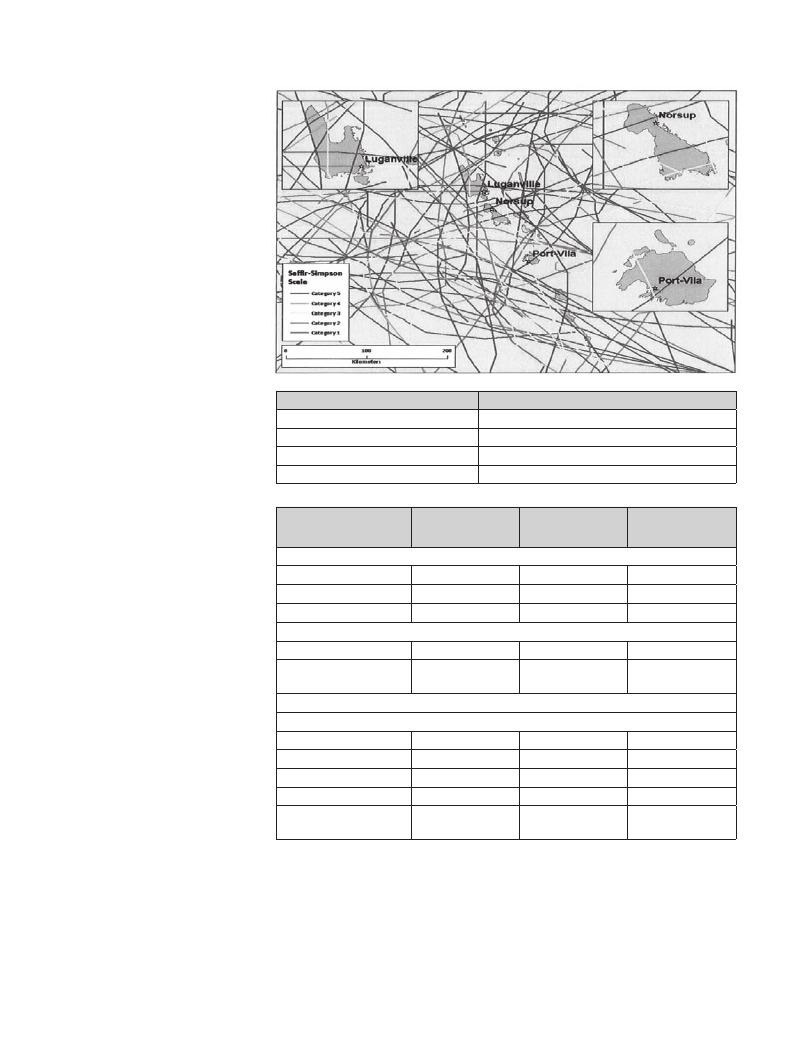
212 / Disaster Risk Management PROGRAMS FOR PRIORITY COUNTRIES EAST ASIA AND PACIFIC
The following figure shows the path
of tropical cyclones that affected
Vanuatu since 1945. The color of the
path reflects the intensity of the storm
(reference: World Bank and SOPAC,
2008). A similar map is available for
historical earthquake activity in Vanu-
atu since 1945.
The following table shows the mean
return period for a tropical cyclone
of the given Saffir-Simpson category
passing within 100 km of Port Vila
(reference: World Bank and SOPAC,
2008).
The following table summarizes the
risk profile for Vanuatu due to future
tropical cyclones and earthquakes.
The effect of climate change is not
included. In addition to direct losses,
which reflect the cost needed to re-
pair or replace the damaged assets,
the table lists the emergency losses.
These are the expenditures that the
Vanuatu government may need to
sustain in the aftermath of a natural
catastrophe, to provide necessary re-
lief and conduct repair activities such
as debris removal, setting up shelters
for the homeless or supplying medi-
cine and food. The emergency losses
are estimated as a percentage of di-
rect losses (reference: World Bank
and SOPAC, 2008).
Saffir-Simpson Category
≥1
≥2
≥3
≥4
Mean Return Period (years
2
4
16
400
Mean Return
Period(years)
50
100
Risk Profile: Tropical Cyclones
Direct Losses
(USD million)
43
49
(% GDP)
9%
11%
Emergency Losses
(USD million)
10
11
(% of total government
expenditures)
11%
12%
Risk Profile: Earthquake and Tsunami
Direct Losses
(USD million)
35
48
(% GDP)
8%
11%
Emergency Losses
(USD million)
7
9
(% of total government
expenditures)
7%
10%
250
57
13%
13
14%
57
13%
11
12%

VANUATU / 213
A map showing population and building stock (residential, commercial, industrial and public assets) exposure for Vanuatu
has been compiled. The exposure distribution is color coded by concentration of replacement value.
Early Warning
Vanuatu has the capacity to undertake accurate one, three to five, ten day and seasonal forecasts. The
Weather Forecasting Section of the Vanuatu Meteorological Service consists of eight staff. The Section is located at
the Head Office and operates 18 hours a day, 7 days a week. The Section also houses the Vanuatu Tropical Cyclone
Warning Center (VTCWC), which is responsible for disseminating tropical cyclone warnings to the public if and when a
cyclone enters Vanuatu’s area of responsibility.
The primary purpose of the Weather Forecasting Section is to provide daily weather forecast to the public,
daily marine weather forecast to the mariners, provide aviation forecast and provide warnings for severe
weather events. The center is also temporarily responsible for disseminating Tsunami information and advisories to
the public.
The islands do no current have adequate Doppler radar coverage and there is need for extended coverage
of the hydro-met centers, particularly to cover the rainfall data collection. Vanuatu does have real time data
communications. For sea level monitoring – tide gauges throughout the region which give tide measures, pressure, wind
speed and direction and sea surface are linked to the Australian National Tidal Facility in Adelaide. This was established
as part of the South Pacific Sea Level and Climate Monitoring Project.
HFA Priority # 3: Use of knowledge, innovation, and education to build a culture of safety and
resilience at all levels
Information Management and Exchange
The Meteorology and Geohazard Departments provide relatively timely information to the public. For example,
the forecasting section of the Meteorology Department provides advice based on analysis of situation then an advisory
or warning is issued by the Director of Meteorology Dept which is provided to radio and TV and then disseminated
throughout the country. Cyclone warnings are issued at every stage from every three hours down to every hour.
Education and Training
While the NDMO has had a public hazard and preparedness awareness program, resources are limited
and provide for only one province to be covered each year. One day workshops are also run for government and
provincial officers for preparedness for the cyclone season and the Geohazards department runs awareness programs
across the country from time to time. Risk reduction and climate change awareness is being added to these programs
but guidance on practical application is very limited. Within the Ministry of Education, there is an element of disaster risk
reduction/disaster risk management being discussed for potential inclusion in curriculum development nation-wide, with
potential support from UNESCO for treating Vanuatu as a pilot application.
HFA Priority # 4: Reduction of the underlying risk factors
Mainstreaming Disaster Risk Reduction integration into land use, zoning, building codes,
location and construction of public infrastructure
The NAP will develop policies and legislation which would create the enabling environment for mainstreaming
through a 10 year program. However, it is still awaiting funding. Disaster risk management is not incorporated into
the national land use law but the Land Reform Policy which is currently under development will lead to a five-year action

214 / Disaster Risk Management PROGRAMS FOR PRIORITY COUNTRIES EAST ASIA AND PACIFIC
plan that includes land-use zoning maps and vulnerable area mapping, addressing both disaster risk reduction and
climate change adaptation. Disaster risk reduction is not addressed in provincial level planning. This issue is recognized
in the policies being developed for climate change adaptation and is contained in the NAP for disaster risk reduction.
Few initiatives are underway to ensure that development is undertaken in a sustainable manner as regards
disaster and climate risks. Tourism is fast growing sector in the country and, as a main contributor to the economy. is
seen as a viable pilot for disaster risk reduction in sustainable development.
Private Sector involvement in Disaster Risk Management
The limited private sector involvement focuses on delivery of relief supplies following natural disasters but
there is no regular mechanism to involve the private sector in disaster risk management. Once a year, there
is a designated disaster week in which the private sector and NGOs participate in raising awareness. The NDMO has
had a public hazard and preparedness awareness program for a number of years, principally run as the annual National
Disaster Day with support from the Meteorological Service and the Ministries of Education and Health.
Risk Financing Framework
There is budget line item in the national government budget for disaster risk reduction but the NTF is currently
in abeyance awaiting funding at both the national budget level and through donor contributions. A Council
of Ministers (COM) commitment of Vt 25million (approximately US $225,000) to initiate the Program Management Unit
for the NAP did not reach the appropriation commitment through lack of sponsorship and so did not reach donors for
consideration of the wider package. For their part, in-country donors said they would not have considered it a priority for
bi-lateral funding but were aware of it as a regional issue, according to a World Bank assessment.
Vanuatu does not have a national disaster relief reserve fund. The national planning office in the Department of
Social and Economic Planning has had the role of monitoring budget developments against Government decisions. They
did not have disaster risk reduction or climate change adaptation in their checklist and saw these as the responsibility
of specific departments.
There is no disaster insurance scheme in place. A pilot was initiated with support from the World Bank and
AusAid and concluded that it would more beneficial to have a regional disaster insurance system because
of the high cost of a national scheme. Current legislation does not require the government to cover to public
assets. According to ND Act, “A person (“first mentioned person”) may not bring legal proceedings against the State,
a Minister or any other person or body for any damage, loss, death or injury sustained: (a) during a state of emergency;
and (b) because of anything done or omitted to be done in good faith under this ACT by an emergency services officer,
a volunteer, a police officer or any other person acting in accordance with this Act.”
HFA Priority # 5: Strengthen disaster preparedness for effective response at all levels.
Emergency Management
The country’s hazard monitoring departments - the Geohazard and Mines and the Meteorology Department
- are linked to the NDMO through the DDC, and are all departments are expected to be housed under one
roof in 2009. The country does not currently have academic research institutions designated to studying different
hazards. The Meteorological Service has primary responsibility for climate-related data and analyses, and sees the
expansion of climate data monitoring as a high priority.
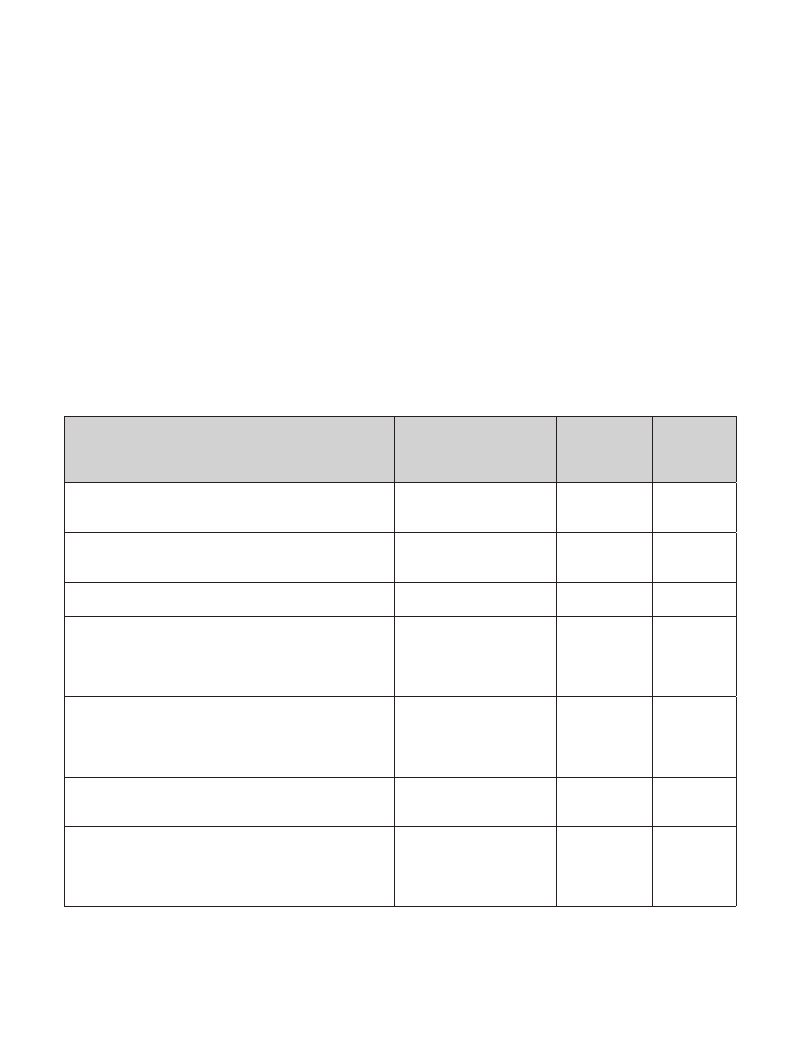
VANUATU / 215
Vanuatu holds annual emergency simulation exercises.
Communications.
While the national emergency management function possess a communications system, the information
management system is weak. For weather related risks, the Meteorological Department issues warnings while NDMO
issues evacuation orders, and NDMO convenes meeting of the NDC if necessary. The Geohazard Department also
provides warnings and advisories on seismic activity and NDMO oversees evacuation.
Damage and Loss Assessment
Currently there are no procedures or capacity for systematic, consistent collection of damage and loss
data following disasters – reports based largely on anecdotal information are available for some disasters.
The consequence lack of impact data is a constraint to economic analyses of the benefits of disaster risk reduction and
climate change adaptation, evaluation of benefits and costs of risk reduction, and therefore investments by government
and donors in disaster risk reduction and climate change adaptation.
4.key donor engagements
Existing Projects with Donors and International
Financial Institutions
Pacific Catastrophe Risk Pool Feasibility Study (Cook
Islands, Fiji, Papua New Guinea, Samoa, Solomon Islands,
Tonga, Tuvalu, Vanuatu )
Sustainable management through reduced risk from
disasters and climate (Fiji, Kiribati, Marshall Islands, Papua
New Guinea, Solomon Islands, Timor-Leste, Vanuatu )
Disaster Management in Marginal Communities of Port Villa
Pacific Islands Disaster Assistance Program (PDAP): The
Cook Islands, Fiji, Kiribati, Niue, Palau, Papua New Guinea,
Samoa, Solomon Islands, Tonga, Tuvalu, and Vanuatu ,
Federated States of Micronesia and the Republic of the
Marshall Islands.
Reducing Vulnerabilities of Pacific ACP States
(Fiji, Kiribati, Papua New Guinea, Samoa, Solomon
Islands, Tonga, Tuvalu , Vanuatu., Cook Islands, Federated
States of Micronesia, the Marshall Islands, Nauru,
Niue and Palau).
Integrated Coastal Management in the Pacific
Pacific Islands Climate Change Assistance Program
(PICCAP), (Cook Islands, Federated States of
Micronesia, Fiji, Kiribati, Marshall Islands,
Nauru, Samoa, Solomon Islands, Tuvalu
and Vanuatu)
Funding Agency /
International Partners
World Bank
Allocated
Budget and
Period
(US$)
2008 - present
$400,000
World Bank
2008 – present
$1,900,000
DFID
USAID/OFDA
1995-present
$3,906,813
$4,001,756.
1995-present
HFA
Activity
Area(s)
1,2,5
2,3,4,5
1,2,3,4
5
SOPAC/EU
2003 –present Not available
$2,797,329
Pacific Regional
Environmental Programme
(SPREP)
Not available
SPREP
1997-present
4
(Cont.)
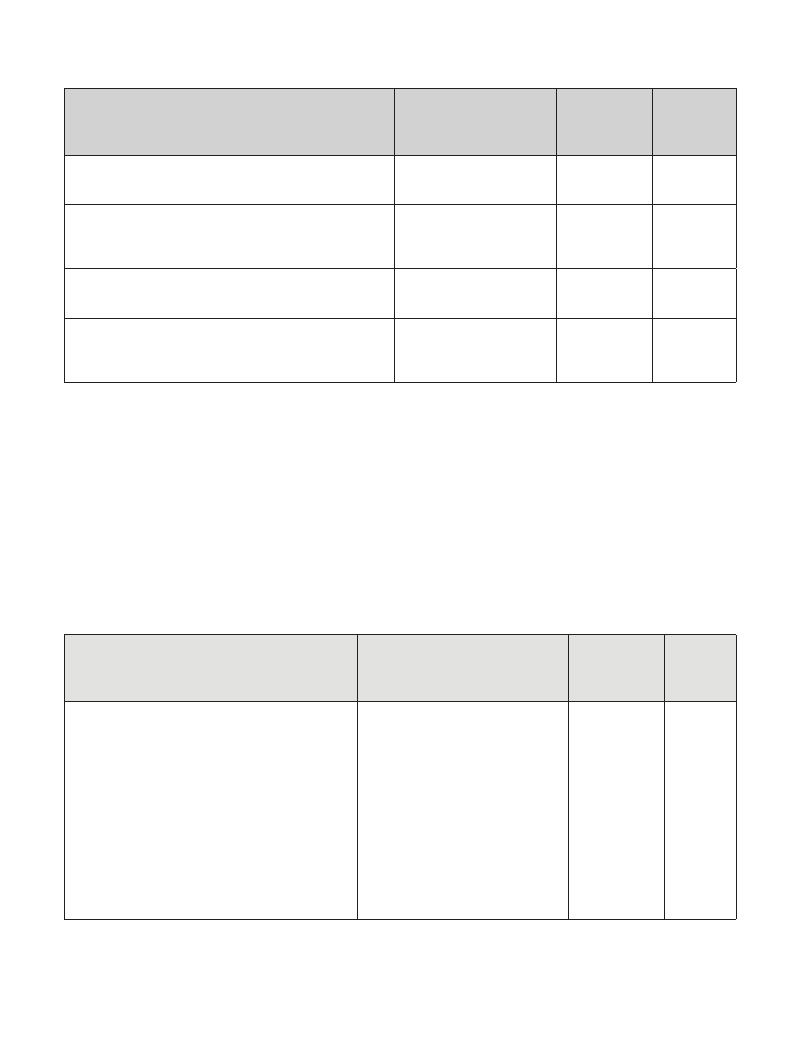
216 / Disaster Risk Management PROGRAMS FOR PRIORITY COUNTRIES EAST ASIA AND PACIFIC
Existing Projects with Donors and International
Financial Institutions
The Millennium Challenge Account
Environmental sustainability mainstreamed into regional and
national policies and planning frameworks Federated States
of Micronesia, Fiji, Kiribati, Nauru, Palau, Marshall Islands,
Solomon Islands, Tonga, Tuvalu, Vanuatu);
Pacific Islands Climate Prediction Project
(Cook Islands, Fiji, Kiribati, Niue, Samoa, Solomon Islands,
Tonga, Tuvalu, Vanuatu, Papua New Guinea)
South Pacific Sea Level and Climate Monitoring Project (Cook
Islands, Federated States of Micronesia (FSM), Fiji, Kiribati,
Marshall Islands, Nauru, Papua New Guinea (PNG), Samoa,
Solomon Islands, Tonga, Tuvalu and Vanuatu.)
Funding Agency /
International Partners
United States
UNDP
AUSAID and the Australian
Bureau of Meteorology
AUSAID
Allocated
Budget and
Period
(US$)
2006 – 2011
US$65.69
million
2008 - 2012
$16,831,000
AUS $ 5.5
million
2004 - present
1991 - 2010
HFA
Activity
Area(s)
1,4
2
2,5
5.global facility for disaster reduction and recovery (gfdrr):
action plan
The proposed next round of GFDRR activities will build recommendations from the country specific and regional work
undertaken under prior GFDRR projects (such as the NAPA stock-take and pilot catastrophe insurance activities).
Considering the country’s available resources, existing capacities, operational plans and procedures, specific priorities
of national authorities, identified gaps and also taking into consideration projects which may be covered under other
regional activities (such as the Pacific Catastrophe Risk Initiative and the pipeline NZ funding for early warning system
upgrades), the following key activities are proposed for the next round of funding:
Indicative Program for GFDRR Funding
(Projects and engagement areas being
considered for GFDRR funding)
Risk Mapping to Support Town Planning and Village
Development
Support a demonstration programme for the
communities of Luganville and the Mele-Teouma Plains
to:
1. Identify and map all hazards including potential
changes in climate variability
2. Assess vulnerabilities and engage with communities
in assessing risks
3. Establish development zones and other risk
mitigation measures for community assets and
infrastructure
4. Develop disaster management arrangements and
warning arrangements for flooding and storm surge
Implementing Agency /
International Partners
Ministry of Lands and Natural
Resources with Geohazards,
Rural Water Resources, Meteorological
Service, Municipalities, French, Vanuatu,
and Mele Red Cross Societies, Ports,
SOPAC
Indicative
Budget and
Period
(US$)
3 years
$ 1.6 million
HFA
Activity
Area(s)
2,4
(Cont.)

VANUATU / 217
Indicative Program for GFDRR Funding
(Projects and engagement areas being
considered for GFDRR funding)
Support to the NAP Implementation and its
integration with arrangements for CCA in the
NAPA.
Priority activities:
1.Address issues of integration of arrangements
for DRM and CCA and establish a management
structure for implementation of the NAPA and NAP
2. Support the TA role over two years to facilitate the
initial implementation.
3.Address funding issues for the on-going
implementation of the NAP
Promote disaster risk reduction and CCA in the
tourism sector for Vanuatu
Priority activities
1. Prepare hazard risk profiles for a range of existing
tourism facilities for key areas, including exposure to
climate change related risks in order to understand
the extent of risk exposure.
2. Develop a development guideline for future tourism
developments to address this risk exposure (which
has the potential to severely impact the industry
nationwide). The guideline should address:
3. Promulgating application of the guidelines in order
to demonstrate the benefits of DRR and CCA to
tourism developments and to promote nation-wide
application
Support for Ministry of Lands in reforming Land-
Use Policy and Regulation
Priority Activities
1. Develop a strategic framework for a land-use
regulatory regime related to risk, including provincial
and community consultation
2. Develop and implement an action plan to meet the
needs of the project.
3. Develop land-use policy framework and link all
Vanuatu islands in a common regulatory regime.
4. Championing, adoption and demonstration through a
pilot zoning program on one island
5. Carry out provincial and community awareness and
implementation program
Support the Ministry of Internal Affairs to
establish appropriate building code
Priority activities
1.Encourage the revision of existing and development
of new building codes, standards, rehabilitation and
reconstruction practices
2.Reinforce the capacity to implement, monitor and
enforce such codes, through a consensus-based
approach, with a view to fostering disaster-resistant
structures.
Implementing Agency /
International Partners
Dept of IA, with National Task
Force and NDMO, NACCC and
Meteorological Service
National Tourism Development Office
with NACCC, Met Service
Ministry of Lands and Natural
Resources
Dept of IA, with National Task Force
and NDMO and NACCC
Indicative
Budget and
Period
(US$)
2 years,
$1.3 million
2 years,
$475,000
3 years,
$480,000
2 Years,
$300,000
HFA
Activity
Area(s)
1,2,4
2,4
1,4
(Cont.)

218 / Disaster Risk Management PROGRAMS FOR PRIORITY COUNTRIES EAST ASIA AND PACIFIC
Indicative Program for GFDRR Funding
(Projects and engagement areas being
considered for GFDRR funding)
Reduce energy risk by lowering dependency
on imported fossil fuels through greater use of
renewable energy
Priority activities
1.Support the Ministry of Lands to Implement the
Action Plan of the Energy Policy Framework
2. Develop a Renewable Energy Strategy
Support the Ministry of Infrastructure & Public Utilities
to Identify key infrastructure for strengthening (roads
and bridges, buildings, water storage facilities, etc.)
Implementing Agency /
International Partners
Ministry of Lands and Natural
Resources and NACCC
Ministry of Infrastructure & Public
Utilities
Indicative
Budget and
Period
(US$)
3 Years
$400,000
HFA
Activity
Area(s)
3 Years
$445000
Priority activities
1.Support the development of a regulatory regime
related to risk, including provincial and community
consultation
2. Develop and implement an action plan to meet the
needs of the project.
3. Develop land-use policy framework and link all
Vanuatu islands in a common regulatory regime.
4. Championing, adoption and demonstration through a
pilot zoning program on one island
5. Carry out provincial and community awareness and
implementation program
6. Ensure that all new World Bank infrastructure
activities integrate disaster risk reduction measures
Total Budget Requested:US$ 5 million

VANUATU / 219
bibliography
Bettencourt, Sofia, Richard Croad, Paul Freeman, John Hay, Roger Jones, Peter King, Padma Lal, Alan Mearns, Geoff
Miller, Idah Pswarayi-Riddihough, Alf Simpson, Nakibae Teuatabo, Ulric Tritz, Maarten Van Aalst ‘Not If, But When:
Adapting to Natural Hazards in the Pacific Island Region’ The World Bank. 2005
Dilley, Max, Robert S. Chen, Uwe Deichmann, Arthur L. Lerner-Lam, and Margaret Arnold ‘Natural Disaster Hotspots; A
Global Risk Analysis’ World Bank 2005
EM-DAT: OFDA/CRED International Disaster Database, Catholic University of Louvain, Brussels, Belgium 2009
Framework for Action 2005-2015: An Investment for Sustainable Development in the Pacific Island Countries Disaster
Risk Reduction and Disaster Management; Building the Resilience of Nations and Communities to Disasters.
Global Fund for Disaster Risk Reduction Vanuatu Country Assessment
Government of Vanuatu, National Disaster Plan 2004
Government of Vanuatu Supplementary PAA (Priorities and Action Agenda), 2006
Government of Vanuatu. Provisional Indicative Implementation Programme (PIP) 2008 -2010., 2007
Government of Vanuatu National Adaptation Program of Action
Government of Vanuatu Priorities and Action Agenda 2006-2015 “An Educated, Healthy and Wealthy Vanuatu”,
Department of Economic and Sector Planning, Ministry of Finance and Economic Management June 2006 (Medium
Term Development Plan)
Government of Vanuatu National Disaster Act No. 31 of 2000
Hyogo Framework for Action 2005-2015: I S D R International Strategy for Disaster Reduction
Priorities and Action Agenda 2006-2015 Supplementary for Mainstreaming Disaster Risk Reduction and Disaster
Management
Sikivou Mosese What do Pacific Developing Member Countries Want from Catastrophe Insurance, Pacific Islands
Applied Geoscience Commission, National Catastrophe Risk Insurance Mechanisms for Asia and the Pacific, November
4-5, 2008, Tokyo, Japan
UNDP ‘Human Development Index’ 2007
UNDP Country Background 2009
UNISDR, Living with Risk: A Global Review of Disaster Reduction Initiatives 2002
The World Bank (Draft ) Vanuatu National Action Plan (for Disaster Management) Country Risk Profile prepared the
World Bank and SOPAC under the Pacific Catastrophe Risk Financing Initiative
The World Bank (Draft) Pacific Catastrophe Risk Financing Initiative 2009
The World Factbook 2009

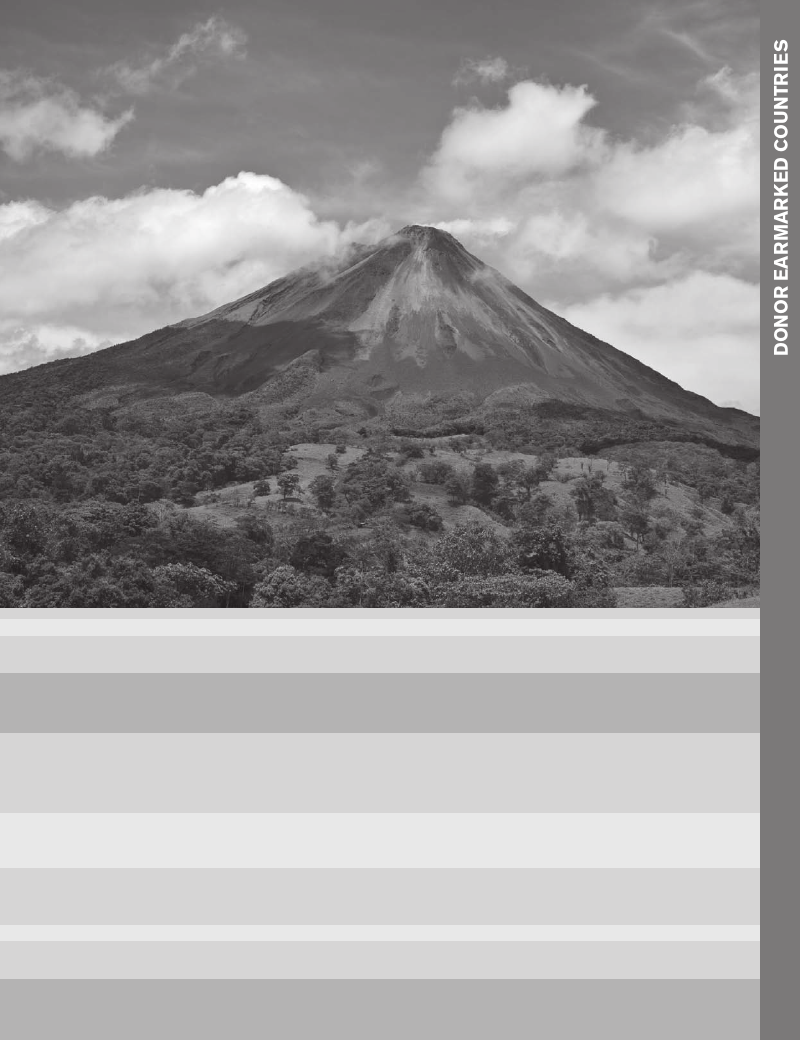
DISASTER RISK MANAGEMENT
Latin America & Caribbean
Colombia / Costa Rica / Ecuador / Guatemala
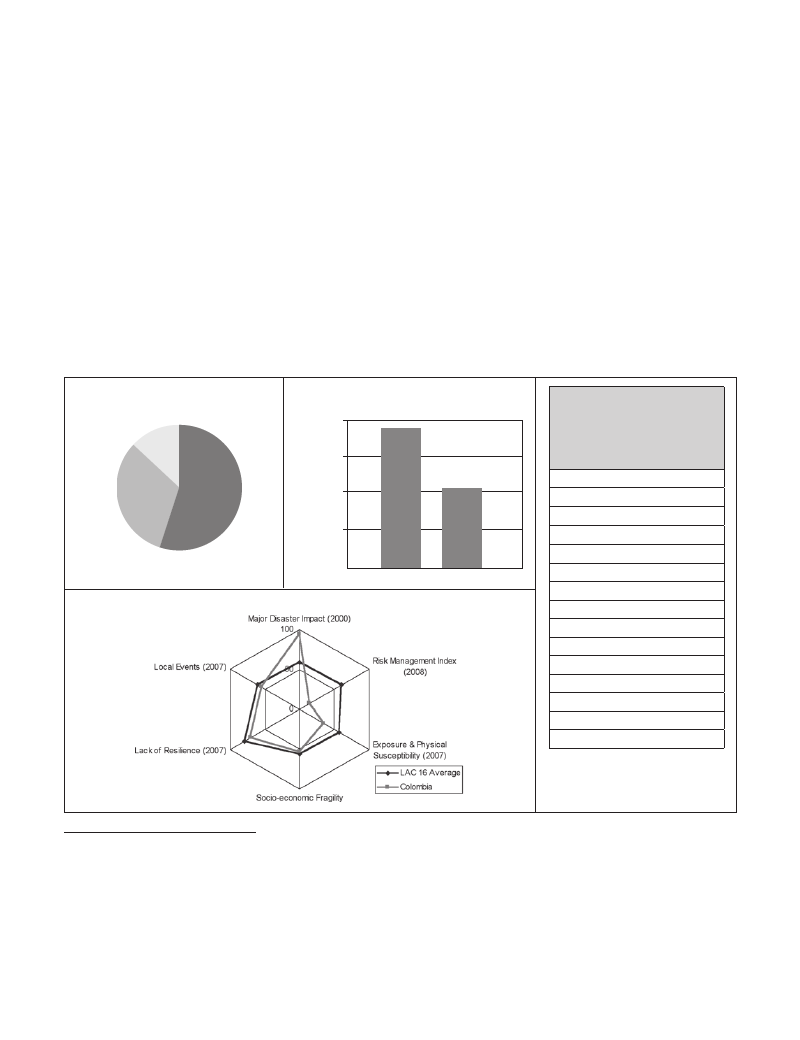
222 / Disaster Risk Management PROGRAMS FOR PRIORITY COUNTRIES LATIN AMERICA & CARIBBEAN
colombia
1. disaster risk profile
Colombia has the 10th highest economic risk to three or more hazards in the world according to the Natural
Disaster Hotspot study by the World Bank. 84.7% of Colombia’s population and 86.6% of its assets are located
in areas exposed to two or more natural hazards. The exposure is to both low-frequency high-impact events such as
earthquakes, volcanic eruption, and an occasional Atlantic hurricane, and to high-frequency but lower-impact events,
such as floods and landslides. Climate change is already thought to exacerbate flooding and landslides in large parts of
the country.
Population Affected
by Disaster Type2
Landslides
13%
Economic Damages by Disaster Type
(1000s USD)2
80000
60000
Drought
32%
40000
Flood
55%
20000
0
Storm
Relative Vulnerability and Risk Indicators3
Flood
COUNTRIES
MOST EXPOSED
TO MULTIPLE HAZARDS
(Top 15 Based on Land Area
with 3 or more hazards)1
1. Taiwan, China
2. Costa Rica
3. Vanuatu
4. Philippines
5. Guatemala
6. Ecuador
7. Chile
8. Japan
9. Vietnam
10. Solomon Islands
11. Nepal
12. El Salvador
13. Tajikistan
14. PANAMA
15. Nicaragua
1See World Bank, Natural Disaster Hotspots, A Global Risk Analysis (Washington, DC: Disaster Risk Management Series, 2005), table 7.2.
2See World Bank, Natural Disaster Hotspots, A Global Risk Analysis (Washington, DC: Disaster Risk Management Series, 2005), table 7.2.
3 EM-DAT: OFDA/CRED International Disaster Database, Catholic University of Louvain, Brussels, Belgium, online at: www.emdat.net
3Relative Vulnerability and Risk Indicators are adapted from IADB-IDEA (2007), Programa de Información e Indicadores de Gestión de Riesgos
(Manizales, Colombia, 2004), Annex (2009). Values are normalized on scale of 0 – 100 and presented against the average for 16 LAC countries
found in IADB-IDEA (2007). Major Disaster Impact taken from Disaster Deficit Index: the ratio of economic losses which country could suffer
during a Maximum Considered Event and its economic resilience. Local Events taken from Local Disaster Index: Represents the propensity of a
country to experience recurrent, small-scale disasters and their cumulative impact on local development. Risk Management Index is presented as
the negative (ie 0 = optimal, 100 = incipient) of IADB’s Risk Management Index: measures country’s risk management capability in (i) risk identifi-

colombia / 223
Geological Hazards
Most of Colombia, including all major urban areas, is located in zones of high or very high seismic activity.
Colombia is situated on the confluence of three tectonic plates - the Nazca Plate, the Caribbean Plate, and the South
American plate and is traversed by various geological fault lines: the Romeral fault line, Cauca and Magdalena, and
Palestina and Frontal de la Cordillera Oriental.4
There are six active volcanoes in Colombia distributed along the central mountain range of the country.
The six active volcanoes are: Nevado de Ruiz, Galera, Dona Juana, Purace, Tolima, and Huila. Galera and Huila have had
eruptions in the last three years causing severe damages and forcing significant evacuations.
Floods and Landslides
Large parts of Colombia’s territory are susceptible to flooding, especially in the lower basins and valleys of
the principal rivers: the Magdalena, Cauca, Sinnu, Atrato, and Putumayo. These regions are susceptible to flooding,
as demonstrated by the area’s topography and previous events that have occurred.
Landslides are the most frequently occurring disasters in the country. This is partly due to the topography
of the country, but a higher number can be attributed to hydrological phenomena. The main causes stem from
the softening of the ground from heavy rains and the flooding of bodies of water. The Natural Disaster Hotspot study
by the World Bank5 indicates that Colombia has the highest landslide risk in the South American region, in terms of the
number of fatalities per year per square kilometer.
Determinants of Vulnerability to Adverse Natural Events in Colombia
Rapidly increasing urban population has concentrated exposure to adverse natural events. As is the case in
most Latin American countries, Colombia has seen a large increase in its urban population in the last fifty years. From
1950 to 2005, the percentage of Colombia’s population living in urban areas increased from 39% to 73%6, and it is
projected that by 2020, 80% of the population, or approximately 43 million people, will live in cities. This trend will bring
with it important economic, social, and environmental challenges. 7 In Colombia, the seven most important cities house
40% of the country’s households and 60% of total household income.8 The biggest city is by far Bogota, accounting for
18% of households and 30% of the nation’s household income generation.
Unplanned urban growth has disproportionately increased Colombia’s vulnerability to adverse natural
events. Most Colombian cities have followed an unplanned growth pattern. Some of the most important challenges
in urban areas include: the predominance of unplanned expansions, a sharp increase in informal settlements, lack of
adequate construction practices, environmental degradation, poor transport infrastructure, and a lack of adequate public
spaces.
Informal settlements are a physical and spatial manifestation of poverty and inequality in cities. According
to the latest census conducted in 2005, in four of Colombia’s main cities, 18% of the residential area corresponds to
informal settlements. These areas usually suffer from a lack of basic and social services and from prevalent unemployment.
Currently close to 1.3 million homes in the country are in this situation (affecting 16% of the total urban families in
cation (ii) risk reduction (iii) disaster management (iv) financial protection. Resilience, Fragility and Exposure are taken from the component indices
of Prevalent Vulnerability Index.
4IADB (Inter-American Development Bank) and IDEA (Universidad Nacional de Colombia - Instituto de Estudios Ambientales), Programa de Infor-
mación e Indicadores de Gestión de Riesgos. Aplicación del Sistema de Indicadores a Colombia 1980-2000 (Manizales, Colombia, 2004).
5 World Bank, Natural Disaster Hotspots, A Global Risk Analysis (Washington, DC: Disaster Risk Management Series, 2005).
6 DANE (2005).
7National Planning Department, Document on amicable cities, (Departamento Nacional de Planeación, Documento Ciudades amables) (Bogotá,
Colombia, 2006).
8Including Bogota, Medellín, Cali, Barranquilla, Cartagena, Bucaramanga, and Pereira.

224 / Disaster Risk Management PROGRAMS FOR PRIORITY COUNTRIES LATIN AMERICA & CARIBBEAN
Colombia). Of these homes, 63% suffer from poor construction quality, and 20% are located in high risk areas. It has
been estimated that 17% of homes are in such inadequate quality or high risk that it is not possible to retrofit them.
Colombia has made substantial progress through important urban reforms and comprehensive legislation
on territorial planning,9 but implementation of these laws has been weak. For example, by 2005, eight years
after the Territorial Planning Law # 388 passed in 1997, 97% of all the municipalities in the country and every major city
with more than 100,000 inhabitants had adopted a Territorial Organization Plan (POT). The quality of the POTs varies
substantially—there are a few very high-quality plans, and most are weak. Only a few of these plans have implemented
the management and financial tools made available by the legislation. For most, the relation between the POT and the
Municipal Development Plans is not very clear. The Government of Colombia is working to change the perception of
the POTs so that they are understood as a valuable tool for long-term planning and not just another document to comply
with.
2. disaster risk management framework
Colombia is widely considered a leader in instituting a policy and legal framework that enables a
comprehensive, multi-sectoral approach to disaster risk management. Colombia has built a National System for
Disaster Management and Prevention, articulated around a comprehensive National Disaster Prevention and Attention
Plan. Since the early 2000s, Colombia has decentralized disaster risk management responsibilities and made disaster
risk management a national development priority.
Under the presidency of Alvaro Uribe, the Government of Colombia has integrated disaster risk management
into its development plans. Chapter 5 of the National Development Plan 2006-2010 presents and describes the
areas of actions for disaster risk management: (i) to develop policies and strengthen institutions, (ii) to identify and
monitor risk and to disseminate its knowledge, (iii) to reduce and prevent risk, and (iv) to reduce fiscal vulnerability using
risk transfer instruments. These efforts need to continue to be supported and enhanced to ensure long-term, effective
disaster risk management in Colombia.
Investments in disaster risk management, including risk reduction, are done at three levels in Colombia
involving the national government, departmental governments, and municipal governments. Significant investments are
also carried out by the agencies dedicated to infrastructure.
For both hydrometeorological and geological hazards, Colombia is probably the most densely monitored
country in Latin America. At the same time Colombian experts and their graduate-level trainees in disaster risk
management have played an important role in developing a knowledge base and a political space for disaster prevention.
The country is a leader in such risk-reduction approaches and measures such as the introduction of building codes and
enforcement, municipal programs, and the integration of science and technology with public policy making.
In spite of great progress, the task remains to address existing disaster risk through corrective actions, while
simultaneously improving planning processes to avoid unreasonable accumulation of new vulnerability.
For a country with more than 600 declared natural disasters every year, this is a daunting task that will require continued
and improved attention by the Colombian Government.
9Law 9 on Urban Reform, 1989, and Law 388 on Territorial Development, 1997.

colombia / 225
3. activities under the hyogo framework of action
HFA Priority #1: Policy, institutional capacity and consensus building for disaster risk
management
Colombia has built a National System for Disaster Management and Prevention, articulated around a
National Disaster Prevention and Attention Plan. The system (SNPAD) has its mandate in Law 46 from 1988 and
includes both public and private agencies with responsibilities for risk mitigation and prevention as well as emergency
response and rehabilitation. The system is coordinated by the Directorate of Disaster Prevention and Management
presided over by the Minister of Government. Furthermore, the system has an operative arm coordinated by a National
Operative Committee and a technical/scientific arm coordinated by the National Technical Committee. Vertically, the
system has regional committees presided over by the provincial governors and local committees presided by mayors.
SNPAD is responsible for (a) the prevention and mitigation of risk, (b) attention to emergencies, and (c) the rehabilitation
of territories affected by disasters.
Colombia, through its National System for Disaster Management and Prevention, has been a leader in
instituting a policy and legal framework that enables a comprehensive, multi-sectoral approach to disaster
risk management. The role of Colombian experts and graduate-level trainees in disaster risk management in the
country has been important in this shift and in the effectiveness of this consolidated framework.10 The country is a leader
in such risk reduction approaches and measures as the introduction of building codes and enforcement, municipal
programs, and the integration of science and technology with public policy making.
Since the early 2000s, Colombia has decentralized disaster risk management responsibilities and made
disaster risk management a national development priority. In 2001, recognizing the high cost that disasters
extract from local authorities and the need to encourage investment in disaster mitigation, the national government
created an investment category11 for disaster prevention and response in the list of investments permitted under the
national revenue-sharing system. According to Law 715/2001, Articles 76.5, 76.9, and 79, municipalities can now
elect to spend budgetary transfers on disaster prevention and response. At the close of the Pastrana administration, a
National Policy Statement12 (CONPES, 3146 of December, 2001) followed up on the earlier decree, raising disaster
vulnerability reduction to the level of national development priority for the first time, and stipulating its inclusion in the
National Development Plan.
One institutional challenge for Colombia is to resist pressures to fall back into an emergency focus. To
resist these pressures implies the need to upgrade, integrate, and further consolidate the National System for Disaster
Management and Prevention. Though good work is being done in most institutions in the system, technical capacity
is a limiting factor in several institutions, particularly at local levels, and institutional coordination remains a challenge.
The World Bank, through a disaster vulnerability reduction investment loan is supporting improved inter-institutional
coordination and strengthening capacity building for risk management at local levels.
Despite great progress, the task remains to address existing disaster risk through corrective actions, while
simultaneously improving planning processes to avoid unreasonable accumulation of new vulnerability.
This remains a difficult challenge and will require continued and improved attention by the Colombian Government.
10See resources under La Red at www.desinventar.org.
11Indexing numbers in parentheses refer to the categories assigned in the DNP publication, “Sistema General de Participaciones—Informe de Eje-
cución Presupuestal Municipal Vigencia 2003.”
12 Concejo Nacional de Politica Economica y Social (National Council of Social and Economic Policy), or CONPES, are policy statements issued
by the Departamento Nacional de Planeación (National Planning Department) or DNP.

226 / Disaster Risk Management PROGRAMS FOR PRIORITY COUNTRIES LATIN AMERICA & CARIBBEAN
HFA Priority # 2: Disaster risk assessment and monitoring
Colombia has strengthened information collection and analytic capacity for early warning and risk mapping
related to hydrological, seismic and volcano events. With national budget and technical, as well as financial
support, from the World Bank, the Colombian Institute for Geology and Mining (Instituto Colombiano de geologia y
mineria – INGEOMINAS) and the Colombian Institute for Hydrology, Meteorology and Environment Studies (Instituto
de Hidrología, Meteorología y Estudios Ambientales de Colombia – IDEAM) have purchased and installed equipment to
update existing systems for monitoring catastrophic events. The three regional volcanic observatories and the national
earthquake monitoring network managed by INGEOMINAS are fully operational and provide real-time information and
early warnings also available via the Internet. IDEAM has recently modernized the hydrometeorological monitoring
network, installing close to 500 new automatic stations, in addition to the 2,500 existing conventional stations. This
likely positions Colombia as the most densely monitored country in Latin America. The new stations provide real-time
information on river levels and rainfall through satellite communication used with daily satellite imagery to provide early
warnings on flooding, forest fires land slides. Over the next three years, both agencies will continue to update and expand
their monitoring capacity seeking to enhance coverage by an additional 5-10 percent.
Colombia has improved and organized information and information flows for disaster vulnerability, risk
evaluation, and risk reduction programs. At a national scale, risk maps for the main river basins and for Galeras
volcano have been updated. At the local level, earthquake risk maps have been produced for more than 15 cities
(including Bogota, Medellín, Cali, and Manizales). Urban landslide and flooding maps have been produced for Bogota,
Medellín, Manizales and Bucaramanga. This information is publicly available and has been used for prioritizing investment
in risk reduction, such as relocating communities and retrofitting hospitals in Bogota, conducting land planning and
urban slope stabilization in Manizales, and protecting urban streams in Medellín.
Colombia has worked to build a culture of risk reduction through integration of disaster risk management
in education and research. DGPAD has worked with Colciencia and the National System of Science and Technology
(Sistema Nacional de Ciencia y Tecnología, SNCyT) to develop a strategy, adopted in 2002, to strengthen science and
technology for disaster risk management. The strategy was adopted in 2002. DGPAD has also worked with the Ministry
of Education to include risk management into environmental education.
The National Planning Department (DNP) is working with the World Bank on a proposal to expand the
Central America Probabilistic Risk Assessment system (CAPRA) to cover Colombia. This would help facilitate
a comprehensive understanding of risk and risk management. CAPRA provides a broad set of sectors with a baseline
catalogue of data required for risk evaluations, in addition to reference methodology and interactive software tools to
support risk identification and applications for risk analysis. This will help establish standards for sharing data and a
common language for understanding risk. The applications CAPRA supports are adjusted to the needs of each sector
and user, such as emergency response, land use planning, investment in mitigation, or financial protection strategies. The
transparent nature of the models and open architecture of the CAPRA system ensure that future users can understand,
adjust, and continue to evolve their tools as their needs change.
HFA Priority # 3: Use of knowledge, innovation, and education to build a culture of safety and
resilience at all levels
One of the reasons for Colombia’s relative success in moving towards a proactive disaster risk management
institutional environment is the existence of a human capital base with the appropriate technical training.
There are at least 10 higher education institutions in Colombia that offer post-graduate training and specialization in
risk management. At primary and secondary school levels, the curricula include concepts and good practices for risk

colombia / 227
management. The legal basis for the inclusion of disaster risk management in school curricula is the 1991 Constitution.
The school curricula have gradually been improved, in particular since the promulgation of the National Policy for
Environmental Education (2002). The Government of Colombia has developed and implemented various tools and
strategies to train teachers and community leaders to incorporate disaster risk management in the school curriculum.
HFA Priority # 4: Reduction of the underlying risk factors (reduction of exposure and vulnerabil-
ity and increase of resilience)
Corrective action to address existing disaster risk is one of Colombia’s main disaster risk challenges.
Investments in risk reduction can involve both structural mitigation works, such as seismic retrofitting, and nonstructural
investments, such as relocating people from high-risk areas. Most often these decisions should be made at a decentralized
level, as close as possible to the assets and people at risk. Given that the legal responsibility for disaster risk reduction
has been placed with the municipalities and the relatively high quality of its risk identification information, the basic
conditions then exist for municipalities to make significant and efficient investments in disaster risk reduction. With such
a high exposure to natural hazards, the political challenge is to define the acceptable level of risk and to finance the
mitigation of the unacceptable risk.
Investments in disaster risk management including risk reduction are done at three levels in Colombia
involving the national government, departmental governments, and municipal governments. Compared to the national
government, municipalities invest a larger share of their total disaster risk management budgets in preventive work. The
highest volume of investments in risk reduction is also done by municipalities through their regular budgets.
In addition to investments by the three levels of core public administration, agencies dedicated to
infrastructure also invest significantly in risk reduction. The Colombian National Institute for Roads (Instituto
National de Vias – INVIAS) is responsible for risk mitigation work related to roads, ports, and riverine infrastructure.
With financing from the World Bank, INVIAS invested more than US$40 million in risk mitigation works in 2007. The
Colombian Oil Company (ECOPETROL) is seeking to retrofit all its critical installations to become seismic resistant.13
Most of the investments in risk reduction in Colombia at the municipal level are done by a handful of the
larger municipal entities. This is a logical consequence of the larger municipalities bearing most of the natural hazard
exposure and possessing the capacity to address the issue. Due to the combination of legal responsibility, capacity
and needs to invest in disaster risk reduction, the larger municipalities in Colombia are currently a good entry point for
promoting risk reduction investments. Both the proposed Bogota River Management Project and the proposed Municipal
Disaster Vulnerability Reduction Project takes advantage of this. The Urban Housing Project is national in scale, but is
planning interventions at the municipal level. GFDRR could play an important role by providing grant funds for integration
of disaster risk reduction in these projects and thereby leverage significant amounts of additional resources for reducing
disaster risk.
Much work still needs to be done in terms of building awareness and capacities among local governments
in smaller municipalities. One indicator of the status is that only 20% of municipalities reporting floods in the period
from 2004 to 2007 have invested in risk reduction measures for flood protection in the same period. This is likely to be
linked to a generally weak capacity for territorial planning. Although 97% of all municipalities in the country has adopted
a Territorial Organization Plan (POT), the quality of the POTs varies substantially—there are a few very high-quality plans,
and most are weak. Only a few of these plans have implemented the management and financial tools made available
13In accordance with the existing Colombian building code, all new construction must be seismic resistant, and existing key public buildings must be
retrofitted or rebuilt to be earthquake resistant (Law 400 of 1997).

228 / Disaster Risk Management PROGRAMS FOR PRIORITY COUNTRIES LATIN AMERICA & CARIBBEAN
by the legislation. For most, the relation between the POT and the Municipal Development Plans is not very clear. Both
the Ministry of Environment, Housing and Territorial Development (MAVDT) and the National Directorate for Disaster
Prevention and Management (DGPAD) have active programs in building capacity and awareness among municipalities
for disaster risk reduction and to integrate risk reduction with the territorial and development planning processes which
the Bank is supporting. These programs, supported by the World Bank through a loan with the National Government,
will expand coverage to reach up to 40% of municipalities in the country over the next three years and thereby form the
basis for more widespread and more effective investments in risk reduction at the municipal level. In addition, the DNP
is monitoring municipal investments in risk reduction to track if the capacity building efforts has any impact on municipal
decision-making with regards to risk reduction.
HFA Priority # 5: Disaster preparedness, recovery and reconstruction at national, regional, and
local levels
In Colombia, the disaster response structure has four levels of organization. Response to a given natural event
starts with the local level determining if the event is of a magnitude that the local response committee can manage or if
help needs to be requested at the municipal, departmental or national level.
The National Directorate of Disaster Prevention and Response since 2006 has been providing training at
local, municipal, and departmental levels through the Local, Municipal and Departmental Committees for Disaster
Prevention and Response. A new plan for training municipalities was approved in 2007 and is under implementation with
support of the APL 1. In 2008, 60 municipalities will be trained and 150 will be trained in 2009.
To test existing capacity, simulations and drills have been carried out in major cities. The latest and largest
exercise was an earthquake simulation in Bogota. First responders, national and district authorities, and the general
population all participated in the exercise as part of the mass prevention campaign “with feet on the ground” (www.
conlospiesenlatirra.gov.co). Bogota has developed advanced disaster recovery plans based on sophisticated and
detailed risk assessment models.
The response capacity of all levels in the system activated at the same time has only been tested once
since its creation. This was in 1999 after the Armenia earthquake, which caused thousands of deaths and a high level
of structural damage. Immediately after the earthquake, the Government of Colombia established the Reconstruction
Fund for the Coffee Region (FOREC). FOREC reported to the Office of the President with the National Planning
Department (DNP) acting as secretariat. FOREC was to finance, execute and coordinate the economic, social and
environmental reconstruction of the disaster-affected region. Judging from the response and reconstruction after the
Armenia earthquake, Colombia has a well functioning response system.
With regard to disaster response, the main challenge for the Government of Colombia is to finance and
rapidly initiate the recovery phase in the aftermath of a natural disaster. The World Bank recently approved
a new Development Policy Loan (DPL) with a Catastrophe Deferred Draw Down Option (CAT DDO) which has been
designed to provide a financing bridge—after a disaster of a scale that cannot be funded with the internal reserve—to
other sources of relief as they become available. As part of a catastrophe risk-financing strategy, this instrument will
provide the Government with bridge financing in response to adverse natural events generating losses beyond the
capacity of the annual budget allocation to DGPAD for responding to disasters.
CONPES 3146 of 1998 raised the issue of the fiscal vulnerability of the state to natural disasters and
identified concerns for the financing of reconstruction should a major catastrophic event occur. Cardona et
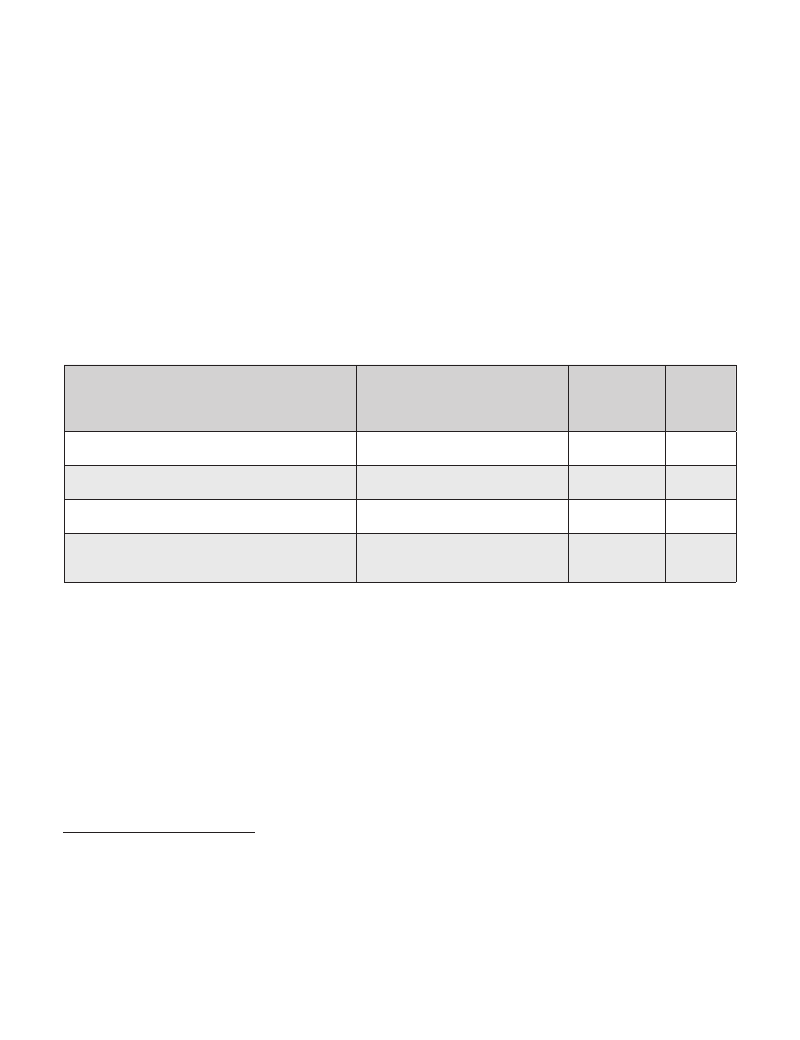
colombia / 229
al. (2005)14 estimate that the Government of Colombia would face a long-term resource gap, that is, a shortfall of funding
available compared to funding needs, if confronted with a disaster with a return period of 100 years.15
The Government of Colombia is working on a series of policy documents related to the retention and
transfer of the residual risk in Colombia. In Colombia, all public buildings are required by law to be insured (Law
No. 42 de 1993). The Ministry of Finance (MHCP) is currently investigating options to design a cost-effective insurance
program for public assets and a catastrophe insurance program for private dwellings. The MHCP has conducted a series
of technical studies on earthquake risk assessment to evaluate the physical damage caused by a major earthquake on
public assets. This complements other studies carried out by the District of Bogota on the impact of earthquakes on
public buildings and private dwellings. These studies, based on state-of-the art catastrophe risk-modeling techniques,
provide the Government of Colombia with very detailed information on earthquake risk assessment.16
4.key donor engagements
Existing Projects with Donors and International
Financial Institutions
Colombia Disaster Vulnerability
Reduction Project
Bogota Disaster Vulnerability Reduction Project
Colombia Disaster Risk Management Development
Policy Loan
Support for DesInventar online disaster database
creation of National online Disaster Prevention and
Management Information System (SIAPAD)
Funding Agency /
International Partners
World Bank
World Bank
World Bank
European Commission through the
PREDECAN project
Allocated
Budget and
Period
(US$)
110 million
2005-2011
80 million
2006-2011
150 million
2009-2012
140,00017
2003-2009
HFA
Activity
Area(s)
1, 2, 3, 4, 5
1, 2, 3, 4, 5
1, 2, 3, 4, 5
2
5.global facility for disaster reduction and recovery (gfdrr):
action plan
Although there have been significant advances in disaster risk reduction, remaining challenges have been
identified based on Colombia’s risk profile and indicative program. Strategic actions are needed in the
following areas to enhance disaster risk management in Colombia: (i) increase awareness and resilience
at local levels, (ii) mainstream disaster risk reduction (DRR) in priority sectors, and (iii) institutionalize
disaster risk financing.
14Omar D. Cardona (2005): “Indicators of disaster risk and risk management: Program for Latin America and the Caribbean,” Inter-American Develop-
ment Bank, Washington, D.C.
15See Annex 9, “Potential Economic Losses of Disasters in Colombia.”
16 These studies include: ERN (Evaluación de Riesgos Naturales), Definición de la responsabilidad del Estado y su exposición ante desastres naturales
y el diseño de mecanismos para la cobertura de los riesgos residuales del Estado (Manizales, Colombia, 2005); CEDERI (Centro de Estudios sobre
Desastres y Riesgos, Facultad de Ingeniería, Universidad de Los Andes), Estrategia para transferencia, retención y mitigación del riesgo sísmico en
edificaciones indispensables de Bogotá, D.C., (Bogotá, Colombia, 2005); and ERN (Evaluación de Riesgos Naturales), Diseño de productos de
transferencia de riesgos en el sector público para incentivar el aseguramiento en el sector privado en Manizales (Manizales, Colombia, 2005).
17 Approximate amount to support Colombia directly, although broader program has larger resource allocations
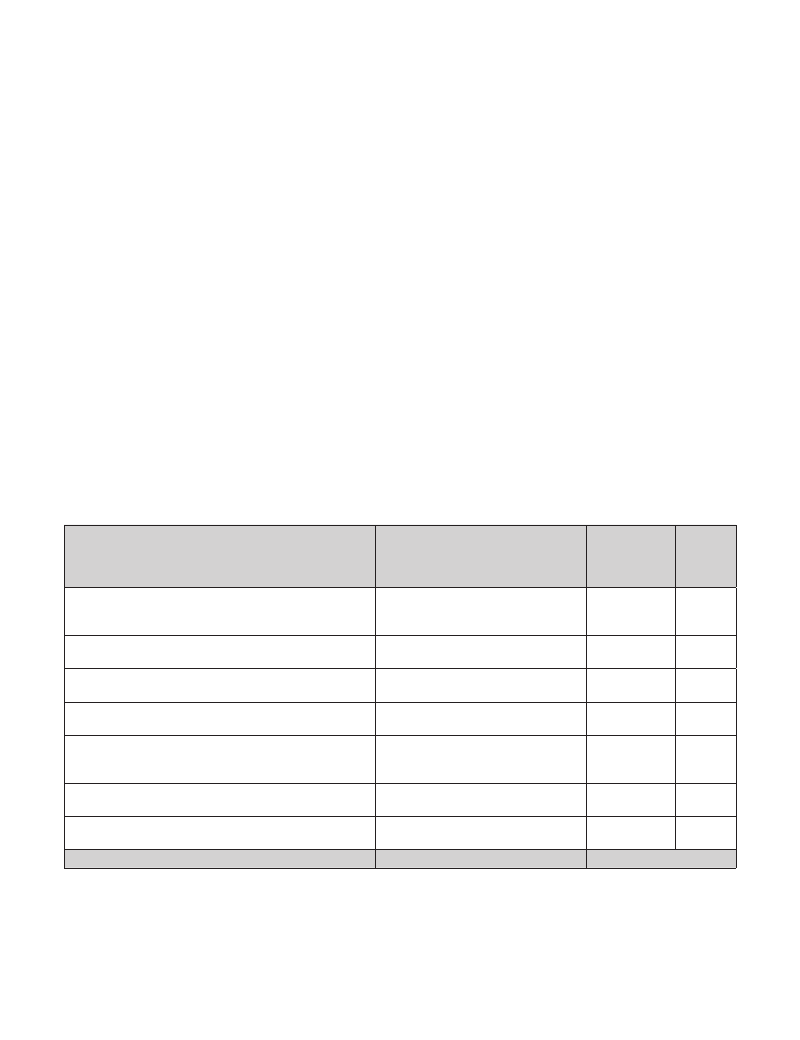
230 / Disaster Risk Management PROGRAMS FOR PRIORITY COUNTRIES LATIN AMERICA & CARIBBEAN
In spite of the important advances in data gathering and knowledge production and some advances in
awareness raising, Colombia still has significant challenges. The main challenge lies in knowledge creation
among decision makers and citizens at local levels. This is critical for improving urban planning processes that will
avoid development patterns that exacerbate vulnerability. Successful implementation of CAPRA will help address this
challenge. GFDRR support for CAPRA would be essential for its success.
Due to the combination of legal responsibility, capacity and needs to invest in disaster risk reduction, the
larger municipalities in Colombia are currently a good entry point for promoting risk reduction investments.
Both the proposed Bogota River Management Project and the proposed Municipal Disaster Vulnerability Reduction
Project take advantage of this. The Urban Housing Project is national in scale, but is planning interventions at the
municipal level. GFDRR could play an important role by providing grant funds for integration of disaster risk reduction in
these projects and thereby leverage significant amounts of additional resources for reducing disaster risk.
While progress has been made to institutionalize disaster risk management in general, work remains for
Colombia to institutionalize its disaster risk financing. A main challenge relates to the risk to private housing. Legally
this is private risk, but in the event of a major disaster, the Government is likely to be called upon as the insurer of last resort.
A solution is being sought that involves collaboration between the national government and key municipalities, as well as
public-private partnerships involving the national and international insurance markets. GFDRR resources would support
work among the Ministry of Finance, the Secretary of Finance of the District of Bogota, as well as the insurance association,
in an attempt to launch an insurance scheme to protect both private and public assets from natural disasters.
The following activities have been identified in consultation with local authorities and reflect HFA priority action areas.
These actions support Colombia’s disaster risk management program.
Indicative Program for GFDRR Funding
(Projects and engagement areas being considered
for GFDRR funding)
Strengthening the policy framework, tools and institutional
coordination of the national system for disaster risk
management
Implementation framework for Climate Change Adaptation
activities focused on disaster risk management
Development of a Risk Assessment Platform for Colombia
(CAPRA)
Preliminary studies to mainstream DRR in the Bogota River
Management Project (estimated at US$600 million)
Mainstream DRR by completing studies for the inclusion of
disaster risk management in the Colombia Housing Policy
Project (estimated at US$300 million)
Municipal Disaster Vulnerability Reduction Project
Implementing Agency/
International Partners
National Planning Department,
Directorate of Disaster Prevention and
Management
National Planning Department
Directorate of Disaster Prevention and
Management
Ministry of Environment Housing and
Territorial Development
Ministry of Environment Housing and
Territorial Development
Municipality to be determined
Insurance of public assets and risk financing
Municipality of Bogota
Total Budget Requested:
Indicative
Budget and
Period
(US$)
800,000
2010-2011
HFA
Activity
Area(s)
1
500,000
2010-2011
914,000
2009-2011
600,000
2009-2010
620,000
2009-2010
1, 2,3
2, 3
4
4
1.2 million
4
2010-2011
200,000
5
2009
US$ 4.834 million
In addition to the above-mentioned activities, opportunities are under consideration to maximize South-South cooperation
in the Andean countries with key participation of Colombia. Continued dialogue with the Government of Colombia
will lead to the prioritization of future initiatives to ensure adequate mainstreaming and implementation of disaster risk
management measures.
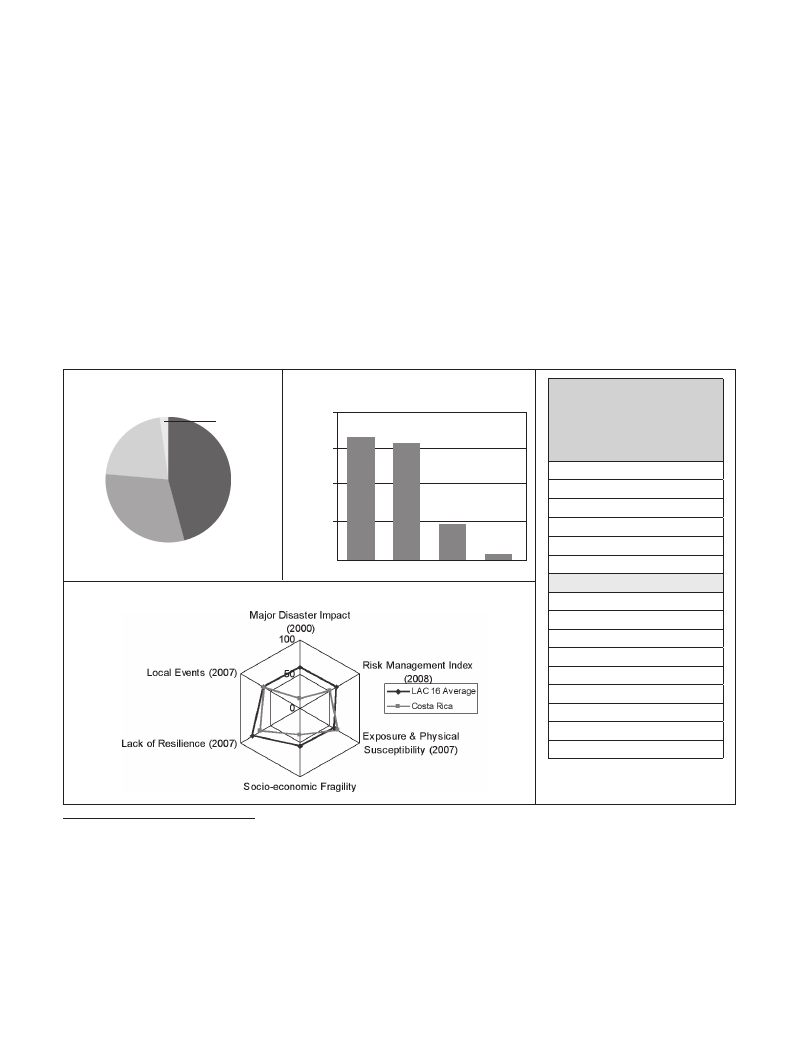
COSTA RICA
costa rica / 231
1. disaster risk profile
Costa Rica has the 8th highest economic risk exposure to three or more hazards, according to the Natural
Disaster Hotspot study1 by the World Bank. This study also ranks Costa Rica as 2nd among countries most exposed
to multiple hazards based on land area, with 36.8% of the total area exposed to three or more adverse natural events.
The study estimates that 77.9% of Costa Rica’s population and 80.1% of the country’s GDP reside in areas exposed to
high risk from multiple hazards.
Population Affected
Economic Damages by Disaster Type
by Disaster Type2
(1000s USD)2
Volcano
500000
Earthquakes
21%
2%
375000
Floods
30%
250000
Storms
48%
125000
0
Flood Storm Earthquake Drought
Relative Vulnerability and Risk Indicators3
COUNTRIES AT HIGH
ECONOMIC RISK FROM
MULTIPLE HAZARDS
(Top 33 Based on GDP with
3 or more hazards)1
1. Taiwan, China
3. Jamaica
4. El Salvador
5. Guatemala
5. Guatemala
7. Japan
8. COSTA RICA
10. Colombia
12. Chile
14. Turkey
15. Barbados
18. Ecuador
19. Venezuela
20. Peru
24. Honduras
27. Mexico
1See World Bank, Natural Disaster Hotspots, A Global Risk Analysis (Washington, DC: Disaster Risk Management Series, 2005), table 7.2.
2 EM-DAT: OFDA/CRED International Disaster Database, Catholic University of Louvain, Brussels, Belgium, online at: www.emdat.net
3Relative Vulnerability and Risk Indicators are adapted from IADB-IDEA (2007), Programa de Información e Indicadores de Gestión de Riesgos
(Manizales, Colombia, 2004), Annex (2009). Values are normalized on scale of 0 – 100 and presented against the average for 16 LAC countries
found in IADB-IDEA (2007). Major Disaster Impact taken from Disaster Deficit Index: the ratio of economic losses which country could suffer during
a Maximum Considered Event and its economic resilience. Local Events taken from Local Disaster Index: Represents the propensity of a country to
experience recurrent, small-scale disasters and their cumulative impact on local development. Risk Management Index is presented as the negative
(ie 0 = optimal, 100 = incipient) of IADB’s Risk Management Index: measures country’s risk management capability in (i) risk identification (ii) risk
reduction (iii) disaster management (iv) financial protection. Resilience, fragility and Exposure are taken from the component indices of Prevalent
Vulnerability Index
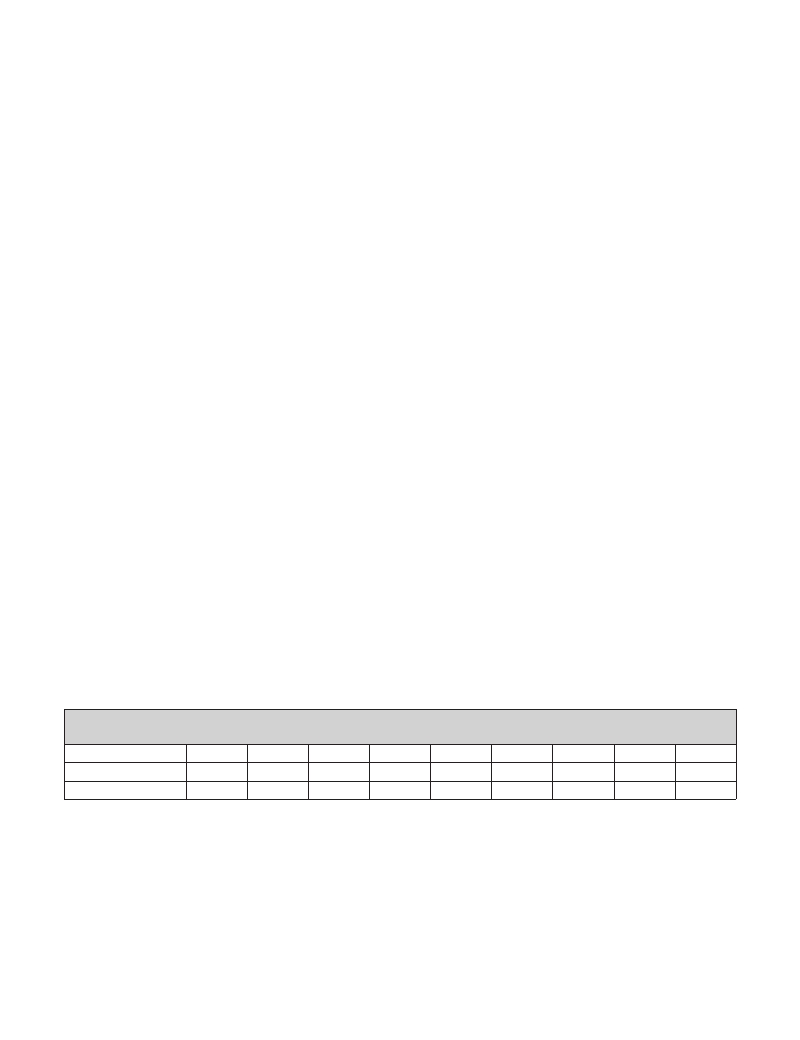
232 / Disaster Risk Management PROGRAMS FOR PRIORITY COUNTRIES LATIN AMERICA & CARIBBEAN
Geological Hazards
Due to its geographic location and geotectonic characteristics, Costa Rica is exposed to a variety of natural
hazards, including hydrometeorological and geophysical hazards. The country has recently experienced floods,
hurricanes, earthquakes, and landslides.
Costa Rica has been identified as one of the most earthquake-prone and volcanically active countries in
the world. The country is located on the subduction zone of the Caribbean and Cocos tectonic plates, and the fracturing
movements of these two plates have caused frequent earthquakes. In January 2009, an earthquake, reaching 6.2 on
the Richter scale, killed 22 people and caused more than US$100 million in losses from damage to infrastructure and
agro-industry. The country also has three mountain ranges that span the entire country—with 16 peaks of known volcanic
origin and 9 active volcanoes. Five active volcanoes in Costa Rica have caused significant damage and economic losses
in the past.
Floods and Landslides
The frequency of floods has been increasing in Costa Rica and this natural hazard currently represents the
main source of loss in the country. During February 2009, heavy rains affected the Pacific Coast and Central Valley
of Costa Rica, causing floods and landslides in at least 65 of the country’s 81 counties with 18 deaths reported. There
was serious damage reported to at least 27 major roads, including cutoffs on the Pan-American Highway. At least 2,000
homes were flooded in the northern province of Guanacaste which forced 1,500 people into temporary shelter.
Triggered by intense rainfall, earthquakes, and volcanic eruptions, landslides and torrential debris flows
are among the most costly in terms of human lives. During the heavy rains in October 2007, a total of 14 people
died in a landslide in the city of Atenas. After the January 2009 earthquake, at least 10 people died in another landslide
in Cinchona, a rural community 50 miles west of the capital city, San José.
Hurricanes
Costa Rica is also exposed to a hurricane hazard on its Caribbean coast. Hurricane Mitch, one of the most
destructive events in Central America, caused economic losses amounting to approximately US$98 million.
The following table outlines the estimated losses and budget allocations for declared emergencies between 1999
and 2007. The figures demonstrate a significant gap between budget allocations and resources needed to recover the
estimated losses incurred.
Year
Estimated losses
Budget allocation
Source: CNE.
Estimated Losses and Budget Allocation for Declared Emergencies
(US$ million)
1999
2000
2001
2002
2003
2004
2005
29.8
24.5
23.8
15.8
1.5
1.6
39.6
8.3
3.1
1.6
1.1
1.5
1.7
7.0
2006
10.8
13.1
2007
50.3
7.9
Additional Vulnerabilities
The fast growing metropolitan population in the Central Valley generates major stresses on the limited
natural resources, public utilities and municipal services. The high concentration of the Costa Rican population
in the Central Valley is the result of historical processes, exacerbated by the concentration of industrial developments
and other sources of employment. Under these circumstances, affordable housing becomes a major socio-economic
constraint that forces low income families to relocate to higher risk areas.

costa rica / 233
2. disaster risk management framework
Costa Rica has a comprehensive legal and institutional framework for disaster risk management (DRM).
In Costa Rica, the law requires all central government entities and local governments to allocate resources for relevant
disaster and risk activities in their programs and budgets. The law also establishes that 3% of financial surplus or profit
from all governmental institutions must be transferred to the National Emergency Fund (NEF).
In the event of a national emergency, the National Risk Prevention and Emergency Management Commission
(CNE4) acts as the highest ranked coordinating authority. CNE’s capacity to coordinate and incentivize disaster
risk management activities emergency was enhanced by the approval of the Emergencies and Risk Prevention Law No.
8488 in 2006.
Disaster Risk Management (DRM) was incorporated into the 2006–2010 National Development Plan
through the strategic action on land planning as part of the Social Development and Poverty Reduction component. The
incorporation of DRM in this national plan obliges all line ministries to include risk analysis and mitigation initiatives in their
annual programs. The Costa Rica National Platform has also adopted the recommendations of the strategic objectives
and priority actions of the “Hyogo Framework for Action [HFA] 2005–2015: Building the Resilience of Nations and
Communities to Disasters.”
The Government of Costa Rica (GoCR) has a specialized financial instrument in place called the Catastrophe
Deferred Drawdown Option (CAT-DDO) loan to provide bridge financing at the time of a declared emergency. This
will enable the country to maintain its development programs while mobilizing other sources of funding to address the
emergency. This is one of four lending operations agreed upon with the World Bank as part of the Country Partnership
Strategy for FY09–FY11.
The GoCR recognizes the connection between climate change and increased vulnerability and is taking steps
to build awareness throughout the country. Under the Ministry of Public Education, the “National Educational Plan for
the Reduction of Risk to Disasters”, is being incorporated into environmental education curricula. The GoCR is also
implementing the National Strategy on Climate Change, which is expected to generate important recommendations on
assessing risks of public and private investment projects.
Costa Rica has nationwide networks of volcanological and meteorological monitoring stations with highly
qualified scientists and engineers involved in a wide variety of DRM related research topics. Public universities
and research institutions in Costa Rica cooperate with leading research organizations around the world.
Costa Rica has been effective in the development of building codes that ensure private and public works adhere
to construction standards that minimize risk exposure. Under the provisions for a declaration of a state of emergency, the
phases of immediate response and reconstruction must integrate disaster risk reduction measures.
A major challenge in implementing the DRM national policies is the development of local capacity—that is,
at the municipal level—where technical and human resources can be very constrained.
4 Comisión Nacional de Emergencias

234 / Disaster Risk Management PROGRAMS FOR PRIORITY COUNTRIES LATIN AMERICA & CARIBBEAN
3. activities under the hyogo framework of action
HFA Priority # 1: Policy, institutional capacity and consensus building for disaster risk
management
The Costa Rica National Platform has adopted the recommendations of the strategic objectives and
priority actions of the “Hyogo Framework for Action 2005–2015: Building the Resilience of Nations and
Communities to Disasters.” In agreement with the Framework guidelines, Costa Rica has a national platform for
a DRM framework that includes the National Risk Prevention and Emergency Management Commission (CNE5), the
National Risk Prevention and Emergency Management Plan, and coordinating entities. The CNE monitors and reports
annually on the country’s progress in its “National Report on the Implementation of the Hyogo Framework of Action.”6
The Government of Costa Rica (GoCR) strengthened the institutional framework and established the legal
framework to guarantee the reduction of the causes of risk and timely, coordinated risk management in
times of disaster. Through the 2006 approval of Law No. 8488, the regulations define in greater detail the DRM
system, the mandate and role of the CNE, the GoCR’s disaster prevention responsibilities, a declaration of a state of
emergency, a general emergency plan, and financial resources. To facilitate timely coordination, the CNE’s Board of
Directors is composed of the CNE President, the Ministers of Presidency, Health, Public Works and Transport, Public
Security, Environment and Energy, Housing and Human Settlements, and Finance, the heads of the Institute of Social
Assistance (IMAS), the National Insurance Institute (INS), and a representative from the Red Cross in Costa Rica.
The GoCR’s institutional framework for disaster risk management (DRM) ensures disaster risk reduction is a
national priority. The National Risk Prevention and Emergency Management Plan recognizes the need to carry out disaster
risk reduction and mitigation activities. This involves coordinated participation of civil society and the private sector, and
national and local government institutions throughout the country. The GoCR has also developed financing mechanisms
to capitalize the National Emergency Fund, and approved financial instruments to ensure that, in the event of an emergency
resulting from an adverse natural event, there are sufficient resources for rapid response and reconstruction.
The GoCR has greatly enhanced its ability to ensure the effective and efficient allocation of resources for
disasters. All central government entities and local governments must allocate resources for relevant disaster and risk
activities in their programs and budgets. In addition, 3% of financial surplus or profit from all governmental institutions
must be transferred to the National Emergency Fund (NEF) to finance the National Risk Management System. This
strengthens the government’s capacity to effectively support disaster mitigation activities in a sustainable manner. In
the event of a declaration of national emergency, NEF funds are readily available to the CNE, which has the authority to
allocate those funds as appropriate, without having to follow the lengthy administrative processes needed for allocations
of funds during non-emergency situations. Once the emergency has passed, the CNE is still responsible for the proper
accounting of any funds disbursed.
The GoCR understands the importance of mainstreaming disaster risk management (DRM) and significant
progress has been made in Costa Rica. DRM was incorporated in the 2006–2010 National Development Plan
(NDP), through the strategic action on land planning as part of the Social Development and Poverty Reduction component.
The incorporation of DRM in the NDP obliges all line ministries to include risk analysis and mitigation initiatives in their
annual programs. A comprehensive monitoring mechanism for disaster risk prevention and reduction investments by key
5 Comisión Nacional de Emergencias
6Costa Rica National Platform. PreventionWeb (accessed January 2009) at: http://www.preventionweb.net/english/hyogo/national/list/v.
php?id=41

costa rica / 235
line ministries is being prepared, so that information on DRM mainstreaming activities in all sectors can be used in the
future for analysis. In addition, the CNE has been asked to (a) establish the National Risk Management System (NRMS),
(b) design and implement the National Risk Prevention and Emergency Management Plan (NRPEM), (c) strengthen early
warning systems, and (d) strengthen risk management at the community level. Continued efforts need to be made to
ensure that the integration of DRM priorities within line ministries and other government agencies are not relegated to
the back-burner when competing mandates arise.
Costa Rica has also integrated risk management considerations into the review process of all investment
projects for the country. The Ministry of National Planning and Economic Policy (MIDEPLAN) recently added a
disaster risk review in the project proposal format for national investments. Under this measure, government agencies
submitting investment projects for approval by MIDEPLAN are now required to conduct a disaster risk assessment of
the proposed investment and include mitigation measures in case the project is exposed to adverse natural events. This
improvement, along with the environmental review, has great potential to control and effectively address disaster risk in
future investment programs. The country is currently assessing systems that could assist public officials in the decision-
making process by assessing the disaster risk of planned investment projects.
Although significant advances in inter-institutional coordination have been made, Costa Rica has operative
and financial constraints that diminish the country’s ability to more effectively respond to emergency
situations. This was recognized by the GoCR’s self-assessment of progress and was highlighted during recent flood
events and the recent earthquake of 6.2 on the Richter scale that generated losses of more than US$100 million
according to GoCR estimates.
HFA Priority # 2: Disaster risk assessment and monitoring
The GoCR has attained significant achievements in the area of DRM and monitoring. The country has a
National Risk Atlas at the national and municipal (county) levels. Working closely with several national universities and
research institutions, the CNE develops and maintains national and local level risk assessment maps for each type of
hazard. The goal is to provide each municipality (county) with up-to-date maps that can be integrated—using computer-
based technologies such as geographic information system (GIS) mapping—as inputs for the preparation of the municipal
urban zoning and land use maps, and enforcement of zoning and building codes. The CNE, in collaboration with these
research partners, is also building databases with information on historical events to improve its prediction capabilities.
A major constraint in the process of delivering information to the local municipalities is the level of local
technical capacity to absorb this information. Some municipalities have sophisticated mapping systems, while
others have very little or no technical or human resources to fully benefit from the available information on hazards and
related risks.
The CNE coordinates a national network of early warning stations for monitoring and registering rain
data, river flows, and landslides, with the goal of providing local communities with critical, timely information about
their level of exposure to flooding events. Every station in the network has access to radios and/or phones to help relay
their data in real time. They also compile information on other threats, such as earthquakes, and relay data on intensity
and damage to infrastructure and/or personal injuries to local communities, to the CNE and first responders, using the
nationwide 911 system.
The CNE also coordinates a network of 400 community level, 100 municipal level, and 6 regional level
Emergency Management Committees. These committees are organized to allow dissemination of critical, time-

236 / Disaster Risk Management PROGRAMS FOR PRIORITY COUNTRIES LATIN AMERICA & CARIBBEAN
sensitive information and to receive and distribute emergency aid should a localized event occur. Depending on the
geographic scope of a given emergency, command and control escalates from the community level to the municipal level,
and so forth. The CNE is authorized by law to disburse funds to local communities in the event of a local level emergency,
and to help reduce the risk of threats such as floods and landslides by providing funding to retrofit building such as
schools, hospitals, bridges, and levees, and to dredge rivers and creeks, among other activities.
The GoCR is currently developing a set of disaster risk indicators for use in public investment projects,
along with better metrics to assess the costs of investment projects and to improve predictions of actual losses caused
by disasters.
The country is also working on the implementation of the National Strategy on Climate Change, which is
expected to generate important recommendations on assessing risks of public and private investment projects. The
implementing agency is under the authority of the Minister of the Environment, who is also a member of the CNE Board
and it is expected that important synergies between climate change and DRM will continue to evolve.
HFA Priority # 3: Use of knowledge, innovation, and education to build a culture of safety and
resilience at all levels
Costa Rica has a long history of advances in scientific and technical research in areas directly related to DRM.
Highly qualified scientists and engineers are involved in a wide variety of DRM topics such as the development of national
networks of volcanological and meteorological monitoring stations and detailed geographic and geological studies. Public
universities and research institutions in Costa Rica cooperate with leading research organizations around the world.
Costa Rica has recognized the link between environmental degradation and disaster risk and is
incorporating DRM into the curricula on environmental education. To further disseminate information on DRM,
the GoCR is implementing the “National Educational Plan for the Reduction of Risk to Disasters” under the Ministry of
Public Education.
Public universities in Costa Rica are also incorporating DRM training courses in the programs of those
careers related to environmental sciences, health, geography, geology, and psychology. Public universities
are organized under the National Deans’ Commission (CONARE), which dictates general guidelines for their operation.
CONARE created a commission composed of representatives from its member institutions charged with coordinating
activities for developing DRM curricula in three main target areas: Community Outreach, Research, and Education.
Concurrently, each university develops its own internal “Risk Management Program,” consolidating relevant activities
from all ongoing research and education projects. As part of these efforts, the University of Costa Rica is offering a
Masters degree in DRM.
Several government agencies at the municipal level have developed information management systems by
incorporating GIS technologies to improve their capabilities to manage their urban development, titling, and land use
data assets. A growing number of municipalities are also developing their presence on the Internet by creating their own
websites and thereby increasing information dissemination to local and global communities.
The national government has clear policies on the development of e-government and the CNE has made
important progress in developing its own website, where up-to-date information is published and made readily available
to the general public. Important resources such as a catalogue of natural hazard maps, along with important studies
related to DRM in Costa Rica, can be accessed through CNE’s website.

costa rica / 237
Concerted efforts need to be made to overcome the unevenly distributed technical capacity at the local level,
particularly in smaller municipalities. This constraint can be overcome through enhanced use and incorporation of
available knowledge into municipal planning processes.
HFA Priority # 4: Reduction of the underlying risk factors (reduction of exposure and vulnerabil-
ity and increase of resilience)
Given Costa Rica’s high exposure to natural and anthropogenic hazards, there is still room for improvement
in the reduction of the underlying risk factors despite the progress that has been made. For example, continued
efforts are needed to unify the agendas on Climate Change and Disaster Risk Reduction, including the enhancement of
adaptability to changes in hydrological and water resource management issues.
Costa Rica has been effective in the development of building codes that ensure that private and public
works adhere to construction standards that minimize the risk of exposure to certain natural and man-made hazards,
such as earthquakes and fires. Along with the implementation of zoning regulations, the country is moving in the right
direction.
As noted previously, any public works performed during immediate response and reconstruction phases
under the provisions of a declaration of a state of emergency, must integrate measures aimed at removing
or reducing the conditions that created the risk in the first place. However, financing available for reconstruction
is limited while in many instances the amount of financial resources needed to effectively reduce the risk and vulnerability
to hazards is greater than the actual losses.
Increased private sector participation is essential to further reduce the underlying risk factors in Costa Rica.
The country is trying to improve participation of the private sector in the DRM process by implementing mechanisms on
a voluntary basis and also through the enforcement of the existing legal and regulatory frameworks.
The strict enforcement of building codes has become a major challenge for local authorities and it is
necessary to reduce risk exposure of vulnerable socio-economic groups living in unplanned settlements in
high risk areas. Frequent, low intensity emergency events, mostly affecting unplanned settlements in areas unsuitable
for urban development, consume an important percentage of the available resources for DRM and social assistance.
Relocating vulnerable families to lower risk areas provides a temporary solution until a new wave of squatters tend to
settle into these high risk areas, repeating the vicious cycle.
The DRM and social themes are linked and supported under the GoCR’s commitments to achieving the
goals of the Millennium Development Agenda. Although the GoCR’s social policy is not explicitly geared to
reducing vulnerability to disasters, the National Development Plan includes an annex on “Social Development and the
Fight against Poverty.” Strategic Action 9 of the annex contains several goals specifically geared to reducing vulnerability,
including community organization and development of communal infrastructure, strengthening early warning systems,
and implementing the National Risk Management Plan.
HFA Priority # 5: Disaster preparedness, recovery and reconstruction at national, regional, and
local levels
The CNE develops and coordinates the early warning system and defines mechanisms for addressing DRM
issues at the municipal level throughout the country. The CNE also builds its own technical capacity for the data

238 / Disaster Risk Management PROGRAMS FOR PRIORITY COUNTRIES LATIN AMERICA & CARIBBEAN
gathering, analysis, and dissemination of knowledge about threats, and is developing maps of hazards, and databases
that are used as inputs for the preparation of municipal and local regulatory plans (zoning plans). Land use and urban
development recommendations derived from these zoning plans are legally binding, and the CNE has the authority to
stop public and private works that do not abide by them.
Many of the components of the National Climate Change Plan relate to the GoCR’s ongoing DRM efforts.
An Office of the National Strategy on Climate Change (ENCC)7 was created within the Ministry of the Environment,
Energy and Telecommunications to prepare plans to minimize the effects of climate change on the priority axes of the
strategy through: mitigation, vulnerability and adaptation, and metrics. Other important components of the National
Climate Change Plan such as public awareness and local capacity/technology transfer can further advance the existing
DRM efforts in Costa Rica.
In line with the National Development Plan (NDP), Costa Rica is confronted with the challenge of
strengthening the institutional capacities for DRM under policies of decentralization of authority and
resources, making municipal governments accountable for designing and implementing changes to the regulatory
framework for zoning and urban and industrial developments, congruent with the government’s principles on “development
in harmony with nature.” These principles translate, within the DRM, into the promotion of a culture of risk prevention
oriented toward preventing loss of human lives, protecting assets, and the reduction of environmental deterioration. This
challenge continues as it is intrinsic to a long-term vision of sustainable development requiring permanent attention.
It is expected that mainstreaming of risk reduction into the national planning process and promoting the
integration of DRM into the development plans will continue. It is also expected that improving strategic risk
management planning will continue in relevant sectors such as health, environment, education, agriculture, public works
and investments, housing, and human settlements.
Critical to this process is the updating of the national risk management plan as a strategic planning tool to
drive the actions of government institutions and to promote a more active participation of civil society and the private
sector.
7 http://www.encc.go.cr/
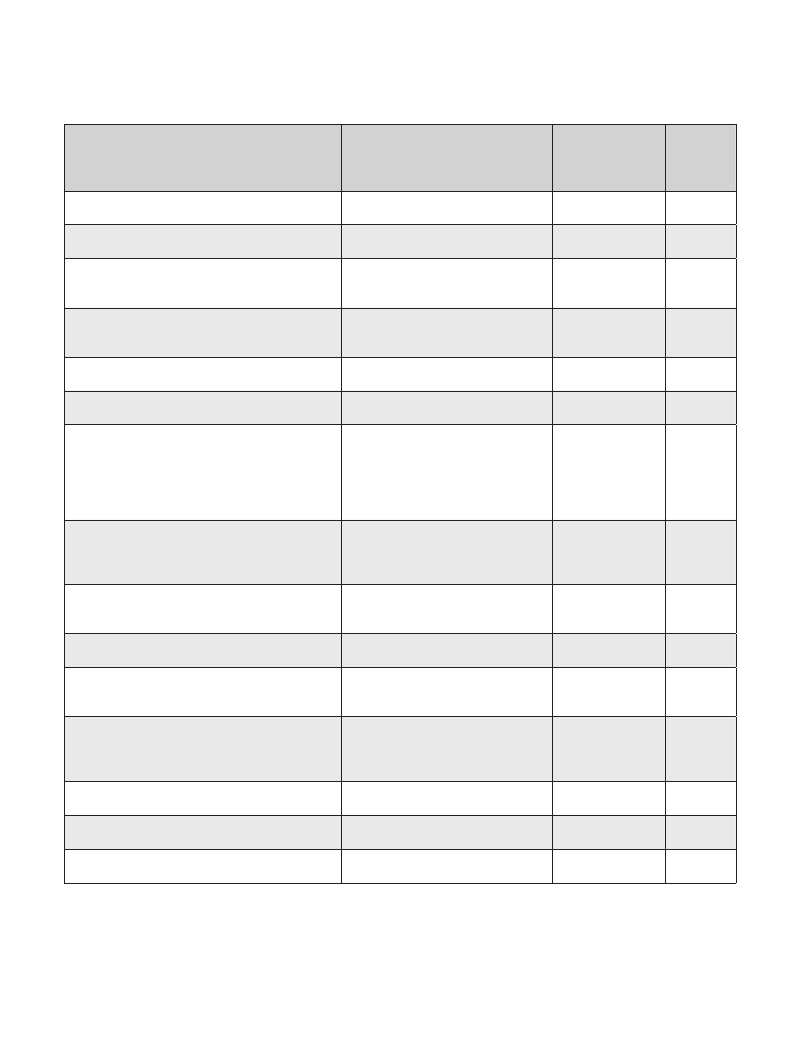
costa rica / 239
4.key donor engagements
Existing Projects with Donors and
International Financial Institutions
Costa Rica Public Asset Catastrophe Risk Insurance
Facility Feasibility Study
Costa Rica Catastrophe Deferred Drawdown Option
(CAT DDO)
Strengthening a Municipal Information System
for Disaster Prevention in Latin America and the
Caribbean (SIMPD) Mitigation National Disasters
Awareness Campaign on the Threat of Tsunamis
in some school districts within the Regional
Directorate in Puntarenas, Costa Rica
Disaster Risk Management in Talamanca
Funding Agency /
International Partners
World Bank (GFDRR)
World Bank
International Development Research
Centre (Canada)
Japan International
Cooperation Agency
UNDP
Web-COE Project
“Prevention is Better“ Community Intervention
Strategy
Regional Humanitarian Information Network
(REDHUM) for Latin America and the Caribbean in
the event of disasters
Regional Program for the Reduction of Vulnerability
and Environmental Degradation (PREVDA)
Southern Command of the United
States Army
ProVention Consortium, Organization
of American States, British Red
Cross, Finland Red Cross, Disaster
Preparedness Programme of the
European Commission’s Humanitarian
Aid Department (ECHO/DIPECHO)
Spanish International Cooperation
Agency (AECI), Switzerland
Cooperation Agency (COSUDE),
Government of Kuwait
European Commission
Development of disaster risk management capacity
at the local level
Regional Plan for Disaster Reduction (PRRD)
Earthquake Disk Reduction In Guatemala, El
Salvador and Nicaragua with regional cooperation
support to Honduras, Costa Rica and Panama
(RESIS II)
Regional Program of Environment in Central
America (PREMACA)
Mesoamerican coordination system for territorial
information
Strengthening of Information and Communication
for CEPREDENAC and National Commissions
* Estimated
Japan International
Cooperation Agency
Norway
Spanish International Cooperation
Agency
Norway
Danish Cooperation (DANIDA)
IADB
World Bank
Allocated
Budget and
Period
(US$)
460,000
2008-2009
65 million
2008-2009
100,000*
2006-2009
16,000
2007
100,000
2006-2008
Not available
Permanent
50,000*
2007-2008
100,000*
2006-2009
1.65 million
2007-2011
300,000
2008-2011
400,000
2006-2011
2.4 million
2007-2010
Not available
800,000
2009-2011
446,000
2007-2009
HFA
Activity
Area(s)
1,3,4,5
1,3,5
2
3
2,4
5
3
3,5
1,2,4
2,4
1
2
2,4
2
1,2

240 / Disaster Risk Management PROGRAMS FOR PRIORITY COUNTRIES LATIN AMERICA & CARIBBEAN
5.global facility for disaster reduction and recovery (gfdrr):
action plan
Given Costa Rica’s risk profile and its existing framework for disaster risk management, the key priority in
Costa Rica is to continue to mainstream disaster risk reduction at the sectoral and local levels. Strategic
actions are needed in the following areas to enhance disaster risk management in Costa Rica: (i) strengthen institutional
capacity at sectoral and local levels, (ii) develop a comprehensive risk assessment and monitoring capacity, and (iii)
advance risk financing strategies.
The following activities have been identified in consultation with local authorities and international donor agencies. These
actions support Costa Rica’s disaster risk management program and reflect HFA priority action areas.
Indicative Program for GFDRR Funding
(Projects and engagement areas being considered for
GFDRR funding)
Support the development and implementation of: (i) a
system to improve the planning process by effectively
addressing DRR; (ii) a monitoring mechanism for
disaster risk prevention and reduction investments by
key line ministries; (iii) a collection mechanism for the
National Emergencies Fund
Enhance CNE’s institutional capacity and DRM
activities by: (i) conducting a review of the National Risk
Prevention and Emergency Management Plan;
(ii) consolidating CNE’s restructuring plan;
(iii) strengthening DRM activities at the sectoral level;
and (iv) supporting vulnerability reduction efforts by
improving CNE’s safety and resilience programs at the
community level
Support phase II of the development of a Risk
Assessment Platform for Costa Rica
Support the Government of Costa Rica’s national
preparedness, rehabilitation and reconstruction (after
the 6.1 earthquake in January 2009)
Support for the Pilot Project on Early Warning Systems
for Hydrometeorological Hazards in Central America
Total Budget Requested:
Implementing Agency /
International Partners
Ministry of Finance, National
Emergency Commission (CNE),
MIDEPLAN, Contraloría General
National Emergency Commission
(CNE), MIDEPLAN
World Bank (GFDRR)
National Emergency Commission
(CNE)
World Bank (GFDRR)
World Meteorological Organization
Indicative Bud-
get and Period
(US$)
600,000
2009-2011
HFA
Activity
Area(s)
1,2,4
1.3 million
2009-2011
1,3,4
750,000
2009-2011
500,000
2009
2,3,4,5
5
262,000
2009-2011
1,2,3,4,5
US$ 3.412 million
In addition to the above-mentioned activities, it is expected that dialogue will continue with Costa Rican authorities to
assess the feasibility of a Vulnerability Reduction Plan for Crime and Violence in the City of San José.
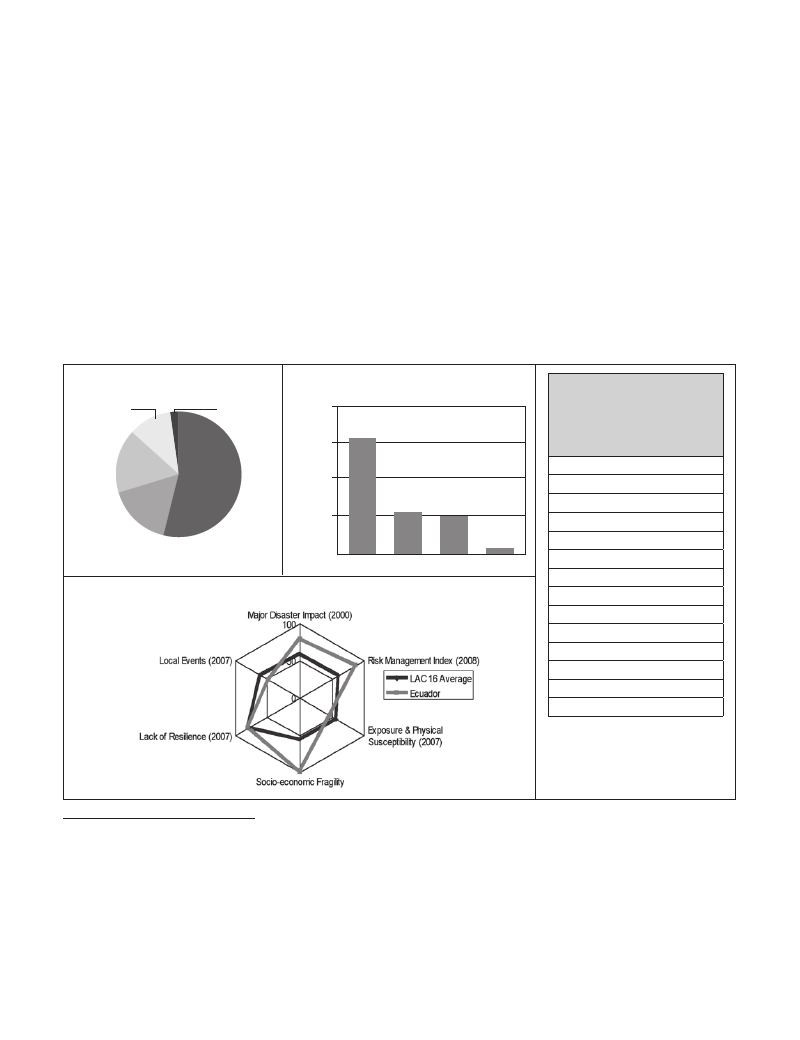
ECUADOR
ecuador / 241
1. disaster risk profile
According to the World Bank’s Natural Disaster Hotspot study1, Ecuador ranks 18th among countries with
the highest economic risk exposure to three or more hazards. 66% of the population lives in urban areas and
96% of this population lives in the coastal and mountainous regions, exposed to seismic, volcanic, flood, landslide,
and El Niño hazards. The volcano Tungurahua is currently active. Floods and landslides occur frequently and affect the
population as well as the productive sectors.
Population Affected
by Disaster Type2
Earthquake
Landslides
16%
2%
Volcano
16%
Economic Damages by Disaster Type
(1000s USD)2
200000
150000
100000
Drought
18%
Floods
53%
50000
0
Earthquake Flood Landslide Volcano
Relative Vulnerability and Risk Indicators3
COUNTRIES AT HIGH
ECONOMIC RISK FROM
MULTIPLE HAZARDS
(Top 33 based on GDP with
3 or more hazards)1
1.Taiwan, China
2.Dominican Republic
3. Jamaica
4. El Salvador
5. Guatemala
8. Costa Rica
10. Colombia
12. Chile
15. Barbados
18. ECUADOR
20. Peru
24. Honduras
27. Mexico
32. Bolivia
1See World Bank, Natural Disaster Hotspots, A Global Risk Analysis (Washington, DC: Disaster Risk Management Series, 2005), table 7.2.
2 EM-DAT: OFDA/CRED International Disaster Database, Catholic University of Louvain, Brussels, Belgium, online at: www.emdat.net
3Relative Vulnerability and Risk Indicators are adapted from IADB-IDEA (2007), Programa de Información e Indicadores de Gestión de Riesgos (Man-
izales, Colombia, 2004), Annex (2009). Values are normalized on scale of 0 – 100 and presented against the average for 16 LAC countries found in
IADB-IDEA (2007). Values are normalized on scale of 0 – 100 and presented against the average for 16 LAC countries found in IADB-IDEA (2007).
Major Disaster Impact taken from Disaster Deficit Index: the ratio of economic losses which country could suffer during a Maximum Considered
Event and its economic resilience. Local Events taken from Local Disaster Index: Represents the propensity of a country to experience recurrent,
small-scale disasters and their cumulative impact on local development. Risk Management Index is presented as the negative (ie 0 = optimal, 100
= incipient) of IADB’s Risk Management Index: measures country’s risk management capability in (i) risk identification (ii) risk reduction (iii) disaster
management (iv) financial protection. Resilience, fragility and Exposure are taken from the component indices of Prevalent Vulnerability Index
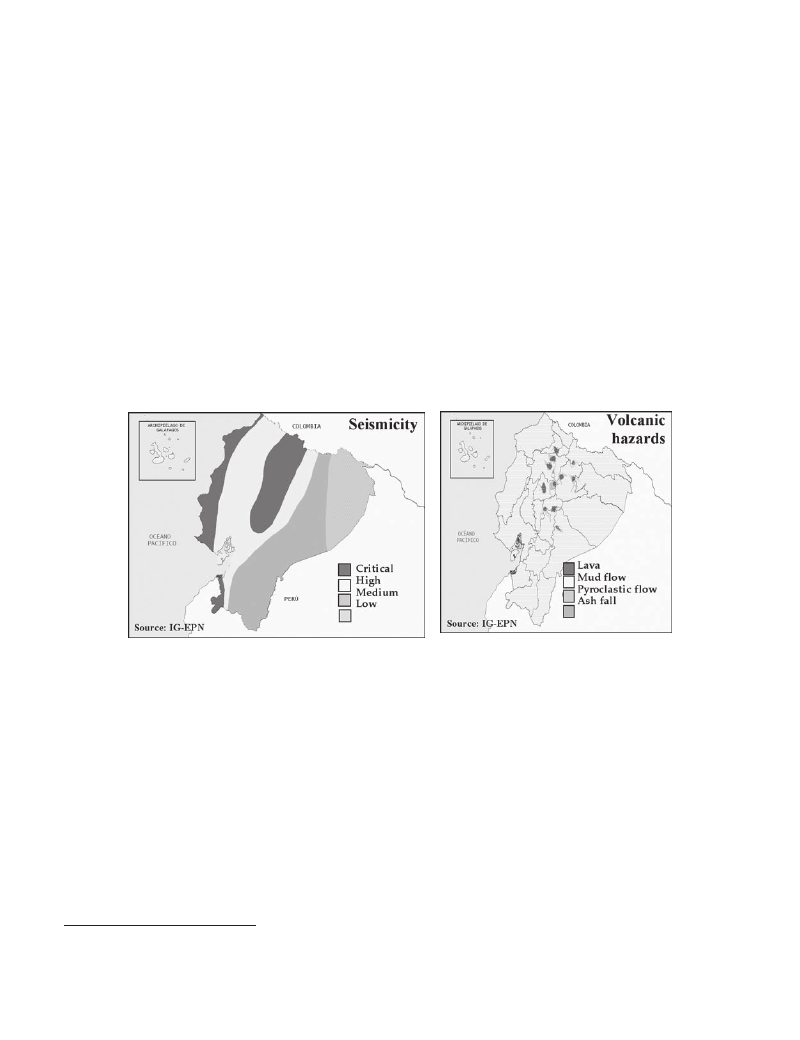
242 / Disaster Risk Management PROGRAMS FOR PRIORITY COUNTRIES LATIN AMERICA & CARIBBEAN
Geological Hazards
Ecuador is a highly seismically active territory. The subduction zone of the Nazca and the South American plates
has been the source of the major earthquakes of Esmeraldas (1906, 1958, and 1979) and Caraquez Bay (1998).
Likewise, the continental fault system which crosses the country in the northeast direction and in the foothills of the
Cordillera Real has caused strong earthquakes (1541, 1987). The largest cities in the country (on the coast and in the
mountains) are located in areas with high seismic risk (See Figure 1). Quito, the capital, is also in a high risk area.
Ecuador is home to the greater part of the Northern Volcanic Zone of the Andes range. 41 main volcanoes
are distributed in four alignments: the Eastern Range (10), the Inter-Andean Valley (15 volcano junctions), the Cordillera
Real (12), and the East (4). An eruption of the Cotopaxi volcano is the most complex volcanic risk scenario for Quito,
the capital city. The volcanoes Tungurahua, Pichincha, and El Reventador have all been active within the past decade.
Tungurahua is currently (2009) active as well. Due to these events over the past 10 years, the country has had to deal
with population resettlement and very important economic losses, mainly in the agricultural and livestock sector
Figure 1. Seismic and volcanic hazards in Ecuador
(taken from the Instituto Geofísico de la Escuela Politécnica Nacional IG-EPN)
Hydrometeorological Hazards
Ecuador is highly vulnerable to the El Niño phenomenon due to the concentration of the development
and the population on the coast and in the mountains. This alteration of the ocean-atmospheric system develops
mainly in the Equatorial Pacific. The El Niño of 1997-1998 caused damages in the order of US$280 million, equivalent
to almost 15% of the Gross Domestic Product (GDP) in the year 1997.4 This phenomenon especially increases the
frequency and intensity of floods on the coast, and of landslides and storm surges in the mountains. According to the
historical records of events5, the most affected sectors in the central and the eastern regions of the country are health,
education, agriculture, and road infrastructure.
The floods are very frequent and have caused major emergencies in the past few years. As is typical of
the Andean region, the hydrological regime in the three natural regions (the mountains, the coast, and the jungle) has
particular conditions which favor the occurrence of floods. In Ecuador, the major floods have been associated with the El
4 “Las lecciones de El Niño 97-98 Ecuador”, Corporación Andina de Fomento
5 Base de datos DESINVENTAR, La Red 2006
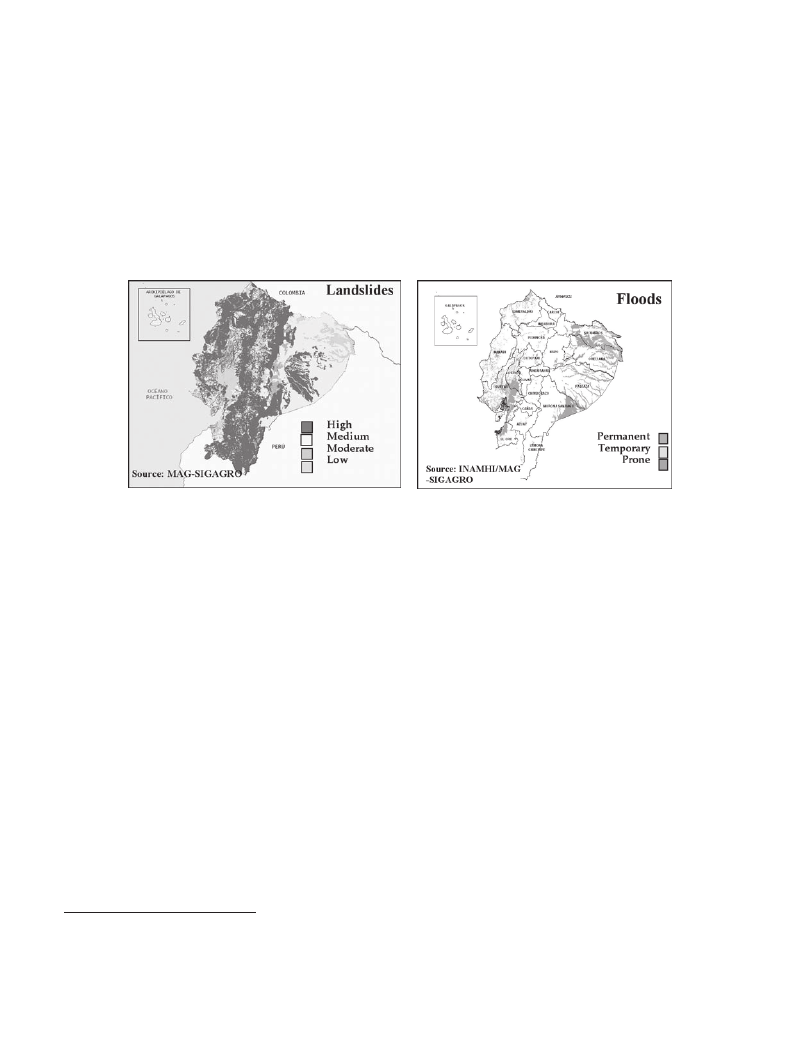
ecuador / 243
Niño phenomenon (1982-1983 and 1997-1998), affecting especially the coastal region and causing major human and
economic losses. Periods of intense rains also cause important floods, the most recent along the coastline in 2008.
The concentration of development in the mountains leads to the fact that landslides form a phenomenon
that frequently affects urban areas and infrastructure. After floods, landslides are the second most frequent
phenomena. In the last two decades, they have caused several river blockages with important losses (Pisque River, 1990;
Paute River, 1993; Chanchán River, 1999; Guasuntos River, 2000)6. The road infrastructure is also often affected.
Figure 2. Landslide and flood hazards in Ecuador
(taken from the Instituto Nacional de Meteorología e Hidrología – INAMHI)
Main determinants of vulnerability to natural events
The concentration and growth of the population in the urban areas increases the level of exposure to
adverse natural events. The city populations have continued to grow over the past ten years. In 2001, 61.2% of the
inhabitants were living in urban areas (approximately 7.6 million), and it is estimated that in 2009 the number could be
around 66% of the population (around 9 million).7 96% of the population is distributed in the coastal and mountainous
regions, where most of the natural hazards are concentrated.
Weaknesses in the policies and territorial planning instruments, in combination with migration towards the
urban areas, result in inadequate localization of the population. Despite the fact that the Metropolitan District
of Quito and a few other cities have made advances in their urban regulation strategies, the country’s territorial planning
in general has not had the legal and institutional framework needed for the consolidation of sustainable development
policy and practice. The available regulatory instruments are insufficient and do not adequately incorporate risk reduction
criteria. The peripheral urban areas of low value expand because of unregulated informal and unplanned settlements,
which have great weaknesses in terms of their location and safe construction.
Environmental deterioration of the river basins and the expansion and intensity of farmland use have
entailed an increase in the frequency and intensity of phenomena like landslides and floods. The main causes
of degradation of hydrographic basins, which results in changes in the water cycle (behavior of surface and underground
currents) and the equilibrium in the surface processes of erosion, meteorization, and landslides are as follows: the
accelerated loss of biological diversity (2,180 species endangered due to the destruction of their habitats)8, deforestation
6Rivera Magno. Consecuencias de los deslizamientos en el Ecuador. IV Jornadas en Ciencias de la Tierra.
7National Institute of Statistics and the Census (Instituto Nacional de Estadísticas y Censos, INEC).
8International Union for Conservation of Nature (IUCN), in its Red List of Threatened Species, 2006.

244 / Disaster Risk Management PROGRAMS FOR PRIORITY COUNTRIES LATIN AMERICA & CARIBBEAN
(238,000-340,000 hectares annually)9, expansion of the agricultural frontier10, and environmental deterioration due to
hydrological contamination and inadequate disposal of industrial and residential waste.
There are a number of weaknesses in the reduction of the existing vulnerabilities and in the planning
of new development in the productive sectors. There is an accumulated delay in the evaluation of vulnerability
of constructed infrastructure with respect to seismic and volcanic risk in particular. The hydrocarbon sector, which
represents between 10-14% of GDP, has an important part of its facilities in the province of Esmeraldas, which is an
area with high seismic hazard. However, the facilities were built decades ago according to seismically resistant design
parameters inferior to those currently defined in recent studies specific to the region.
2. disaster risk management framework
Ecuador’s current institutional and policy situation is very favorable for structural changes in the area of
disaster risk management. The new Constitution includes specific aspects of disaster risk management, creating
the Technical Secretariat of Risk Management (la Secretaria Técnica de Gestión del Riesgo), which replaces the Civil
Defense (Defensa Civil), and initiating the organization of the new Decentralized National System of Risk Management
(Sistema Nacional Descentralizado de Gestión del Riesgo, SNDGR). The results achieved through this process over the
upcoming years will be decisive in establishing the long-term disaster risk management conditions in the country.
However, Ecuador faces very important challenges to reduce its seismic and volcanic vulnerability. These
two phenomena constitute the highest risks of the country and the vulnerability accumulated over the course of decades
is very high. The reduction and management of these risks will require important changes in urban regulation, building
codes and regulations, critical investments in structural reinforcements, and territorial planning in the areas exposed to
the volcanic phenomenon.
The revision and strengthening of the territorial planning system in Ecuador is essential to effectively
reduce underlying hazards and related risks. The territorial planning system in Ecuador requires the integration
of disaster risk reduction criteria into the policies, strategies, mechanisms and instruments of the planning institutions.
Improved technical capacity, information generation, and development of methodological instruments are critical elements
to facilitate this process.
Capacity building of local governments is a necessary condition for consolidating and effectively
implementing Ecuador’s disaster risk management system. Because of the decentralized nature of the new
‘Decentralized’ National System of Risk Management, the provinces, districts, and parishes should assume the
responsibilities for management and control of risks in their respective territories.
3. activities under the hyogo framework of action
HFA Priority # 1: Policy, institutional capacity and consensus building for disaster risk manage-
ment
The new constitution of Ecuador has set the foundation for consolidating disaster risk reduction as a
9 Ministry of Environment et al., 2001.
10 Modernization Program of Agricultural Services, 2001.

ecuador / 245
policy integrated into the country’s overall development. The Constitution of September 2008 includes specific
aspects for risk management related to planning, environmental rights, territorial planning, decentralization, participation,
and security.11 Unlike those of all other Latin American countries, this new Constitution offers the legal and political
foundations for the development of a new system that will incorporate the lessons learned from the past and make use of
the modern approaches to risk management from the development perspective. The upcoming years will determine the
development of the institutional organization, the complementary standards, and the financial instruments necessary to
make the said constitutional regulations a reality.
The Technical Secretariat of Risk Management is the key governmental institution for heading the new
approach and vision of risk management. In the new institutional organization, this secretariat replaces the former
Civil Defense and assumes the management and coordination of SNDGR.12 It is responsible for creating policies,
strategies and regulations to promote capacities oriented at identification, analysis, prevention, and mitigation of risks
with the goal of facing and managing disaster events, as well as of recovery and reconstruction of social, economic and
environmental conditions affected by eventual emergencies or disasters.
The risk management institutional development, legal framework, and policies should create capacity for
attending to short, medium, and long-term needs. One of the main challenges for the government in this process
of the political and administrative reorganization is maintaining an adequate balance for capacity building at all levels,
which on the one hand guarantee the results in the long run, and on the other allow for the management of short-term
needs. Because of the high frequency of events such as floods and landslides, the lines of action related to risk mitigation
and emergency response are currently of highest priority.
The capacity building of the local governments is a necessary condition to consolidate the system. In
general, the new Constitution and the political reform promote the decentralization of the functions of the State. With
respect to risk management, the provincial, district, and parish levels have direct responsibility in risk management and
consequently should develop their own institutional organization and technical and operational capacity according to
national regulations and plans. Thus, significant efforts are necessary in the areas of technical strengthening, information
systems, local capacity building, and communication, among others.
HFA Priority # 2: Disaster risk assessment and monitoring
The monitoring system of volcanic activity has been strengthened to confront the volcanic eruptions of
the past ten years. The recent eruptions of the Pichincha, El Reventador and Tungurahua volcanoes required the
government, with international cooperation, to make important investments in the modernization and expansion of the
monitoring equipment network, administrated by the Geophysical Institute of the National Polytechnic School (Instituto
geofísico de la Escuela Politécnica Nacional, IG-EPN). The level of current development of this system in Ecuador is
comparable to that achieved in developed countries like Japan or the United States.13
Ecuador has increased the capacity of its national technical institutions and of some local governments to
evaluate disaster risk. In the past decade institutions like the IG-EPN, the IRD14, the Instituto Nacional de Meteorología
e Hidrología (INAMHI), and the National Secretariat of Planning and Development (Secretaría Nacional de Planificación
y Desarrollo, SENPLADES) have made important strides in the evaluation and modeling of hazards, vulnerability, and
11Constitution of Ecuador, Title VII, System of Well-Being, Chapter I, Inclusion and Equity, Section 9, Risk Management.
12Constitutional Executive Decree of the President of Ecuador No. 1046, April 26, 2008.
13 http://igepn.edu.ec.
14 A French public institution of science and technology research with presence in Ecuador since 1974.

246 / Disaster Risk Management PROGRAMS FOR PRIORITY COUNTRIES LATIN AMERICA & CARIBBEAN
risks.15 In the same way, the Quito Metropolitan District has developed specific studies on this topic and continues to
progress in the strengthening of its technical capacity.
It is necessary to expand the scope of the monitoring systems and apply advanced technological tools for
modeling and evaluation. Despite the advances already achieved, coverage of the seismologic and hydrometeorological
network still needs to be amplified, and hazard, vulnerability and risk studies need to be expanded, especially with regard
to seismic vulnerability of essential buildings and the infrastructure of the productive sector. To address this and to
facilitate the access of decision-makers to the existing information, the Central American Probabilistic Risk Assessment
(CAPRA) can offer important support for data management, analysis methodologies, and interactive tools. This tool
will help to establish standards, share data, and use a common language to facilitate communication about risks. The
CAPRA applications can be adjusted to the needs of every sector and user, in aspects such as emergency response,
land planning, mitigation investments, and financial protection strategies. The transparency of the model and the open
architecture of the CAPRA system will allow future users to understand and adjust this tool to their needs.
HFA Priority # 3: Use of knowledge, innovation, and education to build a culture of safety and
resilience at all levels
There is some experience with education projects in emergency response. The country lacked official plans
and programs for the inclusion of risk management in school curricula until shortly before the current reform. However,
through Civil Defense, and especially with international cooperation, numerous pilot projects were carried out which
form an important precedent for the design of a new policy in this sector. The emphasis of these training efforts was on
emergency plans and the Ministry of Education is currently designing specific content for the curricula.
Establishing a culture of prevention and preparedness for disaster risk is one of the priorities of the new
agenda. The National Strategy for Risk and Disaster Reduction being formulated by the Technical Secretariat for Risk
Management defines the promotion of risk prevention in civil society through communication strategies, education,
citizen supervision mechanisms, and information dissemination, as one of its most important policies. This policy will be
supported by the implementation of an Information System to support these objectives.
HFA Priority # 4: Reduction of the underlying risk factors (reduction of exposure and vulnerabil-
ity and increase of resilience)
Projects for environmental management and recovery of hydrographic basins have contributed to a
reduction of disaster risk. The principal investments for landslide and flood risk mitigation were made through projects
of hydraulic recovery of basins and environmental recovery of degraded areas. One of the most notable projects was
carried out by the Quito Metropolitan District through the Quito Metropolitan Sewerage and Drinking Water Company
(Empresa Metropolitana de Alcantarillado y Agua Potable de Quito, EMAAP-Q) on the slopes of Pichincha (34 recovered
streams) with financing from the Inter-American Development Bank (IADB). At the national level, projects to highlight are
the coastal resource management program and the protection of the water systems in Chimborazo and Tungurahua from
ash fall, among others.
The majority of risk reduction projects have had local and community focus. Over the last decade, numerous risk
reduction projects have been implemented at the parish and district levels through international cooperation. Especially
15Some examples of these studies are: a study of vulnerabilities and capacities in Ecuador; a study of the needs in the Quito Metropolitan District; a
study of physical vulnerability of educational infrastructure in the province of Orellana; a study of seismic vulnerability and floods of hospitals and
schools in Guayaquil and Quito; among many others.

ecuador / 247
notable were the projects promoted by the Ecuador Association of Municipalities (Asociación de Municipios del Ecuador,
AME) for development and territorial planning, and for environmental management. The results of these projects yielded
important lessons learned, which can be very useful in the current planning process.
In the current process of institutional reorganization, it is crucial to incorporate risk management into the
new policies, strategies and instruments of the Development Plan and territorial planning, and to build
local capacity for its implementation. The government’s job to design and implement the new planning systems, and
to include effective disaster risk reduction mechanisms, is significant. Some of these instruments include updating and
adopting building codes and regulations, generating base information for the regions16, zoning of hazard and/or risk areas
and definition of specific regulation of land use and occupation, development of methodological guidelines and training
for formulation and implementation of development plans, territorial/land use plans, and implementation of monitoring
and control mechanisms.
Seismic vulnerability reduction of the infrastructure in the hydrocarbon sector and of the essential buildings
in the main cities is a priority. Because of the direct or indirect impact which can be generated by any of these
systems on social and economic stability in the country, it is imperative to press forward in the process of determining the
current seismic vulnerability of key buildings and of the different components of the hydrocarbon production, and to take
on the necessary vulnerability reduction measures. Because of the level of investment required for this, it is necessary to
carry out a cost-benefit analysis and to prioritize such interventions.
HFA Priority # 5: Disaster preparedness, recovery and reconstruction at national, regional, and
local levels
International cooperation has supported projects in this area over several years. International cooperation
has invested the most in this topic in support of Ecuador’s Civil Defense. DIPECHO, along with its partners, has
implemented more than 20 projects since 2000. The Red Cross of Ecuador, the PREDECAN program, the Swiss,
Spanish, and US partners, and the US’ Comando Sur have been other sources of important projects. The United Nations
system has offered support for the strengthening of Ministries of Education and Health, and for SEMPLADES, through
the Pan-American Health Organization, UNDP and UNICEF. Even though there are no consolidated numbers available,
it is estimated that at least the local populations and institutions in more than 60 districts have participated in disaster
preparedness projects, benefiting at least 600,000 people. The provinces that benefited most from these projects are
Esmeraldas, Manabí, Los Ríos, El Oro, Tungurahua, Chimborazo, Cotopaxi, Pichincha, Zamora, Loja, and Bolívar.
The response to a 2008 flood disaster demonstrated new possibilities and capacities in the current
institutional context. In 2008, the unexpected increase in rainfall produced the most extensive floods registered in
the last few decades along the Ecuador coastline. 13 of the 24 provinces of the region and 275,000 inhabitants were
affected and 170,000 hectares of crops were lost, among many other impacts.17 The response to this disaster is being
carried out in the transition of the new Technical Secretariat of Risk Management and the new Ministry of the Coast. The
latter assumes the leadership and coordination of emergency response and recovery. The final result was a successful
process which demonstrated a great capacity for response in a region that generally has inadequate conditions for timely
organization and coordination.18
The implementation of the capacity building strategy of the Decentralized National System of Risk
16 Physical, economic, and population information.
17 Ministry of the Coast, “Ecuador 2008, response to the coastline floods”, with the support from Pan-American Health Organization and UNDP.
18 Ministry of the Coast, “Compilation of protocols, operative proceedings, and functional structures used for response to the effects of the Ecuador
coastline floods of 2008.”
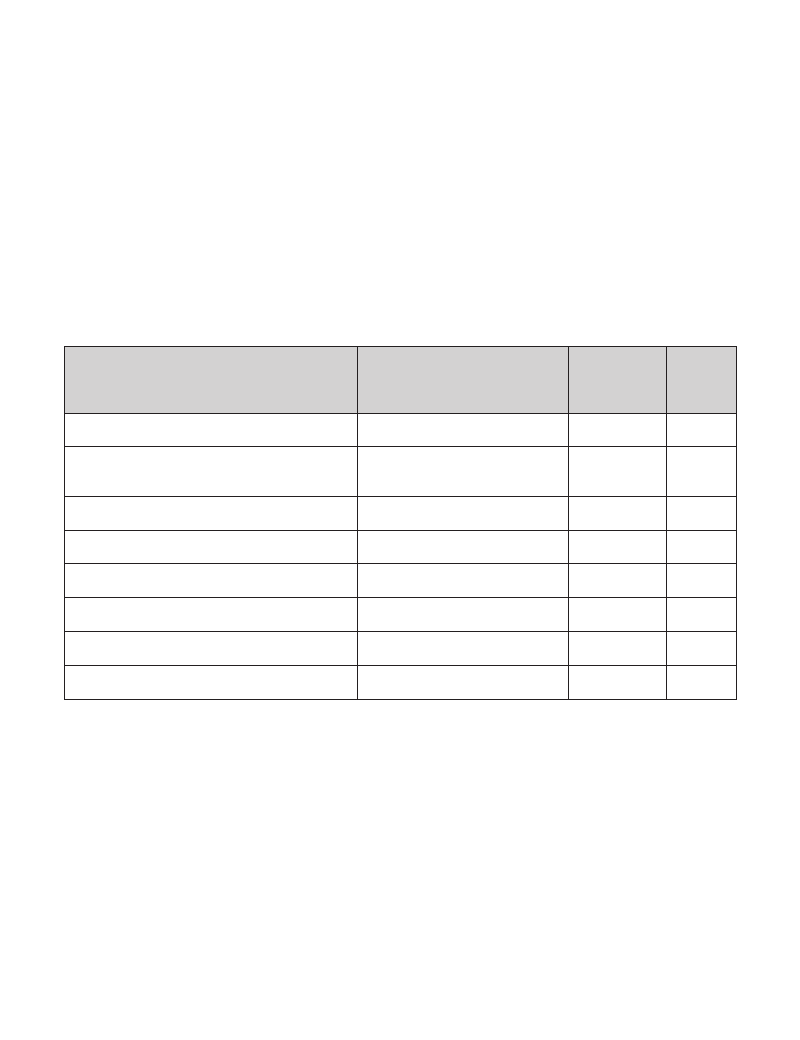
248 / Disaster Risk Management PROGRAMS FOR PRIORITY COUNTRIES LATIN AMERICA & CARIBBEAN
Management requires a great effort both institutionally and from the local governments. Despite the advances
achieved in the past years by the Civil Defense, it is now necessary to design an emergency response capacity building
strategy adjusted to the new institutional structure and organization, and integrate the functions and responsibilities at
territorial levels. Because of the decentralized character of the risk management system, the capacity development at
subnational levels requires adequate resources and should remain a priority.
It is necessary to develop a comprehensive financial strategy to attend to post-disaster situations. Risk
transfer is one of the main propositions for the SNDGR. Similar to other aspects analyzed, it is important to promote
the design of a financial protection strategy on the basis of the results of risk analyses and models and the fiscal
considerations of the Government of Ecuador.
4.key donor engagements
Existing Projects with Donors and
International Financial Institutions
Emergency grant for Tungurahua and Litoral
Strengthening of the Technical Secretariat of Risk
Management (US$5 million IADB loan and US$1.25
million counterpart financing)
Humanitarian assistance for Tungurahua and Litoral
Emergency preparedness and response
Andean program
Quito community safety project
Protection of slopes in Quito South III (Loan for the
Environmental Sanitation Program III)
South-South Cooperation for City Collaboration:
Kathmandu, Makati and Quito
Funding Agency /
International Partners
IADB
IADB
Allocated
Budget and
Period
(US$)
400,000
2008
6.25 million
2006-2011
HFA
Activity
Area(s)
5
1,4
UN (FAO, UNDP, UNICEF,OIM, OPS)
European Commission’s Humanitarian
Aid Department (ECHO)
PREDECAN
World Bank (GFDRR)
UNDP
IADB
World Bank (GFDRR)
3.76 million
2008
2.6 million
2007-2008
16.12 million
2005-2009
980,000 2009-
2012
42 million
2008-2013
400,000
2009-2012
5
5
1,3,4
1,3,4
4
1, 3, 5

ecuador / 249
5.global facility for disaster reduction and recovery (gfdrr):
action plan
Given Ecuador’s disaster risk profile and its existing framework for disaster risk management, the key
priority in Ecuador is to continue to build institutional capacity and ensure long-term vulnerability reduction
at local levels. Strategic actions are needed in the following areas to enhance disaster risk management in Ecuador: (i)
identification and monitoring of risks, (ii) reduce vulnerabilities at the local level, and (iii) strengthen institutional capacity
for strategic planning and coordination at national and local levels.
In light of an agenda as broad as the National Strategy for Risk and Disaster Reduction of Ecuador, it is necessary to
prioritize and focus support in policies and projects with high impact.
Access to knowledge and advanced technological tools are critical to guarantee the availability of
information for decision-making in the current process of institutional change and reorganization. The design and
implementation of CAPRA offers an exceptional opportunity towards this objective.
Ecuador has a very high deficit in the programs of seismic vulnerability reduction in key buildings and the
infrastructure of the hydrocarbon sector. The advances in the assessment and design of medium and long-term
programs which could be achieved with support from GFDRR funds will have a very high impact.
In practice, the incorporation of disaster risk management into development plans and territorial/land
use plans is often limited by the lack of information and/or practical methodological tools accessible to
non-expert technicians. Ecuador has an opportunity to grow in this direction and GFDRR’s support would be very
effective.
Institutional development and risk management frameworks should create capacity to attend to short,
medium, and long-term needs. Emergency and disaster response capacity building is a short-term need which
should be guaranteed by the Technical Secretariat of Risk Management.
Capacity building of local governments is an essential line of action to ensure that the decentralized system
in Ecuador is viable and effective. As its name suggests, the Decentralized National System of Risk Management
(SNDGR) assigns the primary responsibility for risk management at the local level and secondarily at higher levels of
government.

250 / Disaster Risk Management PROGRAMS FOR PRIORITY COUNTRIES LATIN AMERICA & CARIBBEAN
The following activities have been identified in consultation with local authorities and international donor agencies. These
actions support Ecuador’s disaster risk management program and reflect HFA priority action areas.
Indicative Program for GFDRR Funding
(Projects and engagement areas being considered
for GFDRR funding)
DRM capacity building of local governments in priority
areas of the national strategy, e.g. technical assistance,
training, tools, etc.
Development of a Risk Assessment Platform for
Ecuador to advance technological tools and information
systems available for risk evaluation
Technical assistance to incorporate risk reduction into
Ecuador’s new planning system e.g. updating codes,
regulations, generating risk information, training, tools,
etc.
Technical assistance to reduce seismic vulnerability by
supporting the design and prioritization of programs for
structural reinforcement of essential city buildings and
infrastructure of the hydrocarbon sector
Support the design and formulation of programs to
manage and recover hydrographic basins
Support emergency/disaster response capacity
building activities at territorial and sectoral levels
Total Budget Requested:
Implementing Agency /
International Partners
Municipalities
UNDP
Technical Secretariat of Risk
Management, UN-ISDR, PREDECAN
Technical Secretariat of Risk
Management,
Secretary of Planning,
UNDP, PREDECAN
Technical Secretariat of Risk
Management, UNDP
Sectoral Ministries
Technical Secretariat of Risk
Management, Sectoral Ministries,
UNDP, Disaster Preparedness
Programme of the European
Commission’s Humanitarian Aid
Department (DIPECHO)
Indicative
Budget and
Period
(US$)
1.3 million
2009-2012
914,000
2010-2011
700,000
2009-2012
HFA
Activity
Area(s)
1, 3
2
1, 4
1.1 million
4
2009-2012
700,000
4
2009-2011
270,000
5
2009-2010
US$ 4.984 million
Additional consideration should be given to financial protection against disasters. Initial discussions with the Government
of Ecuador have confirmed interest in technical assistance to study and design necessary mechanisms to ensure
comprehensive financial protection in Ecuador.
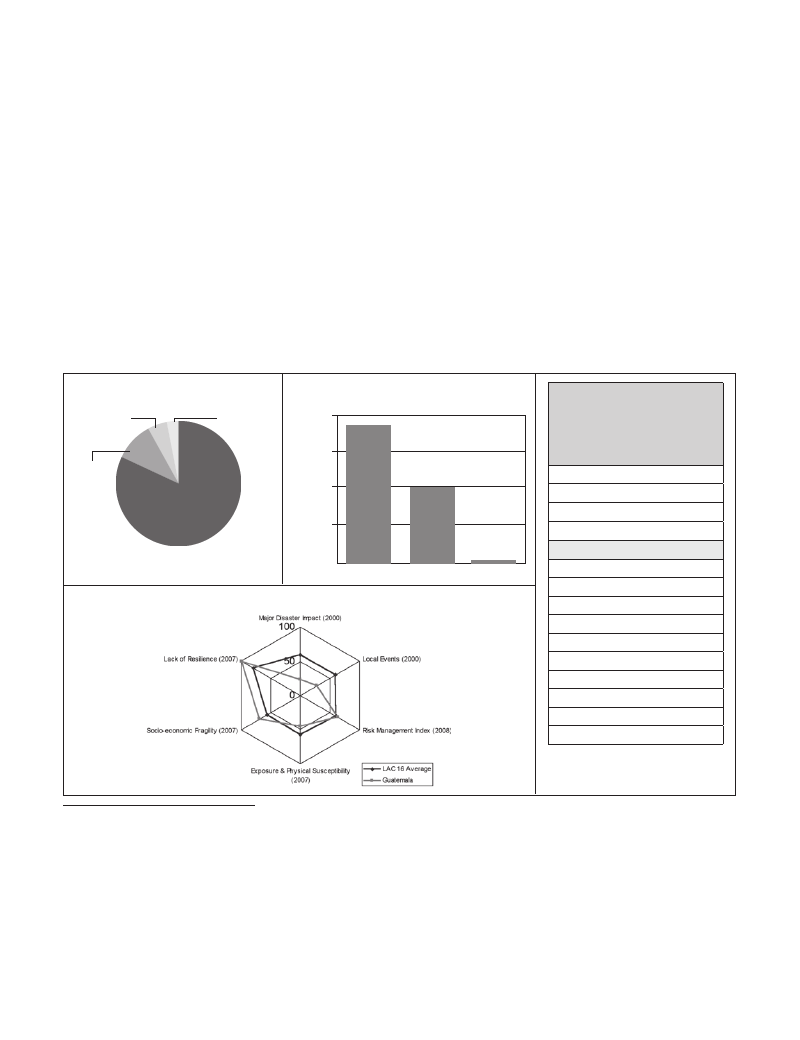
guatemala
guatemala / 251
1. disaster risk profile
According to the World Bank’s Natural Disaster Hotspot study1, Guatemala ranks 5th among countries with
the highest economic risk exposure to three or more hazards. Guatemala is ranked as a high risk country due
to the vulnerability of its gross domestic product (GDP) to multiple hazards with 83.3% of Guatemala’s GDP located in
areas at risk. As one of the most densely populated countries in Latin America, with approximately 12 million inhabitants
in a territory of 108,890 square kilometers, the country is also one of the poorest in the region. Between 1902 and 2005,
Guatemala experienced 62 natural disaster events, which affected approximately 6 million people.2
Population Affected
by Disaster Type3
Floods
Drought
5%
3%%
Storms
10%
Economic Damages by Disaster Type
(1000s USD)3
200000
150000
100000
Earthquake
82%
50000
0
Storm
Earthquake
Flood
Relative Vulnerability and Risk Indicators4
COUNTRIES AT HIGH
ECONOMIC RISK FROM
MULTIPLE HAZARDS
(Top 33 based on GDP with
3 or more hazards)1
1.Taiwan, China
2.Dominican Republic
3. Jamaica
4. El Salvador
5. Guatemala
8. Costa Rica
10. Colombia
12. Chile
15. Barbados
18. Ecuador
20. Peru
21. St. Kitts and Nevis
24. Honduras
27. Mexico
32. Bolivia
1See World Bank, Natural Disaster Hotspots, A Global Risk Analysis (Washington, DC: Disaster Risk Management Series, 2005), table 1.2.
2See Annex 6 for details on Guatemala’s exposure to natural hazards and the number of reported disasters in Guatemala.
3 EM-DAT: OFDA/CRED International Disaster Database, Catholic University of Louvain, Brussels, Belgium, online at: www.emdat.net
4Relative Vulnerability and Risk Indicators are adapted from IADB-IDEA (2007), Programa de Información e Indicadores de Gestión de Riesgos (Man-
izales, Colombia, 2004), Annex (2009). Values are normalized on scale of 0 – 100 and presented against the average for 16 LAC countries found in
IADB-IDEA (2007). Values are normalized on scale of 0 – 100 and presented against the average for 16 LAC countries found in IADB-IDEA (2007).
Major Disaster Impact taken from Disaster Deficit Index: the ratio of economic losses which country could suffer during a Maximum Considered
Event and its economic resilience. Local Events taken from Local Disaster Index: Represents the propensity of a country to experience recurrent,
small-scale disasters and their cumulative impact on local development. Risk Management Index is presented as the negative (ie 0 = optimal, 100
= incipient) of IADB’s Risk Management Index: measures country’s risk management capability in (i) risk identification (ii) risk reduction (iii) disaster
management (iv) financial protection. Resilience, fragility and Exposure are taken from the component indices of Prevalent Vulnerability Index

252 / Disaster Risk Management PROGRAMS FOR PRIORITY COUNTRIES LATIN AMERICA & CARIBBEAN
Exposure in Guatemala is to both low frequency and high impact events, such as earthquakes, volcanoes and hurricanes,
and to high frequency and low impact events, such as floods and landslides. It is this combination of high population
density, poverty, and exposure to natural hazards in Guatemala that constitutes a high risk to adverse natural events.
Geological Hazards
Guatemala is situated in a zone of high seismic risk due to the conjuncture of three tectonic plates: the
North American plate, the Caribbean plate, and the Cocos plate. The most catastrophic adverse natural event in
Guatemala would be an earthquake in Guatemala City, in the case of a 500-year event.
There are approximately 288 volcanoes in the country, 8 had been active in historic times, and 4 continue to
pose a threat. The volcanoes of concern are: Fuego, Pacaya, Cerro Quemado, and Santiaguito.5 Volcanism
in Guatemala exists as a result of the subduction of the Cocos plate beneath the Caribbean plate.
Hurricanes and Drought
Guatemala is exposed to two coasts, with the Pacific Coast more vulnerable to hurricanes, and the floods
associated with them, especially at river mouths. The interior of Guatemala is greatly affected by drought; while the
agricultural sector suffers the most, other important sectors such as water, energy, and health are also impacted.
In recent years, storms and droughts have had the highest human and economic impact in Guatemala.
Losses during 1997-2006 averaged at 0.51 % of GDP, with storms (three events) affecting 485,662 people (around
5% of the country’s population) with damage costs reaching US$1 billion, and 113,596 people (around 1% of the
population) affected by drought (1 event) with the costs of damages reaching US$ 14 million6.
Floods and Landslides
Guatemala is continually affected by low impact, high frequency disasters, such as landslides and flooding.
These disasters occur at local levels, largely due to the topography of the river basins and slopes and the exposure of
the country to two coasts. Nearly 1,733 communities and 210,000 inhabitants are vulnerable to flooding with a total of
30% of the territory at high risk of flooding.
Determinants of Vulnerability to Adverse Natural Events
Vulnerability in Guatemala is due to a large extent to increased urbanization and insufficient planning.
Guatemala is one of the most densely populated countries in Central America and unplanned urban growth has greatly
increased population and infrastructure vulnerability. Given the high vulnerability of the country, natural hazard events
result in disasters that have a high human cost and negative impact on productivity, which in turn delays developmental
progress.
Guatemala is characterized by inadequate application and enforcement of existing building codes. With
increases in urban population and a lack of sufficient building code implementation, both the population and infrastructure
are increasingly at risk to natural hazards. This is compounded further by environmental degradation.
5 http://vulcan.wr.usgs.gov/Volcanoes/Guatemala/description_guatemala_volcanoes.html.
6 Guatemala Country Note, Climate Change Aspects in Agriculture, World Bank

guatemala / 253
Informal settlements are also considered high risk areas given the poor quality of housing construction and
absence of adherence to building codes. These risks must be addressed to decrease vulnerability and mitigate disaster
risk in Guatemala.
2. disaster risk management framework
The Government of Guatemala has placed Disaster Risk Management (DRM) firmly in its development
agenda. This is evident with the inclusion of DRM in the National Development Plan (Plan de la Esperanza). The
institutional coordinating mechanism that provides a legal framework for disaster prevention in the country and inter-
ministerial coordination in cases of emergency is the National Coordinator for Disaster Reduction (CONRED) and the
Secretariat (SSE-CONRED).
Over the last decade, the Government of Guatemala has moved towards a more proactive disaster risk
management approach. The Government has passed two laws that demonstrate this commitment: the Social
Development Law (Decree 42-2001) and the Law of Housing and Human Settlements (Decree 120-96). Both of these
laws include the concept of disaster vulnerability reduction in development planning.
Guatemala has made substantial progress towards addressing vulnerability. The Social Development Law
(Decree 42-2001) establishes that there is a reciprocal relationship between the advancement of development planning
and reducing disaster risks. In Articles 37 and 38, the Ministry of Planning (SEGEPLAN), in coordination with other
government institutions, is charged with the strategy for disaster risk prevention and protection of vulnerable populations.
In 2004, Project GUA 04/021 sought to strengthen capacities for reducing risk in development processes. The principal
objective was to create an inter-institutional program with a vision to incorporate disaster risk management in development
planning.
In addition, the Government has a National Program for Disaster Prevention and Reduction (PNPMD). This
program focuses on enhancing risk monitoring and assessment, reducing risk, strengthening institutions, and developing
risk financing strategies. This program ensures a comprehensive disaster risk management strategy in the country.
Despite great progress the country has made in addressing disaster risk, Guatemala remains vulnerable
to disasters triggered by adverse natural events and continued attention by the Government of Guatemala
is needed. Guatemala’s economic and social development is regularly interrupted by earthquakes, volcanic eruptions,
hurricanes, floods, and forest fires. Major disasters in Guatemala, such as the 1976 Earthquake, which resulted in more
than 23,000 deaths and damages estimated at 17.9% of GDP and Hurricane Mitch in 1998, which caused estimated
damages of 4.7% of GDP, have crippling effects on the country’s sustainable development and long-term growth.
3. activities under the hyogo framework of action
HFA Priority # 1: Policy, institutional capacity and consensus building for disaster risk manage-
ment
The current Government in Guatemala has placed disaster risk management firmly among its development
priorities. The Plan de la Esperanza 2008–2012, the policy program of the administration, focuses on increasing
growth and reducing poverty and inequality. It articulates disaster risk management as a self-standing policy issue in

254 / Disaster Risk Management PROGRAMS FOR PRIORITY COUNTRIES LATIN AMERICA & CARIBBEAN
the context of securing productivity. This demonstrates significant political commitment. The government is aware of the
economic consequences of business interruptions associated with the transfer of funds to address a disaster caused by
adverse natural events and acknowledges the importance of continuing efforts to reduce poverty and inequality.
Learning from recent disasters, Guatemala has made progress towards a more proactive disaster risk
management system. The establishment of the Social Development Law (Decree 42-2001) includes the concept of
disaster vulnerability reduction and notions of demographics and development planning as contributors to risk scenarios.
The Law of Housing and Human Settlements (Decree 120-96) mandates that all territorial entities take disaster risk into
account in development planning.
The creation of the National Coordinator for Disaster Reduction (CONRED) introduced disaster prevention
in the disaster management system in Guatemala for the first time. CONRED works as a coordinating mechanism
to provide a platform and legal framework for inter-ministerial coordination in the case of emergency, while also handling
disaster prevention. It is supported by an Executive Secretariat (SE-CONRED) which is organized around seven
work areas: coordination, financial management, comprehensive disaster risk management, response, preparedness,
mitigation, and logistics. During a disaster, CONRED has the power to enlist the cooperation of all public institutions
and any private bodies within their areas of competence.
Guatemala’s National Program for Disaster Prevention and Reduction (PN PM D) aims to articulate institutional
and private sector efforts to achieve sustainable development through initiatives that incorporate disaster
risk management in development planning. The PNPMD is a program that addresses disaster risk reduction in a
comprehensive manner. Designed with support from the United Nations Development Program (UNDP), the PNPMD
includes four lines of action: (i) improving risk identification and monitoring; (ii) investing to reduce risk; (iii) strengthening
institutional and planning capacity for risk management; and (iv) developing risk financing strategies.
The PNPMD aims to significantly strengthen institutions and planning over the next three years. Programs
include: (i) the formulation of the National Policy for Disaster Risk Management, which involves all sectors and the
development of a National Strategy for Disaster Risk Management, coordinated by SE-CONRED and involving both
public and private institutions; (ii) the strengthening of SEGEPLAN’s planning systems to incorporate risk concepts in
public investments; (iii) the implementation of territorial planning in 13 municipalities by an inter-institutional committee
involving SEGEPLAN, Ministry of Environment (MARN), and Municipal Development Institute (INFOM); and (iv) the
establishment of a roundtable, with private, academic, and international cooperation. Supported by UNDP and the
World Bank, the Vice President’s Office and SE-CONRED will coordinate these efforts and will convene at least twice
a year.
HHFA Priority # 2: Disaster risk assessment and monitoring
Guatemala has strengthened risk identification and monitoring systems through the development of
methodologies to analyze and evaluate hazards and vulnerabilities. The National Institute of Seismology,
Volcanology, Meteorology and Hydrology (INSIVUMEH) has developed an inventory of Historical Landslide Event Maps,
implemented an early warning alert system for flooding in six water basins, and conducted hydrological studies in six
basins. Various educational facilities have also been prepared for the technical study of monitoring and prognostic
elements of the systems.
The PNPMD in Guatemala aims to significantly augment the effort to improve risk identification and
monitoring over the next three years. This program includes projects that will advance the methodology to identify

guatemala / 255
hazards, vulnerability, and risks, while strengthening national capacity to identify and monitor such risks. Key components
of the sub-programs include: (i) a space to exchange existing methodologies on the analysis of risk and vulnerability,
while creating new methodologies in a participatory manner; (ii) the production of hazard risk studies on landslides
and flooding, and vulnerability risk studies, especially analyzing the vulnerability of the most important water basins to
determine population, infrastructure, and economic vulnerability; and (iii) the construction or strengthening of existing
observation networks, particularly the technical and scientific capabilities of INSIVUMEH.
In recent years, the Ministry of Agriculture (MAGA) has made efforts to identify risk using Geographic
Information System (GIS) tools on a very large scale. This has complemented the more traditional monitoring
of natural hazards carried out by the INSIVUMEH, and the geographic and cartographic information produced by the
National Geographic Institute of Guatemala (IGN). MAGA has produced hazard maps for volcanic eruptions, developed
at a scale of 1:50,000 with the support of Japan’s International Cooperation Agency.
Risk evaluations of 250 geographic areas earmarked for relocation of families affected by Hurricane Stan
were developed by the Secretaría de Asuntos Agrarios (SAA) in 2006. The Gerencia de Riesgo, a professional
risk evaluation group, worked with SAA in evaluating an additional 50 geographic areas that continue to be affected by
landslides and mudslides.
The Government has requested support for various technical assistance projects related to disaster risk
management. Guatemala’s Vice-President’s Office, in coordination with the National Committee for Risk Management,
is implementing a “Technical and Scientific Information for Municipal Planning” project, with financing from the Global
Facility for Disaster Reduction and Recovery (GFDRR). This project was designed over a two year period in a participatory
process with institutions including INSIVUMEH, MAGA, SE-CONRED, SEGEPLAN, and relevant municipalities.
Guatemala is working to strengthen risk identification at the municipal level in order to integrate this
knowledge into territorial development planning. This activity, funded by a GFDRR grant, will help hazard-prone
municipal governments to include risk considerations in their territorial development process. The project will: (i) develop
scientific information on hazards, vulnerability, and risk; ii) provide specific risk information for land use and urban zoning;
and (iii) provide scientific information for emergency plans. The information provided will help local authorities place
appropriate controls to avoid future generation of risks and will also aid in the design of risk mitigation programs.
SE-CONDRED has developed an early warning alert system for the Fuego Volcano. This is aimed at reducing
risk in the Escuintla, Sacatepuez and Chimaltenango Departments. The initiative was supported by Japan’s International
Cooperation Agency.
The Government of Guatemala is not yet in a position to identify or monitor needs for investments in risk
reduction across sectors. The Government of Guatemala also lacks capacity to provide a strategic overview of hazard
exposure or contingent risk for the country as a whole or for different sectors. To address this challenge, the Government
has drafted a new regulation to strengthen the mandates of CONRED, SE-CONRED, CORRED, COMRED, and
COLRED to document and monitor disaster risk, as well as to promote prevention and mitigation activities. In addition,
the new regulation for the Law of CONRED has been prepared and requires that all public infrastructure investments
comply with seismic building codes. The regulation is ready for the President’s signature and, if approved, could have a
significant positive impact on risk reduction in future investments.

256 / Disaster Risk Management PROGRAMS FOR PRIORITY COUNTRIES LATIN AMERICA & CARIBBEAN
HFA Priority # 3: Use of knowledge, innovation, and education to build a culture of safety and
resilience at all levels
Guatemala has taken steps to include disaster risk reduction concepts in the educational sector. This is
demonstrated by the scientific knowledge program to identify high risk areas, the introduction of the subject disaster
reduction in primary and secondary schools, the strengthening of the disaster documentation centre, the national
campaign “We Can Act”, the raising of awareness by the media, and finally, the consolidation of the CONRED website.
Guatemala is working with CEPREDENAC, the UN-ISDR, IADB, and the World Bank to develop the
Central American Probabilistic Risk Assessment (CAPRA) platform, an innovative initiative with a strong
educational element. CAPRA will help facilitate a comprehensive understanding of risk and risk management. The
platform will enable governments and scientific communities to identify and evaluate the sources of potential losses
(both geographically and by sector) from disasters, risk reduction investment opportunities, and government capacity
to finance and manage recovery operations. This knowledge will provide the basis to formulate strategies and policies
to strengthen the national risk prevention and emergency management system, and to develop a comprehensive risk
finance strategy. It is anticipated that CAPRA software will be included in university curricula.
HFA Priority # 4: Reduction of the underlying risk factors (reduction of exposure and vulnerabil-
ity and increase of resilience)
The PNPMD aims to significantly augment investments in risk reduction over the next three years. The
main components of the program include: (i) developing national standards for including disaster risk assessment
in construction planning; (ii) elaborating National Regulation for the Construction of Schools and guidelines for its
application; (iii) the implementation of a public infrastructure auditing program through the National General Auditing
Agency “Controloría General de Cuentas”; (iv) two pilot programs in Guatemala City to transform high risk zones into
secure zones; and (v) identification of mitigation works in river basins managed through the Water Cabinet.
A series of risk reduction activities that incorporate mitigation and guarantee safe construction, especially
in the health and education sectors, have been earmarked. These initiatives include the development of building
codes; national regulations for hospitals and schools combined with municipal disclosure of these codes, infrastructure
auditing; works to prevent landslides (retaining walls, slope reinforcements), rehabilitation and maintenance of road
infrastructure, and integrated management of river basins. The Vulnerability Reduction and Environmental Degradation
Regional Project (PREVDA) has already been initiated.
SE-CONRED developed and disseminated better construction standards according to risk assessment
methodologies post-Hurricane Stan. The methodology was developed in coordination with line ministries responsible
for reconstruction as well as the rehabilitation and retrofitting of public buildings. The aim is to introduce construction
standards that result in better and safer buildings on the basis of risk assessment methodologies. Although SE-CONRED
does not have the capacity to supervise the processes nor to monitor to what extent the methodology is being followed,
the methodology has been passed onto implementing agencies that have been encouraged to use this for construction
and rehabilitation activities.
COVIAL is overseeing the implementation of investments in river dredging and the strengthening of river
banks to prevent significant adverse impacts of natural events on road infrastructure. These investment
decisions are made on the basis of documented cost for road maintenance. In areas where COVIAL experiences
significant recurrent costs of rehabilitation of the road network due to the impacts of floods, the agency invests in flood

guatemala / 257
prevention as a cost minimizing strategy. Over the last five years, COVIAL has dredged more than 150,000 cubic meters
of rivers and canals per annum.
INSIVUMEH has developed Landslide Event Maps to improve territorial planning. As a result of the development
of these maps, there has been substantial investment in the upgrading and expansion of monitoring networks.
Disaster risk management is not yet explicitly part of the territorial planning processes, but authorities
are working towards a screening process for both public and private investment. SEGEPLAN has developed
a methodology that will help territorial entities integrate disaster reduction and recovery into territorial planning. This is
a significant first step for developing the instruments and capacities that will allow the territorial entities to effectively
manage their development planning in a way that reduces the construction of new risk.
Despite progress, Guatemala does not have a systematic investment program for risk reduction. Interventions
in risk reduction have generally been done in an ad hoc manner. The Government of Guatemala does not track or
monitor investments in risk reduction across sectors. This means that there is little understanding of the significance or
effectiveness of these investments in reducing the disaster risk exposure of the country or even of specific geographic
areas in the country; this makes it difficult to demonstrate results in terms of risk reduction activities. Nevertheless, some
of the ad hoc activities represent significant investments and have been good starting points to reduce the country’s
disaster risk.
HFA Priority # 5: Disaster preparedness, recovery and reconstruction at national, regional, and
local levels
The institutional structure for disaster risk management in Guatemala is organized around CONRED and
is replicated in regional (Regional Coordinator for Disaster Reduction – CORRED), municipal (Municipal
Coordinator for Disaster Reduction – COMRED), and local (Local Coordinator for Disaster Reduction –
COLRED) committees. These committees include representatives from public agencies, private sector and civil
society organizations, and are convened by the most senior government representative in the relevant locality. Delegates
of SE-CONRED support the committees, whose main functions are to: (i) coordinate disaster prevention and response
activities; (ii) relay information to the next level of the system; and (iii) implement actions relating to alerts, evacuation,
security, and emergency shelter.
Until recently, Guatemala has relied on ex-post budget allocations to respond to disasters caused by adverse
natural events. In the past, financing for disaster response and reconstruction was almost entirely allocated after the
disaster event through two mechanisms: (1) the National Fund for the Reduction of Disasters, coordinated by CONRED
and financed according to the guidelines provided by the National Plan for Disaster Prevention and Response (each year
the fund receives US$2 million from the national budget [Presupuesto General de Ingresos y Egresos del Estado]); and
(2) on an event-by-event basis CONRED coordinates the implementation of reconstruction with additional funding via
budget reallocations by the Ministry of Finance. The funds are generally channeled to three entities that are responsible
for implementing and managing rehabilitation and reconstruction projects after disasters: the Unidad de Conservación
Vial (COVIAL), which manages the funds allocated to the maintenance of the road network; the Fondo Nacional para
la Paz (FONAPAZ), which develops and implements projects to eradicate poverty and extreme poverty (communal
buildings, halls, sport fields, and recreation, education, and nutritional programs); and the Secretaría Coordinadora
Ejecutiva de la Presidencia (SCEP) / Unidad de Convoyes Regionales, a unit specializing in the implementation and
management of construction and maintenance projects of rural roads.
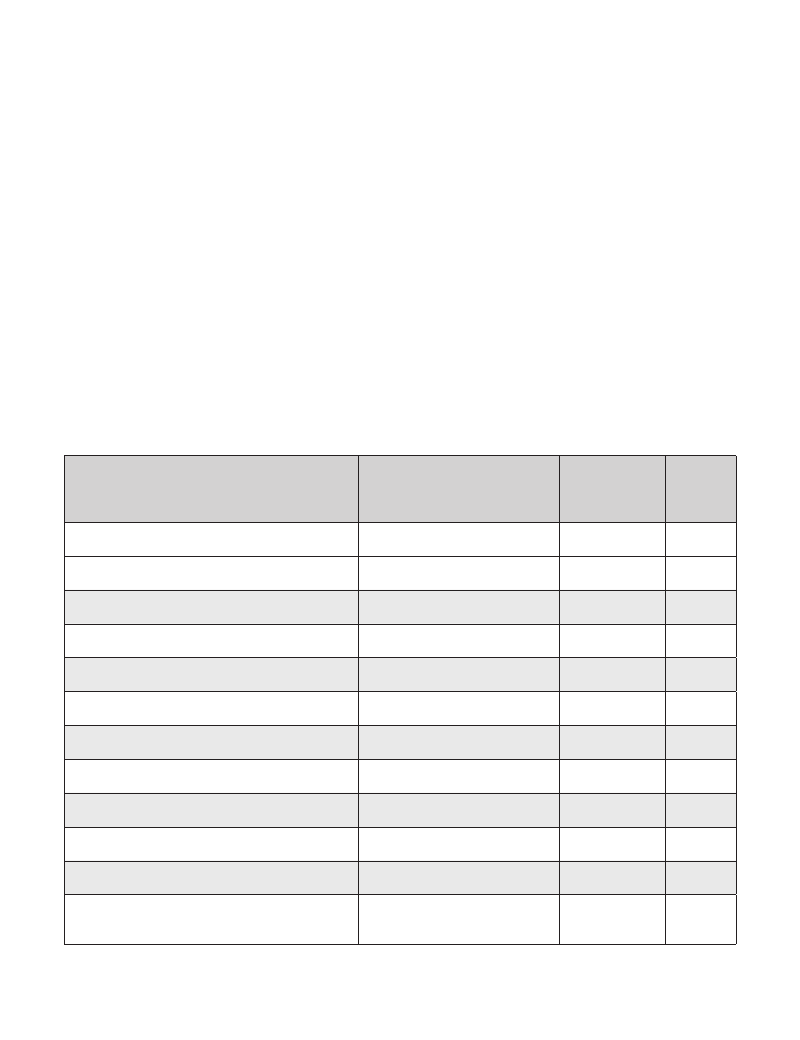
258 / Disaster Risk Management PROGRAMS FOR PRIORITY COUNTRIES LATIN AMERICA & CARIBBEAN
Guatemala’s Ministry of Finance is preparing a comprehensive strategy to cover contingent liabilities
that will include adverse effects of natural events. The Catastrophe Deferred Drawdown Option (CAT DDO)
will be included as one of the elements in this strategy. The National Program for Disaster Prevention and Reduction in
Guatemala outlines three specific areas where the Government will advance towards this strategy over the next three
years. The objective of these activities is to improve the government capacity to mobilize and efficiently execute resources
in case of disasters. The three specific areas are: (i) viability studies for a tag system in the budget by the Ministry of
Finance, identifying resources in the budget that may be dedicated to disaster risk management; (ii) an analysis of the
fiscal exposure to adverse natural events, which will also determine in which way investments lost after a disaster may
be recovered; and (iii) a feasibility study to determine the Ministry of Finance’s ability to maintain a contingency fund for
disasters.
Despite great progress, local community capacity to prepare for, and respond to, disasters caused by
adverse natural events should be improved and strengthened. During the last 10 years, the response and
preparation capabilities in Guatemala have improved; however, Hurricane Stan and the 2008 floods revealed that despite
good response capabilities at the municipal level, CONRED response skills remain weak at the local level and require
additional support to be adequately prepared in the future.
4.key donor engagements
Existing Projects with Donors and
International Financial Institutions
Modernization and updating the meteorological system
in Guatemala
Program for the Reduction of Vulnerability and
Environmental Degradation Guatemala(PREVDA)
Development of scientific information to promote
municipal planning to reduce disaster risks
Disaster risk management development policy loan with
a Catastrophe Deferred Drawdown option (CAT-DDO)
Strengthening of Information and Communication for
CEPREDENAC and National Commissions
Development and application of a Risk Assessment
Platform for Guatemala
Community Risk Management and risk mapping with
local actors
National Policy for Risk Reduction in Guatemala
Funding Agency /
International Partners
Central American Development Bank
(BCIE)
European Commission
World Bank (GFDRR)
World Bank
World Bank
IADB
GTZ
IADB
Institutional support to technical groups related with risk
reduction
National program for risk reduction on the
reconstruction process PROREC
Regional Program of Environment in Central America
(PREMACA)
Earthquake Risk Reduction In Guatemala, El Salvador
and Nicaragua With regional cooperation to Honduras,
Costa Rica and Panama (RESIS II)
UNDP
UNDP,
Sweden, Norway, USAID
Danish Cooperation (DANIDA)
Norway
Allocated
Budget and
Period
(US$)
12.5 million
3.34 million
2007-2011
730,000
2008-2010
85 million
2009-2011
446,000
2007-2009
350,000
2009-2010
Not available
750,000
2009-2010
90,000
2009
13 million
2007-TBD
Not available
2.4 million
2007-2010
HFA
Activity
Area(s)
2
2,3
1,2,3,4
1,2,3,4,5
1,2
2,3
2,3,4
1
1,3
2,4
2
(Cont.)
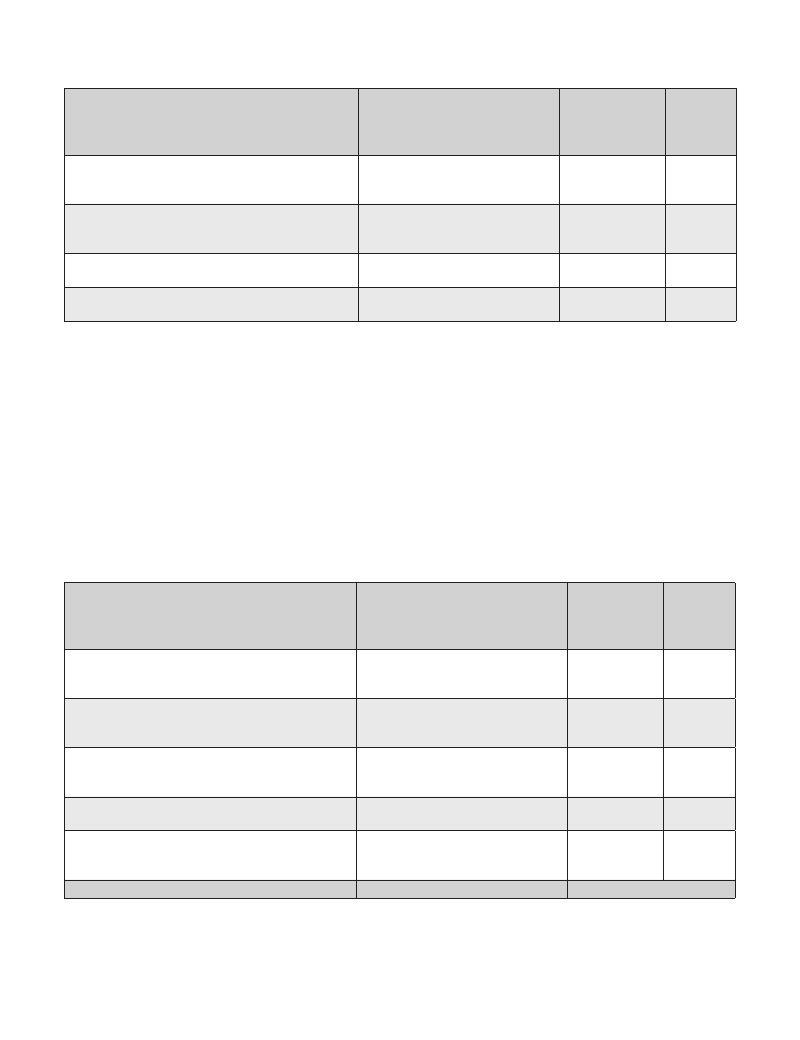
guatemala / 259
Existing Projects with Donors and
International Financial Institutions
Strengthening of CEPREDENAC and National
Commissions for disaster vulnerability reduction in
Central America
Regional Plan for Disaster Reduction (PRRD)
Development of disaster risk management capacity at
the local level
Mesoamerican coordination system for territorial
information
Funding Agency /
International Partners
Spanish International Cooperation
Agency
Norway,
Spanish International Cooperation
Agency
Japan International
Cooperation Agency
IADB
Allocated
Budget and
Period
(US$)
130,000
2005-2009
400,000
2006-2011
300,000
2008-2011
800,000
2009-2011
HFA
Activity
Area(s)
1
1
2,4
2
5.global facility for disaster reduction and recovery (gfdrr):
action plan
Given Guatemala’s disaster risk profile and its existing framework for disaster risk management, the key
priority is to implement the recently approved national program for disaster risk management. Strategic
actions are needed in the following areas in Guatemala: (i) strengthen institutional capacity for strategic planning and
coordination, (ii) mainstream disaster risk reduction in specific sectors, and (iii) develop a comprehensive risk assessment
and monitoring capacity.
The following activities have been identified in consultation with local authorities and international donor agencies. These
actions support Guatemala’s disaster risk management program and reflect HFA priority action areas.
Indicative Program for GFDRR Funding
(Projects and engagement areas being considered
for GFDRR funding)
Support for the development of territorial planning that
integrates disaster risk considerations at the municipal
level
Technical assistance to support the national program
for disaster risk reduction and mainstreaming disaster
risk reduction in other sectors
Studies and designs for mitigation measures for critical
infrastructure
Implementing Agency /
International Partners
INSIVUMEH,
Municipalities
Vice-Presidency,
CONRED, Ministry of Finance
CONRED
Mitigation works in key sectors
Sectoral Ministries, Municipalities
Support for the development a Risk Assessment
Platform for Guatemala
Total Budget Requested:
Vice-Presidency,
CONRED, Universities, Sectoral
Ministries, INSIVUMEH
Indicative
Budget and
Period
(US$)
1.4 million
2009-2012
HFA
Activity
Area(s)
1,2,4,5
800,000
2009-2011
1,2,3,4
1.2 million
2009-2010
1,3,4
980,000
1,4
2009-2011
564,000
1,2
2009-2010
US$ 4.944 million
In addition to the above-mentioned activities, ongoing dialogue with national and local officials will continue to identify
disaster risk management measures that consider climate change as part of their adaptation strategies.


DISASTER RISK MANAGEMENT
South Asia
Bangladesh / Pakistan / Sri Lanka

262 / Disaster Risk Management PROGRAMS FOR PRIORITY COUNTRIES SOUTH ASIA
Bangladesh
The preparation of the integrated, multi-stakeholder proposal or DRM Action Plan for possible GFDRR funding, was
carried out over a nearly 3-month period between March-May 2009. The first round entailed soliciting proposals from
different government and non-government entities and concerned donor agencies. In the second stage, these proposals
were analyzed by a 3-member team comprising of the Bank’s Regional and Country DRM Coordinators and other
staff. The third stage included a consultative process involving a range of stakeholders including the Economic Affairs
Department, the Ministry of Food and Disaster Management including its various directorates, the Bank’s ECRRP Team,
and the Comprehensive Disaster Management Program (CDMP) and its present financers including the UNDP, DFID
and EC. However the present proposal is still in draft form and shall be further deliberated upon with the concerned
stakeholders in a final consultative round, subsequent to receiving preliminary GFDRR feedback.
1. disaster risk profile
Historical Profile of Natural Disasters in Bangladesh
Bangladesh’s geographical location and land characteristics make it one of most hazard-prone countries in the world. The
country has been frequented by a range of natural hazards throughout its history, including cyclones, floods, droughts,
tornadoes and river bank erosion. Other major hazard risks to the country include earthquake, Tsunami, high arsenic
contents in ground water, water logging and salinity, etc. Wide-scale flooding has been the most recurring type of
disaster striking Bangladesh, and the country remains one of the worst sufferers of cyclonic casualties in the world.
The transitional pre- and post-monsoon periods are also frequented by severe local storms and tornadoes. In addition,
riverbank erosion affects many people and hectares of land annually. Droughts have also been a common occurrence
over the years.
Bangladesh has experienced a number of earthquakes over the past 200 years – between 1869 and 1950, 7 earthquakes
ranging between 7.0 to 8.7 on the Richter scale have been recorded in the Bangladesh region. Even though Bangladesh
is located in a seismically active and high-risk region, seismic risk awareness, mitigation and reduction has not been
mainstreamed into the country’s core disaster management agenda and strategy. Not only is there great need for such
mainstreaming of seismic risk reduction and mitigation, but for the country to urgently start devising and implementing
major preparedness interventions and capacity building efforts.
Bangladesh is currently ranked as the most climate vulnerable country in the world (World Bank 2005). Climate change
in particular, is likely to considerably exacerbate’ Bangladesh’s disaster vulnerability Projections of the Intergovernmental
Panel on Climate Change (IPCC) suggest that warmer temperatures will increase both the frequency and intensity
of cyclones in the Bay of Bengal. In addition, rapid snow melt in the upper Himalayas coupled with increased peak
discharges, would likely increase the depth and spatial extent of flooding in the Ganges-Brahmaputra-Meghna Basin.
Added to these risks are the likely consequences of sea level rise, which can cause economic losses of an unprecedented
magnitude in Bangladesh’s case.
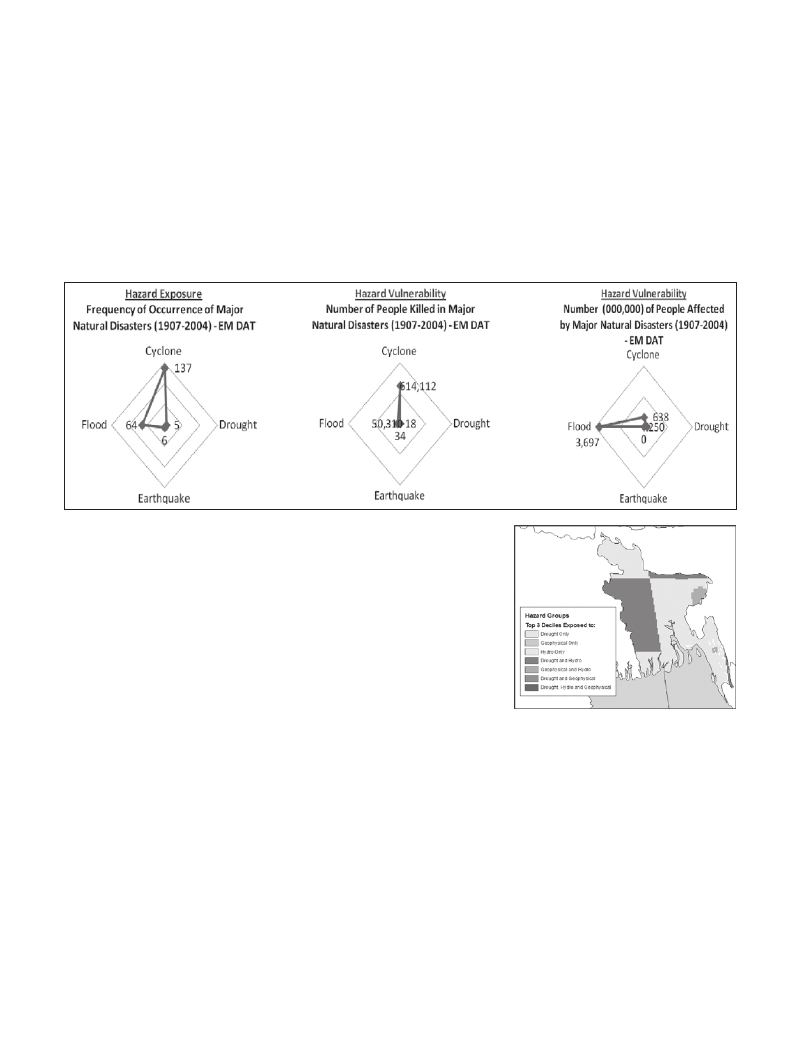
banladesh / 263
Bangladesh’s Exposure and Vulnerability to Hazard Risks
Historically, cyclones and floods have posed the greatest risk to Bangladesh on a country level. The charts below
indicate that cyclones have by far been the most recurring and devastating natural hazard in terms of the frequency
of their occurrence and their human toll., floods in Bangladesh affect a greater population base than any other natural
hazard. The country remains one of the worst sufferers of cyclonic casualties in the world. There have been at least 8
major cyclones since 1965, wreaking huge damages and loss of life – the 1970 and 1991 cyclones caused 300,000
and 140,000 human casualties respectively. The November 2007 cyclone SIDR, although of no less magnitude than
some of the earlier cyclones, led to lesser (3,363) casualties, due to among other factors, the much improved state of
disaster management in the country.
Moreover, in most years, between 30-50% of the country has been affected
by floods. As illustrated by the Hotspots Study by the University of Columbia’s
Earth Institute, sub nationally, the northern and eastern regions of the country
are susceptible to earthquakes while the southeast is particularly vulnerable to
all five hazards. The combined multi-hazard maps for mortality and GDP show
that Bangladesh ranks in the top 3 deciles of risk when compared to the rest
of the world.
The Key Underlying Risk Factors
Deficiencies and Gaps in Implementation of Disaster Preparedness and Risk Reduction Plans (A Case Study of the
2007 Cyclone Sidr) – The country’s geographical location and land characteristics overwhelmingly and unmistakably
remain the biggest underlying risk factors for Bangladesh. Over time, the country’s ability to manage disaster risks, in
particular floods and cyclones, has evolved and improved, as a result of a gradual shift from a response-based approach to
a strategy that incorporates elements of greater emergency preparedness and risk mitigation. However key deficiencies
and gaps remain in the actual implementation of national DRM policies and local risk reduction action plans, as was
evidenced in the 2007 SIDR cyclone event. The event highlighted the following unmet needs that continue to remain
the key underpinning risk factors for Bangladesh: (a) further strengthening and institutionalizing disaster preparedness,
especially among the various sub-national disaster management committees; (b) mobilizing adequate resources for
improved local disaster preparedness and response management resources; (c) mainstreaming disaster risk reduction
and mitigation across sectors and down to the lower levels of governance, and; (d) taking stock of deficiencies in key
risk mitigation infrastructure such as shelters and coastal and river embankments.

264 / Disaster Risk Management PROGRAMS FOR PRIORITY COUNTRIES SOUTH ASIA
Inadequate Attention to Seismic Risks - Even though Bangladesh is located in a seismically active and high-risk region,
seismic risk awareness, mitigation and reduction has not been mainstreamed into the country’s core disaster management
agenda and strategy. This is probably because of the long period of time that has elapsed since the last major earthquake
in 1950, but predictions now suggest that a major earthquake might be just around the corner. Hence, there is a need
for mainstreaming seismic risk reduction and mitigation in Bangladesh’s disaster management strategy and plans, and to
start devising and implementing major preparedness interventions and capacity building at various levels.
Lack of Technical and Financial Capacities for Climate Change Adaptation – With the added climate change factor,
which is likely to exacerbate the intensity and impacts of floods, cyclones and droughts in particular, there is a need for
greater urgency for further improving disaster management and preparedness in the country, including quickly mobilizing
substantial additional financial and technical support from the international community and development partners. The
up-gradation and modernization of Bangladesh’s hazard risk management regime is vital for the country to continue the
economic growth it has achieved over the last decades. The Government’s PRSP must place even greater emphasis
on Disaster Risk Reduction (DRR), along with the cross-sectoral mainstreaming of DRR, in order to be able to achieve
the millennium development goals.
2. disaster risk management framework
Bangladesh’s Disaster Management Strategy
The present national strategy for disaster management, although in an early phase of implementation, is based on 3 key
elements including:
• Defining and redefining the risk environment, entailing systematic and improved hazard analysis and vulnerability/
community risk assessments; and risk treatment and ranking, including incorporation of climate change impacts;
• Managing the risk environment, including achieving a good balance of risk reduction options; moving from generic
hazard to risk specific programs, and; mainstreaming risk reduction across sectors through advocacy, policy and
planning reform, and capacity building;
• Responding to the threat environment, including activating systems and mobilizing resources; utilizing vulnerability
and risk databases for emergency response planning; and maintaining effective communications and early warning
systems
Institutional Structure for Disaster Management
The National Disaster Management Council (NDMC), headed by the Prime Minister, is the highest level forum for the
formulation and review of disaster management policies. The Inter-Ministerial Disaster Management Coordination
Committee (IMDMCC) is in-charge of implementing disaster management policies and decisions of the NDMC, assisted
by the National Disaster Management Advisory Committee (NDMAC). The Ministry of Food and Disaster Management
(MoFDM) is the apex institution responsible for coordinating national disaster management interventions across all
agencies. The MOFDM comprises of a Central Disaster Management Bureau (DMB), Director General Food, Directorate
of Relief and Rehabilitation (DRR) and a Cyclone Preparedness Program Implementation Board (CPPIB). In addition,
various other committees are tasked with coordination functions, dissemination of warning signals and training and
public awareness building. Moreover, at the sub-national level, disaster management committees are functioning at
the district, upazila, union, pourashava (municipal), and city corporation levels, tasked with coordinating and reviewing
disaster management activities in their respective jurisdictions.

banladesh / 265
Presently Articulated National Priorities for Disaster Management
The Draft National Plan for Disaster Management (NPDM, 2007-15), is an umbrella plan attuned with the achievement of
disaster management goals and priorities set out in the HFA (2005-15) and the SFA (2006-15). The Plan is to be used
for: (a) articulating the long-term strategic focus for disaster management in Bangladesh; (b) acting as national driver
for change broadly aimed at disaster risk reduction and climate change adaptation, and; (c) providing a roadmap for the
development of disaster management plans by various lower level entities.
The NPDM is centered around the following strategic priorities and goals: (i) professionalizing the present disaster
management system; (ii) mainstreaming disaster risk reduction; (iii) strengthening institutional mechanisms for disaster
management; (iv) empowering at-risk communities; (v) expanding risk reduction programming across all sectors and all
hazards; (vi) strengthening emergency response systems, and; (vii) developing and strengthening networks for disaster
management.
Further, the NPDM calls for the development and implementation of district, upazila, union, and paurashava/city corporation
disaster management plans, and also lays out specific requirements to be addressed by these multi-tier plans. It also
mandates the development of sectoral development plans incorporating disaster risk reduction, and hazard-specific
multi-sectoral disaster management plans.
Priorities for Climate Change Research, Capacity Building and Adaptation
Under its strategic goal for expanding risk reduction programming, the NPDM provides an elaborate framework for
‘establishing an integrated approach to disaster management, including climate change and climate variability impacts’.
Key priorities identified vis-à-vis climate change include: (a) establishing and capacitating the Climate Change Cell (CCC)
within DOE; (b) developing scenario and prediction models; (c) conducting research and strengthening knowledge on
climate change and climate variability impacts; (d) identifying climate change adaptation options through action research;
(e) incorporating climate change and climate variability impact information in DRR programs and strategies, and ; (f)
designing and implementing capacity building programs to improve and enhance multi-stakeholder understanding of
climate change impacts.
3. Integration of DRM in Development Strategies
Integration of DRM in National Policies and Linkages with International Conventions
Bangladesh’s Poverty Reduction Strategy Paper (PRSP) provides for strengthening disaster management and risk
reduction, mainstreaming DRR into national policies and developmental processes, and enhancing community capacity
for disaster preparedness and risk reduction. Further, the Draft National Plan for Disaster Management (NPDM, 2005-
15), is aligned with the objectives and priorities for action identified under various international conventions, such as
the Hyogo Framework for Action (HFA, 2005-15), the United Nations Framework Convention on Climate Change
(UNFCCC) and particularly, the SAARC Framework for Action (SFA, 2006-15). The NPDM has already been approved
by, and incorporates the feedback of: (a) a dedicated MoFDM committee; (b) a wider stakeholder group comprising
of government and non-governmental organizations and academic institutions; (c) relevant government ministries and
departments; and lastly; (d) the IMDMCC. In the light of IMDMCC comments and decisions, the draft was further revised
and prepared for Cabinet consideration and approval.

266 / Disaster Risk Management PROGRAMS FOR PRIORITY COUNTRIES SOUTH ASIA
The Bank’s Shifting Focus from Disaster Response to DRM Financing
Although the Bank’s Country Assistance Strategy (2006-2009) supports the PRSP’s broader objectives, specially
towards strengthening local governance and community social safety nets, it currently falls short of specifically supporting
the country’s conscious shift towards the mainstreaming of DRM considerations in its developmental planning. The Bank’s
engagement in the disaster arena in Bangladesh has typically remained response-based, with a number of Emergency
Recovery Loans in the wake of frequent floods and cyclones. However the Bank’s 2008 cyclone Sidr response is
marked by a full acknowledgement of the country’s DRM needs through the development of a medium to long term (15-
year) strategic plan of action for strengthened disaster risk reduction and mitigation under the Joint Damage, Loss and Needs
Assessment (JDLNA).
DRM Interventions under the ECRRP – Physical implementation of the above plan began with a support of US$ 8 million
extended towards DRM institutional capacity building and strengthening disaster preparedness under the Emergency
Cyclone Recovery and Rehabilitation Project (ECRRP). This DRM strategy is structured along the Bank’s international
DRM strategic framework, while the ECRRP specifically supports 3 pillars of this framework including: (i) hazard risk
identification and assessment; (ii) strengthening and enhancing emergency preparedness, and; (iii) institutional capacity
building related to DRM. These entail structural and non-structural interventions both generally at the national and local
levels, including: (a) capacity Building of the Disaster Management Bureau (DMB); (b) support towards a Detailed
National-level Multi-Hazard Risk and Vulnerability Assessment, Modeling and Mapping, and; (c) strengthening and
enhancing emergency preparedness in 12 severely cyclone affected districts.
The ECRRP also includes subprojects for physical risk mitigation, including river and coastal embankment improvement,
new disaster shelters, and upgradation of the rural road network. It also provides for studies for establishing a disaster
management response fund/facility and potential for buying catastrophe risk coverage.
Other Ongoing DRM Technical Assistance and Economic Sector Work – The Bank is currently carrying out economic
sector work and technical assistance in the following areas: (a) decentralized disaster management and local governance;
(b) an agricultural risk insurance feasibility study (GFDRR-funded); (c) ESW on implications of climate change on food
security, and; technical assistance towards improving Bangladesh’s response and recovery activities in the aftermath of
disasters.
4.key donor engagements
The national disaster management institutional apparatus above has collaborative linkages with a host of technical and
scientific organizations, such as the Flood Forecasting and Warning Centers (FFWCs), Bangladesh Meteorological
Department (BMD), Center for Environmental and Geographical Information Services (CEGIS), Institute for Water
Modeling (IWM), and the Space Research and Remote Sensing Organization (SPARRSO).
A number of International Financing Institutions, multilateral and bilateral donor agencies are supporting disaster
management and risk mitigation interventions in the country. The Disaster Emergency Response Group (DER) is a forum
for information sharing, composed of government representatives, donor agencies and the NGO community.
The Comprehensive Disaster Management Programme (CDMP), under the auspices of the DMB, is undertaking a number
of interventions aimed at strengthening and improving disaster management and risk mitigation capacities at various levels,
and in promoting and implementing the national strategic priorities and plans set out by the Government. It is funded by

banladesh / 267
DFID, UNDP and the EC. The CDMP Phase I has effectively been under implementation since late 2005 and is scheduled
to be completed by December 2009. The program has started to make significant contributions in the areas of:
• capacity building and professionalizing disaster management;
• partnership development including advocacy for mainstreaming disaster risk reduction and for expanding risk
reduction across a broader range of hazards;
• community empowerment, community risk assessments (CRA) and community risk reduction programs funded
through the Local Disaster Risk Reduction Fund (LDRRF);
• research and information management on earthquake and Tsunami preparedness and capacity building on climate
change risk management;
• strengthening response management through the establishment and strengthening of Disaster Management
Information Centers and a Disaster Management Information Network;
The CDMP has met with particular success in implementing CRAs, community-level Risk Reduction Action Plans and
small scale risk mitigation interventions funded through the LDRRF in seven pilot districts. Phase II of the CDMP shall
be able to scale-up these activities in additional program districts. In other areas, the CDMP has yet met with partial
success, but is steadily moving towards achieving its strategic objectives, as per the program’s mid-term evaluation
report.
5.global facility for disaster reduction and recovery (gfdrr):
action plan
The preparation of the integrated, multi-stakeholder proposal or DRM Action Plan for possible GFDRR funding (Refer Table
1), was carried out over a nearly 3-month period between March-May 2009. The first round entailed soliciting proposals from
different government and non-government entities and concerned donor agencies. In the second stage, these proposals were
analyzed by a 3-member team comprising of the Bank’s Regional and Country DRM Coordinators and other staff. This required
an assessment of these proposals in respect of: (a) their relevance to the national and local contexts and DRM capacities,
including their potential for addressing and mitigating the underlying risk factors for the country (refer sub-sections 5,6,& 7); (b)
their relationship with, and leveraging potential for furthering the objectives of, the various existing national strategies, priorities
and action plans in respect of improved DRM and strengthened disaster preparedness; (d) addressing present gaps in DRM
interventions and avoiding duplications (although some overlaps are unavoidable in the country environment), and; (e) their
responsiveness to the lessons learnt and gaps and weaknesses identified in recent disaster responses (refer sub-section 5).
The third stage included a consultative process involving a range of stakeholders including the Economic Affairs Department, the
Ministry of Food and Disaster Management including its various directorates, the Bank’s ECRRP Team, and the Comprehensive
Disaster Management Program (CDMP) and its present financers including the UNDP, DFID and EC. However the present
proposal is still in draft form and shall be further deliberated upon with the concerned stakeholders in a final consultative round,
subsequent to receiving preliminary GFDRR feedback.
Rationale for Selection of Proposed Activities
Selection Criteria and Expected Results – Following from above, the criteria used for selection of proposals towards the
development of the proposed action plan, include: (a) relevance in addressing and mitigating underlying risk factors for the
country; (b) leveraging potential for future DRM interventions; (c) potential for furthering national DRM priorities developed

268 / Disaster Risk Management PROGRAMS FOR PRIORITY COUNTRIES SOUTH ASIA
in harmonization with the agreed priorities for actions under the Hyogo Framework for Action (HFA 2005-15); (d) meeting
the challenge of increased DRM activity synchronization and synergy-building across various donor/IFIs, thereby improving
the quality and effectiveness of donor aid in the DRM arena; (e) deepening and widening the association of the Bank with
other players (particularly the UN) and among other players in the DRM area ; (f) fostering, deepening and widening DRM
partnerships between the Bank, government and other donors, and; (g) ease and pace of activity implementation.
Reasons for Non-Selection of Some Proposals –The non-selection of some proposals was based on grounds of: (a) lack of
clear objectives or potential for strategic impact; (b) duplications with existing or already funded planned activities, and; (c)
availability of other more readily accessible funding mechanisms, such as climate change adaptation related proposals which
can be funded through Bangladesh’s Multi-Donor Trust Fund of Climate Change, the Government’s own fund on climate
change and various other funding windows.
GFDRR Guidance Request – As per earlier GFDRR guidance, some of the proposed activities are likely to be executed
by the government or other players such as the UNDP. One proposal for contributing to the donor resource pool of the
CDMP requires more clarity from the GFDRR over the various implementation modalities, particularly the issue of procurement
methods and guidelines to the followed in such scenarios. For the time being, the proposed activity has been kept flexible with
possibilities for both pool-funding or funding of a discrete set of Phase-II activities under the CDMP.
Indicative new program areas and projects
for GFDRR funding
1. Policy Advice, Technical Assistance and International/
Regional Experience Sharing for: (A) the Conceptualization
of a National Disaster Management Authority; (B) Enhancing the
Institutional Coordination, Monitoring and Oversight Capacities of
the Ministry of Food and Disaster Management in respect of the
multitude of DRM related activities and interventions (ongoing
and planned) by various partners and stakeholders, and; (C)
Conducting a Feasibility Study for the Establishment of a National
Emergency Operations Centre
2. Training and Capacity Building of a National
Volunteers Force for supporting Multi-Hazard Emergency
Response Management. This program will broadly following
the operating model of existing and very successful Cyclone
Preparedness Program which is co-financed and co-managed
by the Government and the Red Crescent Society. The proposed
intervention shall scale-up this model to include training
and building of a volunteers force for multi-hazard response
management in other hazard-prone districts in the areas of: (A)
Search and Rescue; (B) Evacuation; (C) First Aid Provision, and;
(D) Emergency Communications and Community Early Warning
Systems
Partnerships
Ministry of
Food and
Disaster
Management
DMB,
Directorate
of Relief and
Rehabilitation
(DRR), Red
Crescent
Society,
and Local
Governments
including
District,
Upazilla
and Union
Governments
Indicative
Budget and
Duration
$1,500,000
3 years
$ 2,900,000
3 years
HFA
activity
area(s)
Priority Area 1: Ensuring
that DRR is a national
priority with a strong
institutional basis for
implementation.
Sub-Priority (i): National
Institutional and
Legislative Frameworks
Priority Area 1:
Sub-Priority (iii):
Community Participation;
Strategic Management
of Volunteer Resour(cCeosnt.)
Priority Area 3:
Use knowledge,
information and
education to build a
culture of safety and
resilience at all levels
Sub-Priority (ii)-l:
Promote community
based training initiatives,
considering the role of
volunteers.

banladesh / 269
Indicative new program areas and projects
for GFDRR funding
3. Vulnerability Reduction of Health Facilities in Disaster
Prone Districts. This shall involve scaling up of the Ministry of
Health’s (with USAID and ADPC) existing structural vulnerability
program to focus on: (A) Detailed Structural Vulnerability
Assessments of Health Facilities in Prioritized Multi-Hazard
Prone Districts and Development of Retrofitting Techniques
for Enhancing Building Safety; (B) Incorporation of DRM
Considerations in the Design and Planning of Future Health
Facilities, including development of district and local capacities
in this respect, and; (C) Capacity Building of Key Health Staff
in Disaster Prone Districts in Health Emergency Response
Management, Provision of Life-Saving Equipment, and Training/
Skill Development in life-saving operations/techniques including
the use of such equipment in disaster events
4. Urban Vulnerability Reduction - Knowledge Sharing,
and Development of Investment and Implementation
Options. This shall be implemented in three 3 Major Urban
Center, building upon the Risk Exposure and Structural
Vulnerability Assessments carried out by CDMP under
Phase-I. This activity will support: (A) Visits by International
DRM Practitioners to Major Cities for development of Risk
Mitigation Investment Options, and Exposure Visits for Local
City Management Officers to Mega Cities where such mitigation
options have been implemented; (B) Mainstreaming of DRM
Considerations and Interventions in the City Investment Planning
Processes; (C) Carrying out an assessment of strengths, gaps
and weaknesses in the city/urban search and rescue capacities
in respect of both natural and man-made hazards – also based
on a comparison between present municipal and urban risk
management action plans and the implementation capacities and
systems of the respective cities.
Partnerships
Ministry of
Health, APDC
CDMP, DMB
City
Corporations
Indicative
Budget and
Duration
$ 2,400,000
3 years
$ 1,500,000
1 year
HFA
activity
area(s)
Priority Area 2:
Sub-Priority (i):
National and Local Risk
Assessments
Priority Area 4:
Reduce the underlying
risk factors
Sub-Priority (ii)-E:
Integrate disaster risk
reduction into the
health sector, promoting
the goal of “hospitals
safe from disaster”,
by increasing their
level of resilience, and
implementing mitigation
measures to reinforce
and strengthen their
capacity to remain
functional in disaster
situations.
Priority Area 4:
Reduce the underlying
risk factors
Sub-Priority (iii)-N:
Incorporate disaster
risk assessments
into urban planning
and management of
disaster prone human
settlements, in particular
highly populated areas.
Sub-Priority (iii)-O:
Mainstream disaster
risk considerations into
planning procedures
for major urban
infrastructure projects.
Sub-Priority (iii)-R:
Encourage the
revision of existing
or the development
of new building
codes, standards,
and rehabilitation and
reconstruction practices.
(Cont.)
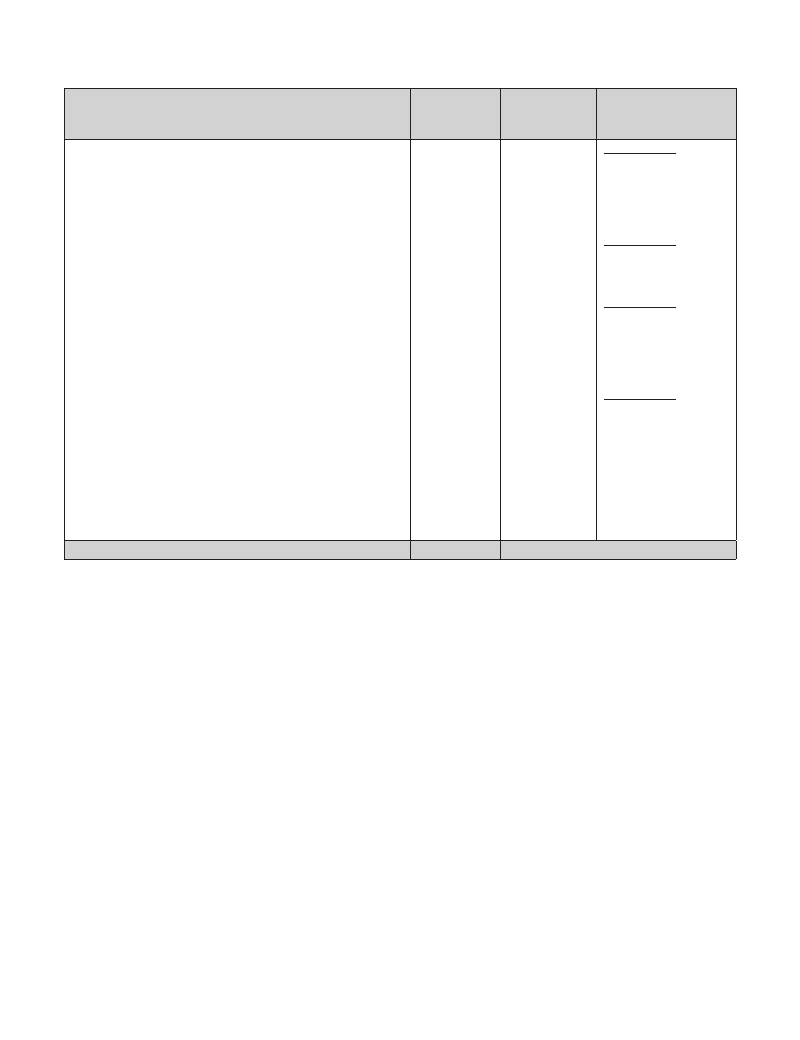
270 / Disaster Risk Management PROGRAMS FOR PRIORITY COUNTRIES SOUTH ASIA
Indicative new program areas and projects
for GFDRR funding
5.
Support to the Comprehensive Disaster
Management Program (a program under the auspices of
the MoFDM and Disaster Management Bureau, and currently
financed by UNDP, DFID and EC). This program supports: (a)
capacity building and professionalizing disaster management at
various levels; (b) partnership development including advocacy
for mainstreaming disaster risk reduction; (c) community
empowerment, community risk assessments (CRA) and
community risk reduction programs; (d) research and information
management on earthquake and Tsunami preparedness and
capacity building on climate change risk management, and; (e)
strengthening response management through the establishment
and strengthening of a Disaster Management Information
Network;
Total Indicative Budget - GFDRR Funding Request
Partnerships
MoFDM, DMB,
CDMP, UNDP,
EC, DFID
Indicative
Budget and
Duration
HFA
activity
area(s)
$ 6,000,000
3 years
Priority Area 1:.
Sub-Priority (i): National
Institutional and
Legislative Frameworks
Sub-Priority (iii):
Community Participation
Priority Area 2:.
Sub-Priority (i):
National and Local Risk
Assessments
Priority Area 3:.
Sub-Priority (i):
Information Management
and Exchange
Sub-Priority (ii):
Education and Training
Priority Area 5:.
Sub-Priority (a):
Strengthen policy,
institutional and
technical capacities for
disaster management
Sub-Priority (b): Support
exchange of information
across risk reduction and
development agencies
US$ 14.3 Million
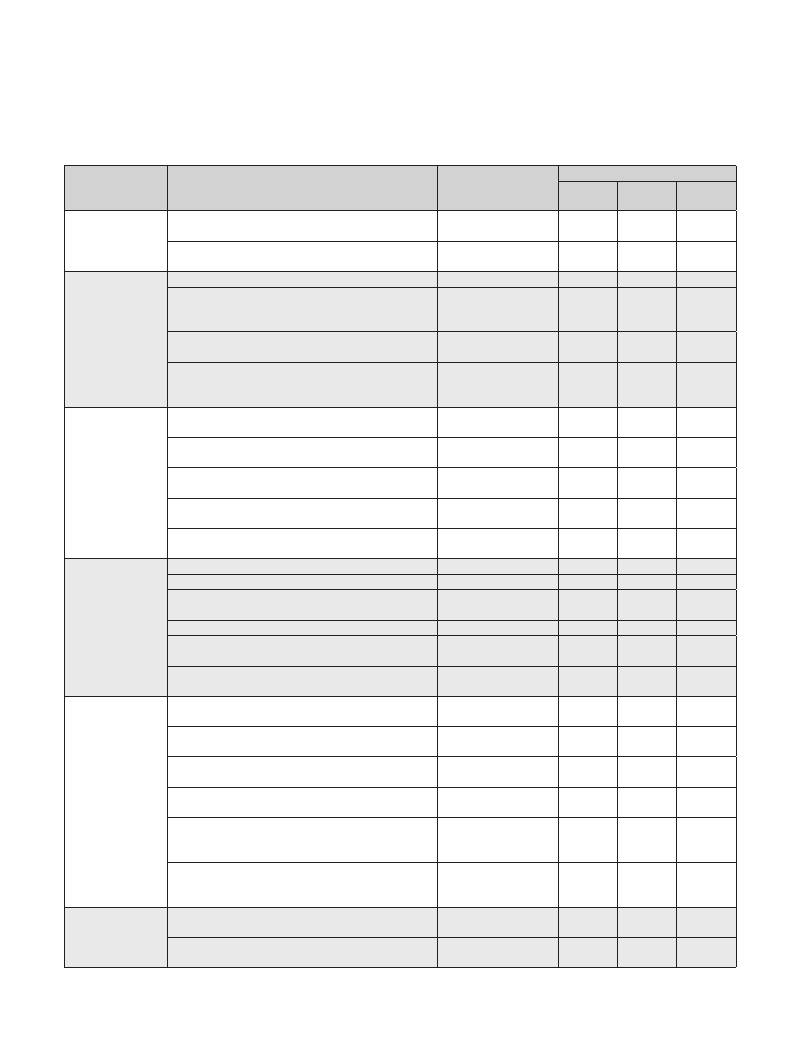
banladesh / 271
Annex 1
Donor Engagements and Plans for Medium to Long-term Disaster Risk Mitigation in Bangladesh
(Developed under the 2008 Cyclone SIDR JDLNA)
Strategy Pillar:
I. Risk
Identification and
Assessment
II. Strengthening
and Enhancing
Emergency
Preparedness
III. Institutional
Capacity Building
IV (a). Risk
Mitigation
Investments
IV (b). Climate
Change Risk
Mitigation and
Adaptation
V. Introducing
Catastrophe Risk
Financing
Planned Activities
(i) Detailed, National Level Multi- Hazard Risk and
Vulnerability Assessment & Modeling
(ii) Supporting Community Risk Assessments at the
District, Upazila and Union Levels
(i) Disaster Forecasting and Warning
(ii) Construction of New, and Rehabilitation of Existing,
Disaster Shelters
(iii) Strengthening and institutionalizing disaster
preparedness
(iv) Strengthening Local Communication Systems
and Sustained Public Awareness and Sensitization
Campaigns
(i) Establishing a Bangladesh Institute for Disaster
Management Training
(ii) Professionalizing the Present Disaster Management
Institutions
(iii) Building DMB Capacity for Damage, Loss and Needs
Assessments
(iv) Mainstreaming disaster risk reduction and mitigation
across sectors
(v) Fostering National-level Public-Private Partnership
Forums
(i) River Bank Protection Improvement Program
(ii) Coastal Embankment Improvement Program
(iii) Program for upgrading the Standards of
Construction for Roads
(iv) Forestation of Coastal Belt
(v) Sundarbans restoration and improvement
(vi) Gorai River Restoration Program
(i) Capacitating and Strengthening the Climate Change
Cell (CCC) within DOE
(ii) Developing climate change and climate variability
scenario and prediction models
(iii) Conducting research and strengthening knowledge
on climate change and climate variability impacts
(iv) Identifying climate change adaptation options
through action research
(v) Incorporating climate change and climate variability
impact information in DRR programs and strategies
(vi) Designing and Implementing capacity building
programs to improve multi-stakeholder understanding of
climate change impacts.
(i) Establishment of Disaster Response Fund
(ii) Catastrophe Risk Financing of Rare Events
Existing and Prob-
able Development
Partners
WB/GFDRR, UNDP,
Others
UNDP, DFID, CDMP
JICA, EC, CDMP
WB, ADB, JICA/JBIC,
IDB, Kuwait, Saudi, and
OPEC Funds
UNDP, DFID, CDMP
WB, CDMP, IFRC
UNDP, DFID,CDMP
UNDP, CDMP
WB, ADB,UNDP,
CDMP
UNDP, CDMP
WB, ADB,UNDP,
CDMP
WB, ADB, Dutch Govt.
WB, ADB, Dutch Govt.
WB, ADB, JICA/JBIC,
Others
WB, ADB, Others
WB, ADB, Dutch Govt.,
Others
WB, ADB, Dutch Govt.,
Others
DFID, UNDP, CDMP
DFID, UNDP, CDMP
DFID, UNDP, CDMP,
Others
DFID, UNDP, CDMP
DFID, UNDP, CDMP,
WB, ADB, JBIC/JICA,
Others
DFID, UNDP, CDMP,
Others
GOB, IFIs, UN, Bilateral
Donors
GOB, WB, GFDRR,
ADB
Indicative Timeframe
2008-12 2013-17 2018-22

272 / Disaster Risk Management PROGRAMS FOR PRIORITY COUNTRIES SOUTH ASIA
PAKISTAN
Extensive internal and external consultations were undertaken for the preparation of the Country DRM Note. As part of
the internal World Bank consultations various Country Sector Teams were involved in review of the concerned activities
listed in the proposal and helped in further refinement and finalization of these activities. Members of the World Bank’s
Pakistan Country Team were also briefed on the proposal. Consultative meetings with external stakeholders such as the
Government, Donors and other Bilateral International Agencies/UN were also held. This entailed detailed discussion with
the National Disaster Management Authority (NDMA) on national priority areas in DRM in relation to the overall needs
as well as all aspects of the country proposal. In addition, The Bank DRM Team also held three rounds of consultations
under the G-7 Coordination Forum with the UN (UNDP, WFP, UN-Habitat, WHO), Japanese Embassy/JICA, USAID,
European Commission, DFID, ADB and the WB. The proposed GFDRR grant funding proposal was finalized after
incorporation of the views and suggestions of all the above stakeholders and therefore has strong ownership.
The matrix of priority areas and actions for DRM was developed in consultation with all members of the G-7 Coordination
Forum and discussed with the National Disaster Management Authority (NDMA) and shared with The National Working
Group (NWG) for mainstreaming DRM in the country which includes key ministries/line agencies representatives as
members.
1. DISASTER RISK PROFILE
Pakistan has been at risk to various types of natural disasters of which cyclones, flooding, landslides, earthquakes and
drought are more common. The country is one of the most flood prone countries in South Asia. During its history the
floods of 1950, 1992 and 1998 resulted in a large number of deaths and severe loss of property valued at an estimated
$1.3 billion. Pakistan is also located in a seismically active zone on account of its proximity to the Indo-Australian and
Eurasian plates. This vulnerability was proven in October of 2005 when a major earthquake measuring 7.6 on the Richter
scale hit 9 Districts in NWFP and AJK, killing over 73,000 people and damaging / destroying about 450,000 houses.
Droughts are also a serious hazard in the country as 60 percent of the country is classified as semi-arid to arid. The
droughts of 2000-2002 are estimated to have cost economic losses of about $ 2.5 billion. The country does not have a
very high risk to cyclones; however fourteen cyclones have been recorded between 1971 and 2001 which have caused
a certain amount of damage.
Pakistan is impacted by both manmade and natural disasters. The types of disasters that occurred from 1954-2004
and the frequency of the occurrence of the most common disasters are listed in Table 1.
However, the incidence of disaster events is not necessarily correlated with the loss of human life, the number of people
impacted and/or the monetary damages inflicted by the disasters. To that end, efforts have been made to estimate the
number of people who were killed and/or affected by many of the most significant disasters and their corresponding
monetary damages over the years 1926-2006 (Table 2). These estimates illustrate the severity of the problem posed
by disasters. However, some experts believe the true financial cost of disasters over the past 50 years comes close to
$50 billion—far more than the combined estimates in the table below. In particular, the monetary estimate for earthquake
damage is a gross underestimate of the true costs since the devastating Azad Jammu and Kashmir and the NWFP
earthquake in 2005 will require an estimated $5.2 billion for reconstruction. This represents slightly more than 25
percent of Pakistan’s entire national budget.
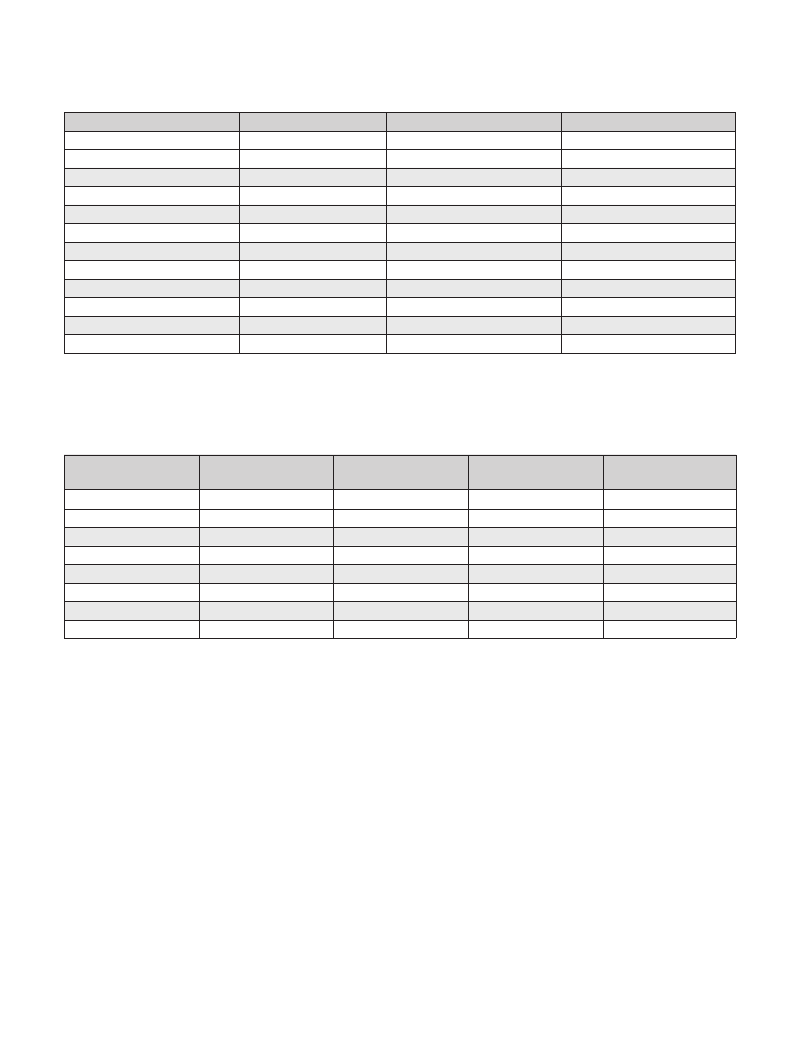
PAKISTAN / 273
Table 1. Hazards in Pakistan and Frequency of Most Significant Hazards: 1954 - 2004
Natural
Avalanches
Cyclones (Storms)
Droughts
Earthquakes
Epidemics
Floods
Glacial Lake Outbursts
Landslides
Pest Attacks
River Erosion
Tsunami
Extreme Temp.
Frequency (%)
16
4
18
33
10
1
Human-Induced
Epidemics
Industrial/Transport Accidents
Nuclear Accidents
Radiological Accidents
Oil Spills
Urban and Forest fires
Civil Conflicts
12
Source: Disaster Risk Management, TWG Working Group Meeting, United Nations, May 17, 2007.
Frequency (%)
6
Table 2. Estimated Number of People Impacted and Killed and the Financial Losses Associated
with Various Selected Disasters: 1926-2006
Disasters
Drought
Earthquake
Epidemic
Extreme
Flood
Landslides
Windstorms
Transport
Number of Events
4
22
10
15
53
13
21
19
Killed
223
142,812
283
1,406
11,767
413
11,654
420
Frequency (%)
2,269,300
4,236,110
16,486
574
47,600,694
3,419
950,313
18,395
Source: Disaster Risk Management, TWG Working Group Meeting, United Nations, May 17, 2007.
Damage (Millions
U.S. $)
247
5200
0
0
2500-6000
0
4
179
Some Underlying Risk Factors
There are a number of underlying risk factors that increase vulnerability and contribute to the severity of disasters in
Pakistan. These include:
• Poor construction practices and limited enforcement of existing building codes
• Weak early warning systems
• Lack of awareness and education on disasters and response
• Limited capacity and coordination between various government disaster response agencies
• Disaster susceptibility of large number of impoverished communities
Exposure and Vulnerability
Disasters are unevenly distributed among Pakistan’s 139 districts as a result of at least some of the factors listed above
(Table 3). Districts are distributed across Pakistan as follows: Punjab Province (35), Baluchistan Province (29), Sindh

274 / Disaster Risk Management PROGRAMS FOR PRIORITY COUNTRIES SOUTH ASIA
Province (23) Northwest Frontier Province (NWFP) (24), Islamabad (ICT) (1), Federally Administered Tribal Areas (FATA)
(13), Azad Jammu and Kashmir (AJK) (8) and the Northern Areas (6). However, the table below illustrates that several
areas and provinces suffer a disproportionate share of either very high or high risk disasters or both. In particular, in the
Northern Areas 33 percent of the districts face a very high risk of disasters while none of the districts in Punjab Province
face a very high risk for disasters. This is particularly noteworthy since Punjab Province is the wealthiest province in
Pakistan while the people who live in the Northern Areas are among the poorest. Clearly there is some relationship
between economic prosperity and the incidence of disasters. In total, 50 percent of the provinces in the Northern Areas
face either a high or very high risk of disasters followed by 30 percent of the districts in Baluchistan and only 3 percent in
Punjab Province. The provinces and regions also face a wide range of different disaster threats. For example, southern
Punjab is mostly impacted by the threat of droughts and flooding, Baluchistan is confronted by the risk of drought,
earthquakes and flash floods, Sindh province is faced with the possibility of drought and floods, while the NWFP is faced
with earthquakes, landslides, avalanches and glacial lake flooding.1
Table 3. Percentage of Districts in Each Province or Area Potentially Impacted
by Very High or High Risk Disasters
Province/Area
Baluchistan
NWFP
Northern Areas
AJK
Sindh
Punjab
Very High Risk (%)
21
17
33
13
4
0
High Risk (%)
17
13
17
13
30
3
Based on: Disaster Risk Management, TWG Working Group Meeting, United Nations, May 17, 2007.
Total (%)
38
30
50
26
34
3
Floods
Pakistan is one of the most flood prone countries in South Asia. River related floods are the most severe in Punjab and
Sindh provinces while hill torrents that are common in hilly terrain tend to affect NWFP, Baluchistan and the Northern
Areas. There have been a number of floods in Pakistan that caused a significant amount of damage, particularly during
1950, 1992 and 1998 which resulted in a large number of deaths and a severe loss of property valued at an estimated
$1.3 billion. Most of the flooding occurs in late summer during the monsoon season but flooding can also occur as the
result of glacial lakes breaking (termed GLOF) that are caused by high summer temperatures. In 2007 monsoon rain
induced flooding damaged the rice crop in Sindh and Baluchistan provinces and reduced production by as much as 200
thousand tons—which equals approximately 3.5 percent of the crop. Since rice is a high value crop the loss will have a
significant impact on the farm value added in the agriculture sector and lead to a reduction in export earnings.
Earthquakes
The earthquakes in Pakistan are primarily related to the fact that the country along with India and Nepal lies on the
Indo-Australian Plate. The plate is continuously moving northward and colliding with the Eurasian plate which formed
the Himalayan Mountains. As part of this process the release of energy results in earthquakes. In addition, there are a
number of fault lines in various parts of Pakistan due to the stresses resulting from the movement of the Indo-Australian
plate which also cause earthquakes. The Koh-e-Sulieman, Hindu Kush and Korakuram mountain ranges are particularly
vulnerable and the resulting devastation can be immense because of the poor construction of the buildings. In 1935, the
entire city of Quetta—a city that now has a population of approximately 1 million in Baluchistan, was entirely destroyed
and as many as 30 thousand people were killed. Five years earlier Quetta had also been destroyed by an earthquake.
Prior to the October 8, 2005 earthquake in Azad Jammu and Kashmir and the NWFP there were other large destructive
1 Based on National Disaster Management Authority (NDMA) Communications
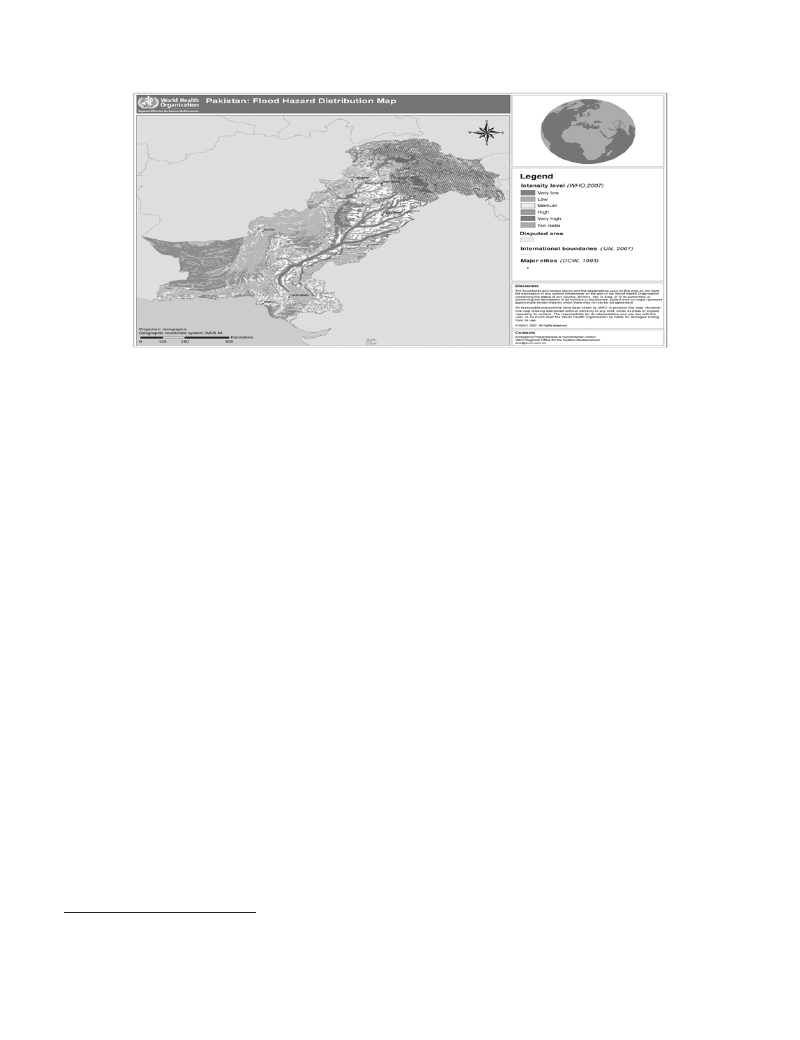
PAKISTAN / 275
earthquakes in 1974 and 1990 in which approximately 5669 people were killed in the Northern Areas, NWFP and
Baluchistan. In February 2004, an earthquake in the NWFP killed 24 people and impacted another 129 thousand.2
Drought
Pakistan is characterized by low rainfall, extreme temperature variations and as much as 60 percent of the country is
classified as semi-arid to arid. Nearly all of Baluchistan province is arid—although its rainfall distribution ranges from
a low of 50 mm in the SW to 400 mm in the NE. Arid regions receive less than 200 mm of rain per annum, while in
comparison, Punjab province annually receives an average of 400 mm of rainfall while the NWFP receives an average of
630 mm of rainfall. Given the precarious nature of rainfall even a slight deviation can result in drought conditions. The
most susceptible regions experience a drought 2 or 3 years every decade. Droughts were so severe in 2000 and 2002
that the livelihoods of people were destroyed, thousands of people were forced to migrate and millions of livestock were
killed. By one estimate, 15 million cattle died and the drought caused overall economic losses of $2.5 billion. The 2001
drought was so severe that the economic growth rate was reduced from an average of 6 percent to only 2.6 percent.3
Windstorms/Cyclones:
Cyclones cause significant damage in the coastal areas of Sindh and Baluchistan provinces. The low-lying coastal belt
allows storms to travel several hundred kilometers inland and along the way destroy crops, agricultural productivity by
creating water-logging and settlements. Fourteen cyclones have been recorded between 1971 and 2001. A 1999
cyclone in the Thatta and Badin districts of Sindh province destroyed 73 settlements, killed 168 people, impacted .6
million people, and killed 11 thousand cattle. The estimated economic losses amounted to $12.5 million.4
Global Warming & Climate Change:
Policy makers in Pakistan are quite concerned about the potential problems associated with global warming. They
have observed that over the past decade weather patterns have changed for the worse resulting in more storms, longer
droughts and most significantly that the glaciers, which form the core of the headwaters of the Indus River Basin, are
receding at a rapid pace. By some estimates the glaciers are retreating by as much as 400 meters per year and if the
glaciers vanish the immediate release of water will result in even more flash flooding. Even though Pakistan’s dams
in combination with recharged groundwater along the path of the Indus River canal system are capable of storing a
significant amount of water, they would fall far short of storing sufficient water to meet Pakistan’s needs for irrigation,
2 WCDR, A Review of Disaster Management Policies and Systems in Pakistan, January, 2005.
3National Disaster Risk Management Framework (NDRMF), 2007
4NDMA, Disaster Risk Management Thematic Working Group, March, 2007.

276 / Disaster Risk Management PROGRAMS FOR PRIORITY COUNTRIES SOUTH ASIA
drinking and power generation. In the short-term, there will likely be increased droughts and flooding, the agricultural
sector will need by changing crops and cropping patterns, biodiversity will be adversely impacted and the composition of
forests will change. In addition, the flow of irrigation water will become less predictable and power generation by existing
facilities will likely be somewhat reduced.5 Over the long term, if temperatures increase by just a few degrees above the
current average temperature, which has already, increased by 1.4 degree Celsius above the historical average6, it will
be necessary to radically retool some sectors of the economy such as agriculture and power generation. If retooling is
impossible either because of a lack of resources, political will and/or technology the resulting disaster could be far worse
than anything Pakistan has experienced to date.
2. DISASTER RISK MANAGEMENT FRAMEWORK
National Disaster Risk Management Policy
The massive October 2005 earthquake that hit northern Pakistan highlighted the country’s high vulnerability to disaster
risks. Since then the Government of Pakistan has been making concerted efforts towards establishing a comprehensive
disaster management regime. This has essentially involved a strategic shift from the previous reactive to a proactive
approach; and the setting up of an integrated management structure that links the vital functions of preparedness/risk
reduction, and early disaster recovery to longer term reconstruction and rehabilitation. The National Disaster Management
Authority (NDMA) has been established and operationalized.
The NDMA is the apex coordinating agency for disaster risk reduction at the national level, which along with the Earthquake
Reconstruction and Rehabilitation Authority (ERRA) and other agencies, is responsible for the various aspects of
disaster management from early recovery to post-disaster reconstruction. The NDMA effectively serves as a secretariat
to the National Disaster Management Commission (NDMC) chaired by the Prime Minister with representatives from
various federal ministries and provincial governments. The NDMA is tasked with the broad overall regulation of the
disaster management structures and functions in the country, along with the provincial and district disaster management
authorities, tehsil and town authorities, and union council set-ups down to community based organizations.
Disaster response in Pakistan has historically been governed and regulated under the Calamity Act of 1958, recently
replaced by the National Disaster Management Ordinance (NDMO) 2006. The NDMO provides the institutional and
regulatory framework for the functioning of the overall national disaster management regime, including all federal,
provincial, and local government institutions tasked with disaster management responsibilities.
The NDMA has in turn, through a multi-stakeholder consultative process, recently developed a National Disaster Risk
Management Framework (NDRMF), which has been approved by the Government of Pakistan and constitutes the
agreed national policy document on disaster risk reduction (DRR). The mandate of the NDRMF is comprehensive,
including DRR in all relevant sectors of the economy. It calls for the integration of risk assessment in the planning and
design stages of all new infrastructure projects, and holds the promotion of multi-stakeholder, multi-sectoral, and multi-
disciplinary approaches in disaster risk reduction as its foremost policy principle.
Historically, the Government has pursued DRR in the developmental agendas for some of the key sectors, including
flood protection and management programs covering irrigation, agriculture, and road infrastructure. Such programs
have mostly been designed and executed by federal and provincial agencies including the Flood Relief Commissions
and related line departments. However, with the enactment of the NDRMF, the scope of DRR has been expanded to
cover developmental planning for all sectors of the economy. Promoting disaster risk management planning across
multiple sectors figures high in the list of 5-year priorities set out by the NDRMF, including preparation of disaster risk
5 Pakistan Agricultutral Research Council Estimates and Analysis
6National Disaster Risk Management Framework (NDRMF), 2007

PAKISTAN / 277
management plans of selected line ministries over the next 2-3 years. The NDRMF is considered as the national strategy
document on DRM.
The NDRMF also accords high priority to proactive reduction of the enhanced disaster risks related to the global climate
change phenomenon. It builds on the analytical work and studies carried out by various national and international
agencies on the already visible impacts of climate change on the natural and ecological resources of the country. It
concludes that climate change together with environmental degradation are likely to result in an enhanced frequency
of natural disasters in Pakistan, as well as amplify the social, economic, and environmental impacts created by such
disasters. In response to this situation assessment the NDRMF, while laying out disaster management priorities for
the next 5 years, includes a composite national hazard and vulnerability assessment (Being funded by the Bank) in the
first program year, followed by a detailed study on the impacts of climate change on glaciers and ice cap in Northern
Pakistan in a 2-3 year time horizon. The NDRMF climate change risk mitigation strategy is attuned with mitigation
measures proposed under various international conventions, including the Framework Convention on Climate Changes
(UN FCC) - 1992, the Vienna Convention for the Protection of Ozone Layer and the Montreal Convention - 1992, and
the all-encompassing Hyogo Framework for Action 2005-15.
The Government has also recently instituted a National Working Group (NWG) on Disaster Risk Management led
by The National Disaster Management Authority (NDMA) which includes key government ministries and donors such
as The World Bank as members with the mandate of integrating and mainstreaming Disaster Risk Management in
planning processes / development agenda and overall coordination with different stakeholders. In addition to these
government mechanisms the donor community in Pakistan, with the Bank in the lead have created a coordination
mechanism between donors known as the G-7 which discusses national DRM issues and coordinates suitable
interventions. NDMA recently conducted a meeting with key government agencies and donors including the Bank
under the NWG and presented an immediate / short term 10 point action plan based on the NDRMF. Under this short
term action plan the following activities were identified for immediate implementation in line with the NDRMF:
i. National Capacity Building in Disaster Risk Management (NCBDRM) including design and construction of a
National Institute of Disaster Management (NIDM)
ii. Establishment of National & Provincial Emergency Operation Centers (NEOCs & PEOCs)
iii. Operationalization of Provincial and District Disaster Management Agencies (PDMAs & DDMAs)
iv. Capacity Building of Urban Emergency Response Services including capacity assessments and required
trainings
v. Education, Training and Awareness in Disaster Risk Management (DRM)
vi. Mainstreaming DRM in the Development Agenda through enhancing capacity of Planning Commission of
Pakistan
vii. Disaster Mitigation and Climate Change Initiatives related to earthquake flood and GLOF including studies and
assessments
viii. Formation of Mobile Response Teams for immediate disaster response, recovery and coordination
ix. Improving Early Warning Capacity through Enhancement of Organizational Capacity and System Resources of
Key Agencies such as Pakistan Metrological Department
x. Conduct of a National Risk Assessment and Development of a Risk Atlas of Pakistan
NDMA is particularly fast tracking the national risk assessment exercise which is under way with Bank support so that

278 / Disaster Risk Management PROGRAMS FOR PRIORITY COUNTRIES SOUTH ASIA
the overall risk environment could be better defined. This would subsequently be followed by a micro level hazard risk
and exposure mapping of the identified hot spots which would lead to suitable mitigation investments. Some mitigation
investments have already taken place in the housing sector through Bank support in the case of the earthquake affected
areas where about 350, 000 earthquake resistant houses have been constructed. NDMA is also focusing on improving
early warning and response capacity as a priority and is undertaking activities such as inundation profiling of vulnerable
coastal communities and strengthening the existing flood forecasting / telemetry network. National Emergency Operations
Centre operationalization and formulation of necessary protocols is also an activity being undertaken by Bank support
which will improve the Government’s disaster response capacity.
The Government is in the process of establishing the National Institute of Disaster Management (NIDM) for which land
has already been allocated. This would act as a platform for promoting disaster management education in the country.
Currently the Government frequently conducts DRM trainings, seminars work shops and other events, particularly on
October 8 which has been declared as National Disaster Awareness Day.
3. INTEGRATION OF DRM IN DEVELOPMENT STRATEGIES
The NDRMF, as the overarching framework for DRR in the country, seeks to build and strengthen linkages with all
applicable national and international protocols and sectoral developmental policies. At the national level, these include
the Poverty Reduction Strategy Paper (PRSP), Medium Term Development Framework 2006-10, Ten Year Perspective
Development Plan 2001-11, Agricultural Perspective and Policy, National Conservation Strategy, National Environment
Action Plan - 2001, National Environment Policy - 2005 and the Draft National Water Policy - 2006.
Pakistan’s PRSP recognizes that achieving sustained economic growth for poverty reduction would require enhancing
the country’s environmental sustainability, since the poor are mostly dependant on natural resources for their livelihoods
as well as most affected by environmental degradation. Thus it identifies the linkage between environment and
vulnerability as the key, noting that the poor are particularly vulnerable to environmental disasters. It then commits to
providing sustained protection to vulnerable communities from natural disasters, particularly those triggered or catalyzed
by environmental degradation. However, the current PRSP falls short of fully taking cognizance of the important role of
broader DRR as a tool for reducing poverty through a reduction in the vulnerability of the poor to natural shocks. But with
the NDMA, NDRMF and a NWG now in place, efforts are underway to mainstream DRR as a vital component of the
broader poverty reduction / sustained development agenda and strategy.
Another recent development is the drafting of a revised multi-disaster risk responsive National Building Code, that will
help reduce the vulnerability of public, private, and commercial buildings to seismic and other disaster risks. The code
will be applicable to both urban and rural areas, although enforcement of the code would pose a significant challenge,
and require requisite capacity and skills of the concerned agencies for proper implementation. Under the NDRMF, the
development of a strategy for implementation of the Building Code is a priority over a 2-year horizon.
Pakistan CAS: Support for Hazard Risk Management and Disaster Risk Reduction
The Bank’s current Country Assistance Strategy (CAS) for Pakistan is committed to supporting the government in the
development of a comprehensive hazard risk management strategy for Pakistan, through dialogue, advisory activities, and
technical assistance. CAS support for more effective hazard risk management and disaster risk reduction in the country
is premised on: (a) the high and recurring fiscal costs of post-disaster reconstruction, as in case of the 2005 earthquake
as well as recurrent floods, and its adverse impacts on public sector development budget/activities; and (b) supporting
GOP’s poverty reduction strategy which provides for targeting and reducing vulnerabilities of the poor and marginalized

PAKISTAN / 279
sections of the population. (c) Pakistan’s adhoc approach towards disaster management with interventions primarily
focused on relief and recovery with insufficient ex-ante measures. Therefore a major portion of traditional post-disaster
spending in Pakistan was aimed at providing direct monetary assistance to affected people. But such subsidies are
untenable from a sustainability perspective and severely tax routine developmental spending. The CAS while highlighting
Pakistan’s susceptibility to natural disasters and its amplified impact based on mortality and economic risks induced by
such hazards supports development of hazard prevention / mitigation strategies, development of a strategic approach to
hazard risk management and building in-country capacity for effective implementation of these strategies.
The New CAS (2010-2014) which is currently being drafted and is at the concept note stage also supports the outcome
for improvement in Pakistan’s disaster risk management capacity under the sustainable development strategic pillar.
It outlines Pakistan’s vulnerability to various types of disasters and the paradigm shift in moving from a predominantly
reactive approach to a more pro-active approach. While the CAS acknowledges the work being done for promotion
of effective disaster management in the country it also underlines the various challenges such as a general lack of
awareness and the limited in-country technical capacity in DRM. The current state of the DRM systems and response
mechanisms are also highlighted as they are still in the process of being outlined and operationalized, while the national
risk environment in terms of multiple disasters is yet to be fully defined. The CAS also presents the current and ongoing
activities and some of the broad planned interventions by the Bank in order to support effective DRM in the country.
Bank’s Disaster Risk Management Country Strategy
The Bank’s country disaster risk management strategy is based on a 5 pillar approach. The 5 pillars include Risk
Identification and Assessment, Risk Mitigation, Emergency Preparedness, Catastrophe Risk Financing or Transfer and
Institutional Capacity Building. The various activities being initiated and undertaken by the Bank on DRM correspond
to this approach and have been planned / staggered using the strategic framework as well as the national priorities
identified through the NDRMF. The Bank’s ongoing projects such as the Earthquake Emergency recovery Credit (ERC)
and various activities under it support Pillar I, II, III and V of the DRM Country strategy through macro level hazard mapping
exercise of earthquake affected districts, structural mitigation through seismic resistant reconstruction as well as building
capacity of the government for effective disaster response and better coordination. Additional critical activities have been
undertaken by making some ERC funds available to NDMA for undertaking a national level hazard risk assessment and
operationalization of National Emergency Operations Centre which support Pillars I and III respectively. The Bank has
also leveraged funds through other donors / sources such as inundation profiling exercise of cyclone affected districts
of Baluchistan with UNDP assistance in line with strategy Pillar II while GFDRR ongoing activities on earthquake results
documentation and lessons learnt as well as post disaster cash transfers support pillars III and V. Another GFDRR
proposal on catastrophe risk financing which supports Pillar IV is under preparation. The activities under the current
proposal are also in line with the Bank’s Country’s DRM strategy under the 5 pillar approach as well as the national
priority areas identified through the NDRMF.
4. KEY DONOR ENGAGEMENTS
There has been an active donor consultation process in Pakistan ever since the 2005 earthquake disaster struck the
country. These consultations include both multi-donor consultations as well as multi-stakeholder consultations, including
the Government of Pakistan. In the aftermath of the earthquake donors formed a consultative group known as the G-77.
The group periodically met to discuss issues and collective strategies on how to deal with the disaster. Recently the
group became more involved in overall disaster management issues in the country. The G-7 regularly holds internal
meetings and then meets with the concerned government agencies such as Earthquake Reconstruction Rehabilitation
7 The Group consists of the WB, ADB, EC, USAID, UN, DFID and Embassy of Japan

280 / Disaster Risk Management PROGRAMS FOR PRIORITY COUNTRIES SOUTH ASIA
Authority (ERRA) and the National Disaster Management Authority (NDMA). The key donor engagement table is based
on the Country DRM Matrix which was developed after extensive consultations between all leading donors, G-7 members
and the Government of Pakistan. All current and ongoing activities in DRM are listed in the table below while for planned
activities please refer to Annex 1. It is apparent from both the table and the annex that there is quite a large need in the
DRM sector while the realized commitments are a small percentage of the overall need.
Ongoing Projects and Organizations
The World Bank
ERRA DRM Program
DRM Support Program to NDMA
Activities funded through GFDRR
DFID
Disease Early warning System (DEWS)
Joint Protection Monitoring System
DRR Conference
Urban Search & Rescue Project
Indicative budget
(where available,
details on years
covered)
$ 2.9 million
$ 4 million
UK£ 1.848 million
UK£ 152,567
UK£25,000
UK£ 1.5 million
HFA activity area(s)
HFA Priority 1: Ensure that Disaster Risk Reduction is a
National and Local Priority with a strong institutional basis
for implementation
HFA Priority 2: Identify, Assess and Monitor Disaster
Risks and Enhance Early Warning
HFA Priority 3: Use Knowledge, Innovation and
Education to Build a Culture of Safety and Resilience at All
Levels
HFA Priority 4: Reduce the underlying risk factors
HFA Priority 5: Strengthened Disaster Preparedness for
Effective Response at All Levels
HFA Priority 2: Identify, Assess and Monitor Disaster
Risks and Enhance Early Warning
HFA Priority 3: Use Knowledge, Innovation and
Education to Build a Culture of Safety and Resilience at All
Levels
HFA Priority 4: Reduce the underlying risk factors
United Nations: (UN joint Program)
Only about 10 % of the under-mentioned
funding is expected to be immediately
mobilized under following activities of the UN
Joint Program which have commenced
National Capacity Building for Disaster Risk
Management (NCBDRM)
Institutional Strengthening
$ 46.5 Million
$ 60,000
HFA Priority 1: Ensure that Disaster Risk Reduction is a
National and Local Priority with a strong institutional basis
for implementation
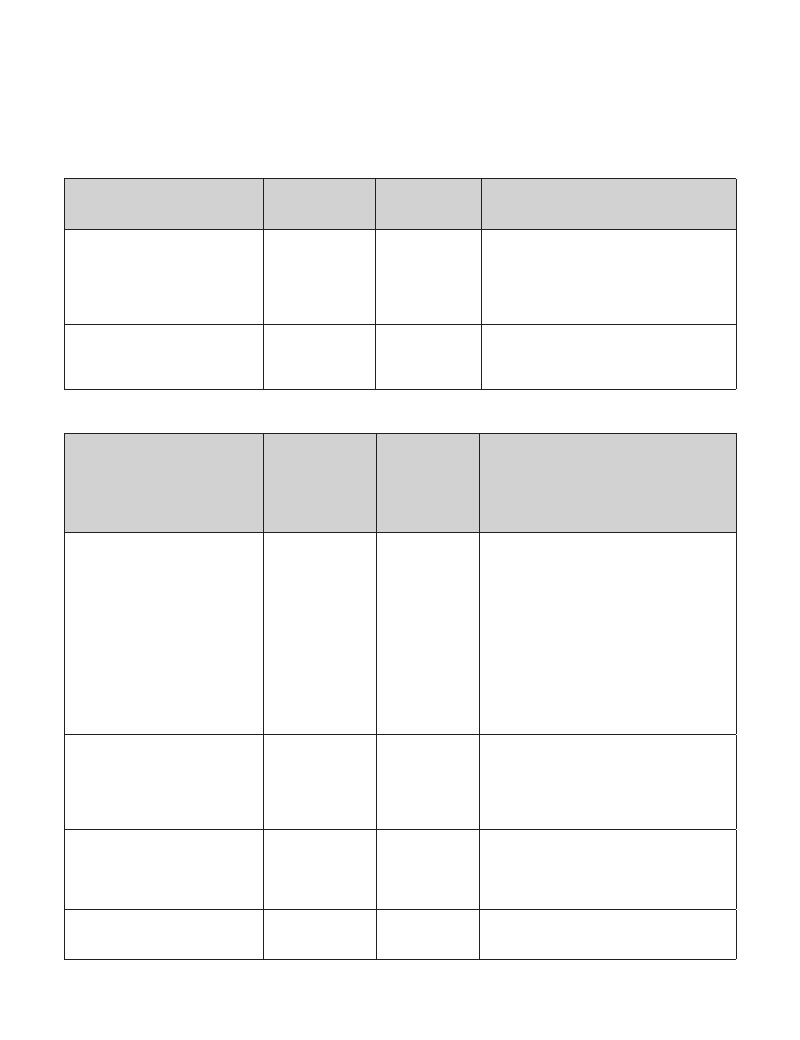
PAKISTAN / 281
5.global facility for disaster reduction and recovery (gfdrr):
action plan
Ongoing GFDRR funded
activities (years covered)
Documentation & Dissemination
of Results and Lessons Learnt in
the Rural Housing Reconstruction
Response to the 2005 Pakistan
Earthquake
Ongoing GFDRR Funded Activities
Partnerships
NDMA, ERRA and
UN-Habitat
Budget
and years
covered
$ 250,000
HFA activity area(s)
HFA Priority 3: Use Knowledge, Innovation
and Education to Build a Culture of Safety and
Resilience at All Levels
Building capacity to effectively
deliver Safety Nets in post-disaster
situations in Pakistan
Pakistan Baitul
Maal and Ministry
of Social Welfare
$ 250,000
HFA Priority 4: Reduce the underlying risk
factors
Indicative New Program Areas and Projects for GFDRR Funding
Indicative new program areas
and projects for GFDRR funding
Development of public-private
sector collaborative forums and
partnerships on DRR
Partnerships
NDMA, relevant
Line Ministries and
Private / Corporate
Sector
Study and strengthen existing
forecasting and early warning
systems for hydro metrological
events in high risk areas
Disaster Risk Assessment and Risk-
based Microzonation of One Major
City and in One Medium Industrial
City
NDMA, Federal
Flood Commission
(FFC) and Pakistan
Metrological
Department (PMD)
and WFP
NDMA, City
Government,
PDMA and UN-
Habitat
International Exposure Visits for
Government Officials & Bank staff
in DRR
NDMA, ERRA and
Line Ministries
Indicative
budget
for GFDRR
funding
and years
covered
$200,000
2 years
$ 1,000,000
3 years
$ 1,000,000
3years
$ 300,000
1 year
HFA activity area(s)
HFA Priority 1: Ensure that Disaster Risk
Reduction is a National and Local Priority with a
strong institutional basis for implementation
[Sub Priority: Support the creation and
strengthening of national integrated disaster
risk reduction mechanisms such as multi-
sectoral national platforms]
HFA Priority 3: Use Knowledge, Innovation
and Education to Build a Culture of Safety and
Resilience at All Levels &
HFA Priority 4: Reduce the underlying risk
factors through improved building safety and
protection of critical facilities
HFA Priority 2: Identify, Assess and Monitor
Disaster Risks and Enhance Early Warning
HFA Priority 2: Identify, Assess and Monitor
Disaster Risks and Enhance Early Warning
HFA Priority 5: Strengthened Disaster
Preparedness for Effective Response at All
Levels
HFA Priority 3: Use Knowledge, Innovation
and Education to Build a Culture of Safety and
Resilience at All Levels
(Cont.)

282 / Disaster Risk Management PROGRAMS FOR PRIORITY COUNTRIES SOUTH ASIA
Indicative new program areas
and projects for GFDRR funding
Development and implementation of
a school safety program
Partnerships
NDMA, ERRA,
Ministry of
Education and
UNESCO
Analytical work towards identification
of potential disaster risk insurance
options and development of a
strategy for catastrophe risk
financing mechanisms and solutions.
NDMA, Ministry
of Finance, SECP,
Adamjee Insurance,
KASHF Foundation
/ Bank, RSPN and
PPAF
Technical assistance in development
of a national action plan on climate
change for Pakistan
NDMA, Ministry
of Environment
and Planning
Commission
Capacity and skill gap assessment
of urban emergency services and
subsequent training to enhance
emergency response capability in
one large/medium/small city/s.
NDMA, Urban
Fire and Rescue
Services and
Planning
Commission
Human Resource Capacity
Development through creation of a
DRM / GFDRR Focal Point position
in the Pakistan Country Office to
facilitate mainstreaming and better
coordination of all DRM related
activities with donors and all national
/ international DRM platforms
Technical Assistance and hardware
support for Operationalization of
the National Emergency Operations
Centre
NDMA, UN and
other donors
NDMA & JICA
Indicative
budget
for GFDRR
funding
and years
covered
$ 1,000,000
3 years
$ 300,000
2 years
$ 200,000
2 years
$ 400,000
3 years
$ 100,000
2 years
$ 500,000
3 years
HFA activity area(s)
HFA Priority 3: Use Knowledge, Innovation
and Education to Build a Culture of Safety and
Resilience at All Levels
HFA Priority 4: Reduce the underlying risk
factors through improved building safety and
protection of critical facilities
HFA Priority 4: Reduce the underlying risk
factors [ Sub Priority: Promote the development
of financial risk sharing mechanisms, particularly
insurance and reinsurance against disasters]
HFA Priority 5: Strengthened Disaster
Preparedness for Effective Response at All
Levels
HFA Priority 4: Reduce the underlying risk
factors [Sub Priority: Promote the integration of
risk reduction associated with existing climate
variability and future climate change into
strategies for the reduction of disaster risk and
adaptation to climate change]
HFA Priority 5: Strengthened Disaster
Preparedness for Effective Response at All
Levels
HFA Priority 1: Ensure that Disaster Risk
Reduction is a National and Local Priority with a
strong institutional basis for implementation
HFA Priority 3: Use Knowledge, Innovation
and Education to Build a Culture of Safety and
Resilience at All Levels
HFA Priority 5: Strengthened Disaster
Preparedness for Effective Response at All
Levels
HFA Priority 1: Ensure that Disaster Risk
Reduction is a National and Local Priority with a
strong institutional basis for implementation
[Sub Priority ii - Resources]
HFA Priority 5: Strengthened Disaster
Preparedness for Effective Response at All
Levels
HFA Priority 1: Ensure that Disaster Risk
Reduction is a National and Local Priority with a
strong institutional basis for implementation
HFA Priority 2: Identify, Assess and Monitor
Disaster Risks and Enhance Early Warning
HFA Priority 5: Strengthened Disaster
Preparedness for Effective Response at All
Levels
(Cont.)

PAKISTAN / 283
Indicative new program areas
and projects for GFDRR funding
Partnerships
Indicative
budget
for GFDRR
funding
and years
covered
HFA activity area(s)
Technical Assistance and hardware
support for operationalization of
selected Provincial / District Disaster
Management Agencies
NDMA & UN
$ 500,000
3 years
HFA Priority 1: Ensure that Disaster Risk
Reduction is a National and Local Priority with a
strong institutional basis for implementation
HFA Priority 5: Strengthened Disaster
Preparedness for Effective Response at All
Levels
Program of Rapid Emergency
Preparedness, Assessment and
Response Execution (PREPARE)
NDMA, Ministry of
Health & WHO
$ 400,000
3 years
HFA Priority 2: Identify, Assess and Monitor
Disaster Risks and Enhance Early Warning
HFA Priority 5: Strengthened Disaster
Preparedness for Effective Response at All
Levels
Institutionalization of Damage and
Needs Assessment Methodology
and Expertise in Pakistan
NDMA & Relevant
Line Ministries /
Departments /
Agencies
$ 100,000
3 years
Total Indicative Budget:
$ 6.0 Million

284 / Disaster Risk Management PROGRAMS FOR PRIORITY COUNTRIES SOUTH ASIA
ANNEX 1
Ongoing Projects and Organizations
European Commission
1. NWFP & Baluchistan Program (Program
areas to be determined)
JICA
1. Technical Assistance in Development of
design of National Institute of Disaster
Management (NIDM)
2. Technical Cooperation in capacity
development of NDMA & PDMA & District
Governments
3. Up-gradation and Modernization of
Weather Forecasting and Early Warning
System
4. Flood/Disaster Protection Works
5. The Project for Strengthening of Flood
Risk Management
United Nations: (UN joint Program)
1. DRM Training Initiative
2. Support to DRM Planning
3. DRR Mainstreaming into Development
Process
4. Earthquake Vulnerability Reduction
and Preparedness Programme for
Muzaffarabad and Mansehra Municipalities
5. Capacity Building of DDMAs and
Community based Mitigation in Badin,
Thatta, Kech, and Quetta
6. Glacial Lake Outburst Flood (GLOF) Risk
Reduction in the HKH Region - Pakistan
7. Program for Enhancement of Emergency
Response (PEER)
8. Urban Search and Rescue Project
9. Strengthening Tsunami Early Warning
System in Pakistan
10. Integration of Seismic Resistant Design
and Construction Elements in Diploma in
Associate Engineering Curricula
Indicative budget
(where available,
details on years
covered)
Euro 30 million
HFA activity area(s)
To be determined
To be determined
To be determined
HFA Priority 2: Identify, Assess and Monitor Disaster
Risks and Enhance Early Warning
HFA Priority 5: Strengthened Disaster Preparedness
for Effective Response at All Levels
To be determined
To be determined
To be determined
Only about 10 % of
the under-mentioned
funding is expected
to be immediately
mobilized under UN
Joint Program
$ 94,000
$ 50,000
$ 80,000
$ 760,000
HFA Priority 1: Ensure that Disaster Risk Reduction is
a National and Local Priority with a strong institutional
basis for implementation
HFA Priority 2: Identify, Assess and Monitor Disaster
Risks and Enhance Early Warning
HFA Priority 3: Use Knowledge, Innovation and
Education to Build a Culture of Safety and Resilience at
All Levels
HFA Priority 4: Reduce the underlying risk factors
$ 370,000
$ 150,000
HFA Priority 5: Strengthened Disaster Preparedness
for Effective Response at All Levels
8.4 Million
$ 340,000
$ 600,000
$ 47,000
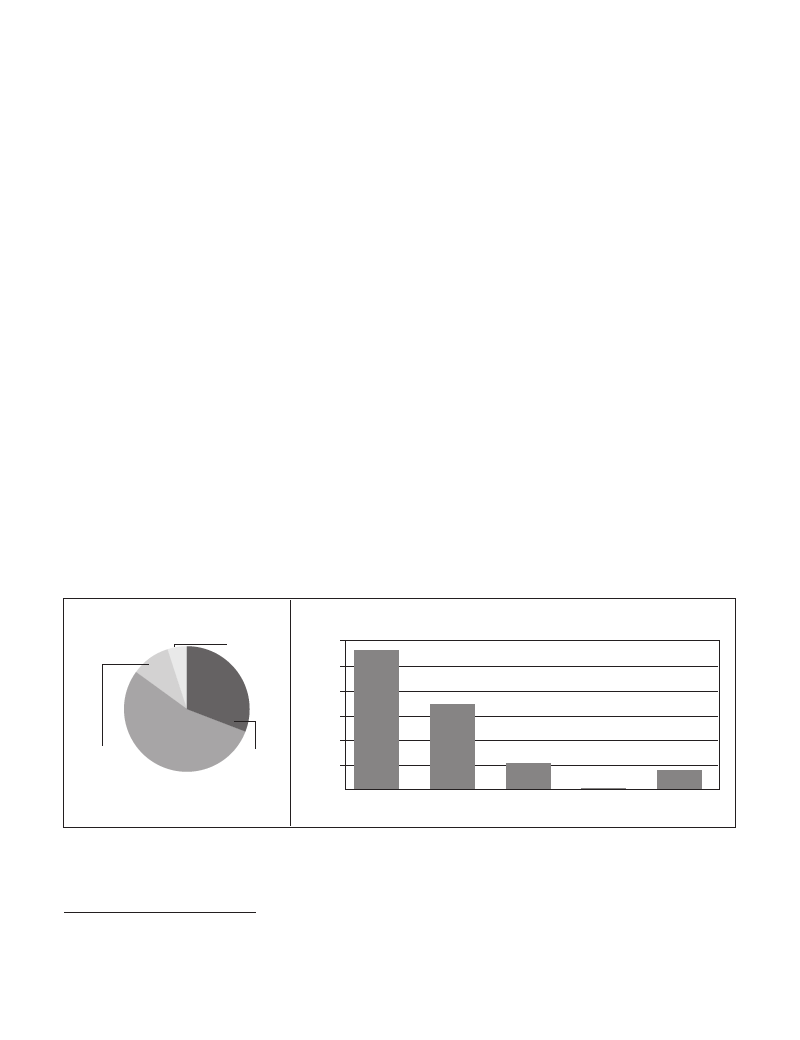
SRI LANKA
sri lanka / 285
To prepare the Country DRM Note, consultations were undertaken with members of the World Bank’s Sri Lanka Country
team. Meetings were held with the Ministry of Disaster Management & Human Rights (MoDMHR) and with the three
departments contained within the ministry—Disaster Management Centre (DMC), the National Building Research
Organization (NBRO) and the Sri Lanka Meteorological Department (Met). The team also met with the Ministry of Disaster
Relief and Resettlement, Ministry of Nation Building & Estate Infrastructure Development and Ministry of Education. In
addition, the team discussed the proposed GFDRR grant funding proposal with bilateral agencies and other relevant
stakeholders including the UNDP, UN OCHA, WHO, GTZ and JICA.
The matrix of priority areas and actions for DRM and estimated budget allocations were discussed and cleared at a
debriefing meeting held on May 6, 2009 with participation of stakeholders from Government, donors, and NGOs. There
is strong support and ownership and endorsement by the MoDMHR for the matrix of priority areas and actions.
1. disaster risk profile
Sri Lanka is an island country located in the Indian Ocean in the equatorial zone. The principle topographic feature is an
anchor-shaped mountain massif in the south-central part of the island, thus creating three zones, the central highlands,
the plains and the coastal belt. With a population of more than 19 million people within a total area of 65,000 sq. km.,
the country has a densely populated coastal belt.
The most frequent natural hazards that affect Sri Lanka are droughts, floods, landslides, cyclones and coastal erosion.
Tsunamis are infrequent but the 2004 Asian Tsunami caused severe damage.
% Population Affected
by Disaster Type1
Others
5%
Cyclone/
Trop. Storms
10%
Floods
54%
Drought
31%%
Relief Distribution (1974-2007)2
(1000s USD)
12000
10000
8000
6000
4000
2000
0
Drought
Floods
Cyclone/
Trop. Storms
Landslides
Others
Over the past 30 years floods have affected more than 10 million people while droughts have affected more than 6 million.
During the last two decades, the severity of landslides has increased in the highland regions through a combination of
heavy rains, geological changes in the hill country and human activity including indiscriminate clearance of steep slopes.
1 EM-DAT: OFDA/CRED International Disaster Database, catholic university of Louvain, Brussels, Belgium, www.emdat.net
2 Historical Disaster Information System in Sri Lanka, Desinventar Disaster Inventory database, 2007
3 World Bank, Natural Disaster Risks in Sri Lanka: Mapping Hazards and Risk Hotspots, DRM Series No. 6, 2006
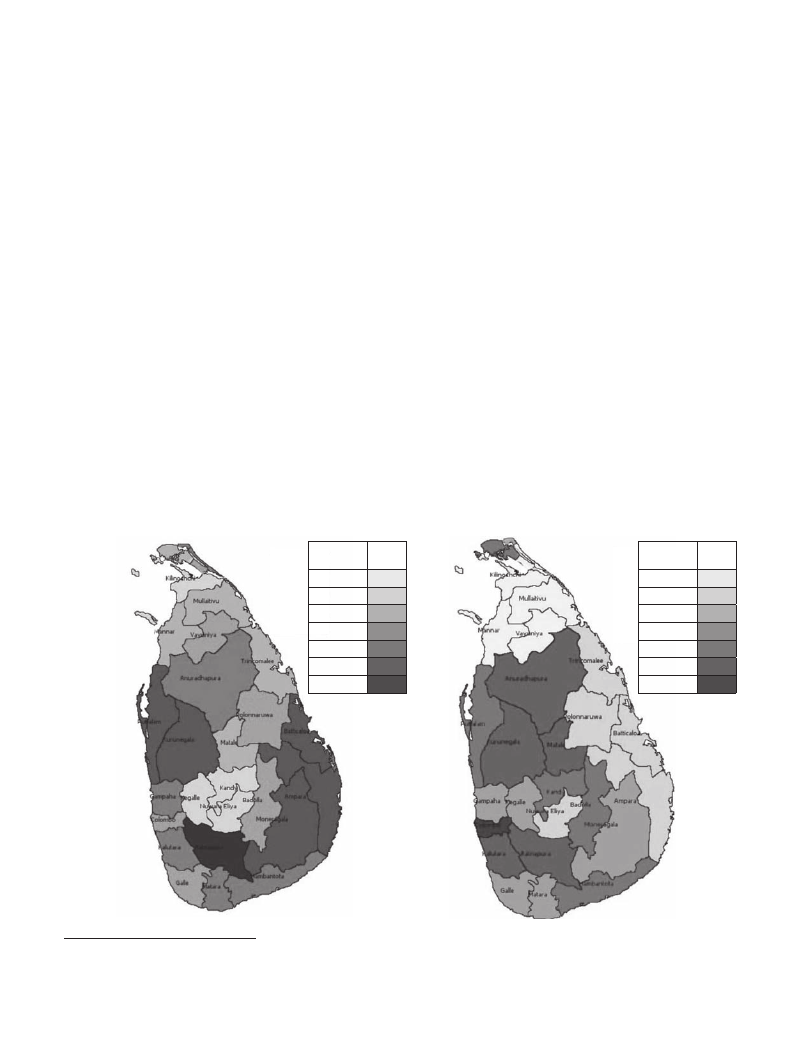
286 / Disaster Risk Management PROGRAMS FOR PRIORITY COUNTRIES SOUTH ASIA
Cyclones affect the northern region of the country and though historically, their severity has been comparatively mild,
increasing climatic changes could result in increased frequency and magnitude of cyclones and all other climate-related
disasters. The 2004 tsunami claimed more than 39,000 lives in Sri Lanka. Historically, though the risk of earthquakes
has been relatively mild, recent understanding of the tectonics of the Indian Ocean region points to an increasing risk of
earthquakes.3
Exposure and Vulnerability
The south-west monsoons (May to September) cause severe flooding in the western and south-western provinces while
the north-east monsoon (December – February) causes flooding in the eastern, northern and north-central provinces.
Though Sri Lanka receives an average of 1,800 mm of rainfall annually, it is distributed unevenly both spatially and
temporally. Therefore, a large part of the island is drought prone from February to April and, if the subsidiary rainy season
from May to June is deficient, drought may continue into September.
Landslides, in Sri Lanka, are caused by a combination of natural and human-induced triggers. The districts of Badulla,
Nuwara Eliya, Ratnapura, Kegalle, Kalutara, Kandy and Matale are the most prone to landslides. The eastern and north-
eastern parts of Sri Lanka are highly vulnerable to cyclones especially in the months of November and December. The
effects of coastal erosion are largely felt in the west, south-west and southern coastal belt. About 50% of Sri Lanka’s
population lives in villages and towns in the coastal areas. Coastal erosion severely affects infrastructure facilities and
economic activities along the coast4.
No. of People affected by District
(1974 – 2007)
Upper
Limit
–
63555
221740
388297
1041128
2036295
Color
Frequency of Disaster Events (all) by District
(1974 – 2007)
Upper
Limit
–
376
899
1001
1281
1836
Color
4 Towards a Safer Sri Lanka: Road Map for Disaster Risk Management, Ministry of Disaster Management, 2005
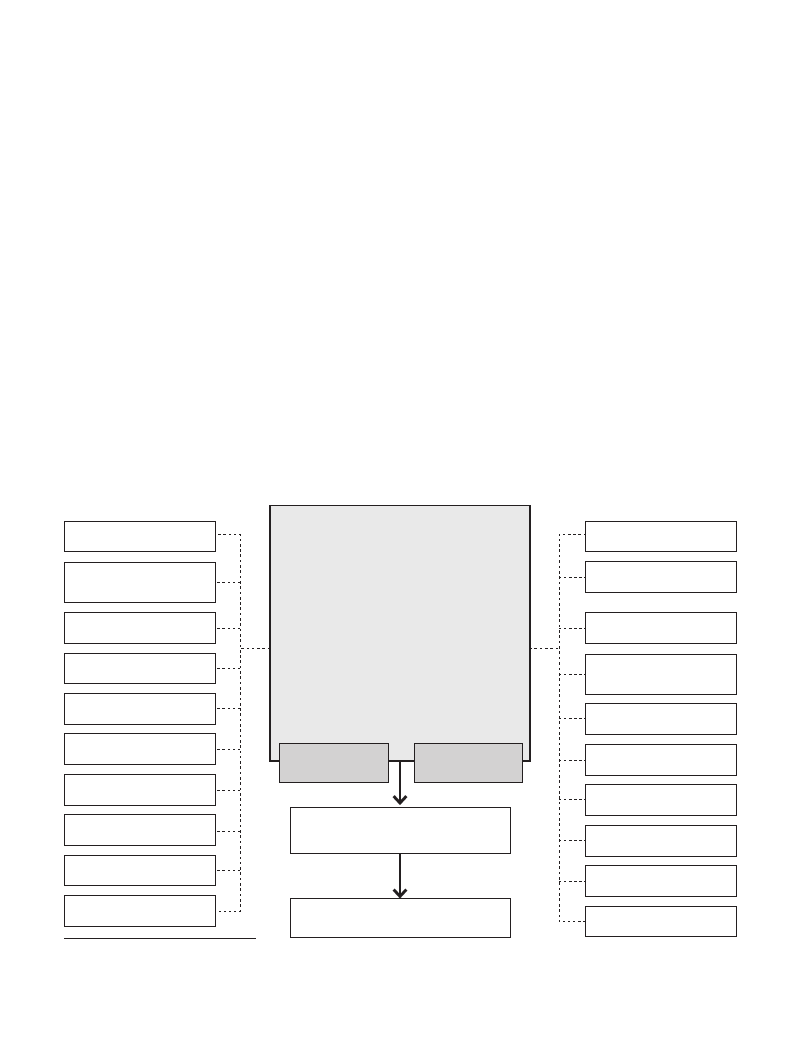
sri lanka / 287
Colombo, Kalutara and Gampaha are the most populated districts in Sri Lanka. Unplanned patterns of human settlement,
development and land use have resulted in severe encroachments into flood plains and unstable slopes, further
exacerbating the risks of disasters. A poverty level of 23% and a substantial number conflict related internally displaced
people (IDPs) add to peoples’ vulnerability to disasters.
2. disaster risk management framework
In the immediate aftermath of the Tsunami, a Select Committee established by the Sri Lankan Parliament investigated
the country’s preparedness to meet emergencies and to recommend steps to be taken to minimize the damage caused
by similar natural disasters. Based on the Select Committee’s Recommendations5, the Sri Lanka Disaster Management
(DM) Act, No. 13 of 2005 was enacted in May 2005. The National Council for Disaster Management (NCDM) was
established as the national body for disaster risk management coordination and monitoring in Sri Lanka as per the DM
Act. The Ministry of Disaster Management & Human Rights as the leading Ministry and the Disaster Management Center
(DMC) as the executing agency for disaster risk management (DRM) were established in implementing the directives of
NCDM.
One of the important outcomes of this institutional development process is that the DMC became the national level
nodal agency to formulate national and local level disaster risk management programs and to align them with sector
development programs. DMC is primarily responsible for managing the risk management process: disaster risk mitigation
Ministers in charge
National Council for Disaster Management
Ministers in charge
Social Services
FLADA (under the
Presidential Secretariat)
Home Affairs
Health
Science and Technology
National Council for Disaster
Management
Chair Person: H.E. President
Vice Chairman:
Hon. Prime Minister
Opposition Leader
Housing
Coast Conservation
Irrigation
Power
Chief
Ministers
Chief
Ministers
Ministry of Disaster Management
and Human Rights
Defense
DMC
5Sri Lanka Parliament Select Committee Report on Natural Disasters, August 2005
Police
Finance
Land
Fisheries and
Aquatic Resources
Foreign Affairs
Water Supply
Highways
Urban Development
Education
Environment
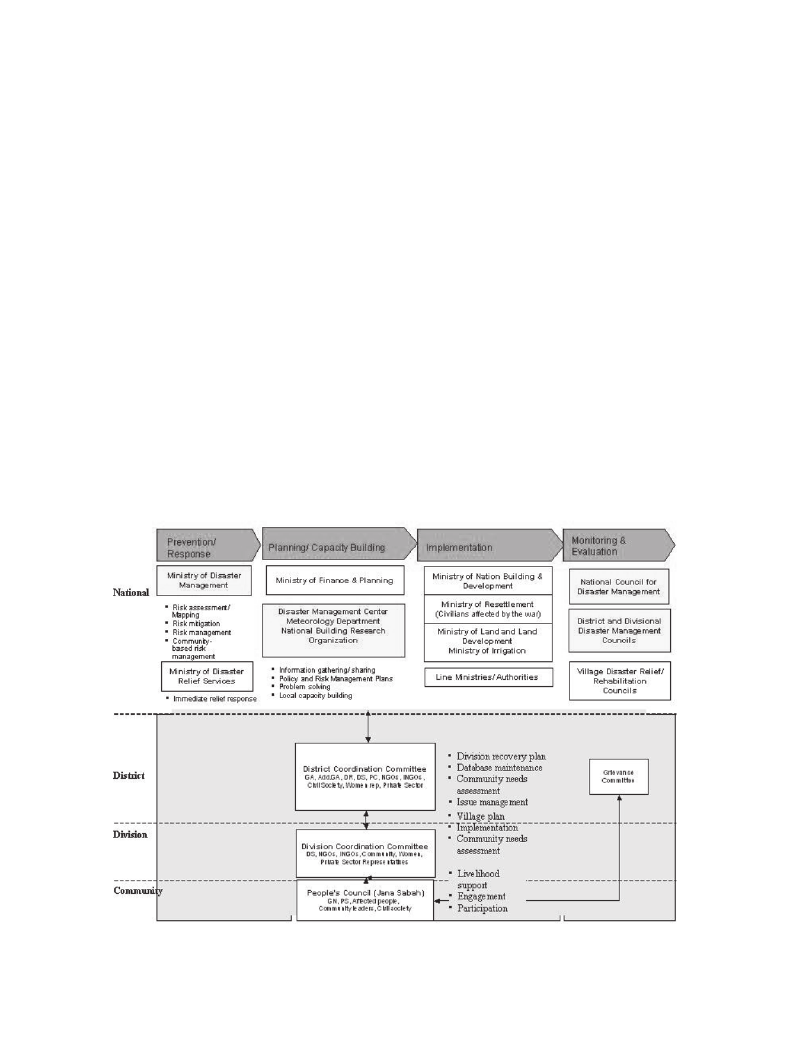
288 / Disaster Risk Management PROGRAMS FOR PRIORITY COUNTRIES SOUTH ASIA
policies and plans – damage assessments – rescue and relief operations – rehabilitation and reconstruction as part of the
recovery programs in coordination with other line departments. The DMC is also the nodal agency to coordinate disaster
management initiatives with Non Government Organizations for achieving timely, effective and efficient management of
the resources during the emergency and reconstruction operations.
The Sri Lanka DRM framework is based on two critical aspects of managing risk reduction and mitigation and streamlining
the roles and responsibilities of DMC.
Risk Management: This component entails the following priority activities:
• Preparedness, Planning Emergency Response and Recovery, which would entail activities such as: Formulation of
DRM Strategies, identification of various risks and formulation of mitigation interventions; and
• Risk Evaluation: This requires the improvement of broad stakeholder capacity to receive timely early warning
messages, act proactively and respond effectively when warnings are provided. Risk communication is an
important component of the risk evaluation and mitigation process.
Early Warning Systems: One of the main responsibilities of the DMC is to capture risk and hazard early warning information,
evaluate the intensity of the risks and communicate them to the various stakeholders through effective communication
and early warning mechanisms. A mechanism for monitoring and evaluation, which includes agreement on specific, risk
reduction indicators and means of gathering information, delivering the early warnings and guide evacuation of people
from the risk prone is being streamlined.
Disaster Risk Management Mechanism

sri lanka / 289
3. activities under the hyogo framework of action
HFA Priority # 1: Ensure that disaster risk reduction is a national and a local priority with a
strong institutional basis for implementation
The Sri Lanka Disaster Management (DM) Act, No. 13 of 2005 was enacted in May 2005. The National Council for
Disaster Management (NCDM) was established as the national body for disaster risk management coordination and
monitoring in Sri Lanka as per the DM Act. The Ministry of Disaster Management & Human Rights as the leading
Ministry and the Disaster Management Center (DMC) as the executing agency for disaster risk management (DRM) were
established in implementing the directives of NCDM. In December 2005, the Disaster Management Center developed
“Towards a Safer Sri Lanka: A Road Map for Disaster Risk Management.”
However, coordination with the various line departments engaged in the disaster management activities as part of their
responsibilities such as the Ministry of Irrigation and Water Management and Ministry of Agricultural Development for
Flood Risk Management; Ministry of Urban Development and Ministry of Land Development, Ministry of Housing, and
Ministry of Environment and Natural Resources for Landslide Management; Ministry of Fisheries and Aquatic Resources
and Ministry of Housing for mitigating Cyclone / Sea Surge Risk Management, and Ministry of Plan Implementation for
designing and implementing integrated disaster mitigation plans, etc is weak.
Inadequate institutional capacity of the Ministries and District administrations to manage the resources mobilized for
disaster response and recovery programs after a national disaster has been observed after the 2005 tsunami.
The establishment of a Sri Lanka Disaster Management Fund was called for in the Sri Lanka Disaster Management Act
(no. 13 of 2005). The Act stated that the Fund shall be constituted with the moneys received from the Consolidated Fund
of the GoSL and all such sums of money as may be received by the Council by way of loans, donations, gifts or grants
from any lawful source, whatsoever, whether in or outside Sri Lanka (DM Act, clause 17). However, at present a Fund
has not been established. The World Bank, through funding from the Global facility for Disaster Reduction and Recovery
(GFDRR) has been initiating the process for developing a Disaster management Fund framework.
HFA Priority # 2: Identify, assess, and monitor disaster risks – and enhance early warning
The National Building Research Organization (NBRO) has developed national level hazard maps for landslides. Also,
local level hazard maps have been prepared by communities affected by the tsunami. However, national level maps for
any of the other hazards have not been created.
The DMC has developed a database on disasters in Sri lanka from 1974 until 2007 with the support of the UNDP. This
database is based on Desinventar. A Sri Lanka Disaster Resource Network Database (SLDRN) is being developed and
will be updated by district level organizations. Any organization within the network will be able to access the website.
A nationally based early warning system for floods, tsunami, cyclone, landslides and sea surges is being developed.
Focal points for formulation of warning messages have been identified. The DMC will be responsible for dissemination
of early warning messages up to the last mile. Community level early warning systems have been made operational in
select sites on a pilot basis.
Sri Lanka does not have financial capacity to acquire and maintain equipment for data collection and technical expertise
for analysis and forecasting of natural hazards. Regional sharing of information is also weak.

290 / Disaster Risk Management PROGRAMS FOR PRIORITY COUNTRIES SOUTH ASIA
HFA Priority # 3: Use of knowledge, innovation, and education to build a culture of safety and
resilience at all levels
Training programs have been conducted for district and divisional officers for analysis / assessments of disaster risks in
their respective districts/divisions and developing projects for disaster risk reduction.
The Ministry of Education and Ministry of Disaster management & Human Rights with support from German Development
Cooperation have developed “Towards a Disaster Safe School: National Guidelines for School Disaster Safety” in
2008.
District level school DRM awareness and training programmes with special focus towards tsunami were conducted along
coastal belts and mock drills were practiced in all schools identified as being vulnerable to a tsunami hazard. However,
there is severe shortage on trained personnel at the government level and lack of coordination towards development of
training modules amongst different line ministries.
HFA Priority # 4: Reduction of the underlying risk factors
There exists a need for development of institutional resources and technical expertise for better risk assessment,
forecasting and management. The Department of Meteorology has been developing its short-to-medium range forecast
capabilities but requires additional technical capacity and investments for implementing a medium term forecast strategy.
Similarly, the National Building Research Organization requires additional technical and financial assistance to improve
the landslide predictability and for scaling up the preparation of the risk hazard maps on 1:10,000 scale.
Land use policies are being developed in consultation with stakeholders. Currently land use plans are almost non-existent
and available in only a few areas. The impact of poor land use and lack of enforcement has led to serious increase in the
number of landslides in the central highlands region.
Buffer zones have been declared in coastal areas to prohibit unauthorized constructions. Establishment of natural dense
vegetation along coastal belts has been completed in several districts to prevent against high winds and wave surges.
Progress is being made in identifying and supporting vulnerable and low income populations through “Samurdhi” and
“Gamidiriya” micro financing and social protection programmes.
Insurance schemes for protecting against disaster losses are not popular in Sri Lanka due to high premiums. A pilot
project is being implemented involving CBOs as insurance agents and some finance agencies acting as re-insurers.
HFA Priority # 5: Strengthen disaster preparedness for effective response at all levels
The government has identified disaster preparedness as a priority in the Disaster Management Policy. However, there is
a need for capacity strengthening towards disaster risk reduction, preparedness and an overall “proactive” approach for
disaster management.
Certain communities, especially those affected by the tsunami, have developed risk maps, developed village level volunteer
teams who have been given adequate trainings, and have their own community level early warning dissemination systems.
However, these need to be expanded to other areas of the country as well as for multiple-hazard risks.

sri lanka / 291
The DMC has established a 24x7 Emergency operations Center to coordinate emergency response and early warning
dissemination activities. Warehouses for providing emergency supplies are ill-equipped and do not have basic emergency
and relief supplies. Only one warehouse maintained at the national level.
An intra-government network has been established with assistance from JICA to connect Irrigation department, NBRO,
the Meteorological department, DMC, Police communications, Media networks and 7 district offices most vulnerable to
disasters. The plan is for this network to facilitate sharing of GIS maps and other data to better coordinate response and
relief operations.
4. Key donor engagements
Some of the ongoing DRM initiatives are supported by multilateral assistance. These initiatives are listed below:
JICA: From 2006 onwards, JICA has been actively involved in the design and implementation of DRM programs in
the country. JICA program covers: Technical Assistance for the DMC primarily for preparing disaster management
plan (Flood Management Master Plan) and operational mitigation strategies and Designing and Piloting Early Warning
Systems (Weather Stations) in the Country. The technical supports also included capacity building of government
officials through in-house and foreign training and development of community based disaster response plans. The design
and implementation of early warning and evacuation systems and streamlining these systems through pilot programs
are some of the successful projects implemented by the government through the JICA technical assistance. The JICA
program ended on 31st March 2009, and it is designing the second phase of the DRM program, which would be primarily
driven by the governments proactive approach and identified needs.
UNDP: In relation to disaster risk management, UNDP Sri Lanka is actively assisting in the development of a legal and
institutional framework on disaster risk management; promotion of efforts to decentralize DRM; streamlining of various
local DRM efforts under a common platform; strengthening end-to-end early warning systems and incorporating DRM
into national development planning.
UN OCHA is also currently assisting the DMC in the areas disaster database and Geographical Information System
and hazard mapping. As part of this initiative, OCHA has supported DMC to procure baseline satellite imageries
(UNOSAT) and digital evaluation models useful for disaster risk mapping and disaster management planning. Two
UN OCHA staff members positioned at DMC are currently providing technical support in the development of disaster
management database and risk and hazard mapping.
International Center for Emergency Techniques (ICET): An agreement signed by the Ministry of Disaster
Management and ICET to establish emergency communication system at the DMC to facilitate uninterrupted
communication to the stakeholders at District and Divisional levels as to respond to emergencies is an important step
forward. The system consists of VHF Radio Communication and HF and Satellite Communication. Besides, construction
of nearly 50 Multi Hazard Early Warning Towers will be done in vulnerable locations for effective early warning and
evacuation communications.
Disaster Emergency Warning Network: The early warning communication system has been further enhanced with
the initiation of the Disaster Emergency Warning Network (DEWN) in collaboration with the Sri Lanka Dialog Telekom.
An agreement to provide private virtual networking facility to the DMC to communicate with Disaster Risk Management
Units at the District and Divisional levels and with other stakeholders responsible for rescue and relief operations has
enhanced the early warning capability of the DMC significantly.

292 / Disaster Risk Management PROGRAMS FOR PRIORITY COUNTRIES SOUTH ASIA
Sri Lanka Red Cross Society: The Sri Lanka Red Cross Society with support from the IFRC and other national Red Cross
Societies (American, Danish) has been actively engaged in community based disaster risk management since 2006.
5.global facility for disaster reduction and recovery (gfdrr):
action plan
Ongoing GFDRR Funded Activities
Ongoing GFDRR funded activities
Improving Sri Lanka’s response and
recovery in the aftermath of natural disaster
including supporting the preparatory steps for
implementation of the Disaster Management Fund
Partnerships
Ministry of DM &
HR, UNDP
Budget
$ 200,000
HFA priority area(s)
HFA Priority 1: Ensure that
disaster risk reduction is a national
and a local priority with a strong
institutional basis for implementation
Indicative New Program Areas and Projects for GFDRR Funding
Institutional Strengthening and Building Technical Expertise
The Ministry of Disaster Management and Human Rights (MDM&HR) is comprised of its operating agencies the DMC,
Meteorology Department and the National Building Research Organization (NBRO). The institutional mechanism and
technical capacity of these three departments to implement disaster risk mitigation plans and to guide the emergency
assistances/resources mobilized after national disasters are weak and require strengthening. There is requirement for
both in-house training and training in foreign institutions in specialized technical fields and better DRM skills.
Flood Management Project - Gampaha District
The Road Map for Safer Sri Lanka and the comprehensive disaster management plan and flood management master plan
prepared with the technical assistance from JICA has identified flood risks across the country. Gampaha district suffers
floods almost every monsoon season. Floods impact majority of the 2.1 million people living in the district (in 2006, 12
of the 13 divisions in the district were impacted by floods). Gampaha is also an industrial and manufacturing hub and
floods cause huge economic losses for the district and the country overall.
Based on analysis of the flood management master plan produced by JICA for the Gampaha district, the project proposes
working with vulnerable communities living along the canals in Gampaha towards risk preparedness, canal management
and waste disposal programs and flood early warning dissemination.. The project also proposes strengthening livelihoods
through piloting flood resistant paddy cultivation in Gampaha. A risk financing pilot will be initiated for farmers as well as
the private industry vulnerable to flood impacts.
The DMC will spearhead the Flood management project in collaboration with the Irrigation department, the Agrarian
services department, JICA, relevant district and division local government bodies and other relevant stakeholders.
Landslide Management Project: Nuwara Eliya District
According to the landslide risk assessments done by the NBRO, nearly 20,000 km2 in ten major districts have been
identified as landslide prone. However, three districts; Nuwara Eliya, Badulla and Ratnapura are the highly landslide
prone areas. Major landslides occurred during the past two decades have taken thousands of lives, made nearly 175,000
families homeless and incurred heavy economic loss.

sri lanka / 293
The project will strengthen overall capacity of the NBRO in mitigating landslide risks through risk mapping, development
of landslide mitigation and reduction plans, formulation of land use guidelines and land development regulations,
establishment of appropriate land development regulatory systems in landslide prone areas, and establishment of
monitoring mechanisms and early warning systems. The NBRO will also undertake a community awareness and landslide
safe construction campaign across the different landslide prone districts. These activities will be piloted in Nuwara Eliya
district in collaboration with relevant line ministries, local government bodies, other relevant stakeholders and vulnerable
communities.
Enhancing Weather Forecast for Disaster Preparedness
Presently, the Sri Lanka meteorological department has limited capabilities in making weather forecasts beyond 24 hours
with acceptable accuracy. New Numerical Weather prediction (NWP) systems with higher resolution model outputs in
global scale can be down-scaled to regional and even tailored to local conditions for better probabilistic or quantitative
forecasting. The meteorological department needs to build capacity on NWP techniques for more reliable 1-5 day
weather forecasts. Need has also been identified for a High Resolution Picture Transmission (HRTP Cloud imagery)
receiver for detection of meso-scale features such as intense rains and potential fishing information for fishermen etc.
The Meteorological department in collaboration with the DMC will also undertake a lightening safety national campaign
to reduce deaths and damage from lightening strikes.
Program Management and Operationalizing the Disaster Management Fund
The DM Act mandates the Ministry of Disaster Management and Human Rights to establish a disaster management
fund as part of emergency response and recovery strategy. Presently, a GFDRR funded initiative is focusing on
developing the institutional structure and operational framework of the Disaster Management Fund. As part of this
initiative, the World Bank has agreed to a request from the Ministry of Disaster Management to engage a technical
consultant to undertake this study.
The Fund is envisioned to allow for a comprehensive strategy towards both ex ante and ex post disaster and social
risk management (DSRM) activities as they pertain to natural disasters in terms of both high impact but infrequent
“geophysical” disasters such as tsunami-type events, as well as low impact but frequent “hydrometeorological” hazards
such as droughts and rainfall related floods. This would entail having the following five funding windows that would
address the following activities:
Ex ante Disaster Risk Mitigation
(i) Mitigation and preparedness
(ii) Risk transfer arrangements
(iii) Capacity Development and Technical Assistance
Ex-Post Disaster Recovery
(iv) Relief /early recovery and safety nets
(v) Emergency response and reconstruction
The following are some options to consider as to who would be able to access and use resources from the Fund:
• Government agencies could be the principal users of the Fund to support risk reduction activities of the Ministry
of Disaster Management and Human Rights, relief and resettlement operations of the Ministry of Disaster Relief
Services and Resettlement, social protection programs of the Ministry of Nation Building such as Samurdhi and
Gama Neguma, social care services of the Ministry of Social Services and Social Welfare, and reconstruction
investments by various line ministries.

294 / Disaster Risk Management PROGRAMS FOR PRIORITY COUNTRIES SOUTH ASIA
• Non-governmental actors could also receive support from the Fund. These would include local and international
NGOs (with support from the NGO Secretariat and the Consortium for Humanitarian Assistance), international
organizations such as UN agencies and the Red Cross, and the private sector for interventions such as risk
insurance and micro-finance.
• Partnerships of Government agencies and non-governmental entities could be financed by the Fund to jointly
develop and implement disaster management activities.
Fund Financing and Governance
The size of the Fund could initially be supply driven based on government commitment and the extent of interest from
donors. Based on the performance of the Fund it could then be leveraged to become a demand driven financing
mechanism which is able to meet identified gaps in overall disaster and social risk management activities. Some of the
potential sources of financing for the Fund include:
• Sole or partial financing from domestic revenues such as the Government’s voted budget, special levies, a portion
of lottery earnings, private and charitable contributions, and so forth.
• Additional external grants from development partners, including bi- and multilateral donors, international NGOs,
foreign foundations, United Nations’ initiatives such as flash appeals, international organizations such as the Red
Cross, and multinational companies.
• Standby financing from concessional loans such as the World Bank’s Catastrophic Deferred Drawdown Option
(CAT DDO) for which the Fund could pre-qualify.
School Emergency Planning and Safety Initiative
The Ministry of Education (MoE) has identified the need for upscaling the work done on the “National Guidelines for
School Disaster Safety”, which were developed by the MoE with support from GTZ and ADPC.
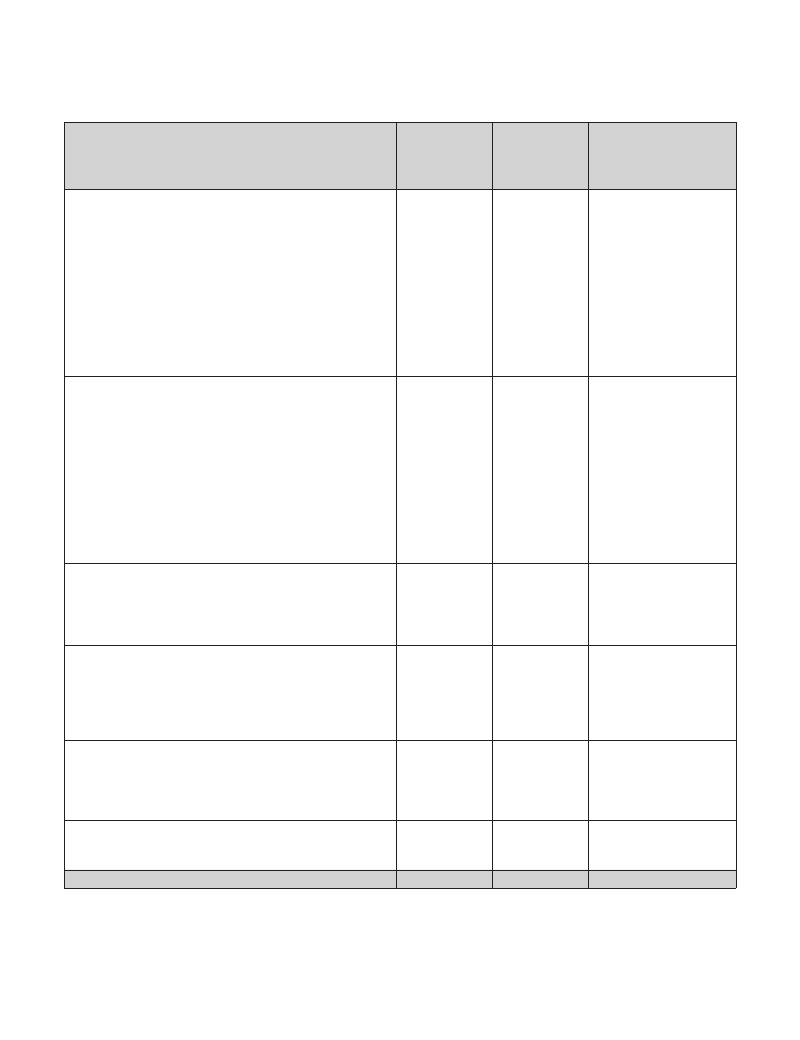
sri lanka / 295
Indicative Program and Budget for GFDRR Funding
Indicative new program areas and projects
for GFDRR funding
Institutional Strengthening and Building Technical
Expertise
-DRM skill training for DMC staff
-Damage & needs assessment methodology training
-Specific training for NBRO staff regarding landslide risk
assessment & landslide early warning systems
-Specialized training for Meteorology department scientists
(to PAGASA in Philippines)
-Relevant exposure visits ad trainings for MDM&HR officials
and technical staff
Partnerships
DMC, Met
Dept., NBRO,
UNDP,
PAGASA
Philippines,
relevant
international
DRM training
organizations
Indicative
Budget for
GFDRR
funding
$ 750,000
(3 years)
Flood Management Project - Gampaha District
- Community preparedness and flood early warning
dissemination Strengthening livelihoods through flood
resistant paddy cultivation
-Risk financing pilot initiative
DMC, Relevant
line ministries,
JICA
$ 1,200,000
(3 years)
Landslide Management Project: Nuwara Eliya District
-Risk Mapping, land use and development regulatory systems,
landslide early warning system
- Pilot landslide mitigation in Nuwara Eliya district
- Public awareness and landslide safe construction campaign
Enhancing Weather Forecast for Disaster Preparedness
- development of NWP system for reliable 1-5 day weather
forecasts
- procurement of HRPT (cloud imagery) equipment
- national lightening safety campaign
Program Management & Disaster Management Fund
-Operationalizing the Disaster Management Fund through
providing seed money
School Emergency Planning and Safety Initiative
-Taking forward the national guidelines on school safety
through specific pilot initiatives
TOTAL
NBRO, DMC,
relevant line
ministries,
UNDP
Meteorological
Dept., DMC,
WMO, relevant
international
climate
institution,
MDM&HR,
relevant
ministries,
UNDP, Donors
& Bilaterals
Ministry of
Education, GTZ,
ADPC
$ 2,500,000
(3 years)
$ 1,250,000
(3 years)
$ 5,000,000
(3 year)
$ 250,000
(3 years)
$ 11,950,000
HFA
priority
area(s)
HFA Priority 1: Ensure
that disaster risk reduction
is a national and a local
priority with a strong
institutional basis for
implementation
HFA Priority 3: Use of
knowledge, innovation,
and education to build
a culture of safety and
resilience at all levels
HFA Priority 2: Identify,
assess, monitor disaster
risks, enhance early
warning
HFA Priority 4: Reduction
of the underlying risks
HFA Priority 5:
Strengthen disaster
preparedness for effective
response
HFA Priority 2, and 4:
HFA Priority 2 and 5
HFA Priority 1 and 5:
HFA Priority 3


Global Facility for Disaster Reduction and Recovery
GFDRR Secretariat
1818 H Street NW
Washington, DC 20433, USA
Telephone:
Facsimile:
E-mail:
Web Site:
202 458 0268
202 522 3227
drm@worldbank.org
www.gfdrr.org
2009
Special thanks to the partners who support GFDRR’s work to protect livelihoods and
improve lives: Australia, Canada, Denmark, European Commission, Finland, France,
Germany, Italy, Japan, Luxembourg, Norway, Spain, Sweden, Switzerland, United
Kingdom, UN International Strategy for Disaster Reduction, USAID Office of Foreign
Disaster Assistance, and the World Bank.




